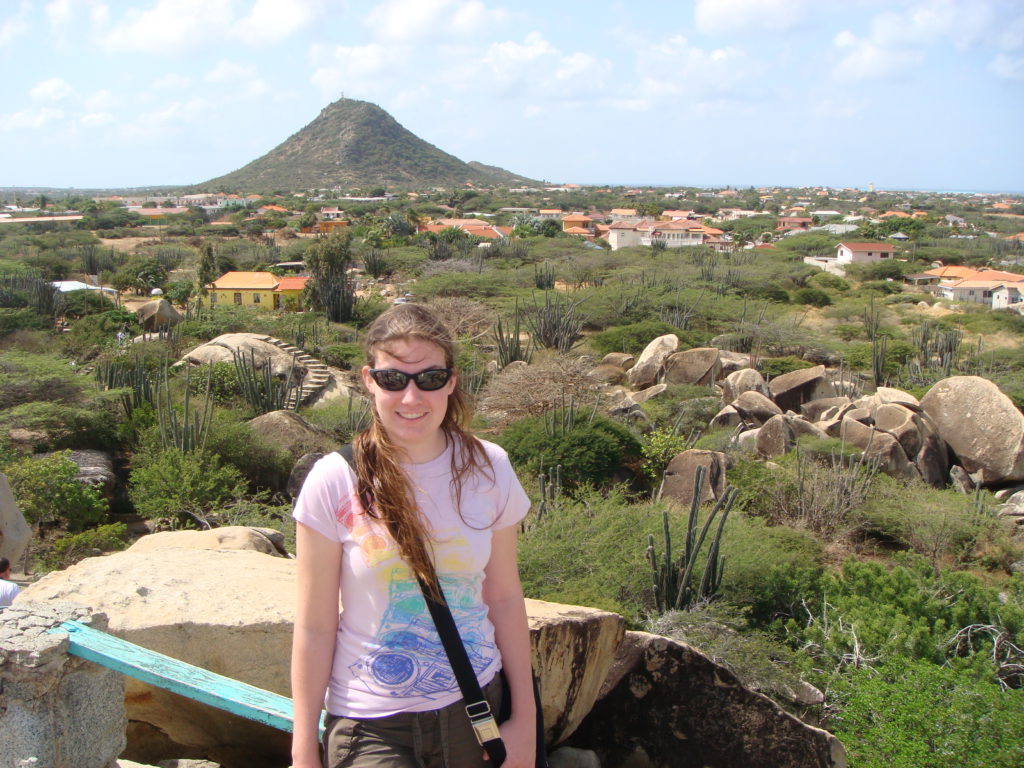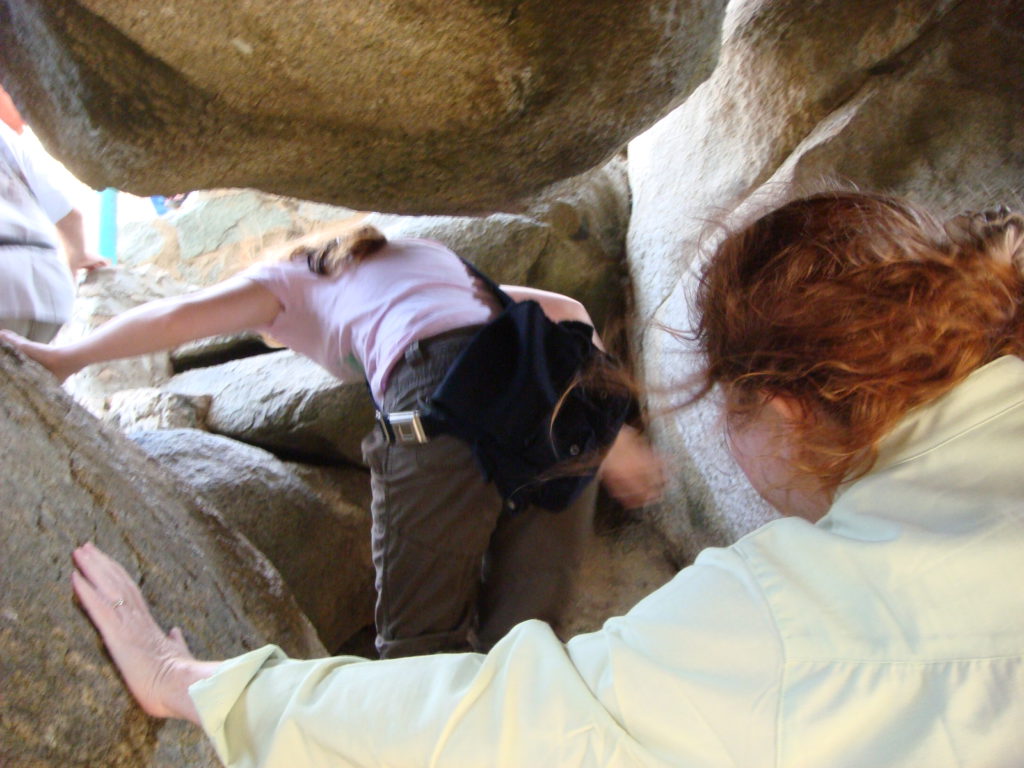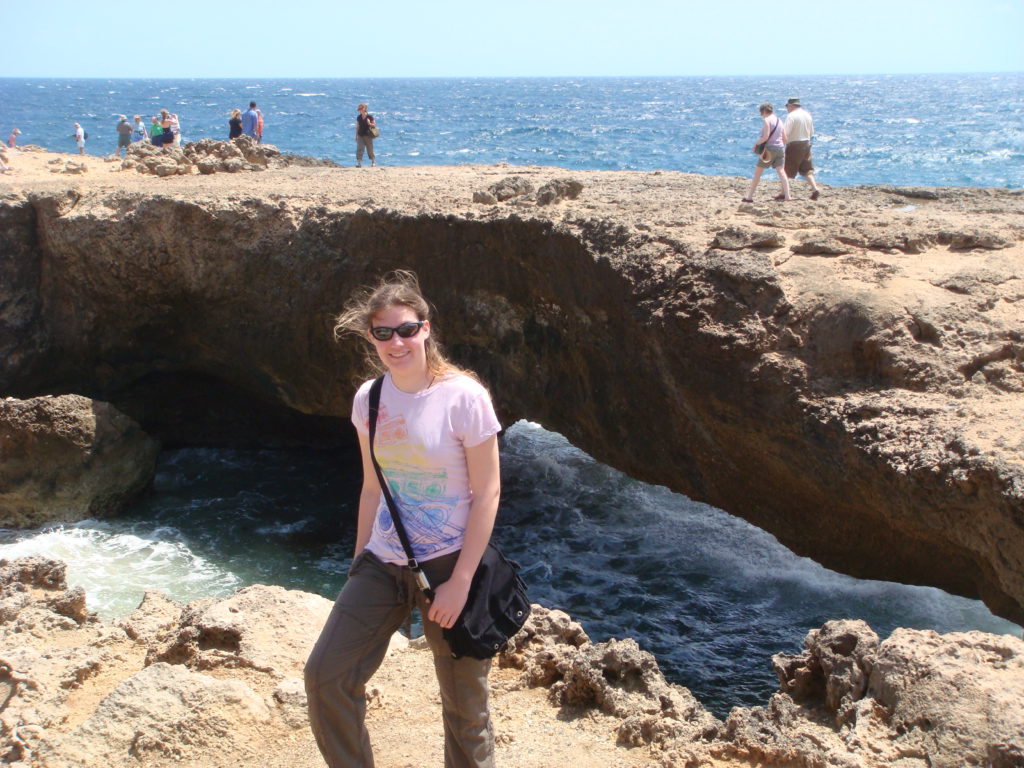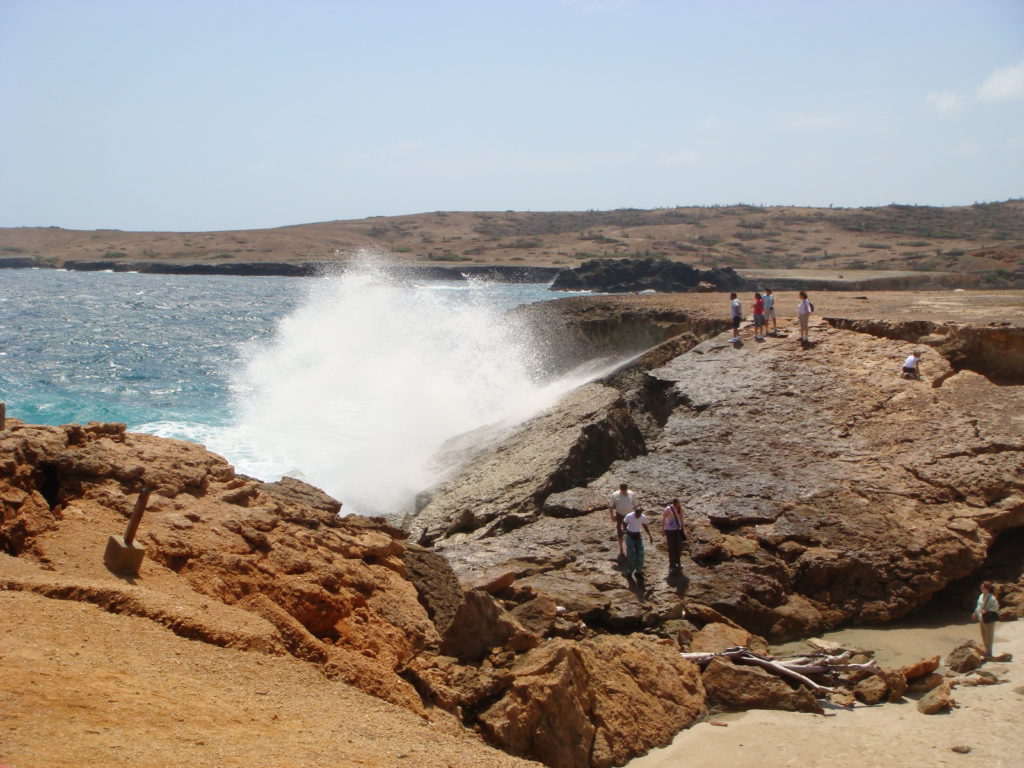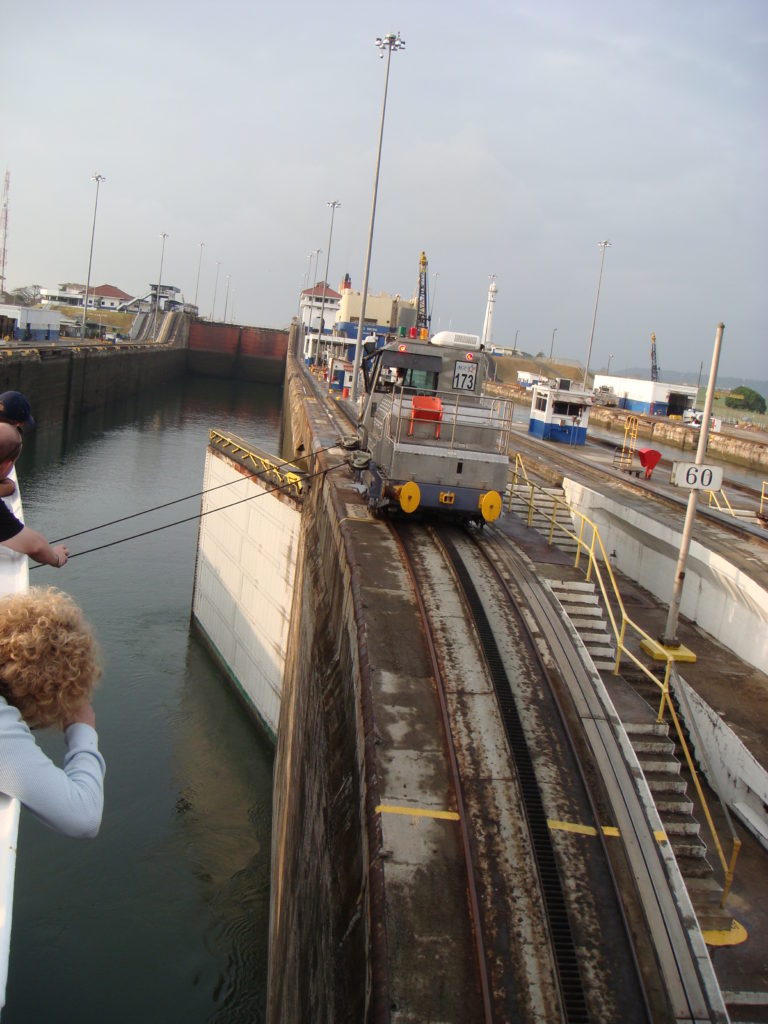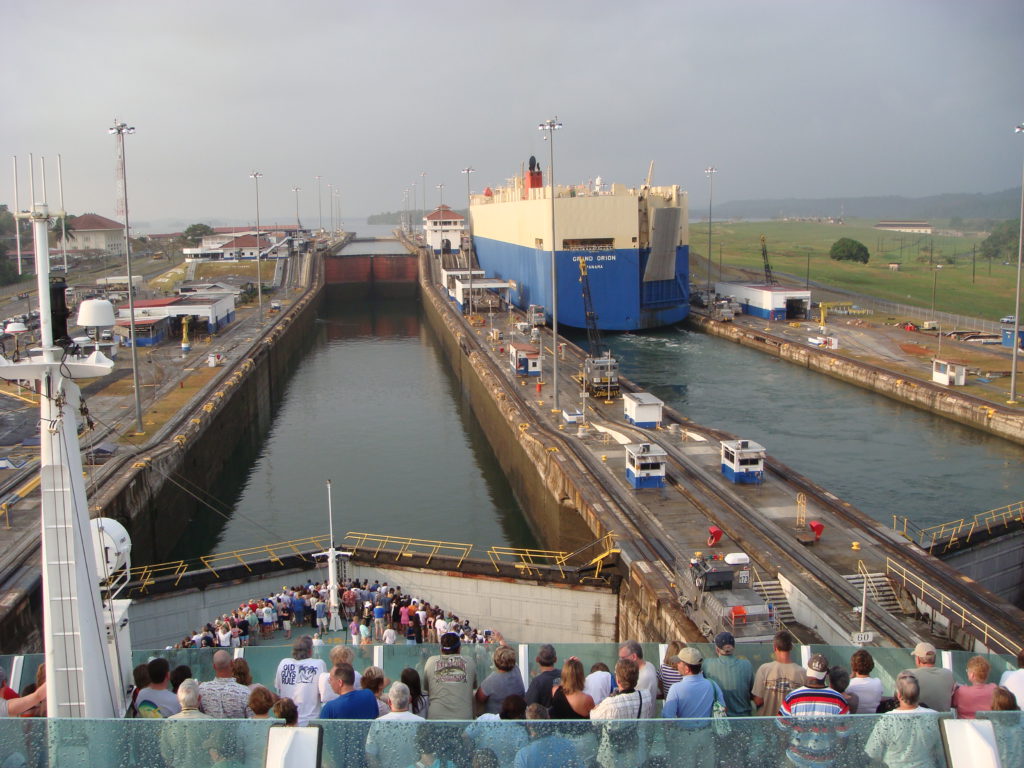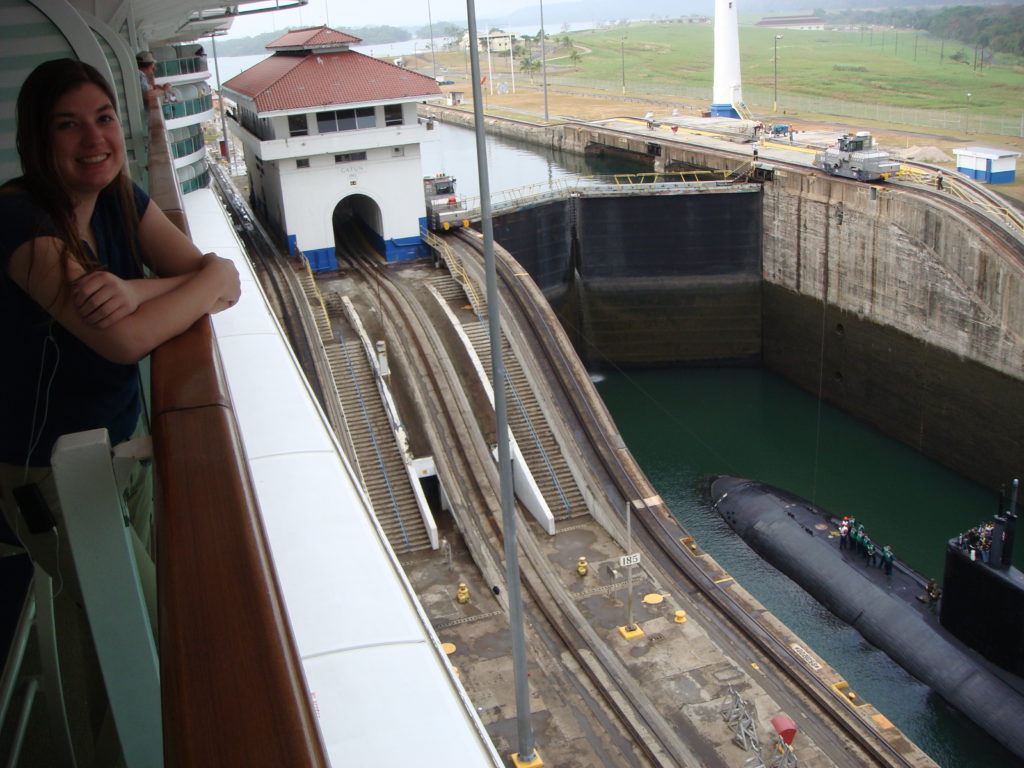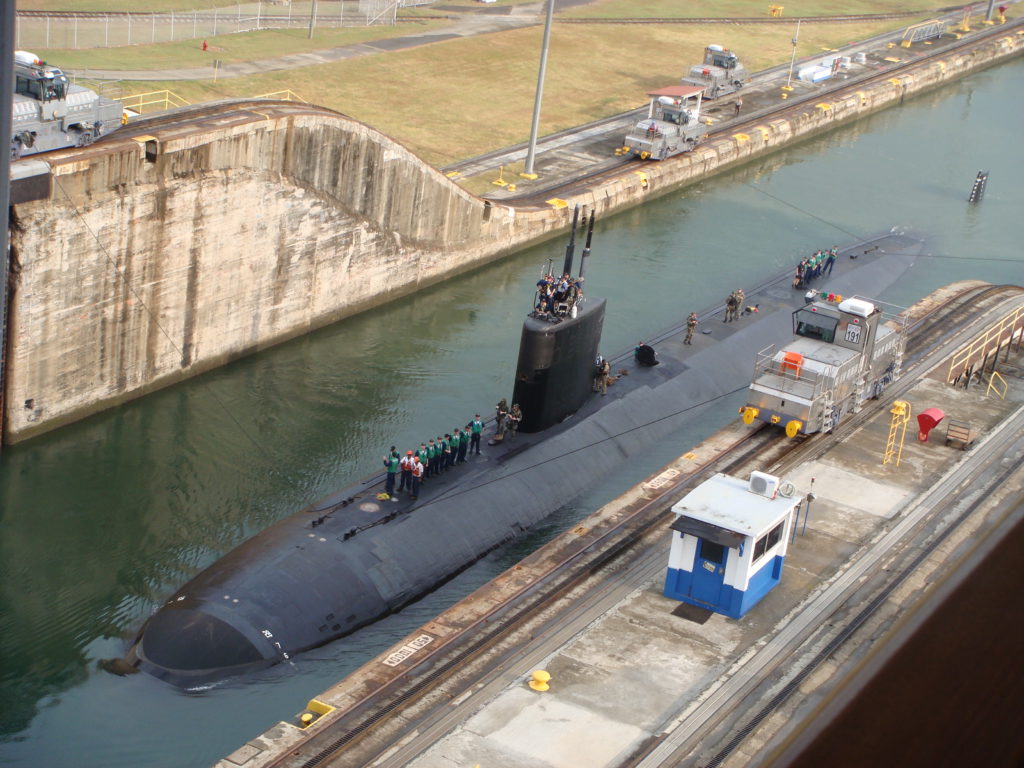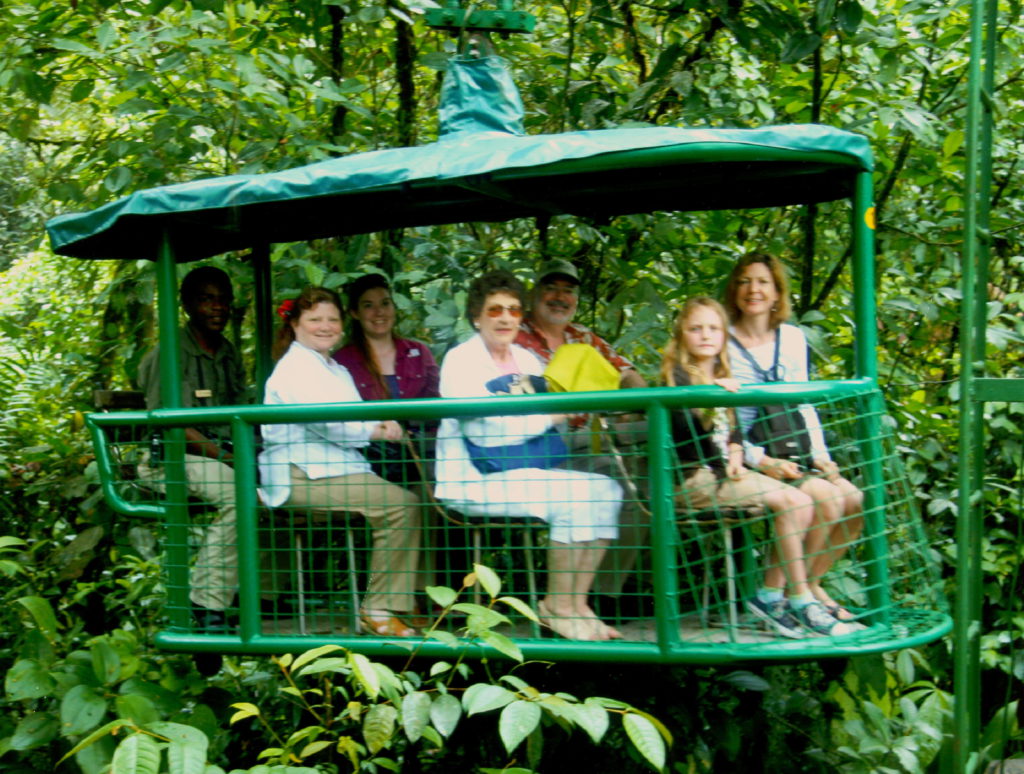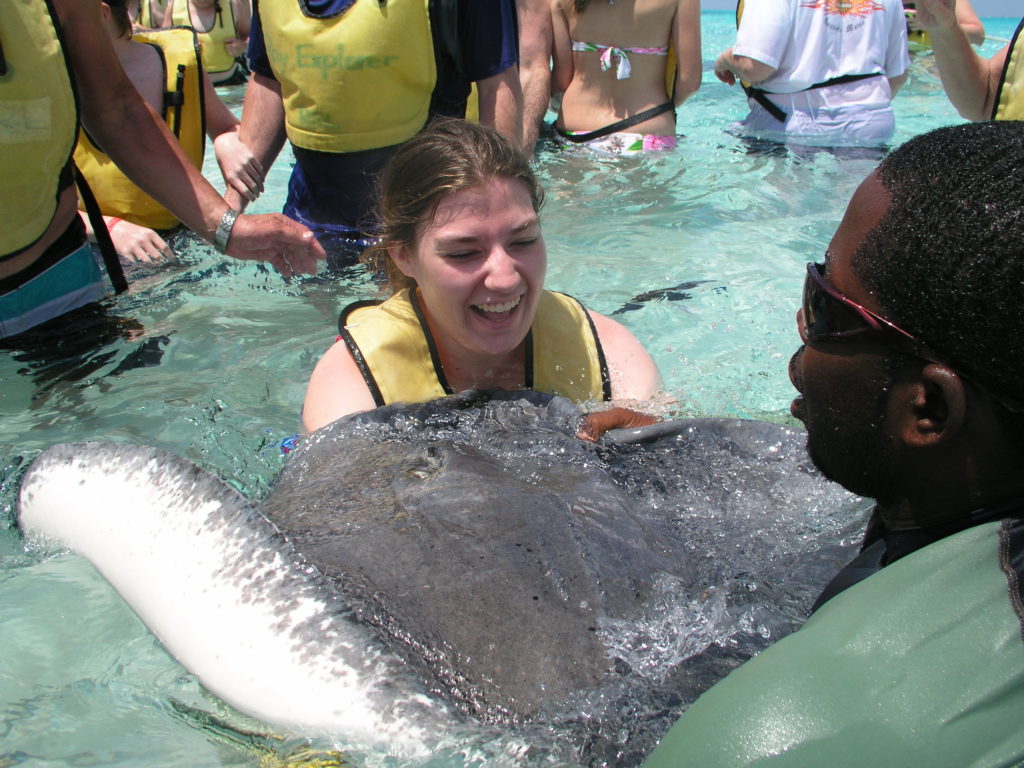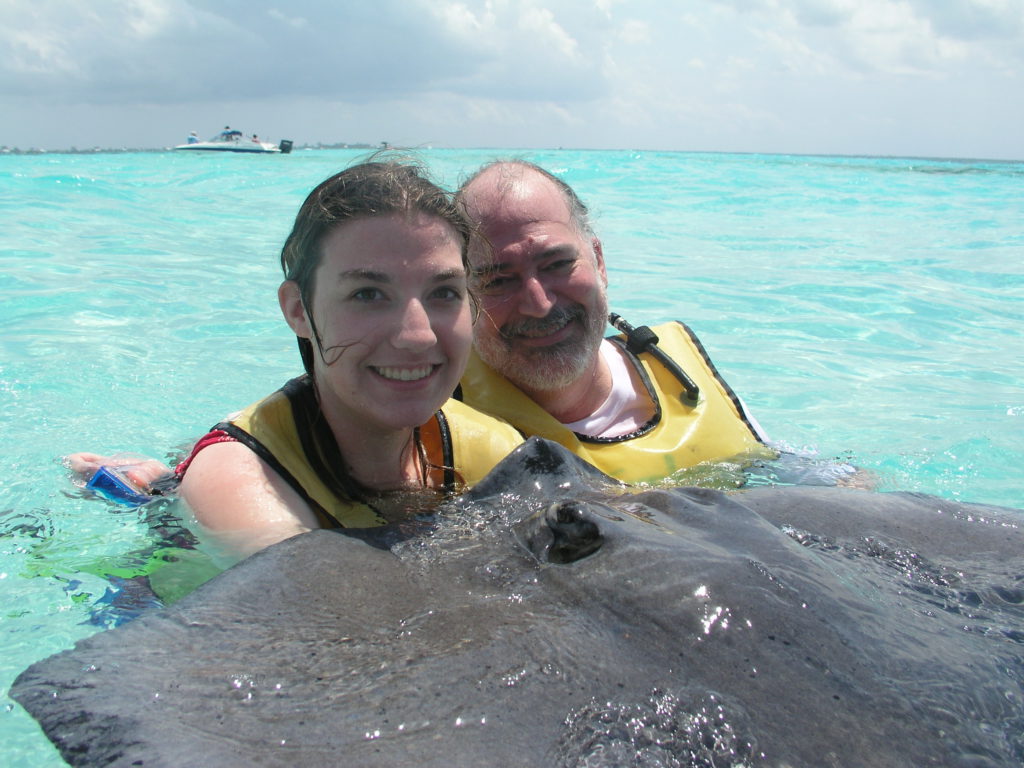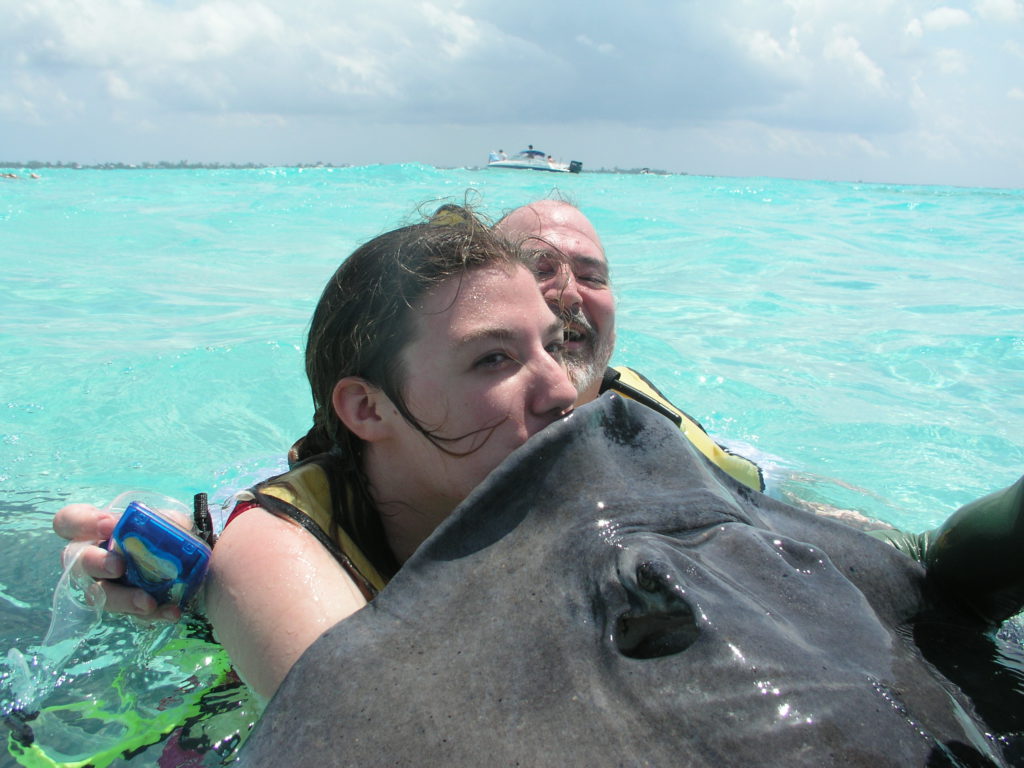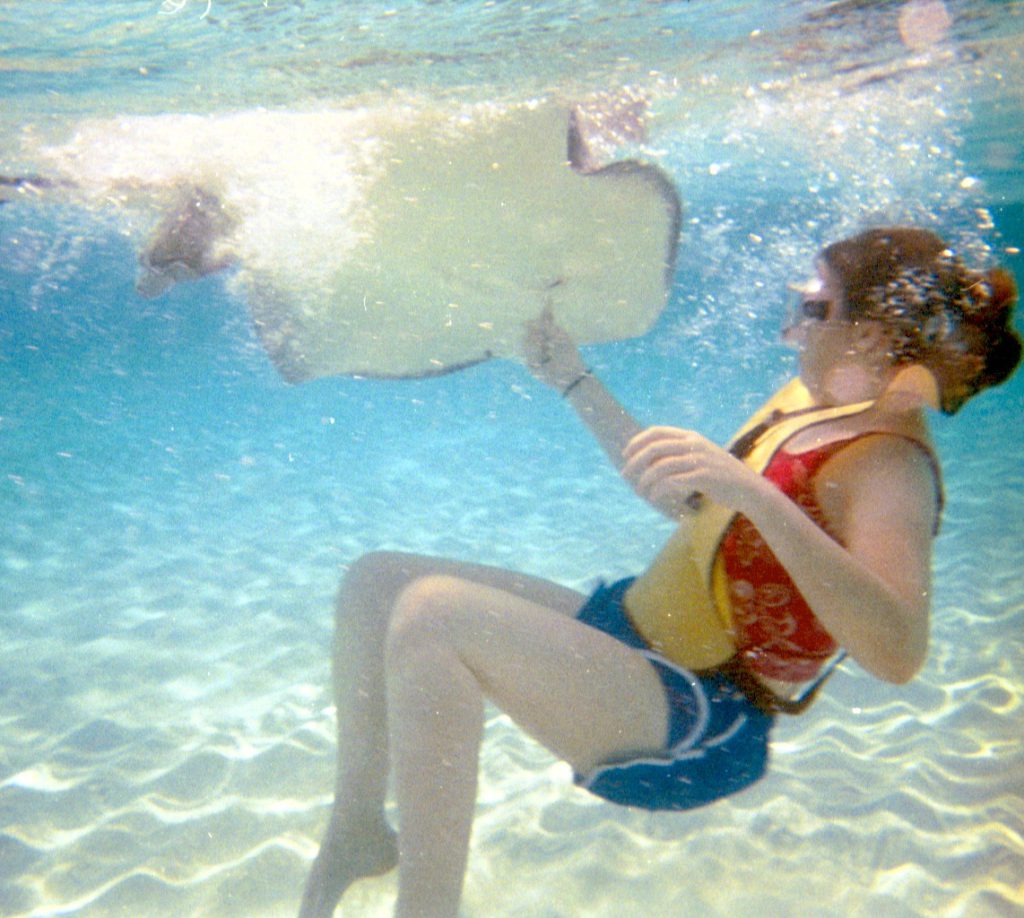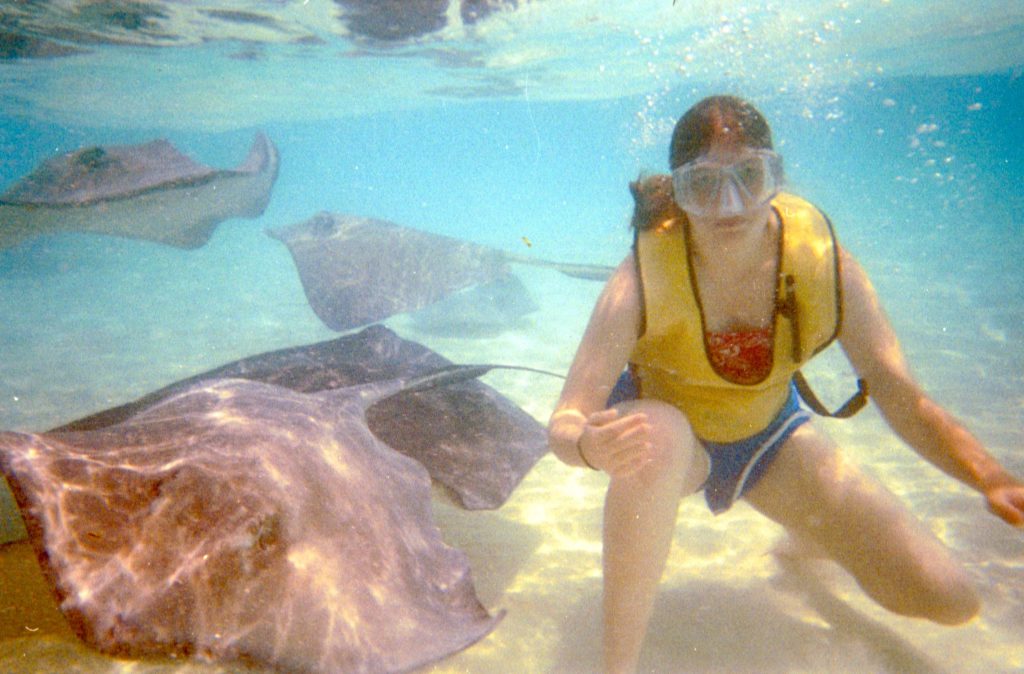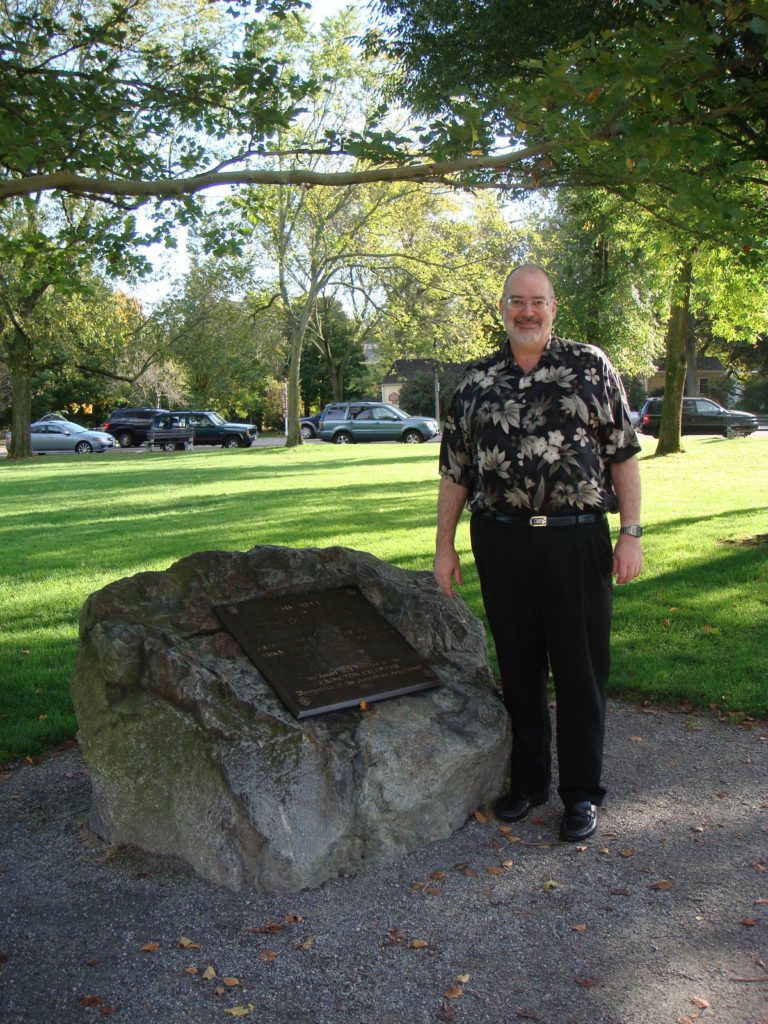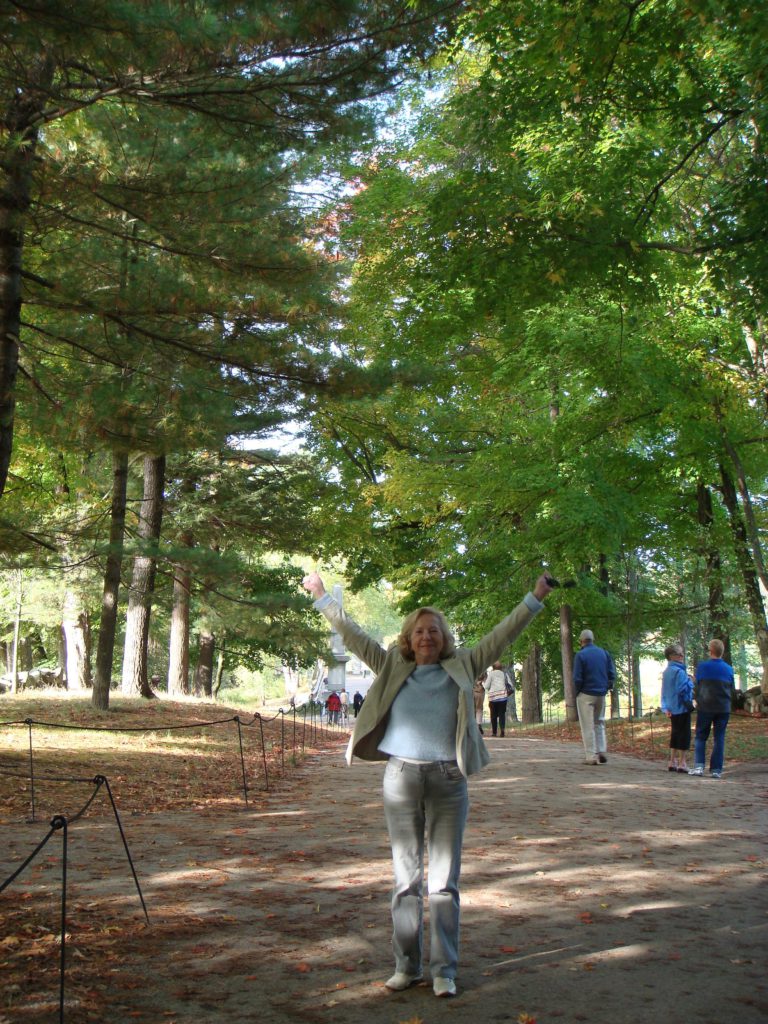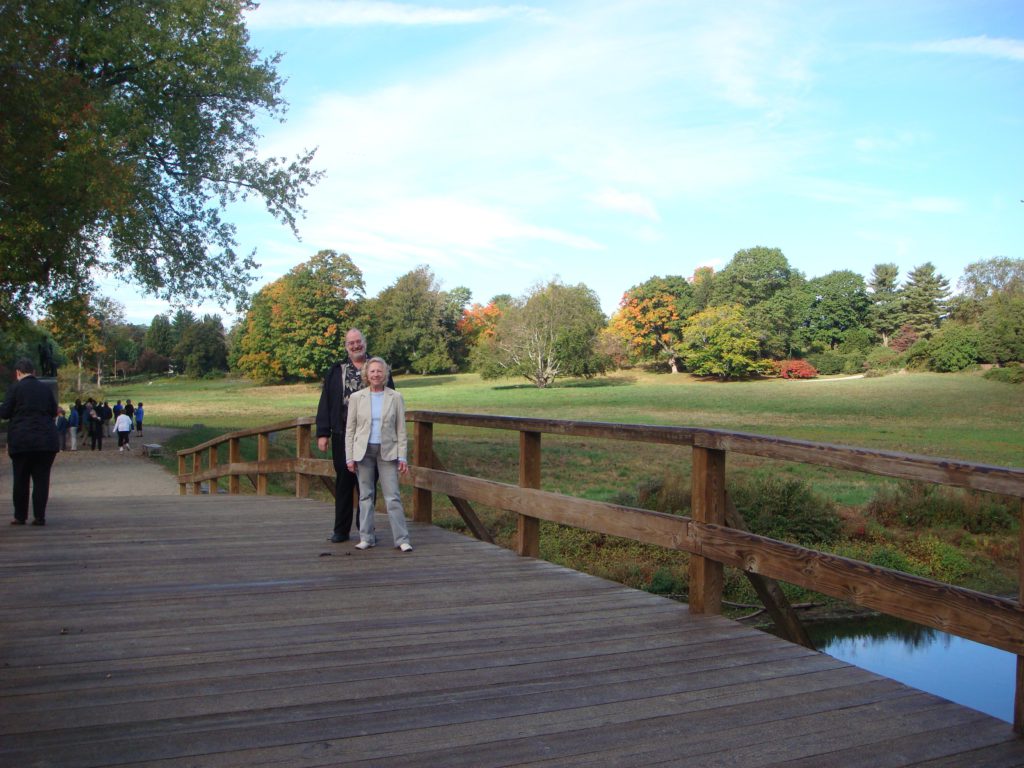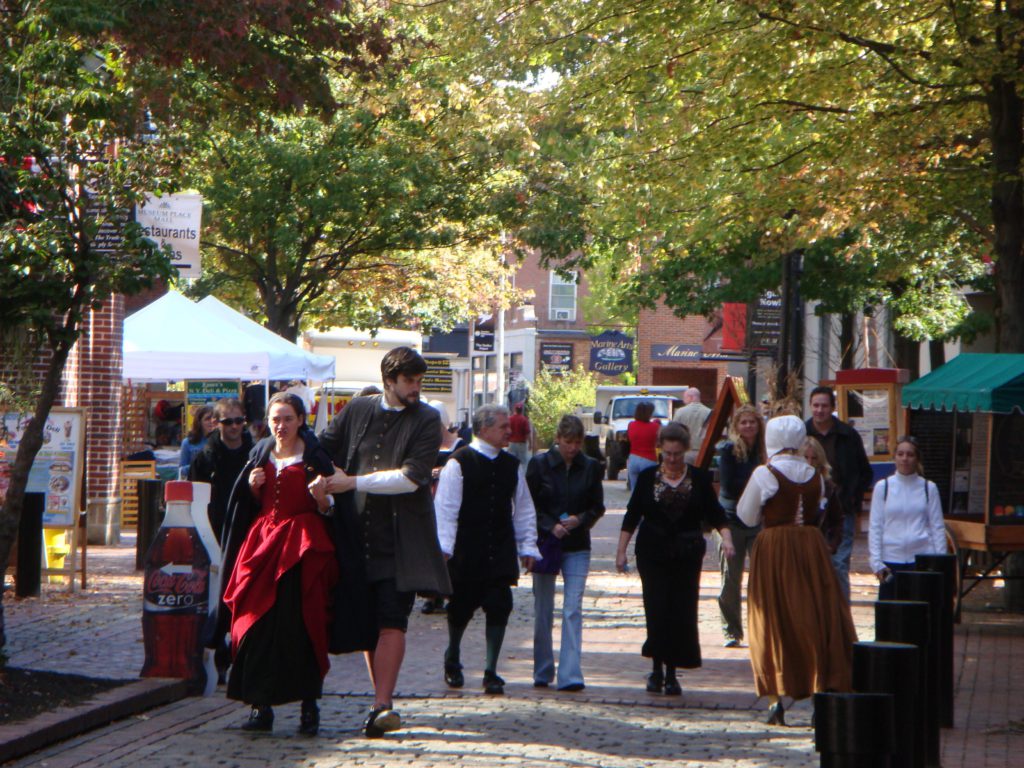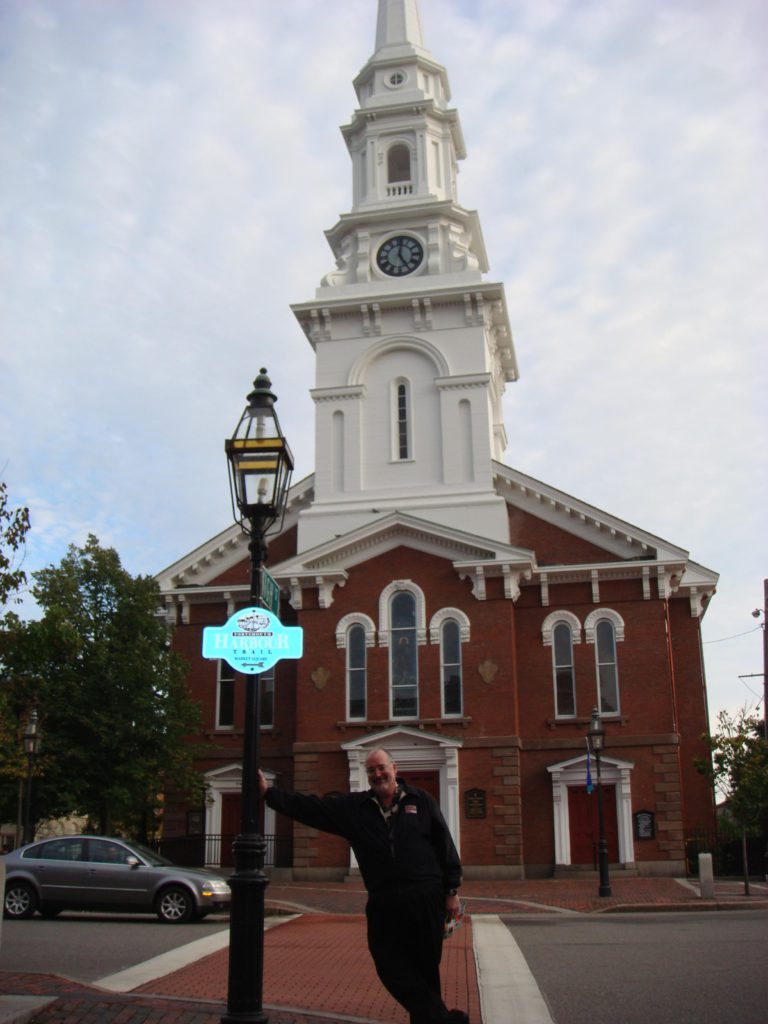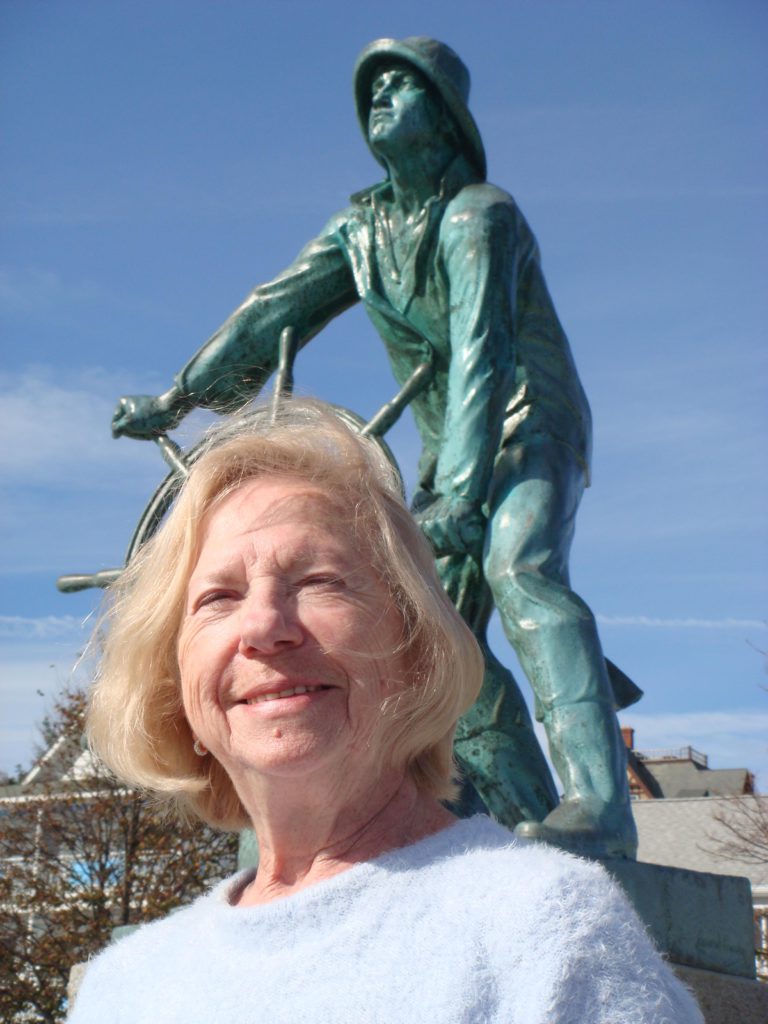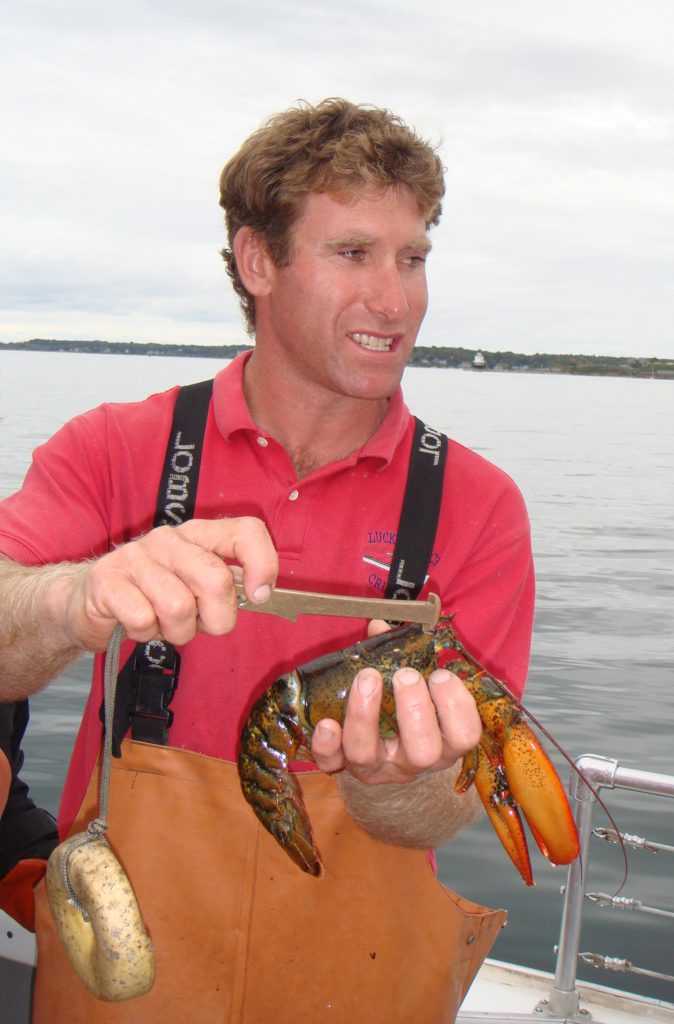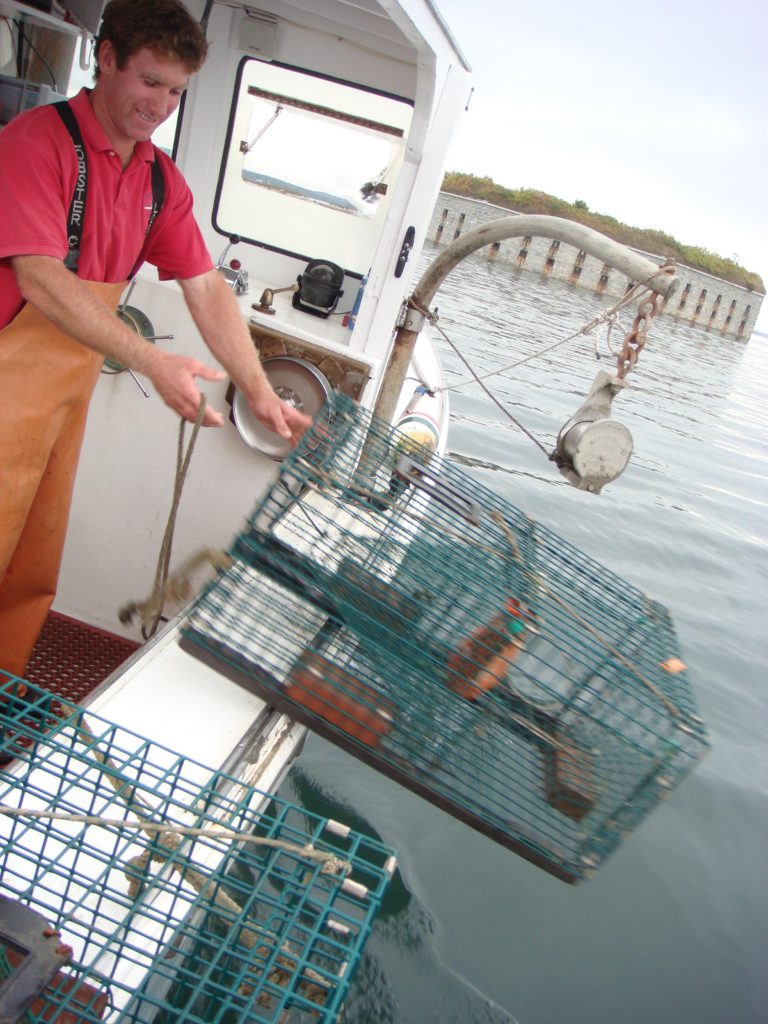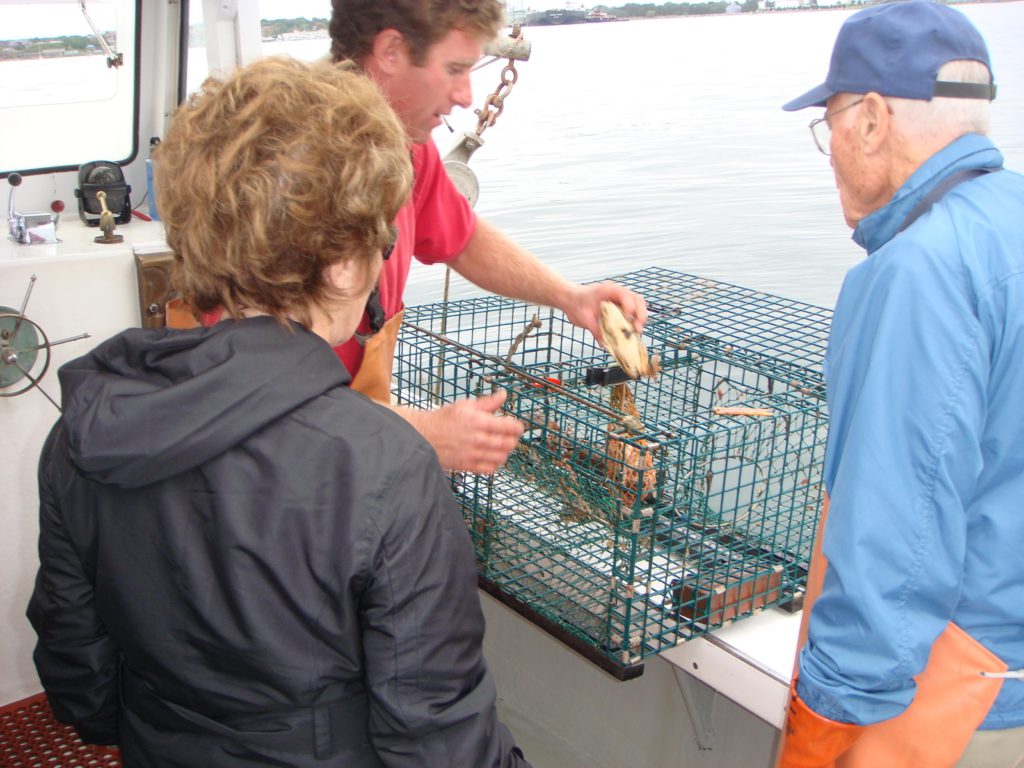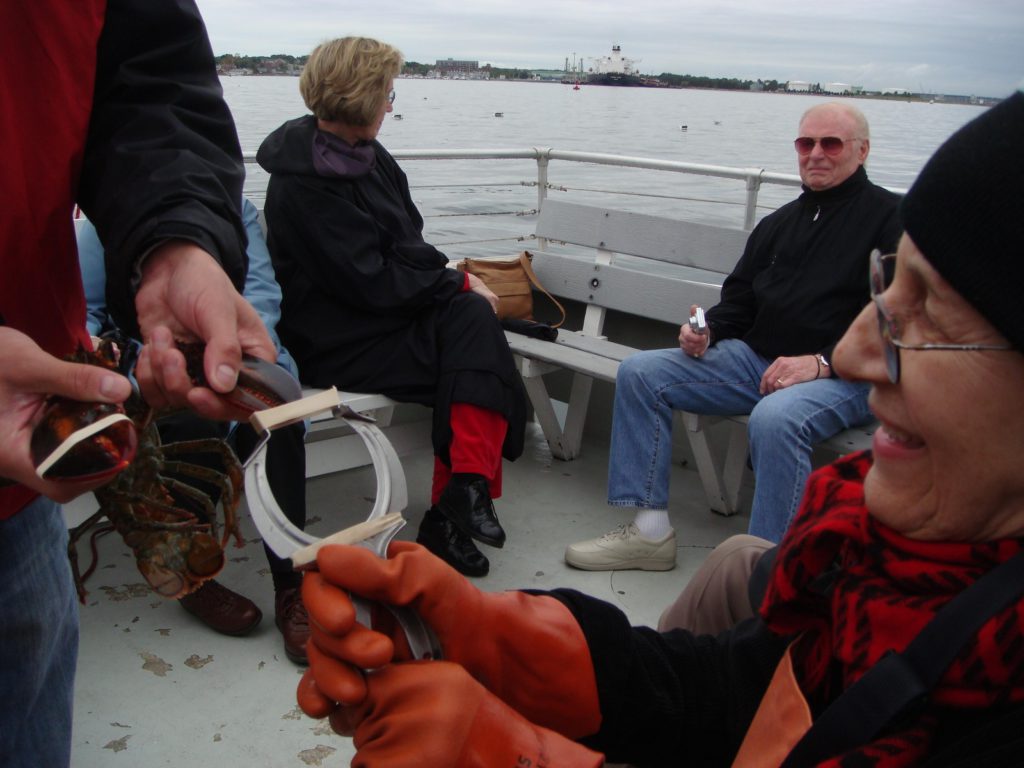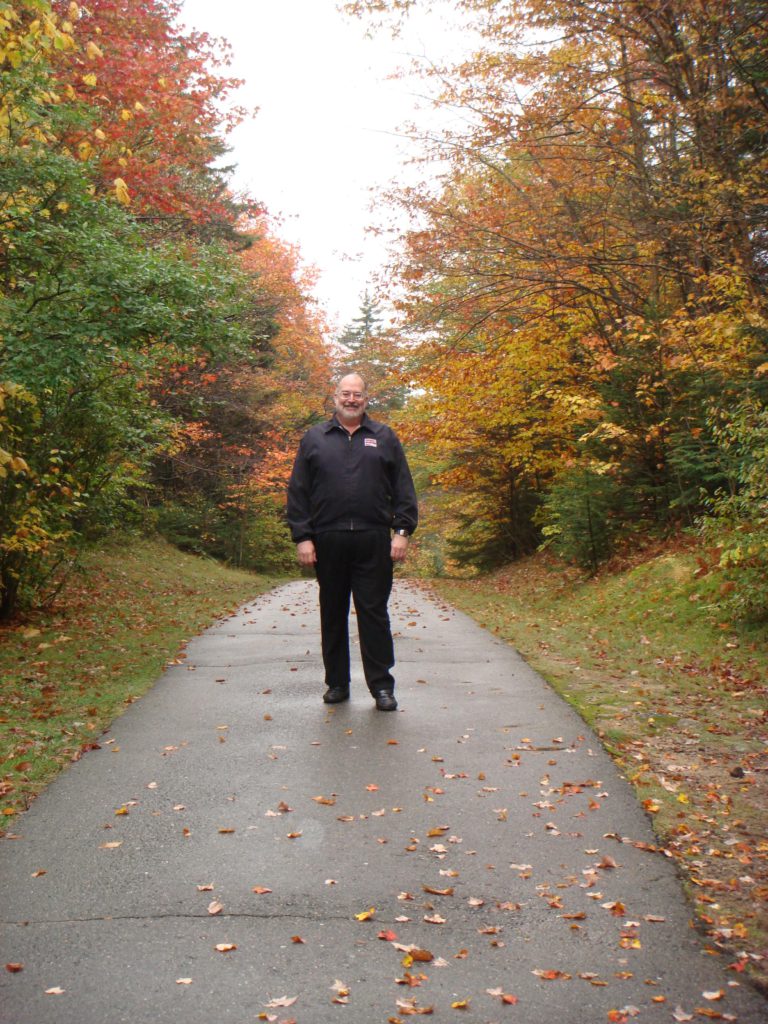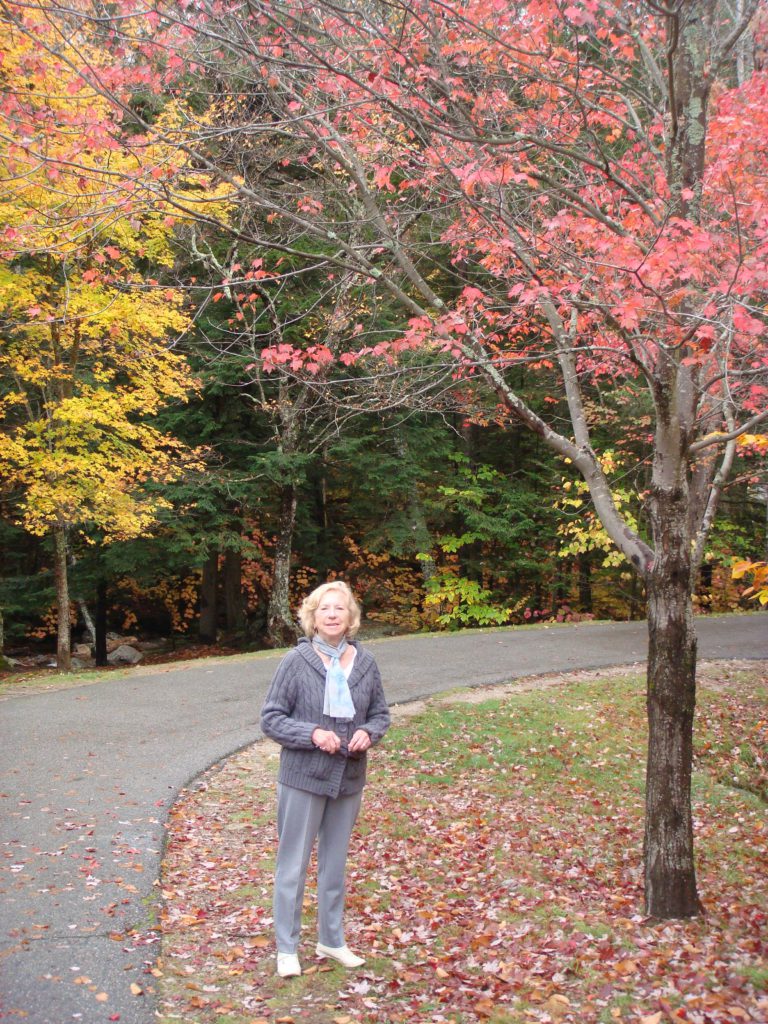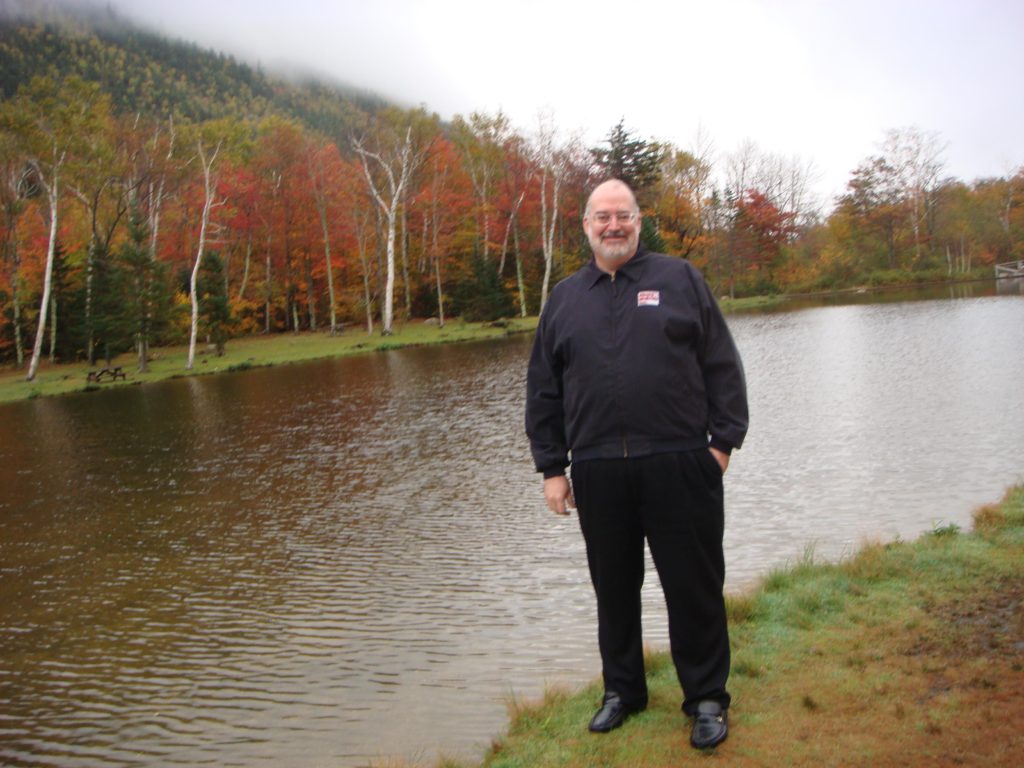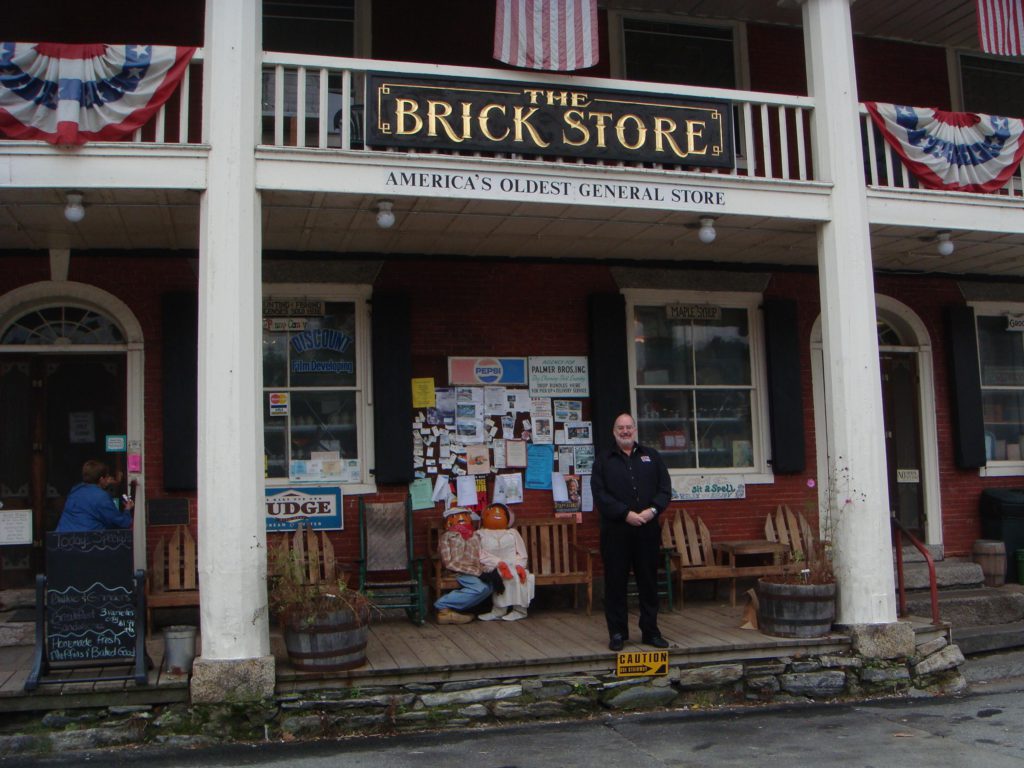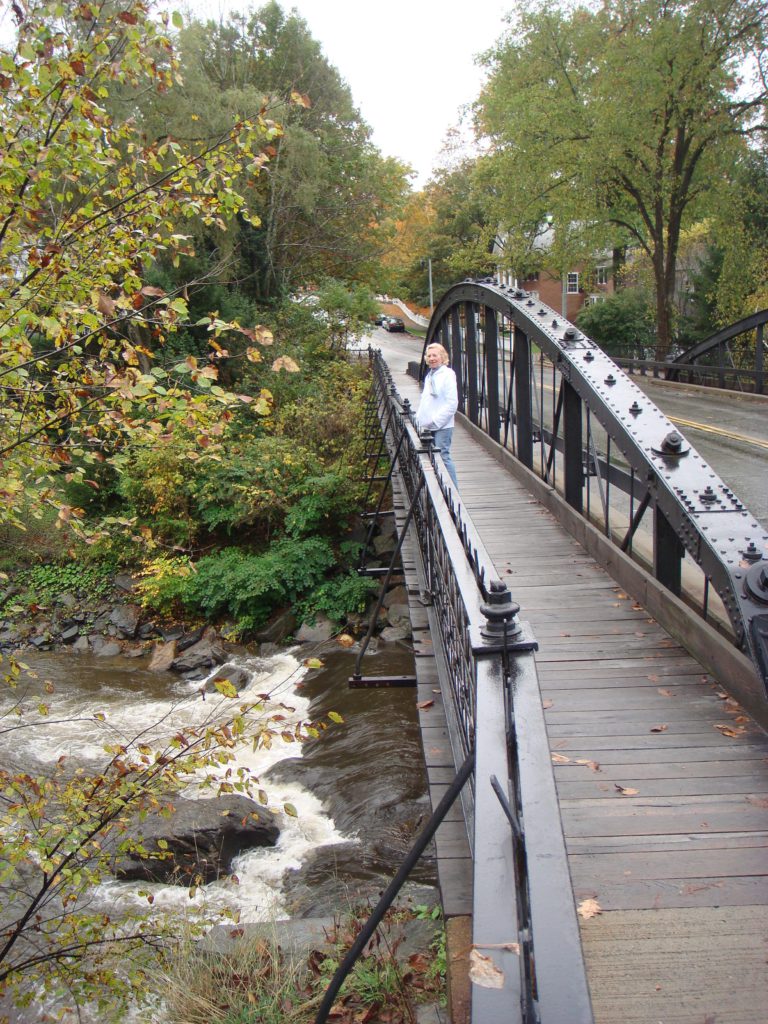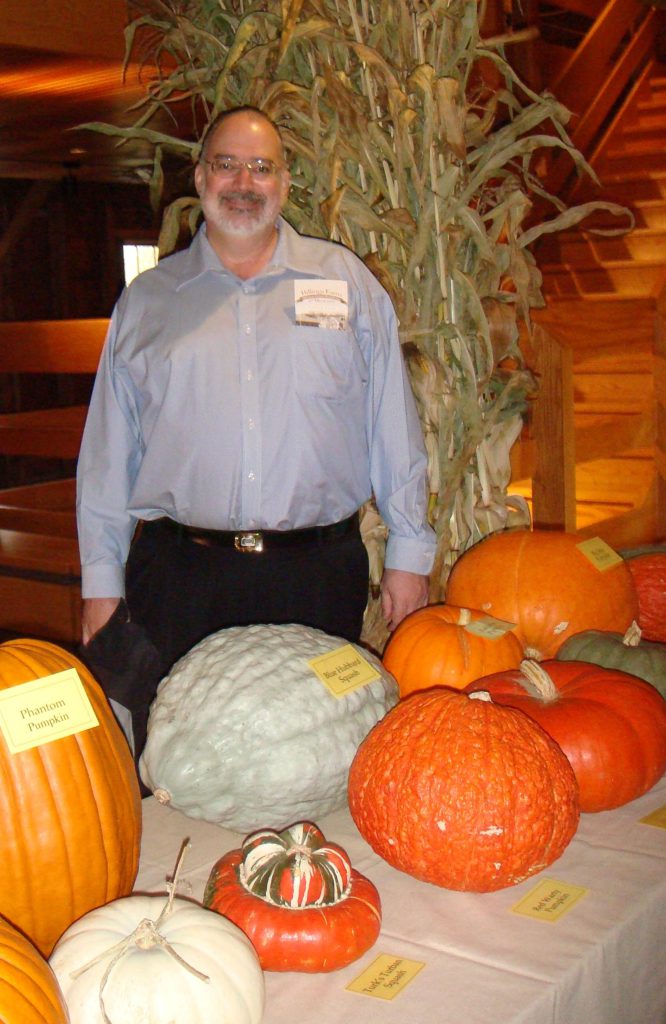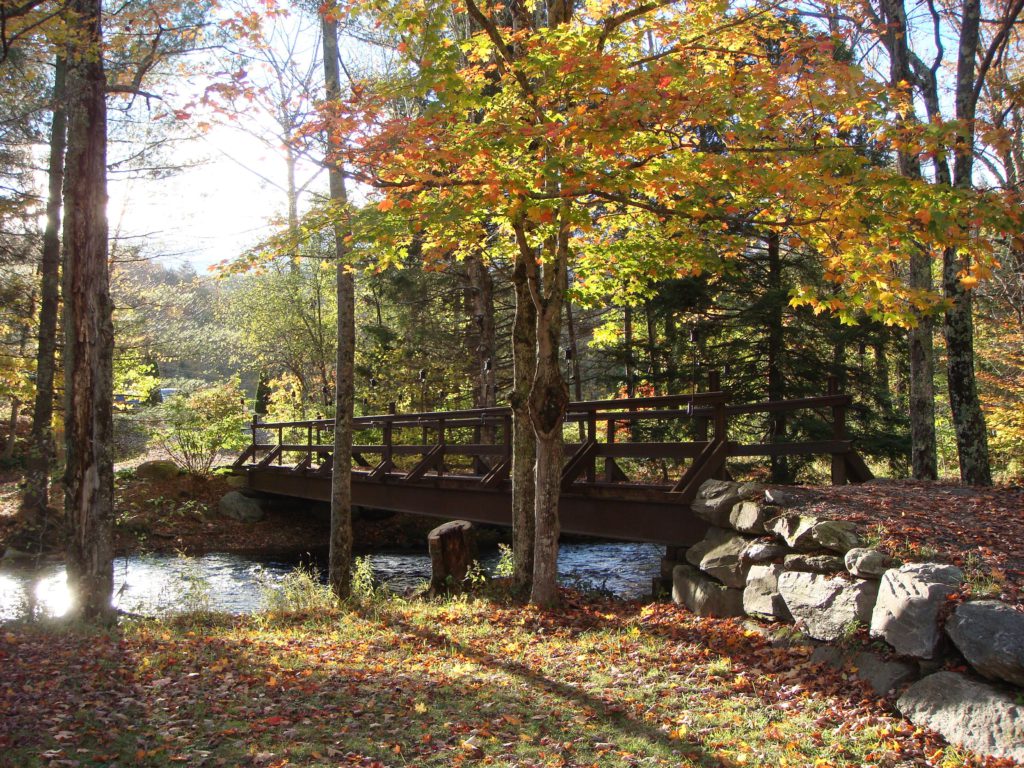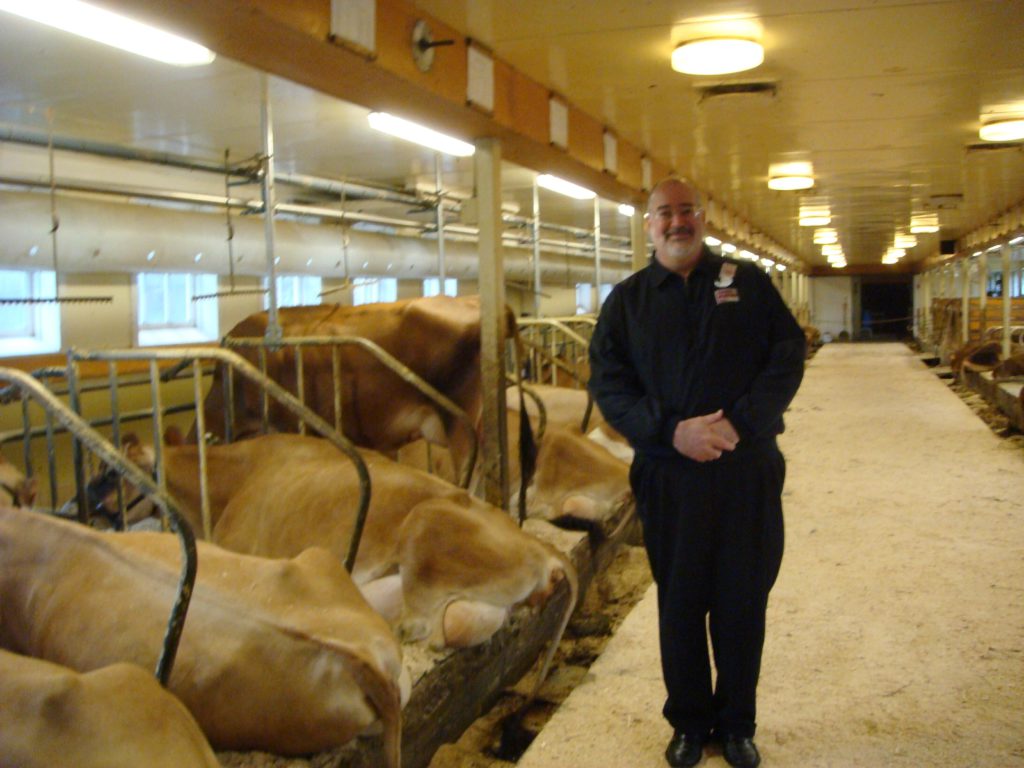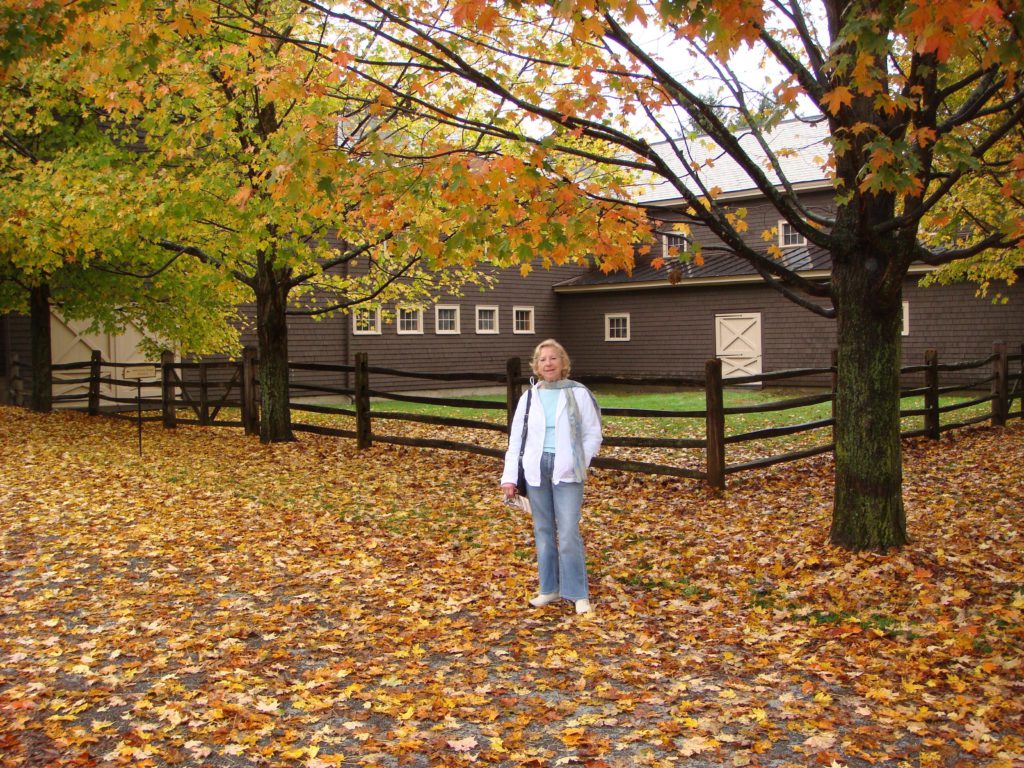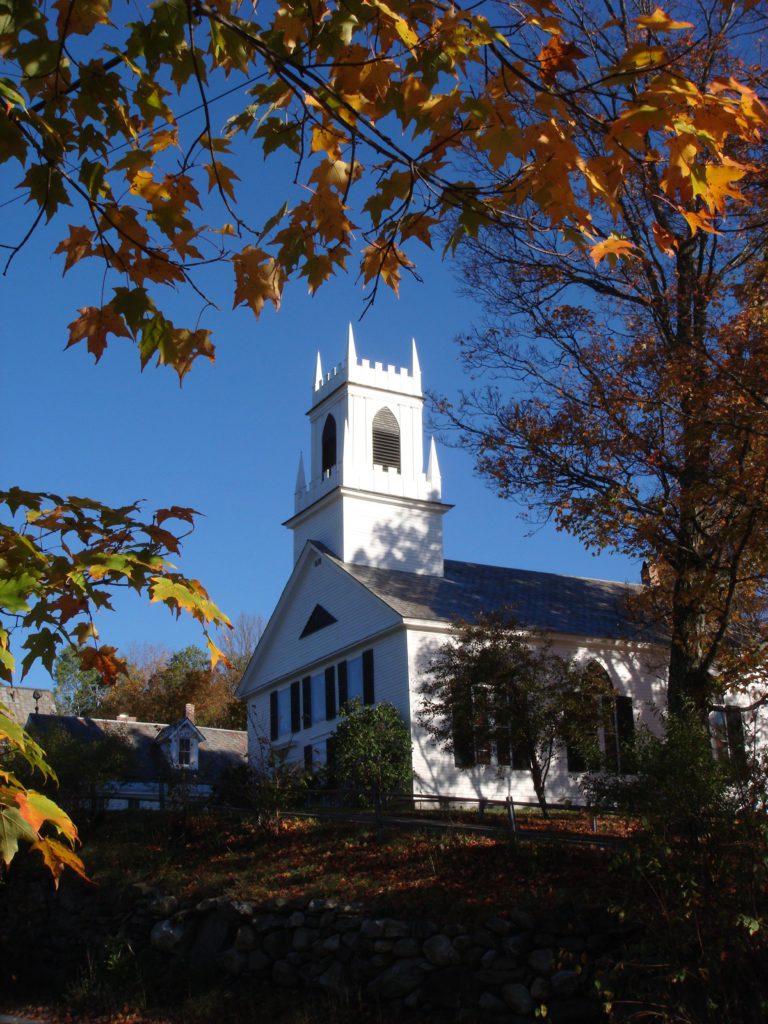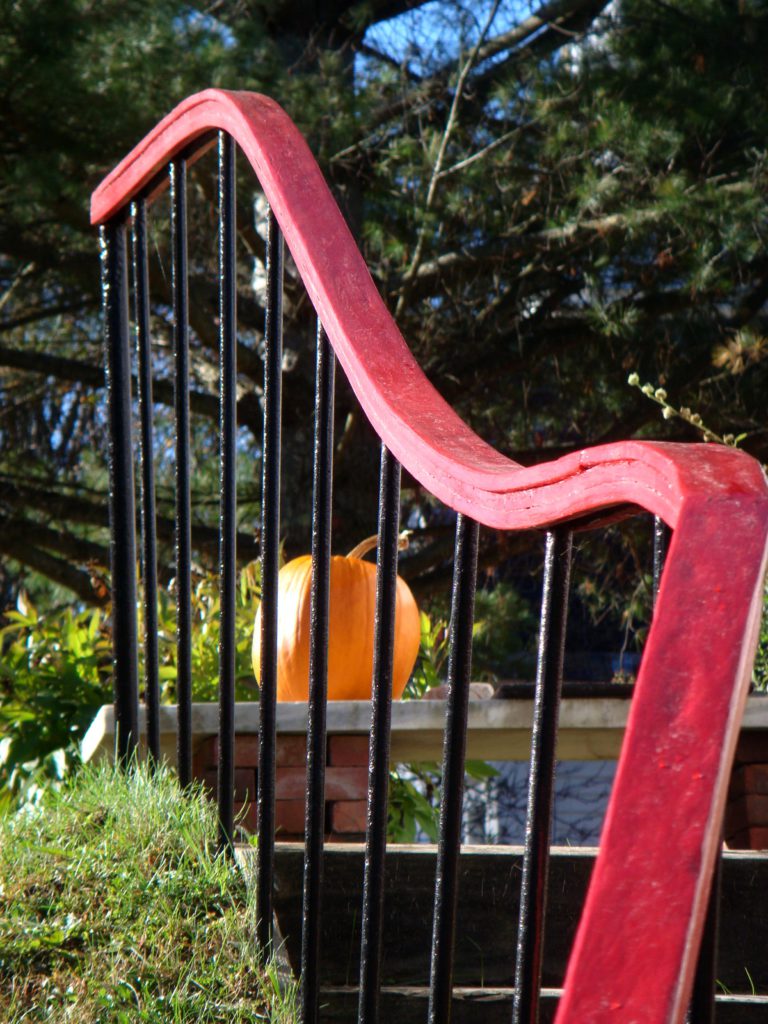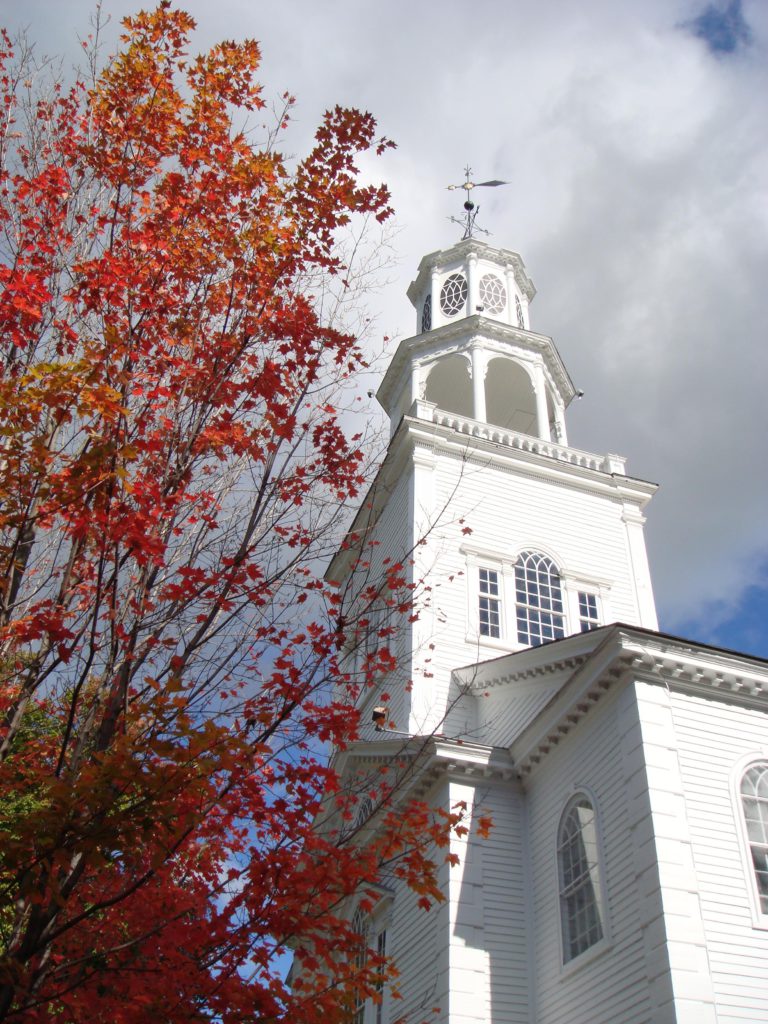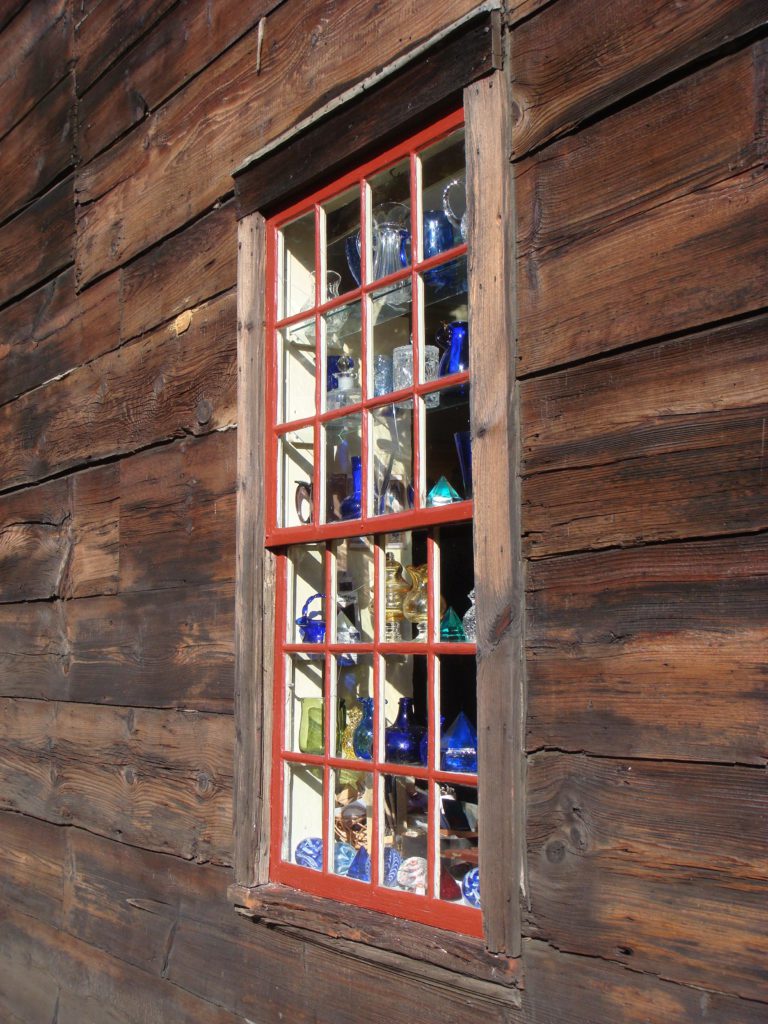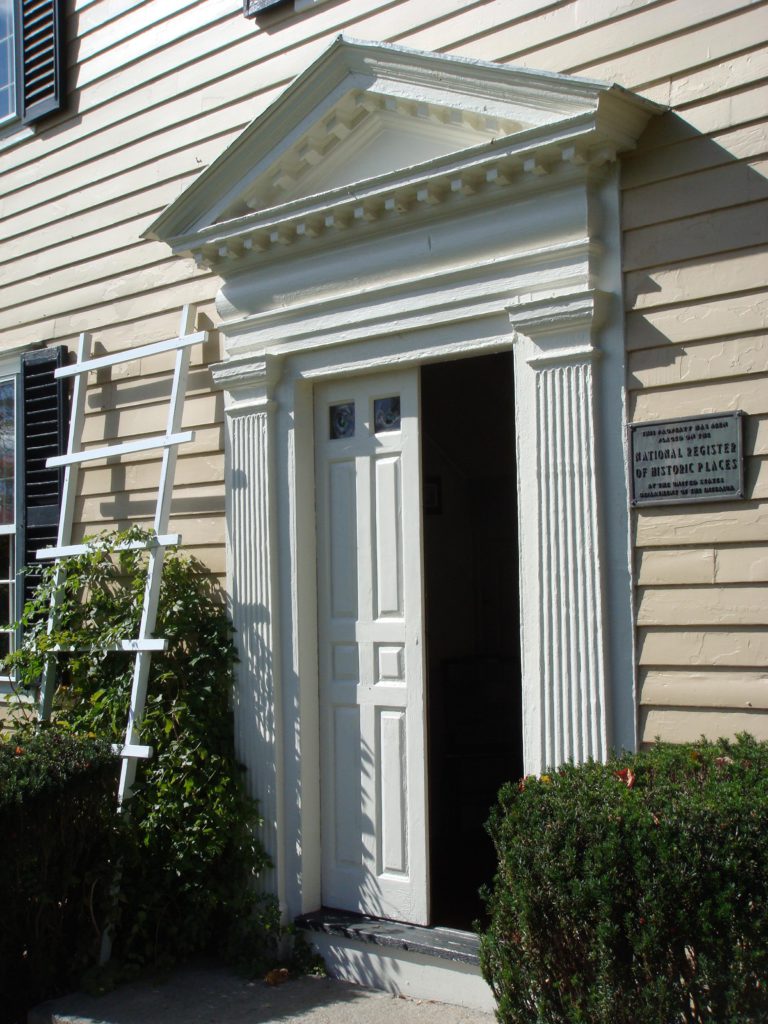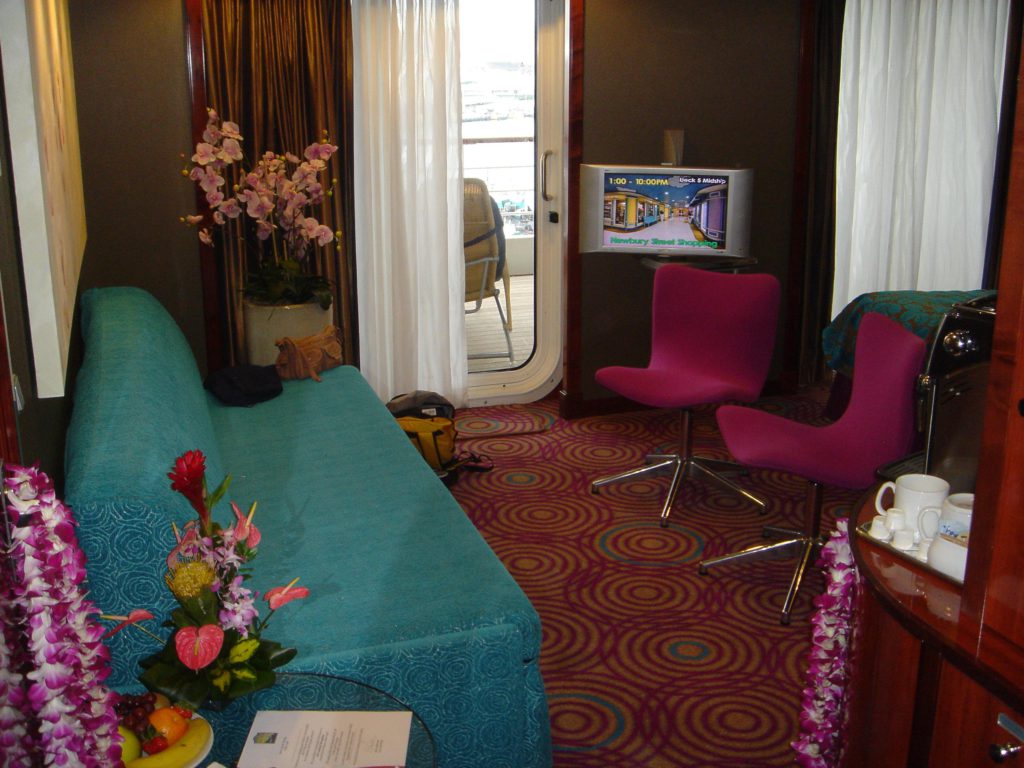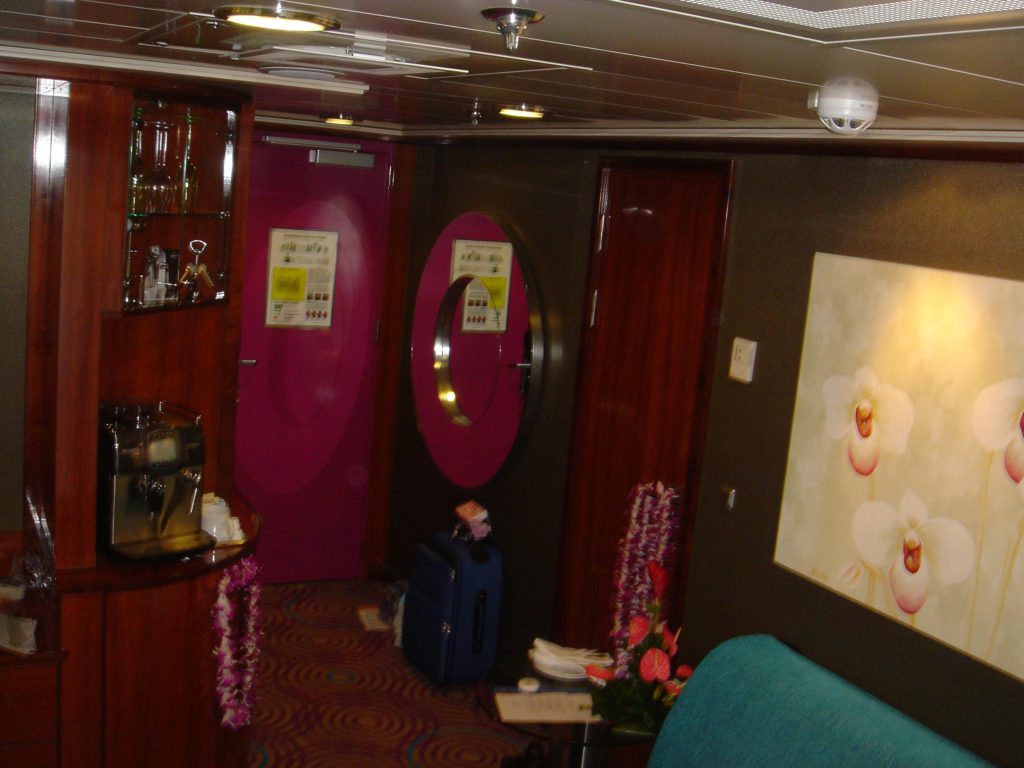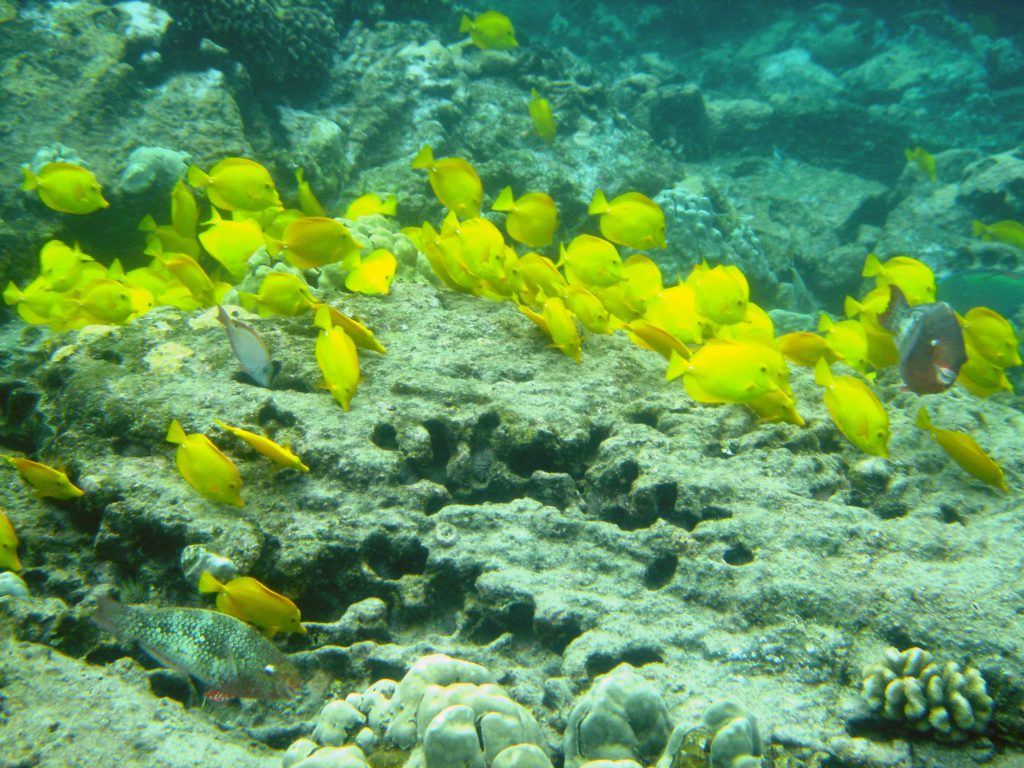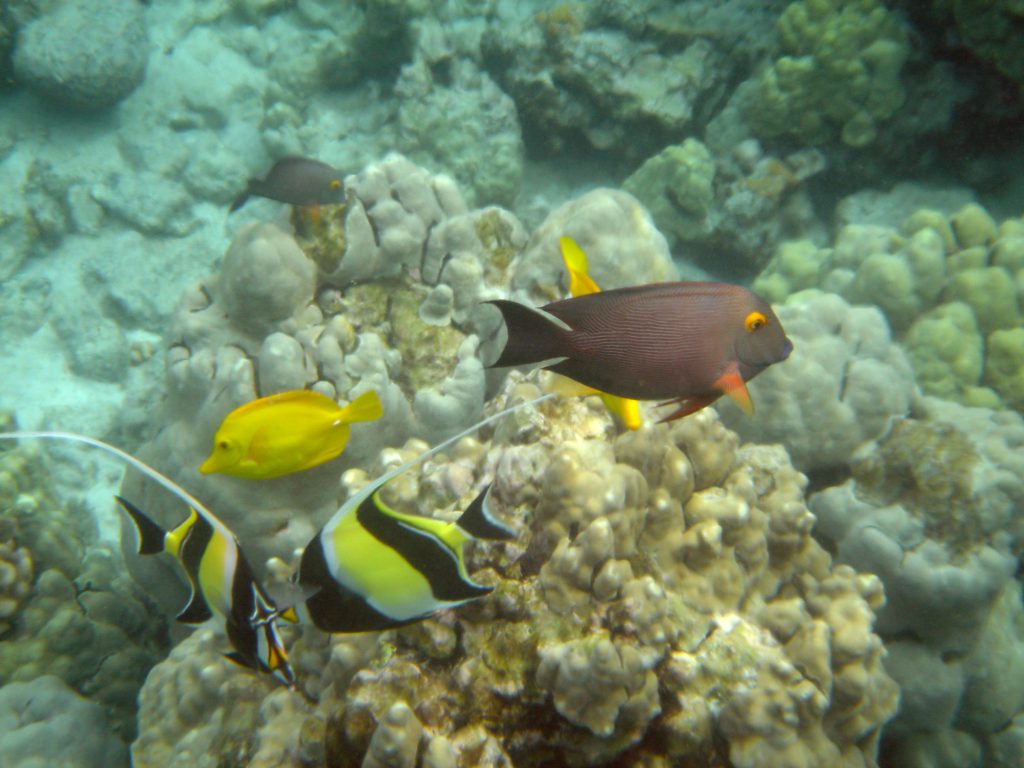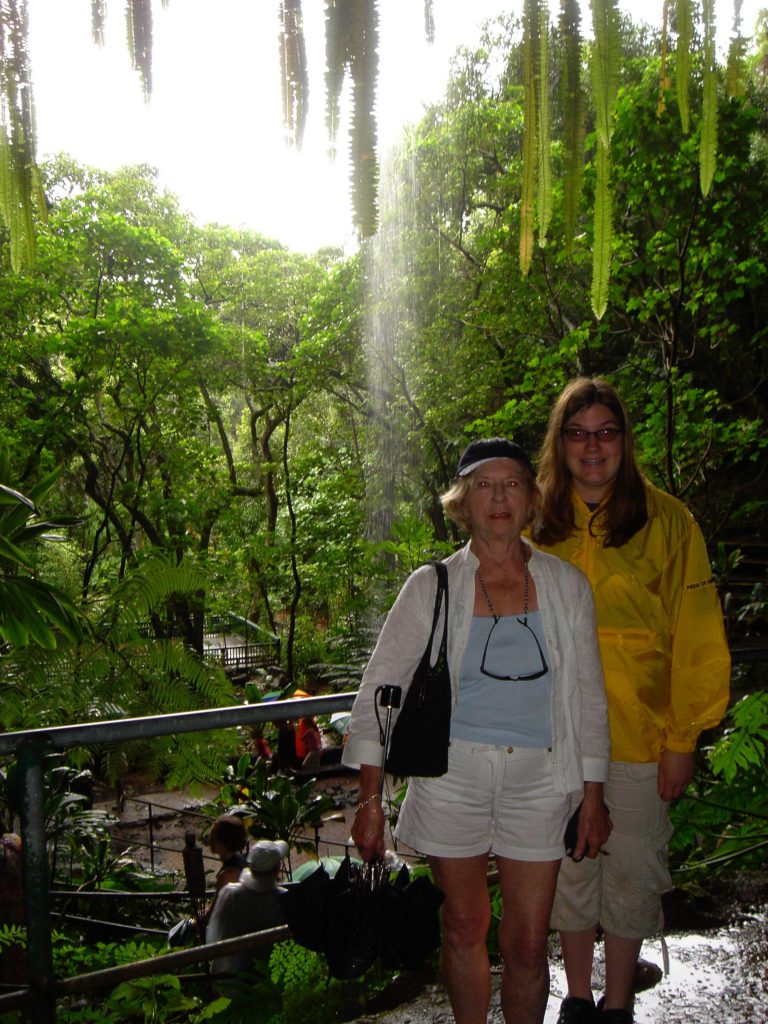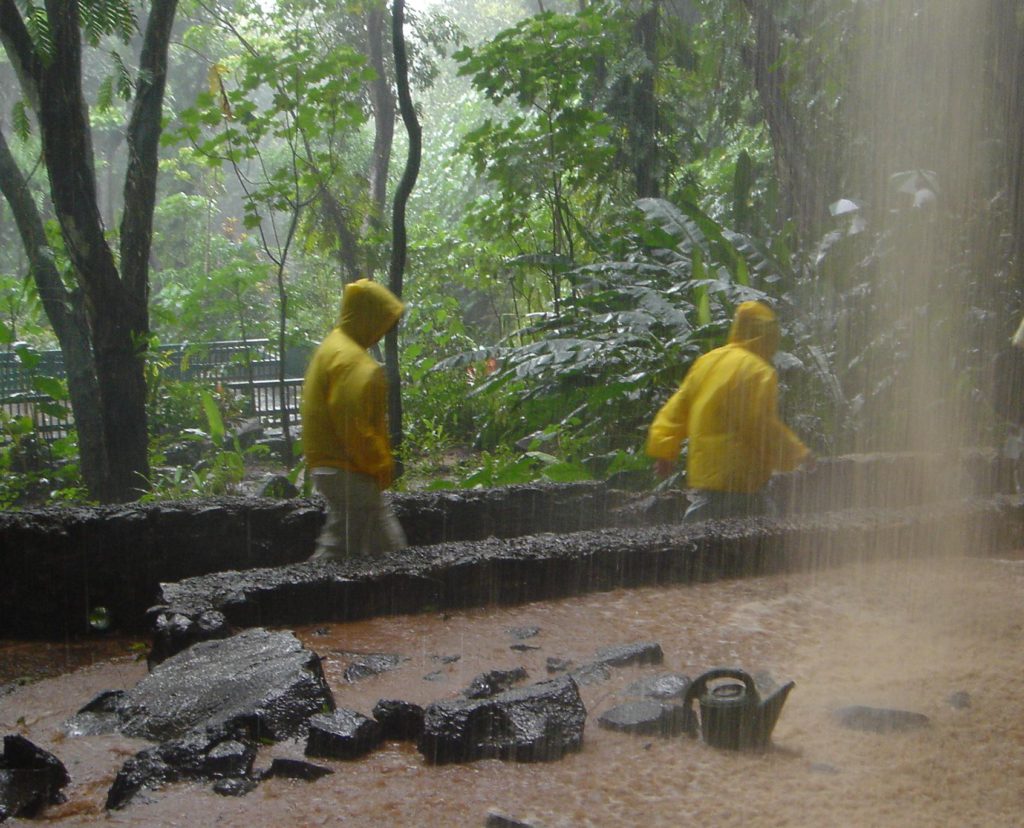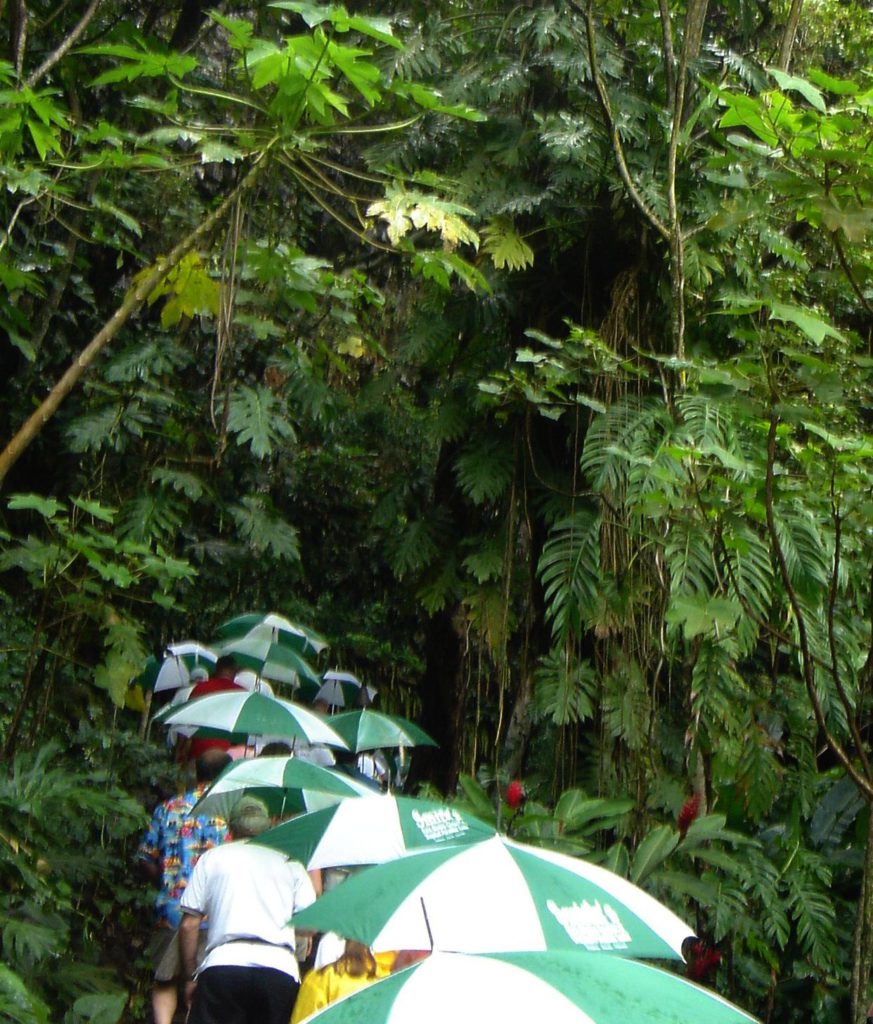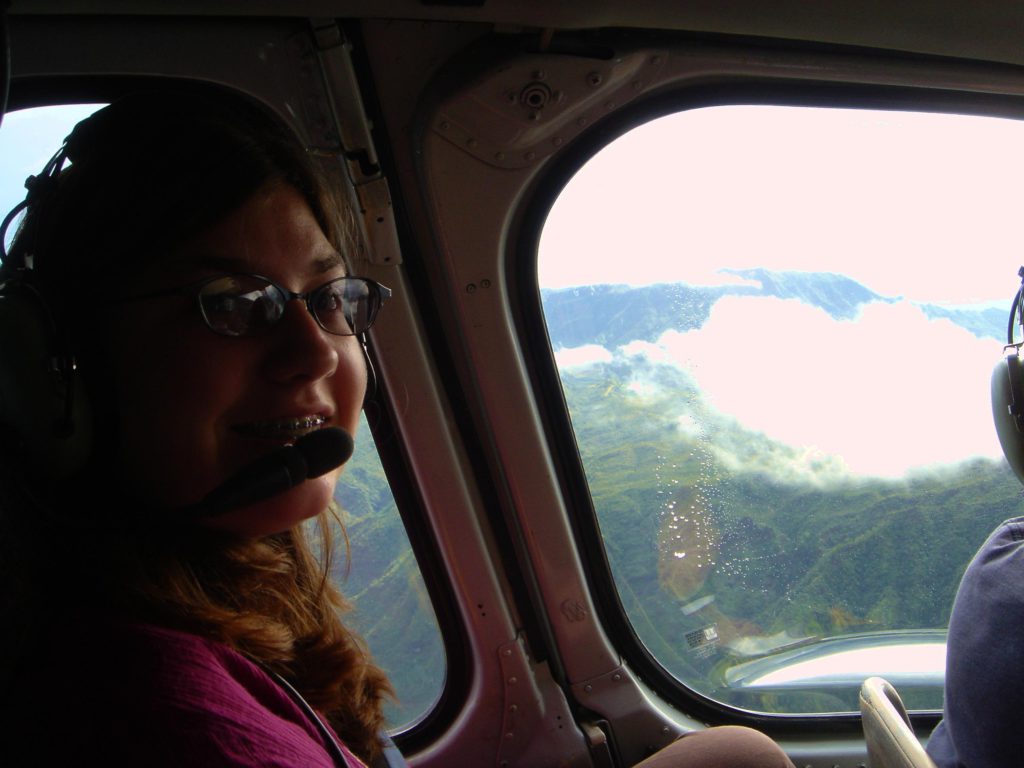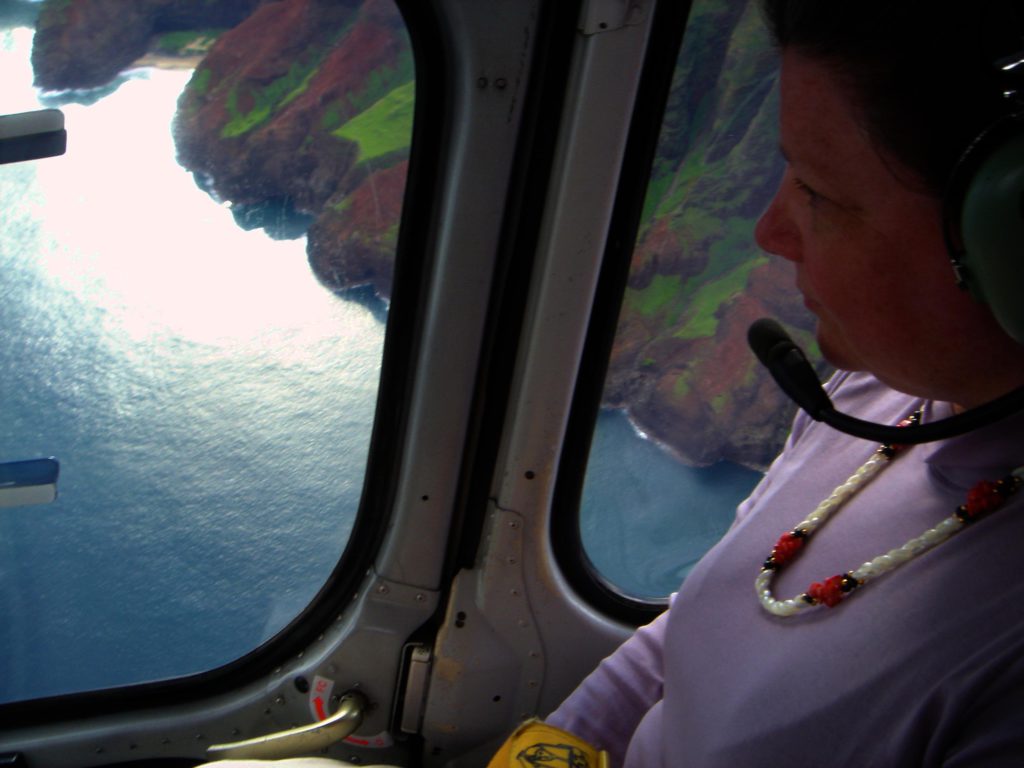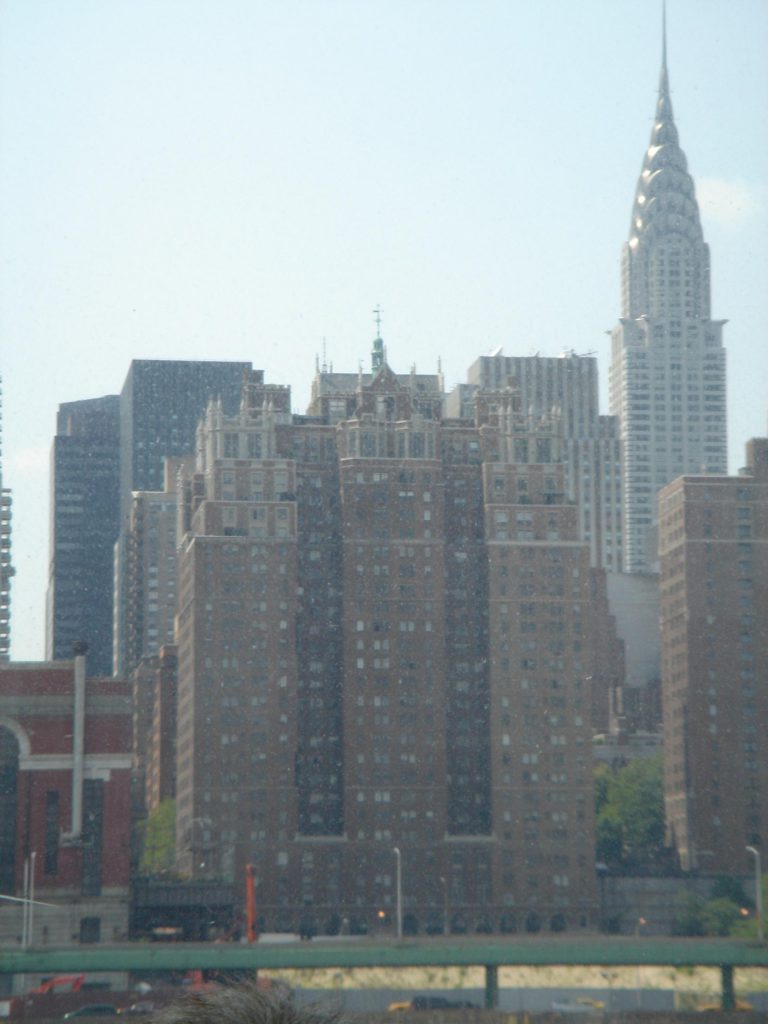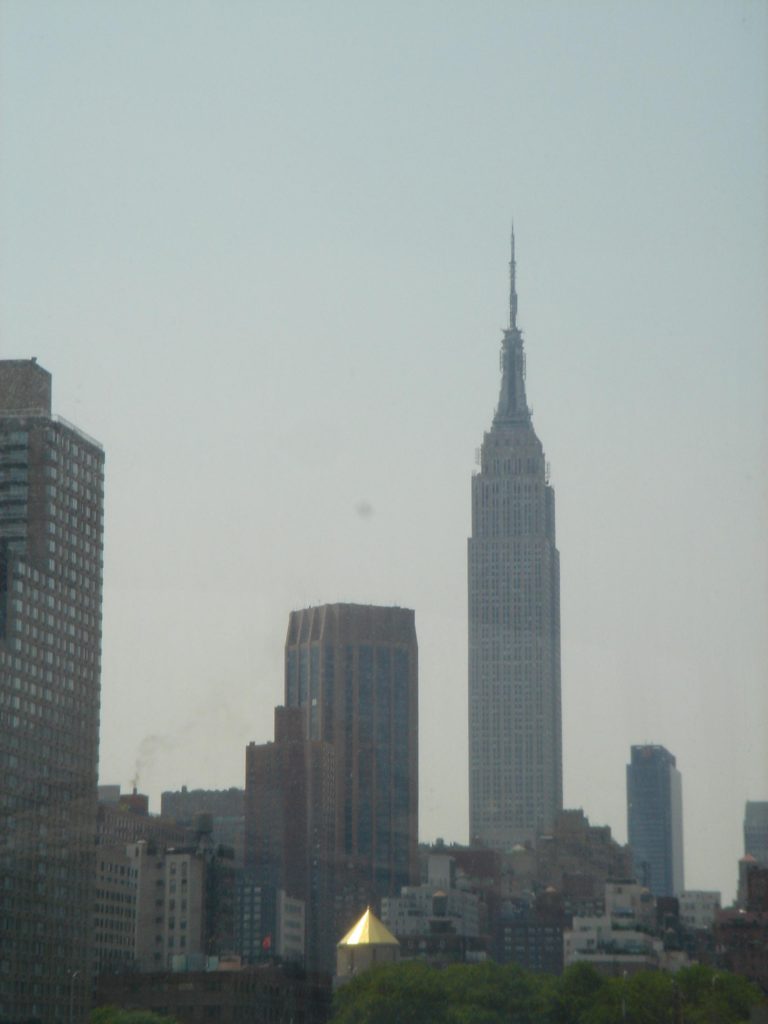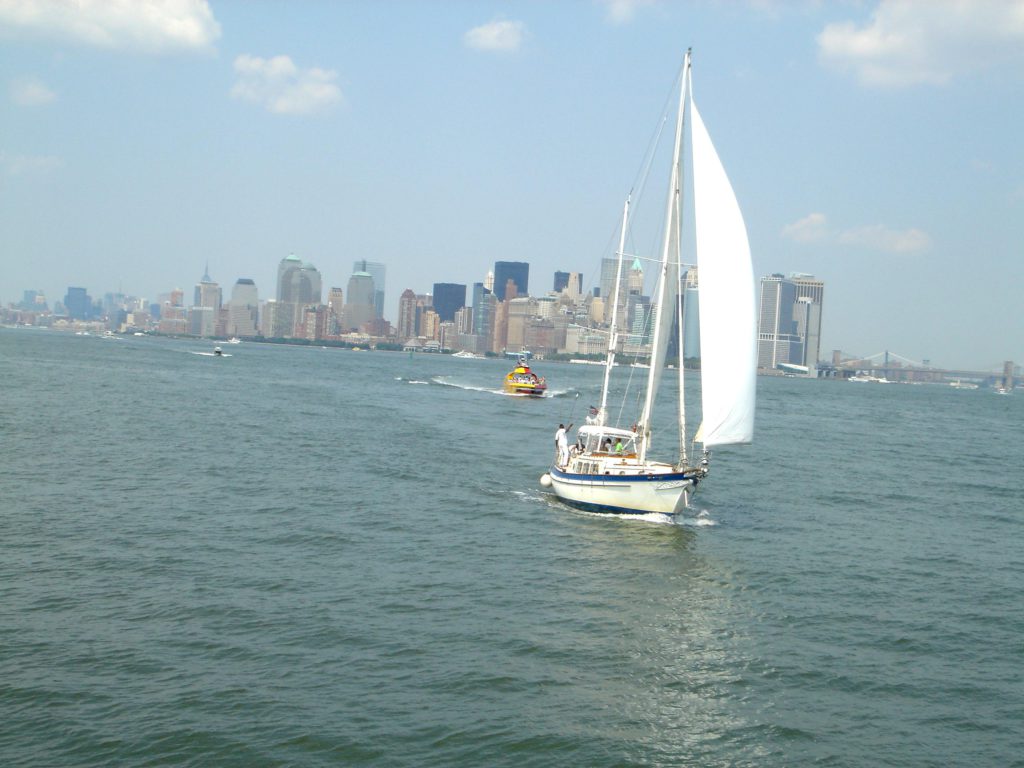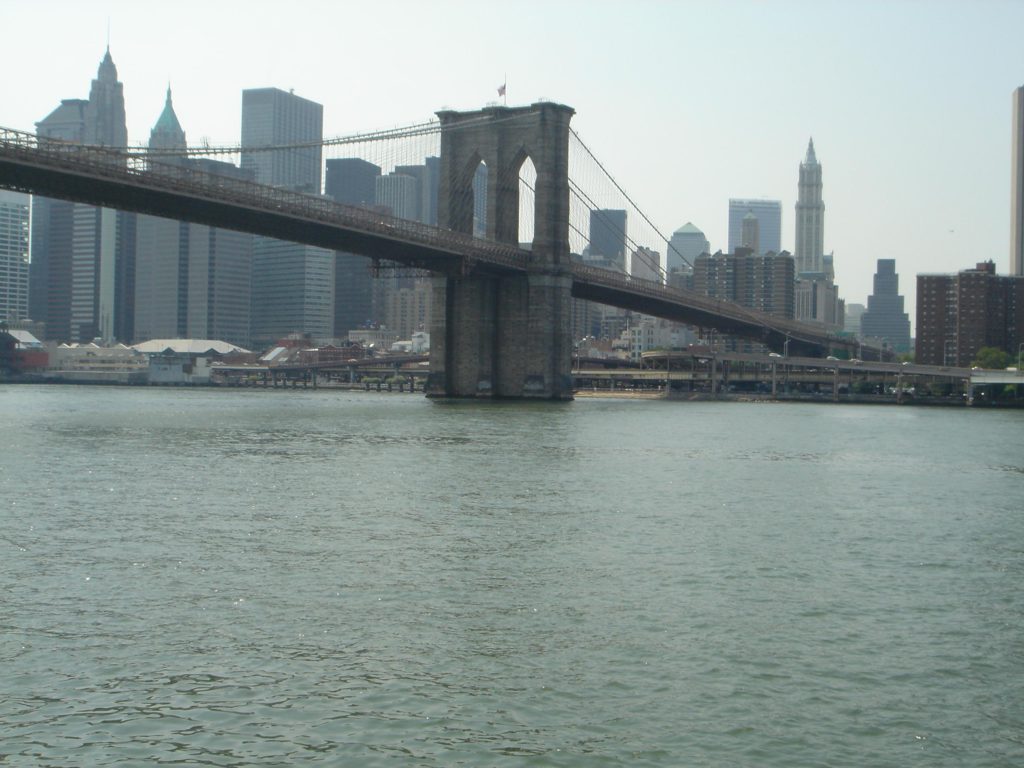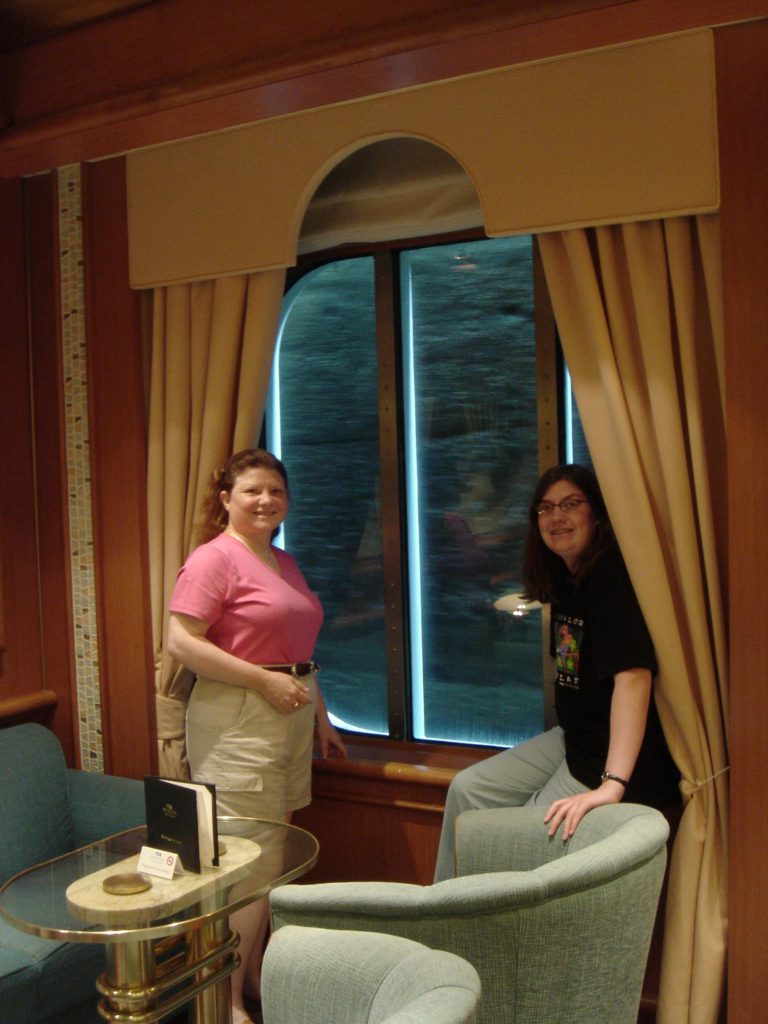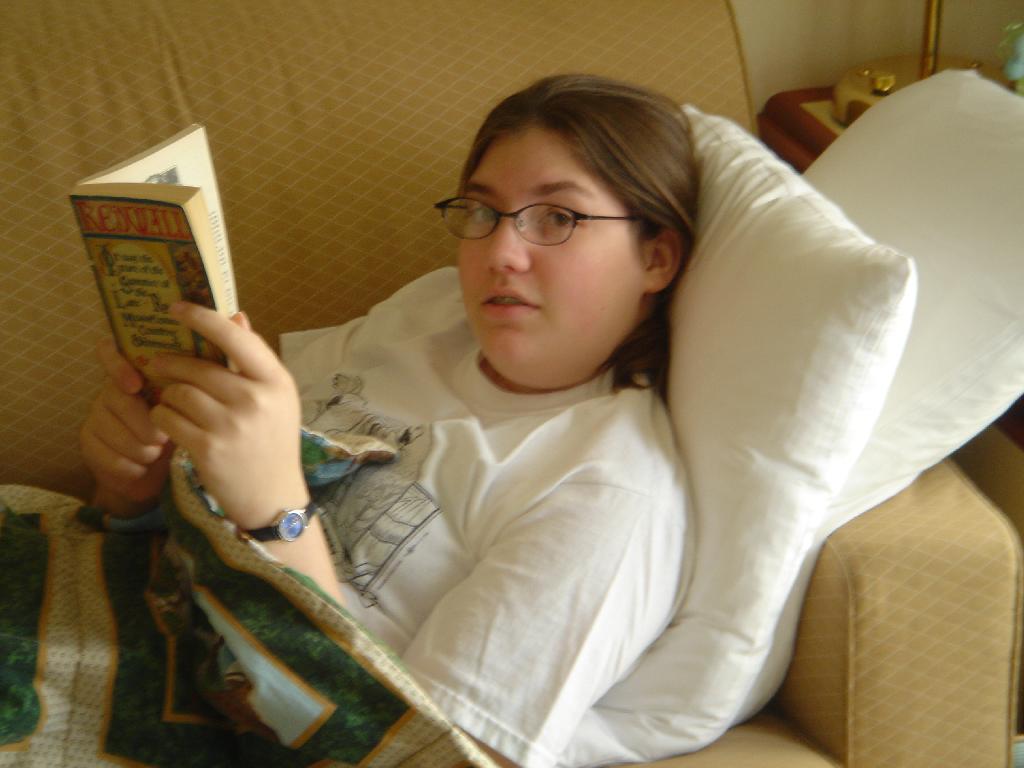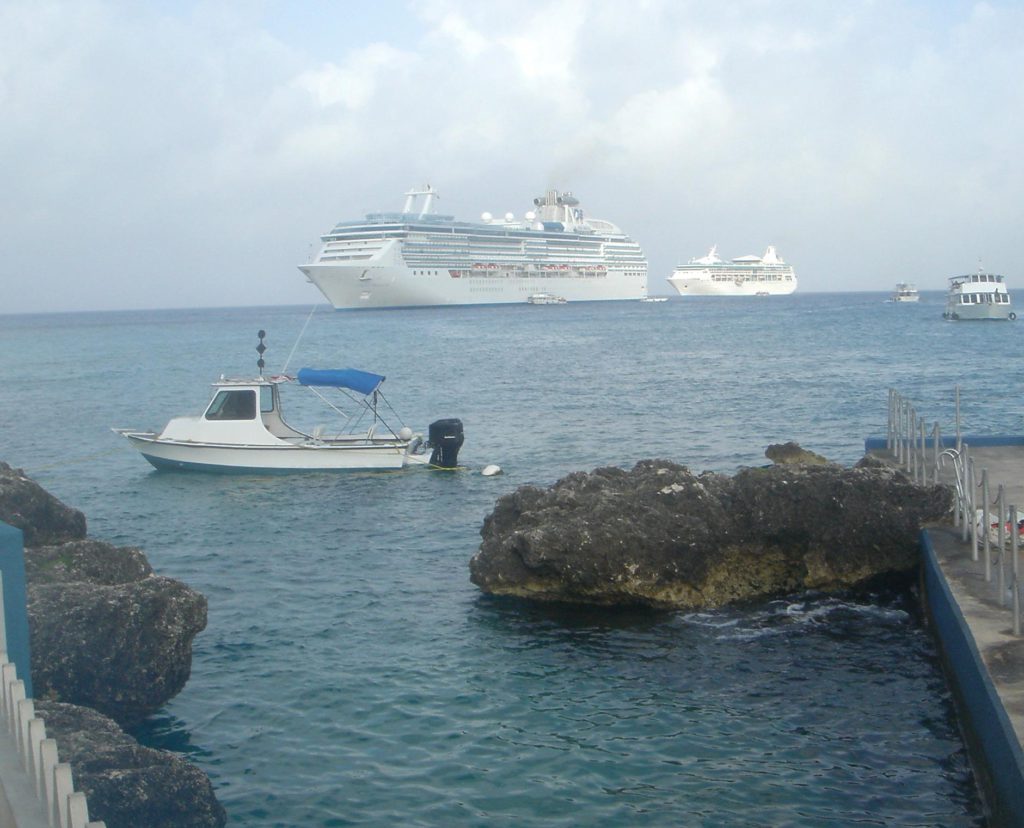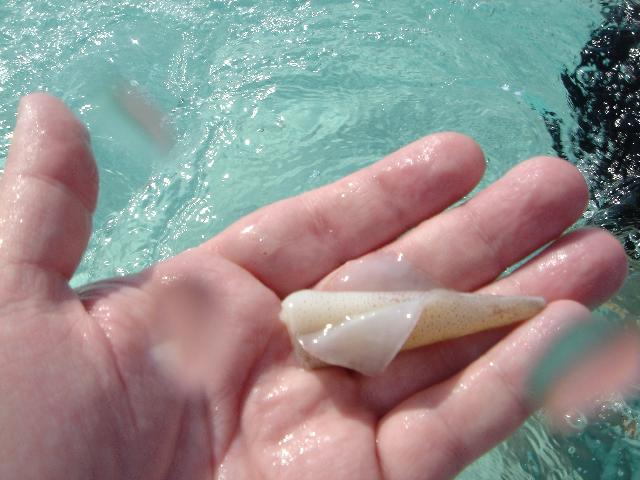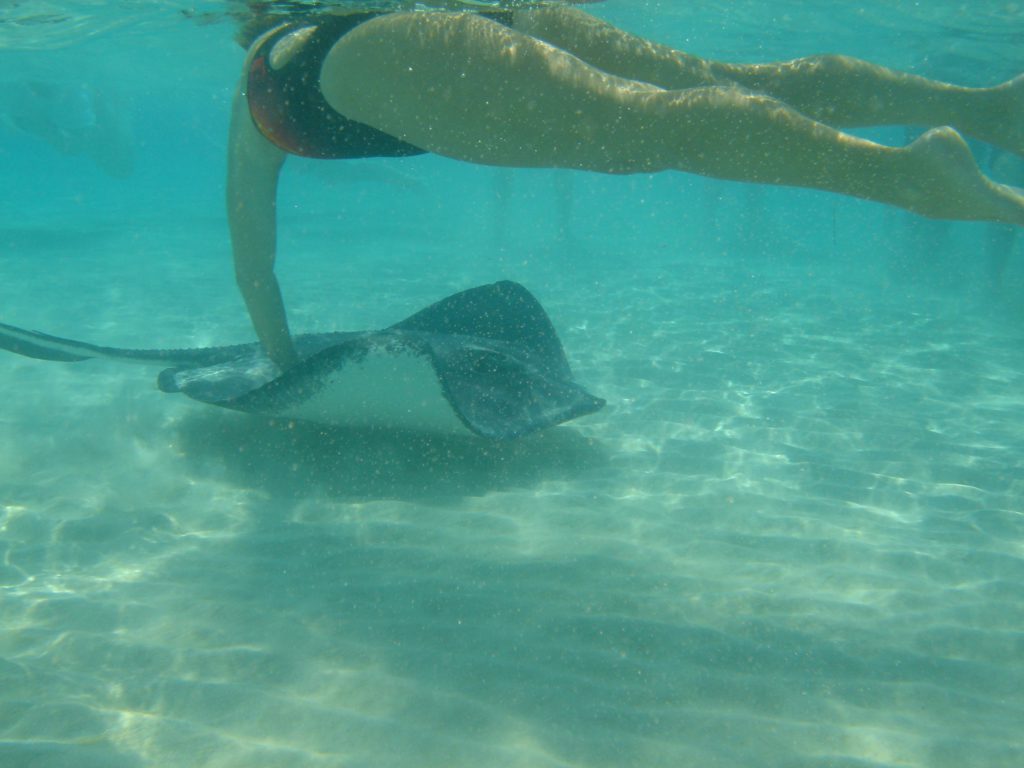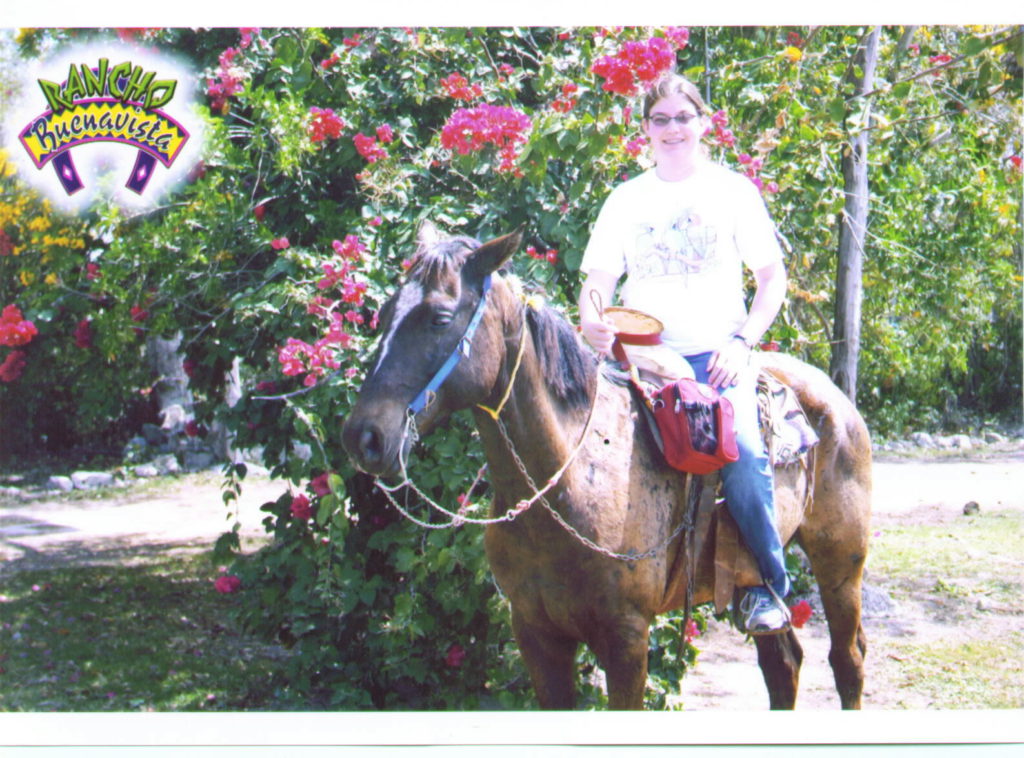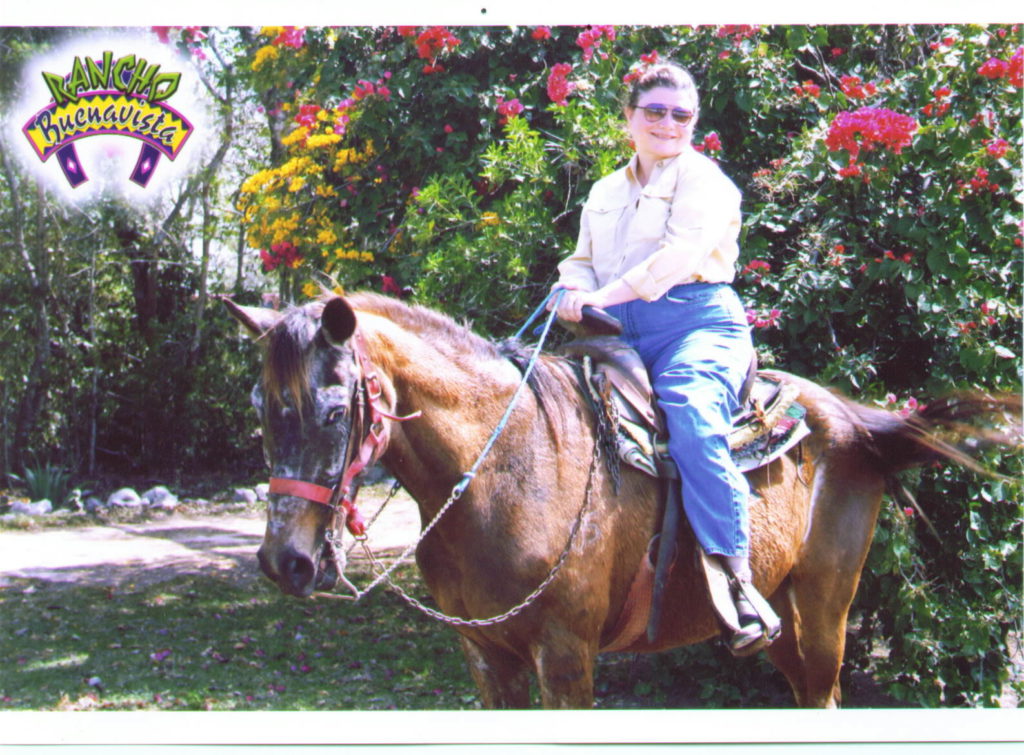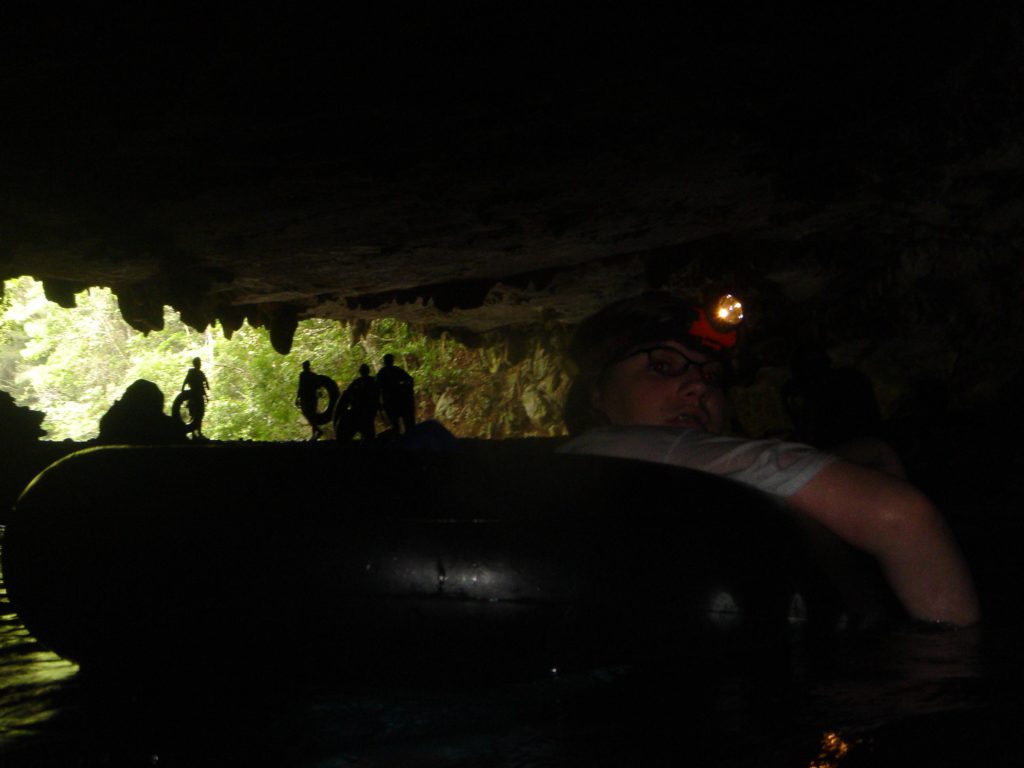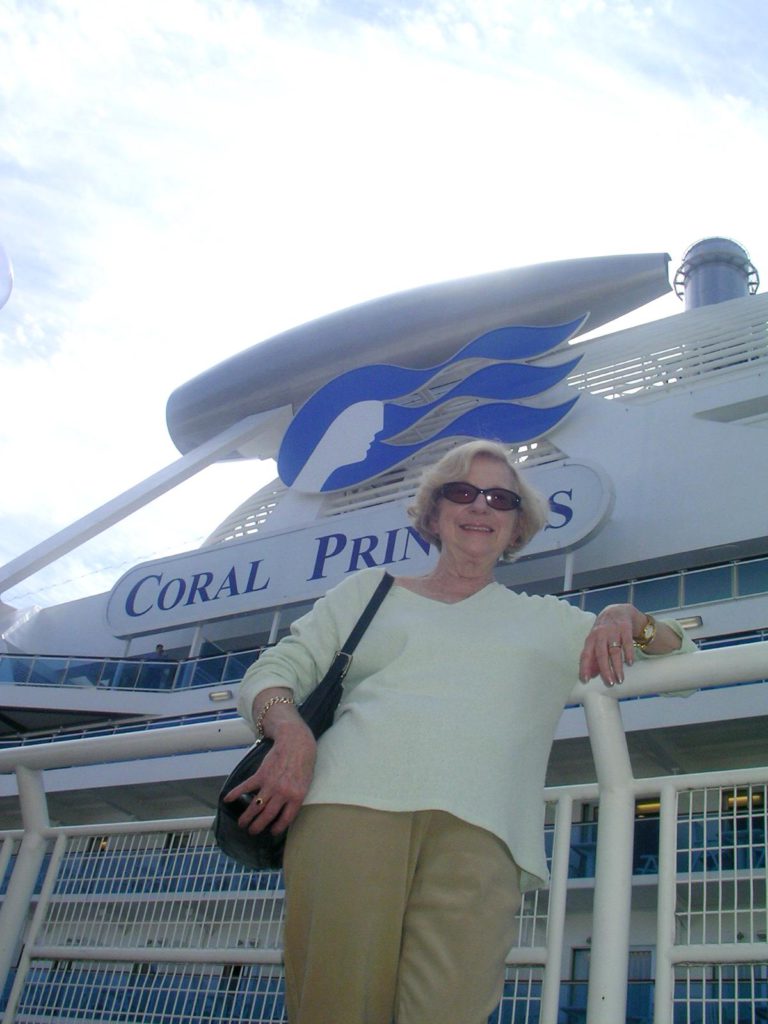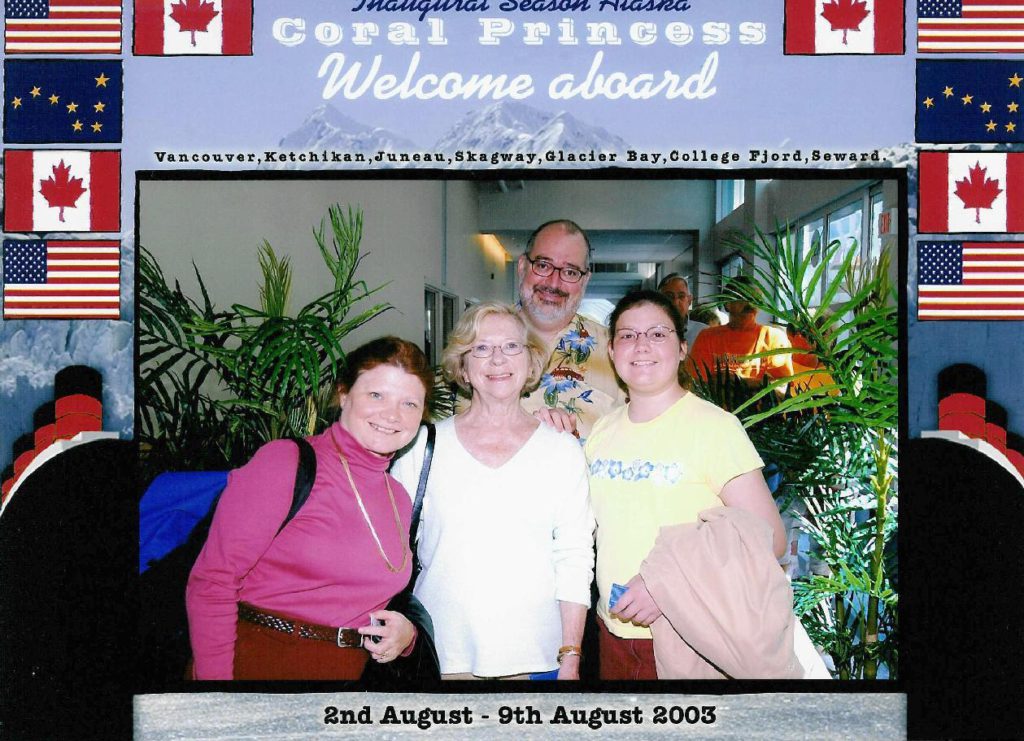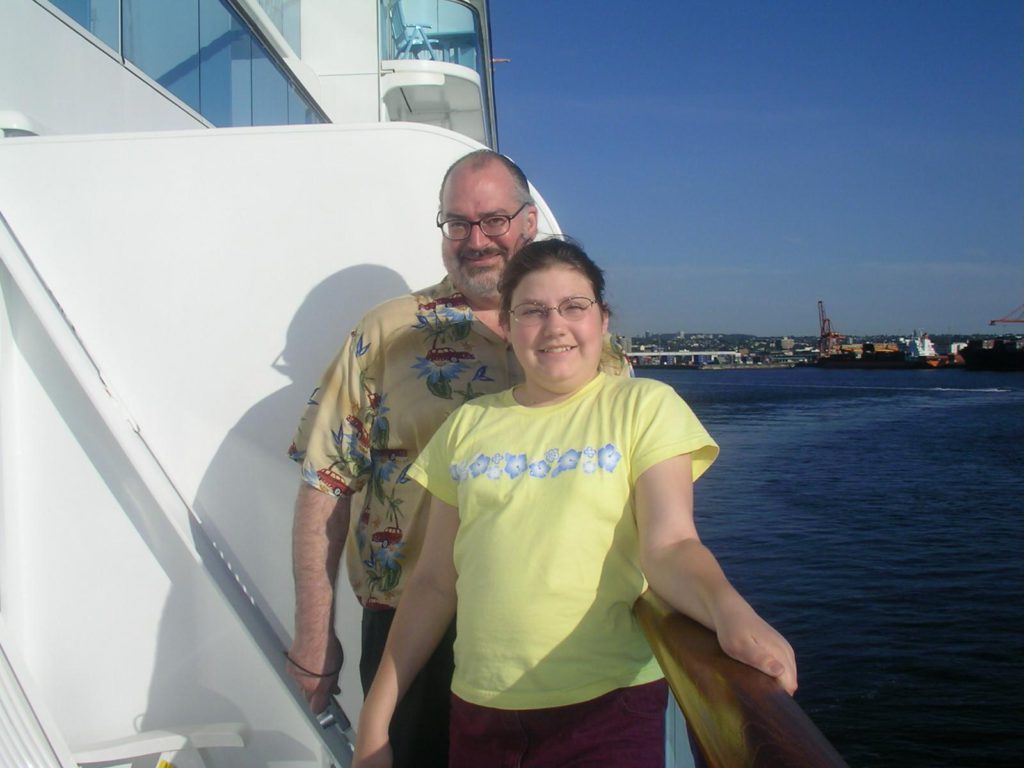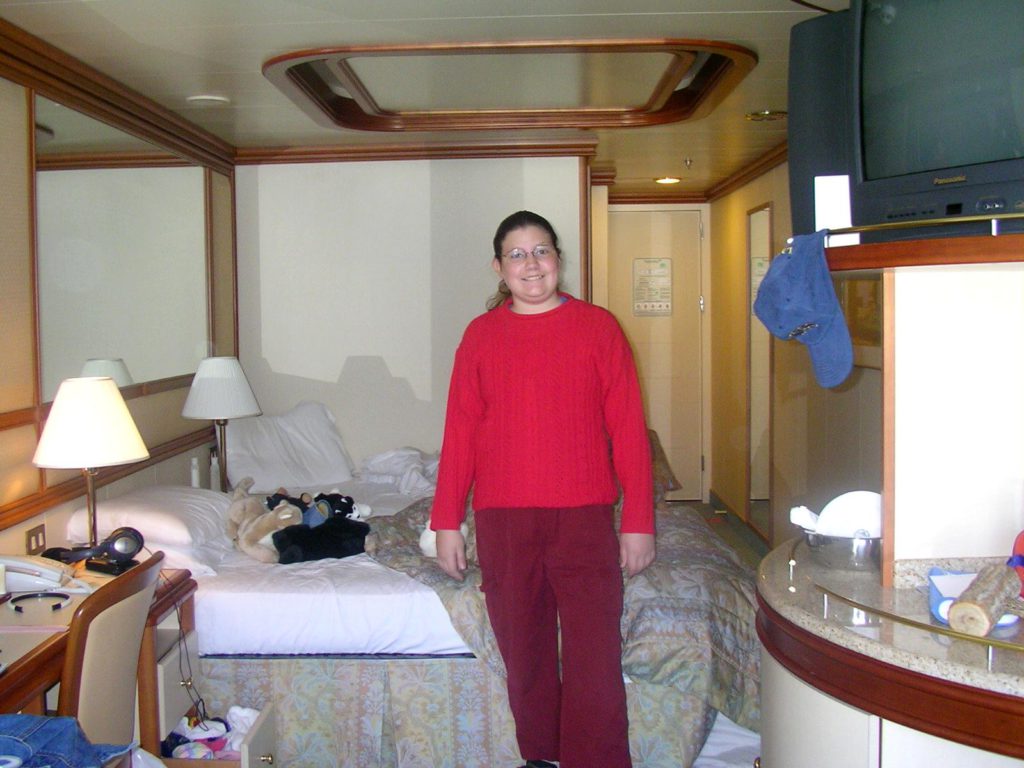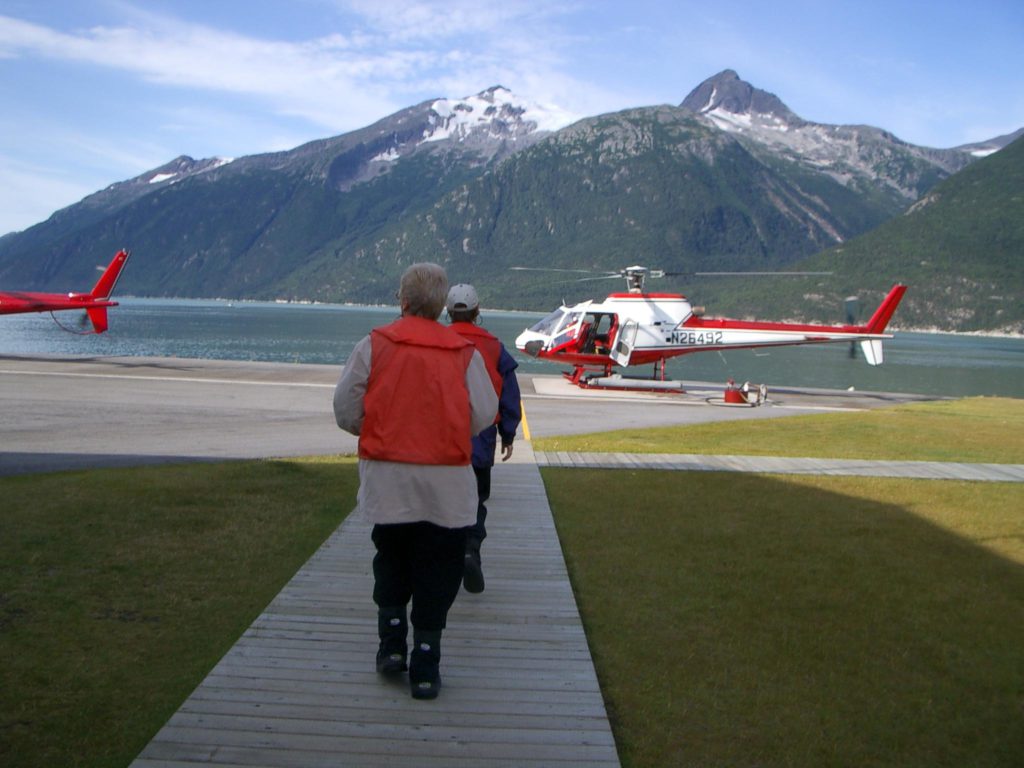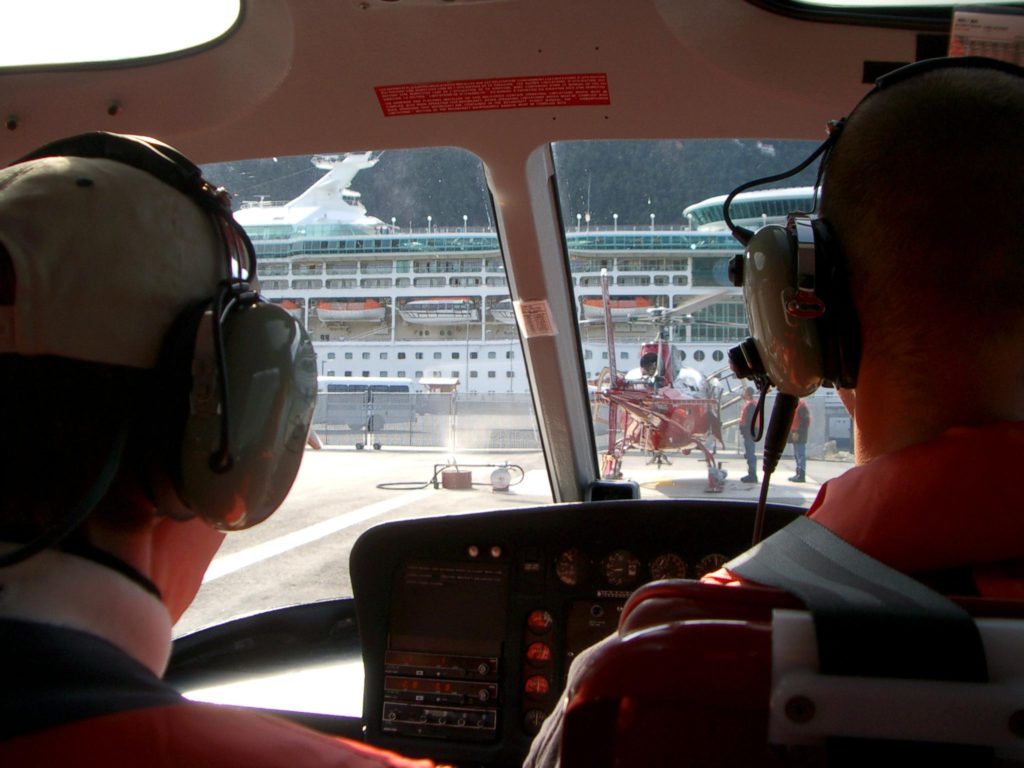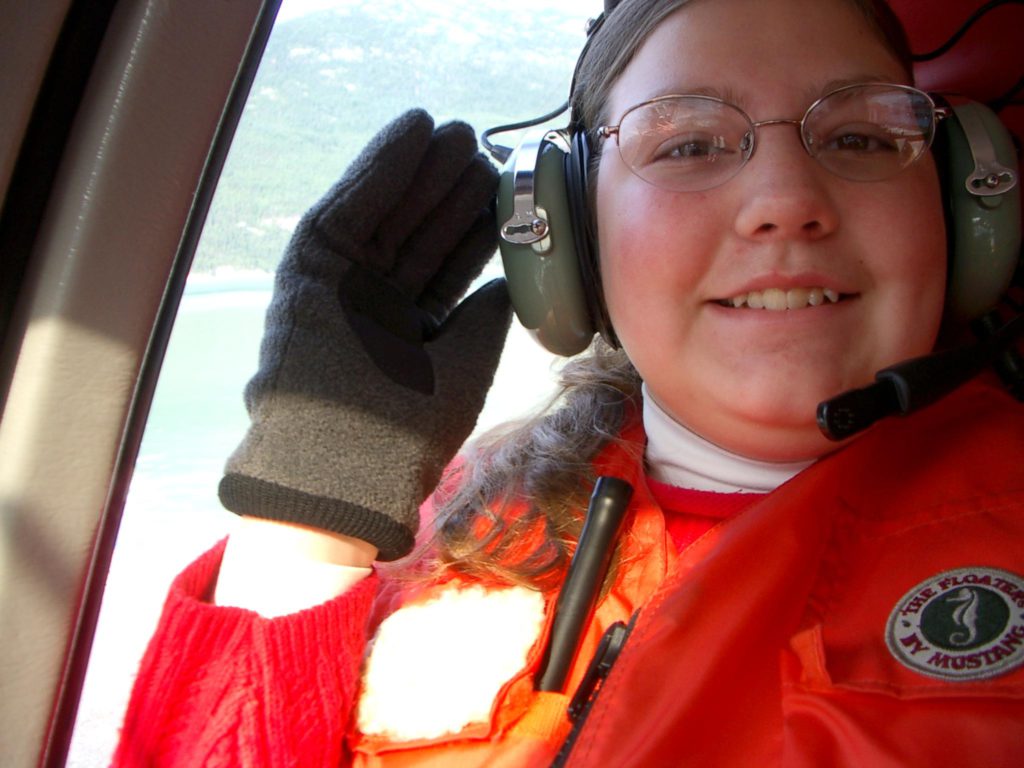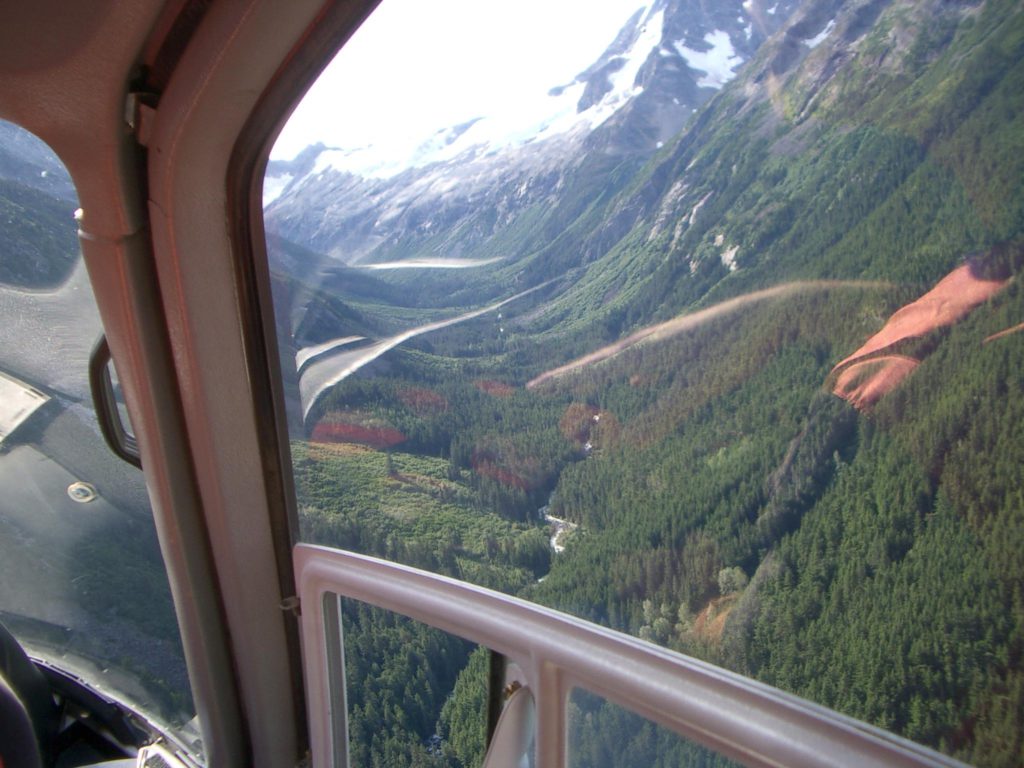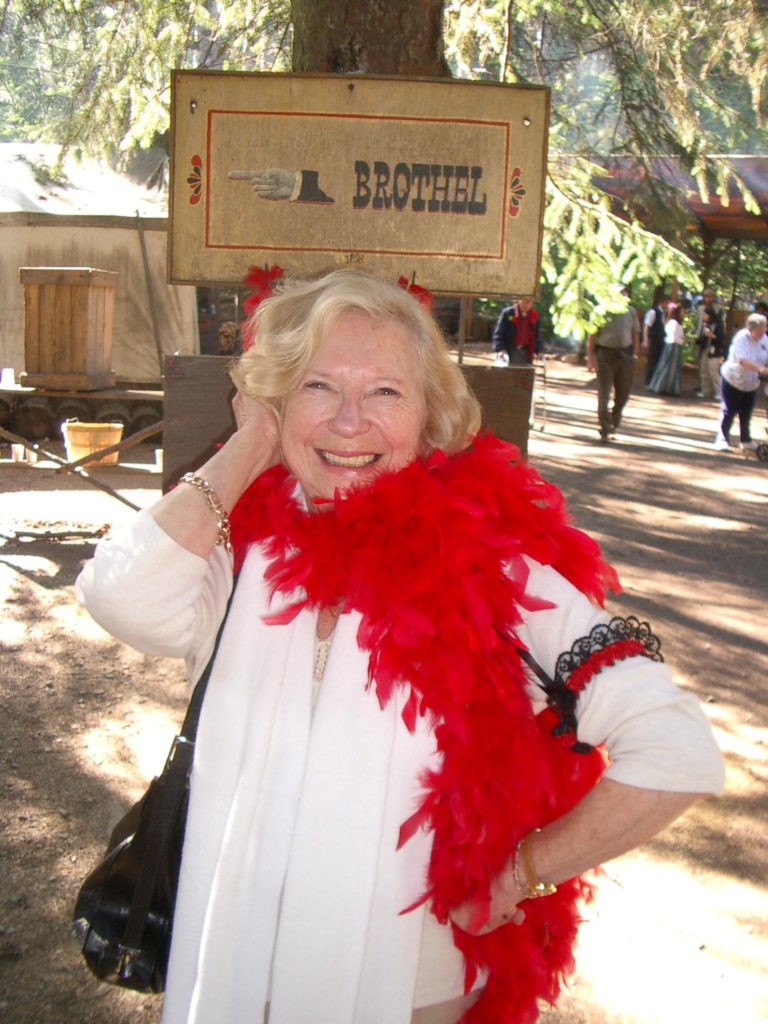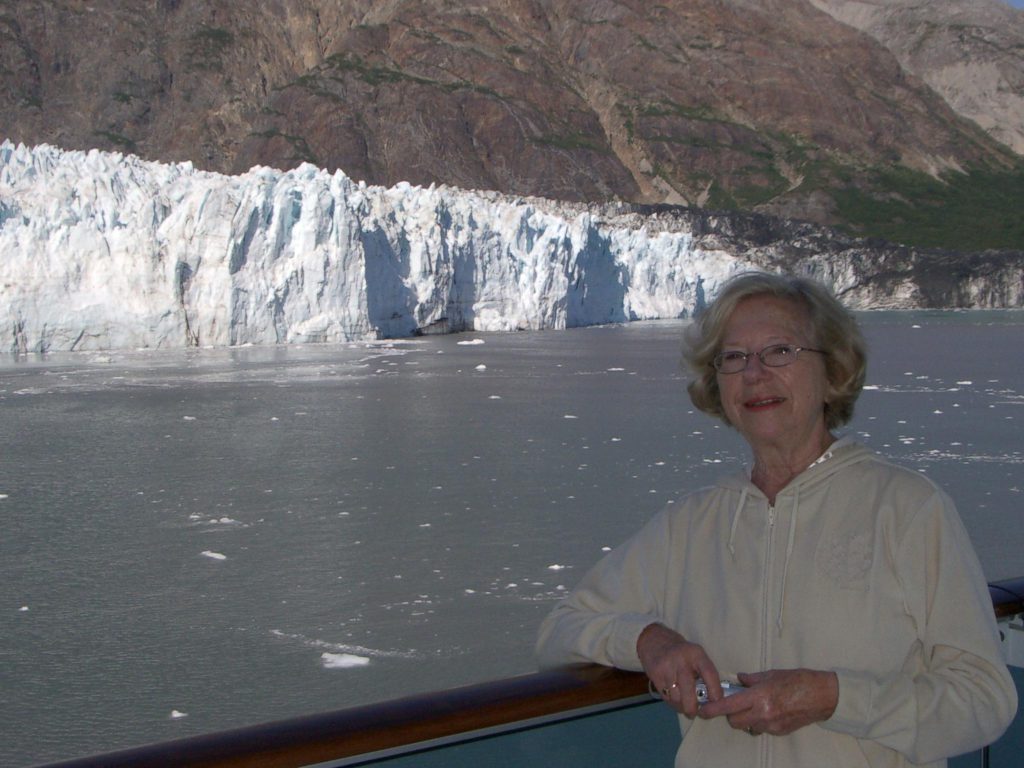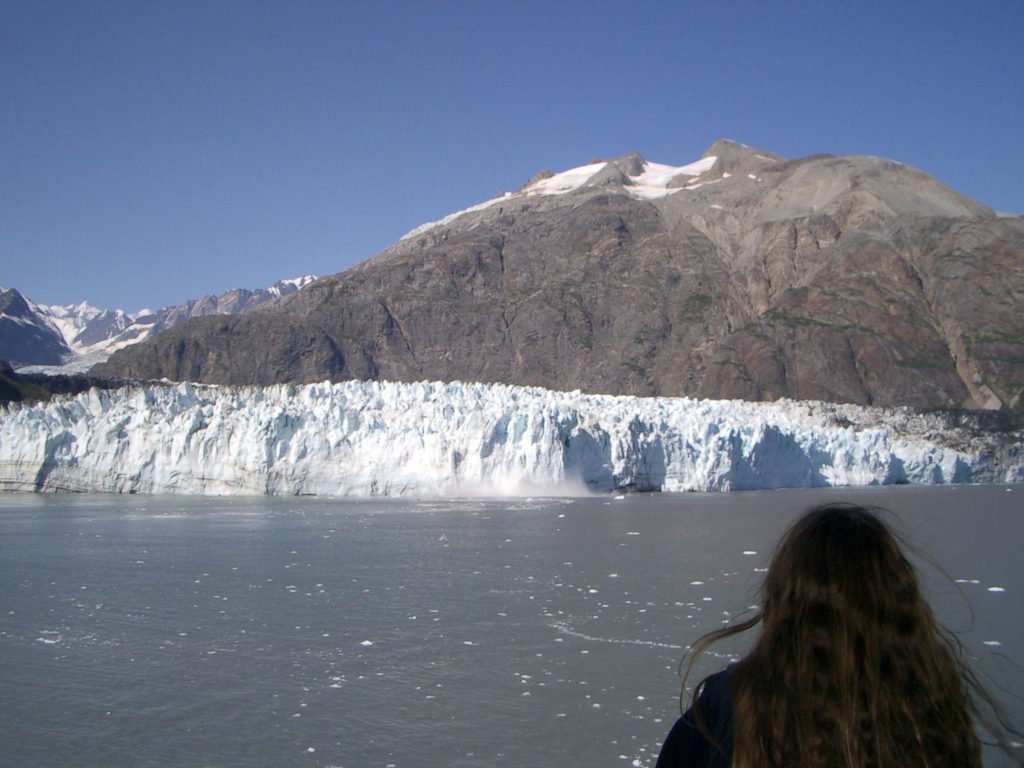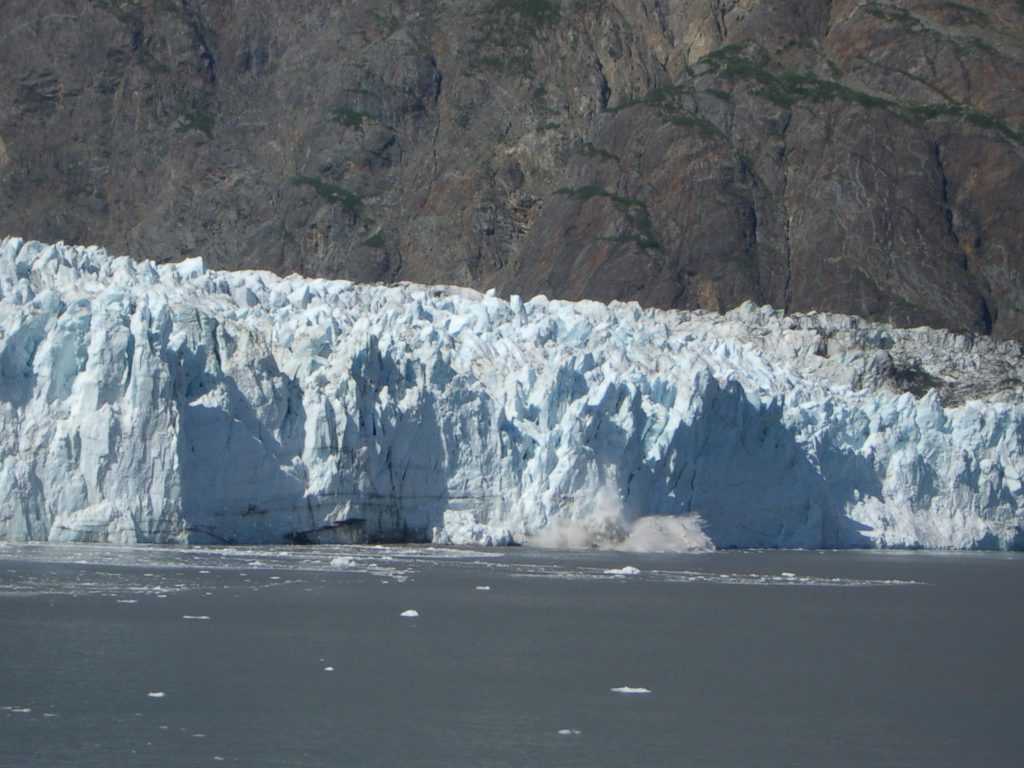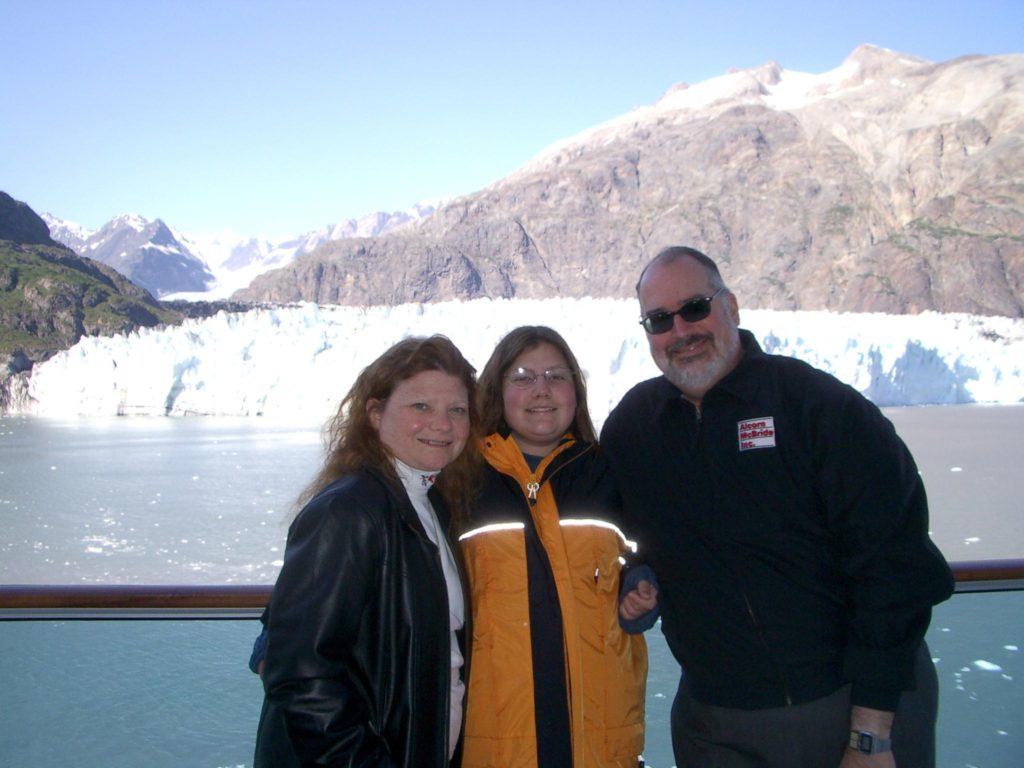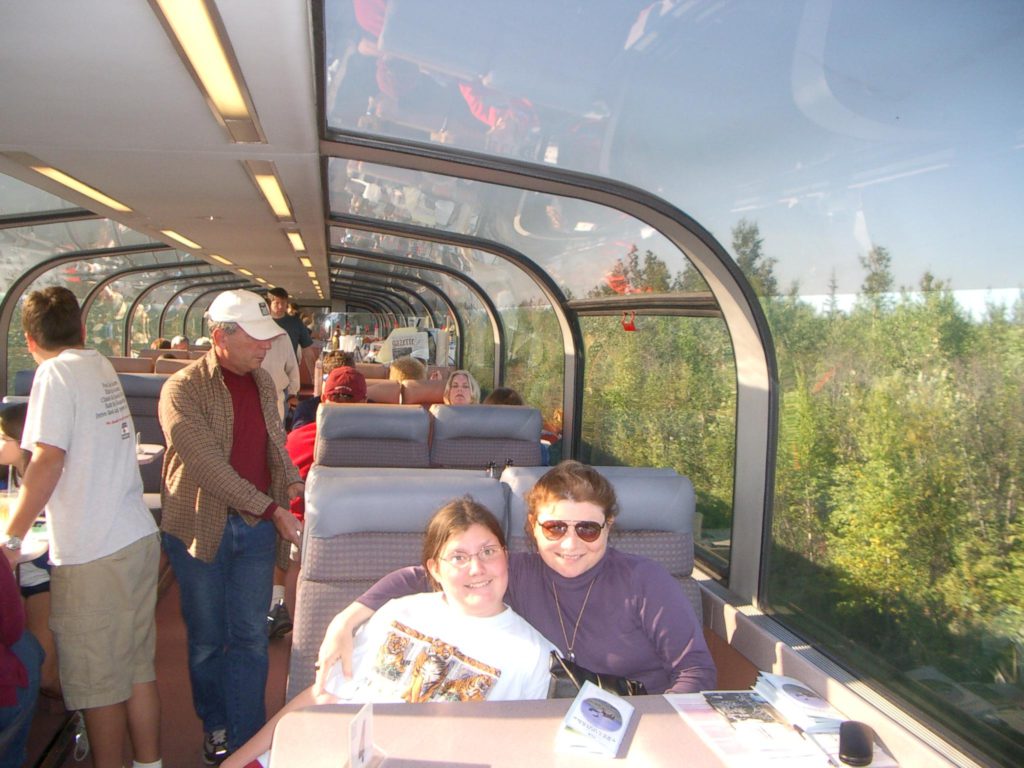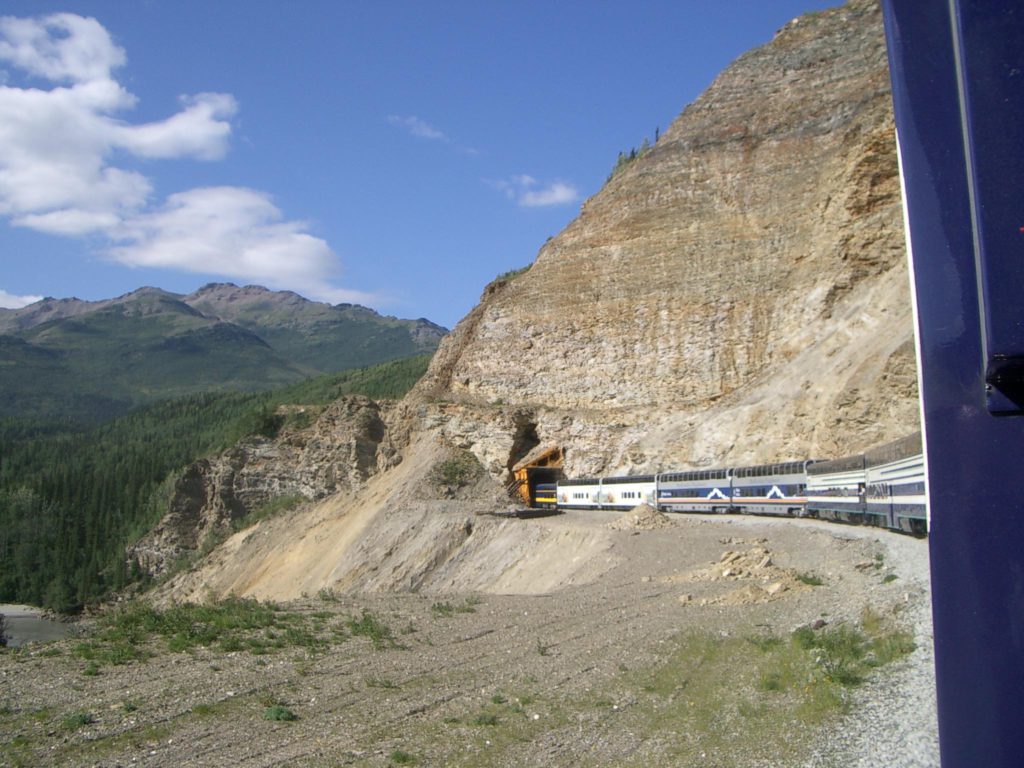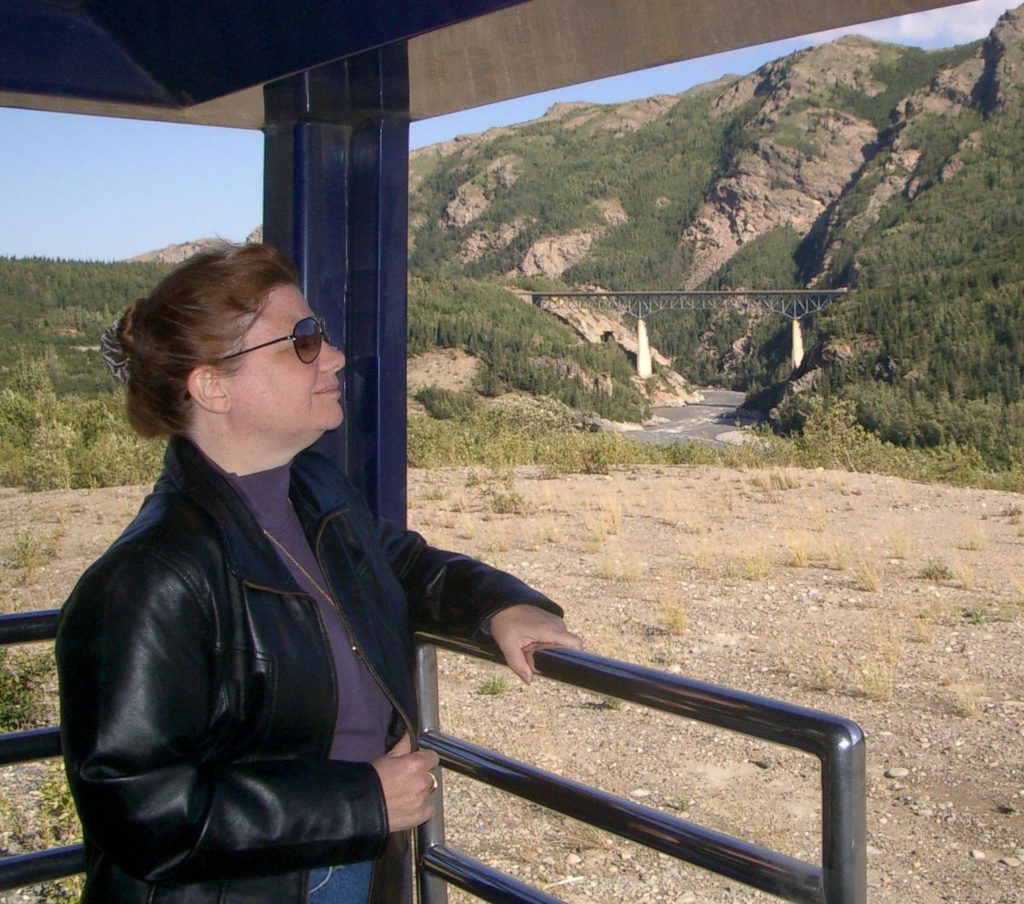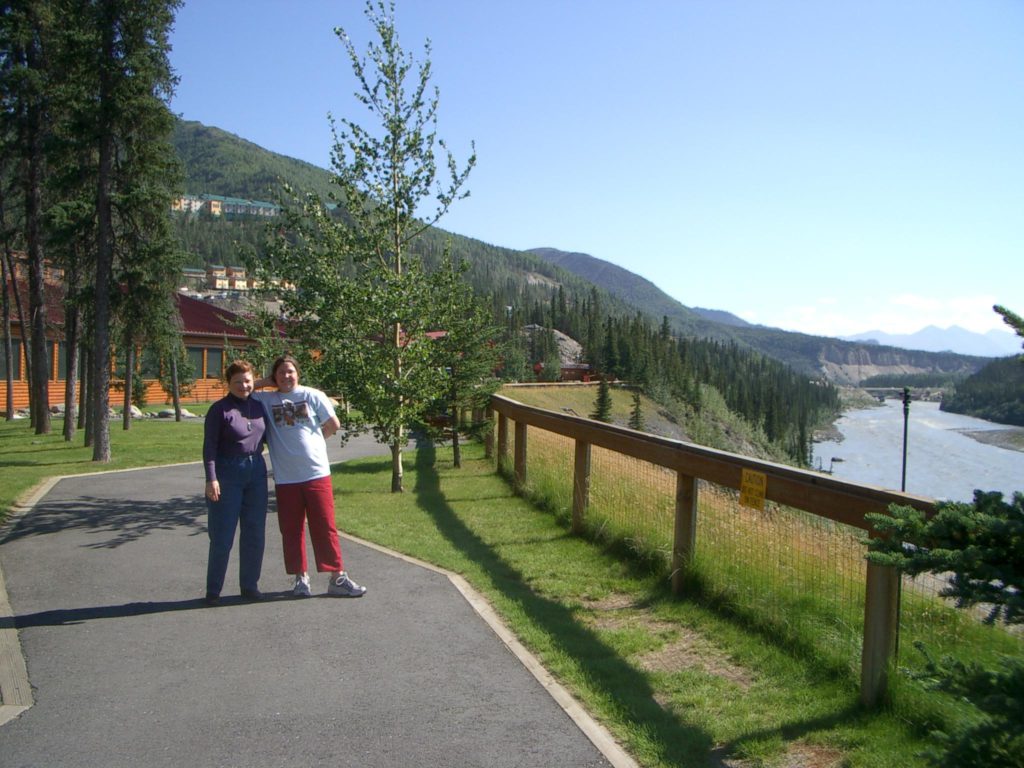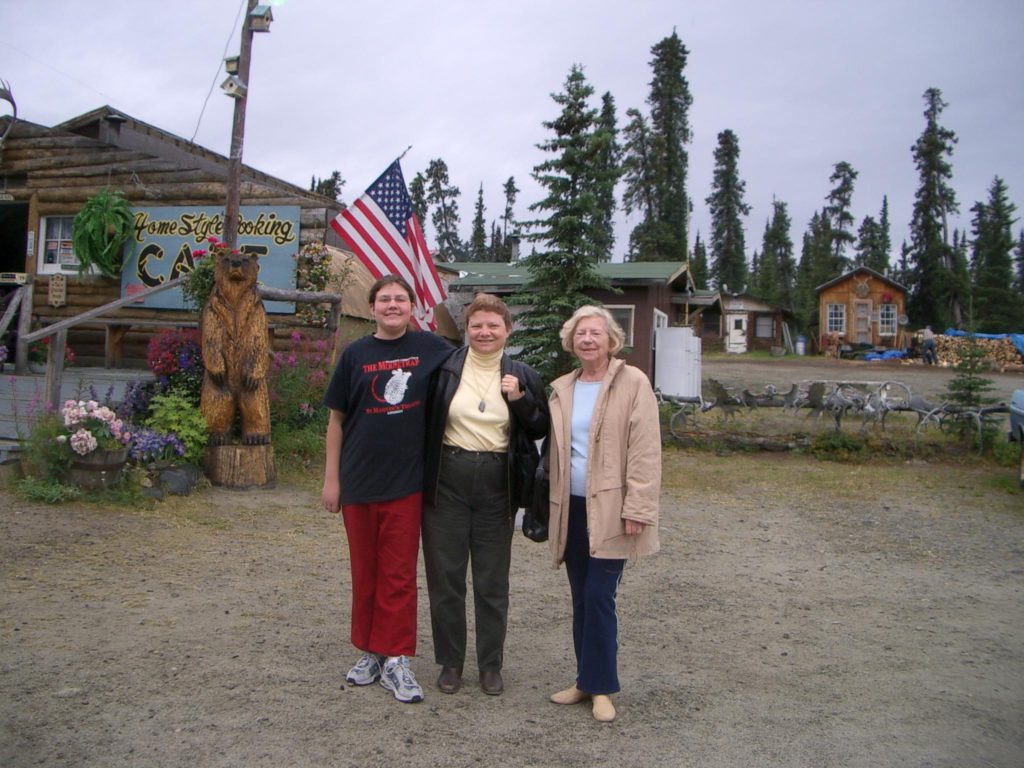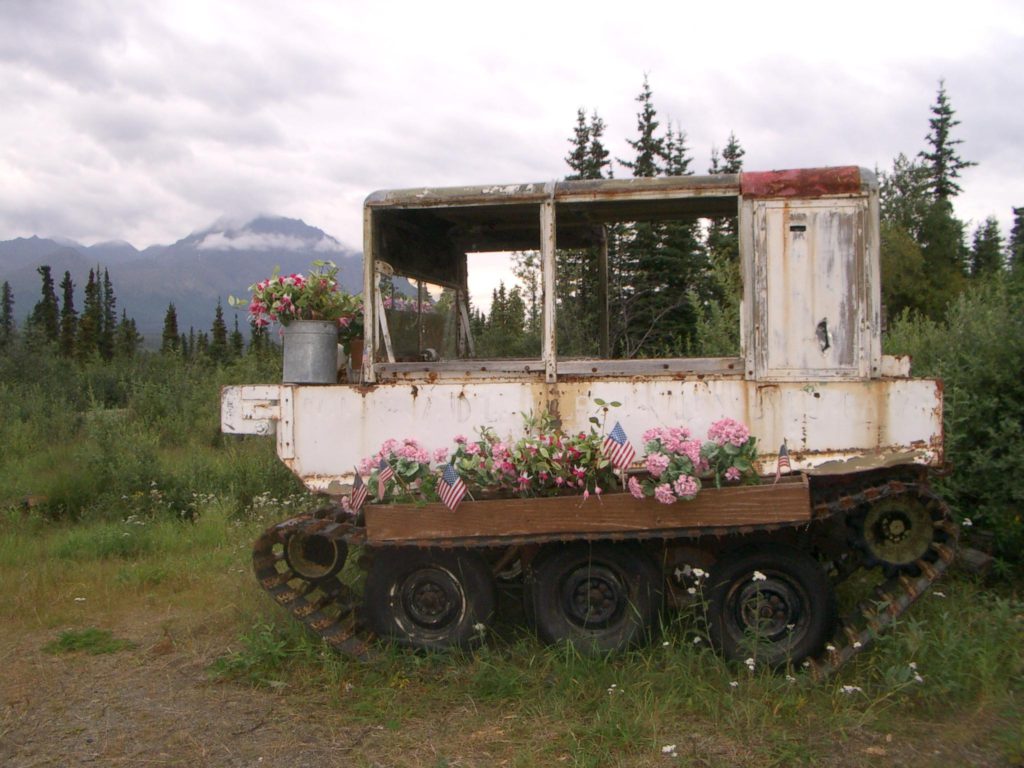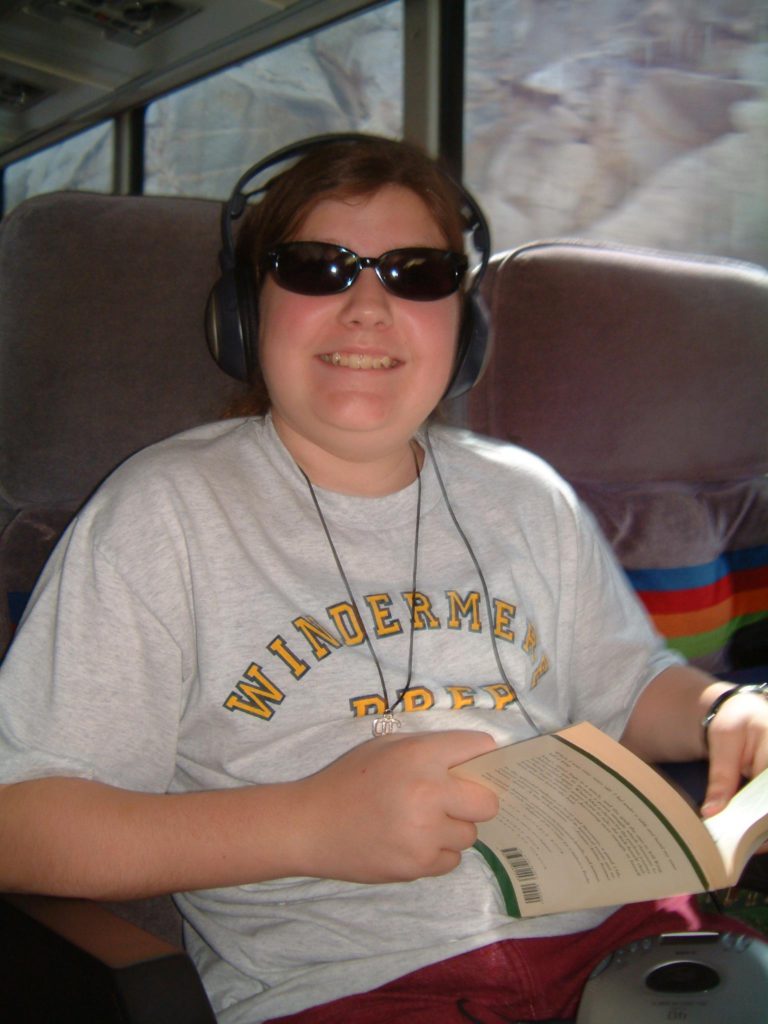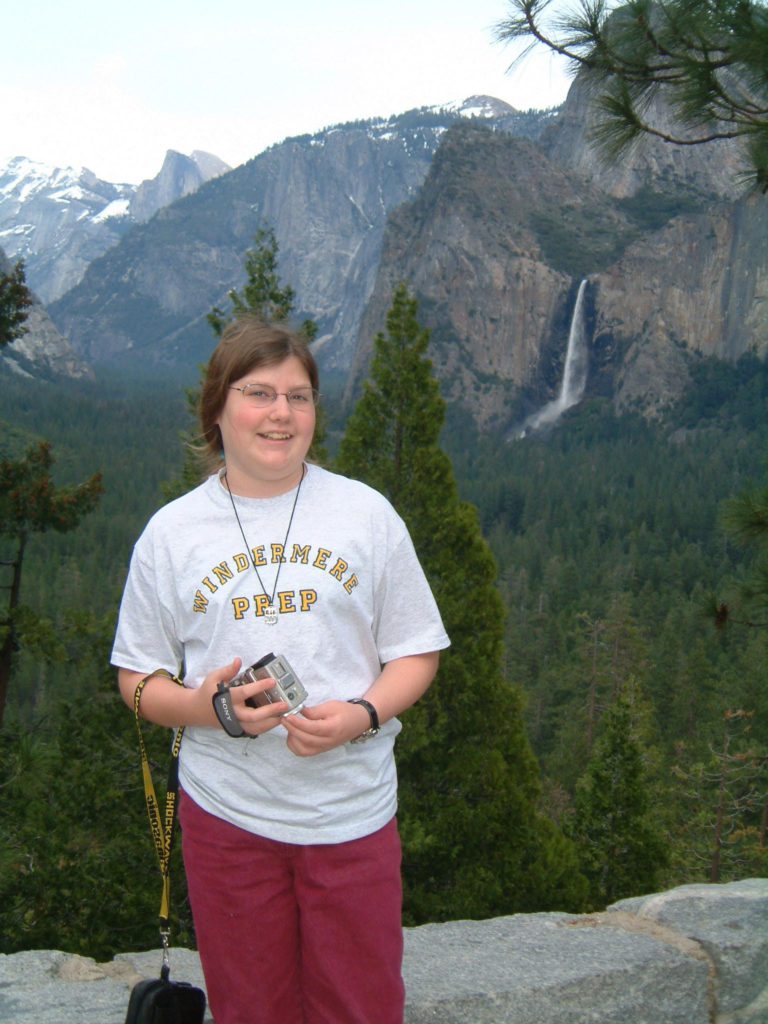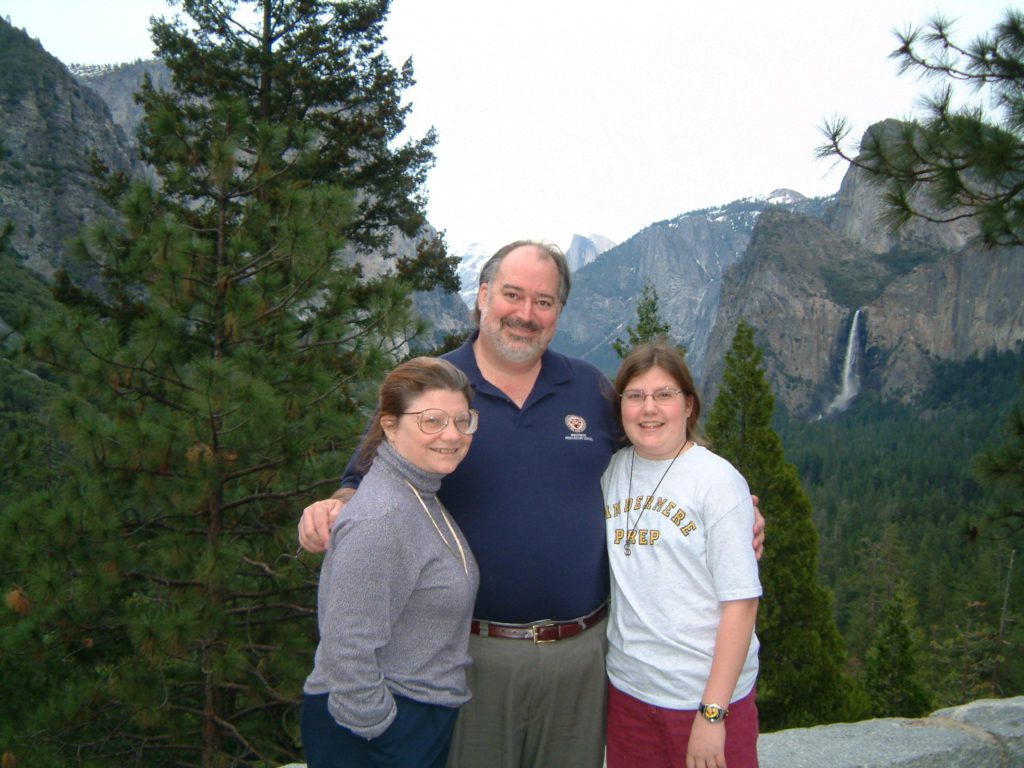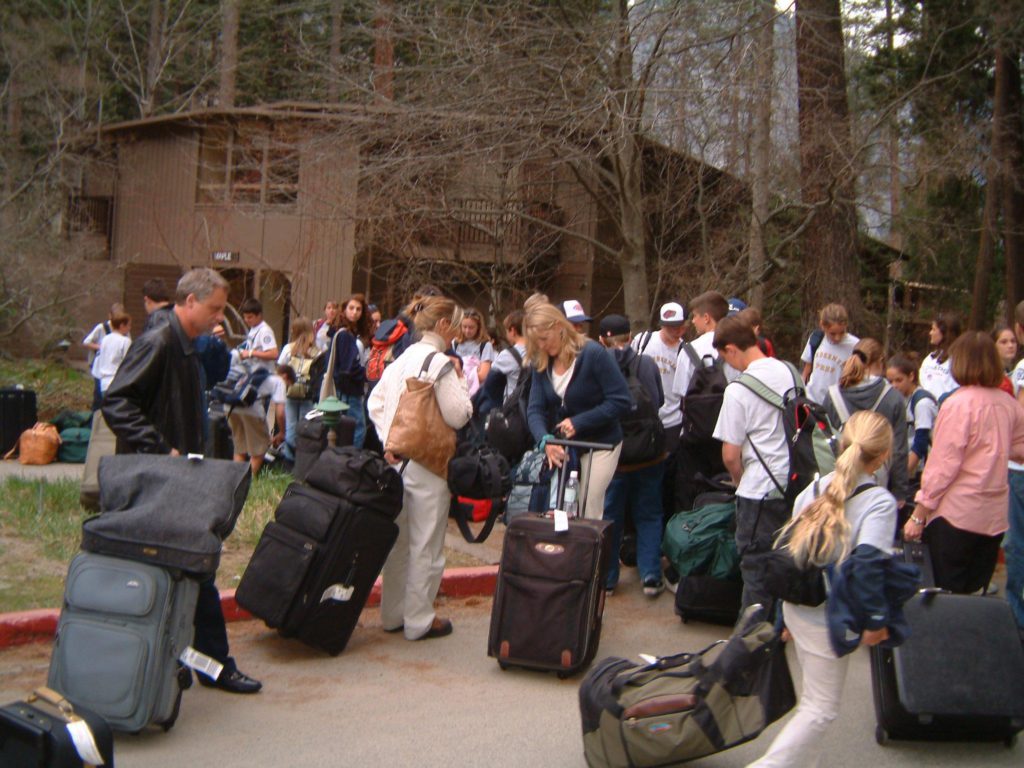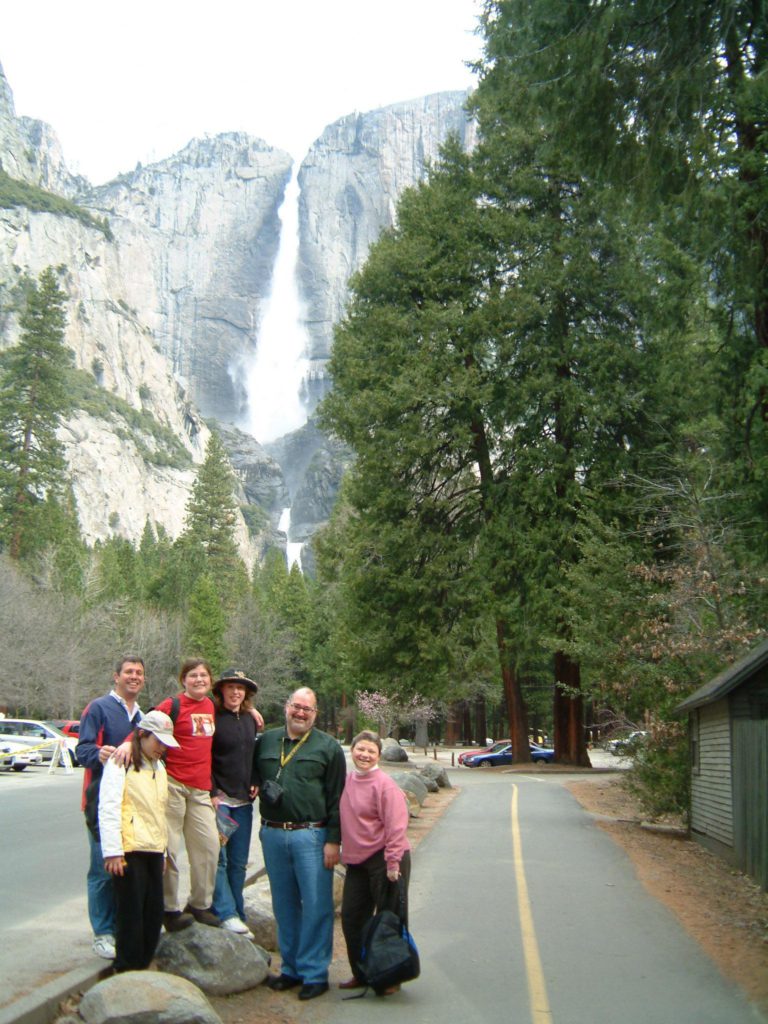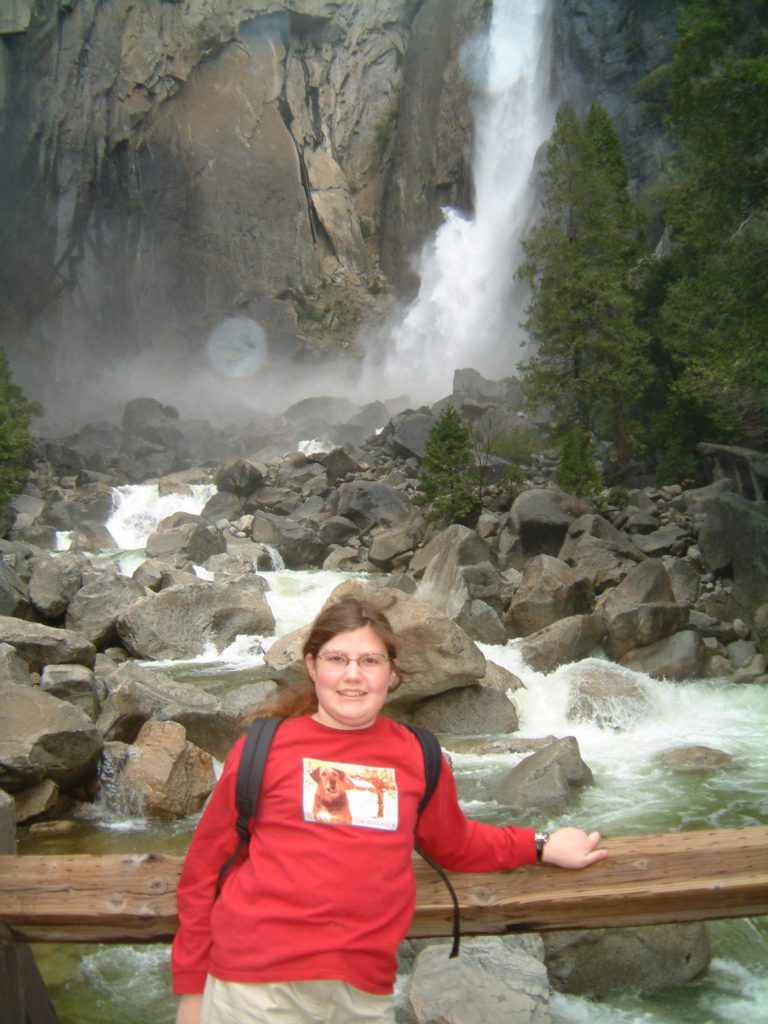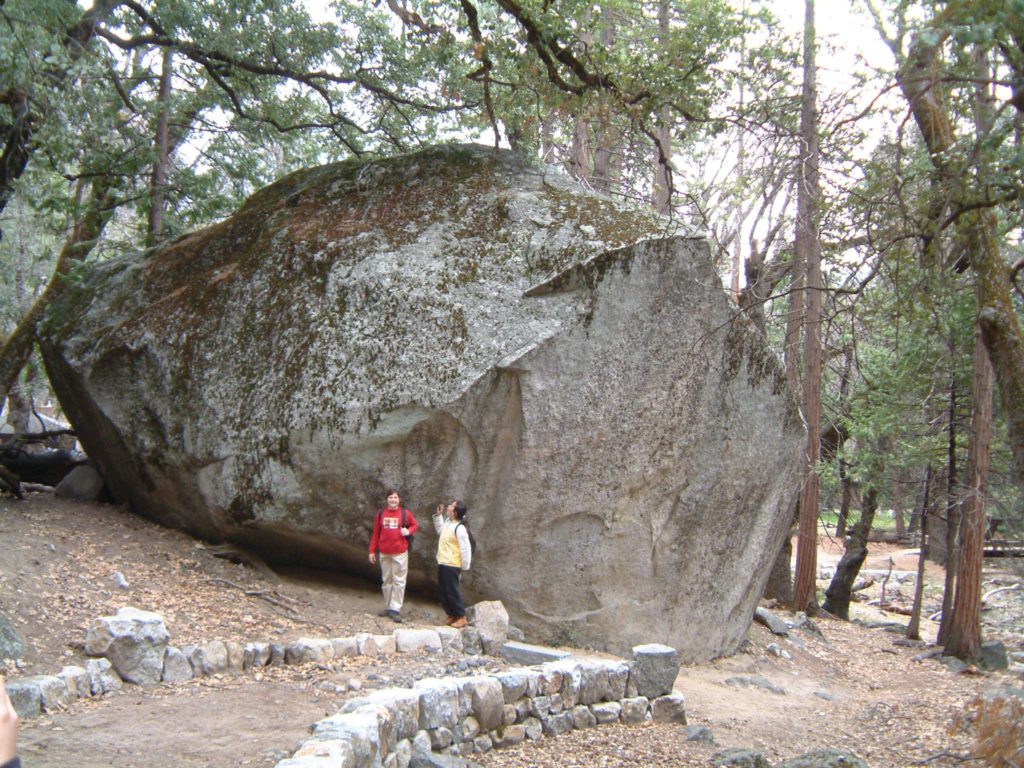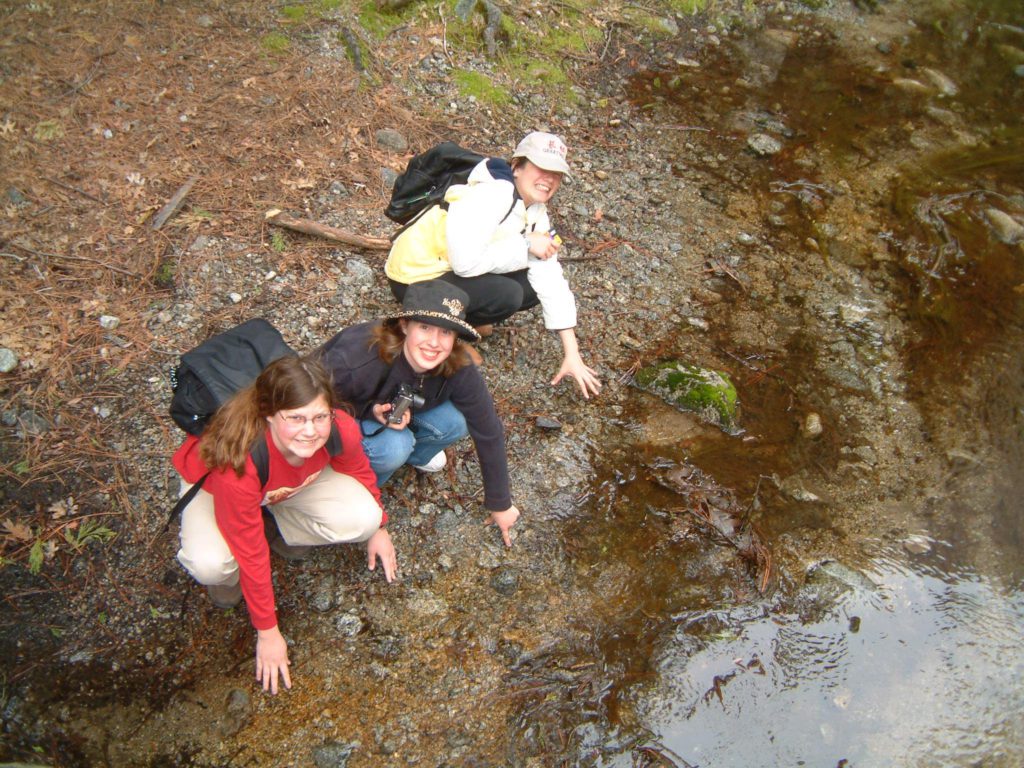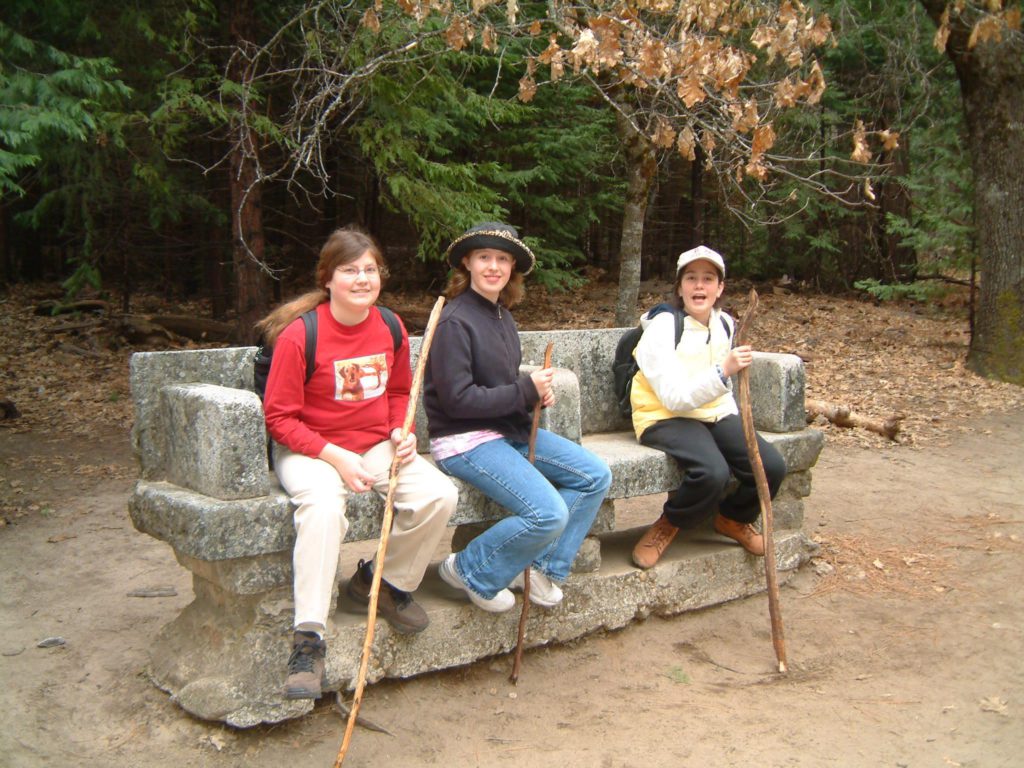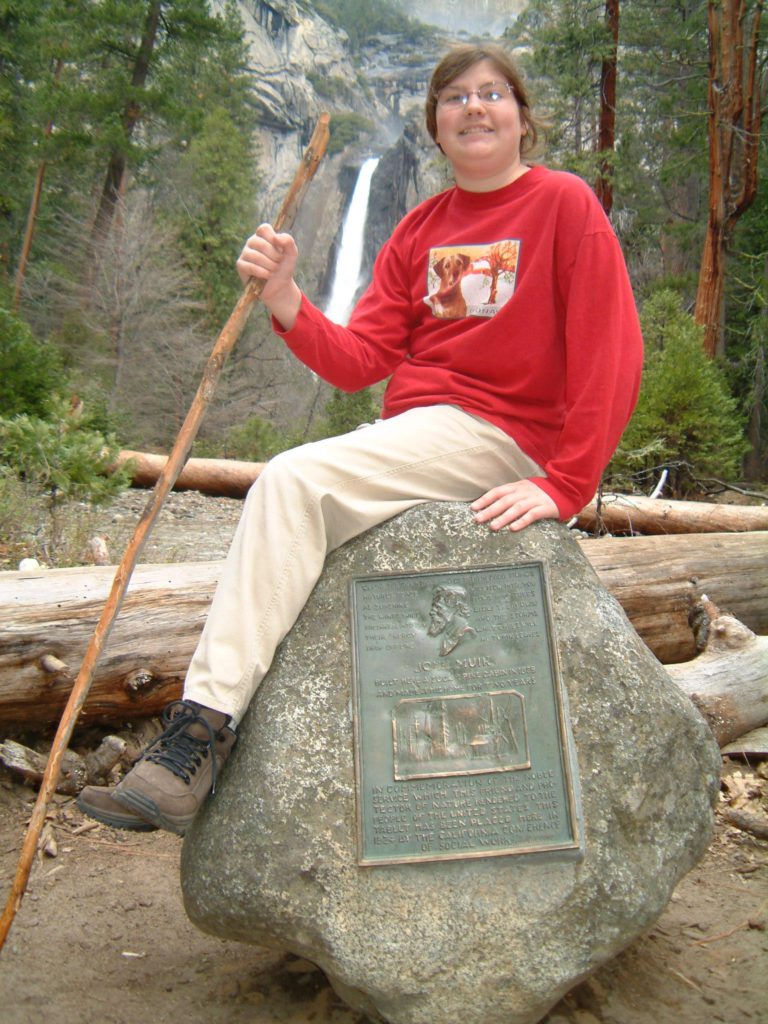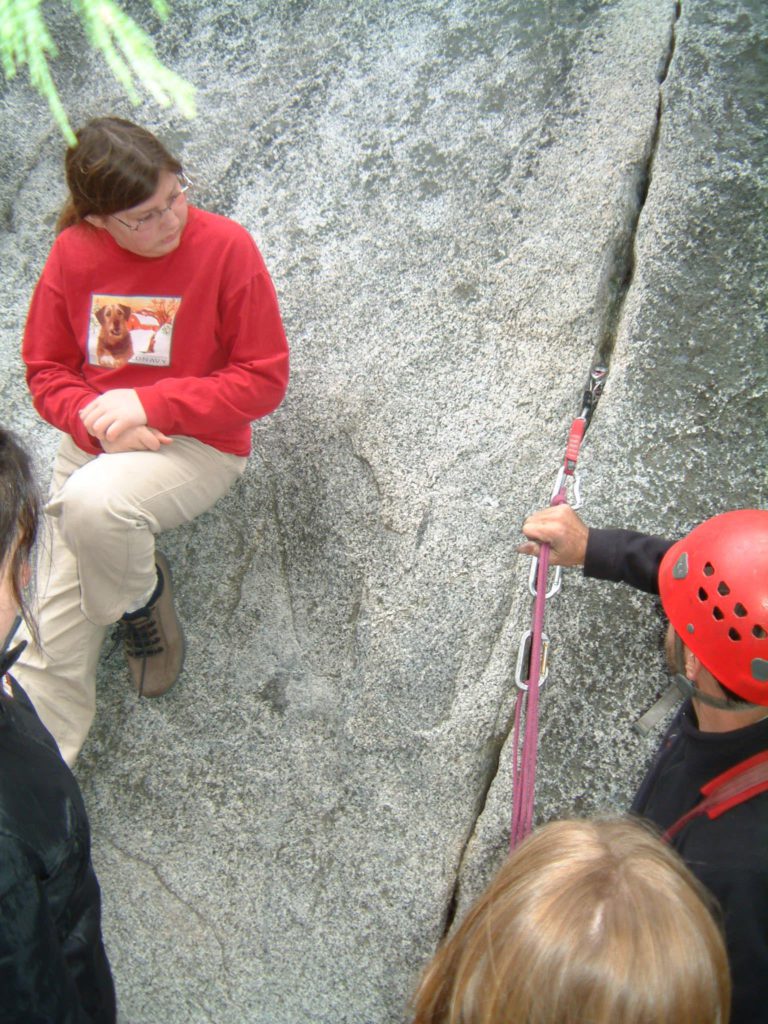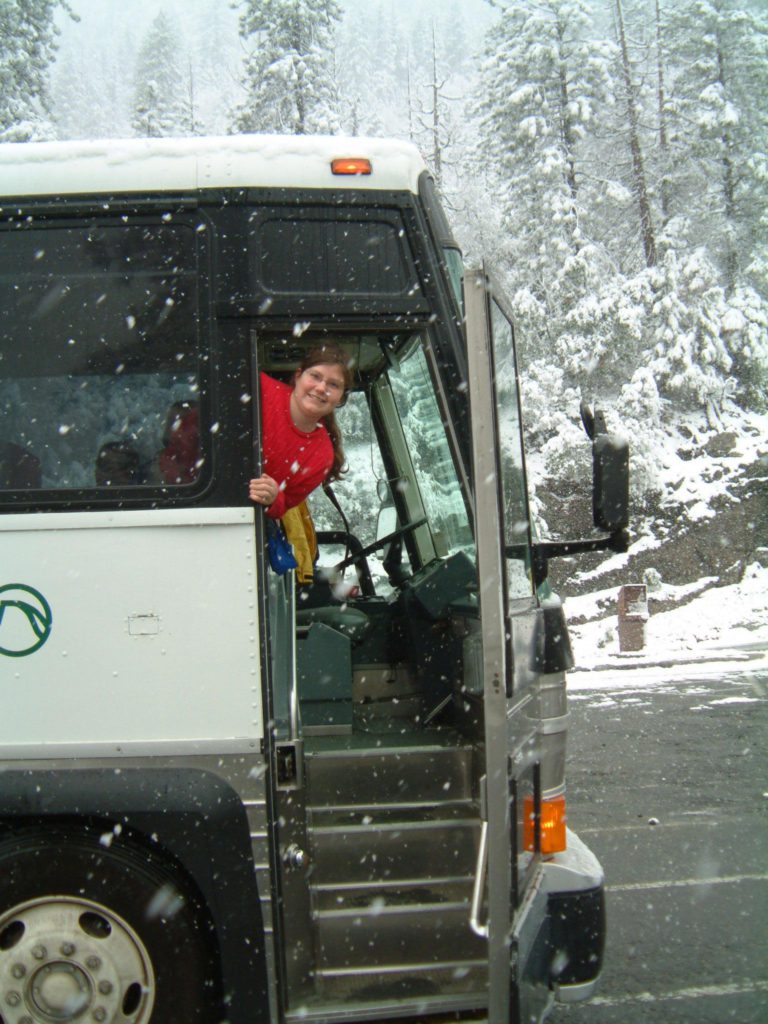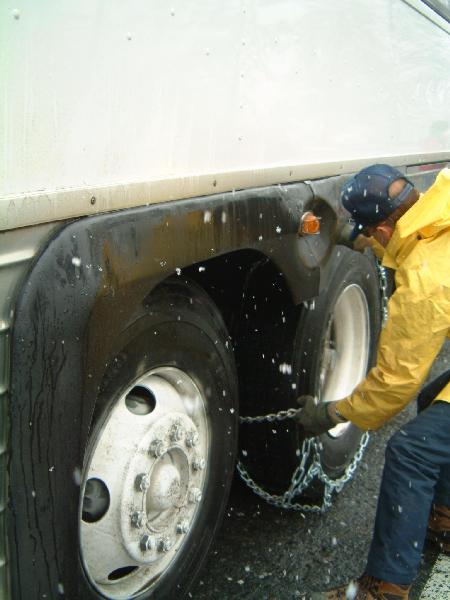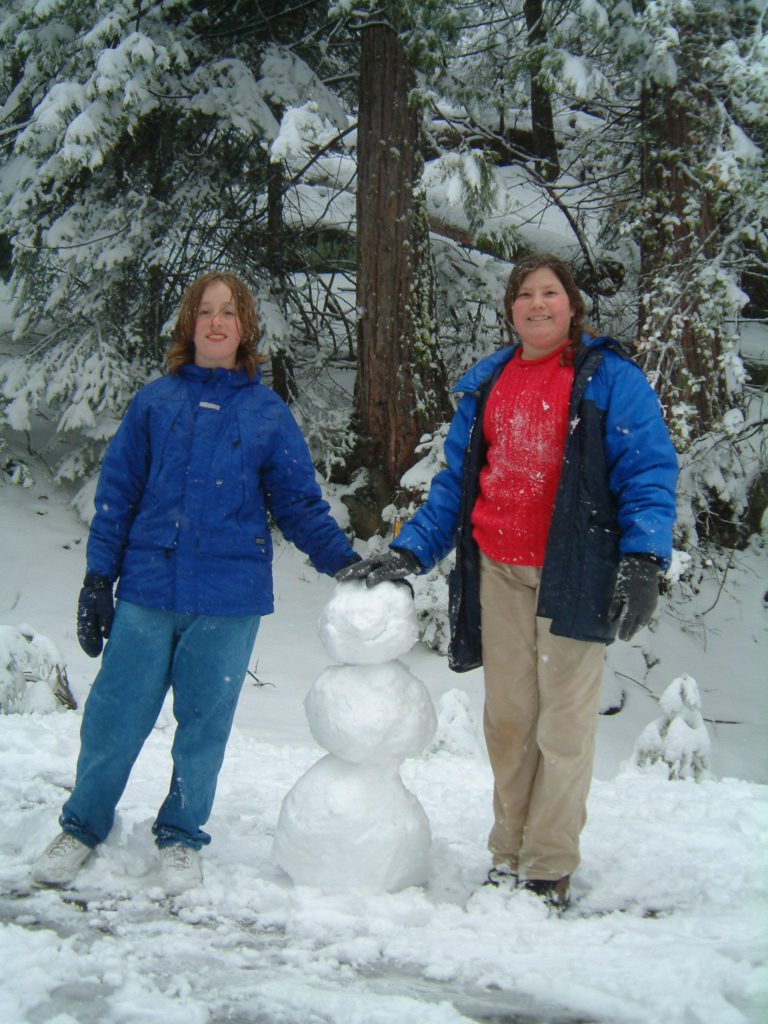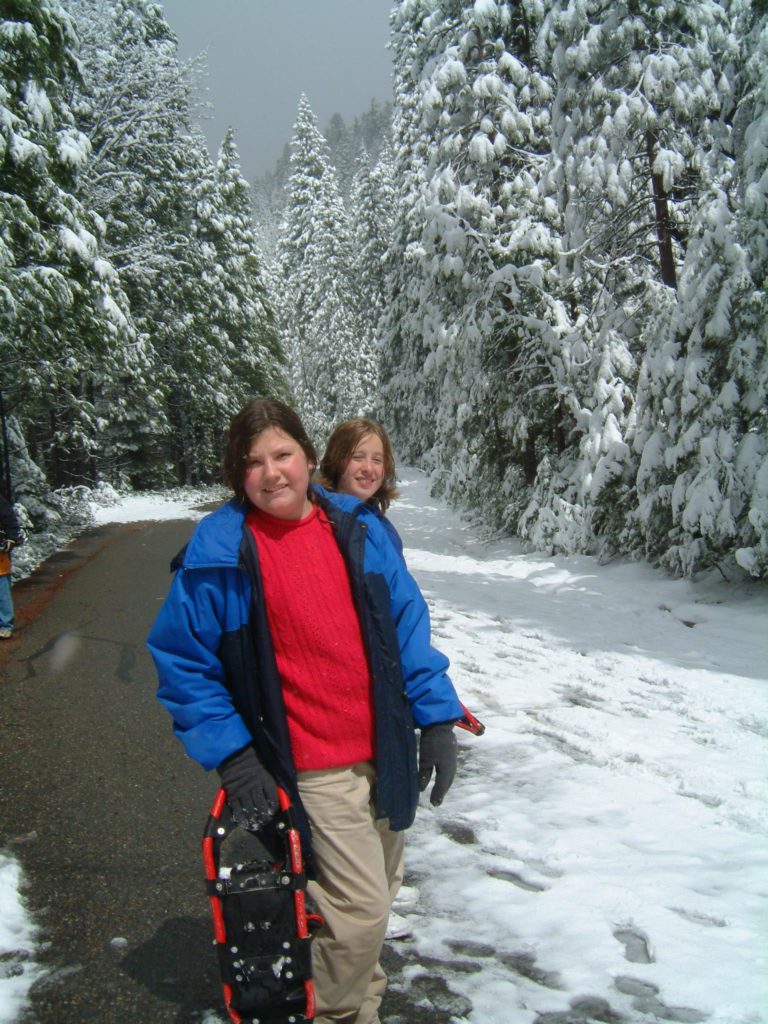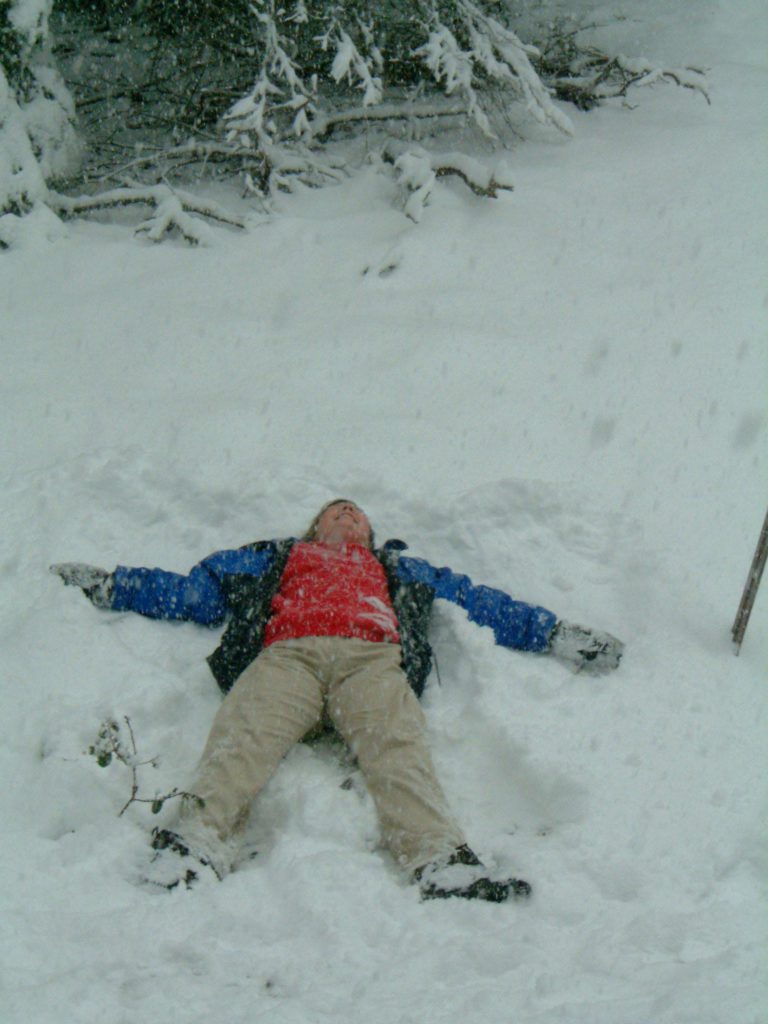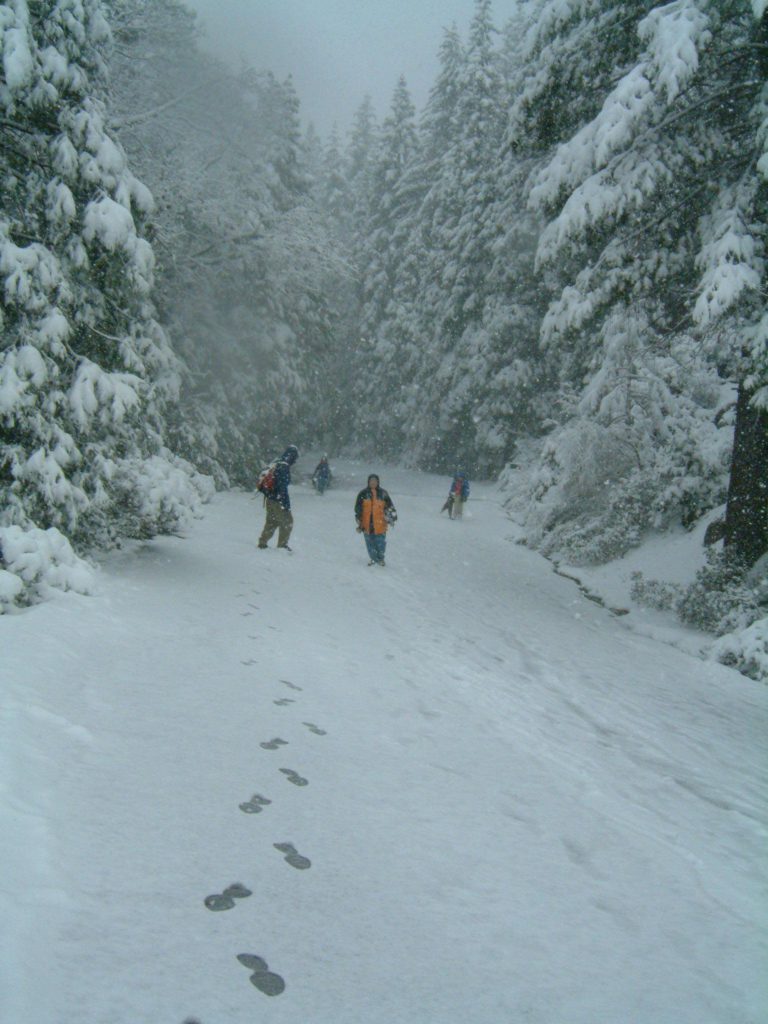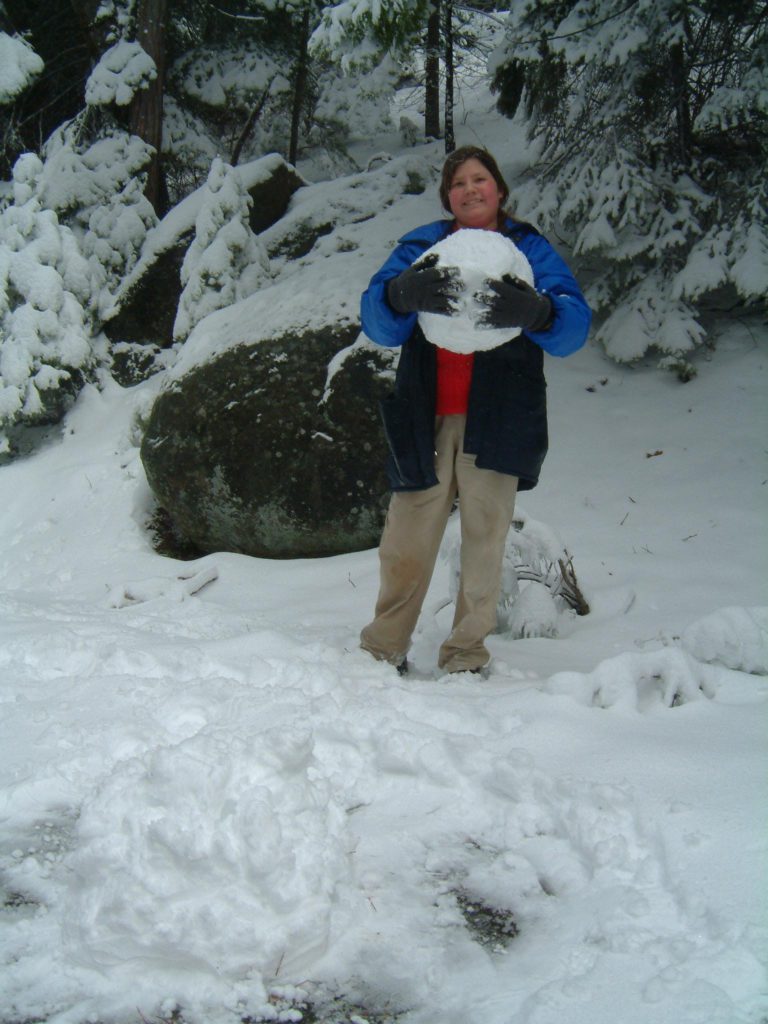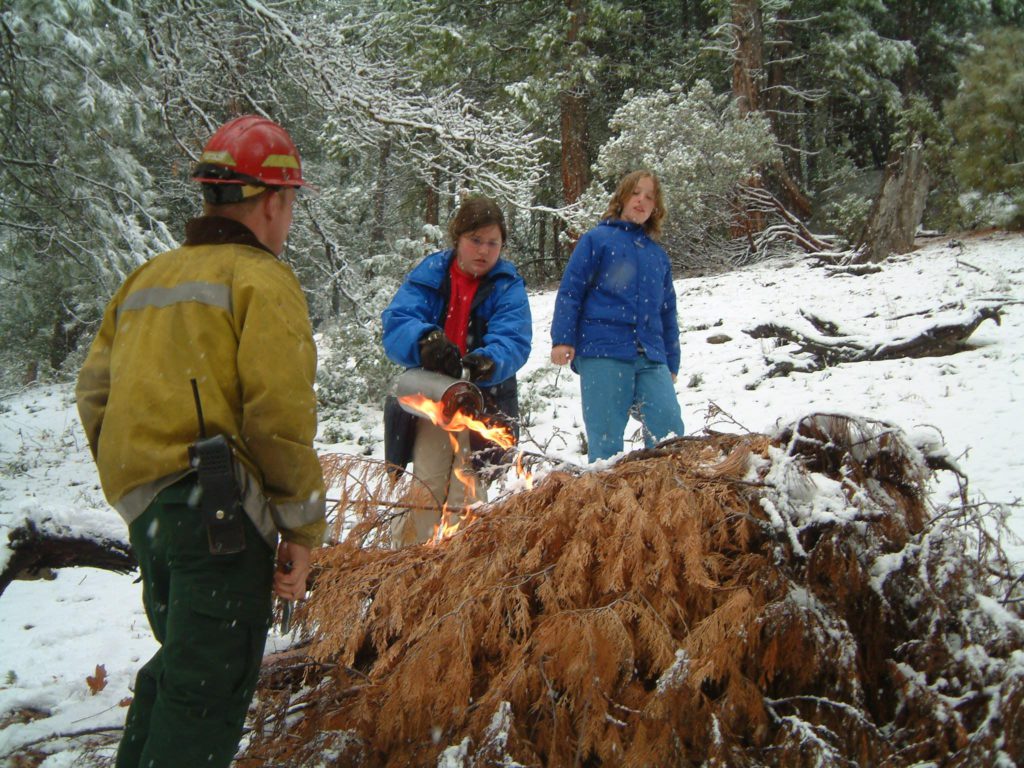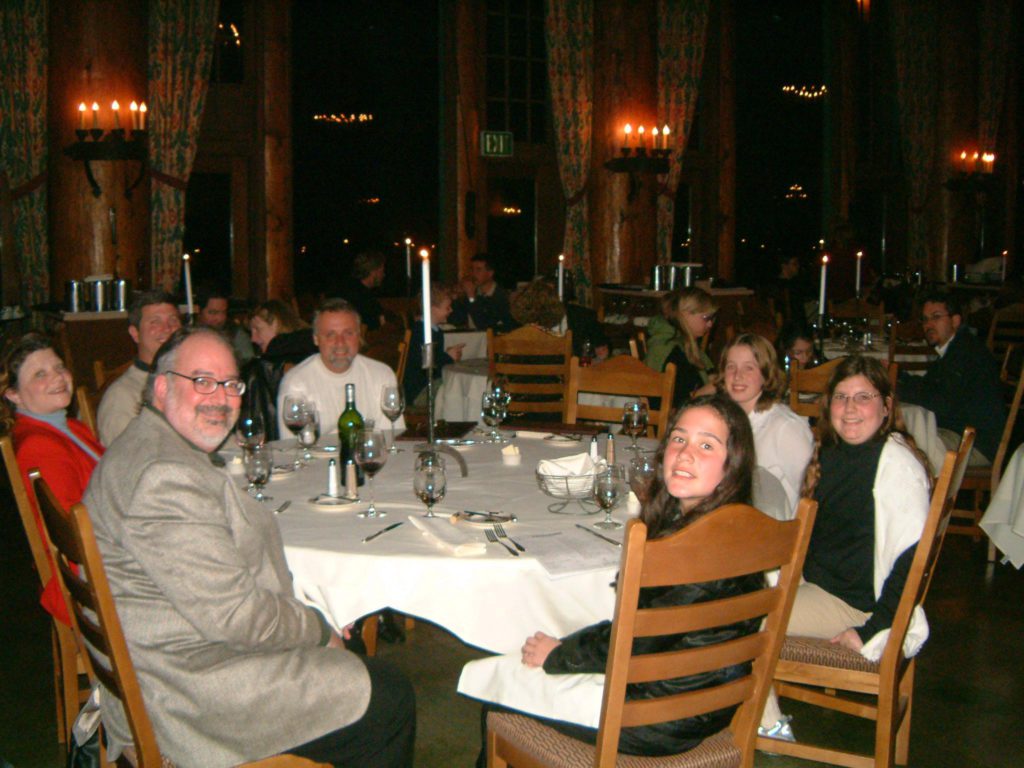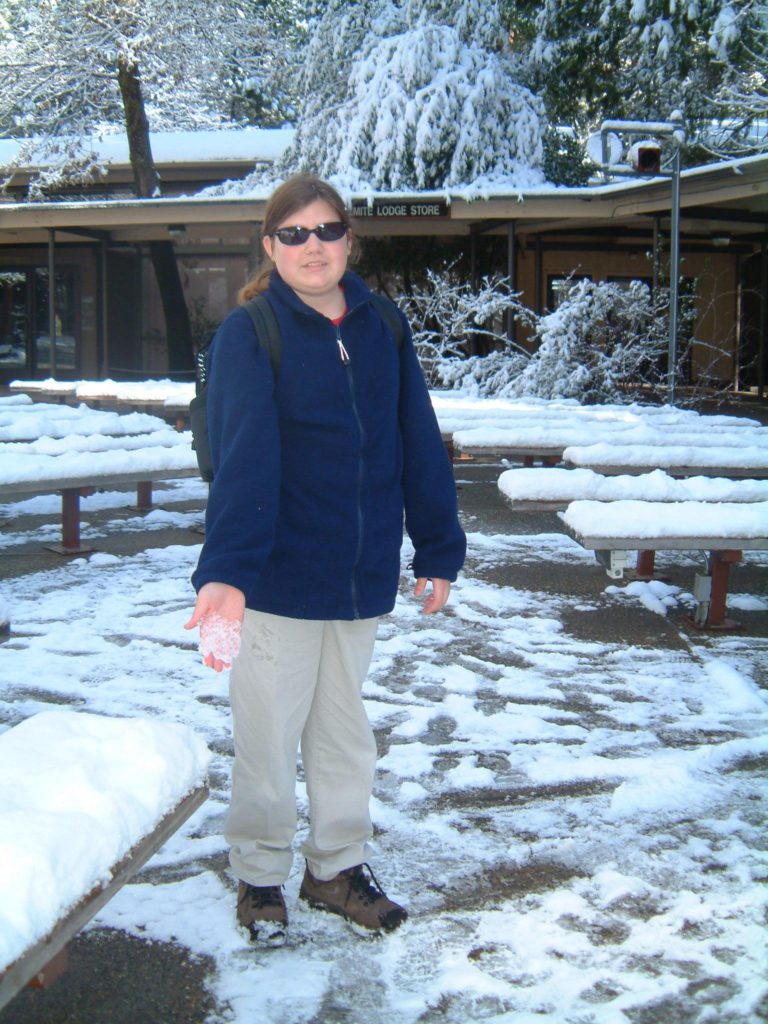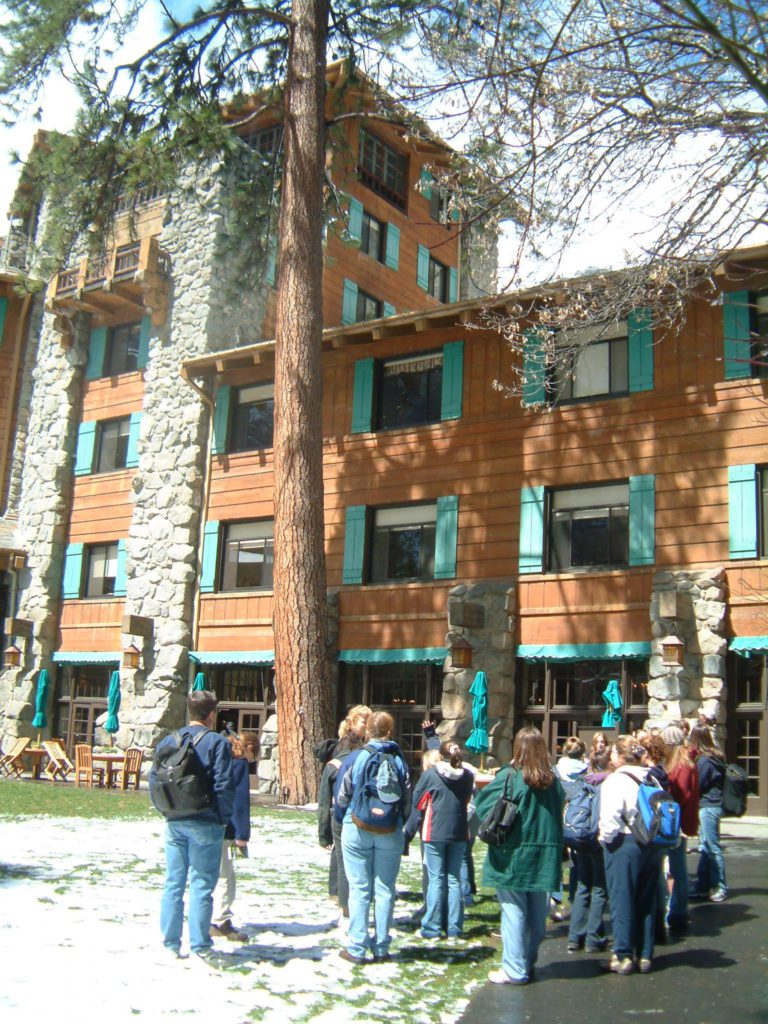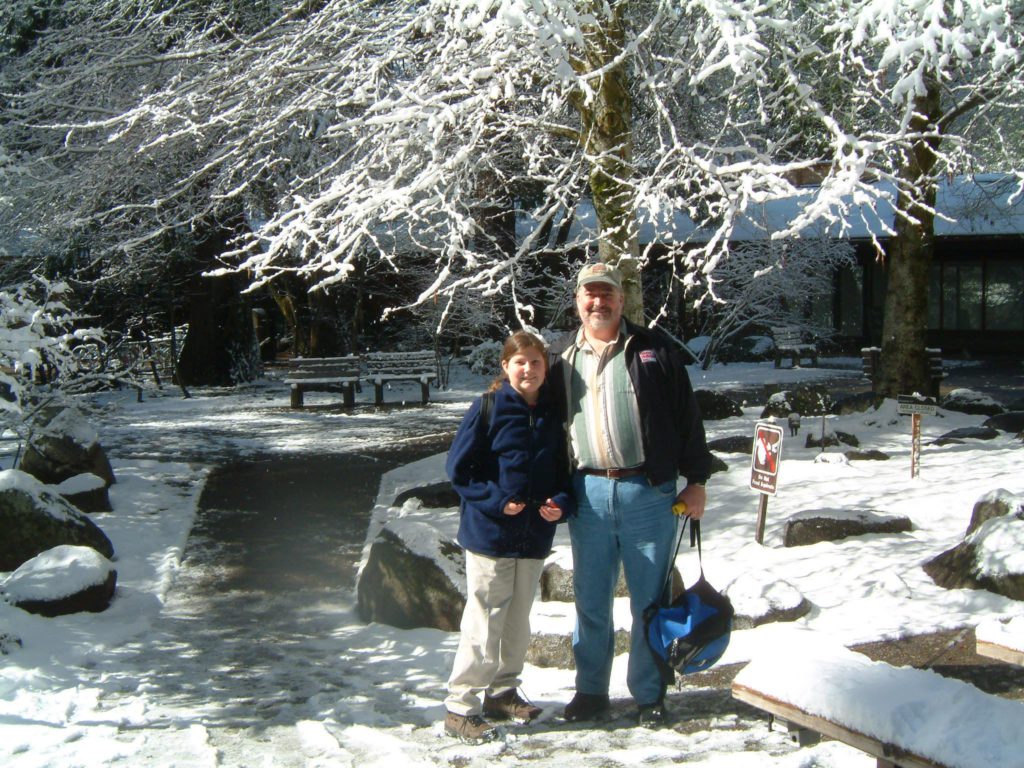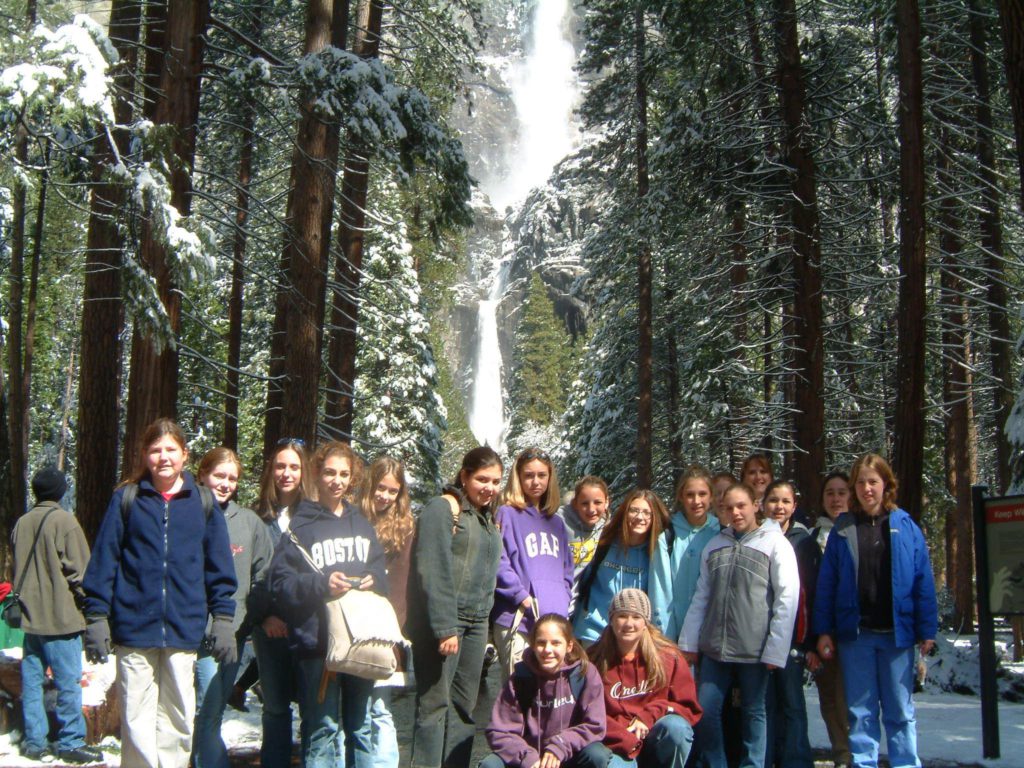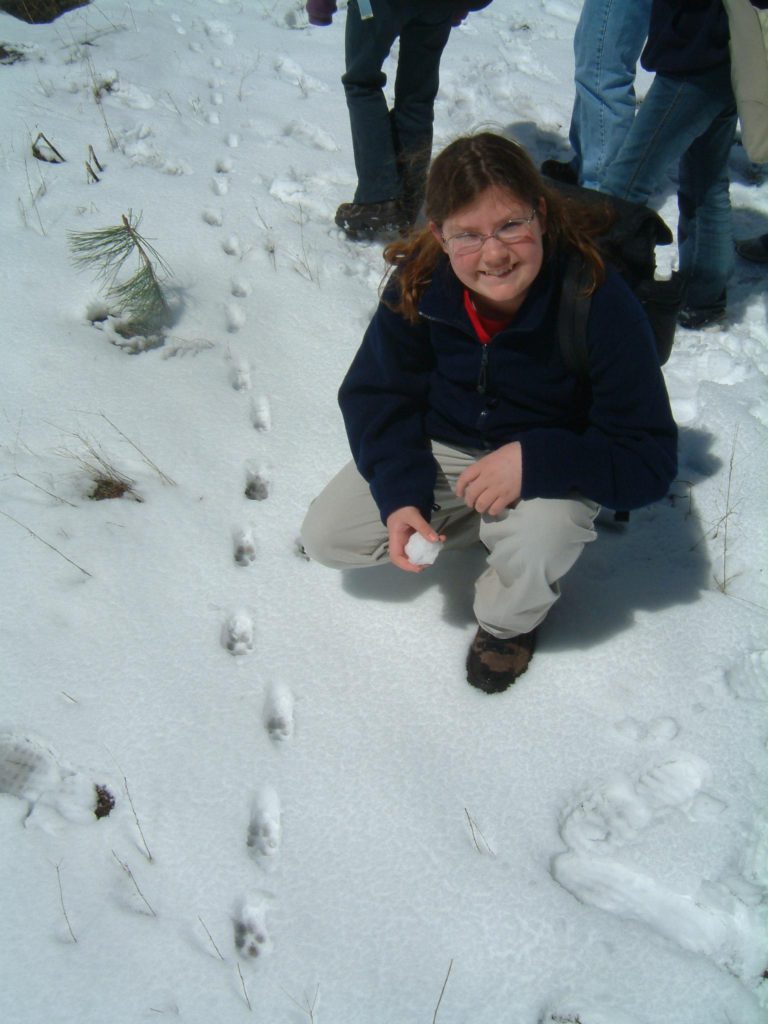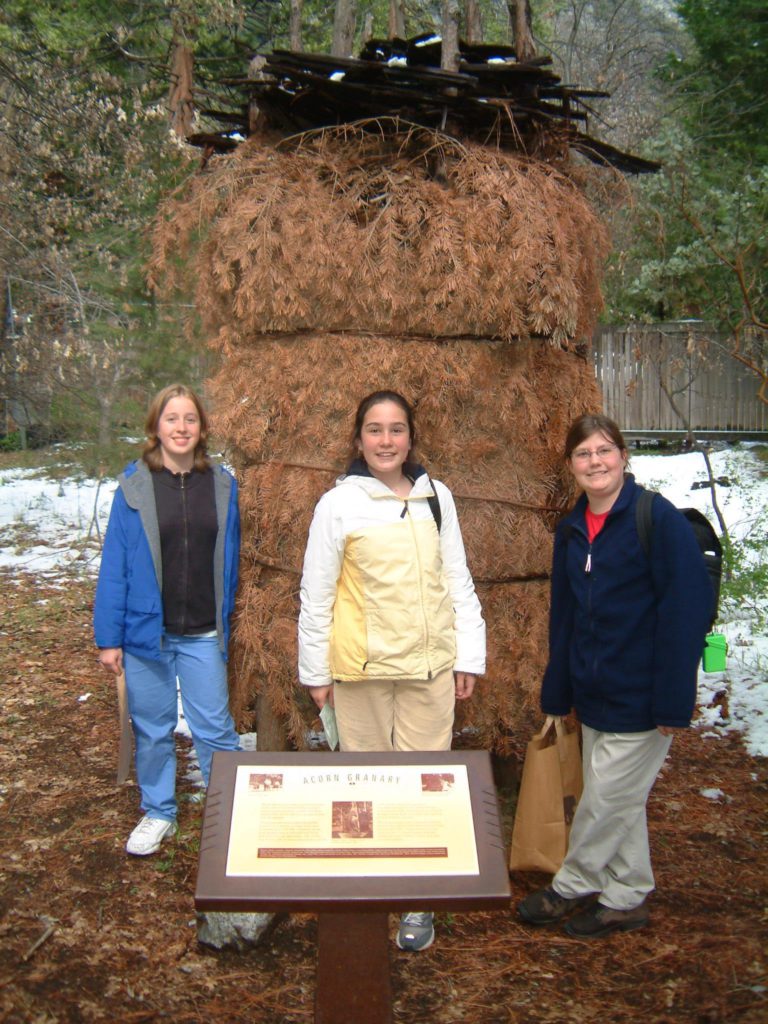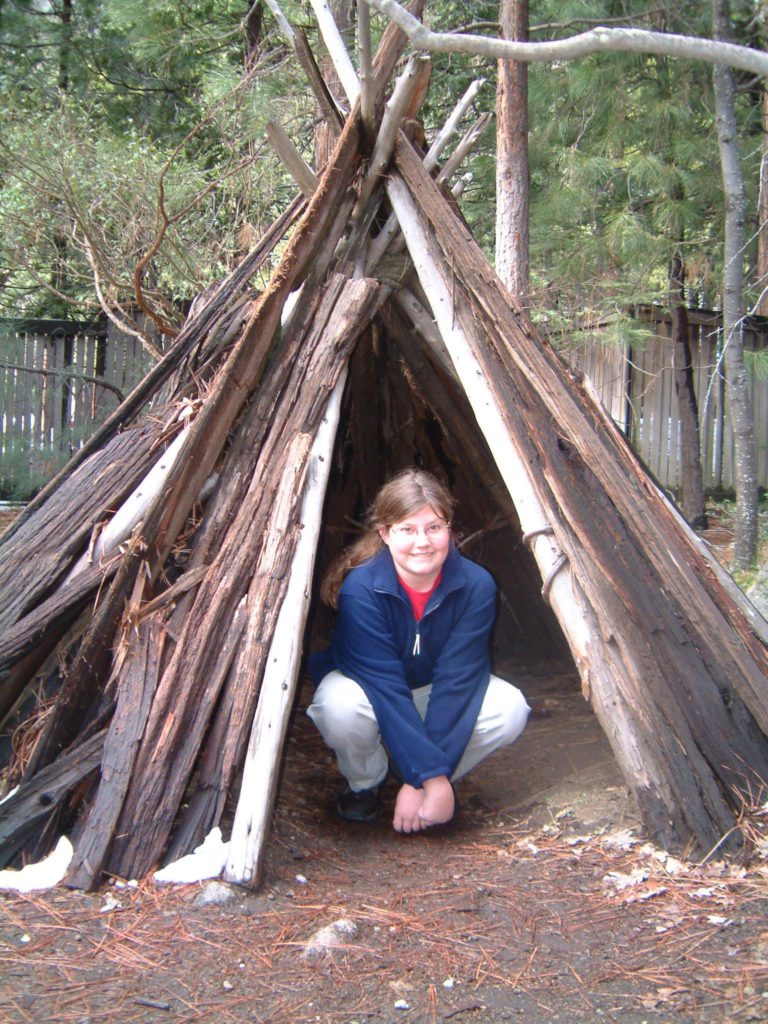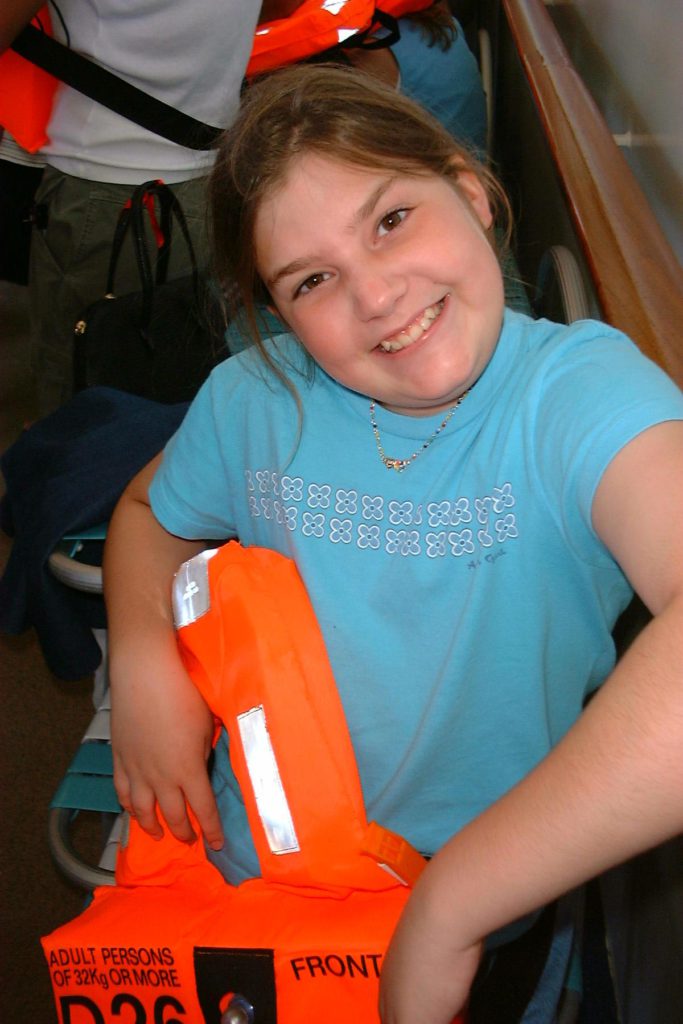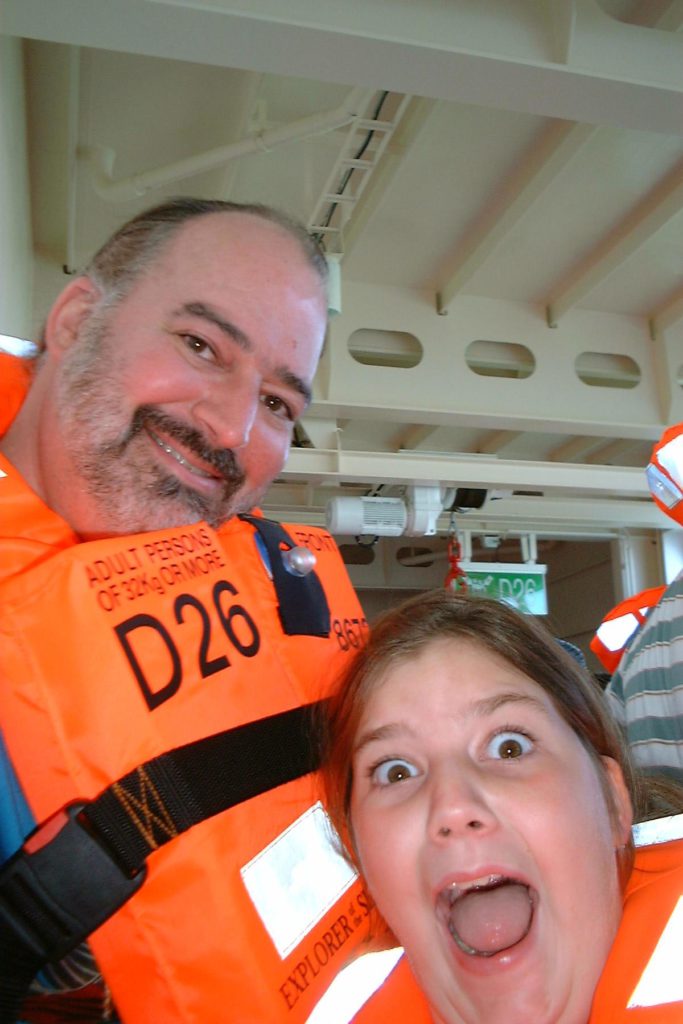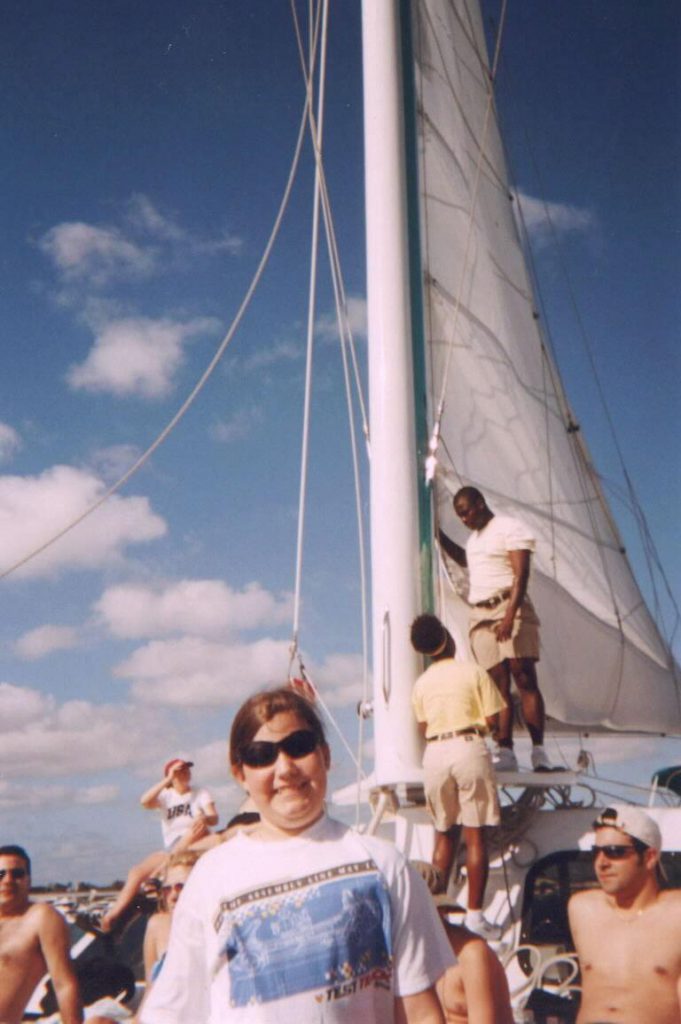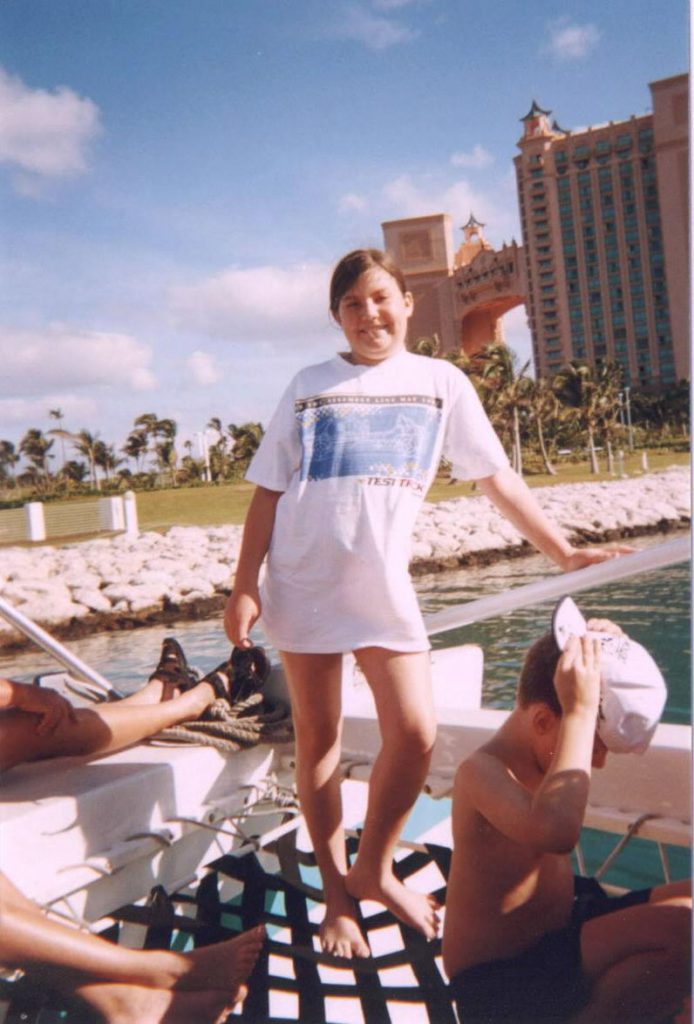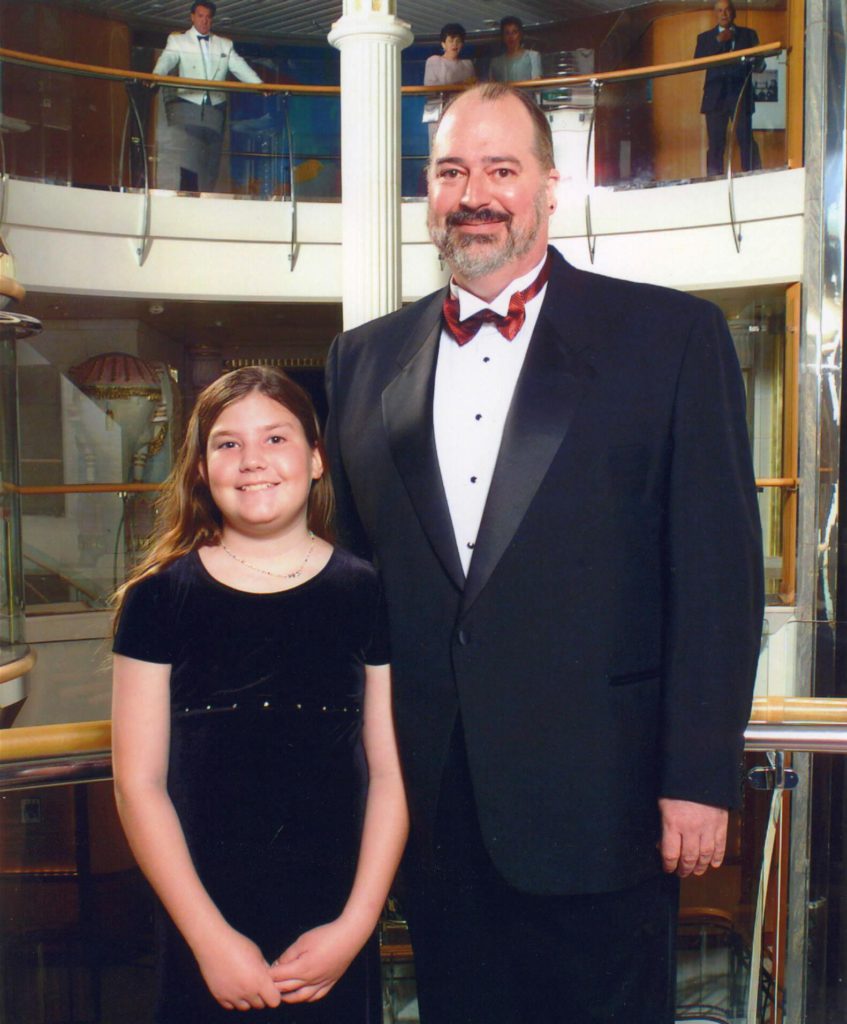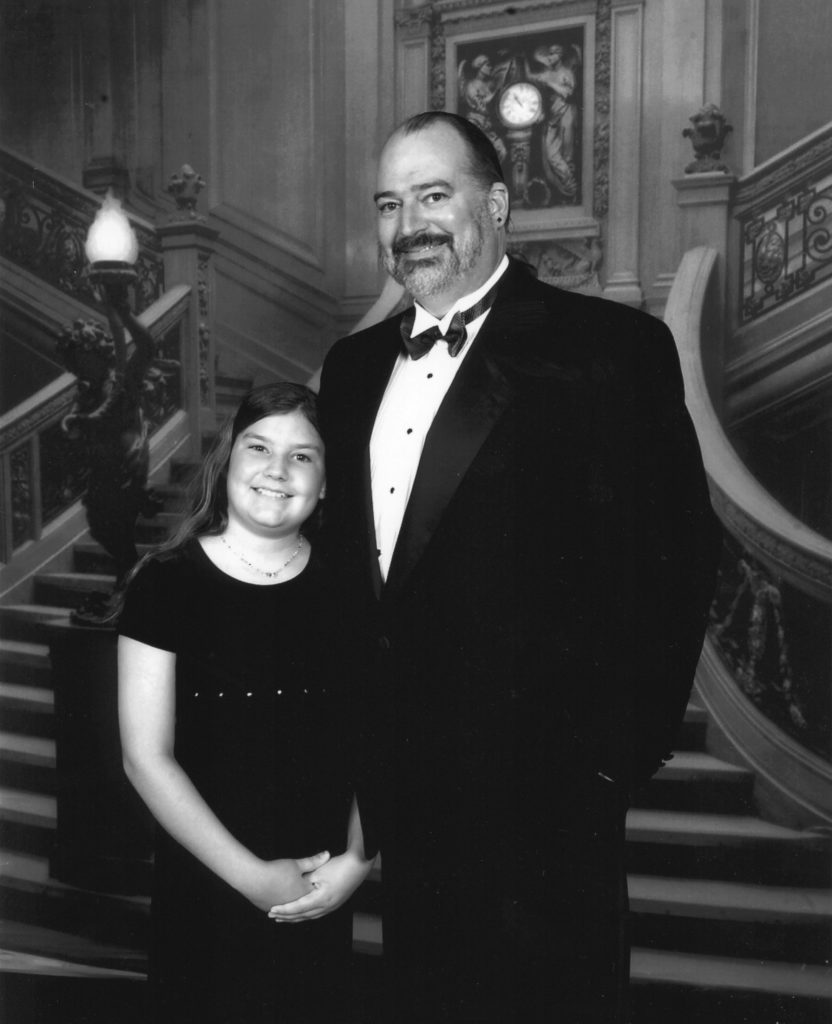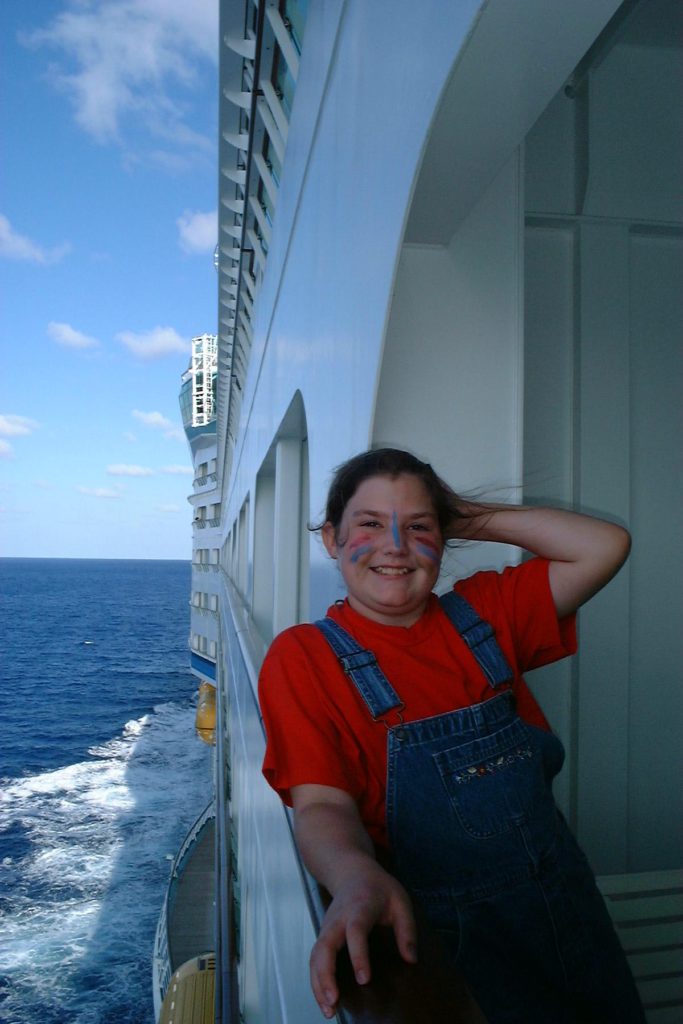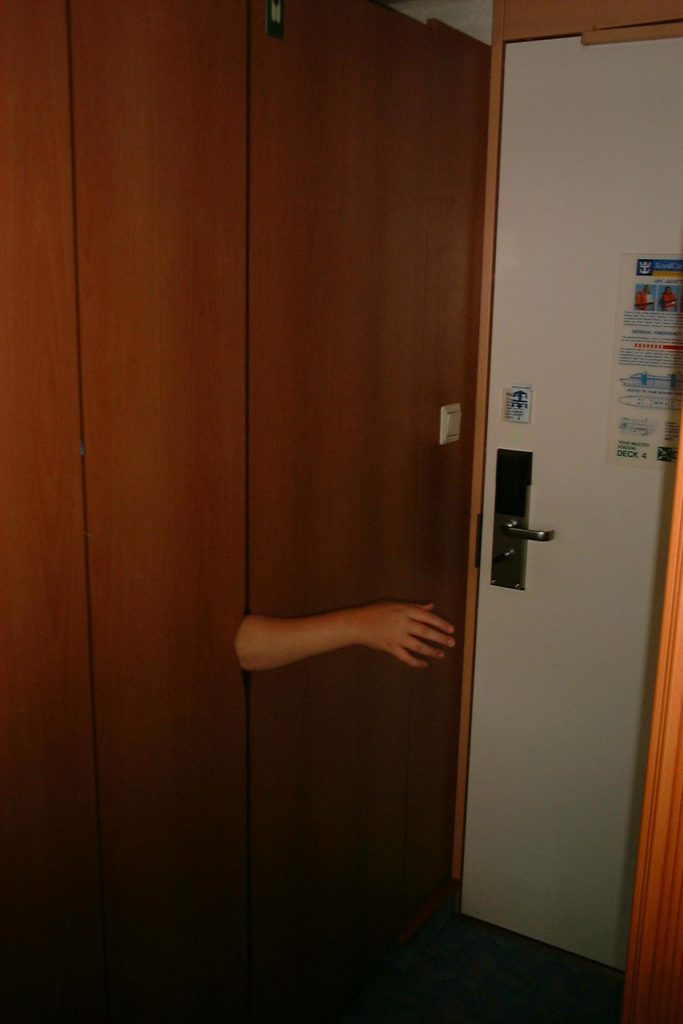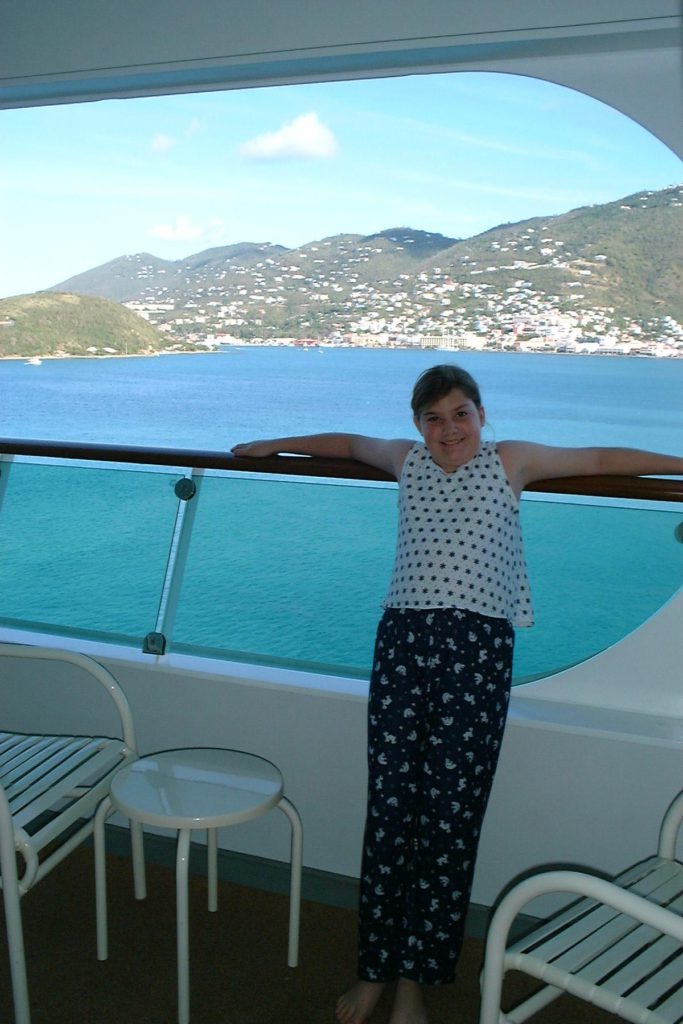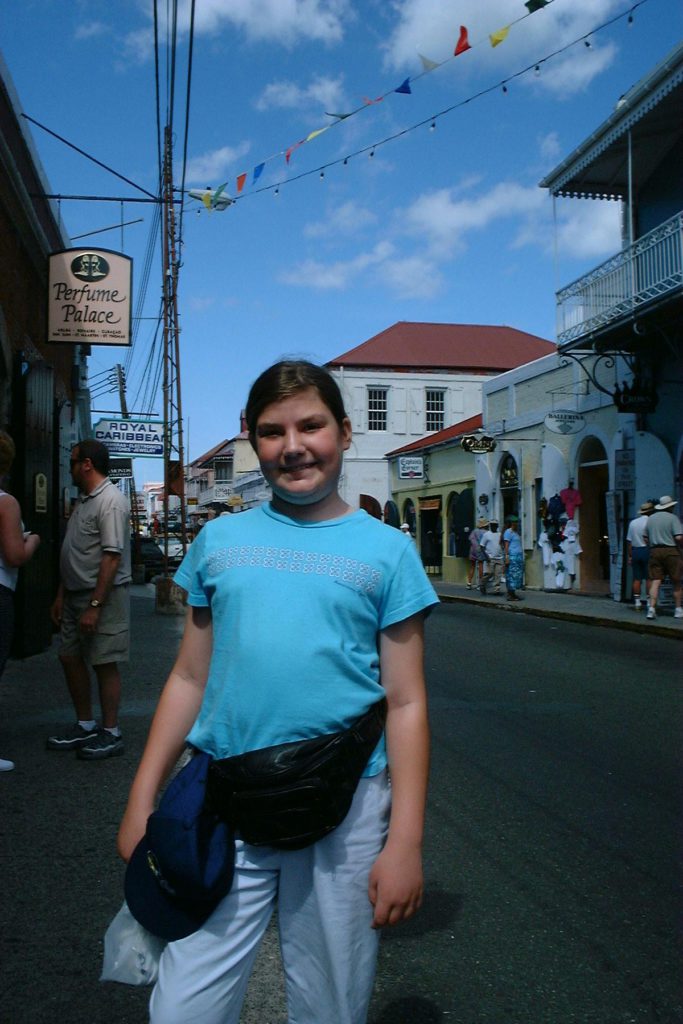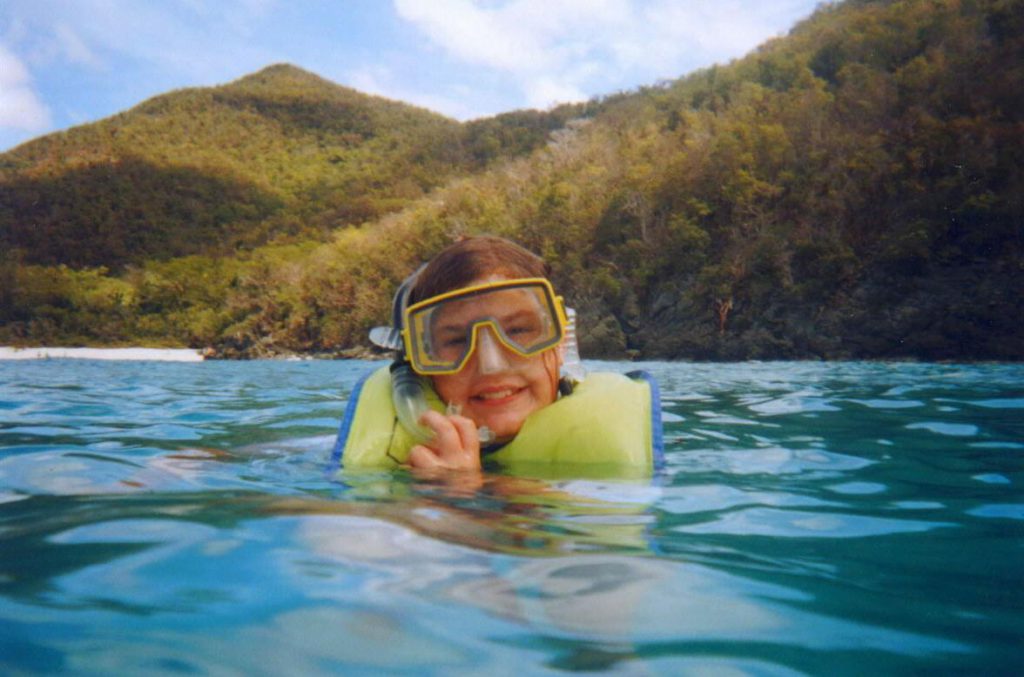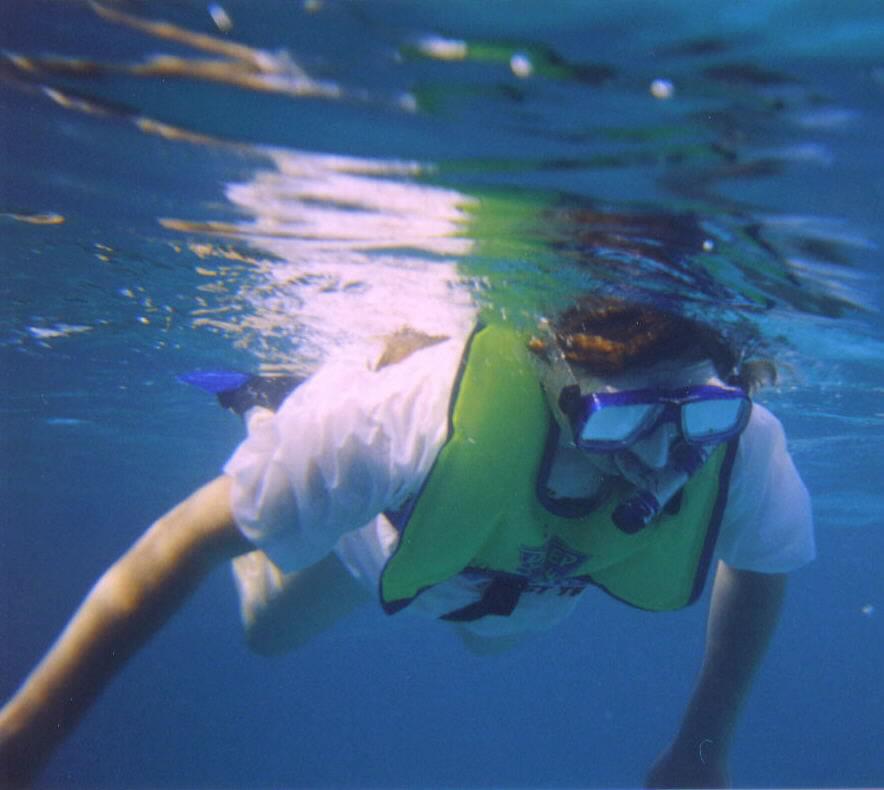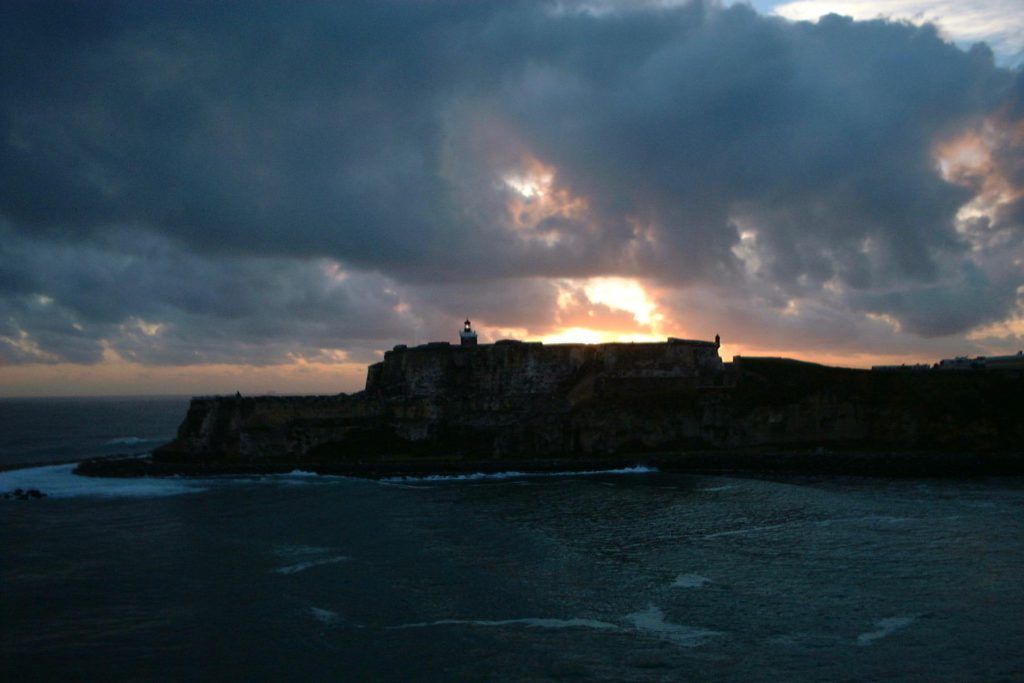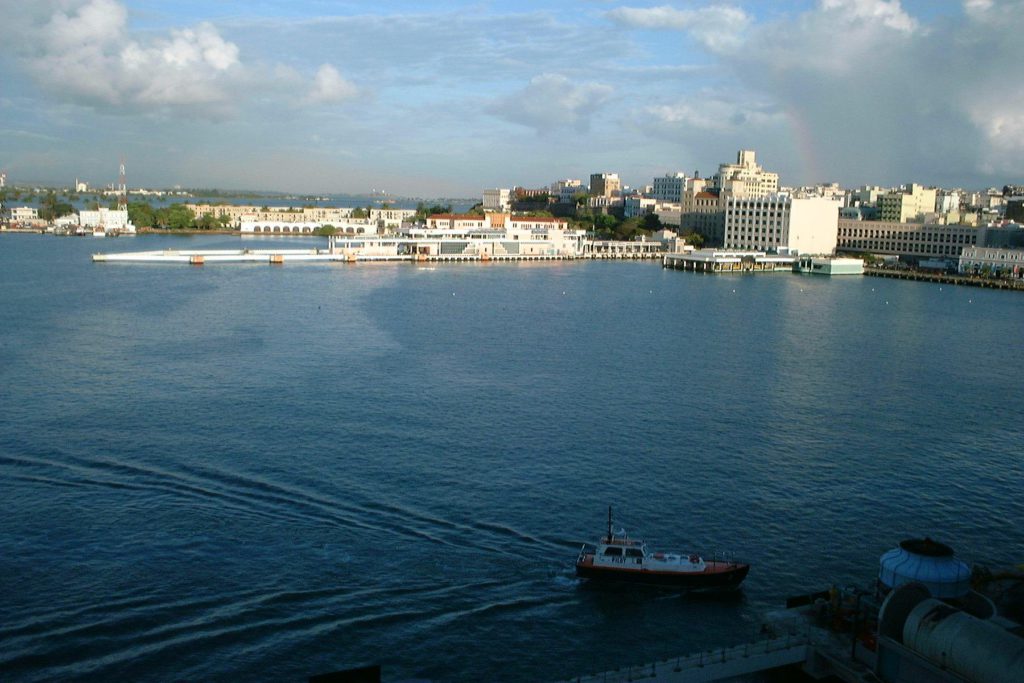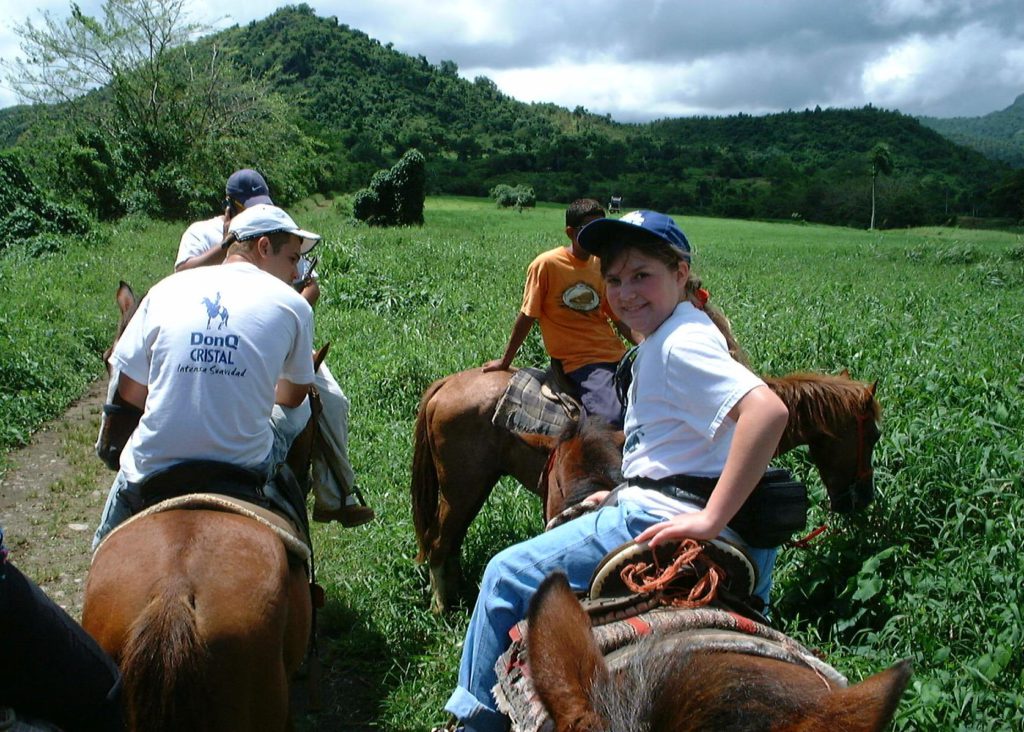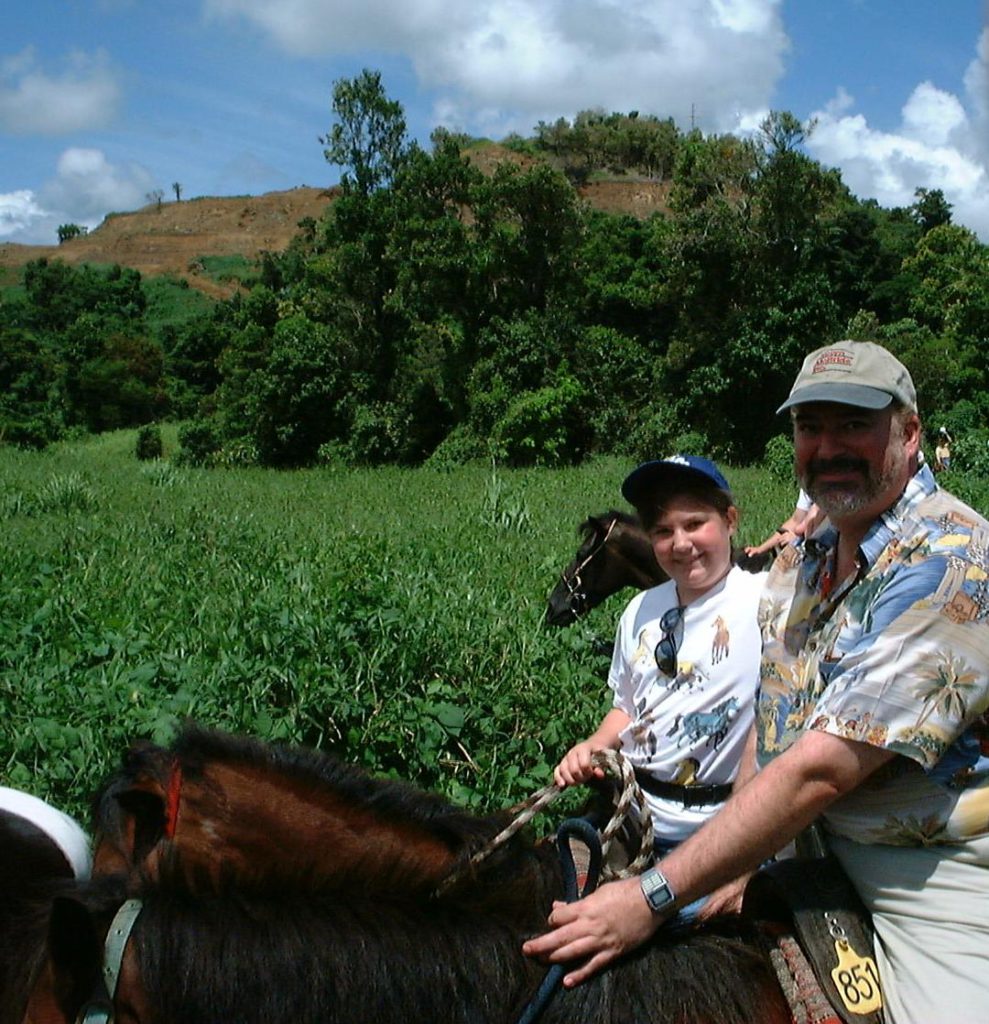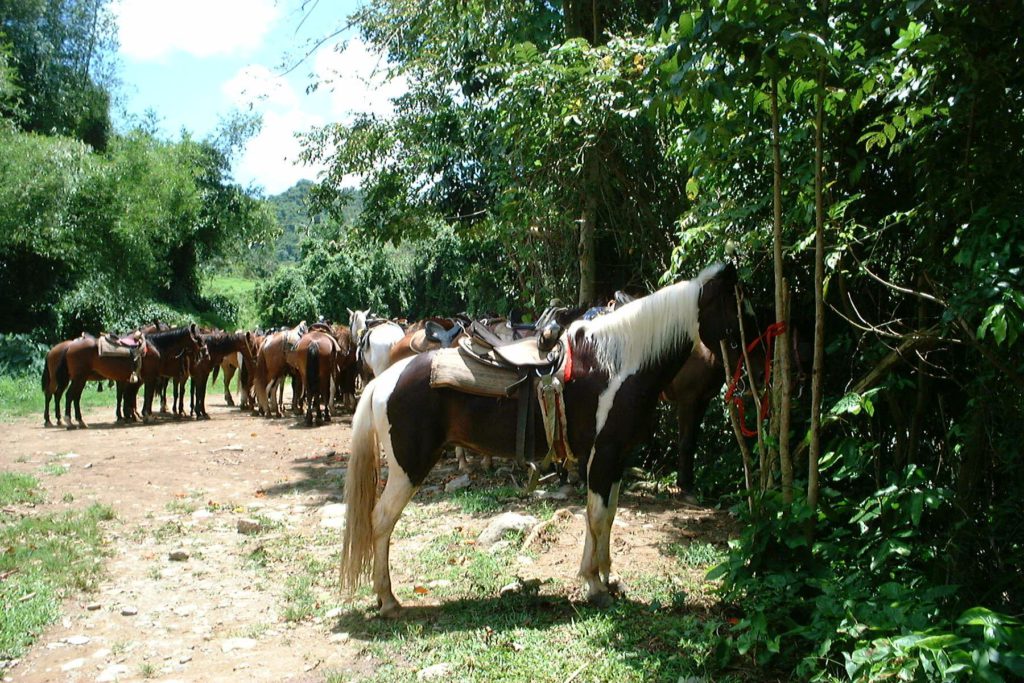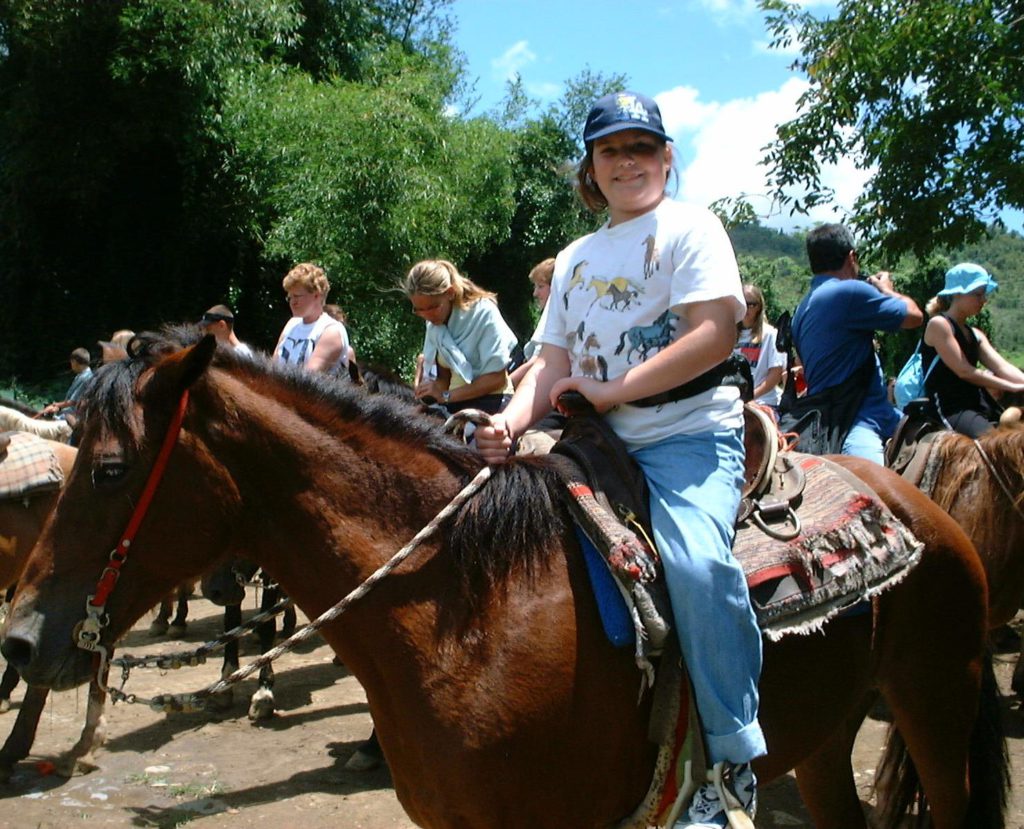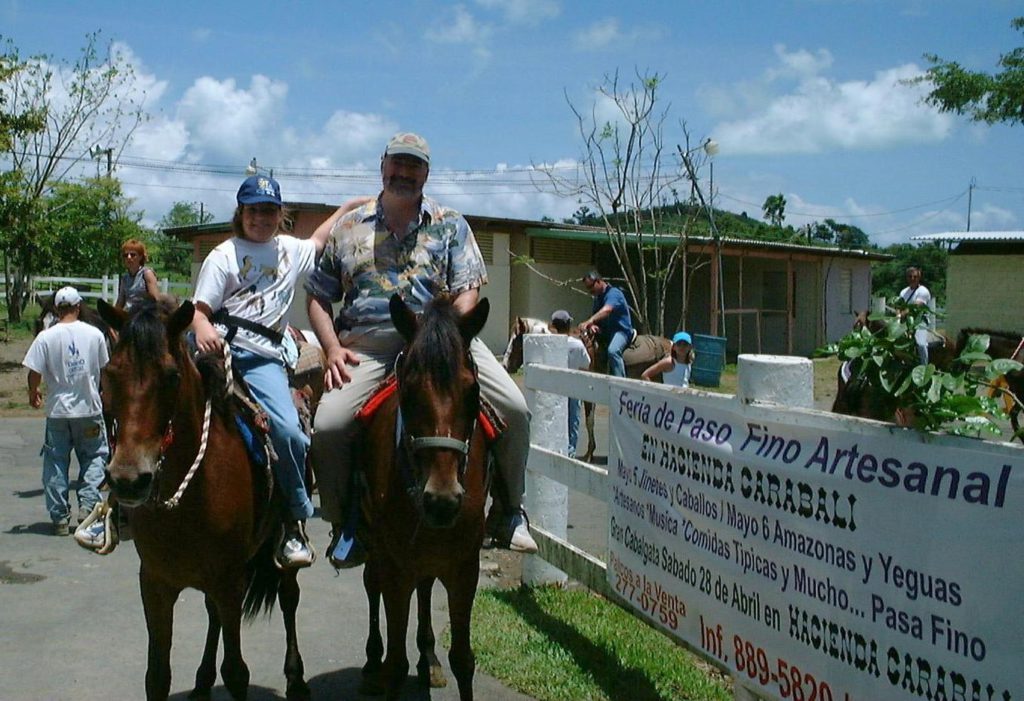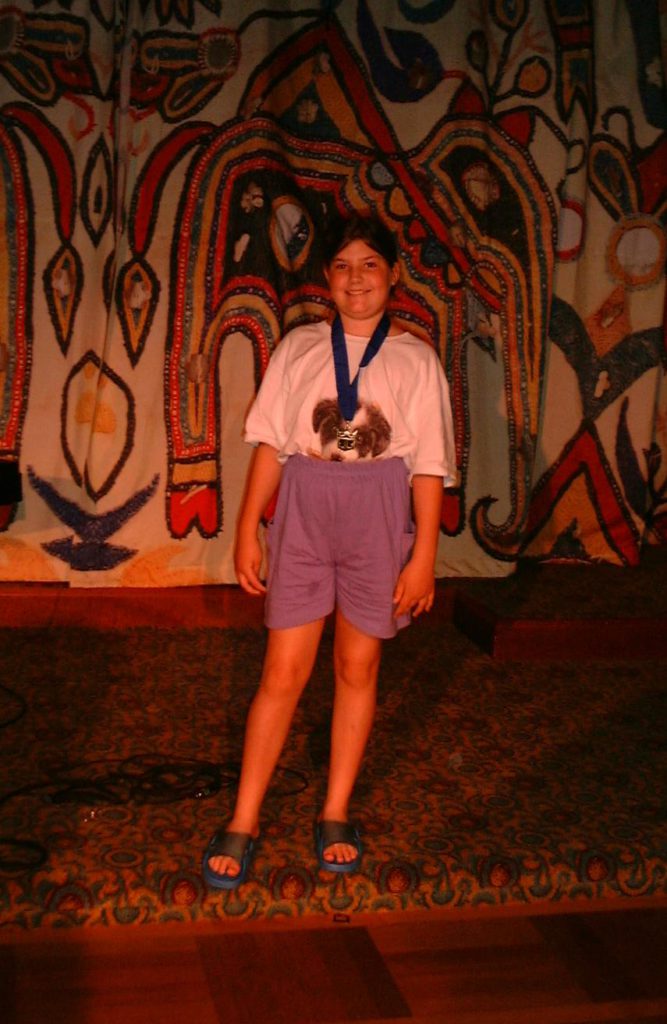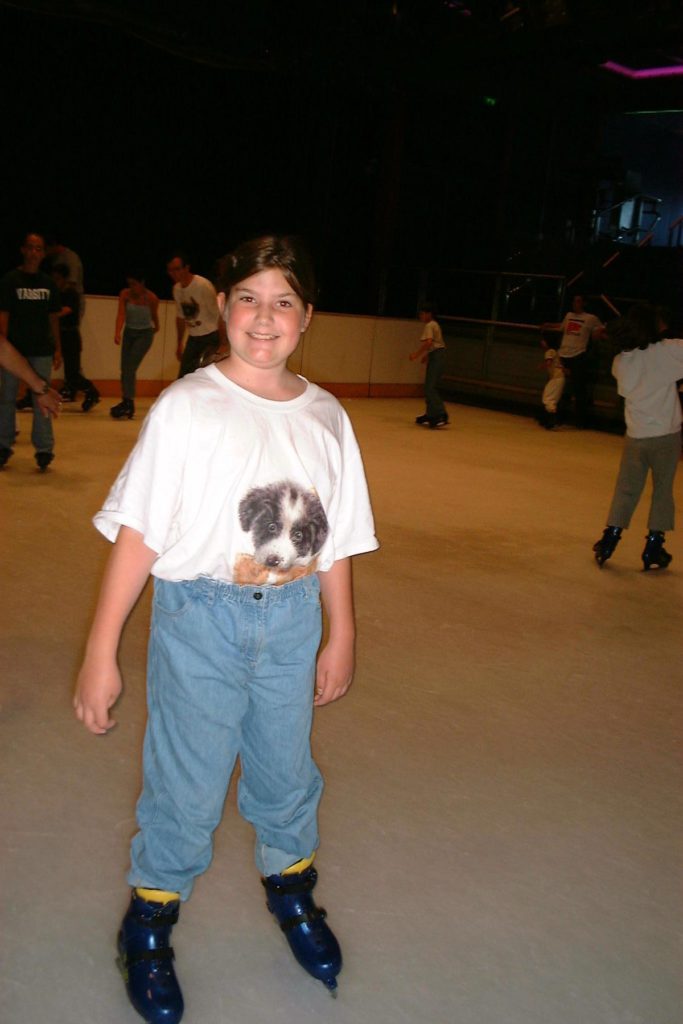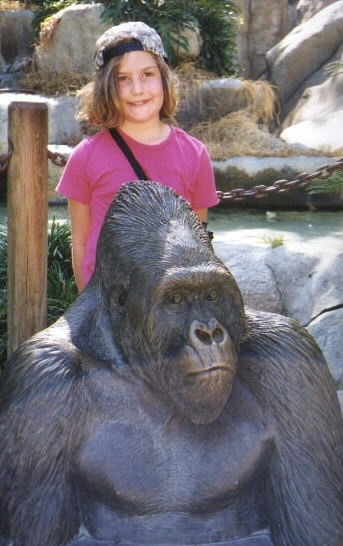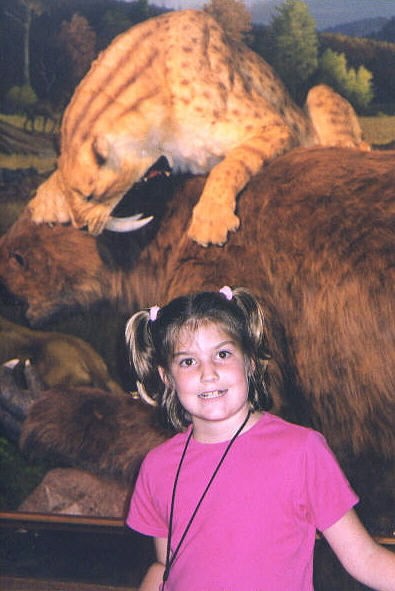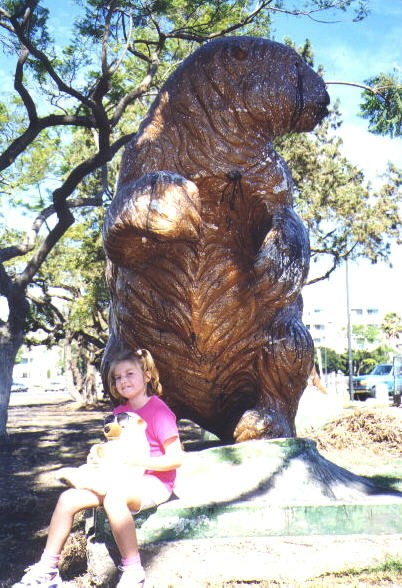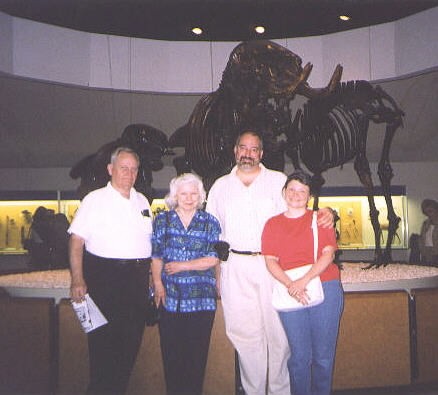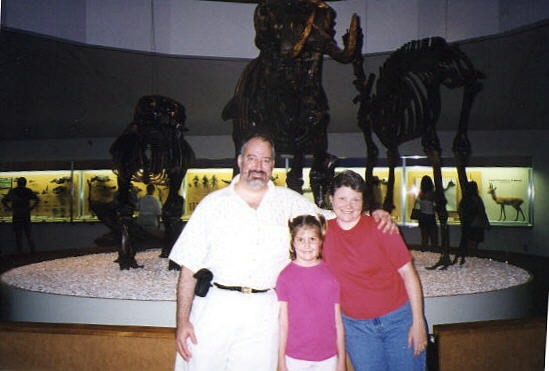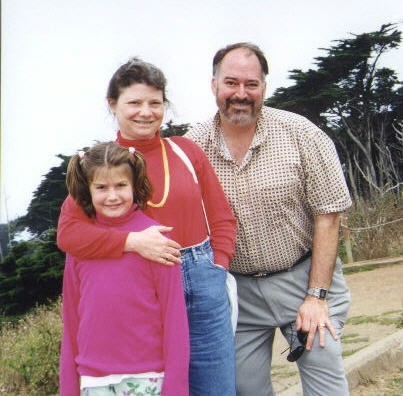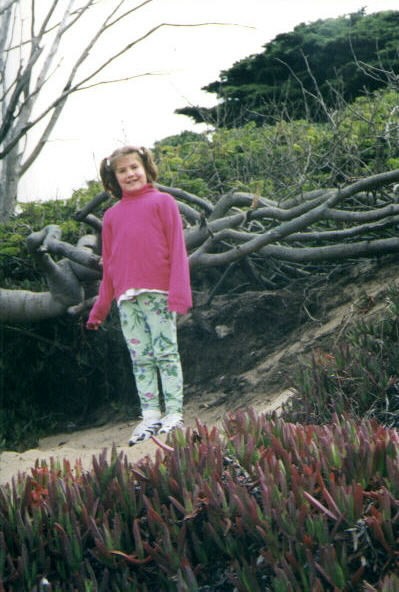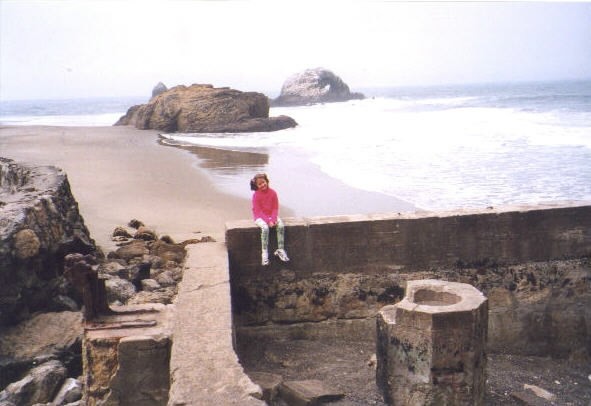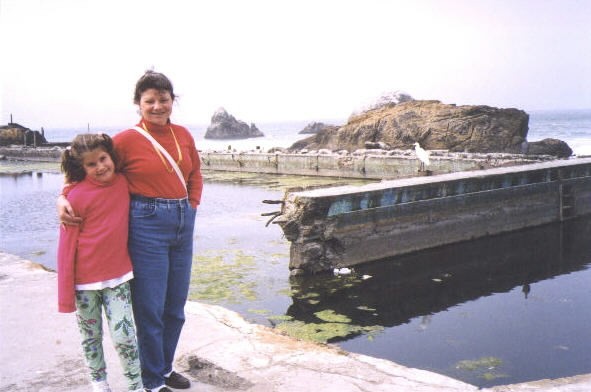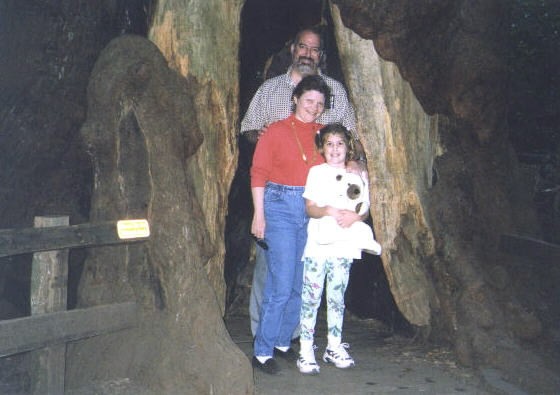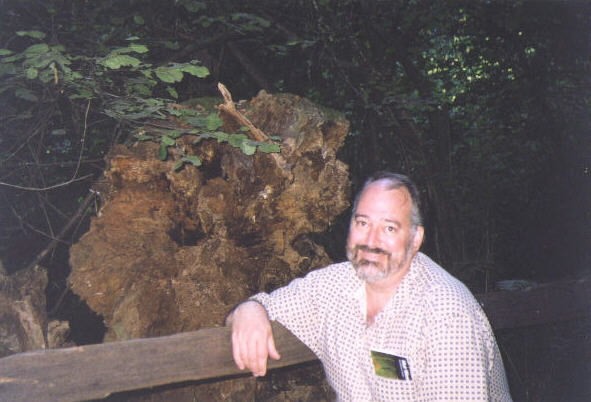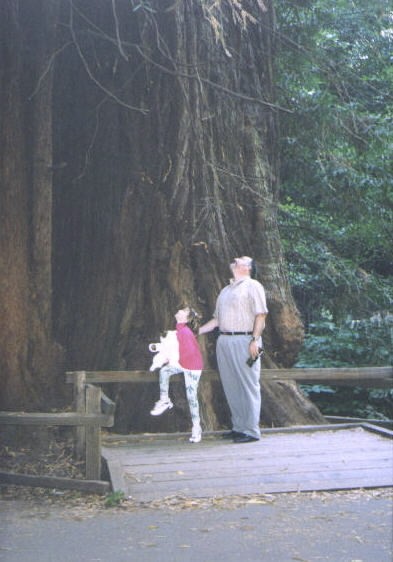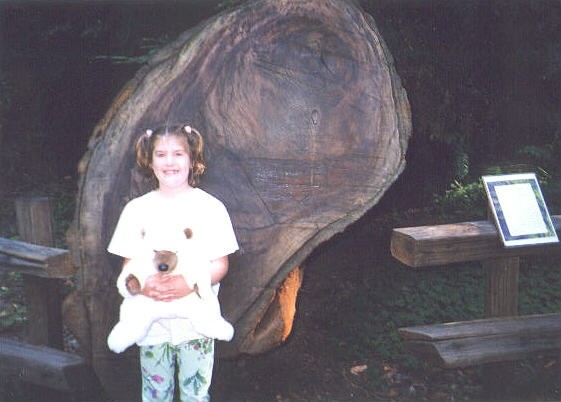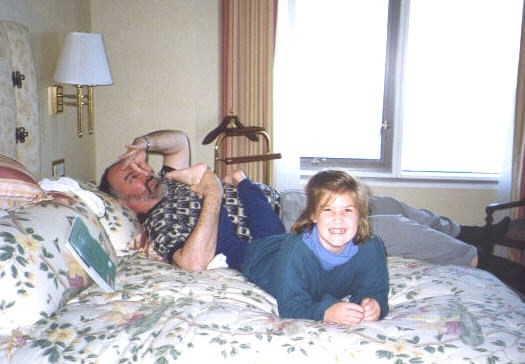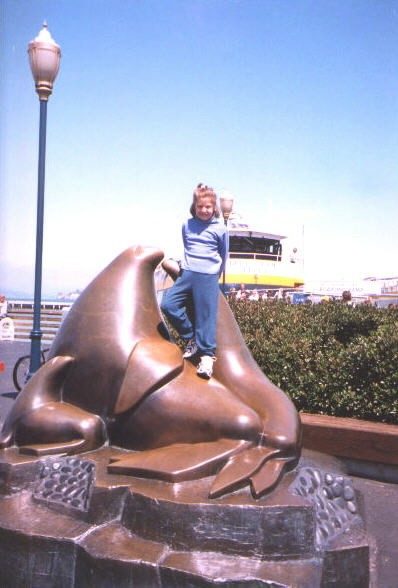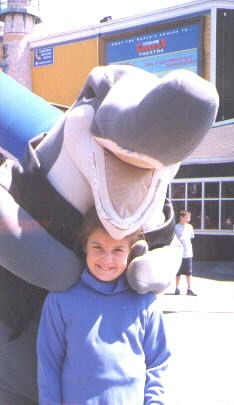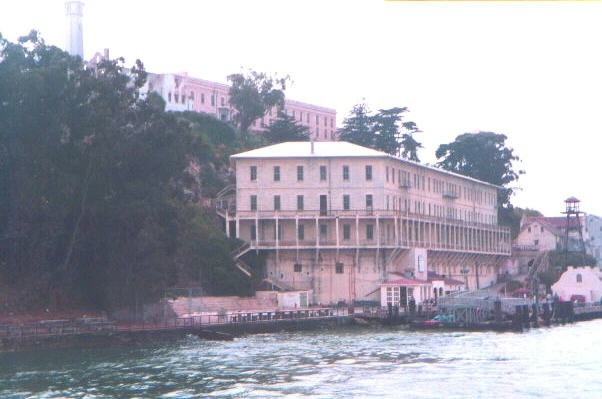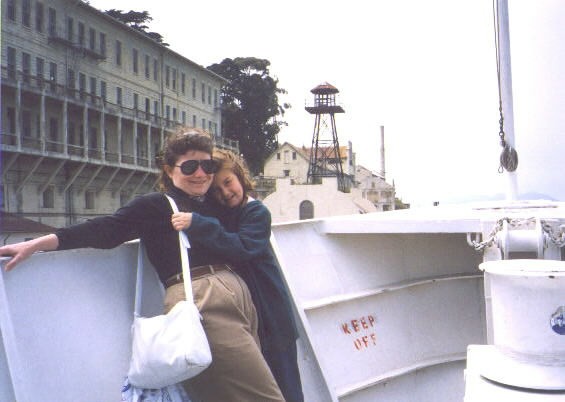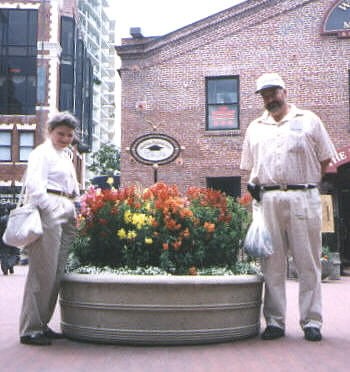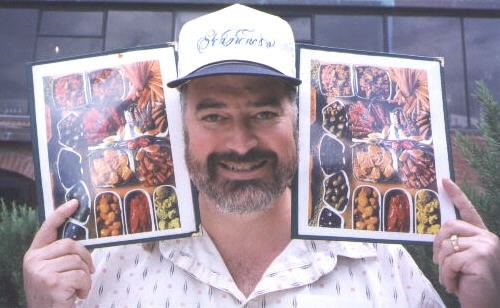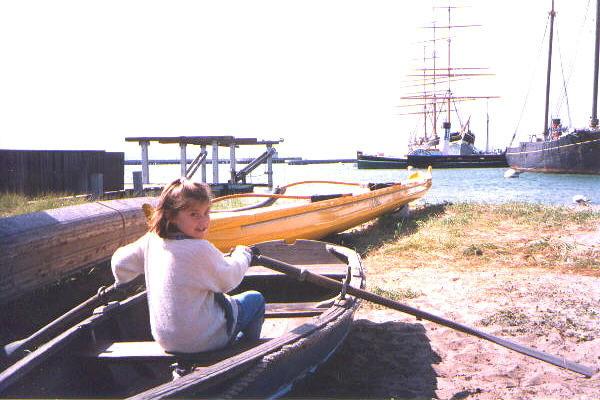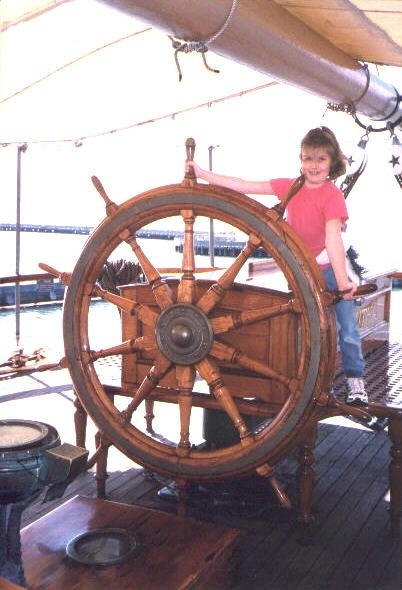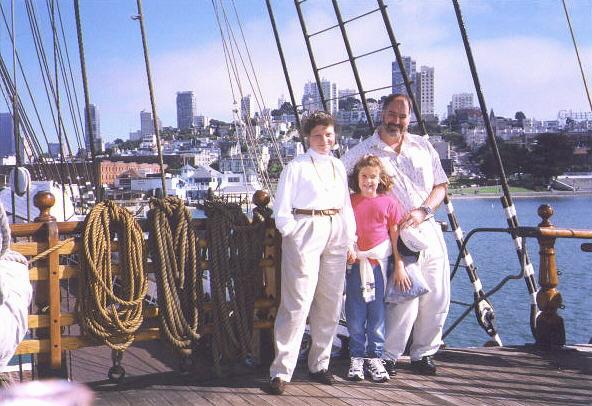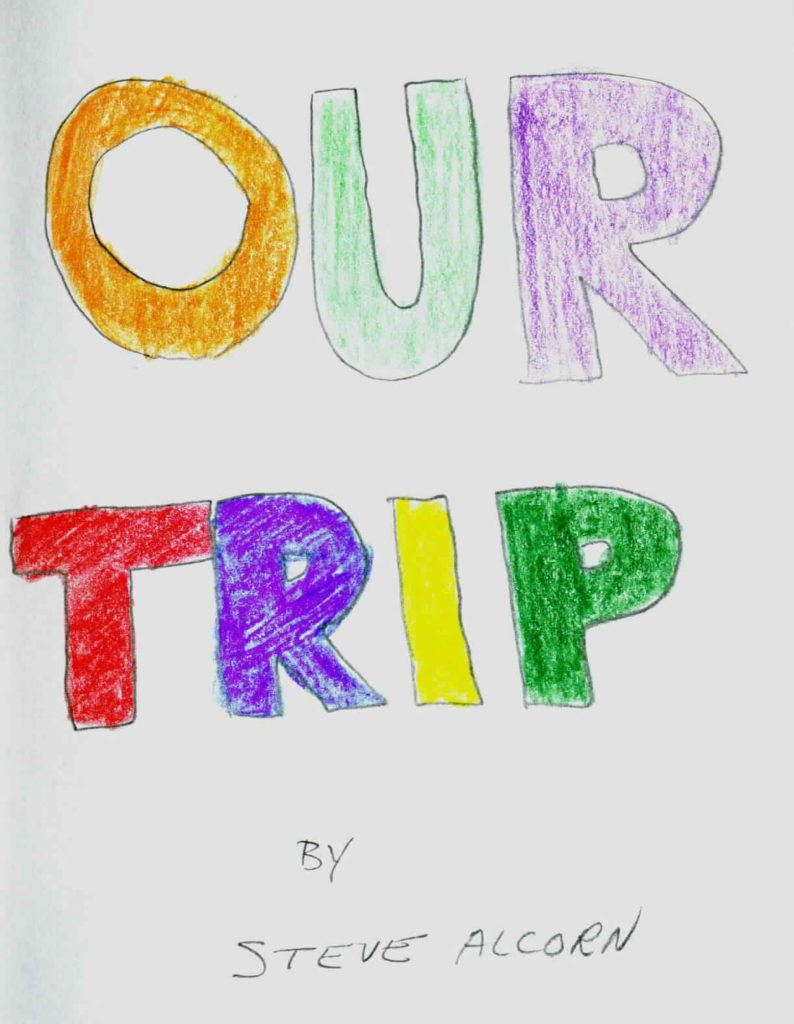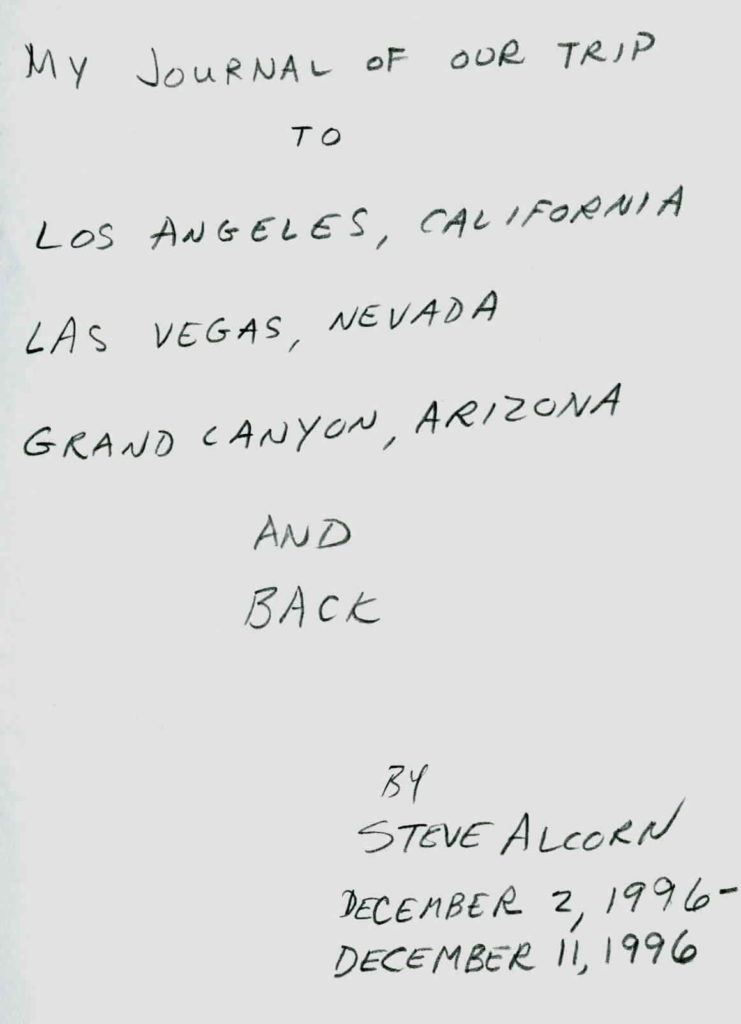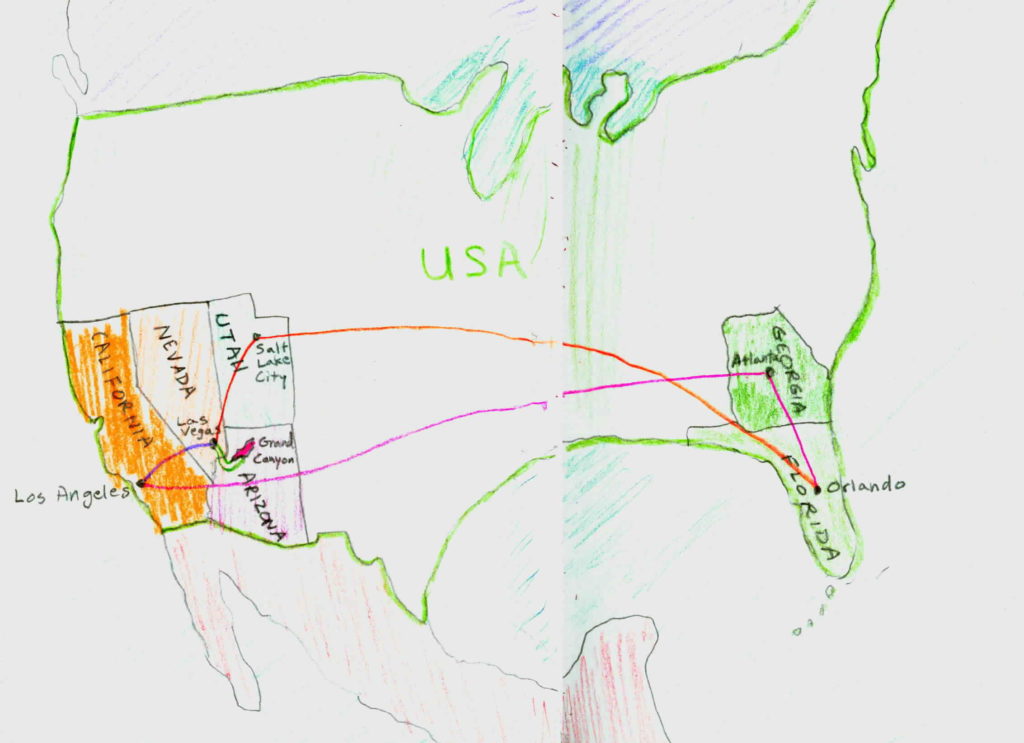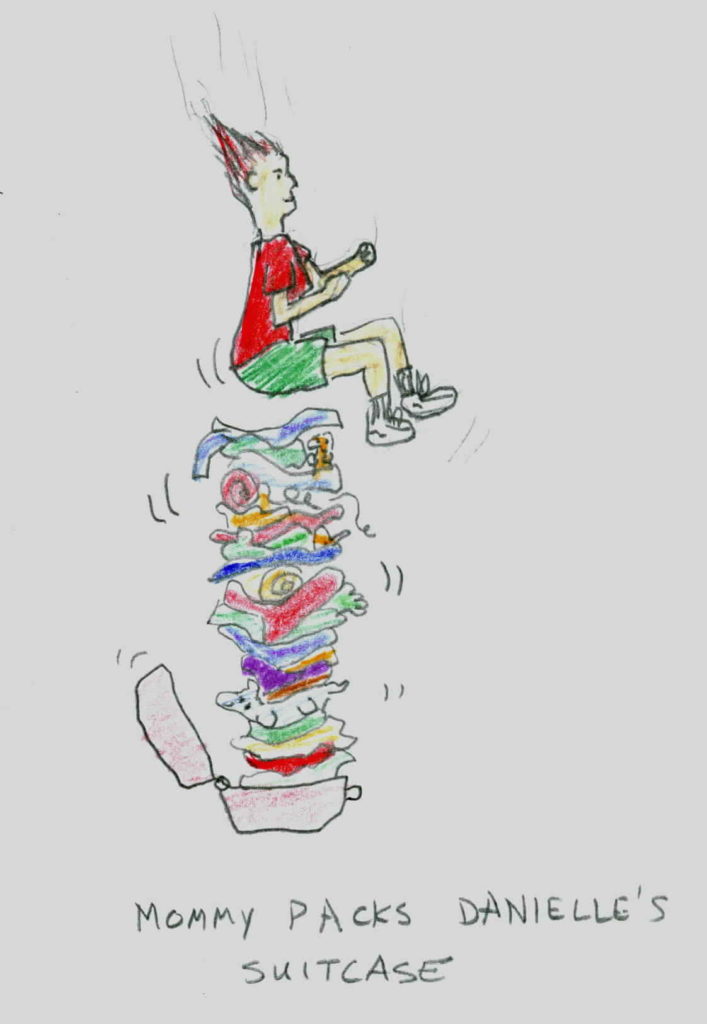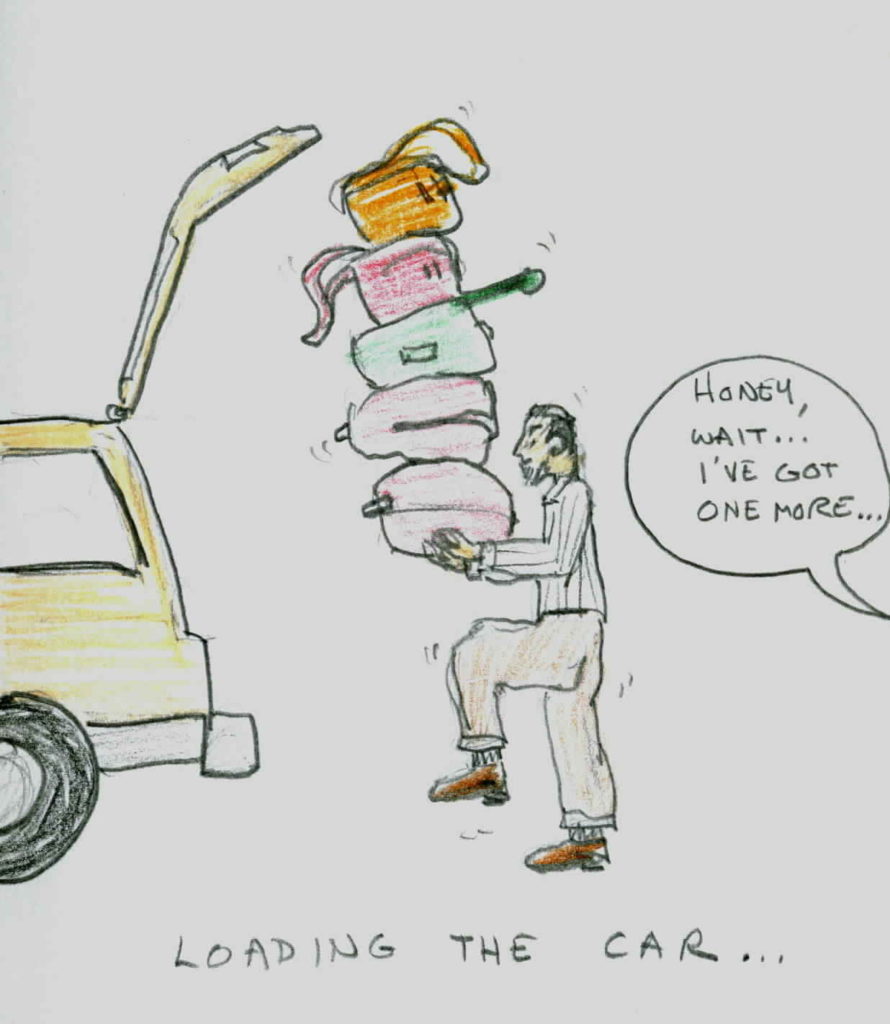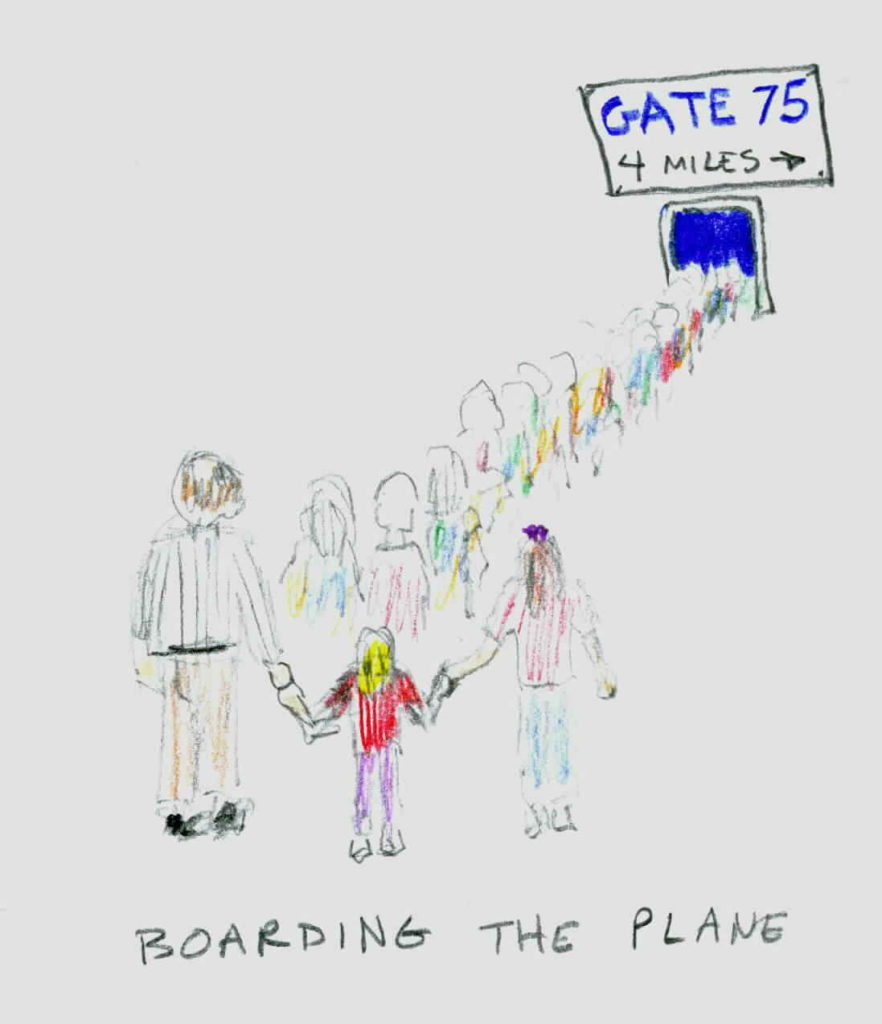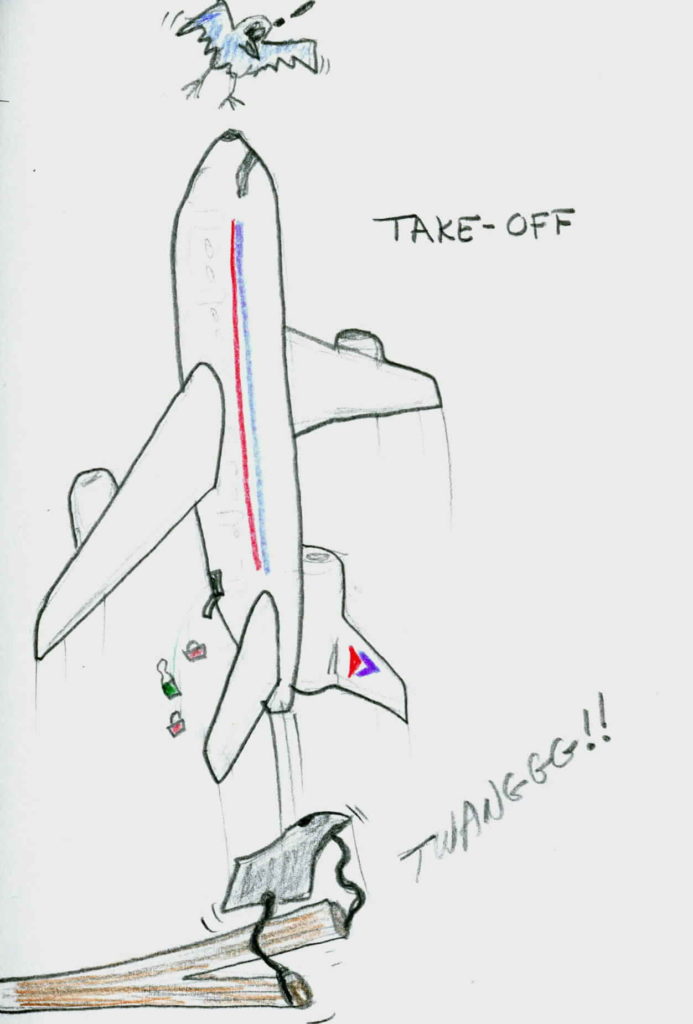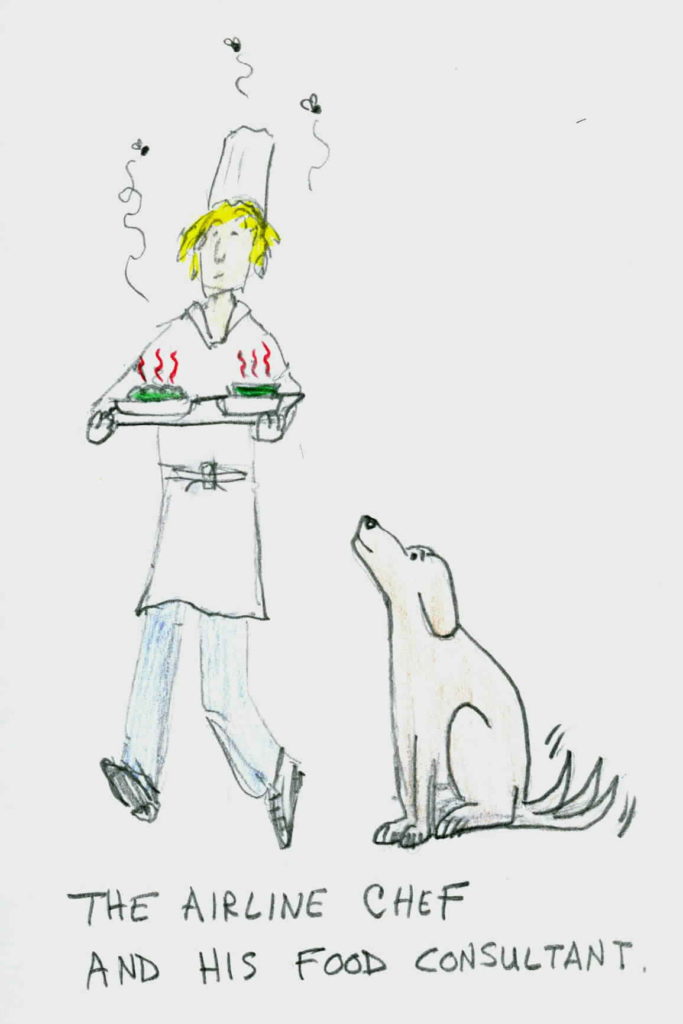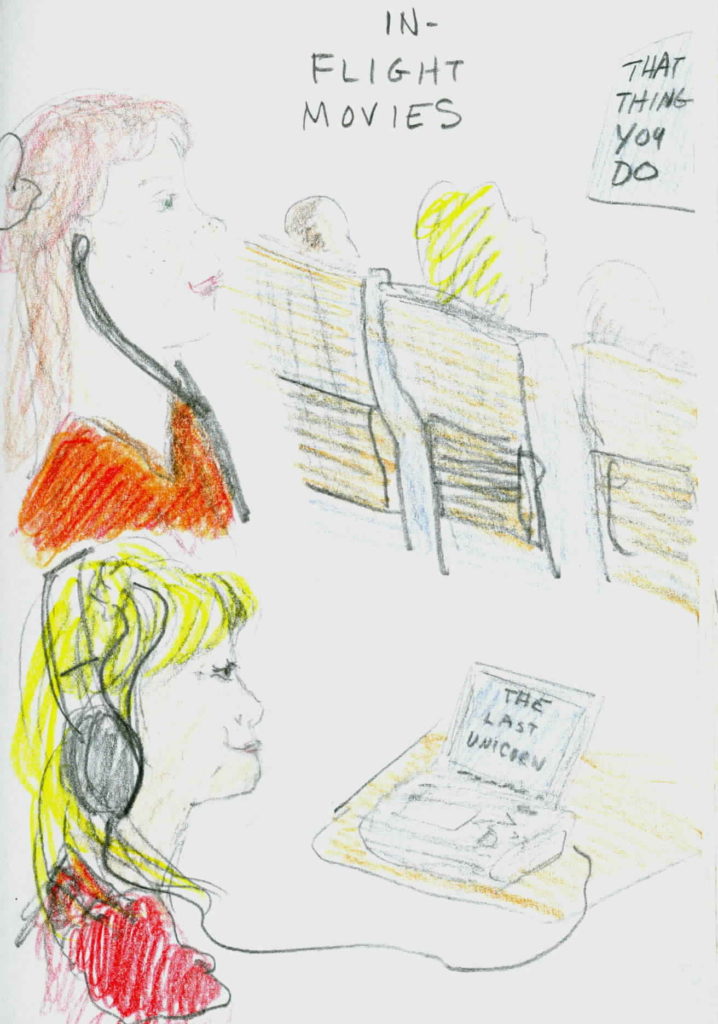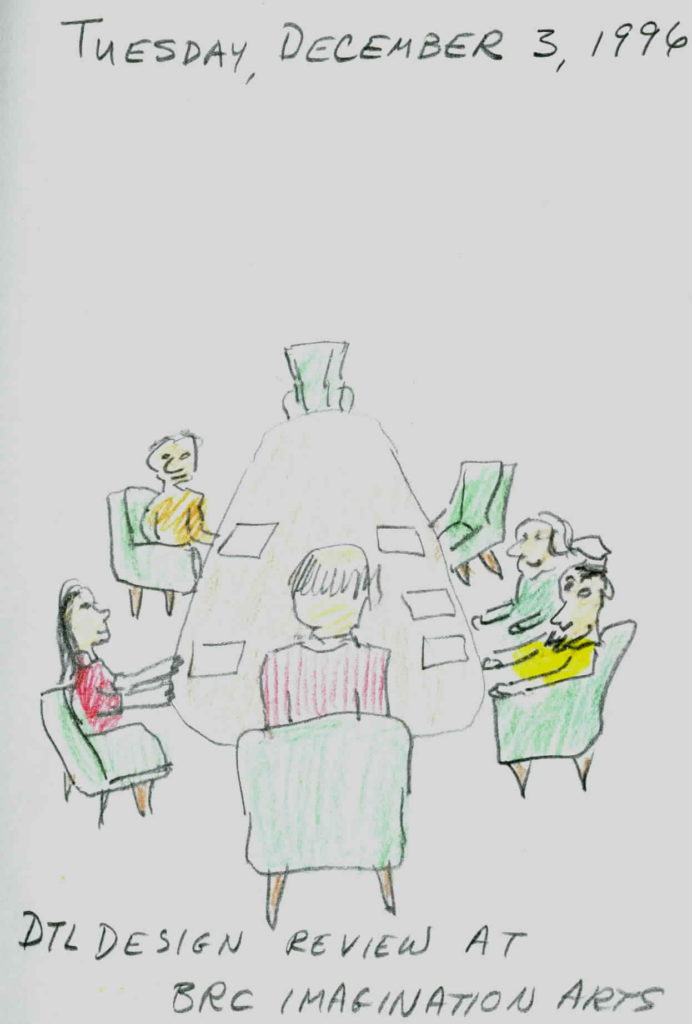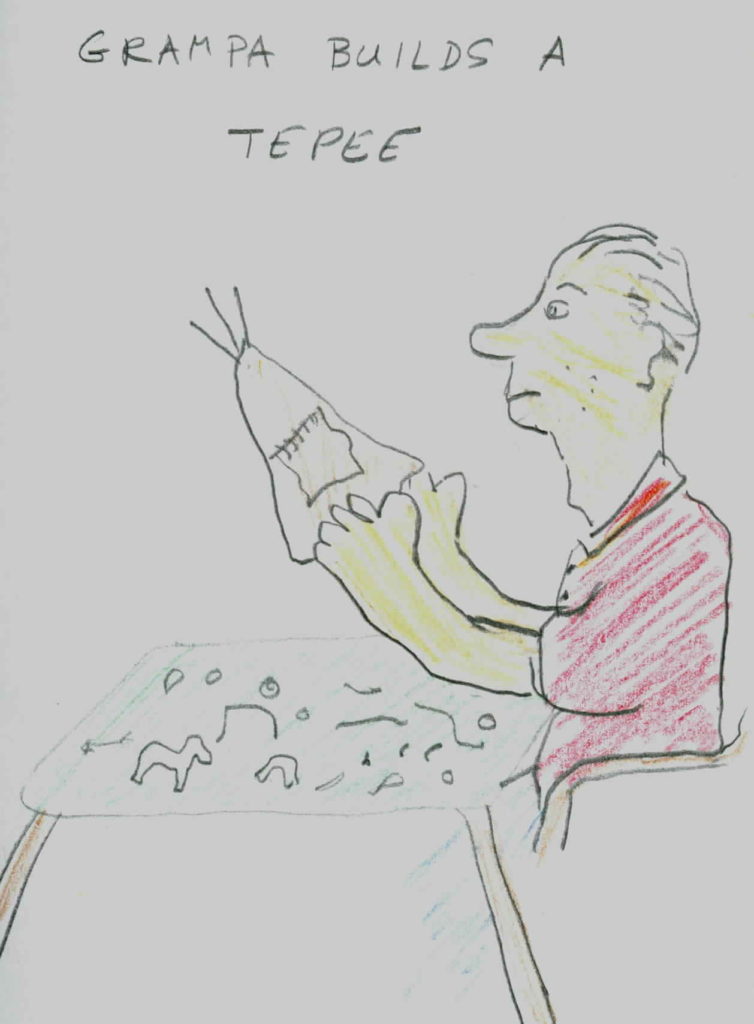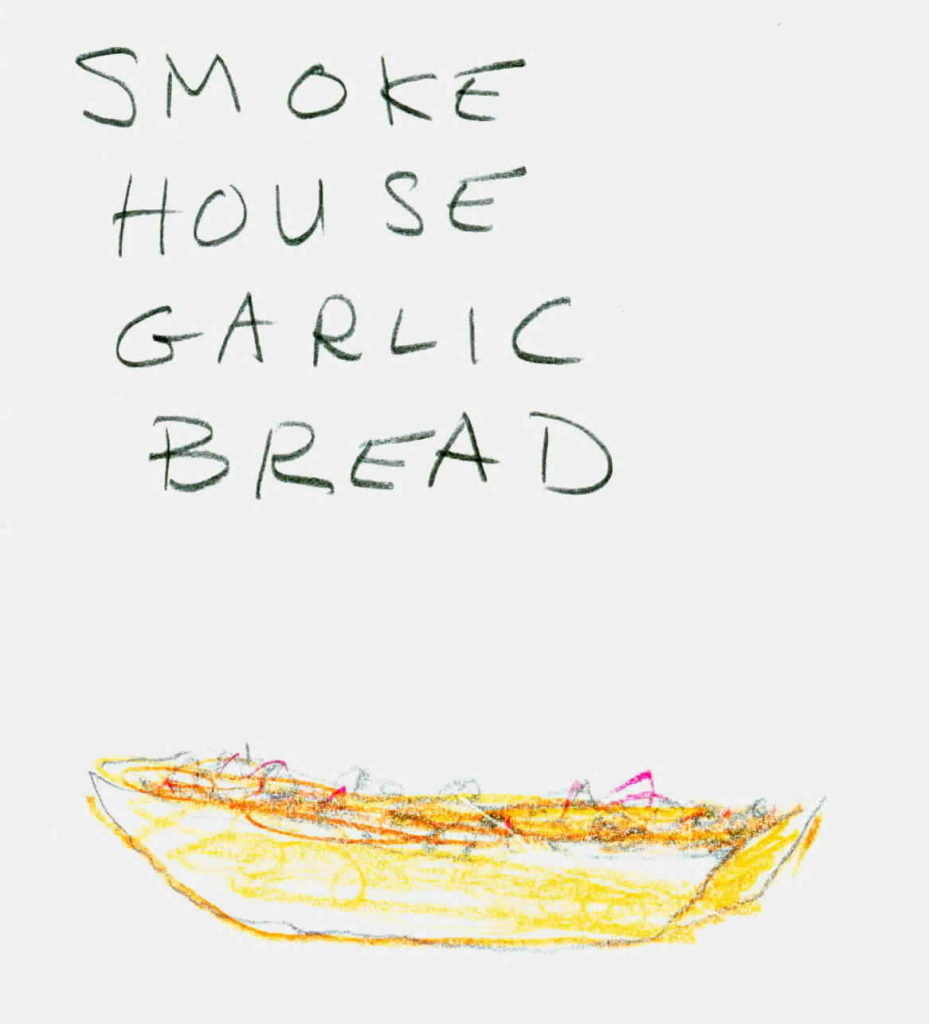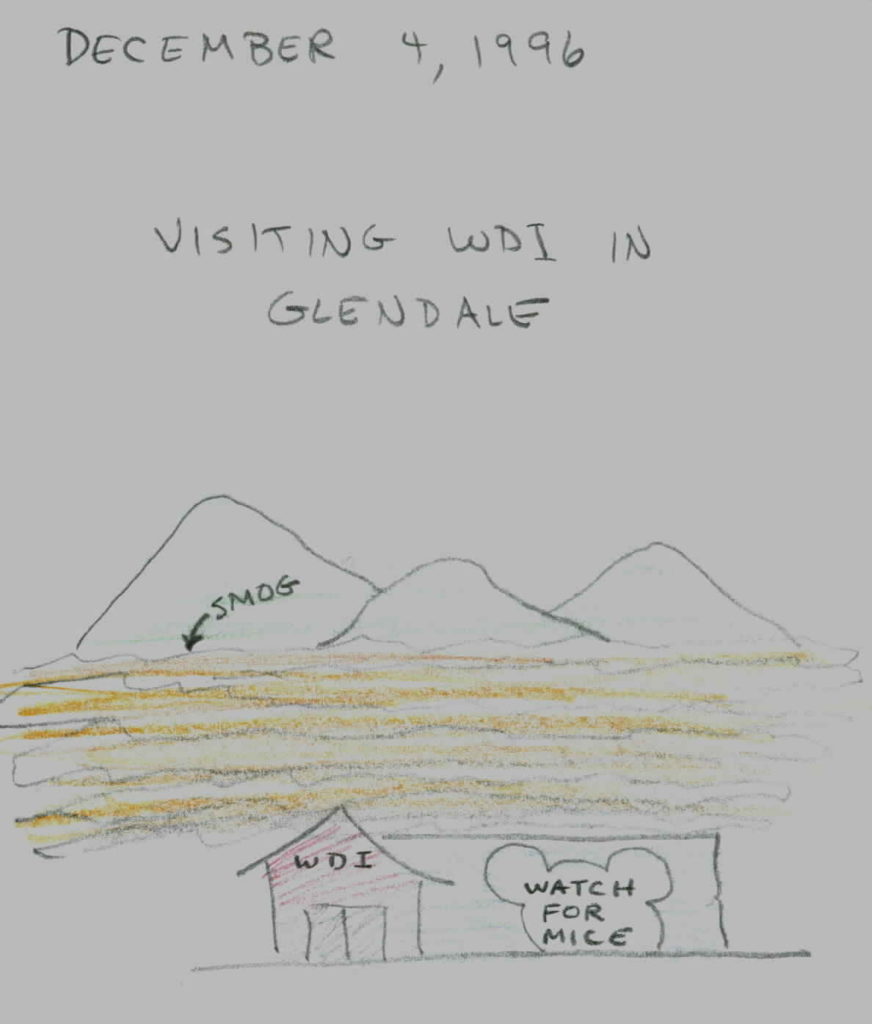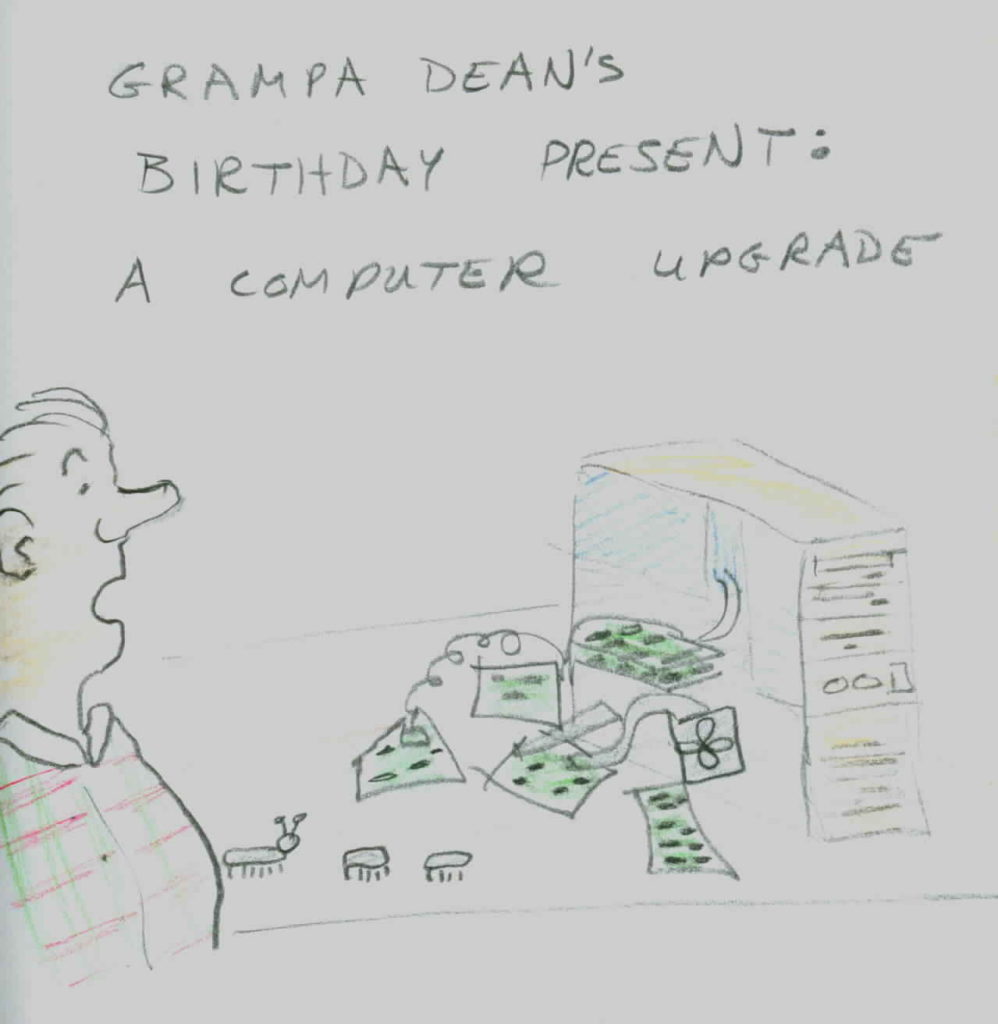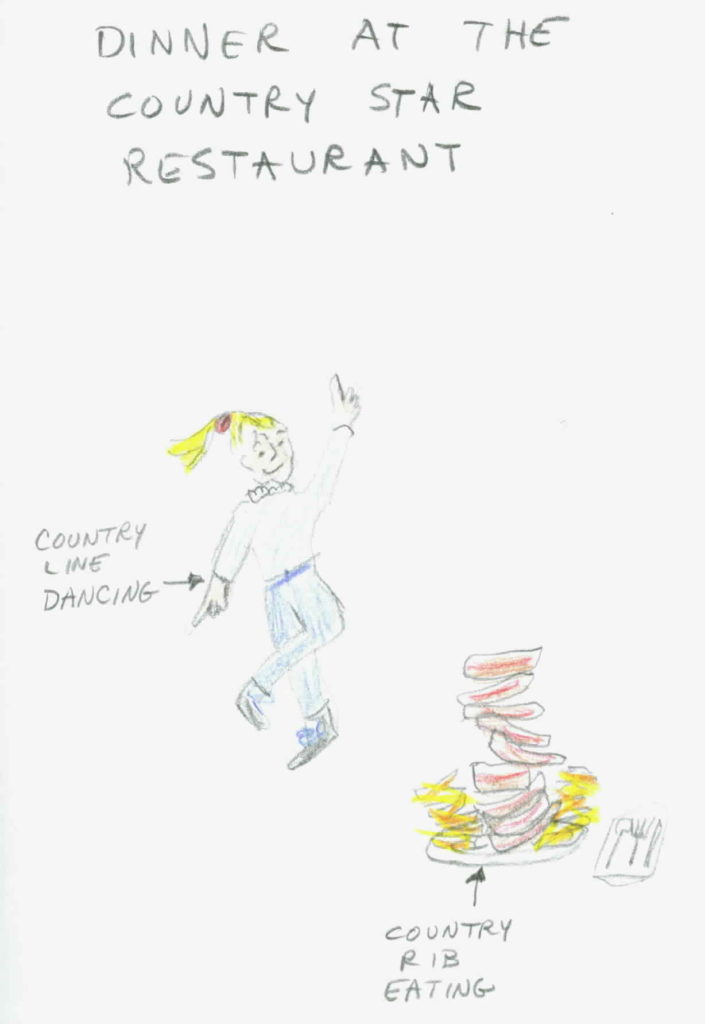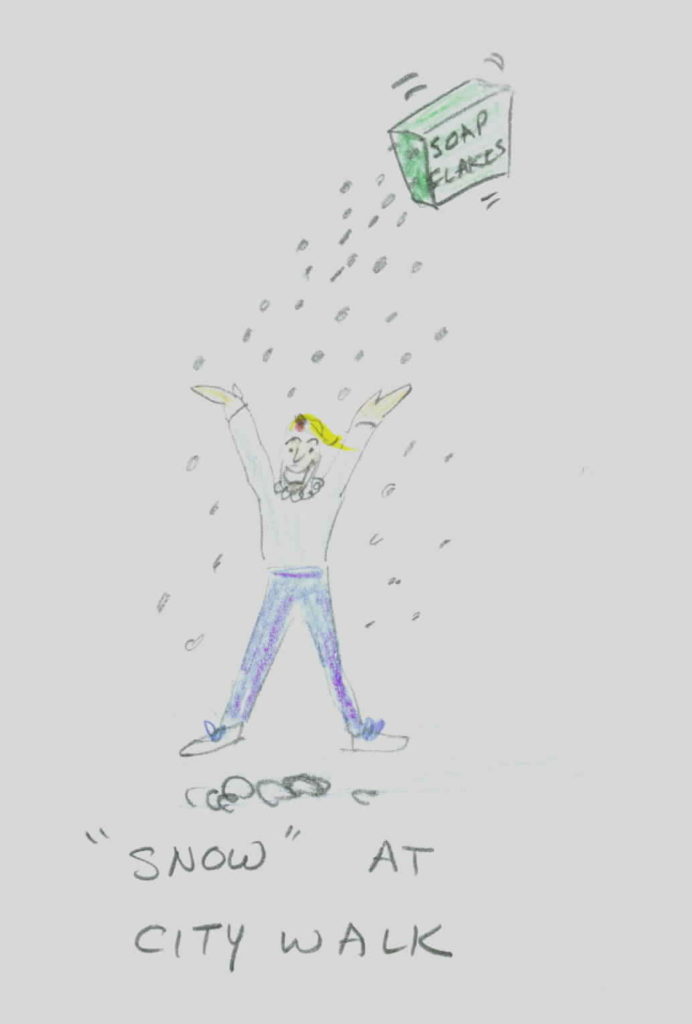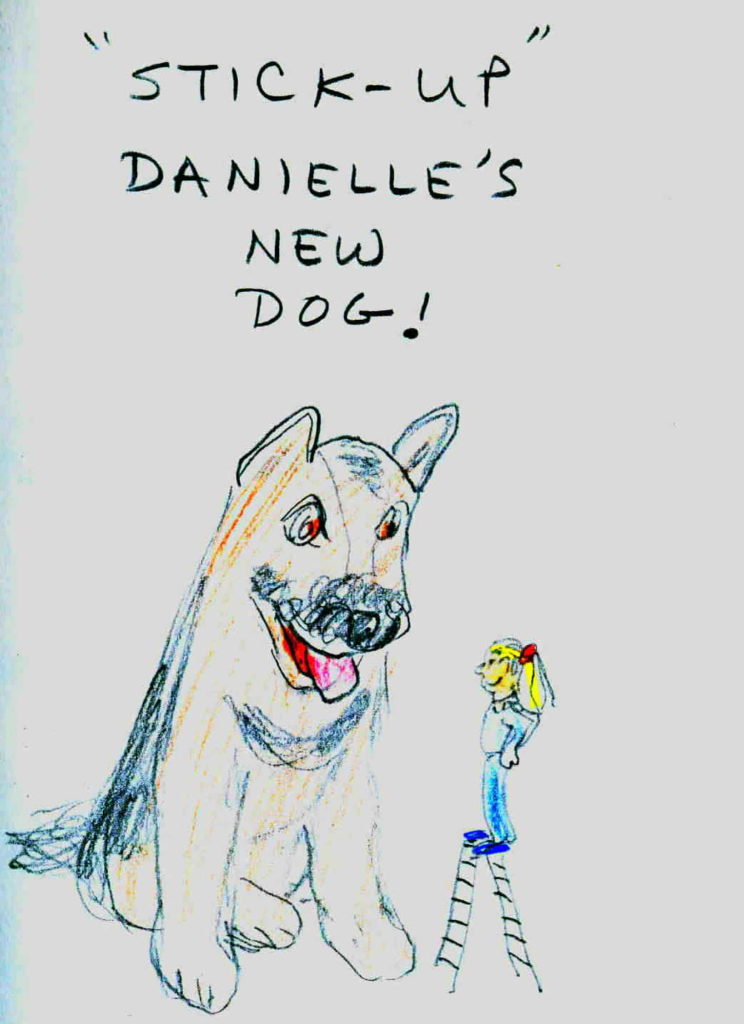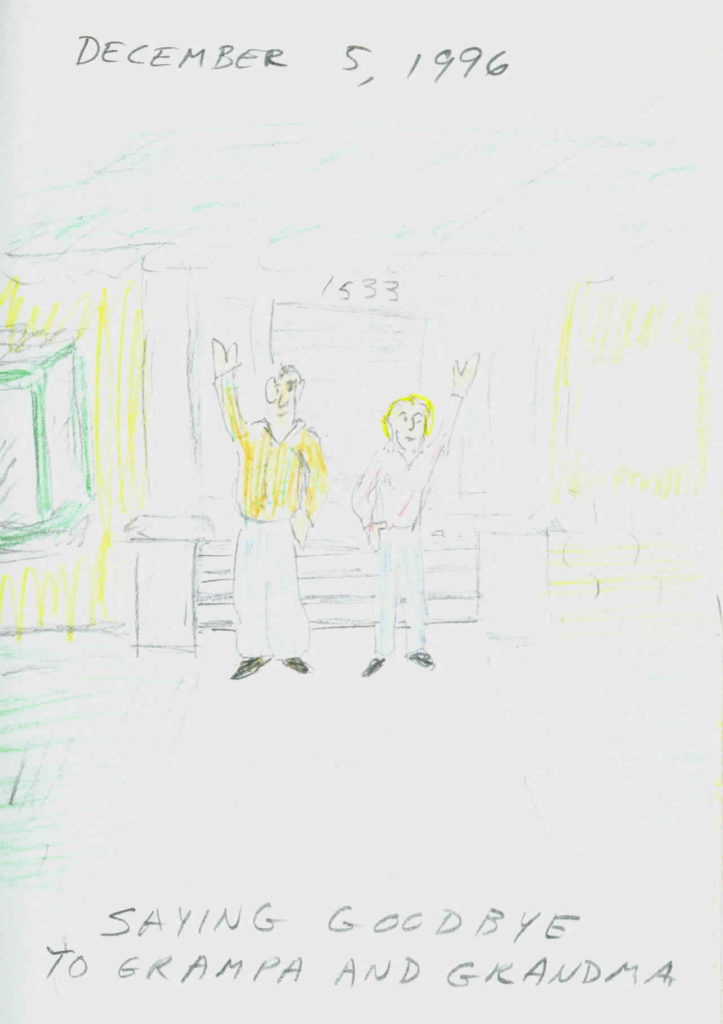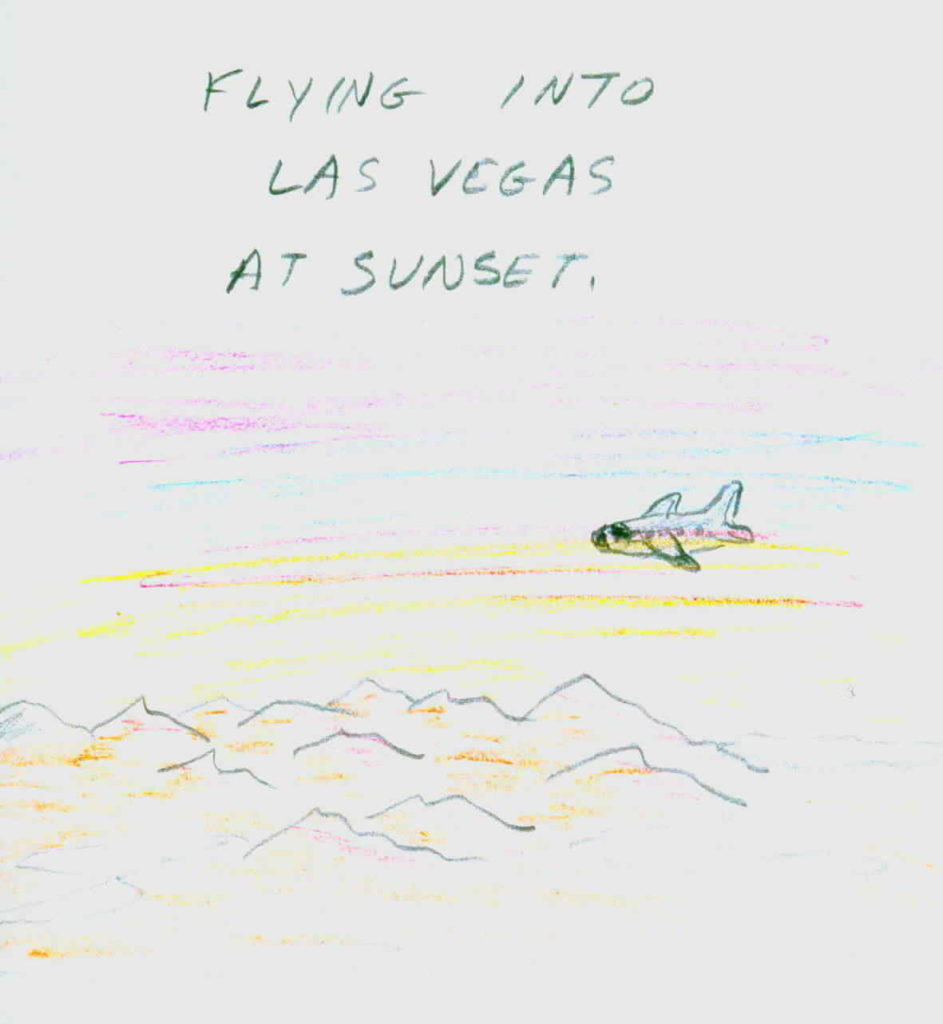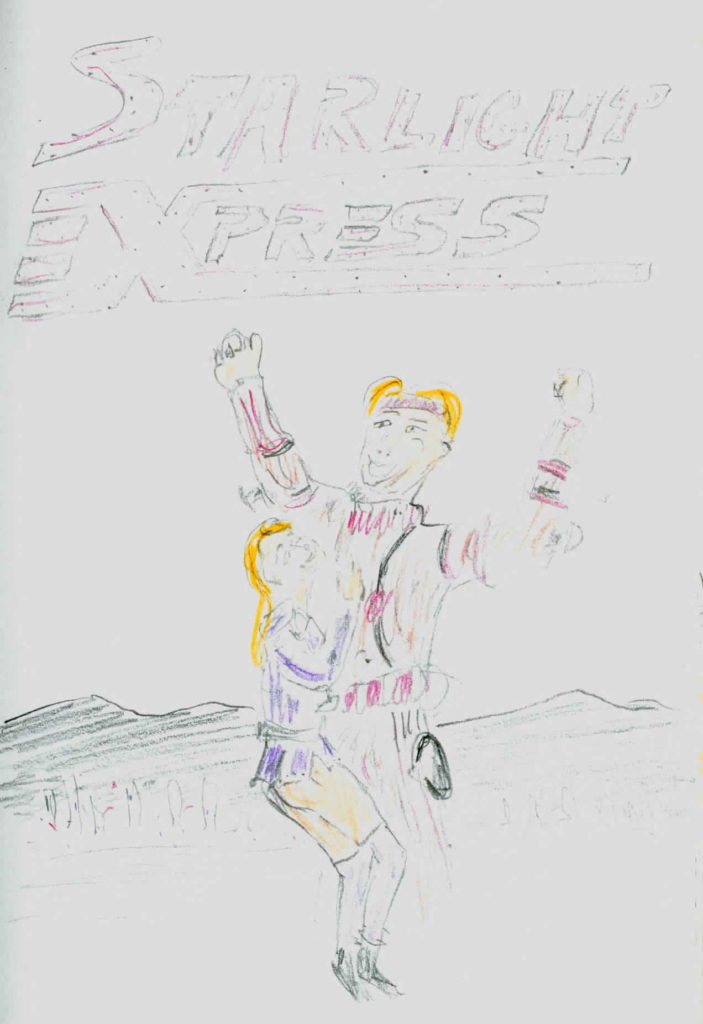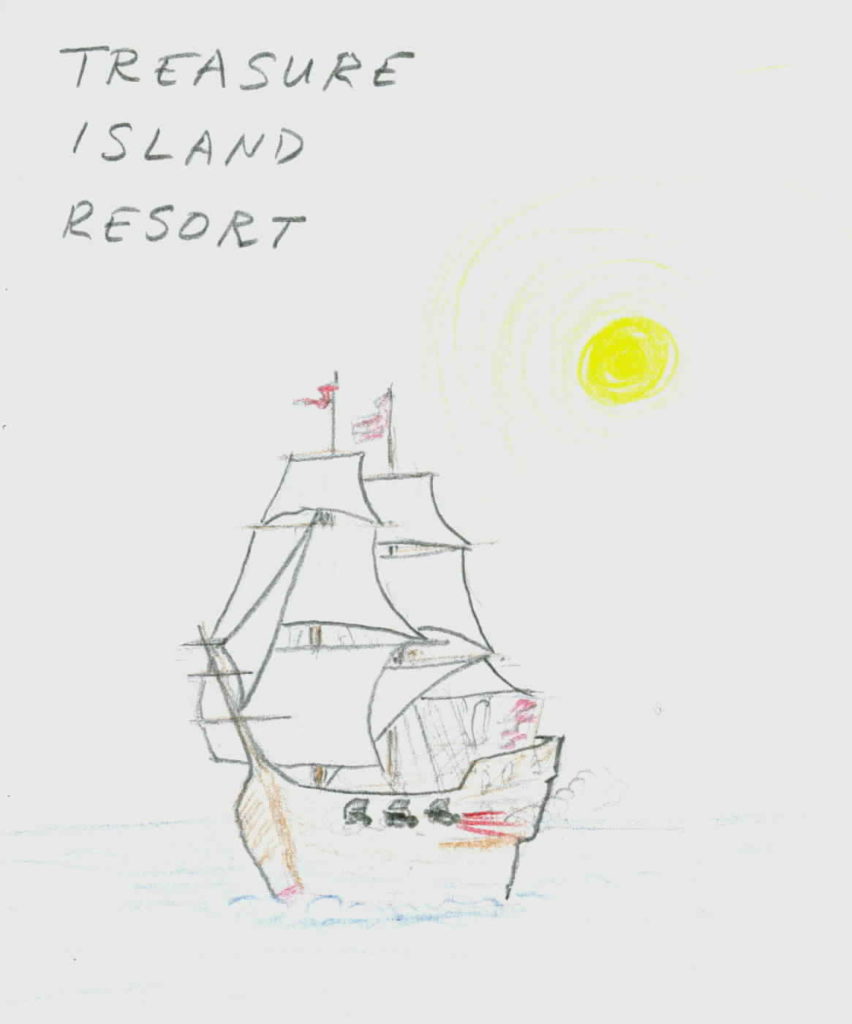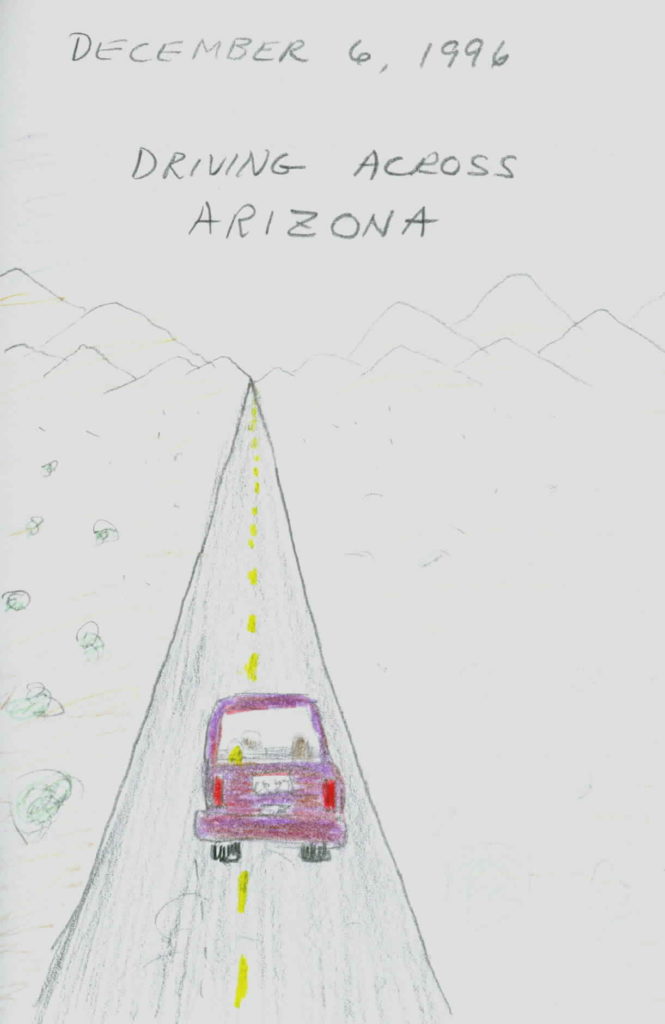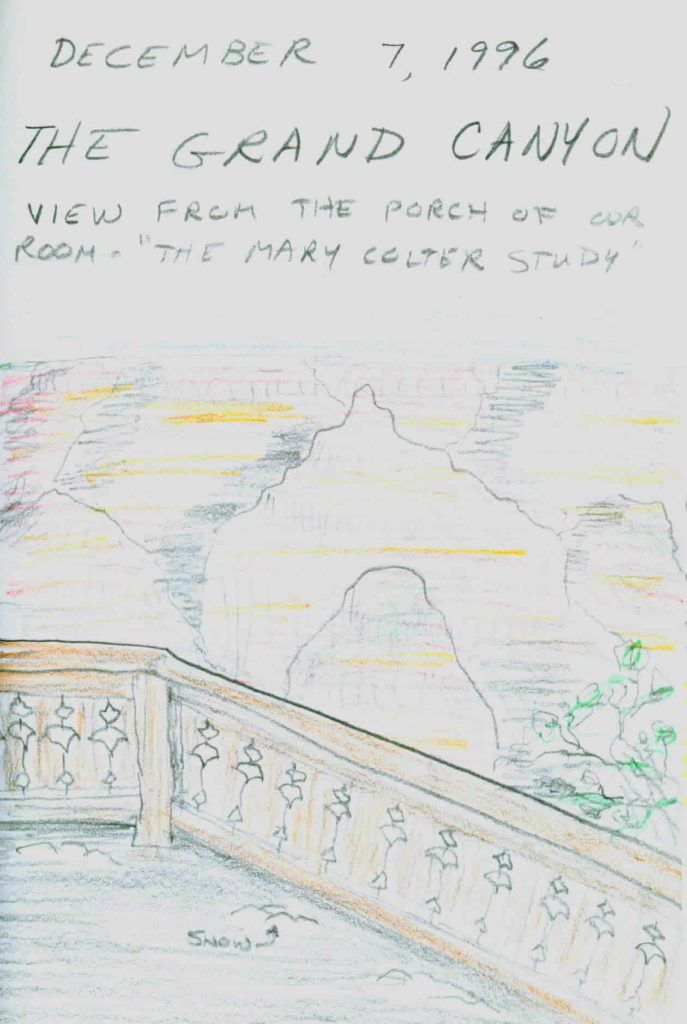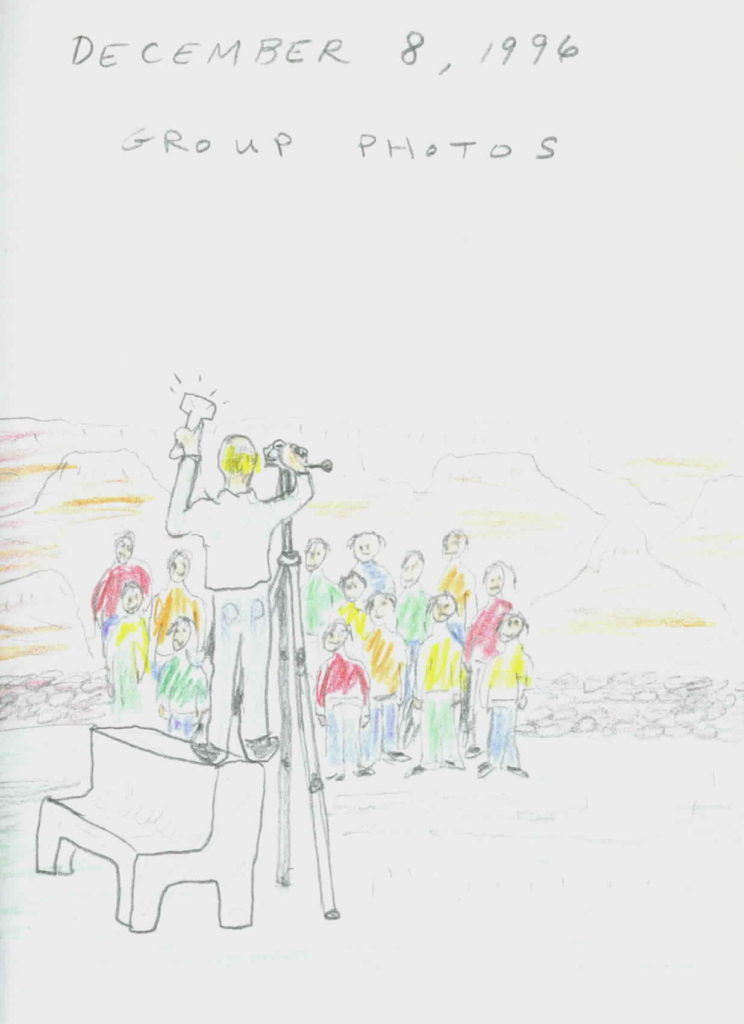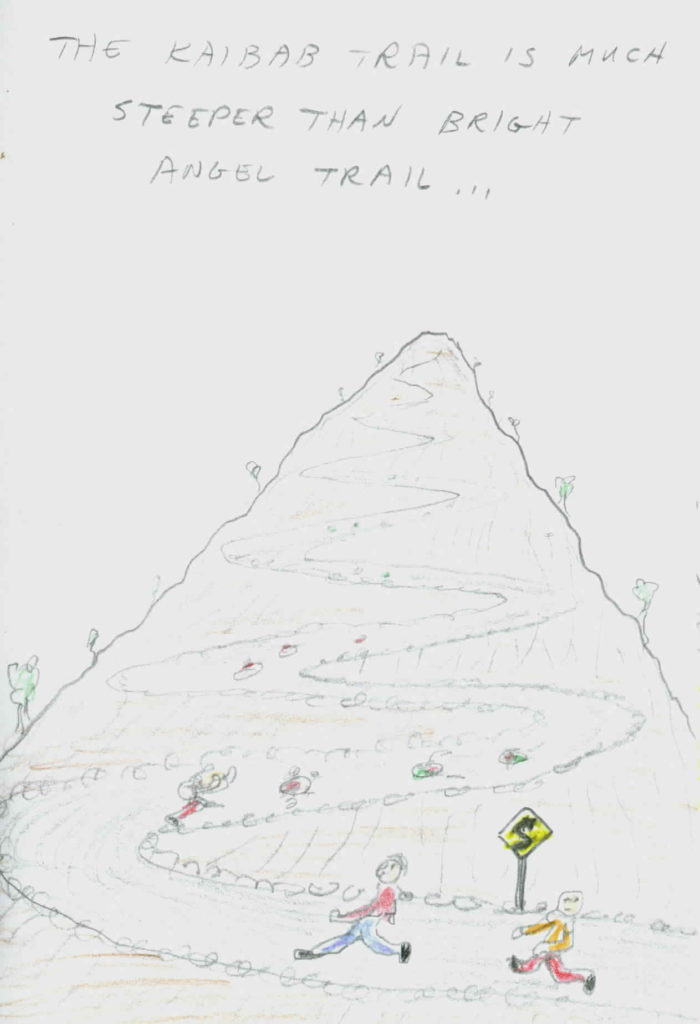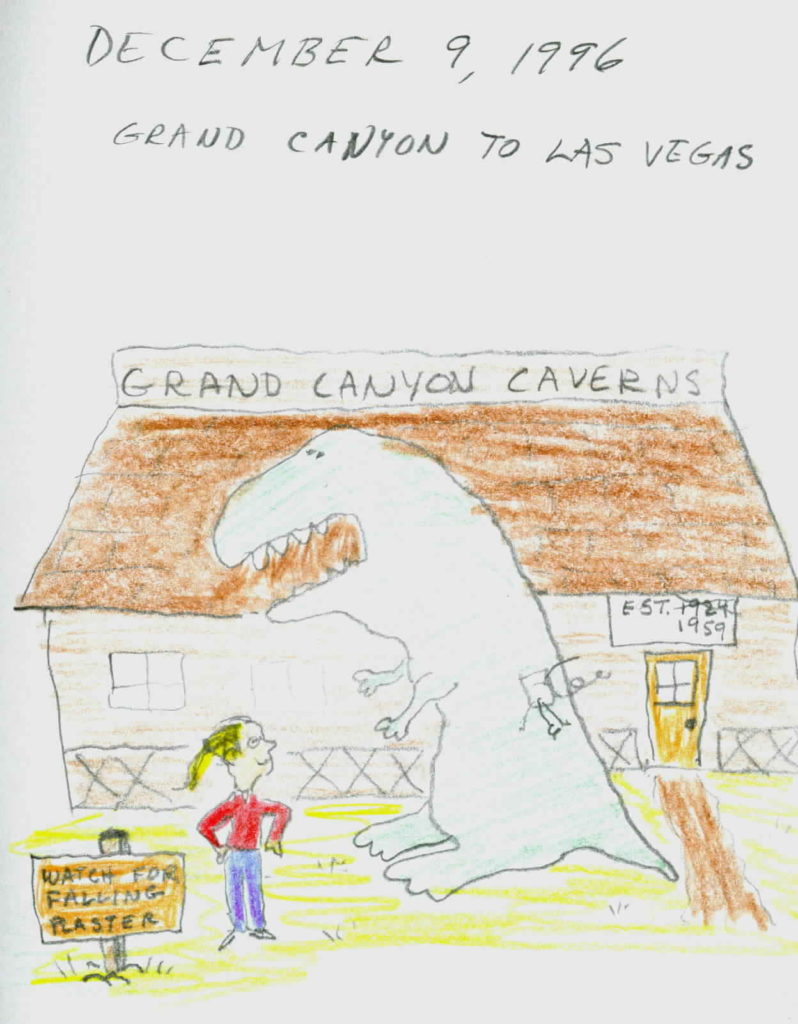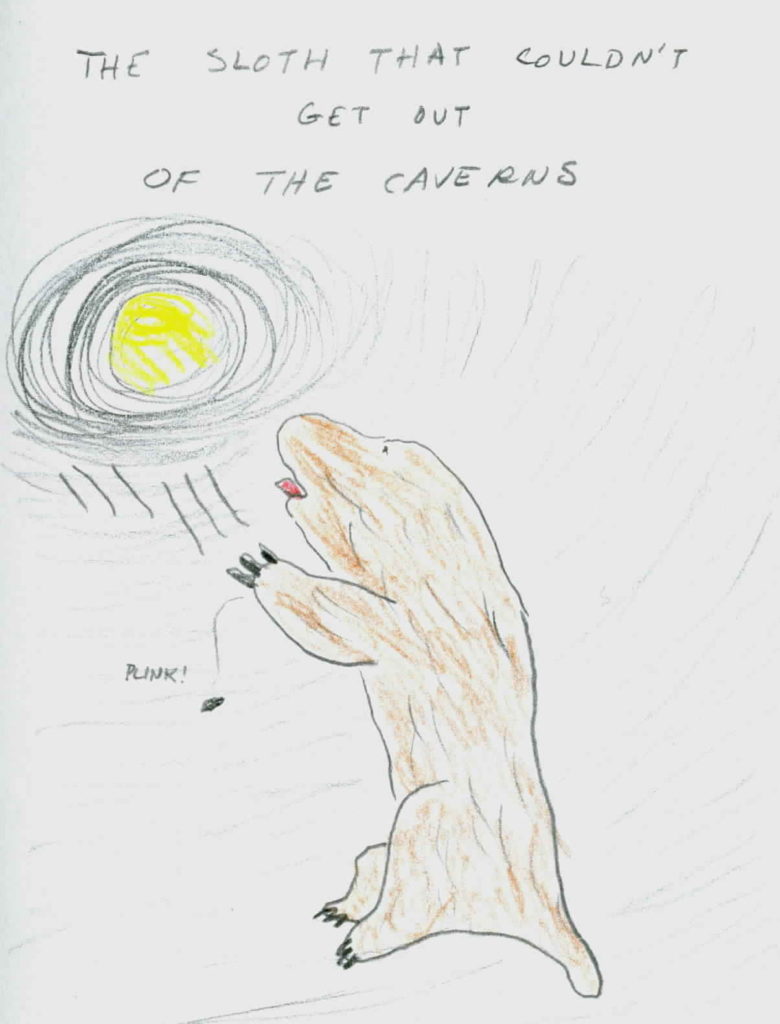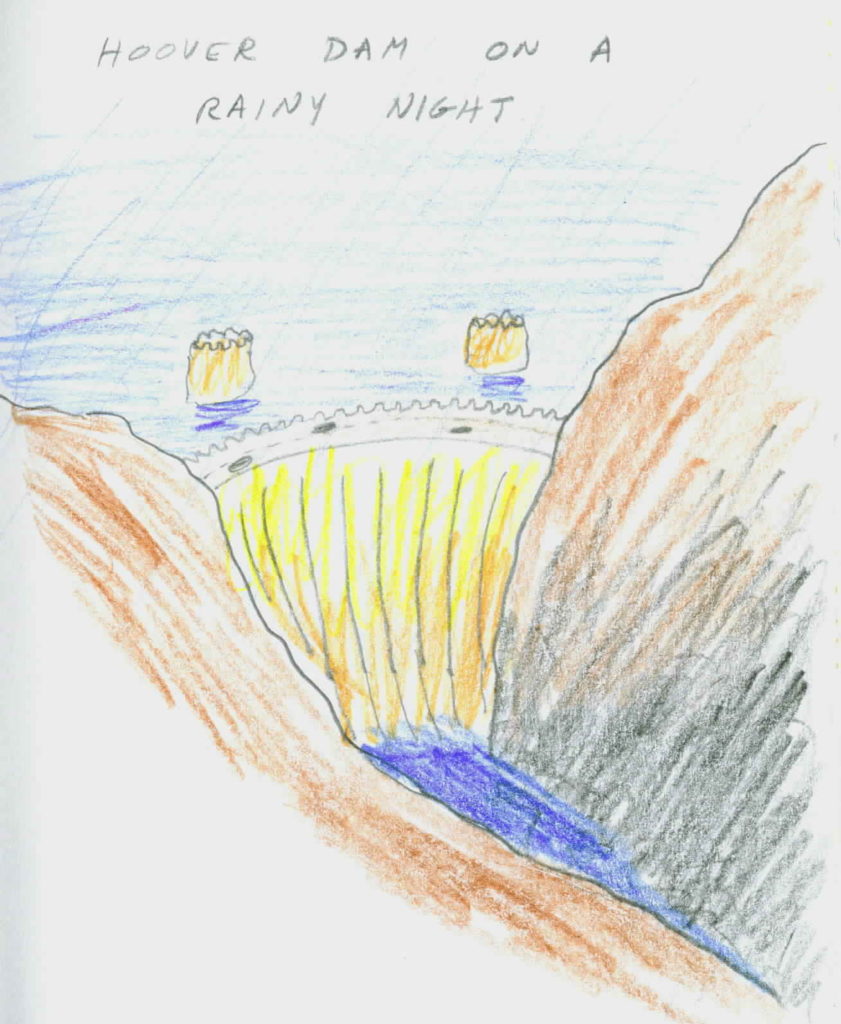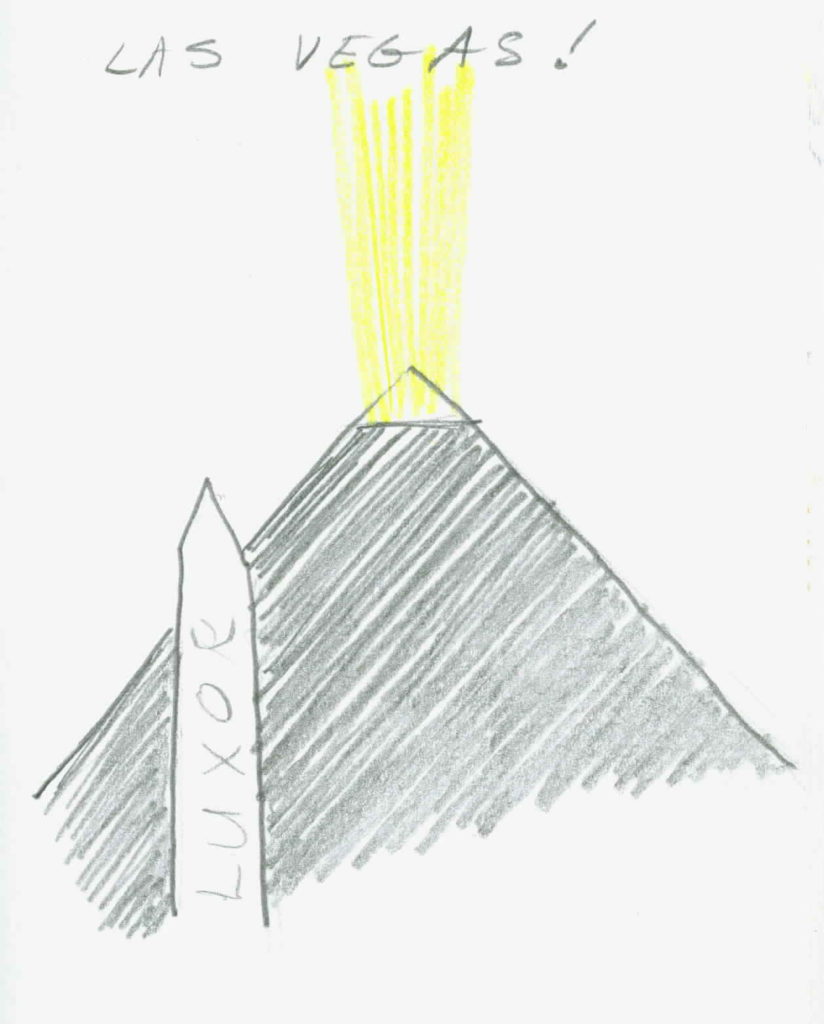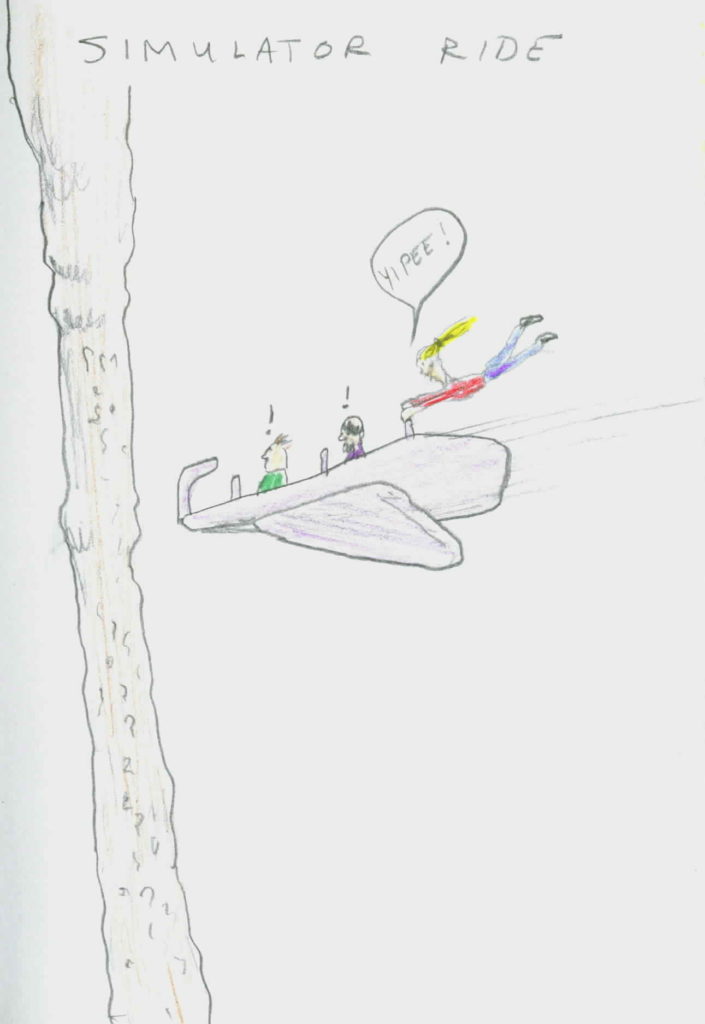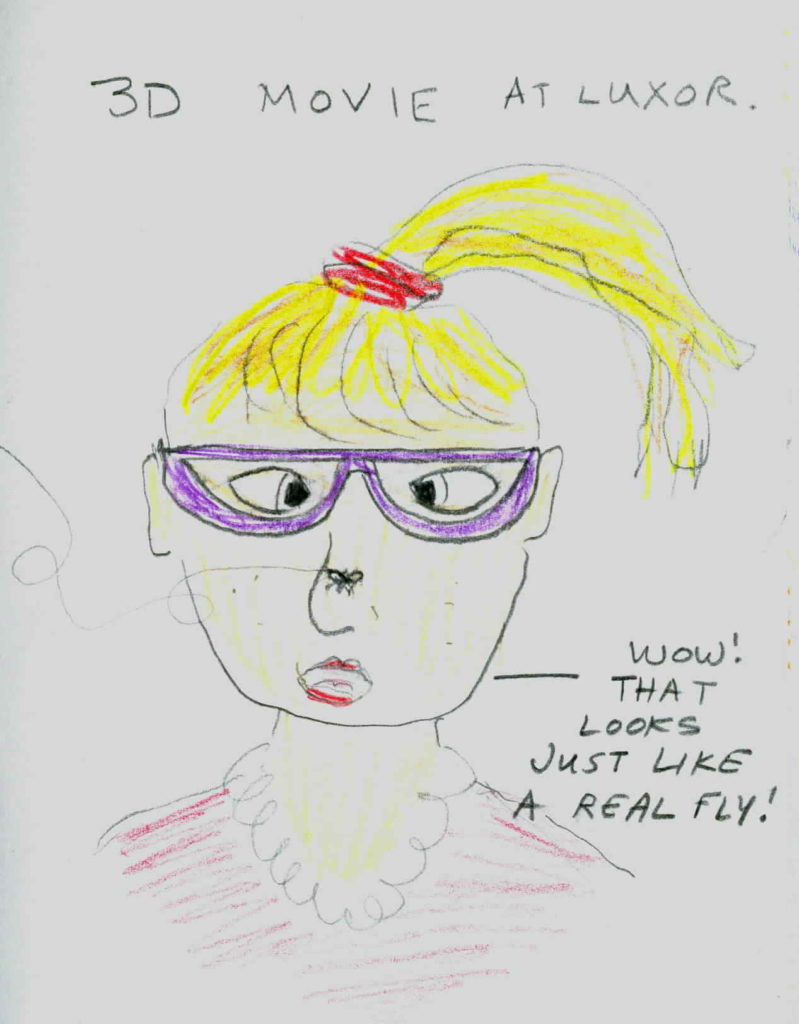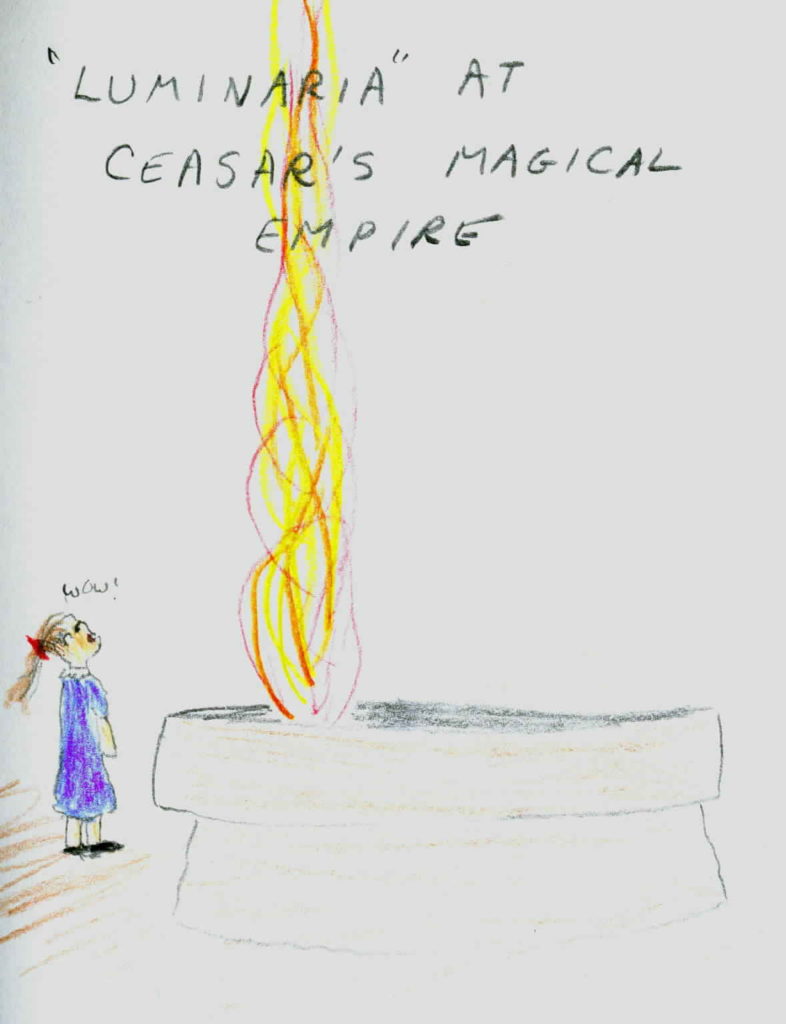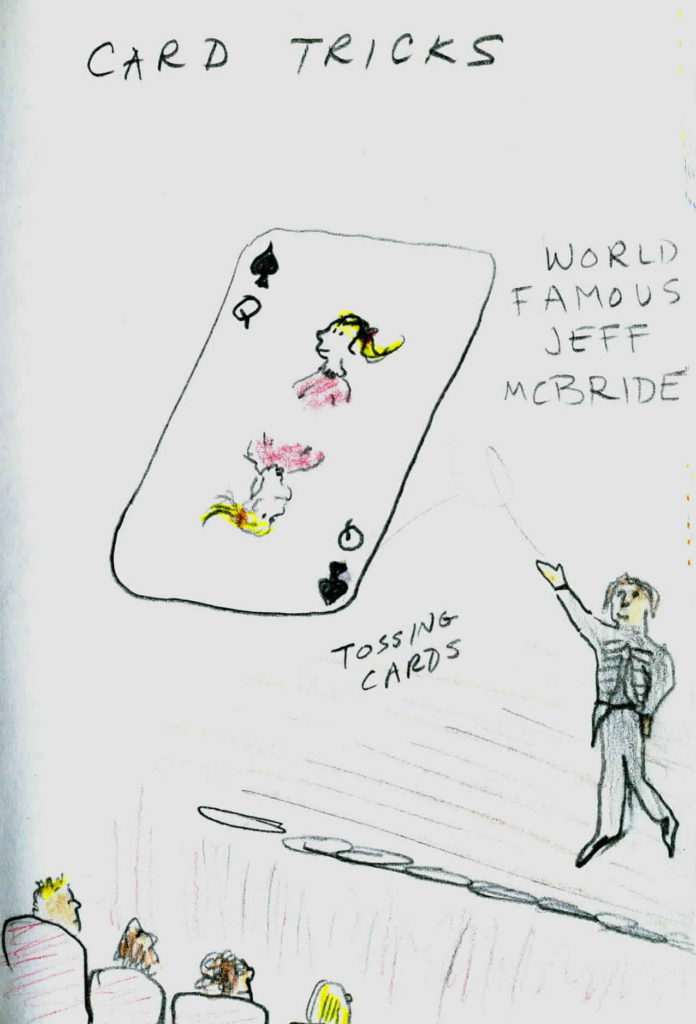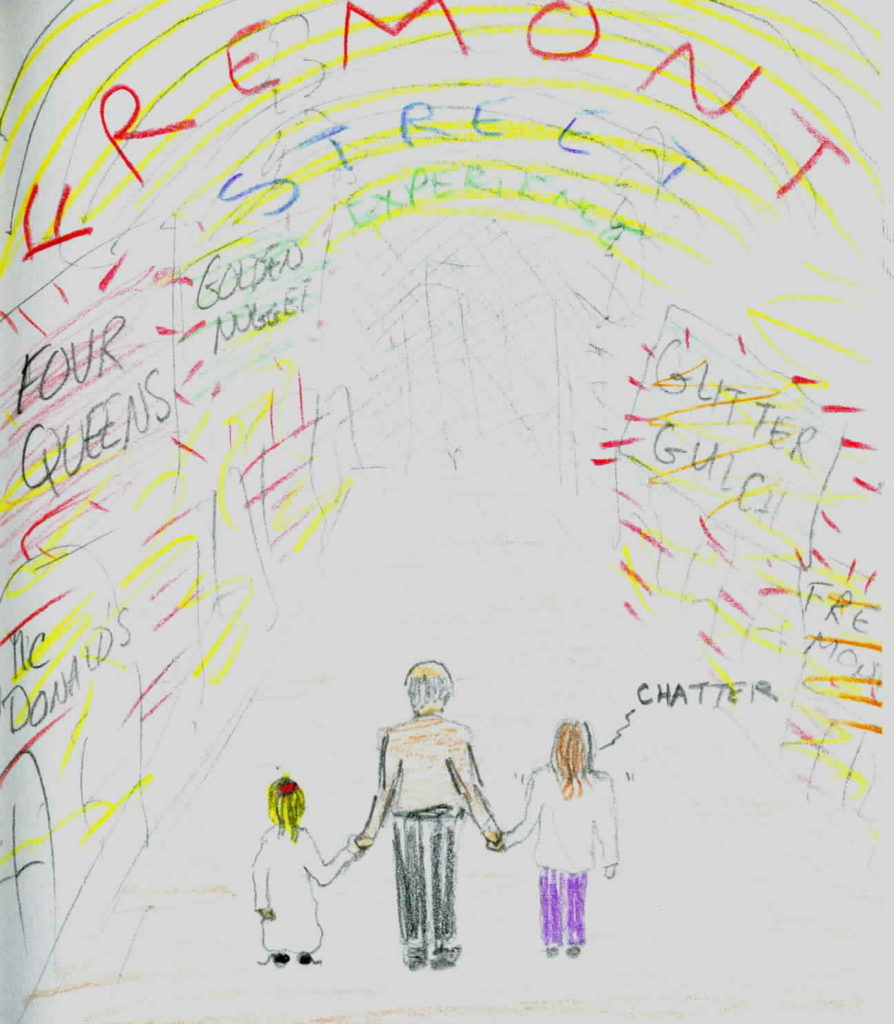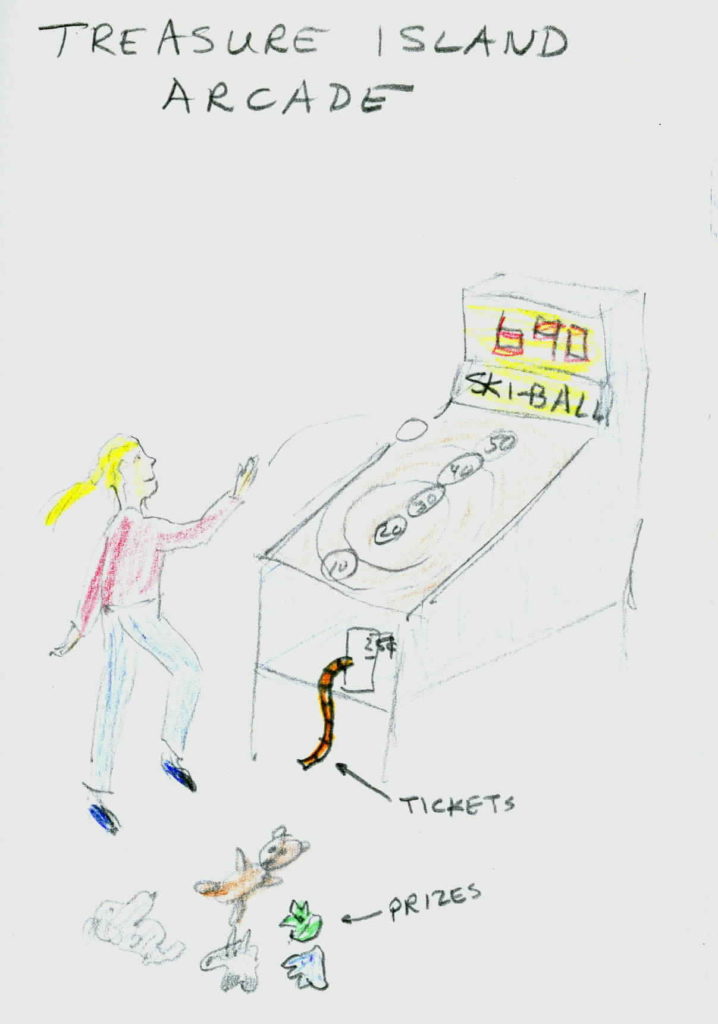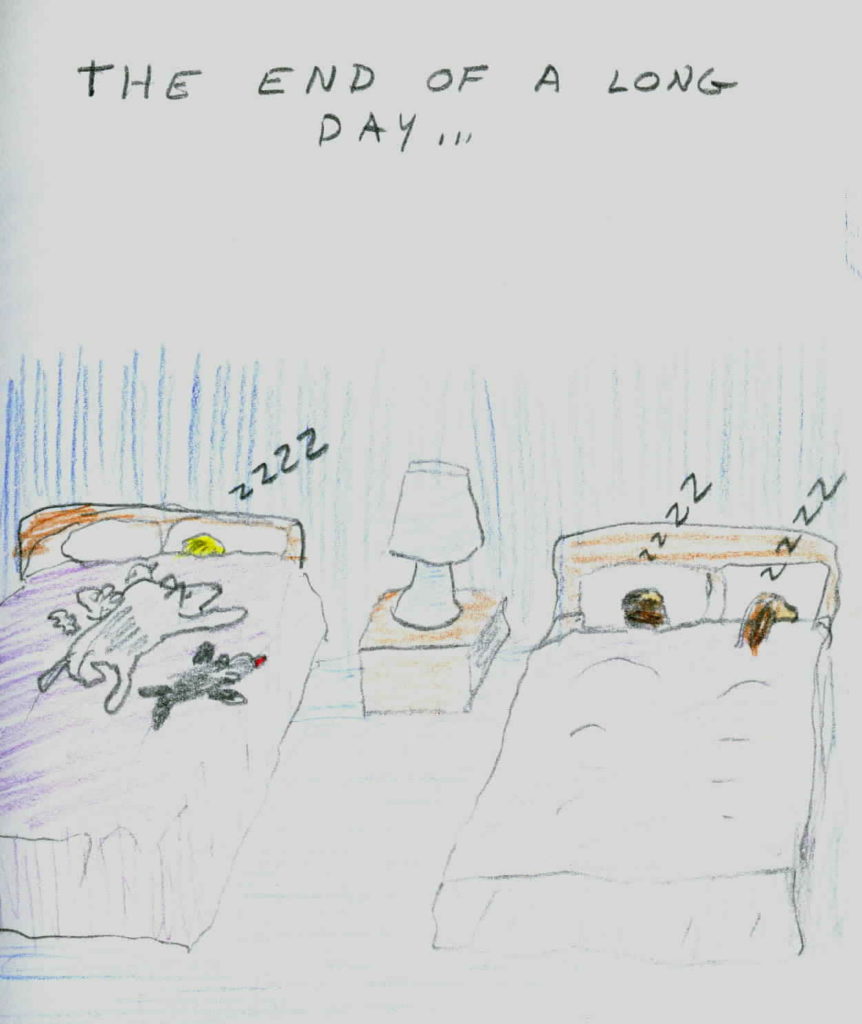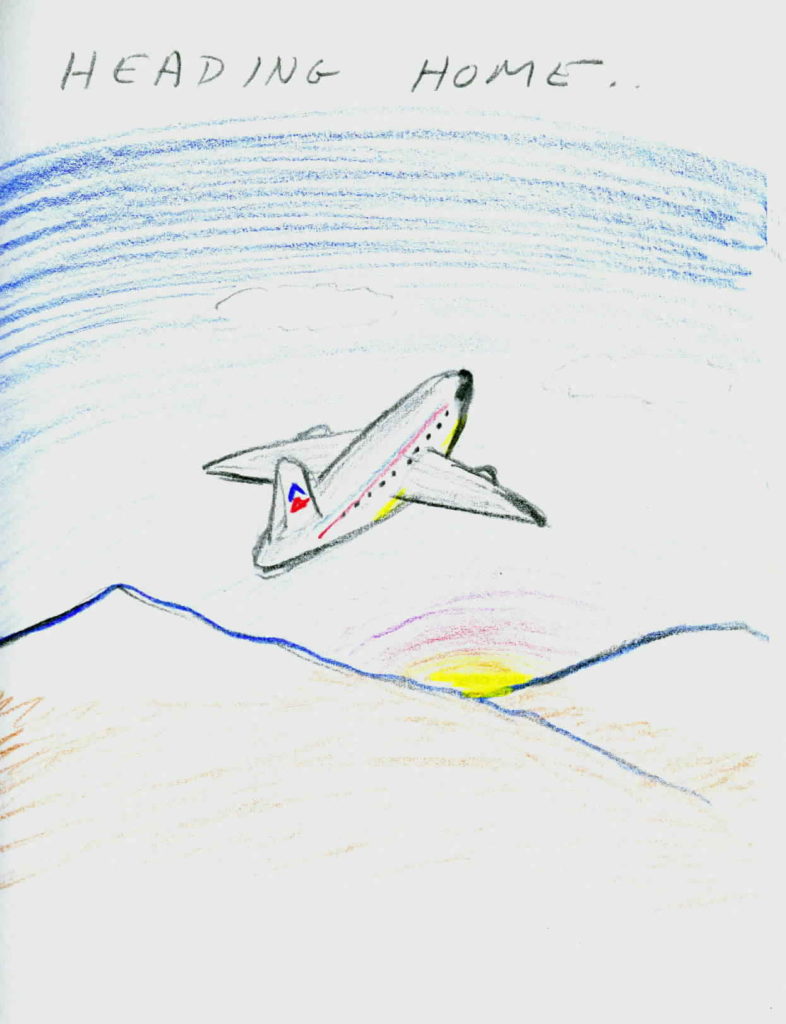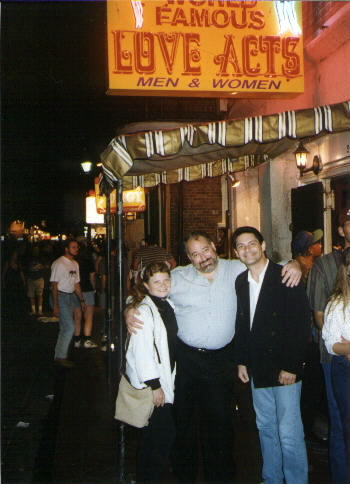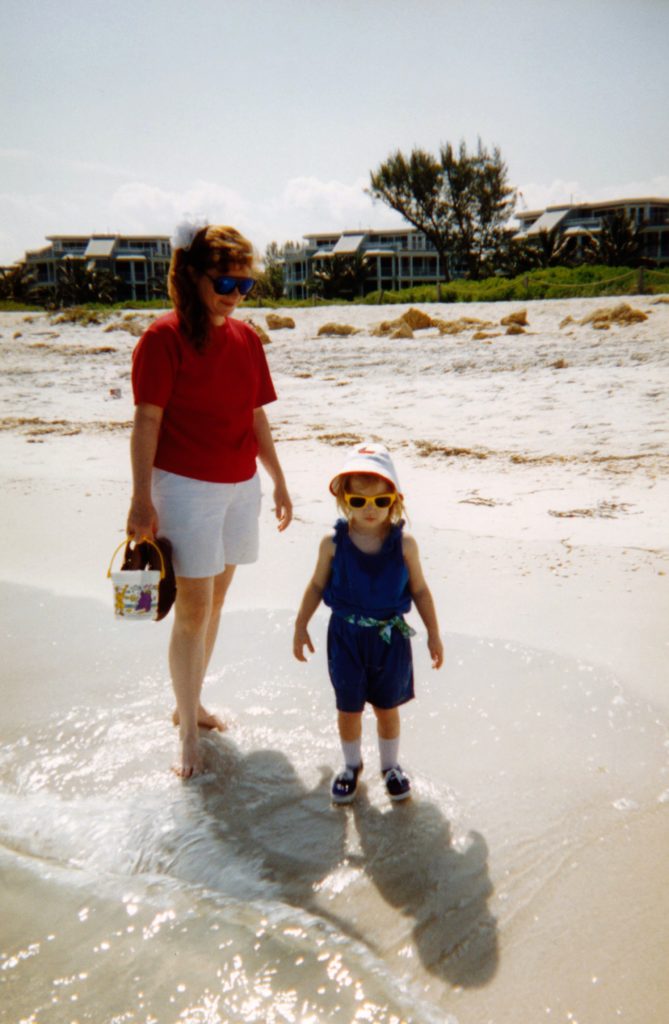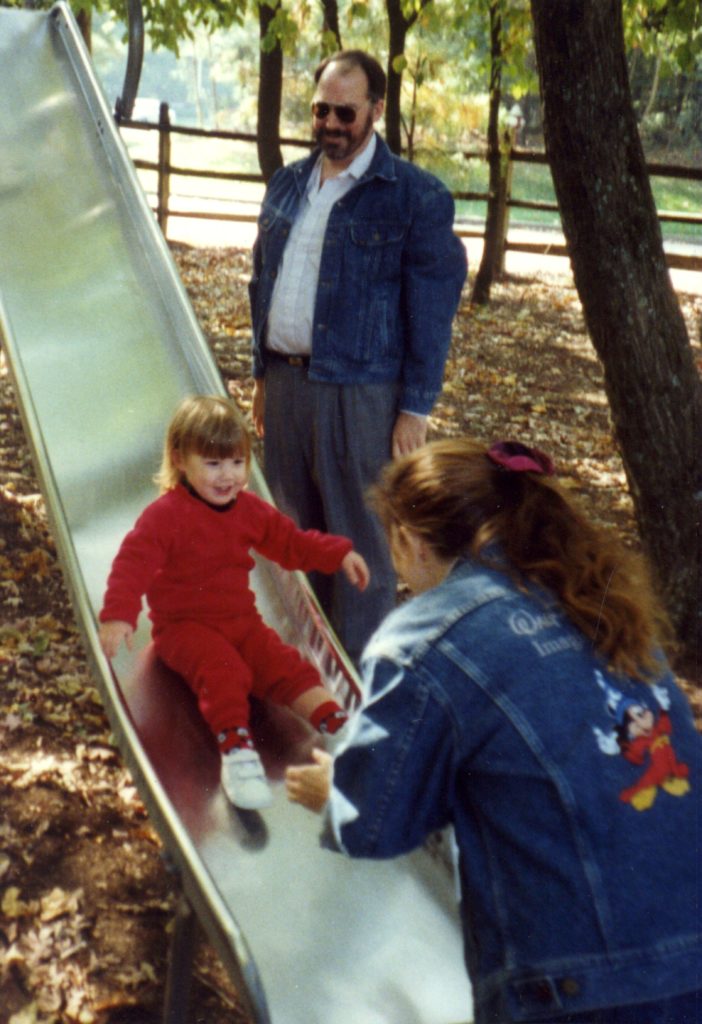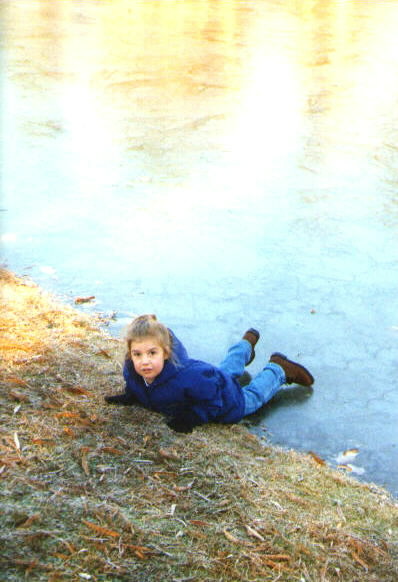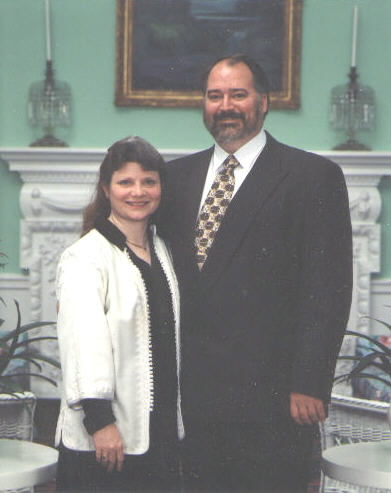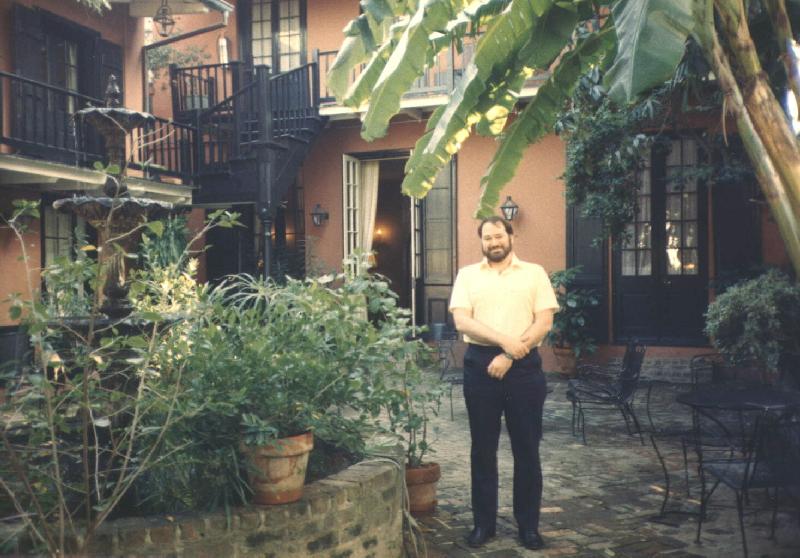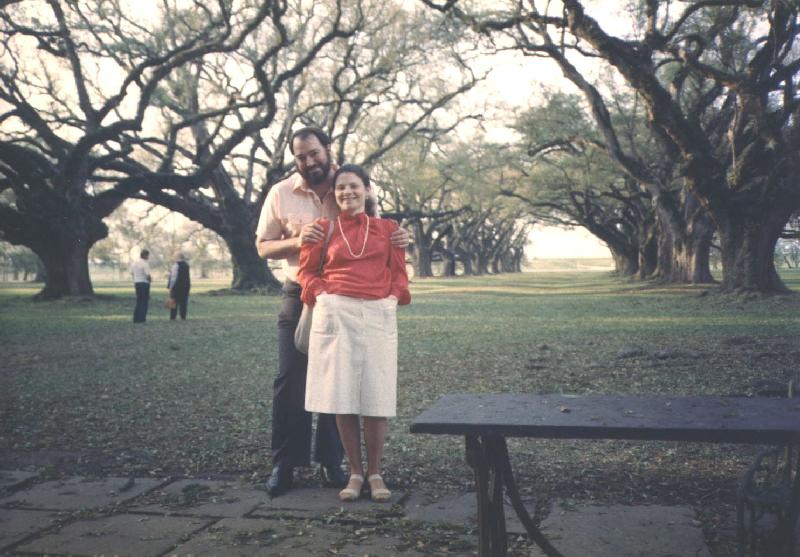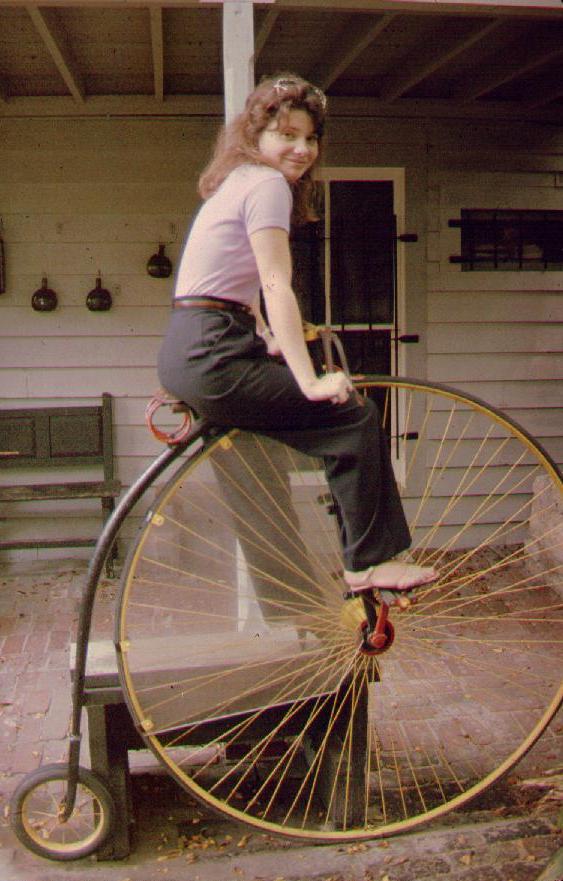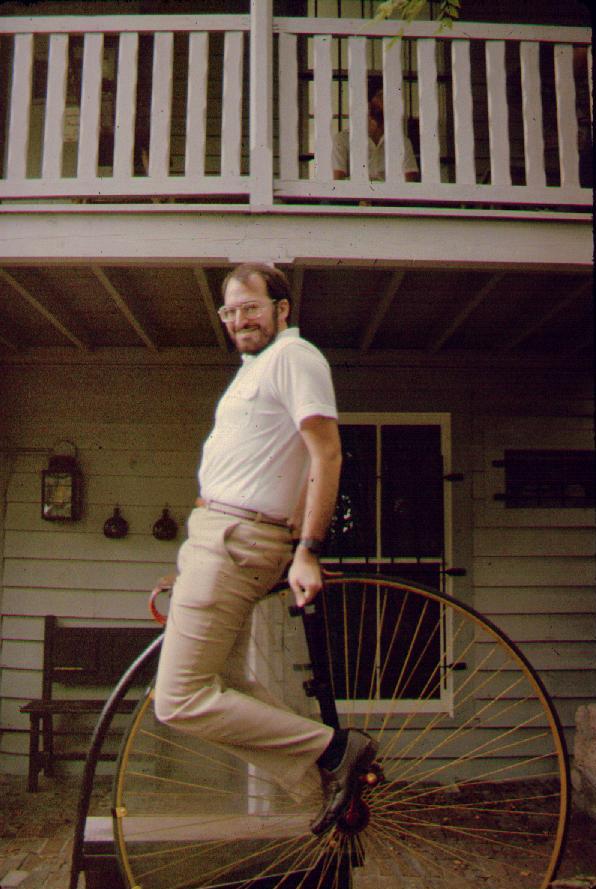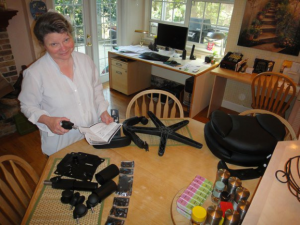 It’s Memorial Day, a day when we honor those who’ve given their lives for this country, and Chinese people who manufacture rolling chairs. After lunch at Uno, I took Linda to Staples where she picked up a new chair for her desk in the kitchen. You wouldn’t think a chair would come in this many parts, but she got it together.
It’s Memorial Day, a day when we honor those who’ve given their lives for this country, and Chinese people who manufacture rolling chairs. After lunch at Uno, I took Linda to Staples where she picked up a new chair for her desk in the kitchen. You wouldn’t think a chair would come in this many parts, but she got it together.
Category: North America
A Surprise in the Night
These are some more shots taken around the house using the TX7’s HDR mode.
Last night I was awakened to a scrabbling sound, and woke up to find something on my pillow. I leapt out of bed and turned the light on. Sitting in the middle of the pillow, nibbling on it unconcernedly, was a mouse. He seemed completely unperturbed by my movements and the light. He calmly continued nibbling as I opened the door and gave him a pillow ride outside. I finally had to push him off the pillow to get him to say goodbye. I’ve had pets that weren’t as tame as that mouse!
New Camera, New Journal
I thought it would be fun to keep a journal this summer, since I’m planning to travel this summer, and to spend much of it with Dani, in Evanston, Illinois. So I downloaded a journal writing application to see whether or not I can use it, combined with Dragon Dictation in order to make it easy to create a journal and include pictures of what I do everyday. I’ll be using the iPad, which has proven far more useful than I expected, and also a new Sony DSC-TX7 camera.
So this is my trial run, to see if these tools work together.
Last weekend a thunderstorm snapped off some of the dead trees in front of our house. Defying Murphy’s law, they landed neatly by the side of the driveway, ready to be picked up.
The Sony DSC-TX7 is a lot like my previous TX1, but has an HDR mode that produces great color depth and contrast range by shooting two exposures. These are some shots I took around the house.
Caribbean 2008
Miami • Aruba • Panama Canal • Limón, Costa Rica • Grand Cayman
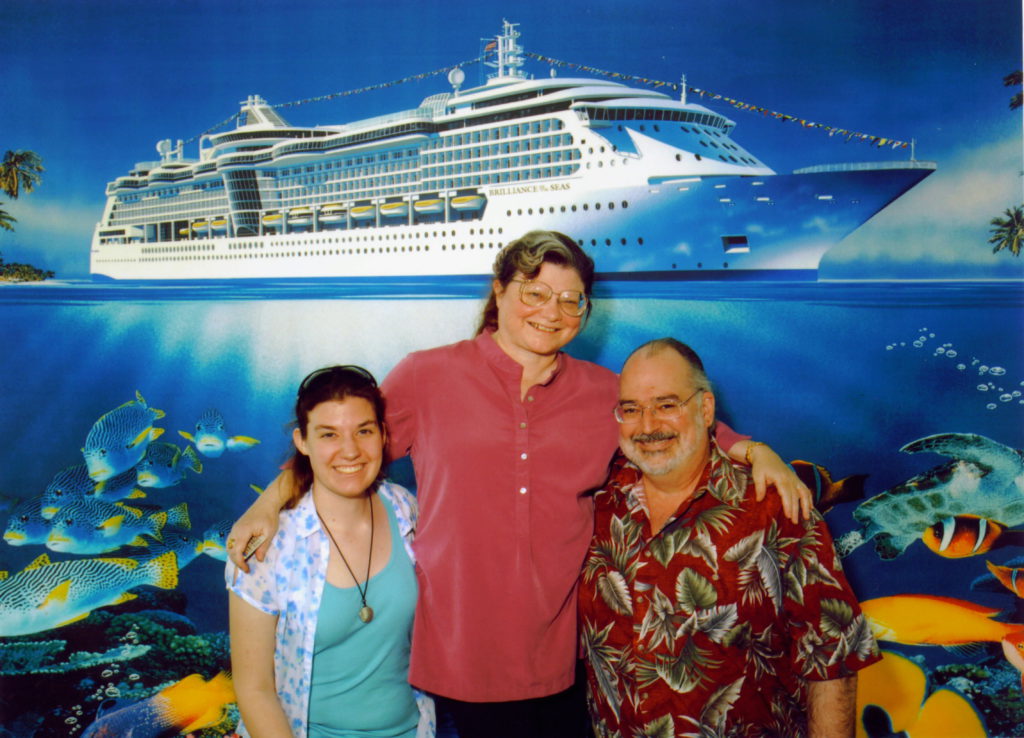
Miami
Friday, March 14, 2008
Since Dani was sick for most of our 2005 spring break trip, we decided to repeat much of that itinerary on a different ship. Besides, it was the only cruise that fit into our schedule and didn’t go to all the usual places. And Aruba will be new for us.
We rose early and drove to Miami, arriving before noon. Dani wanted to get a copy of Margaret Atwood’s The Robber Bride, so after ascertaining that no one in downtown Miami can read (therefore no bookstores) we drove to a Barnes Noble in Coral Gables which happened to be around the corner from a French place we like, Brasserie Halles. A few books and some cheese later we headed for the port where boarding Royal Caribbean’s Brilliance of the Seas was quick and easy.
The ship is more or less the same size as the Coral Princess, it’s width — PanaMax — being defined by the Panama Canal. It’s much smaller than the other Royal Caribbean ships we’ve been on, so we’ll have to make do without the ice skating rink.
We booked two cabins this time, a junior suite for me, and a hovel in the bowels of the ship for Dani. At least it’s an outside hovel. Because Dani is too young to have her own cabin, Linda is theoretically staying there with her. I’m trying to imagine it. . . !
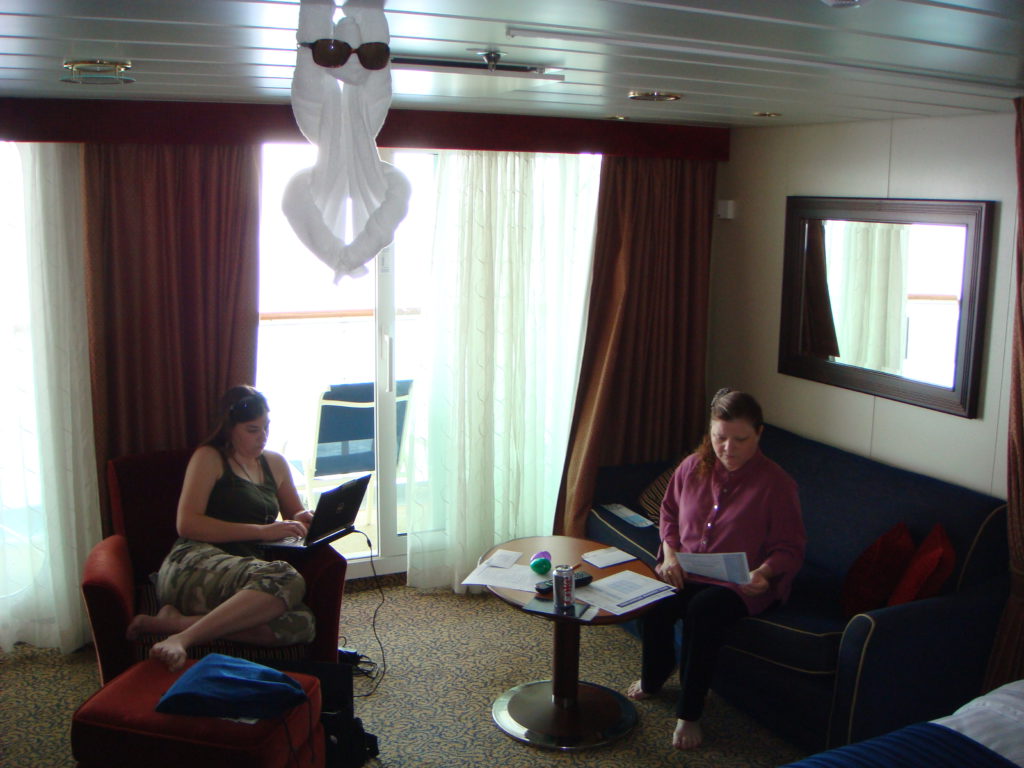
I like the more intimate size of this ship, and it has an interesting asymmetry to it, with glass elevators on one side and a single sided promenade in front of the specialty restaurants, much like on the Coral Princess. The passenger makeup is surprisingly old. I guess all the kids were on the larger Royal Caribbean ship that left port before us.
Susie and Rusty — those traditional Philippine names — were really friendly in the champagne bar, and the food seemed a bit better than on previous Royal Caribbean ships, whose cuisine I’ve rated at the bottom of all the lines we’ve traveled.

Royal Caribbean still uses assigned seating in the main dining room. Out table is shared with a family from Mexico, who seem quite nice. We have a lot of reservations in the specialty restaurants, so we might not see too much of them.
At Sea
Saturday, March 15, 2008
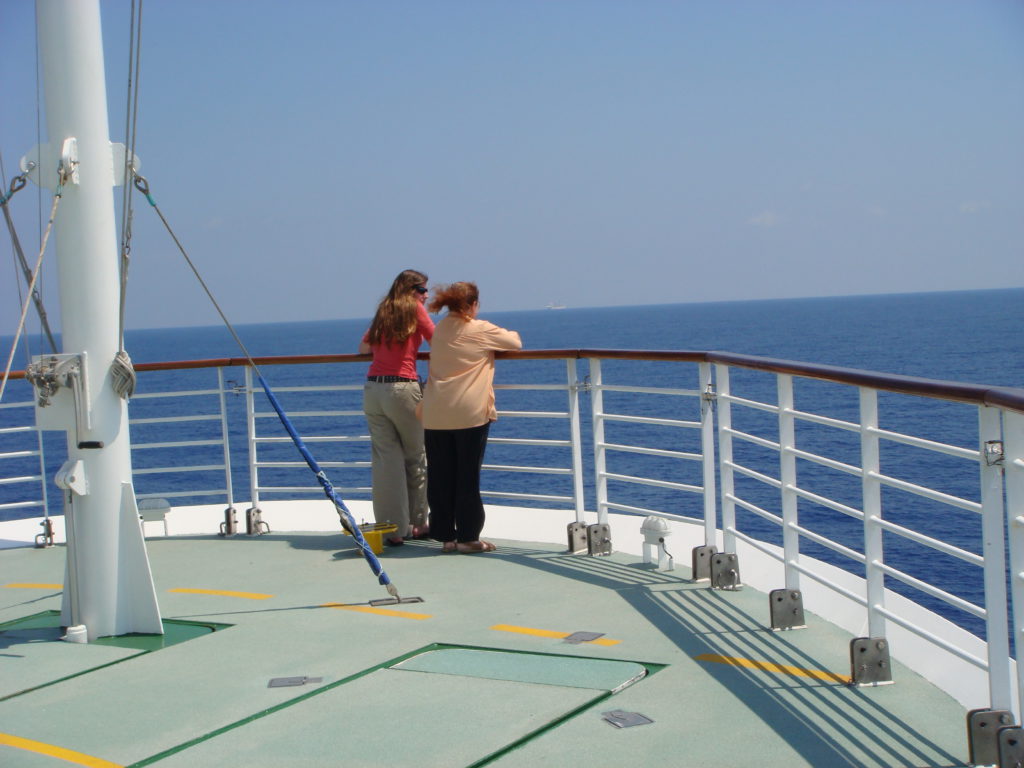
Brilliance of the Seas is the first cruise ship we’ve been on where passengers can get to the prow. It was very neat leaning over the railing and watching the azure sea vanish beneath the ship.
Dani spotted something skimming over the surface of the waves below us. At first we thought it was a bird, but then we realized it was a flying fish. I had never realized that they really do fly. As long as they’re headed into the wind, it seems they can stay aloft for a half minute or more, and they could easily out pace the ship. Their silver green bodies looked somewhat alien, and their “wings” reminded me of hang gliders.
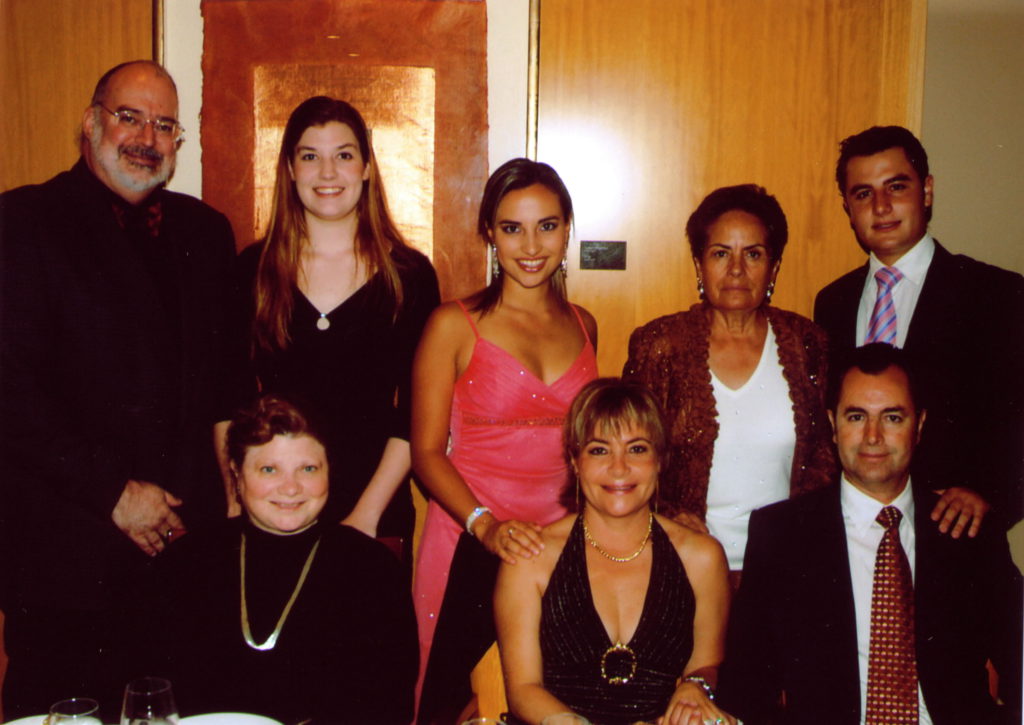
It was formal night, We had a lovely dinner with our friends from Mexico and then went to a ‘contemporary’ Broadway show. Funny, I’d never regarded Cole Porter as a contemporary. It was actually fascinating to watch the slightly talented cast struggle to stay with the slightly talented musicians as they performed a show designed by a wholly untalented director. As Dani said, “If they’d tried harder, the couldn’t have sucked more emotion out of each number.”
At Sea
Sunday, March 16, 2008
A lazy day at sea. Although the ship is the same size as the Coral Princess, it seems there’s less to do on board, since they don’t have the ceramics studio or the ScholarShip at Sea educational programs. But it was a good day for reading, writing and relaxing.
Oranjestad, Aruba
Monday, March 17, 2008
Aruba was very different than we were expecting, much more like a desert than a tropical island. An advantage is that it doesn’t get hurricanes, but on the other hand it doesn’t get much rain, either, as a result, there is a lot of sand and cactus, and — incongruously — some really large boulders.
I think this is the farthest south we’ve been in the Caribbean, as we’re only 17 miles off the coast of Venezuela. The island of Aruba is a Dutch colony with an independent government the past few years. The people are descended from natives and Spanish, and speak Dutch, English, Spanish and their own Creole. Despite Dutch being the official language, there was little evidence of it except in street names. Of course, the major industry is tourism, and 75% of the tourists are from the US, so we were well insulated .
To get an overview of the place, we took The Best of Aruba tour, which seemed to be the choice of the old and infirm. Our first stop was at the Casibari rock formations, where a short set of stone steps — and a bit of a crawl through a hole between the rocks– brought us to the top of a really big boulder. The view from there encompassed three fourths of this nineteen by six mile island, but was mostly of sand and Oregon pipe cactus. It was cool crawling through the crack, though.
The next stop was at the natural bridge, which, in quite a natural way, fell down in 2005. There is a smaller one still standing nearby, with a big danger sign next to the giant crack. Most of the tourists seemed to ignore this, though, and stepped right over onto the crumbling outcrop. I mean, it’s too big to fall down, right?
We stopped at Aruba Aloe, a surprisingly tiny factory where they make a wide range of products using — you guessed it — aloe. These products are mostly packages the same two ways, do to the fact that the factory has only two small bottling devices. We learned that aloe is good for cuts, sunburn, dry skin, hair conditioning, stomach ailments, losing weight, age reversal and reducing the national debt — of Aruba, anyway.
Our final stop was a the California lighthouse, so named because it was erected on the spot where a ship named the California wouldn’t have run aground if there had already been a California lighthouse there.
Then about half the group was dropped off at a mall, and the rest of us were dropped off near the cruise ship. This area is called “downtown” although it’s really just a street of tourist shops and government offices, with a lot of noisy traffic. We had a tasty lunch upstairs in an open air restaurant named Iguana Joe’s, and then retreated to the ship.
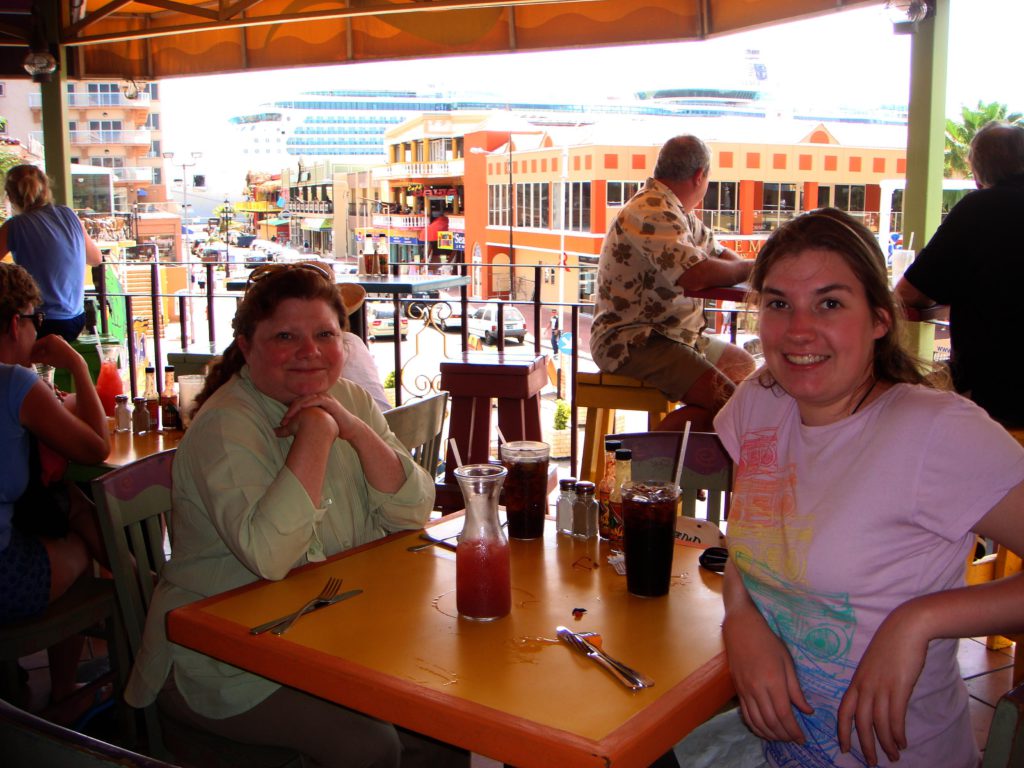
Overall I was disappointed in Aruba, because I was hoping it would be less the touristy Caribbean port and have more of its Dutch heritage in evidence. I suppose it’s great for beach lovers, but otherwise a three hour visit seemed plenty.
At Sea
Tuesday, March 18, 2008
A quiet day at sea. The cruising was surprisingly smooth, considering the 7-10 foot seas, but they were coming from the stern, and just seemed to hurry us on.
In the evening we attended the Murder Mystery Dinner Theater, held in the Colony Club and Portofino Restaurant. Six members of the entertainment cast acted out parts in a comedy murder mystery. During dinner we had a chance to interview each character for clues, and then a prize was awarded to one of the guests who had the correct solution. The acting was quite good, and the characters were very entertaining. It was probably the highlight of the onboard experience.
Panama Canal
Wednesday, March 19, 2008
We began our approach to the canal about 6:30 AM. Although it turned out we could have taken either side since they were both running the same direction this morning, my selection of a Starboard cabin proved to be the correct choice, and we had a great view of the locks from our balcony. An added bonus was that a US Navy submarine made the transit in the adjacent locks, complete with armed escorts. Pretty cool.
The Internet was down most of the day, which was a bit aggravating since it’s the first day of new ed2go classes, but it came back up in the late afternoon. We docked briefly to pick up passengers on shore excursions, but I skipped the two hour visit to the flea market that’s operated by half naked natives. Linda and Dani bought traditional native goods: carved wood, painted feathers and a bent license plate.
We had a nice dinner at Chops Steakhouse, the nicest restaurant on board.
Limón, Costa Rica
Thursday, March 20, 2008
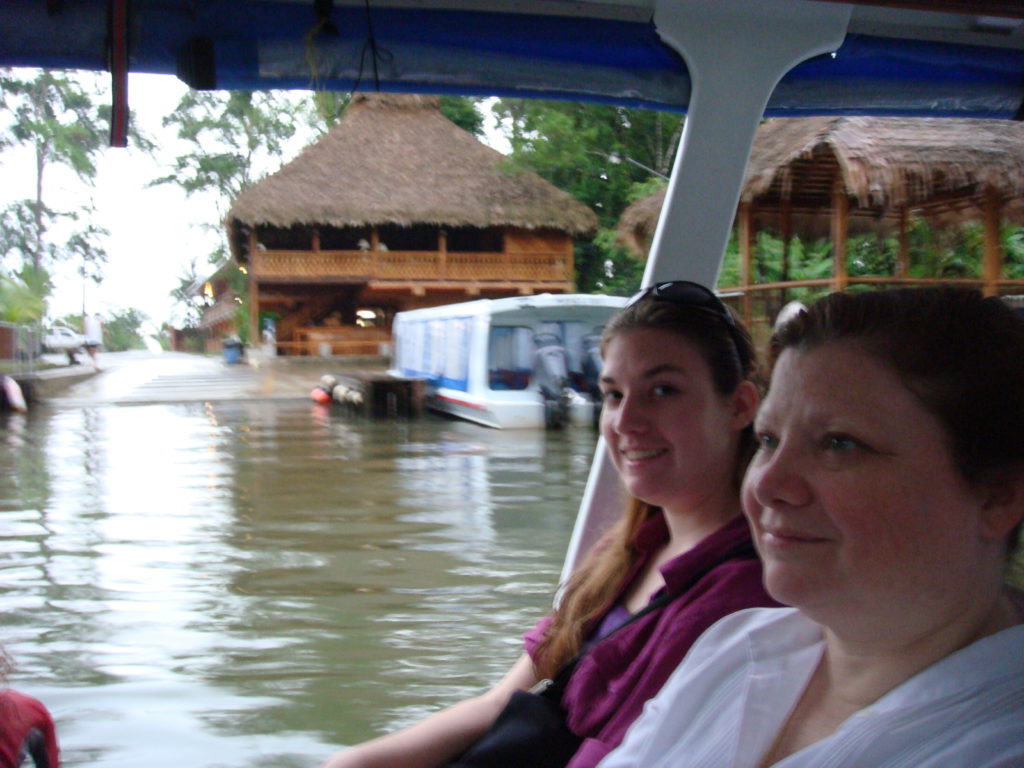
Today we more or less retraced our steps from a tour three years ago, visiting the aerial tram in the rainforest that’s about two hours west of Limón. This time we stopped for a boat ride along the way. Our 17 passenger flat bottomed boat navigated a mile of twisty canal through jungle, where we saw a sloth, a small crocodile called a caiman, a sloth, monkeys, and a Jesus Christ lizard, so-named because it runs on two legs across water while waving it’s front legs like a girl, just like Jesus.
The rainforest was, indeed, rainy when we arrived, but held off for our glide through the treetops. We had a traditional Costa Rican lunch — rice and beans, of course — before taking a nature walk.
Our guide for the walk was extremely interesting, and pointed out dozens of things we would have missed, accompanied by fascinating explanations. The most interestering were the leaf cutter ants, who carry chunks of leaves back to their nest where they use them to grow a fungus that they eat. On top of some of the leaves are smaller guard ants, whose job is to keep a fly from laying an egg on the leaf. The eggs turn into worms that eat their fungus.
After the walk we boarded the bus for the 90 minute drive back to the port. Even though Limón itself is pretty much a dump, I really like Costa Rica. The people take great pride in their stability, health care and educational systems, and lack of an army. And it’s neat being in a place where anything that falls on the ground grows.
One interesting aspect of Costa Rica is the way addresses work. A typical address might read: “From the church go 400 meters north and turn right. After 200 meteres turn left at the store and it’s the third house on the right with the yellow door. ” Needless to say, mail delivery in Costa Rica takes a long time.
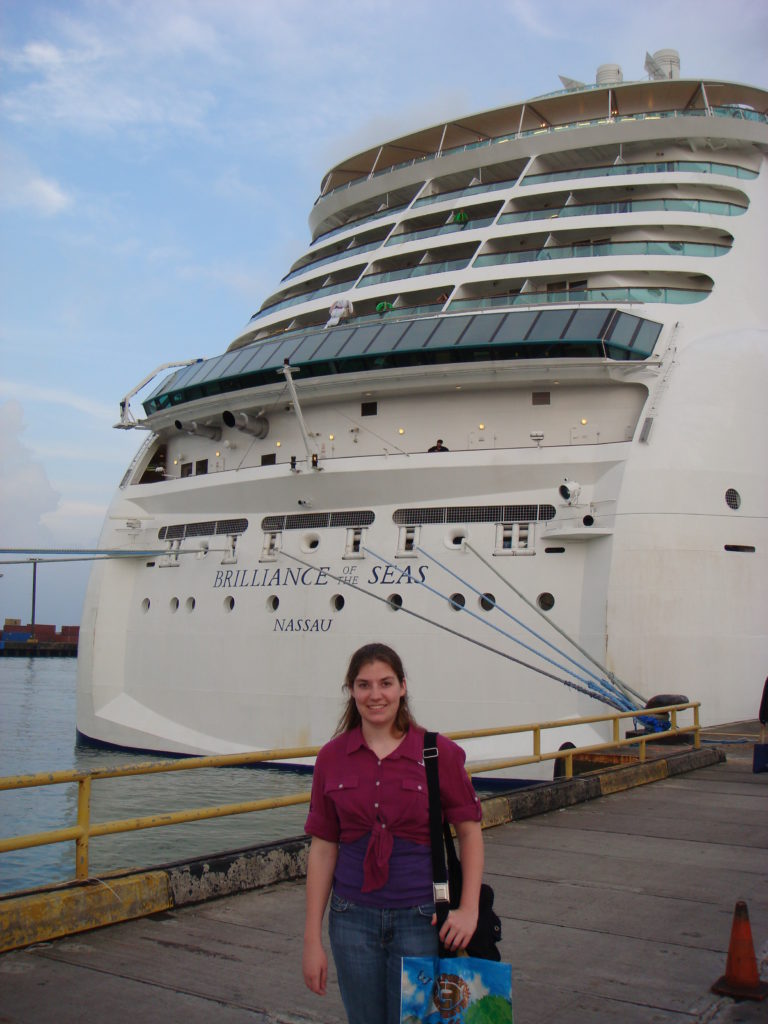
Linda and I had dinner at Portofino, where everyone wanted to know what happened to Dani, who decided to relax and have room service in her cabin.
At Sea
Friday, March 21, 2008
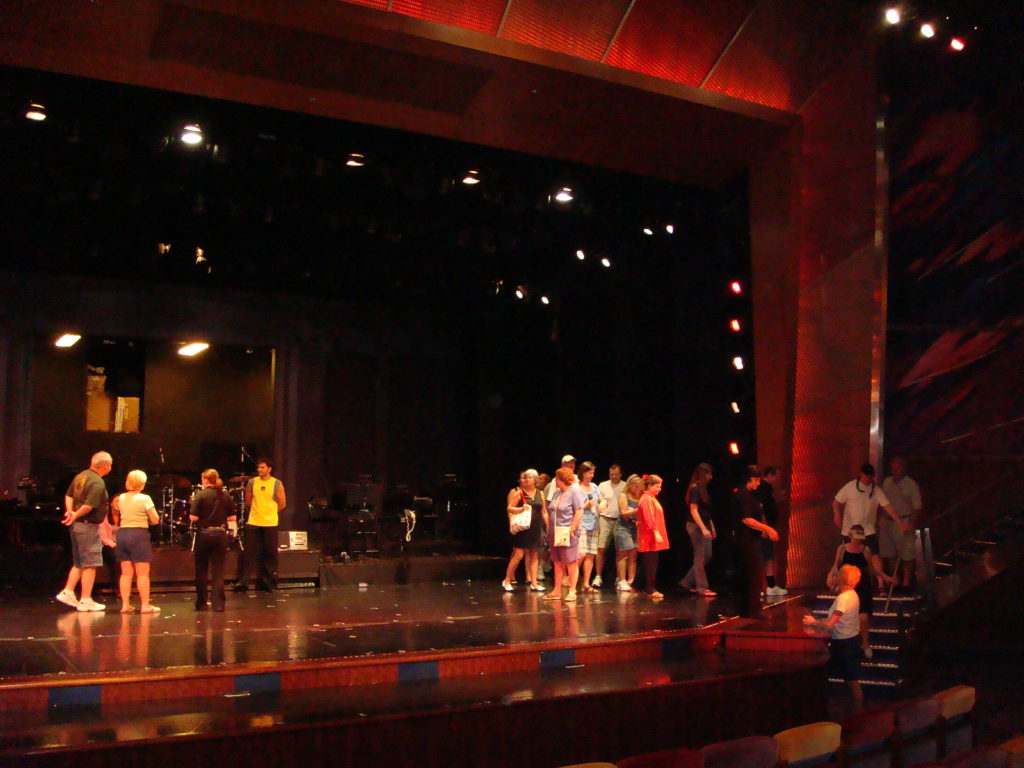
We went on a very interesting backstage tour of the ship’s theatre today. It gave us a chance to visit the lighting booth, sound booth, stage, and dressing areas, and listen to presentations by technical personnel, stage hands, and performers. I was nice to see Alcorn McBride IO64s in the lighting booth, although the lighting technician didn’t really seem to know what they did. There was also a Richmond Stageman system and two lighting boards. The 52-channel mixer is large, analog, and unautomated.
Dani and I discovered that the best lunch onboard is a the Seaview Cafe, a very small table service restaurant at the back of deck 12. It looks like it was designed to be counter service pizza, but now it has about half a dozen tables. Its obscure location and the fact that it doesn’t open until afternoon keep it from being crowded.
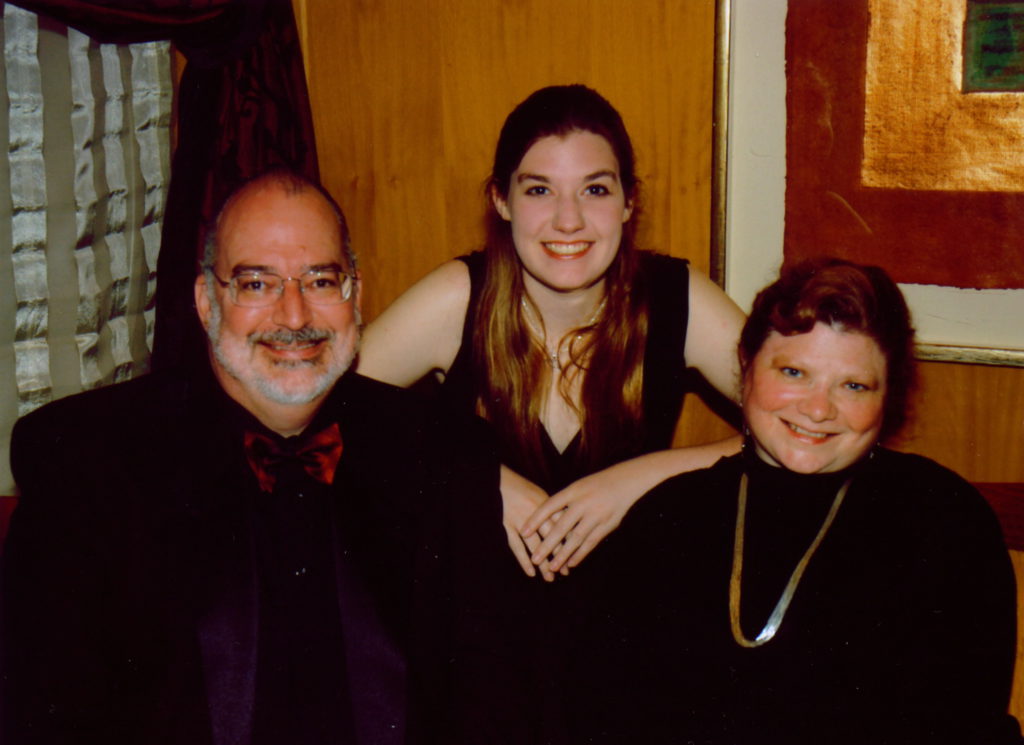
We rejoined our dinner companions in the main dining room for the traditional formal night lobster dinner.
Grand Cayman
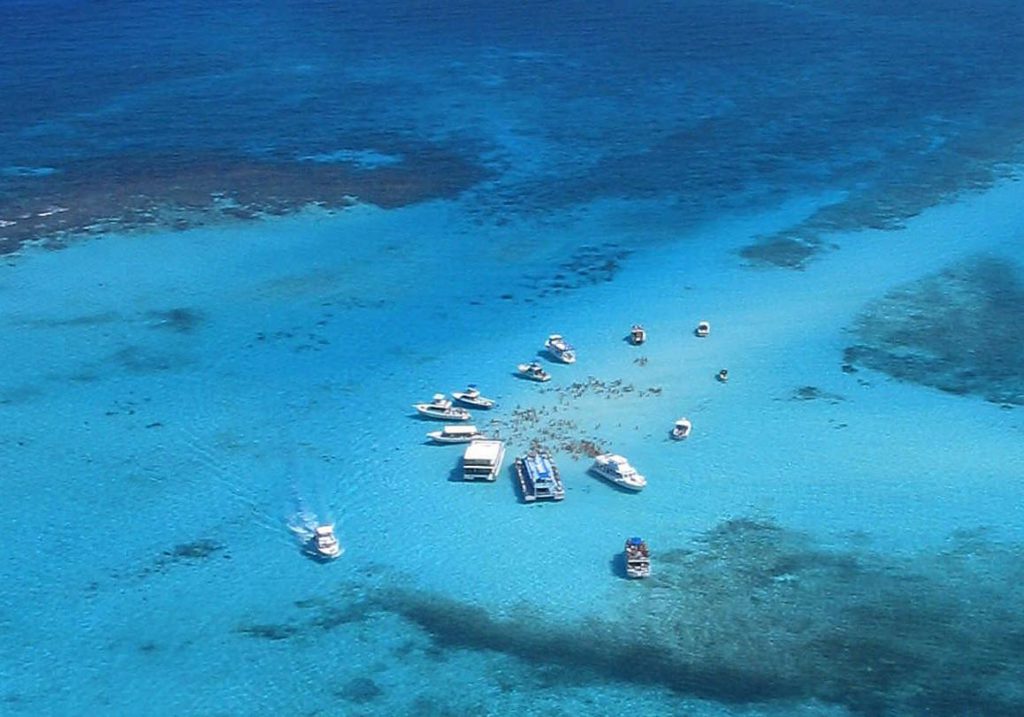
Saturday, March 22, 2008
Today we had the best Caribbean shore excursion ever. Dani and I took the tender to the island and then a van to the far sight, where about forty of use boarded a dive boat. After a 45 minute trip we arrived at Stingray City, a sandbar that is home to hundreds of stingrays. Wading around in the waist deep water, we fed, petted, held and kissed(!) the stingrays for close to an hour. The stingrays really seem to enjoy being held, at least once they’ve been fed.
We learned that the large dark ones are females, and the smaller gray ones are males. The males have a unique characteristic: two “willies,” as our guide put it. I’m not sure why this is useful, but it conjures up some interesting possibilities.
Our second stop was nearby, at the barrier reef, where the coral and fish varieties rivaled those of Australia. The snorkeling was easy in the three to ten foot deep water. Our guide coaxed a moray eel from its hideout, which was pretty exciting. I’d never seen both ends of a moray eel at the same time!
This was the same trip I took three years ago when Dani was too sick to go, but what a difference the guides made! There was so much hand-on time with the stingrays on this outing. The trip was also very professionally photography and videotaped. The photographer made CDs right on the boat, and the videographer edited in music and delivered professional DVDs to the ship before we sailed. If I could only do one outing in the Caribbean, this would be it.
We had dinner in the main dining room. Our friends from Mexico didn’t join us because the grandmother — who has Alzheimer’s — wasn’t feeling well. They didn’t miss much, as almost everything on the menu tonight was fairly awful.
At Sea
Easter Sunday , March 23, 2008
After several rocky days at sea due to up to 40 knot cross winds, today was very smooth because we had a 5 knot tail wind. We’re averaging over 20 knots to make the 600 miles back to Miami by early tomorrow morning.
This afternoon we attended an interesting presentation by the Captain and Chief Engineer about the operation of the ship. It’s powered by dual turbines spinning at 7500 rpm, which generate many Megawatts of power to drive the two azipod outboard propellers, which can each rotate 360 degrees. The high speed of the turbines explains why there is absolutely no engine vibration on this ship.
The Captain indicated he didn’t think any more cruise ships would be built this way, because although the small size of the turbines allowed them to add 50 cabins, they require fuel that is now more than twice the cost of regular diesel sludge. In fact, the ship is going into dry dock in two months to have a hole cut in the side and a diesel generator added for times when power requirements are low, such as when they are in port.
Miami
Monday, March 24, 2008
We arrived in Miami before dawn. Total distance sailed: 3,200 nautical miles.
We disembarked at 8:30 and made great time on the drive home, and were back before 2pm, including a stop for lunch. .
Things to remember for next time
Royal Caribbean food is a rung below NCL and Princess. It also seems like there aren’t a lot of food venues. It’s mostly concentrated in the Windjammer buffet. They seem to be reaching to appear to additional venues: The Solarium Cafe is six saran-covered plates of pre-made sandwiches and a thermos of coffee!
Internet access of this class of ship is poor. The cabin jacks don’t work, and expensive wireless is available only in a few areas.
There’s not a lot to do on the Brilliance of the Seas class if you’re an adult who doesn’t want to lie by the pool or gamble. I miss the Princess art and education programs. The larger Royal Caribbean ships also offer more variety, with their interior main street. .
The entertainment on this ship was mediocre at best, except for the Mystery Dinner Theatre, which was wonderful.
Aft on deck 10 turned out to be a less than optimal cabin location on the Brilliance of the Seas, not because it was aft, but because it was under the Windjammer, with its constantly moving chairs and carts of dishes and dropped silverware. Earplugs were a definite must at night.
Panama, Limon and Grand Cayman are all interesting ports. Aruba is not. It’s a poor exchange for Belize’s cave tubing, which was on our previous itinerary in its place.
Stingray City in Grand Cayman is the best shore excursion in the Caribbean.
New England 2007
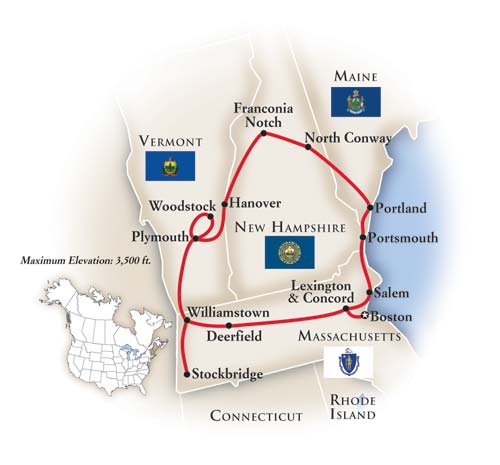
Boston
Sunday, October 7, 2007
The flight from Orlando was uneventful, although the lines at security were the longest I’ve seen, stretching all the way across the Hyatt lobby. I hadn’t been in Logan Airport’s Delta terminal recently, which is really nice. There’s even a Fudruckers.
I was, frankly, shocked at the sight of the hotel, the Omni Parker House. It is surrounded by scaffolding. That’s the view outside the window, too. It’s amazing to me that Tauck would book clients in here under the best of circumstances, let along during a major renovation.
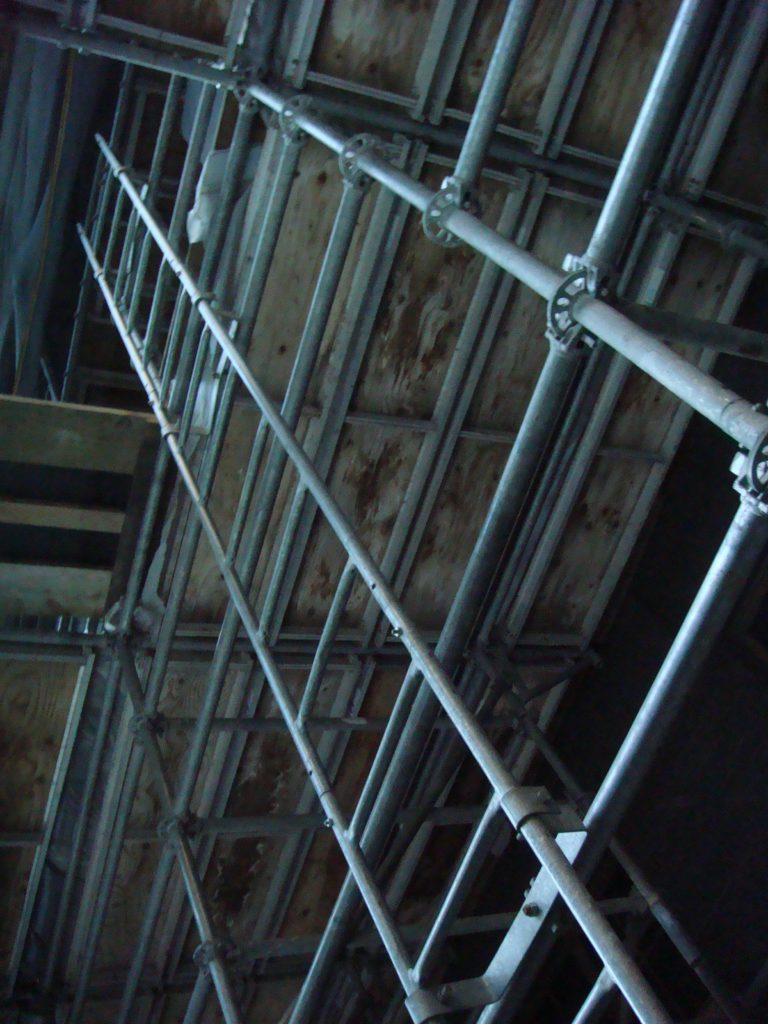
The hotel was built in 1855 and is the oldest continuously operating hotel in America. Unfortunately, 1855 was before the invention of the Internet or the electrical outlet, both of which have yet to arrive in my room. The only flat surface is the night stand, which has on it:
- lamp
- all the non-refrigerated offerings of the mini bar
- hotel directory
- phone
- clock radio
- tv remote
- coffee pot
- glassware
- advertising for other fine hotels in this chain (isn’t this the same chain I hated in New Haven?)
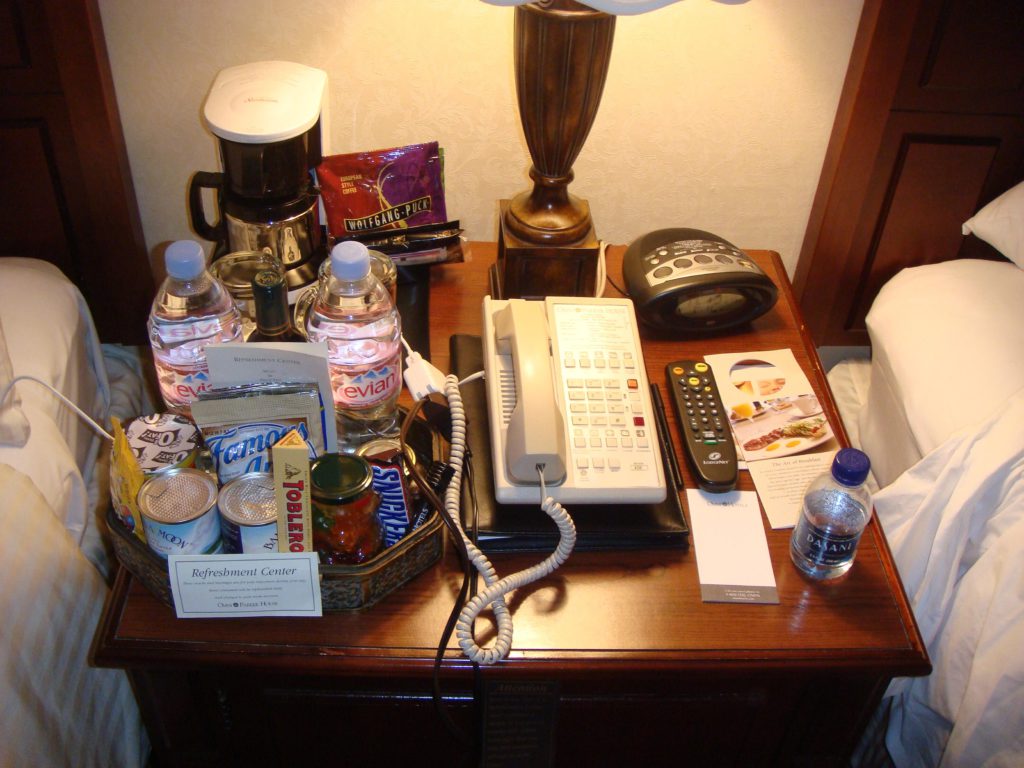
The walls are paper thin, and aside from very expensive linens and a nice lobby, it’s difficult to see any appeal. When Dani and I were here in Boston on her college tour we stayed at the Charles Hotel next to Harvard, which is cheaper and much more comfortable.
After unpacking, I met Pamela Collins, my friend from Australia, in the bar for a drink and to get caught up. It was great to see her again after a year and a half, our last outing being the cruise in Hawaii.
The Tauck welcome dinner gave us an opportunity to meet our fellow travelers, who are an interesting demographic. I’m probably the youngest by a fair margin. Most seem well traveled. Of the 43-person group, six or eight are from the UK, and about ten are from California. The balance are from around the US, including the Carolinas, Mississippi, Texas, Colorado and Wyoming.
Our tour director is Nancy Rowe, who does Alaska in the summer, and New England in the fall. Clearly she must have seniority. The rest of the year she’s a substitute sixth grade teacher, so she’s good at supervising both the young and old.
The food at dinner was banquet fare. It began with gravy-like clam chowder. The beef was a nice cut but ruined with a weird sauce that tasted a bit of mentholatum. A jumbo shrimp that accompanied it was very chlorinated and tired. The hotel’s claim to fame is that Parker House rolls and Boston Cream Pie were invented here, and both were okay.
With no Internet, the iPhone came in really handy for responding to my students’ postings while listening to every word of the neighbor’s soft conversation. I hope my typing isn’t keeping anyone awake.
Boston / Cambridge
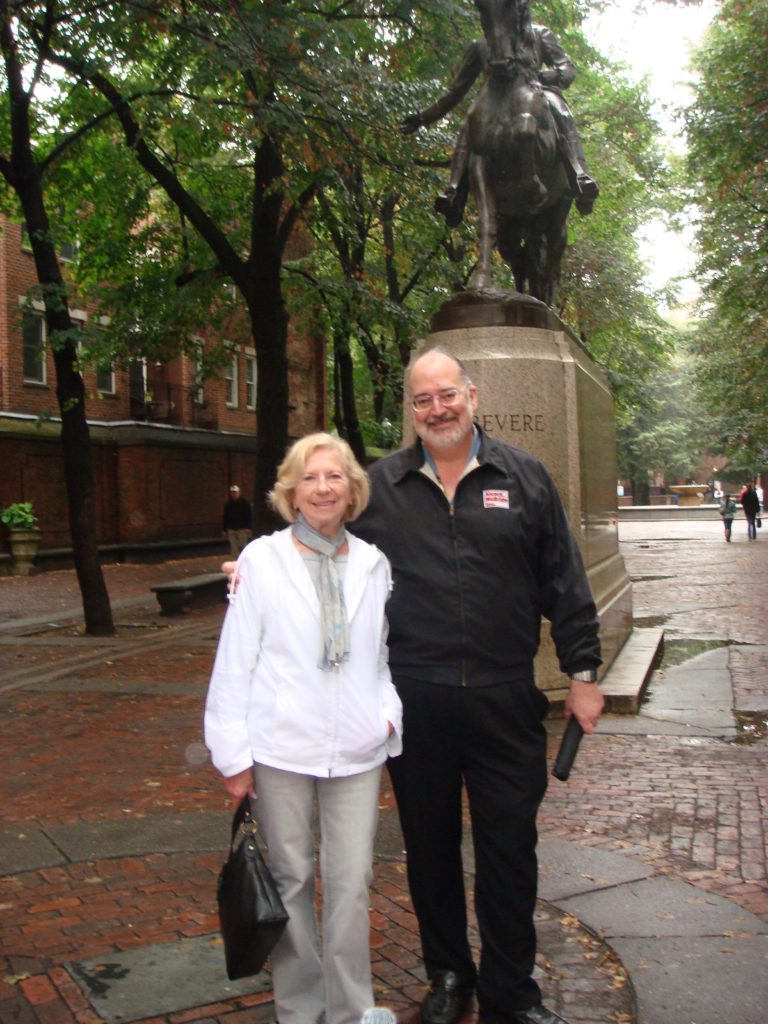
Monday, October 8, 2007
After a fairly appalling “Boston Benedict” (heavy corned beef hash on fried, sweet brown bread with a poached egg and hollandaise sauce) we headed out into the rain for a tour of Boston. We drove a circuitous enough route that we passed Emerson College three times. I found that I was surprisingly familiar with the city after my trip here with Dani to visit colleges in August. One college we didn’t visit then was Harvard, which was our first stop. Fortunately the rain had pretty much stopped by the time we reached the campus. We received a presentation by an energetic sophomore girl, Asli, whose parents were from Somalia (although she was from Michigan). The school is a lot like Yale, and although there is no theater major, I was interested to hear that they have a lot of drama classes, and she knows several students who plan to be actors.
Our second stop was back in Boston, at the Old North Church, where the lanterns in the Paul Revere story were hung. Up the hill was Copp’s Hill Burying Ground, an old graveyard.
We left the bus at an open air (read: tourist) market and walked a few blocks back to the hotel, stopping at Borders for coffee.
After an afternoon nap we took a taxi back to Cambridge for a nice dinner at Sandrine’s, an Alsatian/French restaurant Dani and I discovered in August, where I spent most of the meal explaining the plot of Wicked to Pamela. She’s very patient.
Lexington / Concord / Salem
Tuesday, October 9, 2007
Contrary to predictions, Tuesday dawned bright and clear. We took a short drive west to where the first skirmish of the America Revolution occurred, and then followed Paul Revere’s ride on toward Concord, where the first battle occurred. Both are small towns with parks and monuments that commemorate the events. An amazing number of famous authors also come from Lexington.
All along today’s route we passed colonial era houses, and even some dating back to the mid 1600s.
A thirty mile drive northeast brought us to the coast, and the town of Salem. Having already been well-schooled in the history of the witch trials during Dani’s appearance in The Crucible, Pamela and I chose to spend our time walking around the town. It’s essentially a square mile of tourist shops selling witch paraphernalia. There are also some cute old houses. We had lunch at a restaurant on the pier called Victoria Station, which I think is a survivor of the 1970s chain.
We then drove out of Massachusetts and along the entire coast of New Hampshire. This didn’t take long, since it’s only 18 miles long. It became increasingly rocky as we approach New Hampshire’s only port, Portsmouth, where we are spending the night a a Sheraton. The large rooms, desks and Internet are a welcome relief after the Omni Parker House.
Congress Avenue is the main street, and is about four blocks of tourist shops. We found a couple of good book stores (due to the town being to small for a Borders or Barnes Noble to open and put them out of business).
We dined on lobster at the hotel with four delightful couples from our tour group, two from Fresno, one from San Francisco, and one from the UK. We had a really nice time. By the time I retired it was beginning to rain.
Coastal Maine / White Mountains
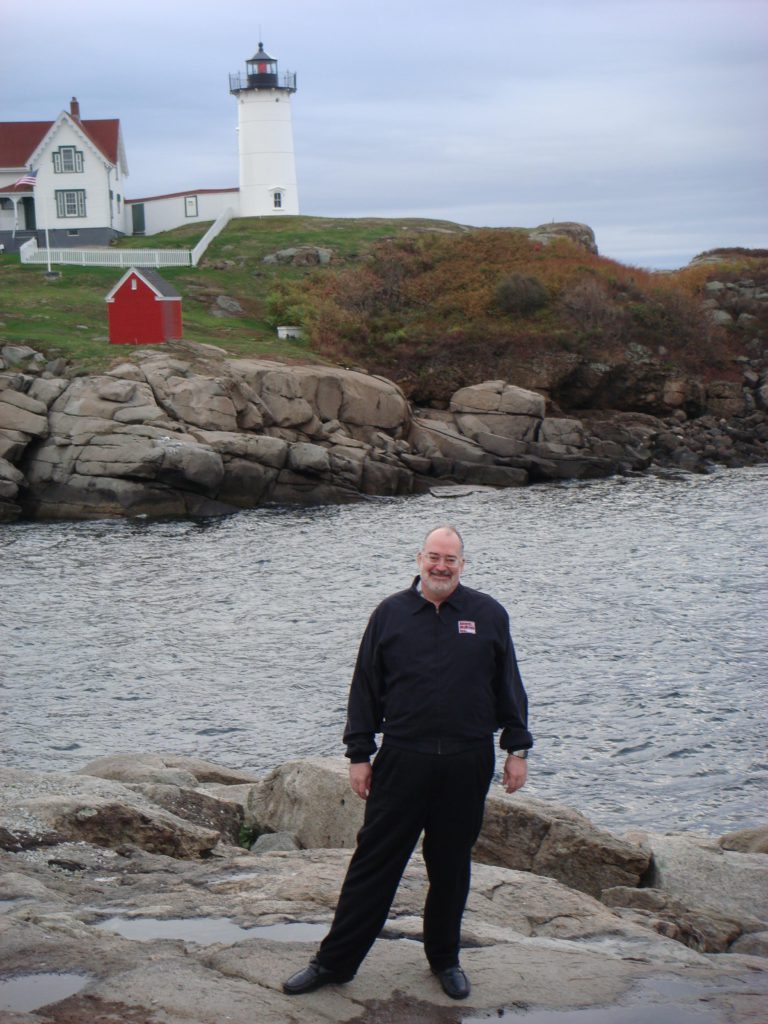
Wednesday, October 10, 2007
It was overcast all day, but except for an occasional sprinkle, the rain held off. Heading up the coast we immediately crossed the bridge into Maine.
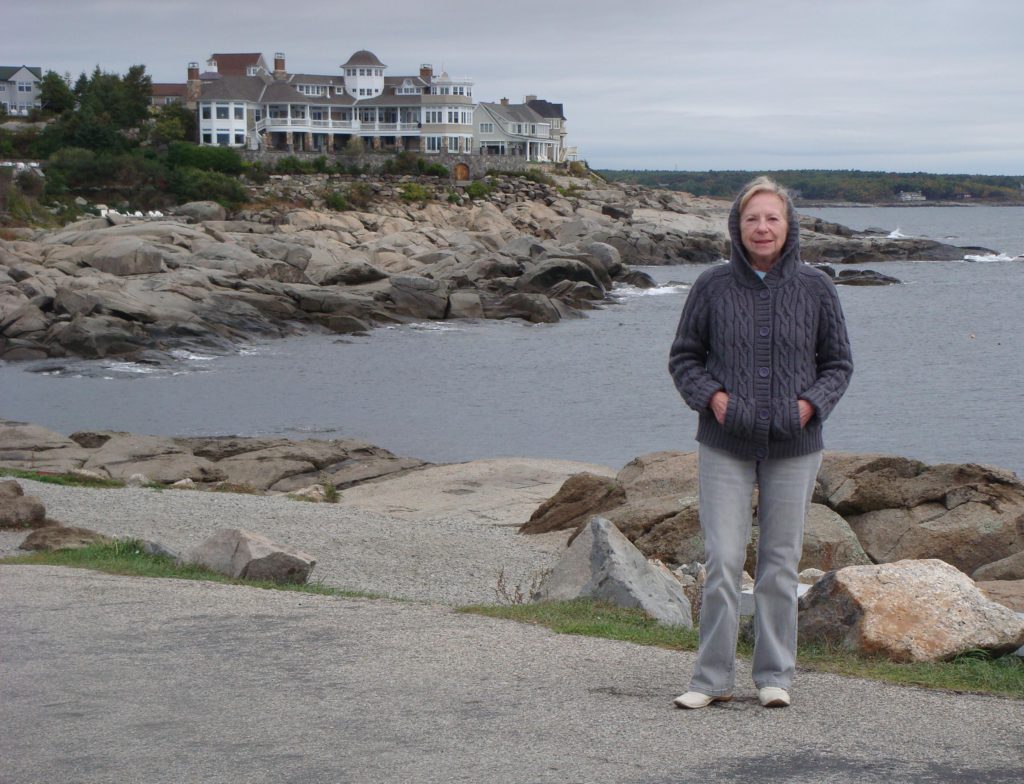
Our first stop was the lighthouse at Cape Neddick. It sits on a rocky point connected to land only by a cable and suspended bucket. As with all of Maine’s lighthouses, it is now fully automated.
An hour to the north we arrived in Portland, Maine’s largest city (although only about 65,00 people live here). We were divided into three groups. (I was a cod. ) Pamela had a bit of a sore throat, so she decided to do some shopping while the rest of us cods went out on the lobster boat Lucky Catch. Captain Tom was very informative and entertaining. He’s been lobstering since he was fourteen — although he should be an actor. This time of year he does tour groups in the harbor, but during the rest of the year he works the waters about 8 miles off the coast.
We went to two different spots and pulled up two traps at each location, which got us three lobsters (one of which was too small to keep) and an assortment of crabs that we threw back. The lobsters must be within certain length limits, measured along the carapace. The limits put them between about 1-1/4 and 4-1/2 pounds. The smallest keepers are about seven years old. Females with eggs have a tail fin notched and are thrown back. Notched lobsters are then protected, and must always be thrown back in the future, even if they don’t have eggs. This way the breeders grow large. Similarly, the maximum size limit (in Maine, anyway) assures a population of large males for breeding purposes.
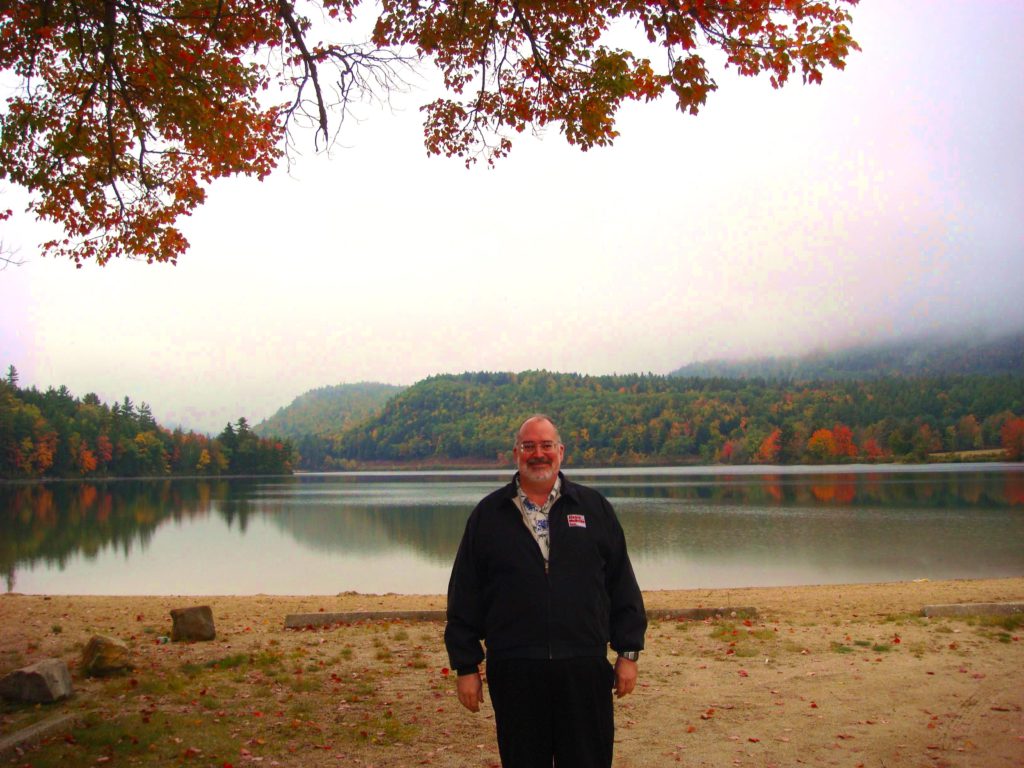
After a fairly pointless interpretive walk around the block we had lunch at a fish and chips place, did a bit more shopping, and then headed west back into New Hampshire.
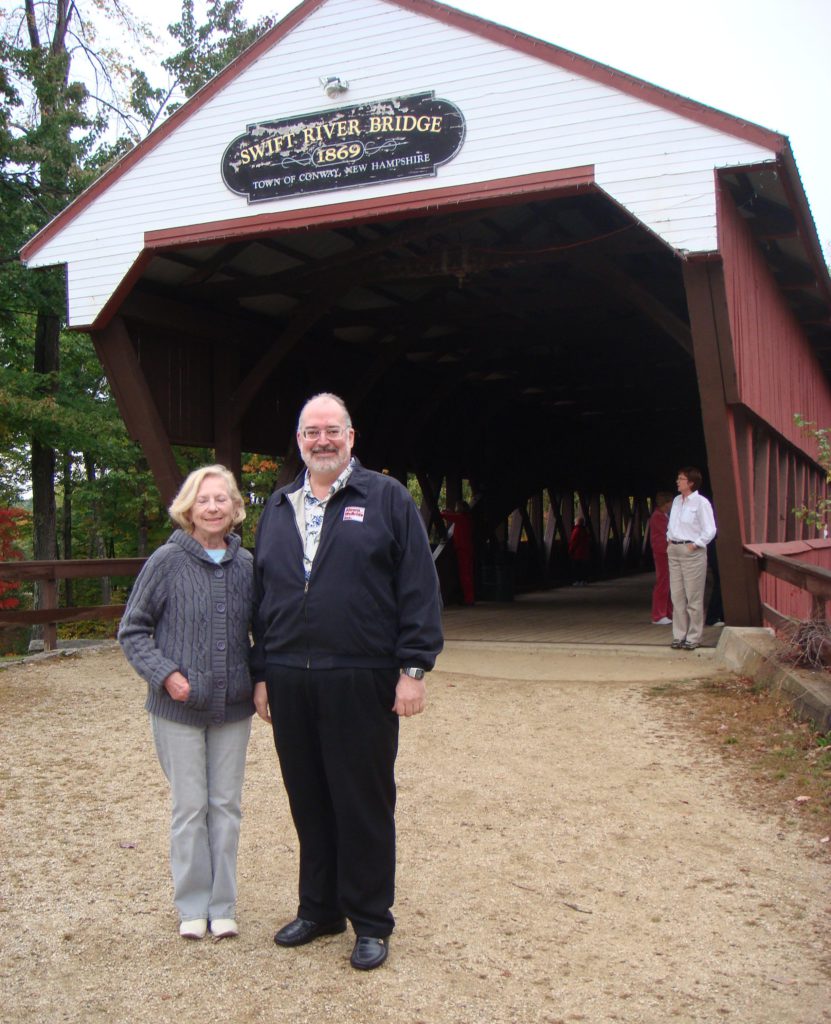
We stopped briefly at Crystal Lake (an impromptu stop because of the colors) and then at the Swift River Bridge, a covered bridge built in 1869 and now bypassed by a concrete overpass.
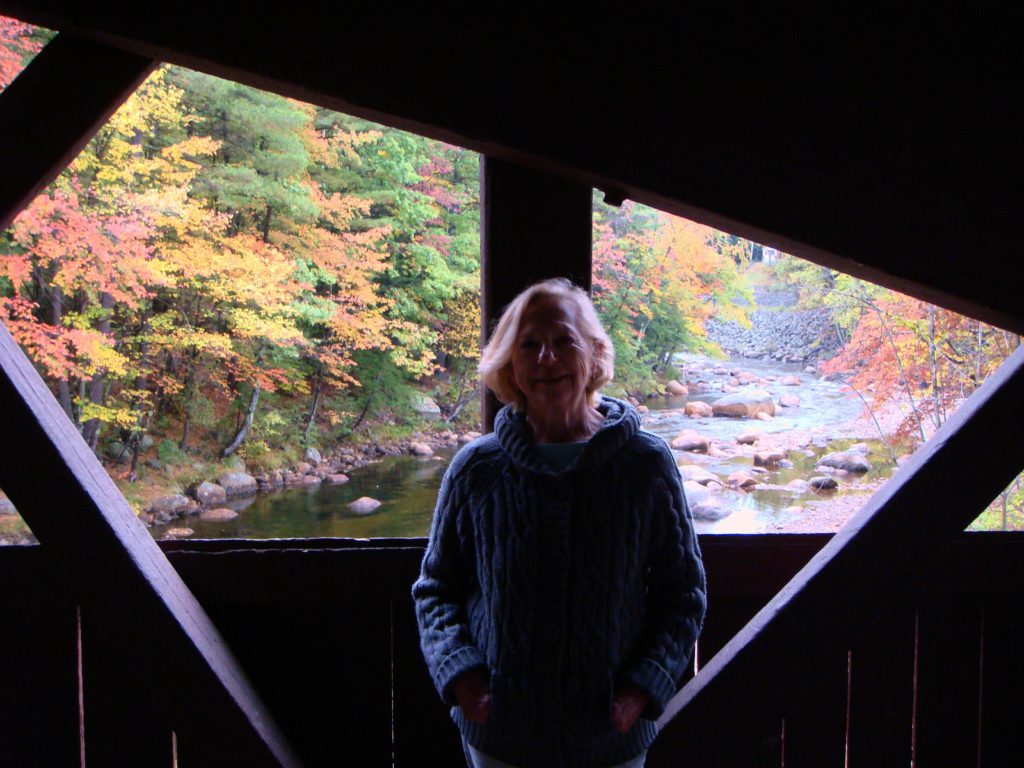
Shortly before 5pm we arrived at the White Mountain Hotel and Resort, the exterior of which looks a lot like Wawona on the approach to Yosemite. But it’s nicer on the inside. In fact, the valley we’re in has a granite outcropping of the same glaciated structure as Yosemite Valley.
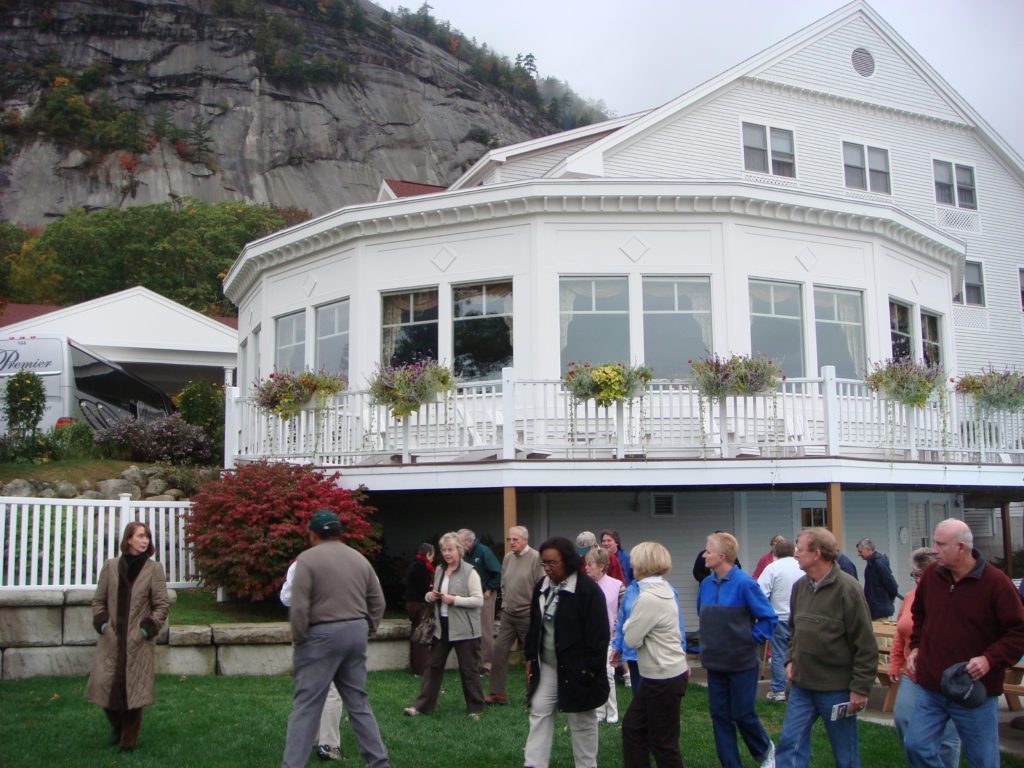
Pamela and I had a lovely dinner by ourselves, and then sat through part of a talk by a local naturalist before the early morning caught up with us.
White Mountains/ Green Mountains
Thursday, October 11, 2007
Not rainy, but very gloomy, with a low ceiling.
After some pancakes with delicious cinnamon butter, we set out over the Crawford Notch and Franconia Notch (those are passes, for you westerners), where the rock profile of the Old Man of the Mountain stood until 2003. It’s now a guy called “Cliff”! We couldn’t see it anyway, because of the low cloud cover. Nor was Mount Washington, New England’s tallest peak, visible. Although Mt. Washington is only a bit over 6000 feet high, it has the world’s worst weather, with winds clocked as high as 234 miles per hour.
We stopped for a walk at the Basin, a waterfall into a rocky. . . well, basin. It was an excellent walk, with brilliant colors. We just wished the sun would come out so we could really appreciate them.
We also stopped at Bath, a charming little (really little) town with fours shops all owned by Michael, a Rock musician from California. One of the shops is the oldest continuously operating general store in America.
On to Hanover for a drive through Dartmouth — literally. Route 10 goes right through the quad! What a beautiful town and campus (they’re sort of the same thing, since students outnumber residents). We had lunch at a hotel that faces the quad.
Crossing in to Vermont we stopped at the dramatic Quechee Gorge, a very deep and scenic ravine that was alive with color. Just beyond was the Vermont Institute of Natural Science, where we saw a really interesting raptor show, featuring a falcon, hawk, owl and even a turkey vulture.
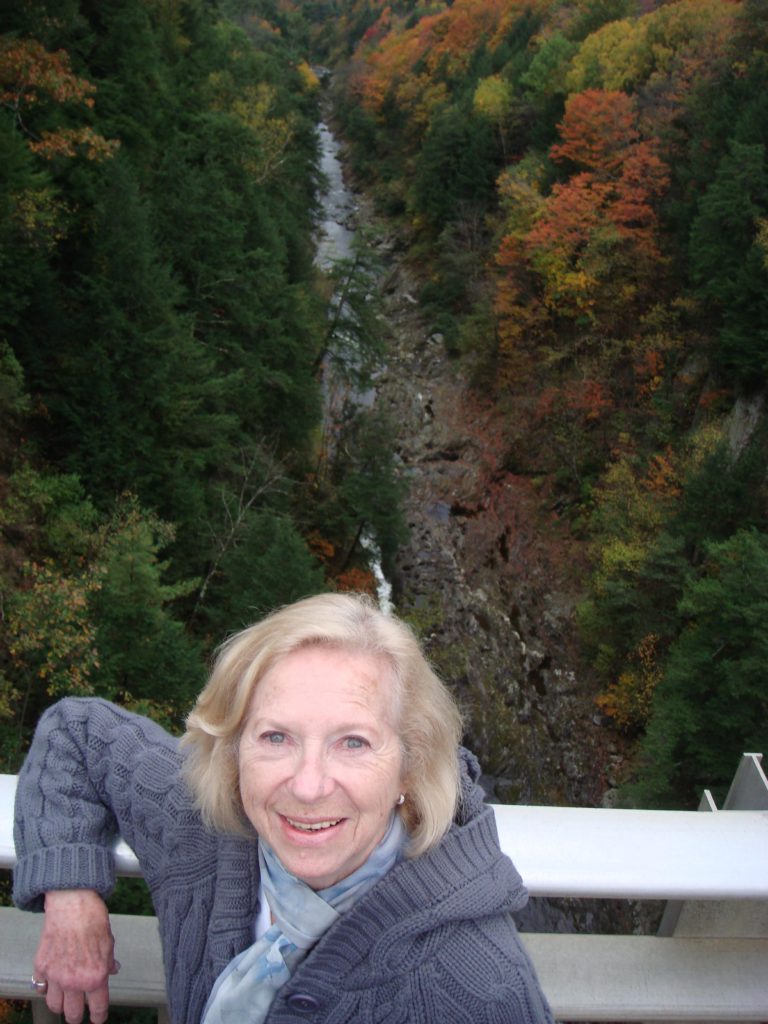
A hour’s drive brought us to our hotel for the next two nights, The Hawk Inn and Mountain Resort. It is situated in the middle of 1299 acres, and has less than 50 rooms, all occupied by two Tauck tour groups. After a nice wine and cheese reception we went to their tavern restaurant for an excellent dinner. A steady rain settled in during the night.
Woodstock
Friday, October 12, 2007
Last night’s rain had stopped by morning, taking some — but not nearly all — of the leaves with it. We retraced our path back to Woodstock, Vermont for a visit to the Billings Farm and Museum. The farm is a working farm with dairy cows, sheep and chickens. It was established by one of America’s first conservation minded individuals, and later donated to the public by the Rockefellers. There were a lot of great museum exhibits about the history of farming in the early 20th century. An 1890s house built for the foreman has been completely restored and furnished, and is actually quite technologically advanced (for 1890) and rather comfortable, even by today’s standards.
We then made the short walk into downtown Woodstock where Pamela did a bit of shopping, and we had a relaxing lunch at Bentley’s restaurant. Afterward we walked over to the Woodstock Inn, a very nice hotel, and relaxed in the library while waiting for the bus. It started to rain again but only lasted a short time.
Much of the group then visited the home of Calvin Coolidge, and a maple sugar shack. I’ve been thinking about getting Pamela’s cold for a couple of days and the cold air seemed an unwise environment for her (much improved) bronchitis, so we opted to get out of the cold and went back to the hotel along with a dozen other fellow travelers.
A stiff breeze came up in the afternoon, and stripped more of the leaves. Then, at 5pm, the sun came out and I literally ran up the mountain behind the hotel and madly snapped pictures. Although a lot of the color was gone, the light made a huge difference.
We had dinner with six of the more gregarious members of our group and then hit the sack.
Berkshires / Stockbridge
Saturday, October 13, 2007
We awoke to the season’s first frost, and a crisp, clear day with bright sunshine. What a difference it made in the colors! Our first stop was Weston, Vermont, home of the Vermont Country Store. The women shopped and the men took photographs of the very scenic little town.
We also stopped at the grave of Robert Frost in the churchyard of Old First Church in Bennington, Vermont. He’s still dead.
An hour’s drive brought us to Williamstown, where we had lunch at the Williams Inn. Williams College is a scenic campus that forms the center of this town.
Another hour of driving took us south back into Massachusetts, for a visit to Stockbridge, home of the Norman Rockwell Museum. Perched high on a hill next to the first gilded age “cottage” constructed in the Berkshires, the museum was much more interesting than I was expecting. It’s quite remarkable to look at Rockwell’s familiar works close up. No matter how closely I peered at these moderately sized oil paintings, it always seemed there was more detail. Downstairs is a collection of his 322 Saturday Evening Post covers. His studio has also been preserved, moved to a separate building on the grounds, and set up exactly as it was the day he died.
We drove back to Williamstown via a corner of New York, and our driver, Jim, who lives on Lake Champlain and is married to a former Rockette, gave us quite a witty dissertation on all the best points of the state.
Along the way we passed the Shaker village. The Shakers were a religious group who invented a number of furniture types (and other things such as the straight broom), but now there are only seven members left. This is probably due to the fact that one of their religious tenets is celibacy. Note to self: when founding a religion, incorporate wild debauchery.
Our hotel for the night is The Orchards, by far the nicest accommodation of the trip. My room is huge, and decorated like the rooms at the Waldorf Astoria. A farewell reception in the lounge offered an open bar, and dinner in the dining room was superb. The menu prices were amazingly low, with a wonderful filet mignon in a wine reduction and its accompaniments going for $25. Of course, it was all included. Reflecting on the week, I think I’ve bought one dinner, two lunches and two bottles of wine. Everything else has been included in the Tauck price, even tips. Definitely a good deal.
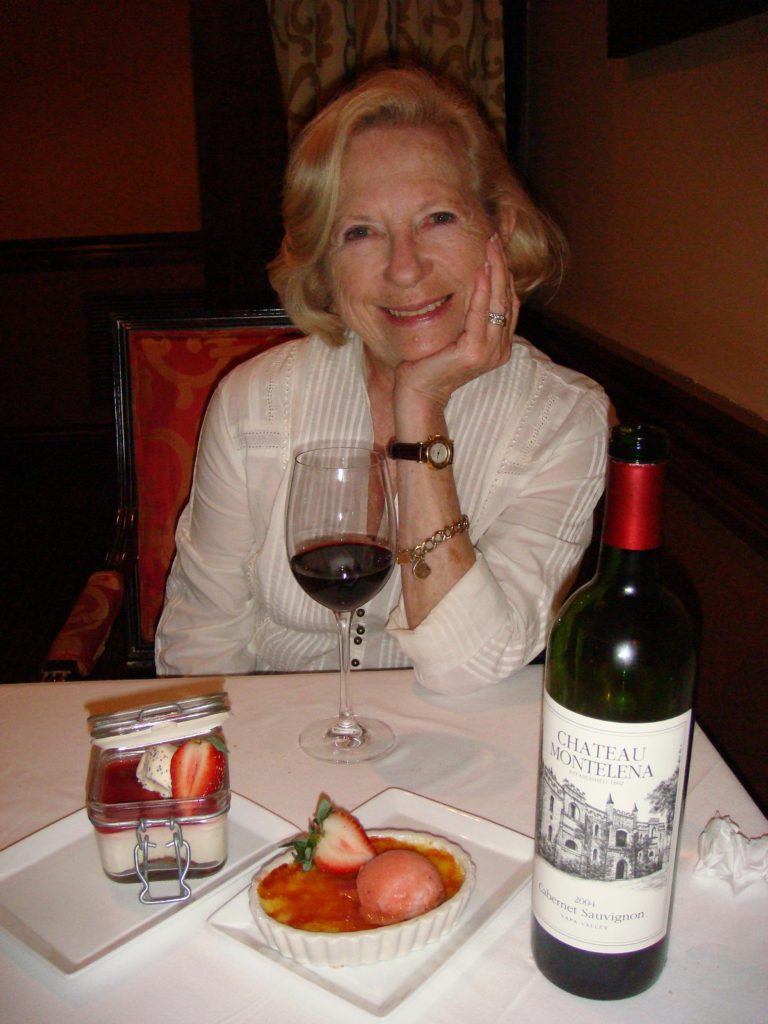
Deerfield and West Podunk (honest!)
Sunday, October 14, 2007
Today was cooler, and breezy. We departed from Williamstown through the Pioneer Valley of the Connecticut River, stopping at Deerfield, a cute little town with lots of colonial era houses.
For lunch we stopped at the Salem Cross Inn at West Podunk. It’s a sprawling complex with some rooms that date back to 1705. It is named for both the Salem family (who began restoring it in 1962 and still operate it) and the “Salem Cross,” an anti-witch sign engraved on the original house’s still-intact door handle.
The building has many dining rooms, most of which were filled with tour groups, so I wasn’t expecting much. But they served the best prime rib I have ever tasted, along with excellent clam chowder and homemade rolls of many different types. Dessert was a wonderful tart apple pie with hand made whipped cream. This was the second best meal of the trip, and a wonderful surprise.
By 3 pm we were at the Logan airport, where I said goodbye to Pamela and the group, and caught my 6:30 flight home to Orlando. It was a very nice group of people, and we had a lot of fun sharing meals and experiences with all of them.
As with all Tauck Tours, this one was well thought out, and the fact that everything was included is always great. Our tour director, Nancy Rowe, seemed particularly concerned with everyone’s welfare, and the driver, Jim Tom, was very entertaining (even if he does need a last name). This itinerary is perhaps a bit less exciting than most, and is dependent upon the trees, which cooperated, and the weather, which was mixed.
Hawaii
O’ahu, Hawai’i, Maui, Kaua’i
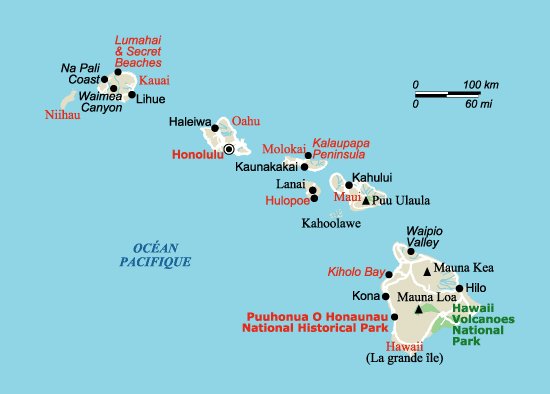
Orlando
Friday, March 17, 2006
As much as we’ve traveled the world, there are still quite a few places in the US that we haven’t been, so we decided to visit Hawai’i this spring break. (If you’re wondering about the apostrophe, that’s the correct spelling, which is on most everything in the state of Hawai’i but is only recently showing up elsewhere. And yes, the “w” is pronounced “v” in all Hawaiian words. )
Of course, living in Orlando, Hawai’i isn’t the most convenient place to get to! But we found fairly good free first class seats on Delta by booking nine months in advance and were able to make the trip in only two flights, connecting in Atlanta. The flight from Atlanta to Hawai’i is only about nine hours, not too bad compared to our 14 hour record breaker from L. A. to Australia.
The flight took us over a very cloudy country, but it cleared off as we flew over San Francisco, revealing the entire bay in all its glory, with downtown, the bridges, Treasure Island and Alcatraz all sparkling clear from 34,000 feet. It seemed funny that the only clear spot in the country was normally foggy Frisco.
Along the way I read a guide book Linda’s mom sent Dani. It contained quite a few surprising facts, such as that Honolulu is one of the ten largest cities in the US!
The flight arrived around 8 pm. Somehow it felt like we should clear customs after such a long trip! We caught a cab and arrived at the Halekulani Hotel by 9 pm. The check in service at the hotel was amazing, the best I have ever experienced. We were escorted to our room by someone from the front desk, where our credit card number was taken. The room was already set up with a rollaway, and after a light snack from room service we hit the sack (it being 3am in Orlando by this time).
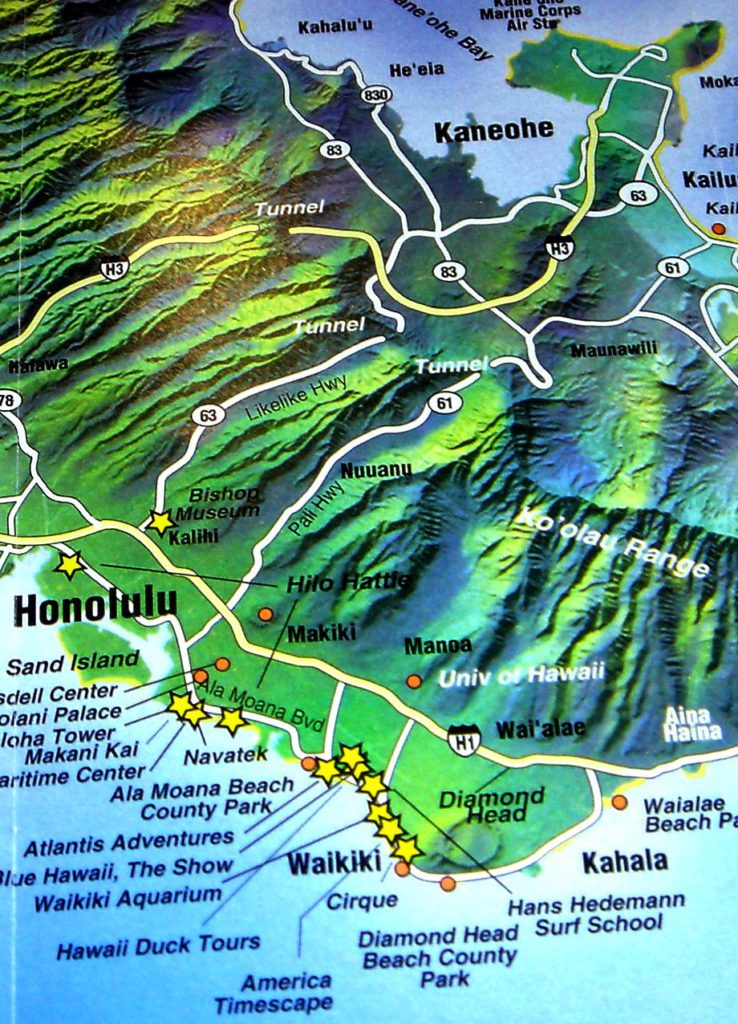
Honolulu and Waikiki Beach, O’ahu
Saturday, March 18, 2006

With a five hour time change from Orlando I was up pretty early Saturday, and discovered what a truly beautiful hotel the Halekulani is. Our room overlooks a central garden where the pool faces the breakers rolling in at Waikiki. I left Linda and Dani sleeping and had breakfast out on the terrace overlooking the ocean. Most of the hotel’s ground floor is open to the breezes, as the pleasant temperature and humidity eliminate the need for air conditioning if you’re in the shade. It’s a pity we’re checking out and heading for the cruise so soon.
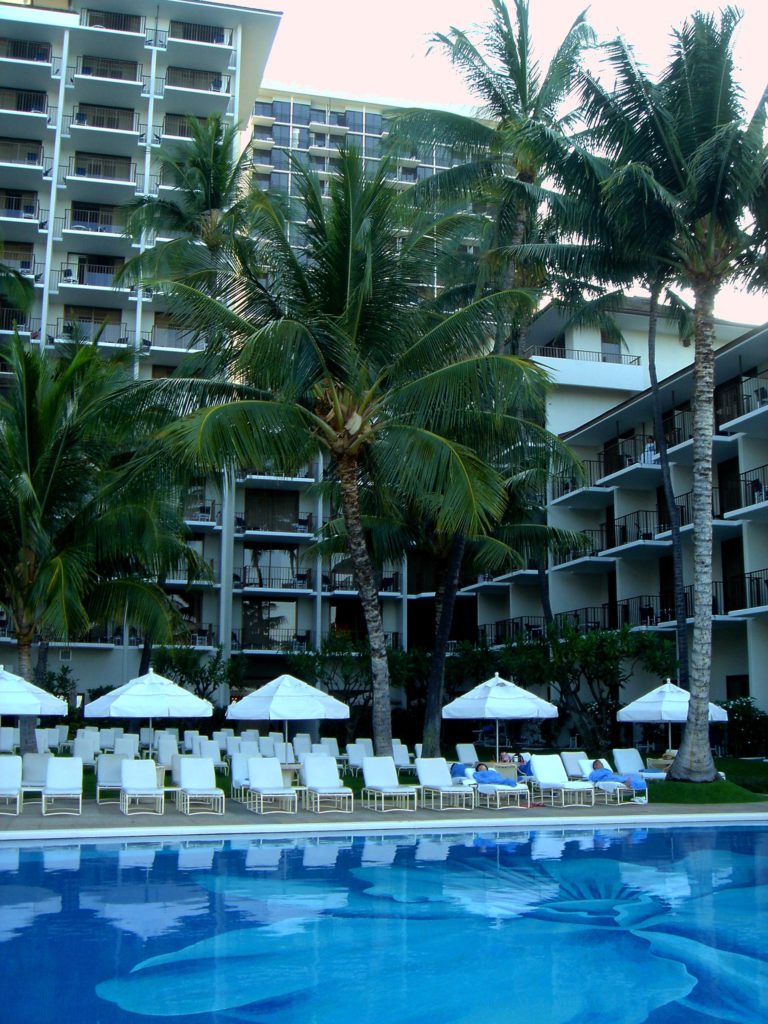
I took a cab back to the airport to meet our friend from Australia, Pamela, at 9am. (Cabs are pricey in Hawai’i. It costs almost $4 a mile, or about $40 to get from Waikiki to the airport. ) Honolulu looks a bit like Southern California, particularly San Diego, with freeways and lots of 1950s era high rises, intermixed with 1940s two-story apartments. The foliage is more verdant though, and more floral than even Florida’s.
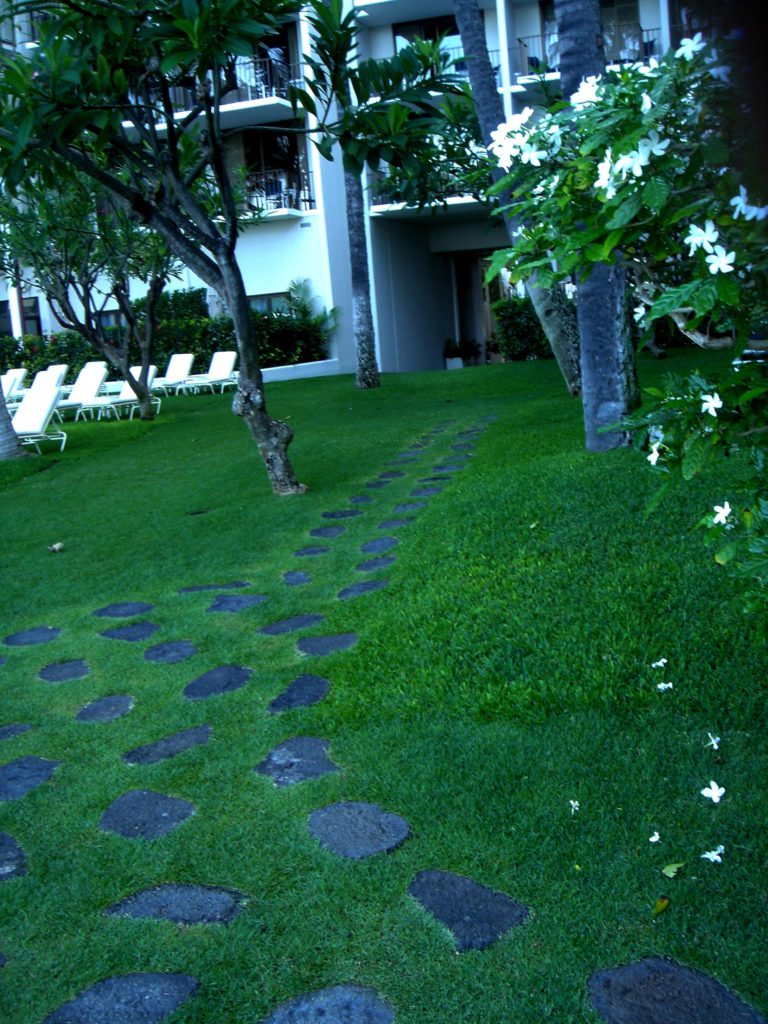
The weather is beautiful today, with deep blue skies, although storm clouds are threatening to spill over the mountain range that divides the island. The forecast for the week is for rain, rain and more rain, so we’ll enjoy it while we can.
The Hawaiian archipelago runs north for 1500 miles, impressive when you consider we crossed only 2400 miles of ocean to get here. There are eight large islands at the southern end of the chain. The largest, the Big Island of Hawaii, is larger than all the rest combined. One of the islands was used for bombing practice during WWII, and one is privately owned. Of the remaining six, we will visit four: Hawai’i (the big Island), Kaua’i (the garden island), Maui (the valley island), and O’ahu (the gathering place). This leaves Molokai (a former leper colony), and Lanai (a former pineapple plantation mostly owned by Dole).
About half the population of Hawai’i has some Hawaiian ancestry. 18% is Japanese, and about 20% are mainlanders The rest are various Asian immigrants.
The traditional language is Hawaiian, but a patois called pidgin is spoken by the majority of natives. Everyone speaks some English, but not as fluently as I might have guessed.
Hawaiian was codified by the early missionaries, who assigned it a mere twelve letters of the alphabet: all five vowels plus just seven consonants: h, k, l, m, n, p, and w. Hawaiian words are comprised of two letter syllables, and except for a few combinations such as au and ai, every vowel is pronounced separately. Often an apostrophe is inserted between vowels to show that the letters should be pronounced as two syllables. For example, the slow moving type of lava is called simply A’a.
Hawai’i is an intermediate spot to meet Pamela, as it’s a nine hour flight for both of us. It was great to see her again after almost two years. We took a cab back to the hotel and hung out until checkout time, then headed for the cruise terminal for an early check-in.
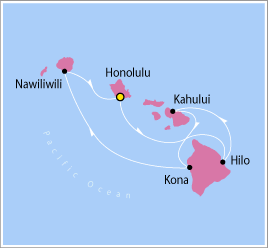
The Pride of America is the second of NCL’s American-flagged Hawaiian fleet. It has an interesting history. Back in the 1950s Congress became concerned that America was losing its ship-building industry to overseas companies, so they passed a law that American flagged ships had to be built in America. The result was predictable: companies stopped registering their ships under American flags, costing millions of dollars in registry fees. In an attempt to combat this, Congress passed a law that foreign flagged ships had to dock at a foreign port during every itinerary. The result was predictable: American ports lost millions of dollars in business as ships substituted foreign ports. So American now has no ship-building industry, no American flagged cruise ships, and no all-American itineraries.
A few years ago a startup company decided to play the game the way Congress intended, and began construction of two American-built, American flagged cruise ships. Halfway through the process they declared bankruptcy. The hulls were bought by NCL and towed to Germany for completion. The Pride of America was scheduled for launch in 2004, but during construction a storm struck the shipyard and it sank. The Norwegian Sky was hastily refitted and pressed into service as The Pride of Aloha. A year later the refloated Pride of America finally made its debut. Next week its sister ship, The Pride of Hawai’i joins it.
The Pride of America is a peculiar ship. As the ultimate embodiment of NCL’s freestyle dining concept there are a half dozen different restaurants, most of which charge a small cover ($5-$15). But there are few cozy places to hang out, and there’s no casino. The public spaces other than restaurants are comprised mostly of a large theater and a large nightclub.
The public spaces are decorated in traditional American motifs, and the stairwells feature scenic photos from around the country. Some seem attractive, while others come off as tacky. A tremendous amount of space is dedicated to exterior walkways, with a rather narrow interior space.
Linda’s take on the interior design is that it looks like ex-Disney people designed it — the ones who’ve forgotten how to design attractions, too.
The strangest thing is the cabins. Our suite looks like it was the site of a paint fight featuring 1960s psychedelic poster paints. It includes a turquoise couch that is harder than a diamond and two purple swivel chairs that came straight from Dean Martin’s office. And the balcony is enormous — more than ten feet deep — space that could have been used to increase the interior dimensions. A fourth of the interior space is hallway, leaving only a tiny corner for a bathroom (but at least it’s larger than Pamela’s, which looks like one in a camper).
The suite doesn’t come with laundry service, free internet, or a stocked bar, all of which are Princess amenities. It does have a fully automated espresso machine, though.
The strengths and weaknesses of different, comparably priced cruise lines are odd. We’ve always had remarkable service on NCL, but their ships have always been inferior. Even this brand new one seems completely misguided in design. Yet the crew is fantastic: friendly, helpful and outgoing, just as on other NCL trips. The moderately priced ships with the best amenities have always been Royal Caribbean, but their food is pretty awful. Princess seems to fall somewhere in between.
We met our concierge and made dinner reservations for the week. This is the first thing you want to do on any cruise with specialty restaurants. Then we had lunch in the buffet restaurant. It was immediately apparent that NCL’s standard fare is still significantly better than Princess’ or Royal Caribbean’s, with a wide offering of super-fresh ingredients.
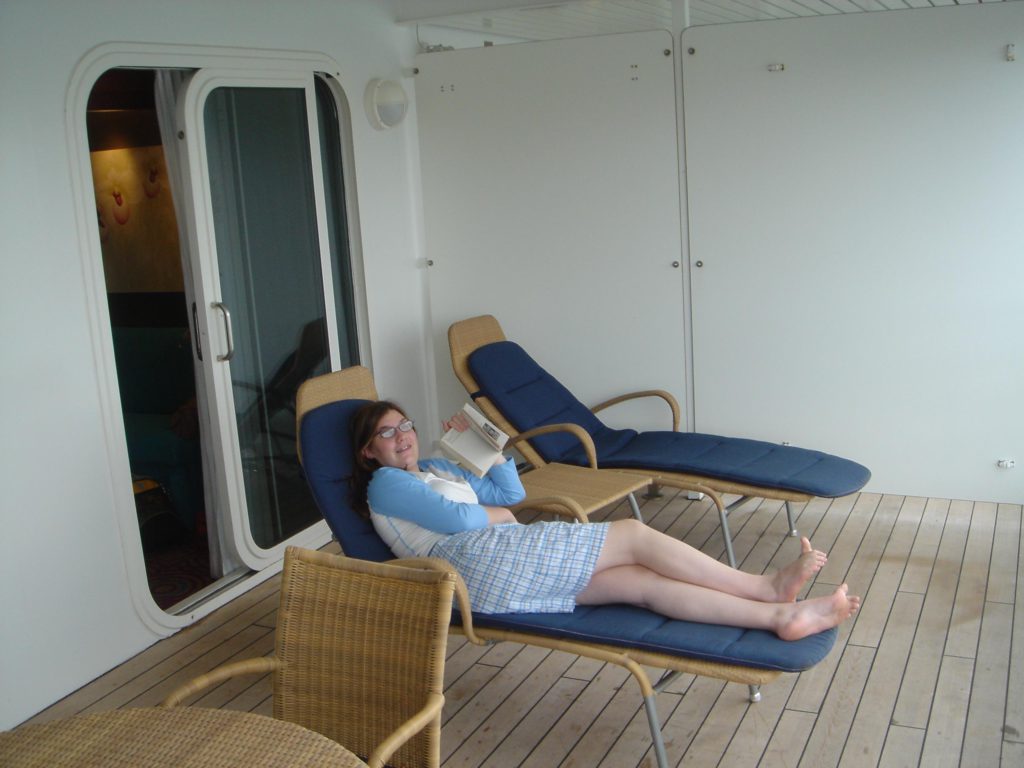
After an exploration of the ship, unpacking, and a fairly speedy lifeboat drill, it was time for dinner. We tried East Meets West, an Asian fusion restaurant that also incorporates a sushi bar and teppan steak room. The food included Thai soup, Chinese dim sum, Japanese miso soup, Indian tandori chicken and lamb vindaloo. All were excellent, although not particularly authentic. The vindaloo, for example, was quite sweet and used green curry, but it was delicious, whatever it was.
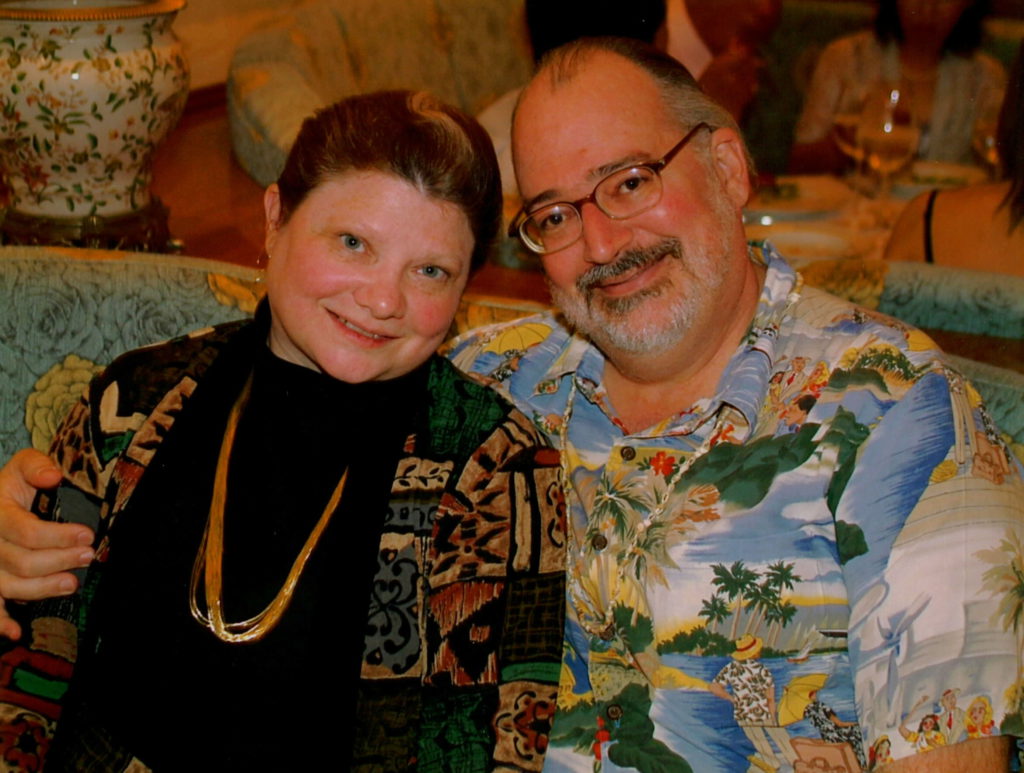
We were surprised to find Badoit, our favorite lightly sparkling mineral water from France available in the restaurant. I’ve never seen it outside of France.
Then it was time for some much-needed sleep. Dani is sharing a cabin with Pamela, so Linda and I have the suite to ourselves.
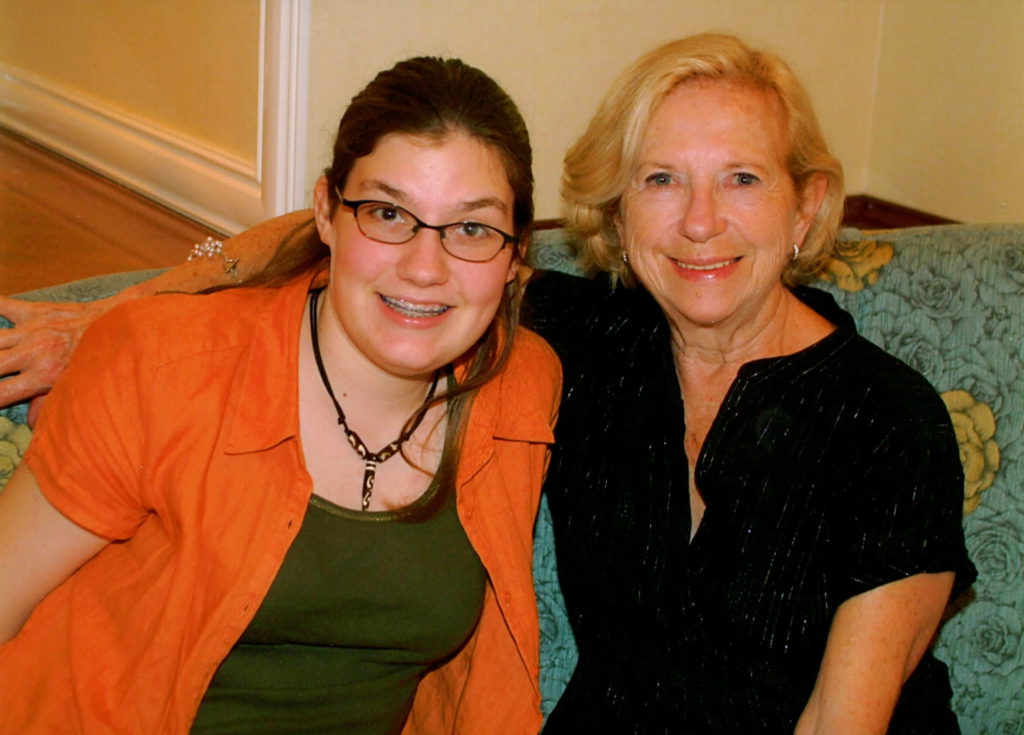
Hilo, Hawai’i
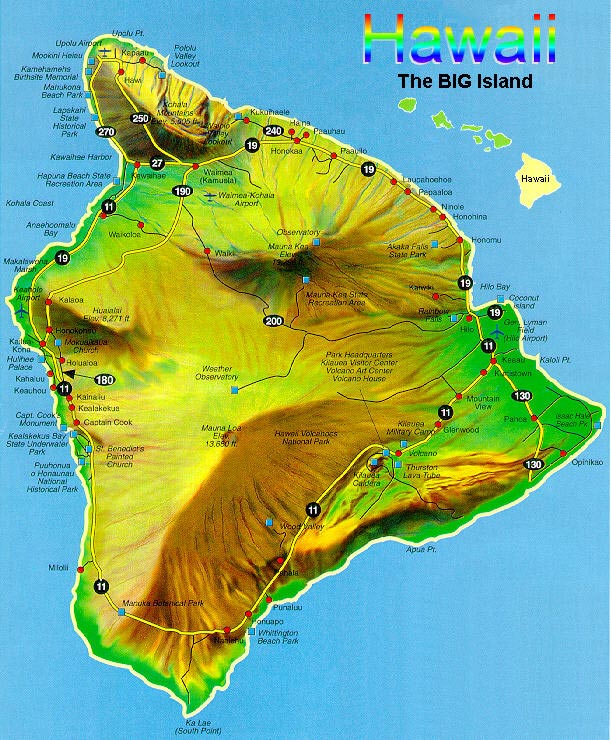
Sunday, March 19, 2006
There was a bit of a roll to the seas last night, which was pleasant, a rare experience on modern, stabilized cruise ships.
The cabin is not very tight, with many more rattles than any other we’ve had, but earplugs took care of it. They couldn’t muffle the banging from the deck above, though, as something was hammered by wind for hours. I checked it out this morning, and there are cabins above us, possibly for the deaf and stupid.
This morning the boat docked at Hilo on the big island of Hawai’i. At least that’s what they claim. Visibility is less than a half mile, through steady rain.
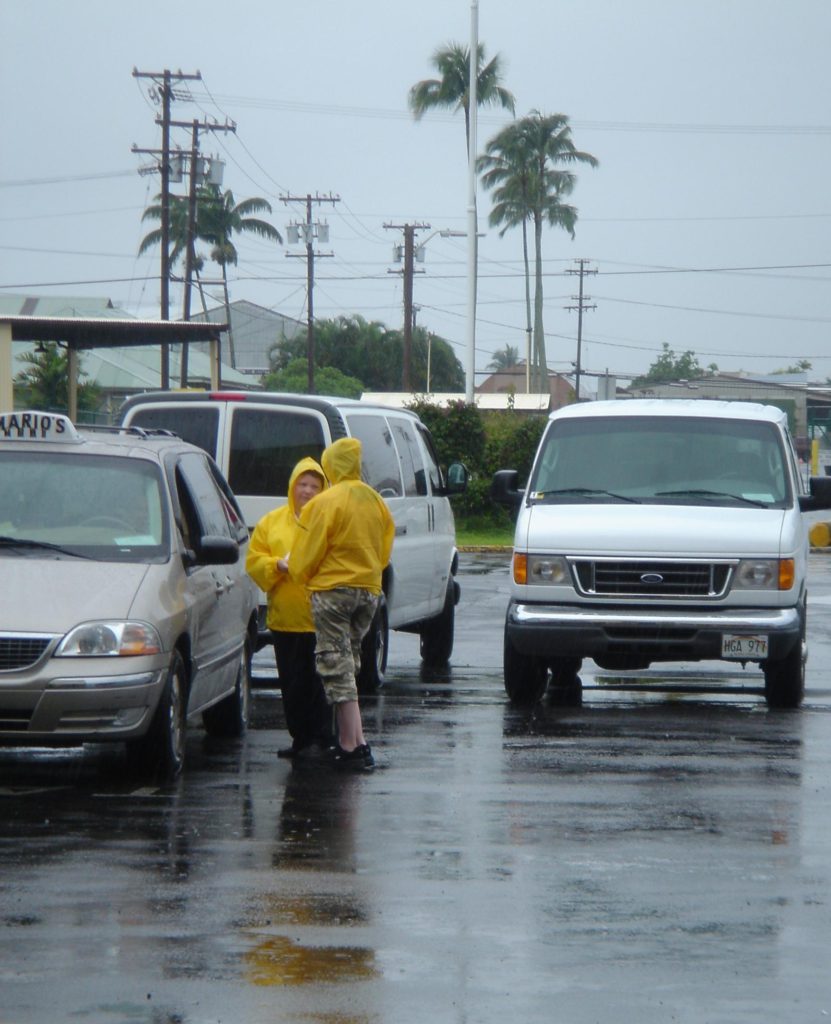
We had an expensive tour of Volcanoes National Park booked for today, so Linda bought ponchos and we waded to the terminal building. After a half hour wait as they ascertained road conditions it was a relief to learn the tour was cancelled. I wasn’t looking forward to spending $450 to see nothing. I guess we were fortunate, because it seemed ours was the only one that was cancelled. Linda and Dani caught a taxi to go to town in the rain or something, but I couldn’t see the point (literally). So I retreated to the cabin to relax, type and read.
They saw a muddy waterfall and did some shopping at a mall, then rejoined Pamela and me for lunch in the ship’s main dining room, the Skyline Restaurant. The space is decorated like the Chrysler Building, and mostly looks pretty neat.
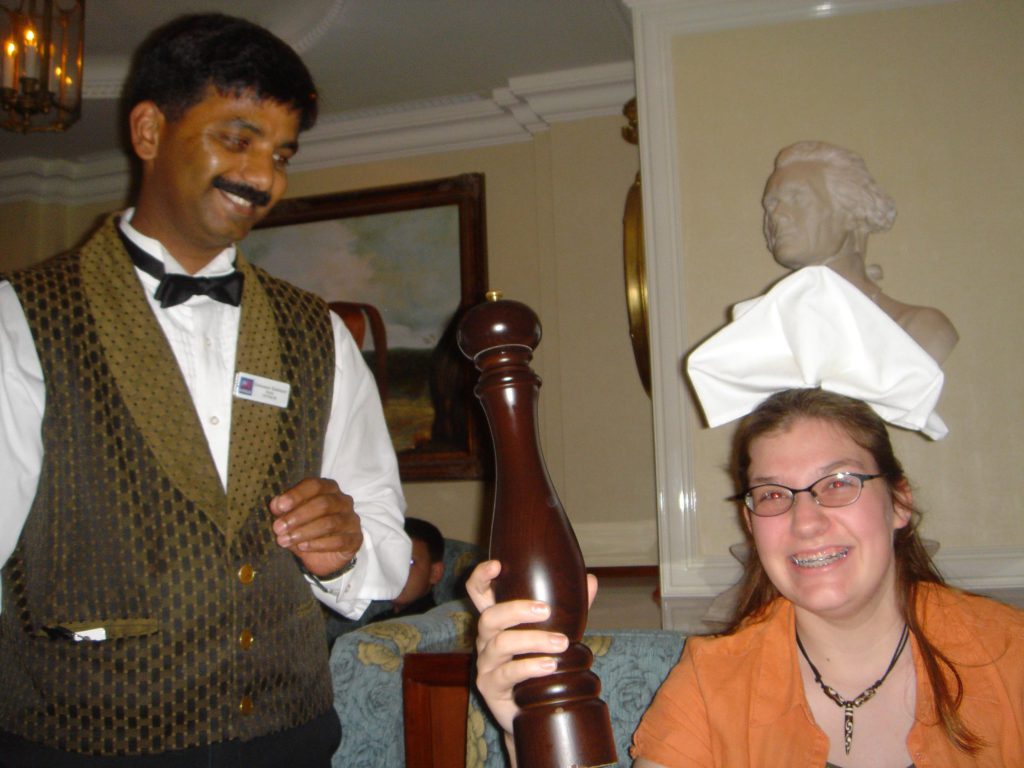
I worked on my new writing class during the afternoon, and then we met for drinks and dinner at Jefferson’s Bistro. This continental restaurant is probably the best on the ship. There’s a small cover charge, and up charges for a few foods including the superb fois gras appetizer I had. Our waiter (who claimed to be named Francesco but was from India) was excellent, and the meal was top notch.
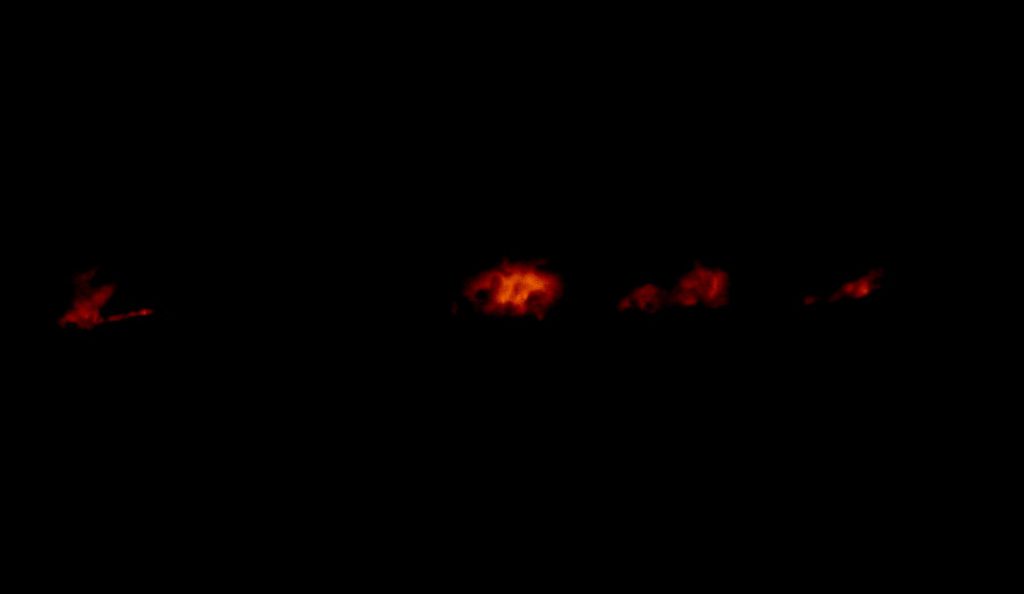
At 10pm we cruised past the southern part Hawai’i, and could see the lava spurting up out of the ocean from about a half mile away. It looked hot. Strange sounding birds circled overhead, either warning us off or begging for handouts, I wasn’t certain which.
Kahului, Maui
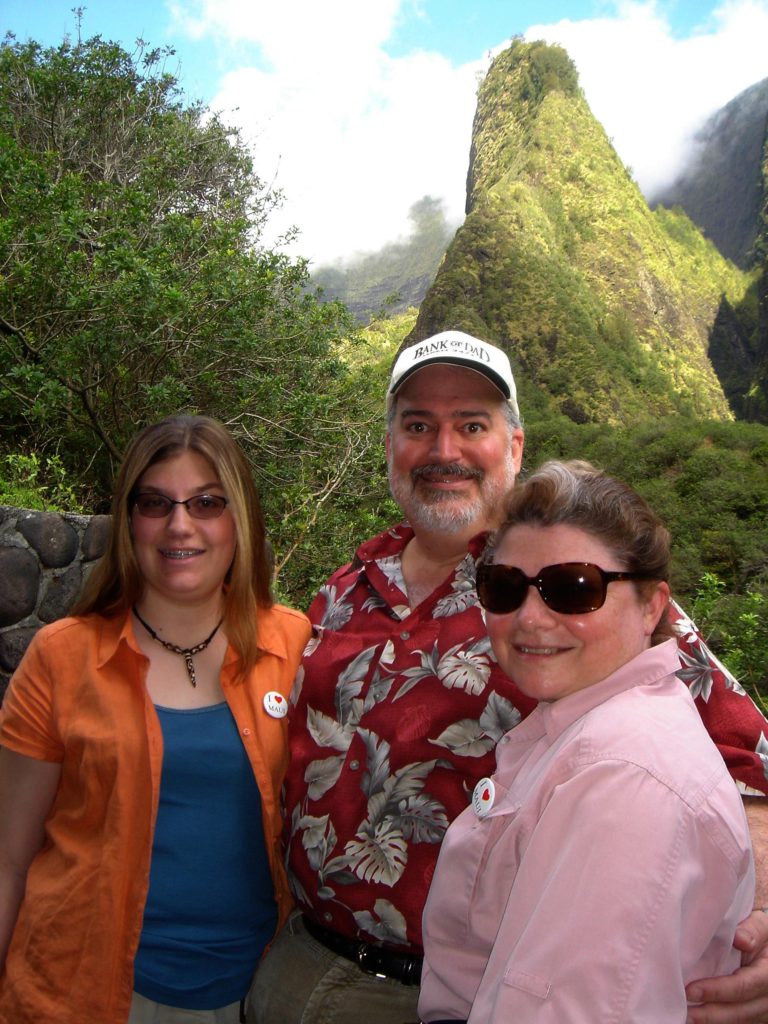
Monday, March 20, 2006
What an improvement in the weather! Maui gets 400 inches of rain a year on the east side, where we’re docked, so we were particularly lucky to get a sunny day. It’s an interesting island, with 11 of the world’s 13 different climate types packed into a very small area (it lacks only Saharan and arctic).
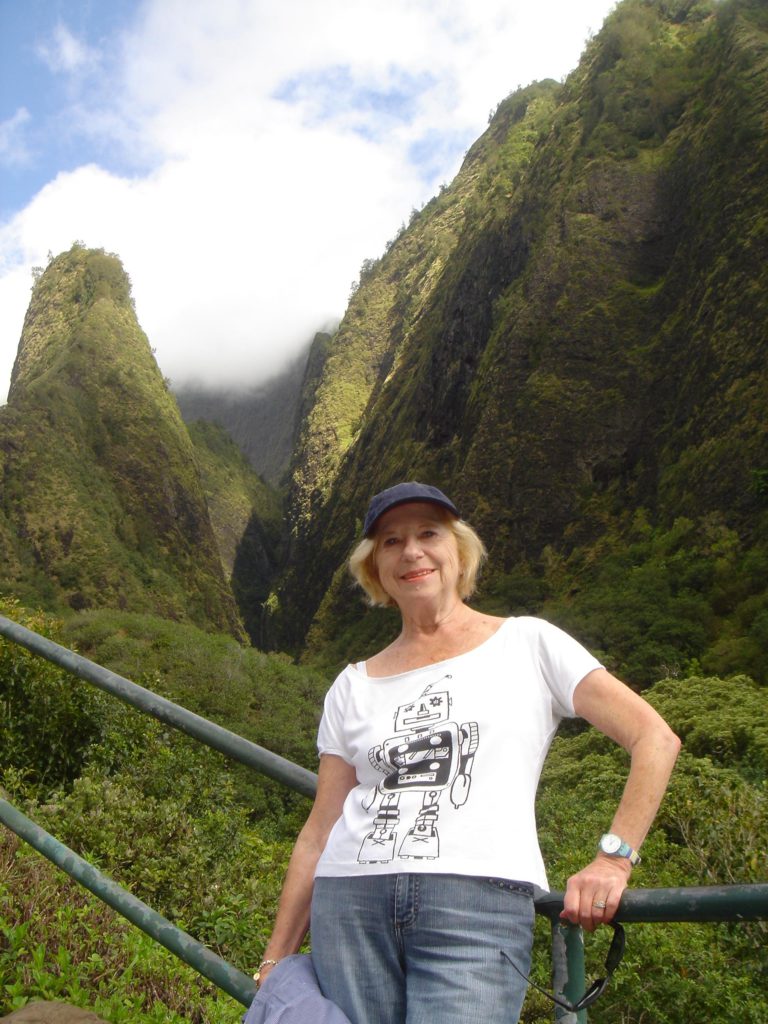
We met at 8:30 am for our Best of West Maui tour. Our bus driver, Claude, also acted as guide, and was terrific, with an easy to listen to voice and lots of interesting information. Maui is called the Valley Island because most of the settlement is in the saddle formed by northern and southern volcanoes. It only takes about 30 minutes to cross from one side to the other, and our tour visited spots on both sides, plus a plantation in the middle.
Once a major sugar producing economy, the sugar plantations are still the island’s largest landowners.
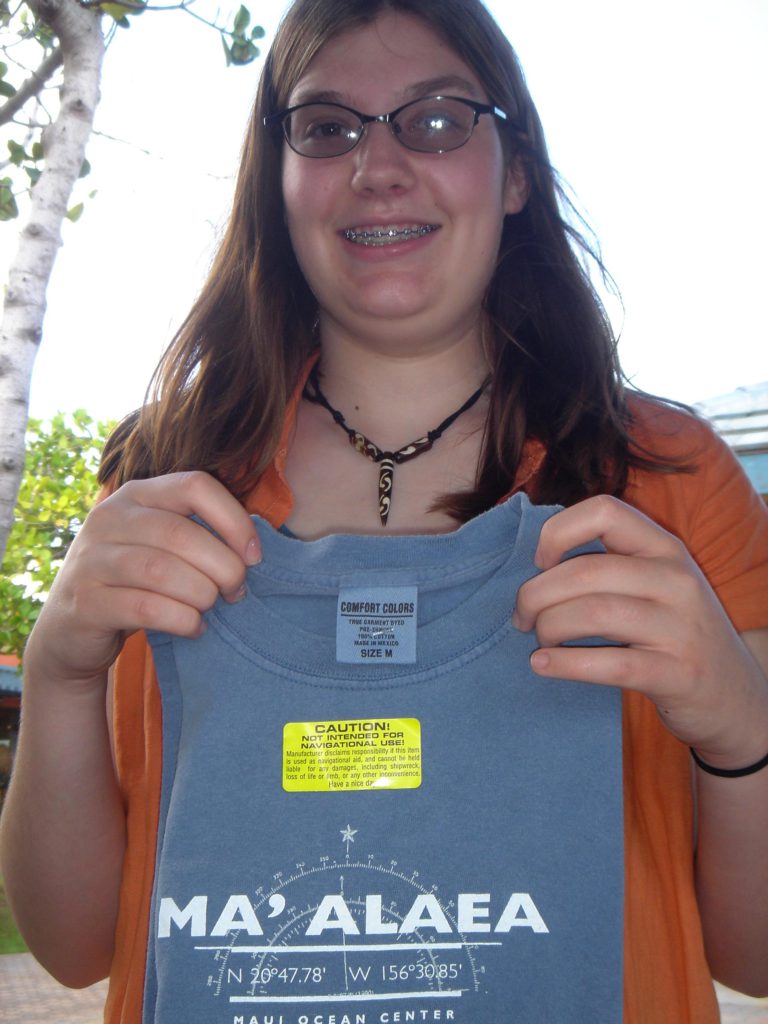
Our ship is docked in Kahului Harbor. Driving straight up the hillside brought us to a deep box canyon called the Iao Valley. Near the top is a 1200 foot basalt spire called Iao Needle that is pretty impressive. It’s also impressive that it and the surrounding vertical canyon walls are quite verdant.
Our next stop was Maui Tropical Plantation where we took a 40 minute tram tour of cultivated fields including papaya, mango, banana, macadamia nut, sugar cane, coffee, coconut and many others. We also saw a demonstration of how to husk and open a coconut. The fibrous outer coating is called copra, and is the stuff they grew on the plantation where Pamela lived as a young newlywed. They just threw away the coconut and sold the copra!
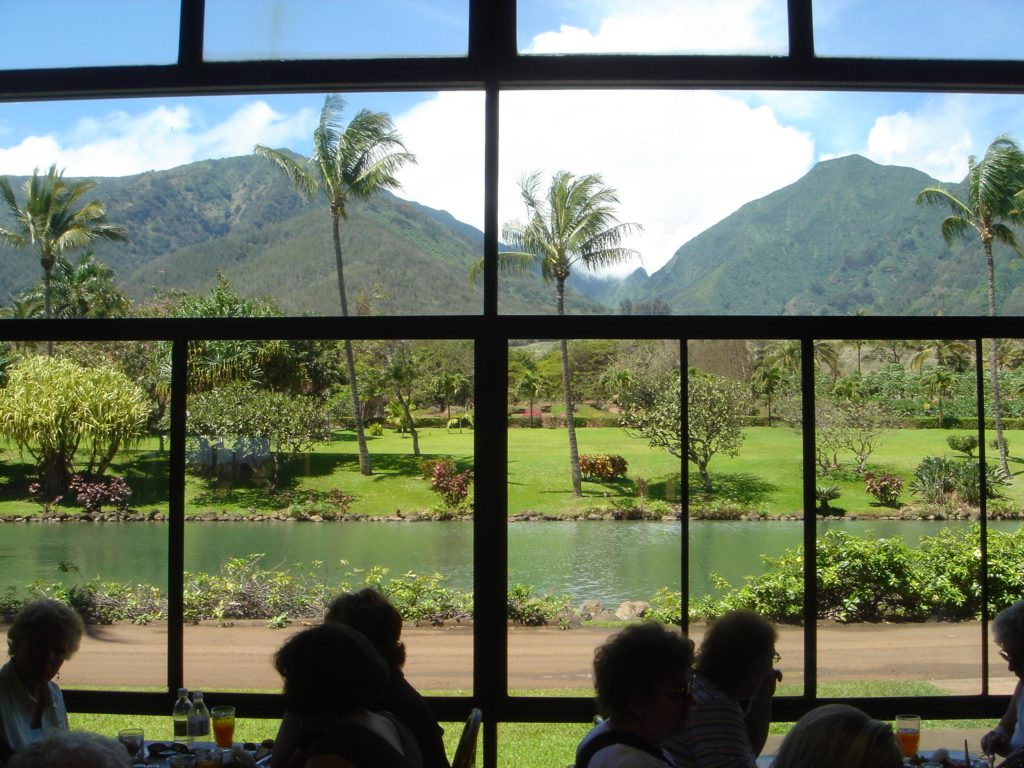
We had a pleasant lunch of duck, rice and fruit, then headed for our final stop, Maui Ocean Center on the west coast. This was a nice aquarium with both indoor and outdoor displays of the ocean life found in Hawai’i, including the state fish, the Humuhumunukunukuapoa’a. Say that five times fast.
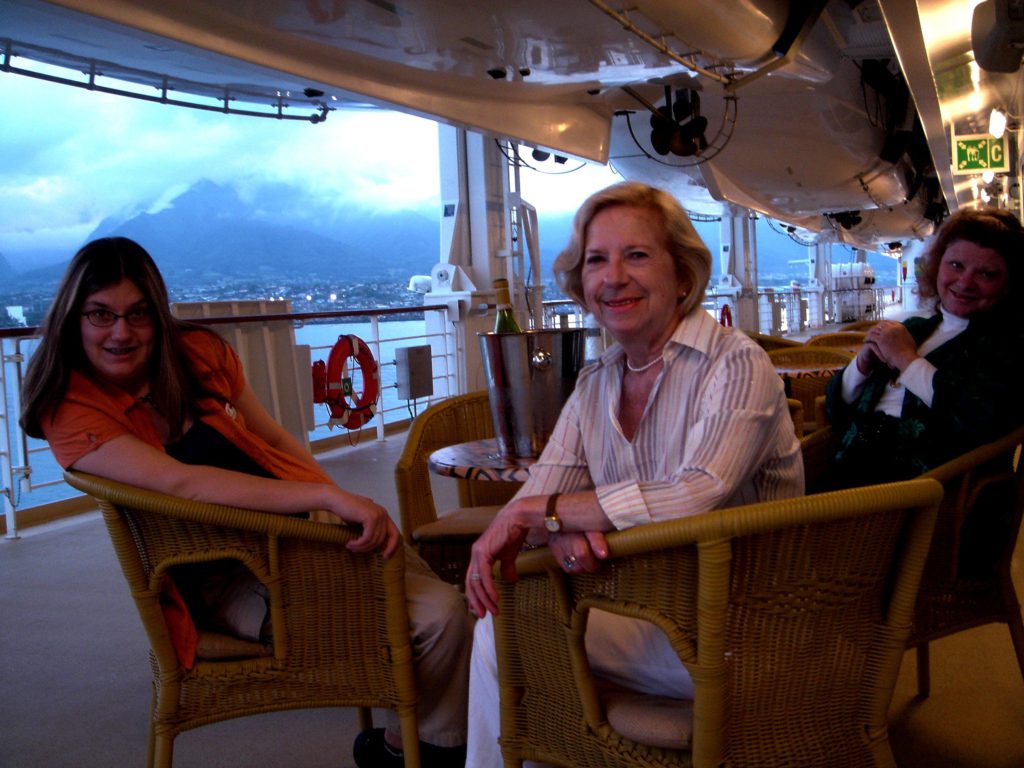
For dinner the ship was nearly deserted due to the fact that more than half of the passengers went to a Luau. Those who were too cheap to go to the Luau went to the main dining room because it’s free. This left all of the specialty restaurants (except Little Italy, also free) at our disposal. We selected Teppanyaki, and had a meal we’ll be talking about for years to come — but not for the right reasons!
Teppanyaki is Benihana-style cooking on a large cook top, with lightning fast food preparation accompanied by juggling and impressive culinary acrobatics. Or it’s supposed to be. Our chef was named Fung. Fung the Incompetent. We knew we were in trouble when Fung appeared on the scene, pulled out his spatula, twirled it, and had to grab it by the blade to keep it from falling on the floor.
Next Fung began to stack up onion slices to form a volcano. We’ve seen this trick many times at Benihana. They fill the volcano with oil and water and set it on fire to make a plume of steam. Fung stacked a couple of slices of onion, but when he went to put on the third one the bottom one slipped. Darn. Let’s try this again. And again. Almost got four one time. . . Maybe it’s having to do it with this damned spatula. . . Five minutes later Fung finally gave up and stacked them with his blue latex-gloved hands. Couldn’t get them lined up to hold the oil, though. . . let’s just pour oil all over the griddle and set the whole thing on fire. Well that was pretty spectacular. Then Fung departed to fetch meat, leaving the onions to permanently burn themselves onto the surface of the grill.
Upon his return, Fung spent five minutes trying to scrape the goo from the cook top, and another five trying to scrape the goo from his spatula into the sink, finally giving up and simply covering the cook top with oil. He then prepared vegetables — the traditional final course of a teppanyaki meal. While most teppanyaki chefs slice the vegetables faster than the eye can follow, Fung appeared to have never before actually seen a zucchini, let along tried to slice one up. But after only a slight learning curve he managed to inundate our plates in seven or eight servings of vegetables sautéed with garlic, butter, oil, salt, garlic, pepper and garlic.
As we attempted to unearth our plates, he then launched into shrimp preparation. He was surprising competent at cutting the shrimp into bite-size pieces, as long as you define bite-size as smaller than your mouth. The shrimp were perfectly cooked, using garlic, butter, oil, salt, garlic, pepper and garlic.
Preparation of the meats followed, with each of us receiving beef, chicken and scallops all prepared in garlic, butter, oil, salt, garlic, pepper and garlic. and additional steak was partially prepared for a phantom person that apparently only Fung could see. This process was aborted, though, when Fung ran out of plates on which to serve the steak.
The crowning finale to this act of culinary incompetence came as Fung attempted an extremely tricky move — simply removing his knife form his belt sheath — and dropped it on his foot.
Needless to say, we’ll be talking about this meal for years to come, and wondering, “How can that man possibly still have ten fingers?”
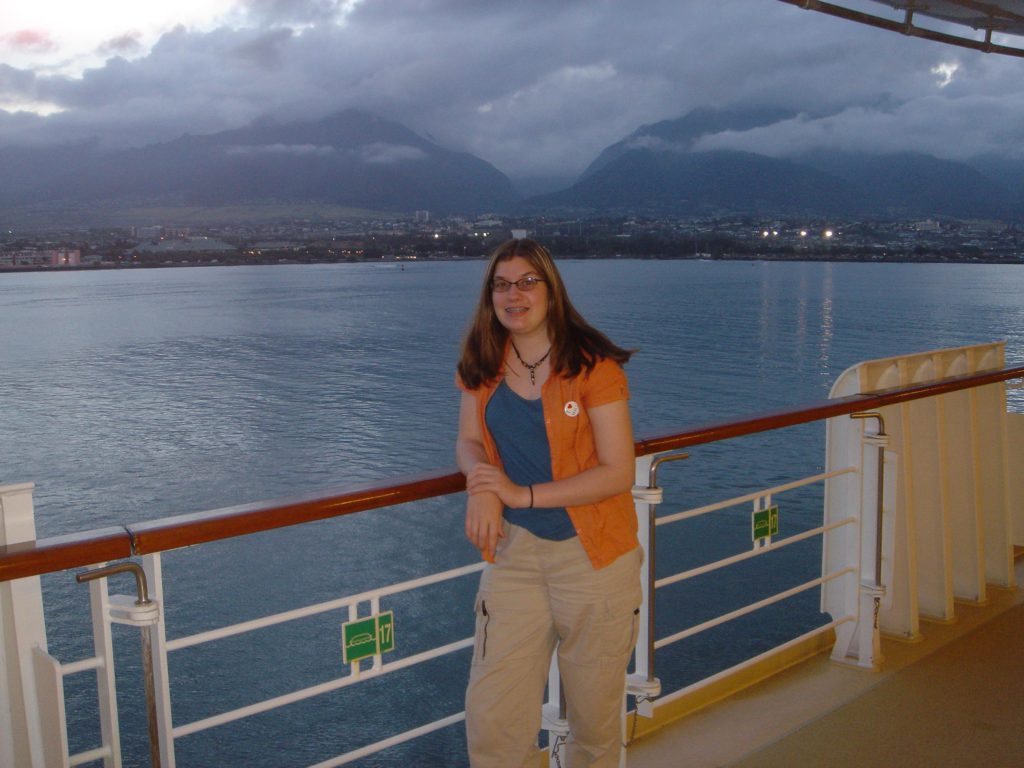
Kahului, Maui
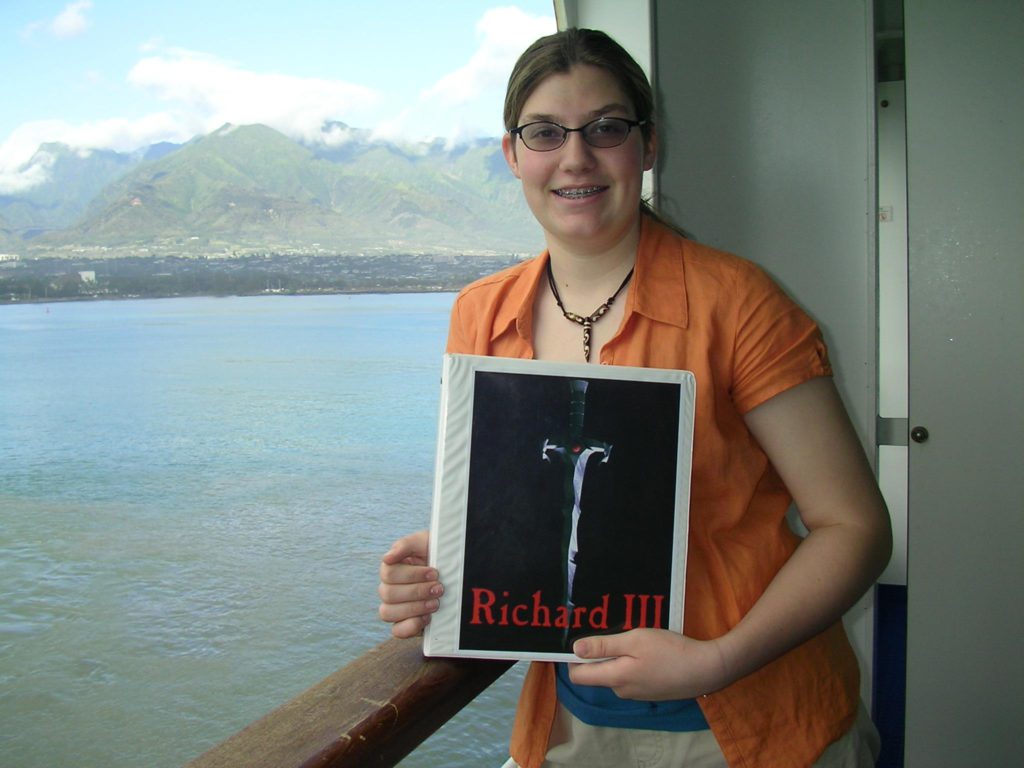
Tuesday, March 21, 2006
Today Linda, Dani and I took a tour to the top of Haleakala Crater. The trip took us through sugar cane fields where they were starting the process of harvesting by burning off everything – including the irrigation pipes(!) — except the cane. We passed through several of the island’s 11 climate zones, with commensurate changes in vegetation, from sub tropical to alpine.
On the way we saw Tom Selleck’s house, the front of which is plastered with incredibly tacky life-size bronze sculptures of horses, cows and roosters.
I forgot my camera, so you’ll have to settle for a postcard view. The crater isn’t a conventional volcano crater, it’s really the junction of two valleys that formed on opposite sides of the cinder cone. The elevation is just about 10,000 feet, the highest spot I’ve been to outside of a plane. The crater was used to train the Apollo moon landing crew, but it looks more like Mars — quite unearthly. The air was pretty thin up there, but fortunately we didn’t have to do a lot of walking. Nothing grows at the top except the silver sword plant, a peculiar little clump of leaves that sprouts a six foot flower just once, then dies.
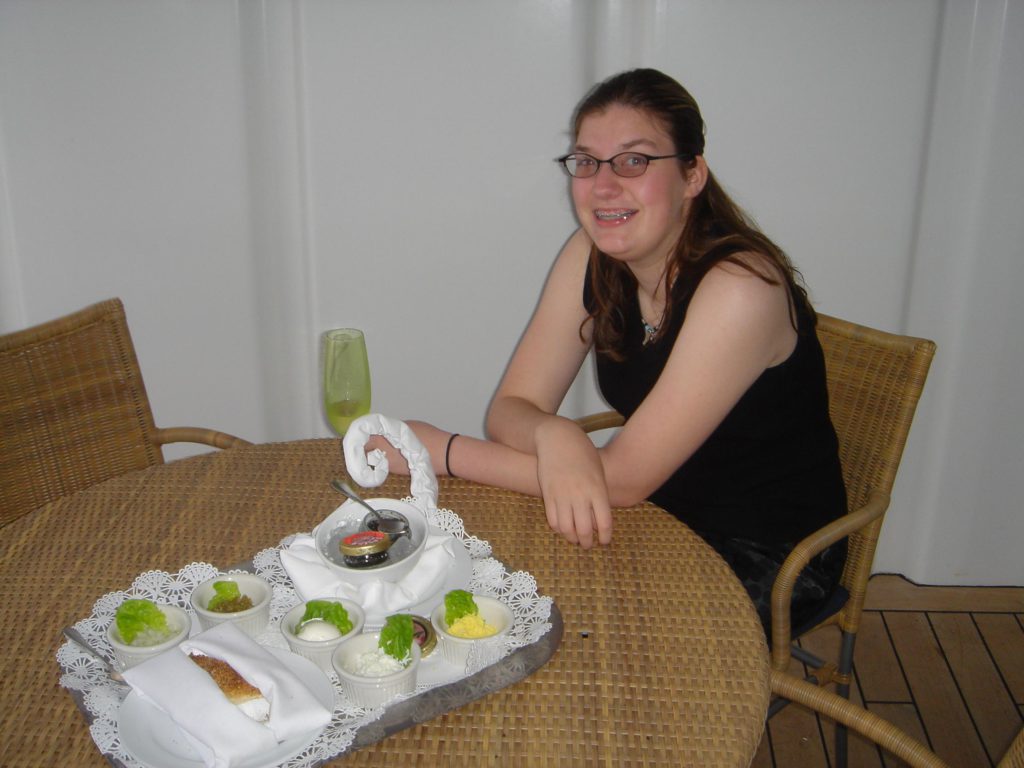
Back on the ship we had lunch in the dining room, and in the afternoon managed to order Sevruga caviar from the room service menu — a feat it appears no one else has ever accomplished on this ship.
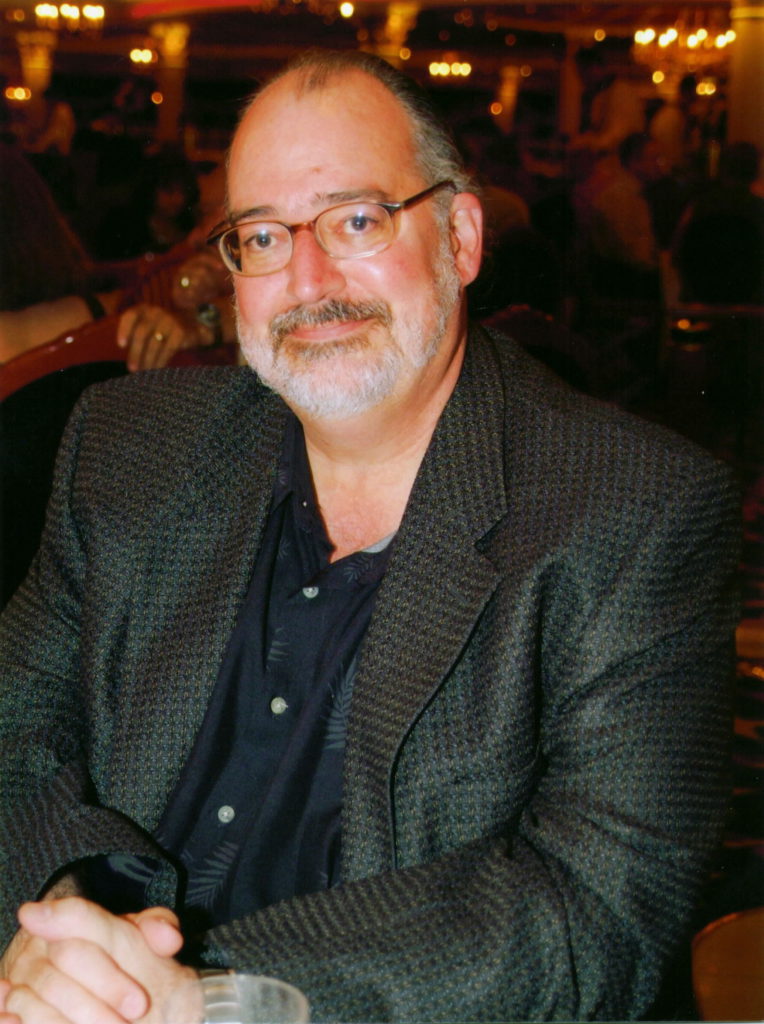
This was “formal” night, and three or four people actually got dressed up for dinner. We ate in the Liberty Dining room, which is decorate in an American Centennial motif that would have been almost tasteful if they’d stopped before the silver stars were applied to the draperies. And before the life size statue of Lincoln. And before the wall of American flag with strobing stars and water dripping down hundreds of strands of fishing line. And the mural of Mount Rushmore surrounded by fake rockwork. And the planter of plastic Hawaiian flowers. But otherwise it’s quite tasteful.
Lobster is the traditional cuisine of formal nights on cruise ships, and was the reason the concierge booked us into the dining room this night. And that’s what they called the things they served, all right. They certainly provided the waiter with plenty of exercise attempting to remove them from the shell. Even though they were just tails. And even though the tails had already been sliced in half. What attached the meat to the shell I don’t know, but the superglue manufacturers should check it out.
Our waiter shared with us the fact that next week he flies to Holland to commission the new Pride of Hawai’i, which he described as “elegantly decorated, not like this ship which was designed for Americans. ” Amen to that.
Kona, Hawai’i
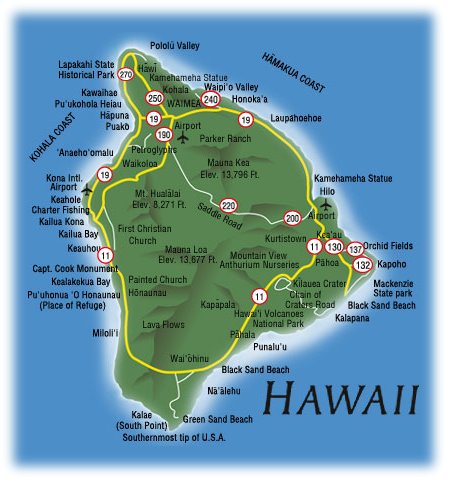
Wednesday, March 22, 2006
Our return to the big island of Hawai’i — this time on the other side — was much drier than our previous visit. It was cloudy most of the day, with occasional patches of sun, but no rain.
Kona is a small city that flows up the side of the cinder cone of one of the islands five cinder cones. The main street runs straight up the slope, terminating at a giant Lowes home improvement store, visible for miles.
There’s no harbor here, so a tender trip took us to the dock .
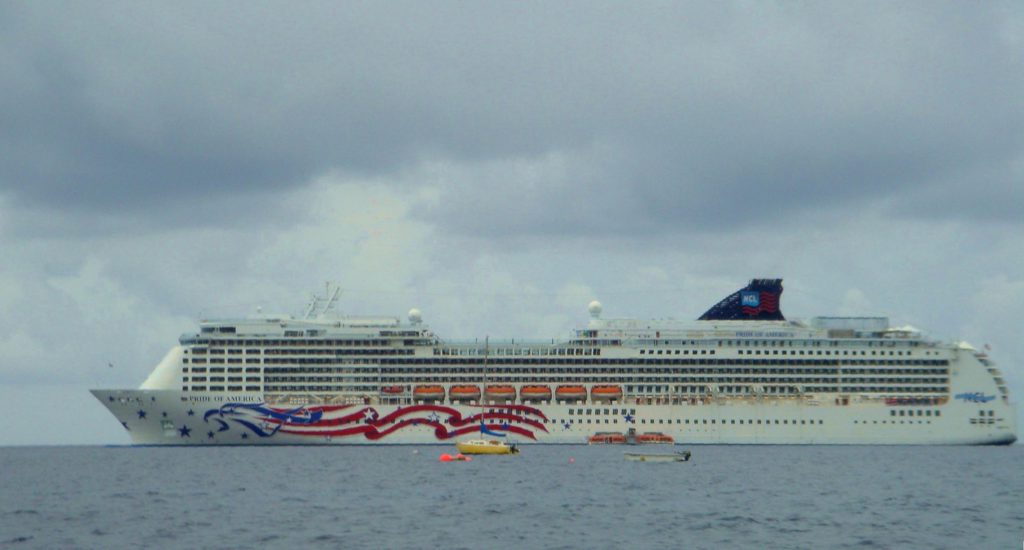
Linda and Pamela went on a short glass bottom boat ride, but Dani and I opted for the Captain Zodiac snorkel adventure. This was probably the best shore excursion we’ve ever been on.
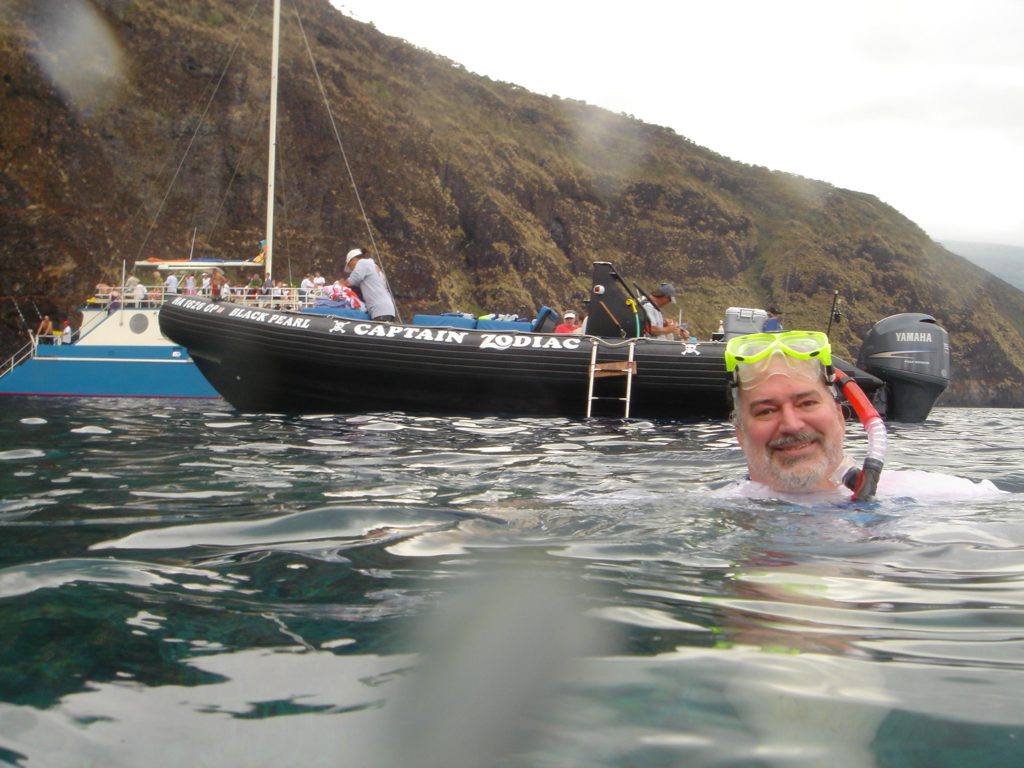
Captain Zodiac is the island’s oldest snorkel trip operator, founded in 1974. They own several pontoon rafts that seat 16 passengers and two crew. The passengers sit on the inflated sides of the raft and hang onto a rope for dear life. On our boat 12 of the 16 passengers were from Florida, as was the captain!
He was a knowledgeable and entertaining guide and his assistant was a slumming marine biologist. hey took us about 12 miles down the coast on a fun, sometimes bumpy ride that topped thirty and possible forty miles an our.
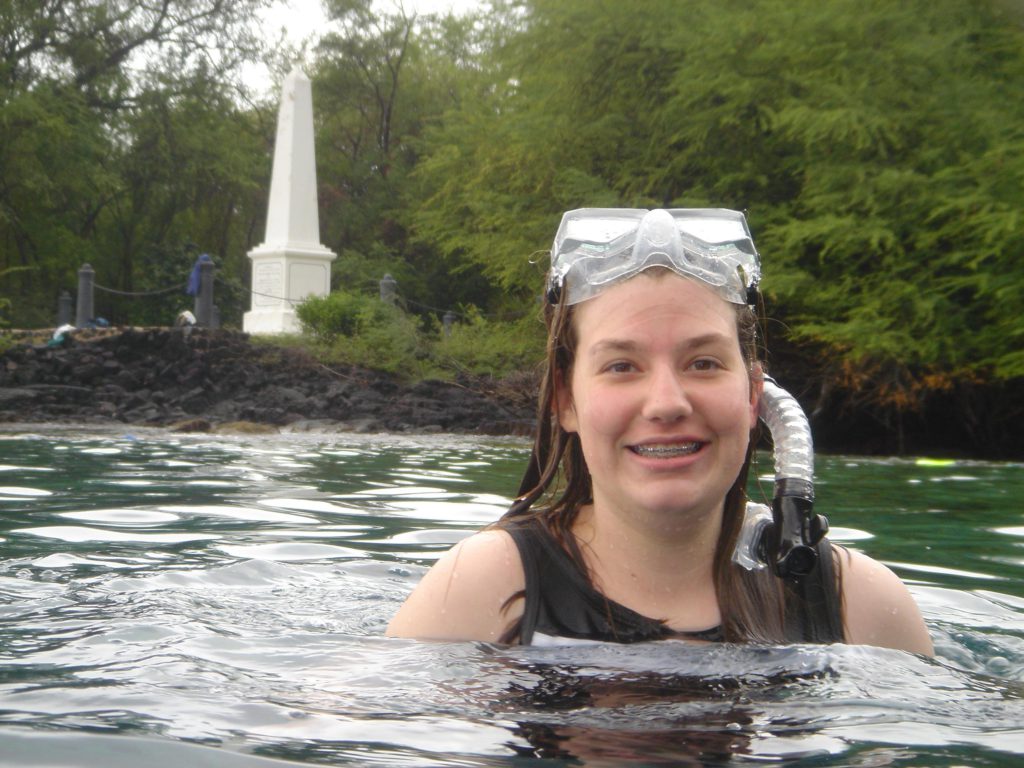
The cove is the place where Captain Cook finally wore out his welcome with the natives and was killed. A monument marks the spot.
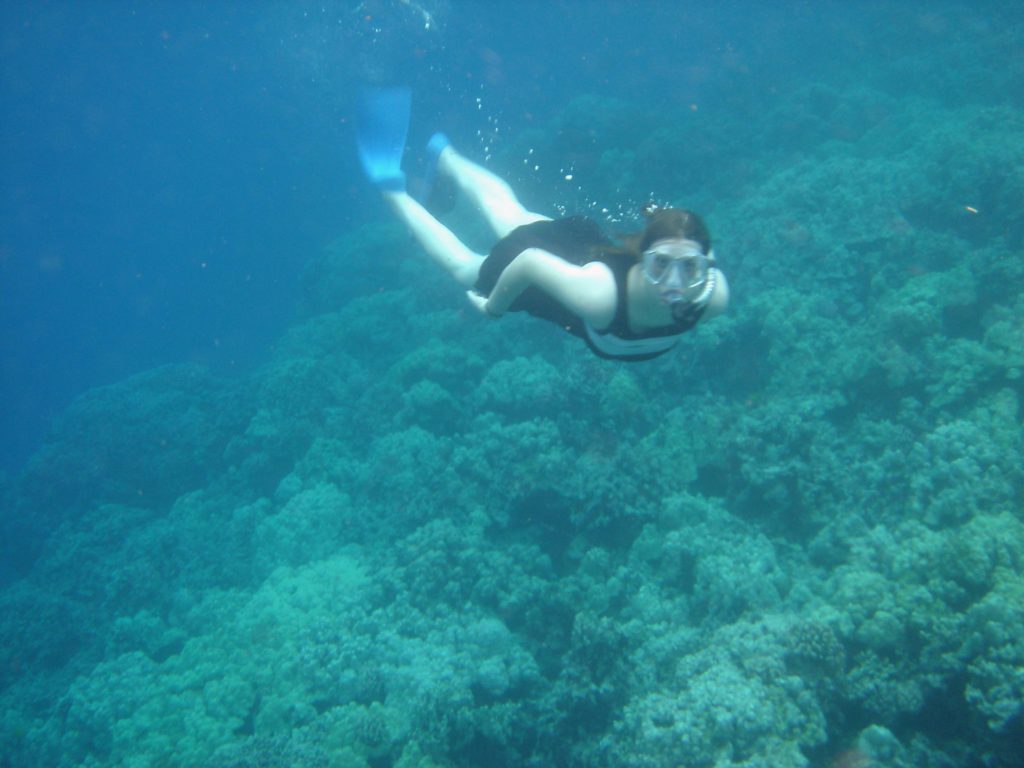
Snorkeling was fantastic: 73 degree water, no current, 150 foot visibility, and most of the reef between four and eight feet deep. Also, the fish were completely unafraid of snorkelers, which made it easy to see them up close.
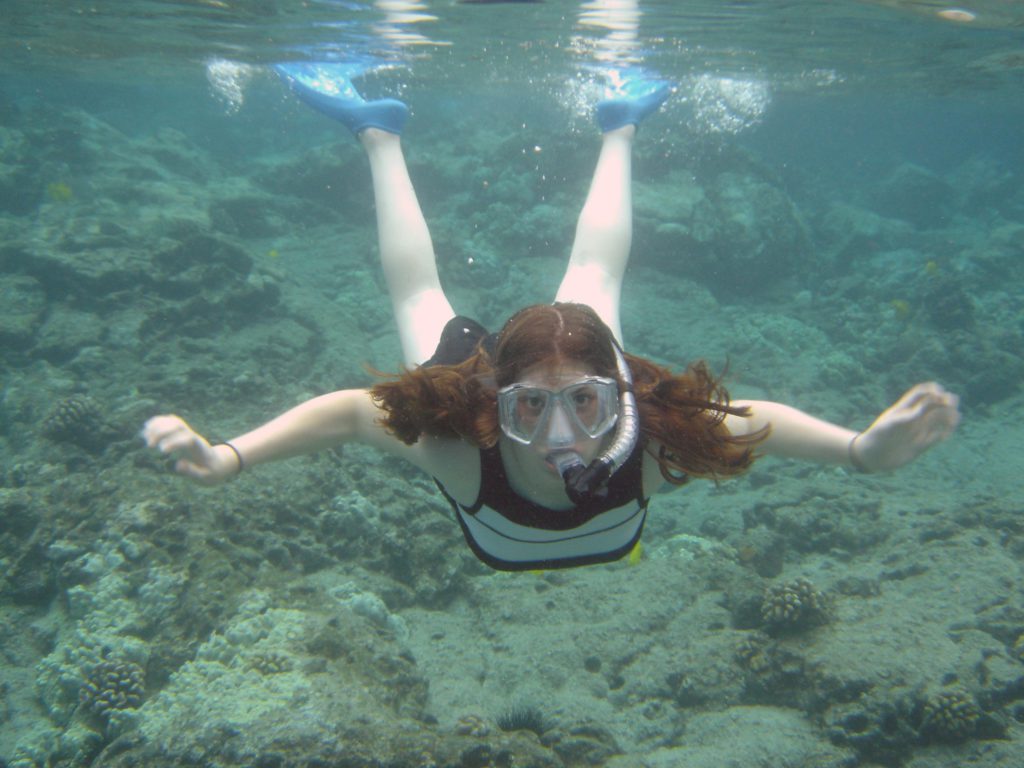
Fresh water flowing down from the island creates pockets of cool water — or is it warmer? Where the fresh water and salt water meet a strange effect occurs that is like looking through obscure shower door glass.
After an hour of delightful snorkeling we had some snacks and then headed back to the ship, exploring some lava tube openings in the volcanic coastline along the way. At one point we zipped between a tight gap in one of the promontories at top speed, which got a scream out of some of the passengers. Quite fun.
Back at the dock we did a bit of shopping in the ma and pa gift shops, and found some nice T-shirts at 5 for $20. Can’t beat that!
Back on the ship we had a late lunch at the Cadillac Diner, a 50’s themed coffee shop with posters for Elvis goes Hawaiian movies. Good theming and excellent food.
At 2:30 they set up the much anticipated chocolate buffet in the main dining room. Typical of the disorganized management of the ship in general there was a 30 minute queue. This was caused because there were two identical buffets where items repeated at least three time, instead of six separate buffets. The selection was heavy on cakes, with no fine chocolates at all. That didn’t stop the passengers from piling their plates four inches high, edge to edge.
Dinner was back at Jefferson’s Bistro, definitely the best restaurant on the ship. Dani and I shared a “Fire Star”, a peculiar contraption that looks like a torture device, with chunks of chicken, lamb and beef shoved onto nails protruding from a mace-like thing hanging from a hook. The attraction, of course, is that it is set on fire at the table. Serious fire, with a three foot column of flame briefly. An odd thing for a continental bistro, but tasty.
Nawiliwili, Kaua’i
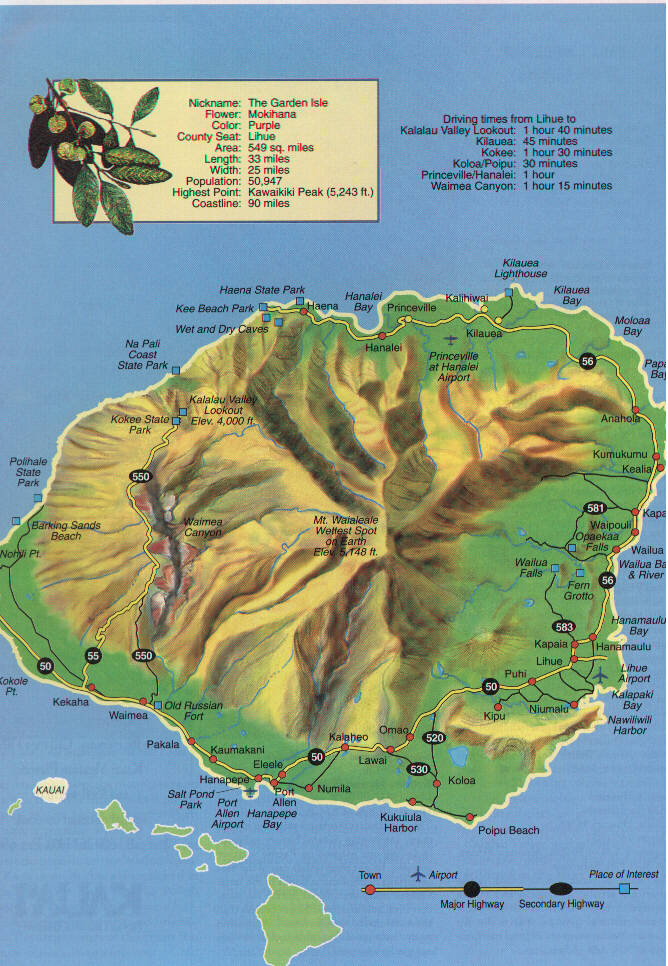
Thursday, March 23, 2006
Dani and I had a great breakfast in the oddly deserted Cadillac Diner. I had that Hawaiian favorite, Spam and eggs. Apparently Hawaii consumes more Spam than anywhere else.
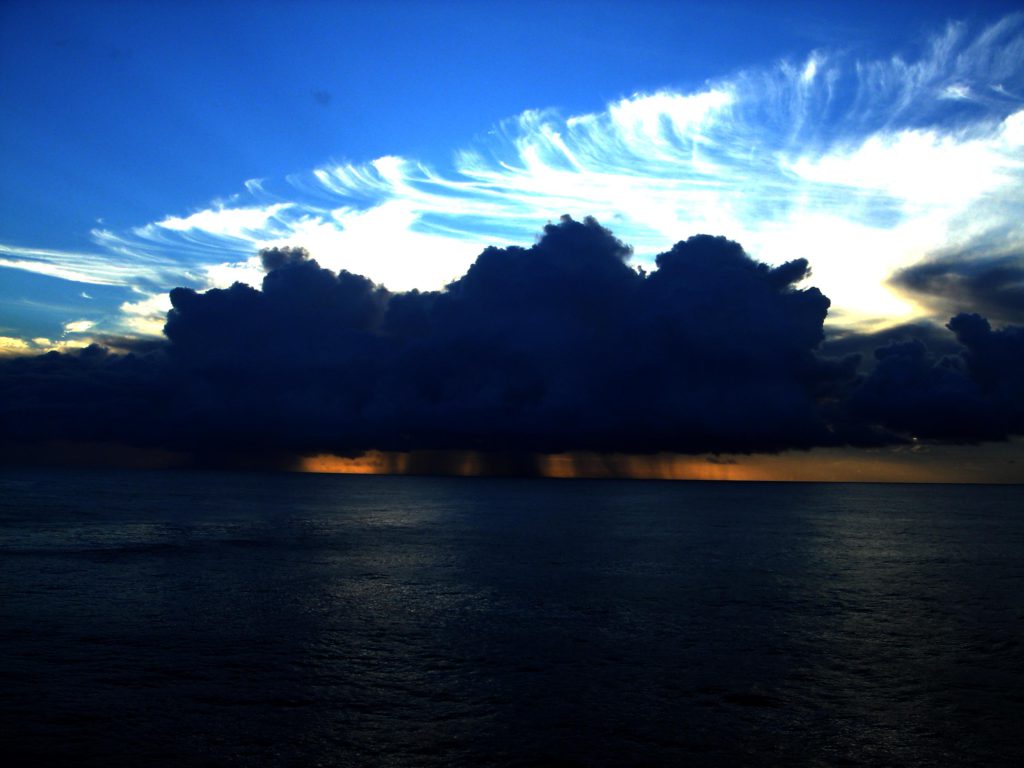
We had a 7:40 meeting for our shore excursion, but the captain announced they were “having some trouble with our redundant systems. ” Translation, the ship is broken and we’re not in port yet. Much ominous vibrating and shaking followed. While we waited we spotted humpback whales blowing right off the port side of the ship, within fifty feet. There seemed to be a whole family of them.
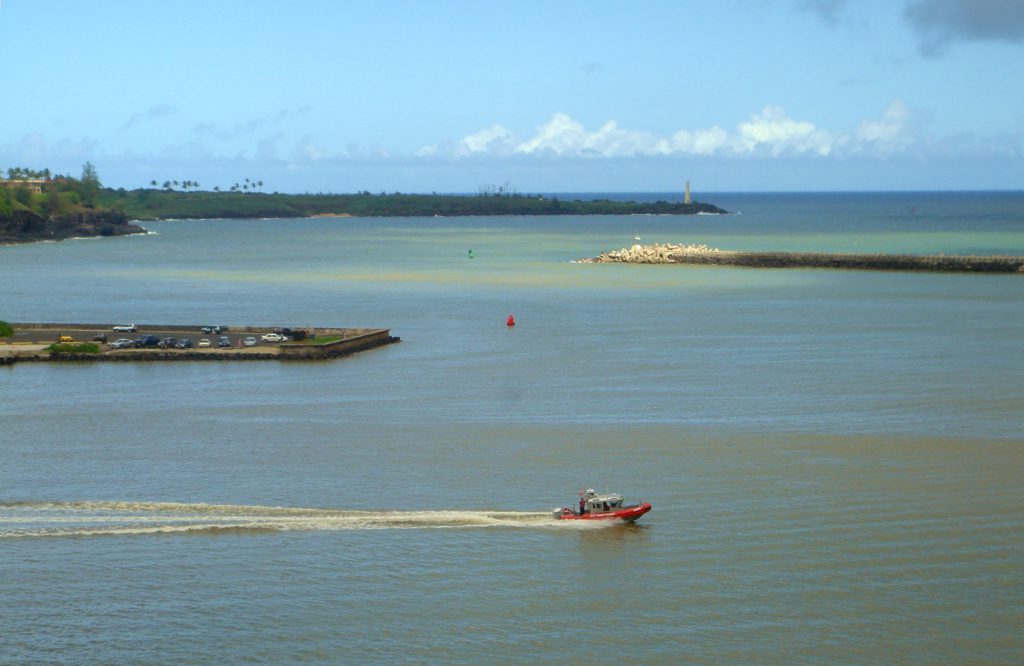
We finally docked after 9am, pushed into port by tugs.
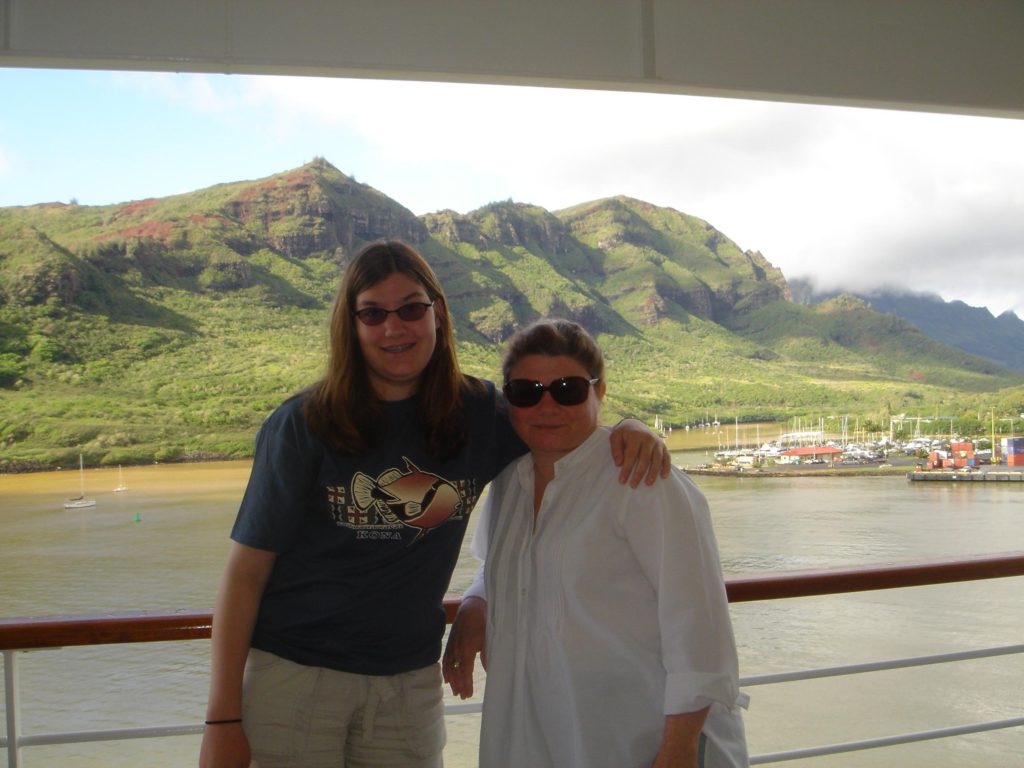
Today’s tour was with Tom the Control Freak. This was probably the worst shore excursion ever. Tom had many rules and procedures, and although he had lots of information (delivered pretty much nonstop over a seven hour period) he treated us with condescension throughout. An example of one of Tom’s rules was the way the bus was to be unloaded. One side first, alternating at each stop. This meant that the second side to go was unloaded back to front, incredibly inefficient, since you didn’t know when the people behind you had gone. In short, Tom was a controlling moron. Let’s just say we didn’t hit it off.

Our first stop was at the Wailua River where we boarded a barge pushed by an incredibly polluting diesel motor to travel upstream to the Fern Grotto. Along the way a collection of Hawaiian “entertainers” performed. When I use the word “entertainers” read “torturers”. The lead dungeon master was a 95 year old man who simply didn’t understand that he couldn’t sing. He was accompanied by a number of “musicians” When I use the word “musician” read “person capable of making loud noises”. Chief among these was a person playing an instrument that sounded like a piece of clothes line tied to a garbage can. (We later discovered that this instrument was, in fact, a piece of clothesline tied to a garbage can. )
After a number of truly horrendous offerings they were joined by hula dancers who flagellated themselves with split bamboo rods in time with the music. If they’d offered me one of the rods I would have been happy to beat them much harder. Next we were forced to dance the hula along with them. This is the point at which I adopted a Gandhi-like posture and embarked on a program of passive resistance. Ignoring them for the remainder of the trip was fairly successful in reducing the journey to only incredibly annoying.
The Fern Grotto is actually a pretty place, at least it would be without several busloads of tourists. The island of Kaua’i received 107 inches of rain in four days last week, and the devastation was evident in washed out trail, piles of debris and mud everywhere. It began to rain while we were there, and the clear waterfall at the grotto soon turned to mud.
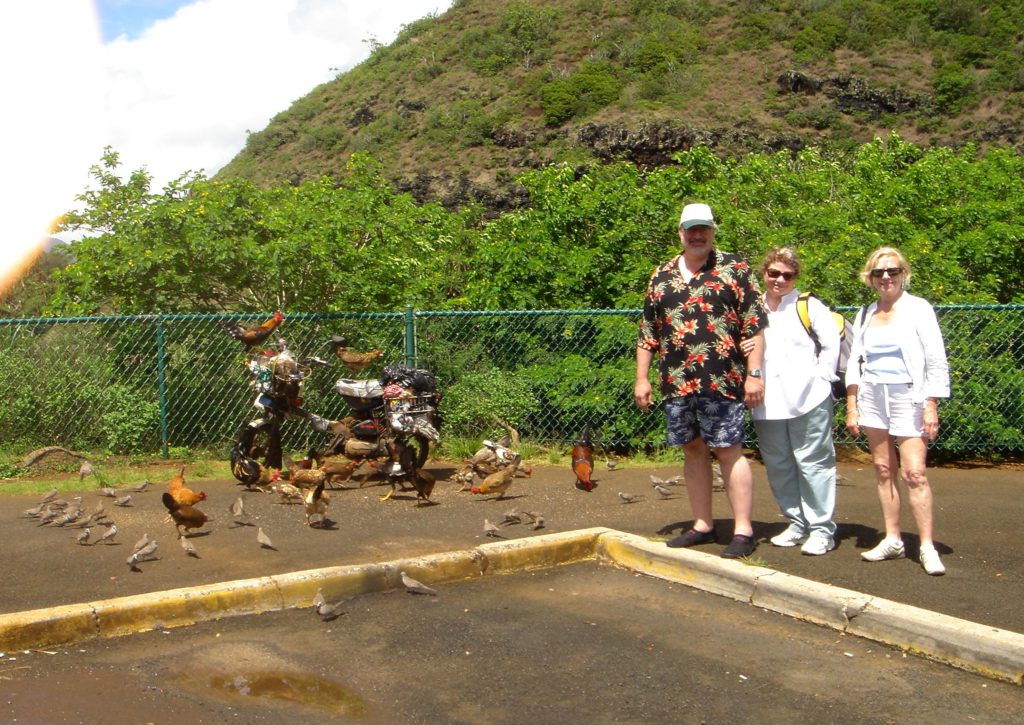
Our next stop was at another waterfall where we saw some of the many free range chickens(!) that wander the island. Apparently descended form jungle fowl brought by the original Polynesian settlers, these birds roam the island, and are too tough to be of much culinary interest.
We had lunch at an adjunct to a local hotel that was undoubtedly the low bidder. The less said about lunch the better. Then it was time for the hour and forty minute drive to Waimea Canyon.
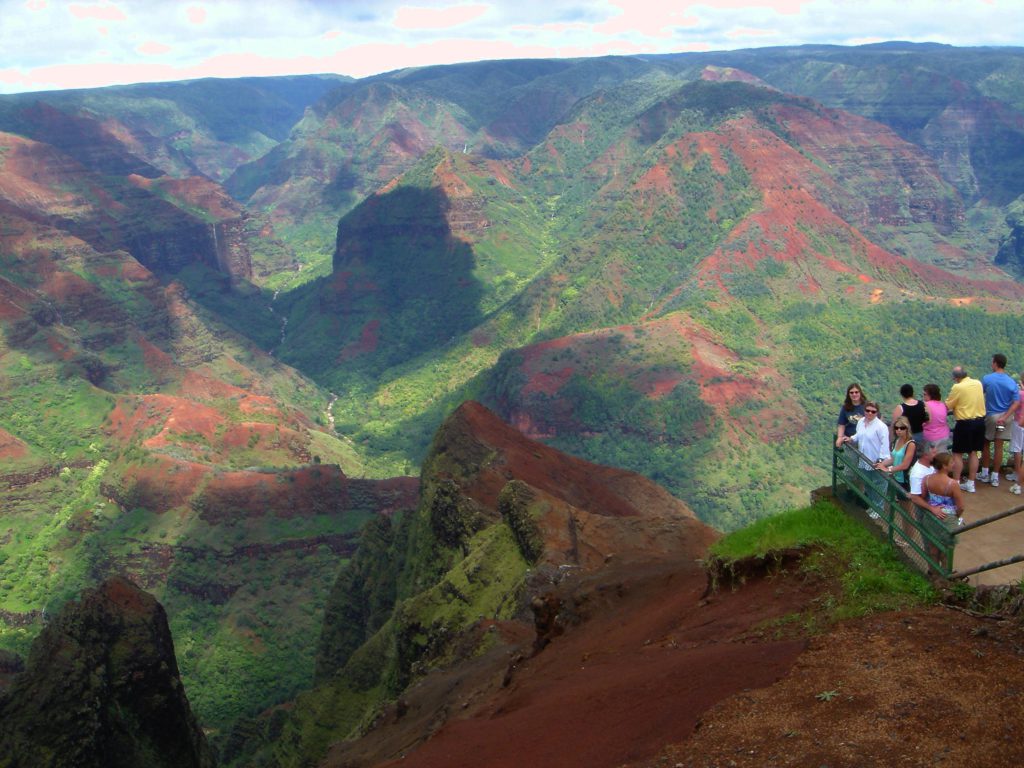
Kaua’i is easily the most scenic of the islands. It is much older than the other inhabited islands, and no longer resembles a volcano. There is read dirt everywhere and the hillsides are quite verdant. There is a pronounced demarcation line between the wet eastern side of the island and the dry western side. Rainfall in the east is 400 inches a year, and in the west only ten or twenty. This demarcation line is so pronounced that it essentially runs through the middle of an intersection in the town of Koloa.
In 1992 Kaua’i was destroyed by Hurricane Iniki, which had winds of well over 200 miles per hour. Every tree on the island was completely stripped of leaves, and most structures were damaged or destroyed. The island’s sugar cane and cattle were already in decline, and Iniki wiped out tourism. So Kaua’i went into a period of decline from which it is only now emerging. Now its sole business is essentially tourism.
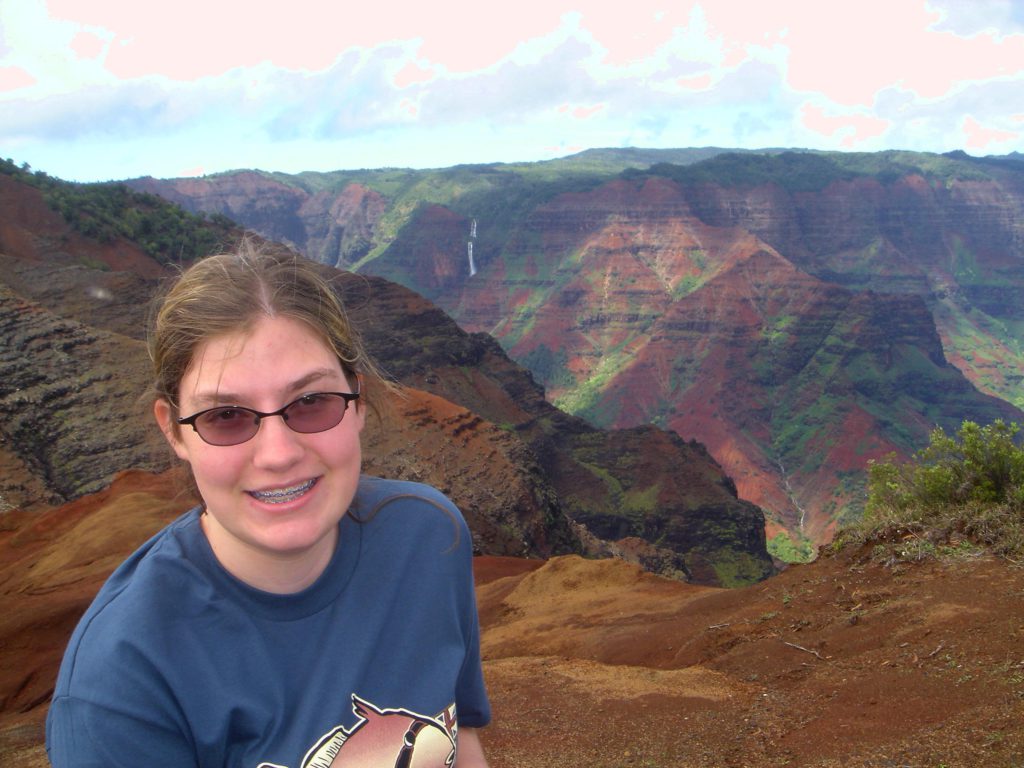
Unfortunately the development on most of the island is shoddy. The roads are lined with dumpy buildings that owe more to strip mall architecture than resort or small town ambience. We drove around most of the east, south and west sides of the island, and saw little to attract us. The only exception is the resort community of Po’ipu in the south, where there are some upscale homes and a Hyatt Regency. There are some movie stars who live on the north side, so perhaps it’s nicer there, too.
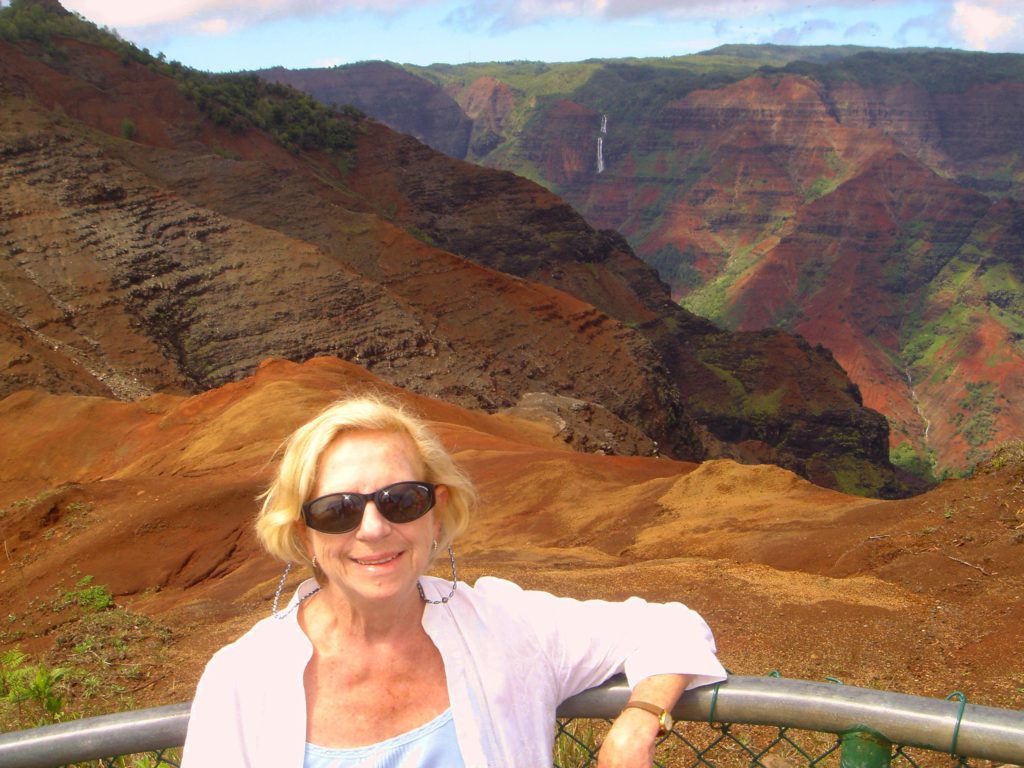
In mid-afternoon we reached Waimea Canyon, and it certainly was spectacular. It looks much like the grand canyon, but is much more colorful because it is more verdant. It’s surprising how similar they look, given that this canyon was formed do to a volcanic collapse rather than sedimentary deposition and erosion.
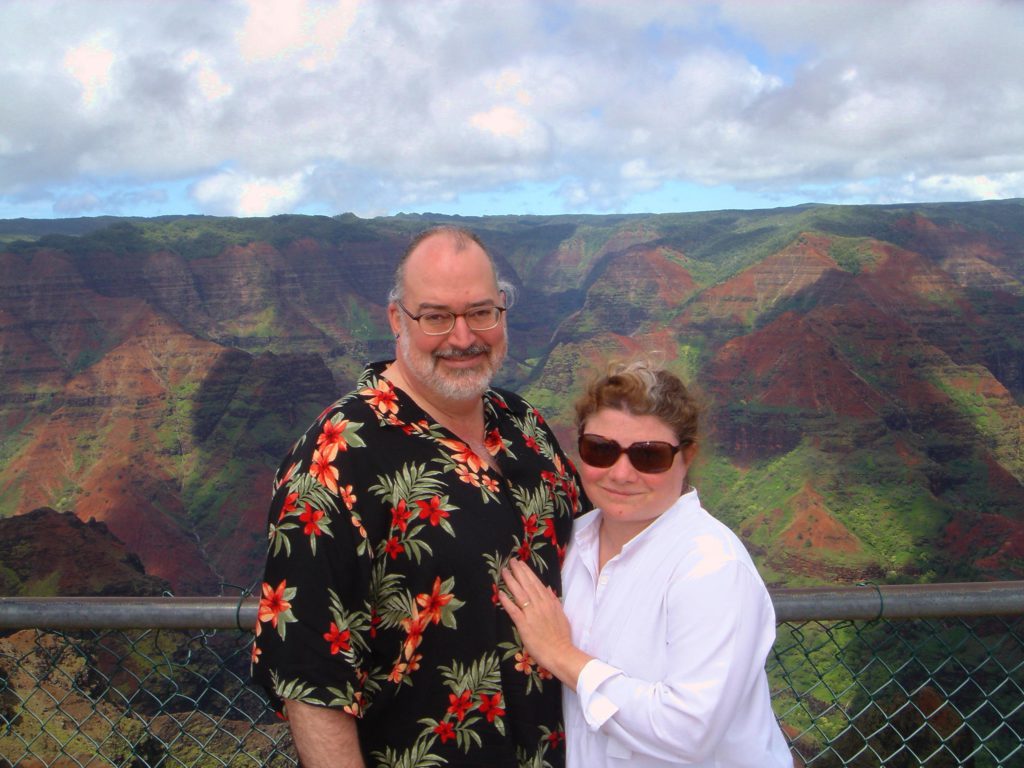
We arrived back at the ship around 6pm, having been forced to say Humuhumunukunukuapoa’a over and over for the last two hours like a third grade class of misbehaving children. After stiffing Tom the Control Freak we reboarded the ship and had appetizers in Pink’s Champagne bar, followed by dinner at the lazy J Steakhouse. Although the restaurant was noisy, the steaks were quite good, as were the accompaniments.
Of all the islands, Kaua’i is the one that looks like Hawai’i. It doesn’t have the urban sprawl of Oahu, the suburban sprawl of Maui, or the barrenness of the big island. But I doubt I’d come back. Once you’ve seen the sights, there’s nothing to do. At least at the Grand Canyon you can stay at the rim, sit on your porch, and watch the changing light and weather conditions. Here there’s nothing once you get to the spectacular view except a parking lot.
Nawiliwili, Kaua’i
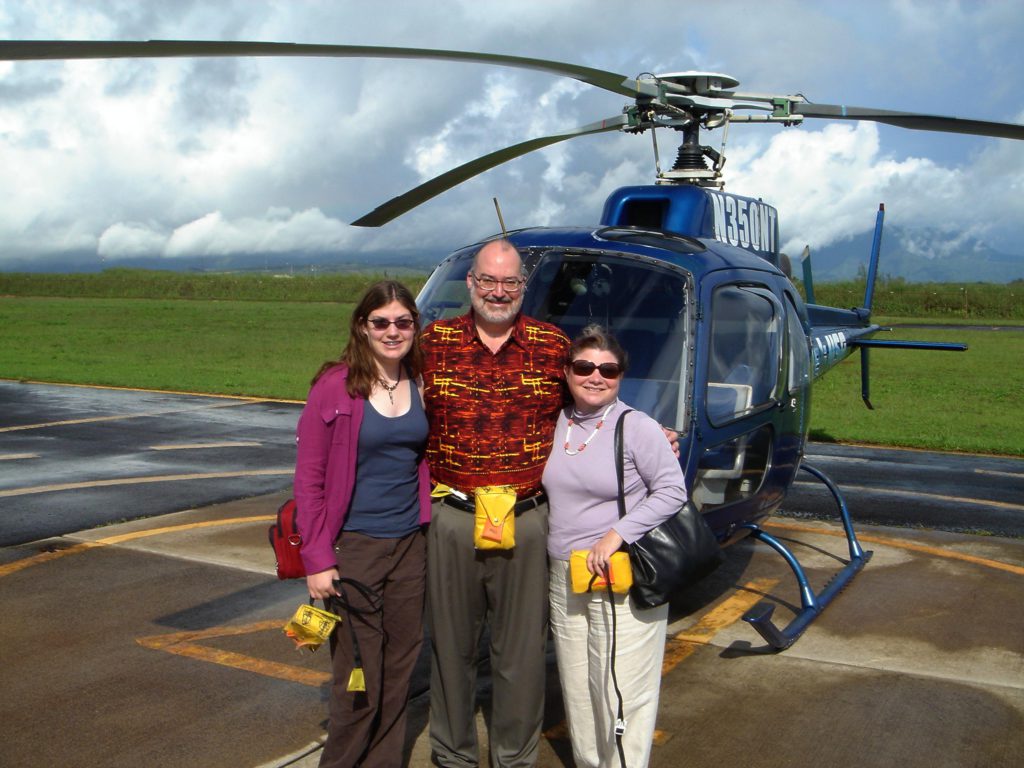
Friday, March 24, 2006
We saved the best for last. Although a morning thunderclap ushered in a squall, the weather cooperated for our helicopter ride around Kaua’i.
This is the thing to do! For $199 each (plus a premium for fat people like me) you get a half hour or more of the most spectacular scenery you’ll ever see.
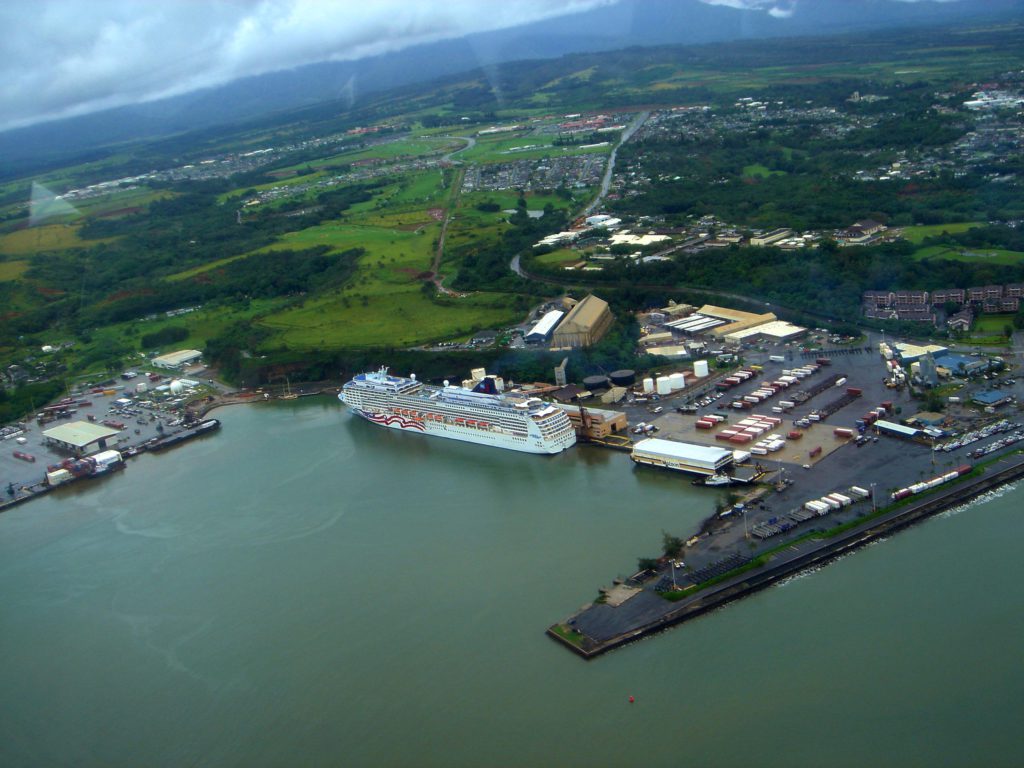
I had never ridden in a helicopter before, but Linda and Dani had in Alaska, and still rave about it as the highlight of that trip. It is, indeed, like being lifted in someone’s hand. There are none of the feelings one associates with flying in a plane.
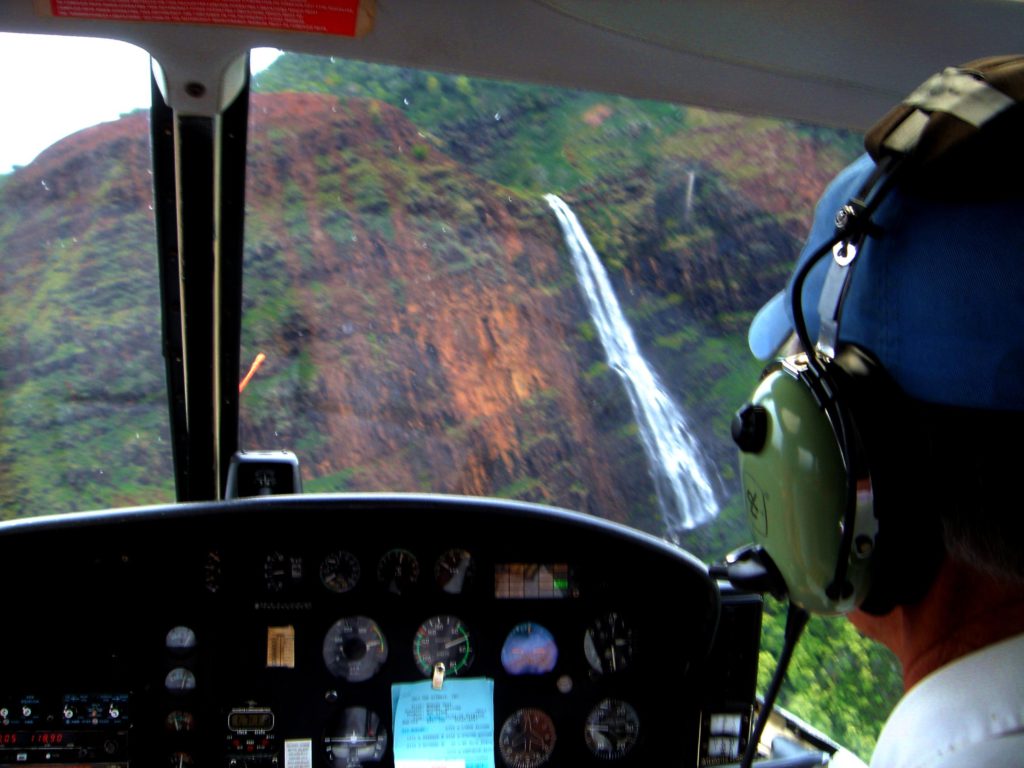
Our pilot skirted the bottoms of rain clouds and squeezed over mountain passes, passing over the same terrain it took us hours to negotiate yesterday. Within minutes we were in Waimea Canyon, and able to explore nooks and crannies far beyond the view from the lookout point. Fresh rain on the mountain had created even more waterfalls during the night.
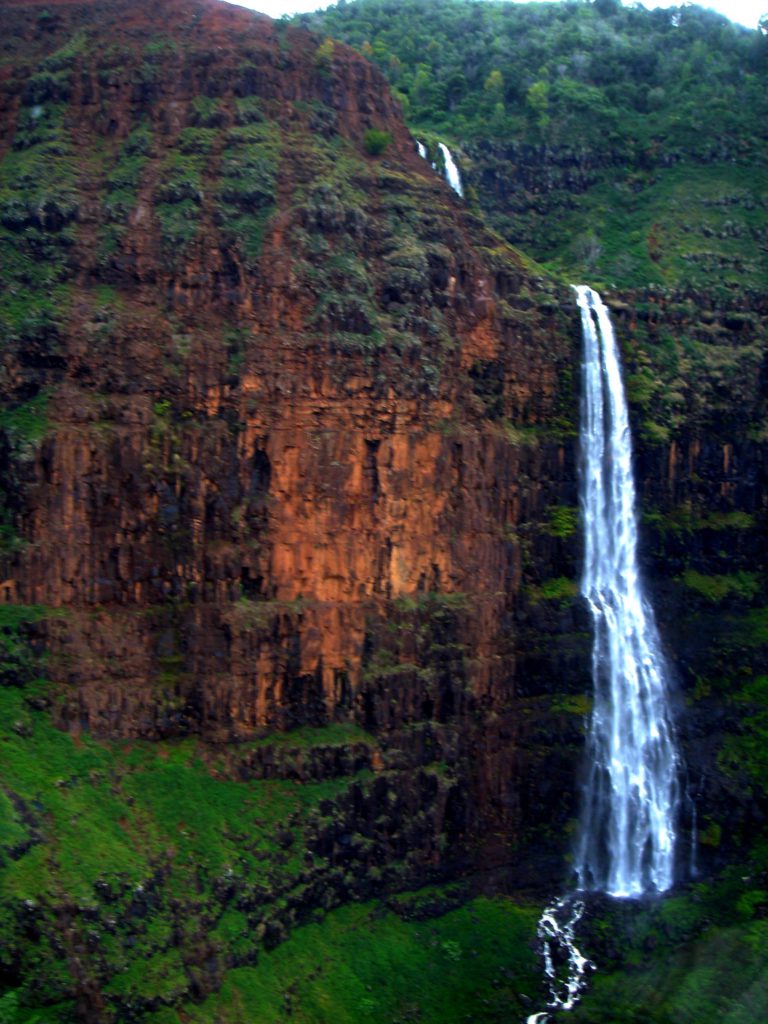
We climbed out of the canyon and continued up to the inaccessible Napali Coast on the Northeast shore of Kaua’i. No roads go here, and it’s a rugged day’s hike from the nearest one. The steep cliffs make it equally inaccessible from the sea. Caves hollowed out by the surf interconnect in mysterious ways, and the white sand beaches come and go with the seasons.
Climbing over the mountain we saw hundreds more waterfalls, and passed over the fern grotto and river we saw yesterday, then returned to the helipad at Kaua’i airport.
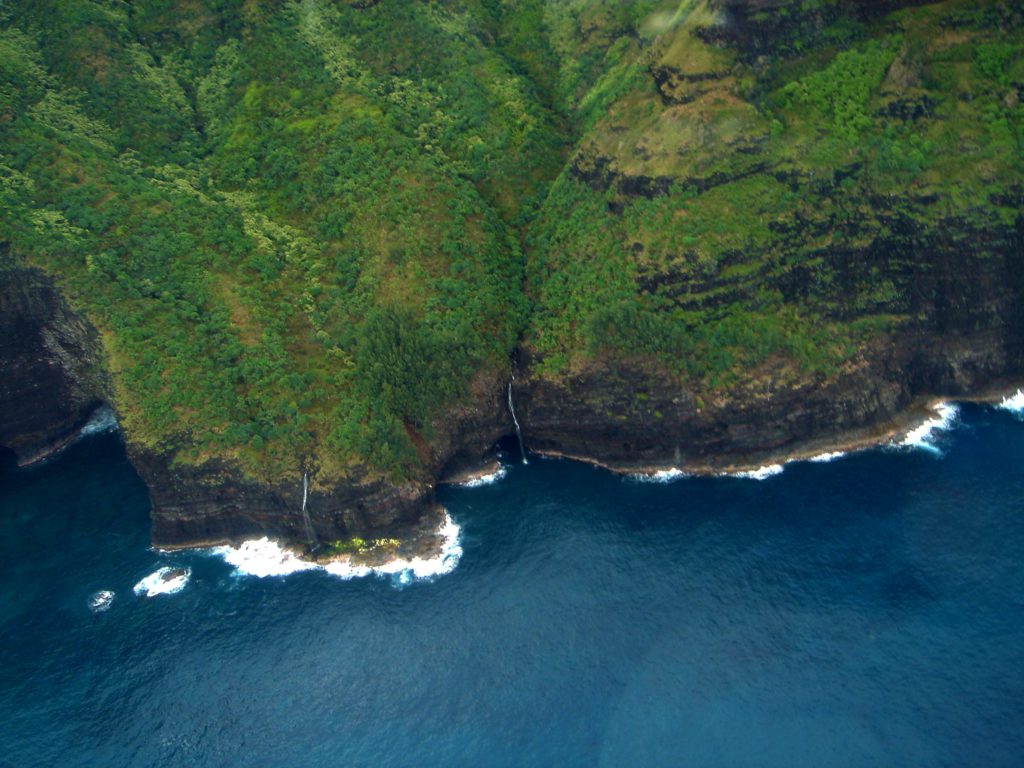
Since they do a very precise job of weight balancing, Pamela was on a second chopper, and we were proud to see her look of triumph as she disembarked, given her fear of heights!
This flight is really the reason to come to Hawai’i, and shouldn’t be missed.
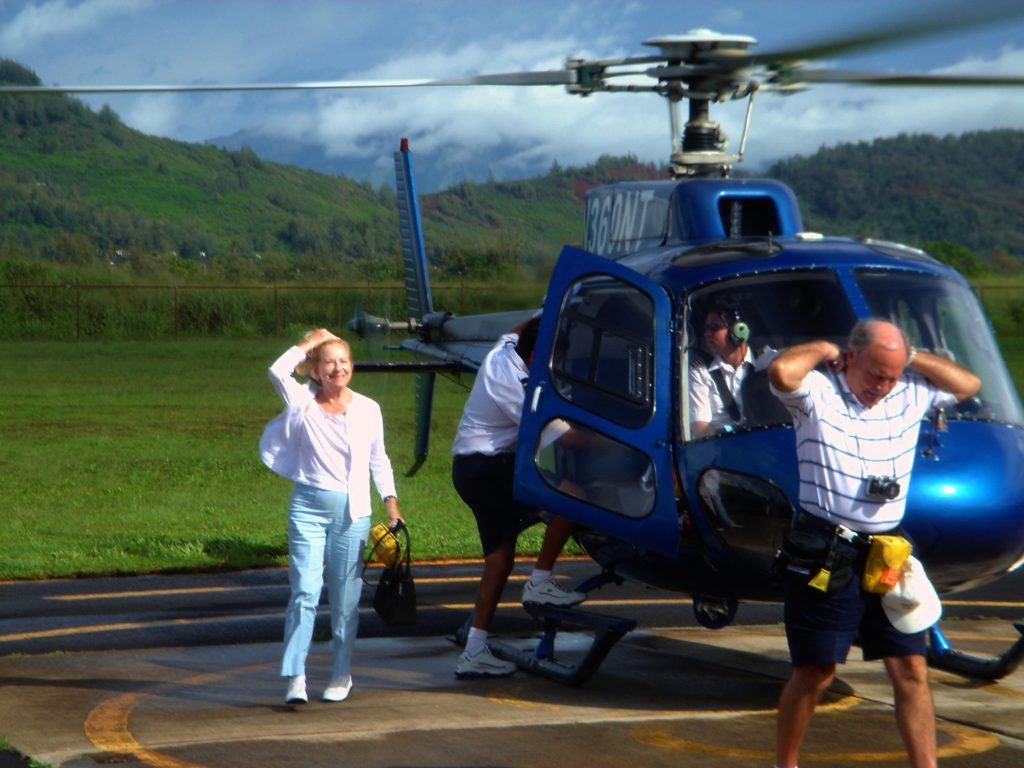
We left port at 2pm and sailed northward around the island, passing the Napali coast, where there were many pods of whales blowing. I had read on the Internet a tip that there was a great view from the ship’s Italian restaurant, Little Italy at 5;30pm, so that’s when we had made our reservation. This proved to be the case, although as it happed the view from our balcony was the same. Quite amazing.
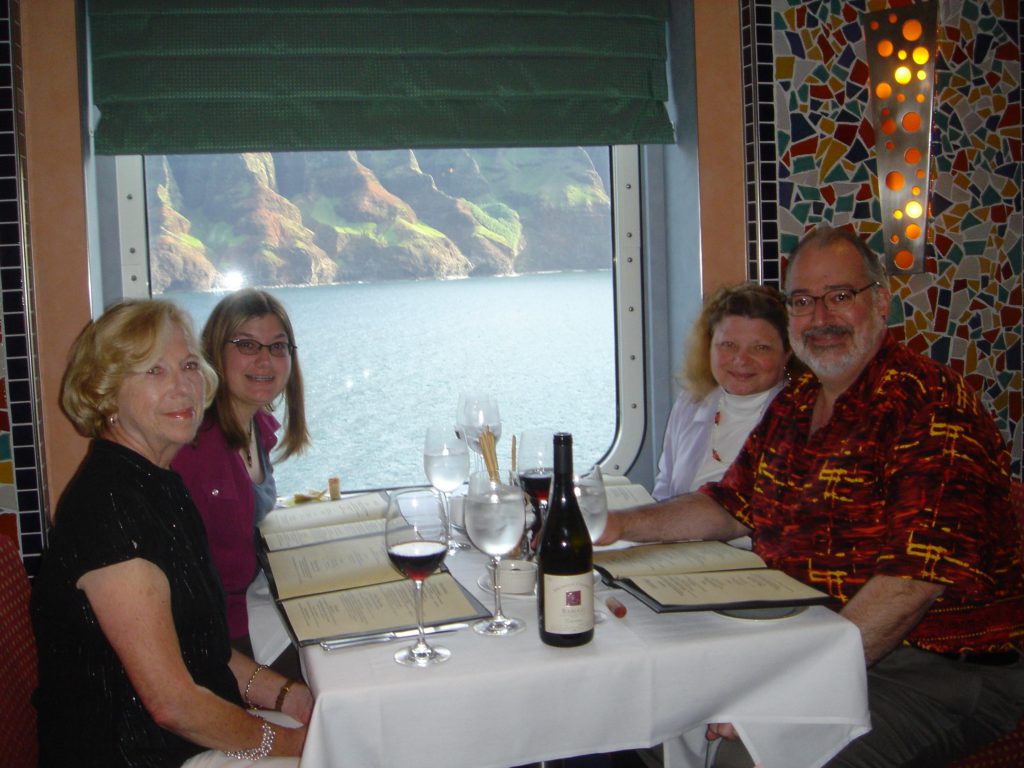
Diamond Head, O’ahu
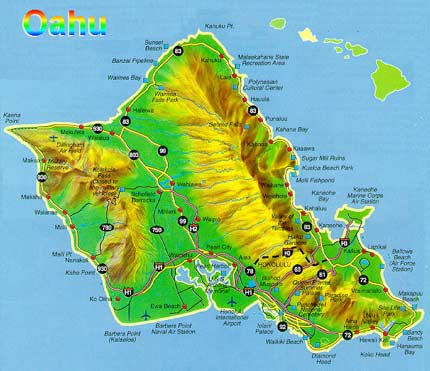
Saturday, March 25, 2006
Today is our 28th anniversary!
After a leisurely breakfast in the Skyline Dining Room we disembarked, collected our luggage and caught a cab for the Kahala Mandarin Oriental Hotel. The Honolulu cruise terminal is the easiest to get in and out of that we’ve experienced, particularly since we didn’t need to clear customs.
Our hotel on the southern coast of O’ahu, as the base of Diamond Head. The volcaono’s slopes are covered with incredibly expensive homes. Houses on small lots near the hotel go for as much as $50 Million.
The hotel isn’t really a Mandarin anymore. Apparently their contract expired about three weeks ago. This doesn’t surprise me, as the 45 year old building doesn’t seem quite up to the level of perfection demanded by the Mandarin, although the rooms are quite nice and the location can’t be beat.
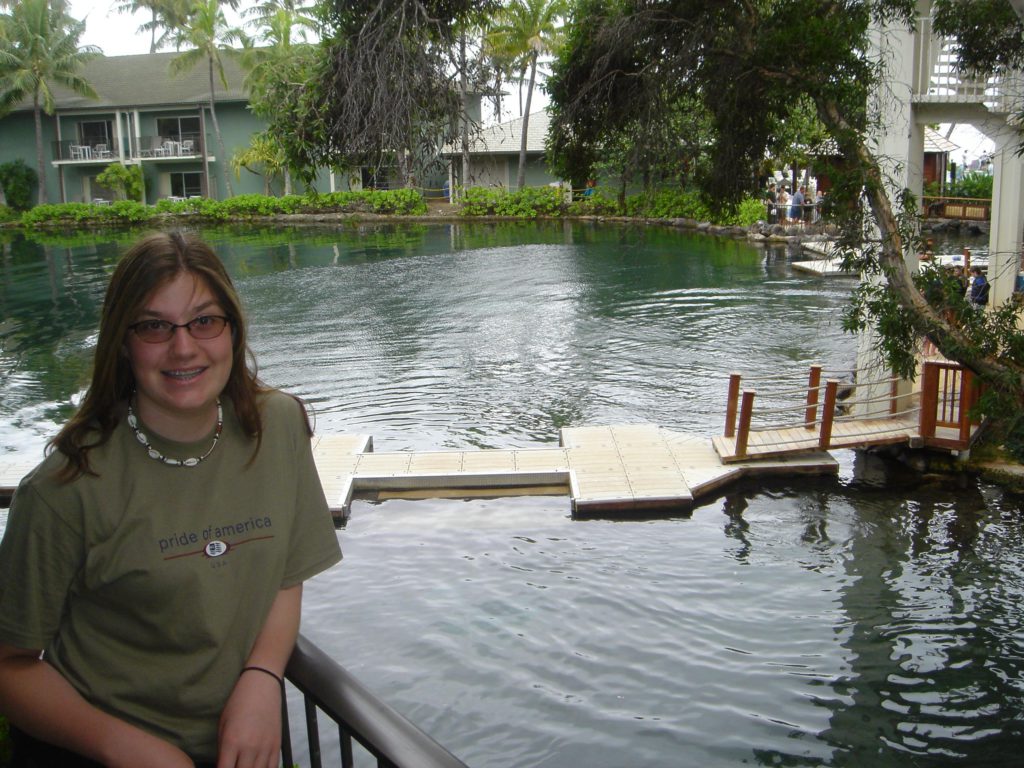
Our room overlooks the dolphin lagoon, where six bottlenose dolphins swim with guests–for a price.
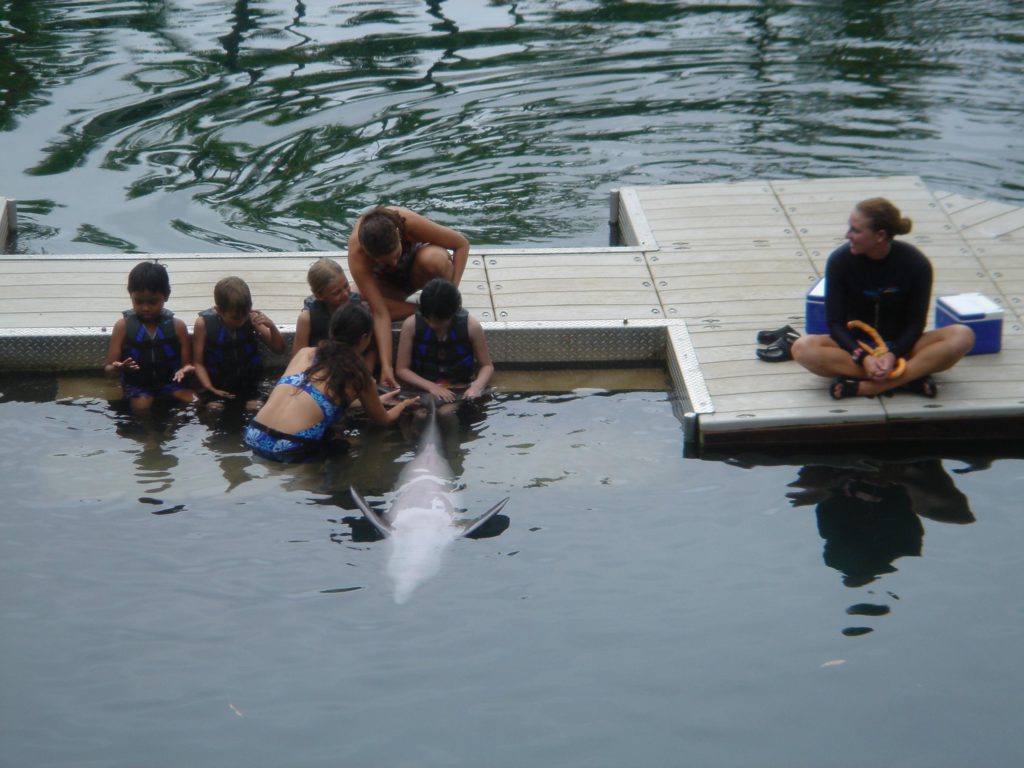
Since our rooms weren’t ready we checked our bags and took the hotel shuttle, first to the Kahala Mall, and then to Waikiki, where we had a very authentic Japanese lunch at Kyo-ya.
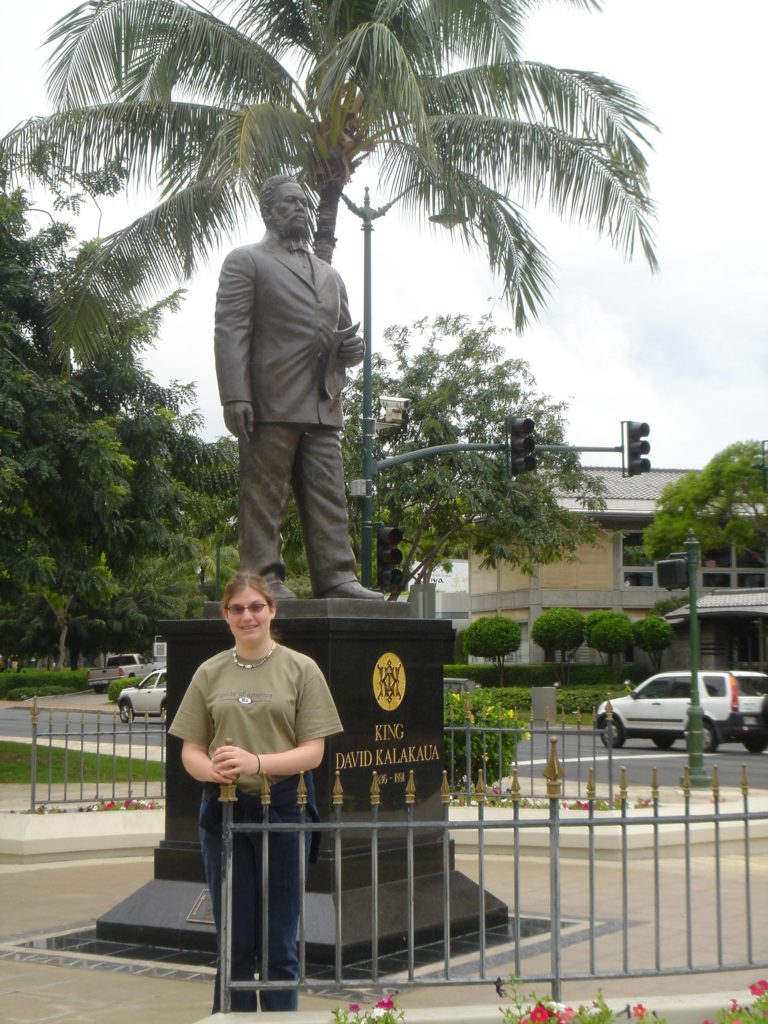
After a relaxing afternoon Linda and I caught a cab to Chef Mavro’s, who is regarded as one of the top ten chefs in the world. It seemed strange to be dining in a really nice restaurant wearing a Hawaiian shirt! One interesting aspect of the menu is that there is no wine list. Each food has been matched with a specific wine. At the waitress’ suggestion, one of us had the four course tasting menu, and the other had the six course, which gave us an opportunity to sample ten different dishes and wines. Although eight of the wines were ones it would never have occurred to me to order, they were all superb matches with the food. Each course was a small serving with a number of different flavor on the plate. Two of the courses stood out as among the best I’ve tasted. The first was lobster with a delicate reduction infused with fennel. The second was goat’s cheese mixed with lemon peel and herbs served on a sliver of toasted brioche and poached apple.
Diamond Head, O’ahu
Sunday, March 26, 2006
It was rainy today, a good day for relaxing at the hotel and watching dolphins. Brunch was at Hoku’s, one of the hotel’s three restaurants, and voted best in Hawaii by Food & Wine magazine. It was the best brunch buffet I’ve seen, with lobster, crab, sushi, sashimi and a chocolate fountain. We had a quite afternoon, and a lovely dinner downstairs at the Plumeria Beach Cafe which was open air. It looked a bit more like a coffee shop, and did offer a few sandwiches, but also had some excellent salads and fish dishes.
Diamond Head, O’ahu
Monday, March 27, 2006
Another lazy (and still rainy) day. This is the rainiest March in Oahu’s history. It makes us realize how lucky we were with the weather on the cruise. The golf course looks like a lake! We had a terrific, multi-course, Japanese businessman’s lunch at another of the hotel’s restaurants, Tokyo Tokyo, then it was time to head to the airport for the redeye flight home.
It’s been a pleasant trip, with Hawai’i just about as we expected: scenic but not life-changing.
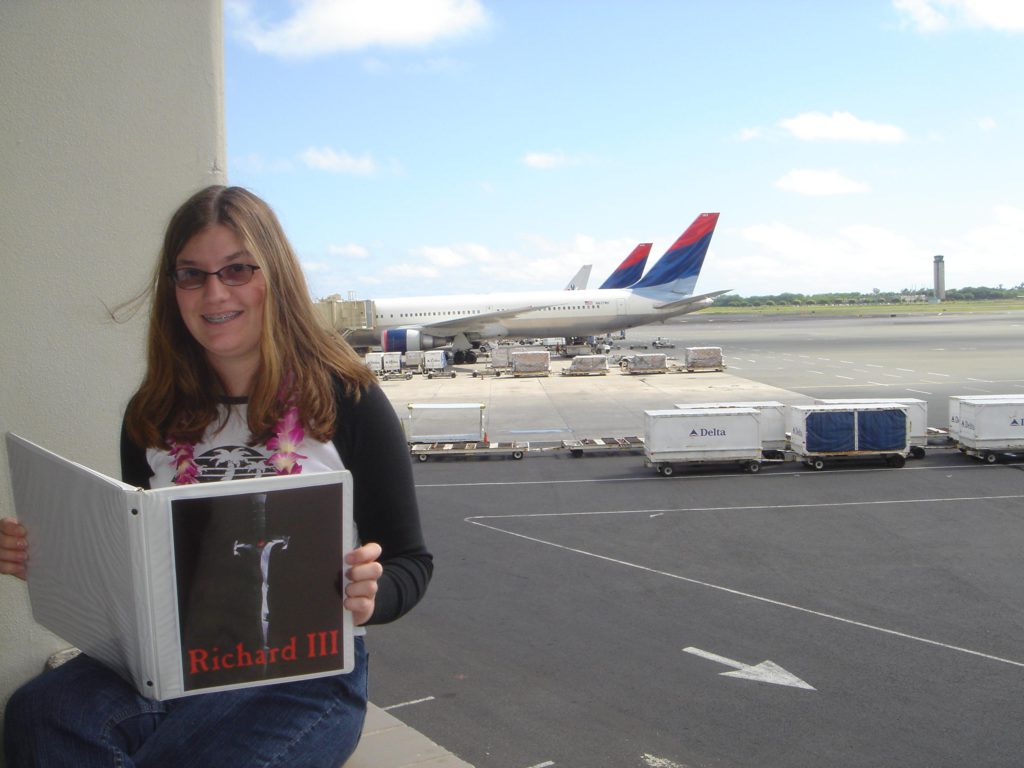
Rating the mid-level cruise lines
| NCL | Royal Caribbean | Princess | Disney | |
| Food | A- | C | B | B |
| Service | B+ | B | A- | B+ |
| Ship Design | C | A- | A- | B+ |
| Management & Policies | C- | B+ | A- | A- |
| Cabins | C | A- | B+ | B+ |
| Suite Amenities | B- | B+ | A- | ? |
| Entertainment | B- | A- | B+ | A- |
| Internet Policies | B- | B+ | A- | ? |
Ships included in the rating:
NCL: Norway, Norwegian Dream, Pride of America
Royal Caribbean: Voyager of the Seas, Explorer of the Seas
Princess: Coral (Twice), Star, Grand, Diamond
Disney: Magic
Ships that would have almost all A’s, but are more expensive lines:
Regent: Voyager
Oceania: Marina, Insignia (Twice)
Ships that would receive mostly F’s:
Costa: Victoria
Premier Cruise Lines: Big Red Boat
Las Vegas Star Trek Convention 2005
Dani’s Los Angeles Journal
August 1, 2005
We were supposed to leave Saturday night but Delta called to tell us our flight was cancelled, so we ended up leaving REALLY early in the morning on Sunday. We connected in Salt Lake and arrived in LA in the early afternoon. After a stop at Grandma Marjorie’s house we all went to my parents’ favorite Mexican place for dinner, El Cholo. I don’t like Mexican food much but it was pretty good. They have cheese chips that are to die for. By five o’clock we had to call it quits and head to the hotel.
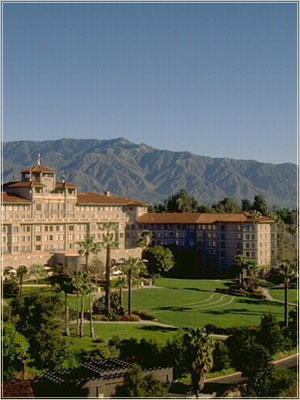
We are staying at the Ritz-Carlton Huntington Hotel in Pasadena (about half an hour away from Grandma) and it’s really nice. Our room is large and has a beautiful view. Dad and I went for a swim, then came back to the room and vegged for a while. By 8:30 we were ready for bed.
On Monday, feeling a little more human, we ordered a HUGE room service breakfast. Even Mom had something (she never eats breakfast). It was really good. I have some history homework I’m doing (really long boring homework) so I did that for most of the morning.
At lunch Mom and Dad took me to an old haunt of theirs, Tommy’s Hamburger Stand. They do nothing in moderation there. A burger has a patty, two handfuls (big handfuls) of onion, ten or fifteen pickles, and a giant scoop of orange goo they call chili. All in all it was a, unique experience. Did I mention that the goo turns your fingers orange permanently?
After we had consumed as much as we dared we went over to Grandma’s. Her next-door neighbor Denny came home from work early and talked with us for a while. I went next door and met his dog, Johanne Sebastian Bark (they just call him “Sebastian”). He is a white German Shepherd and he is BIG! Standing on his back feet he can look me in the eye. He weighs about 120 pounds and his shoulders come to my waist. He is really sweet though. He has an old bucket he thinks is a toy. He holds it over his head and prances around, then puts it down and rolls it across the yard with his paw. At 7:00 we went to dinner with relatives at Shanghai Red’s at the marina.
Wednesday we went to Farmers’ Market. My parents remember this place from when they were kids. It’s a bunch of open stalls outside where they sell everything from greasy pizza and French crepes to tacky tourist junk. We had lunch there, Mom and I decided to partake of the greasy pizza, dad had a ham and cheese crepe and Grandma had Chinese food.
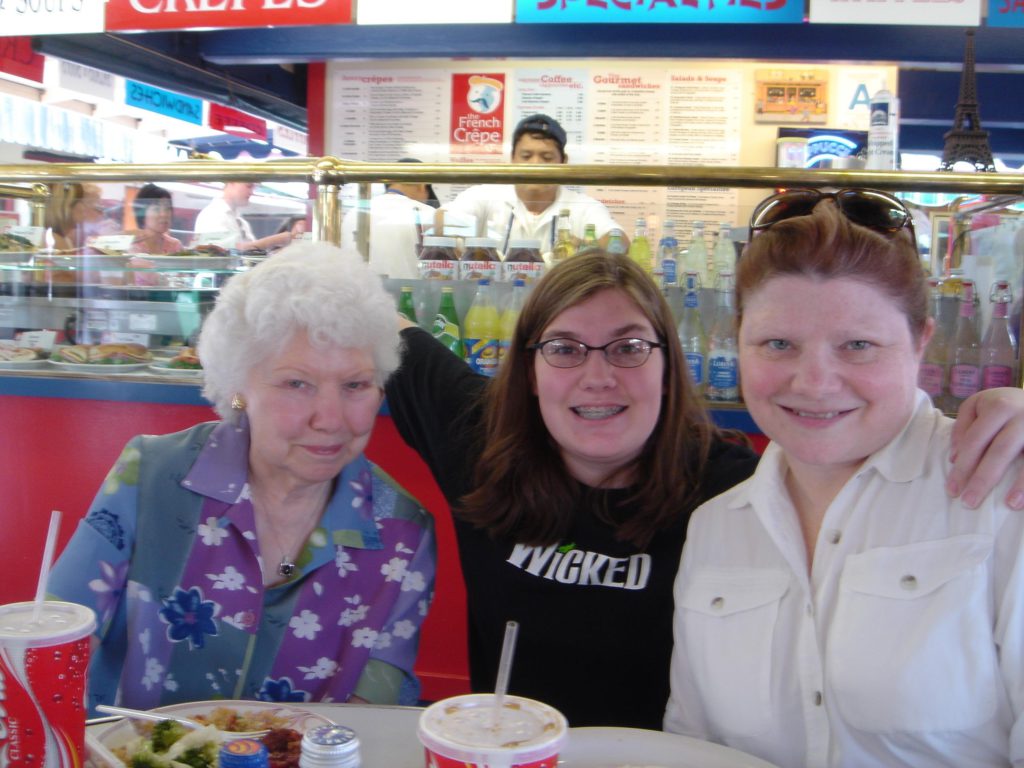
Have you ever eaten coke bottle candies? They are the best invention under the sun! It’s made of what gummy bears are but it’s clear. There is coke injected into the bottom of them. They’re great! I have a small bag of them that I bought maybe we can share when I get back. Oh, and guess what they have in every supermarket and convenience store in California, Squirt! They have Squirt! I have been getting it every chance I get. Anyway, it was a lovely afternoon.
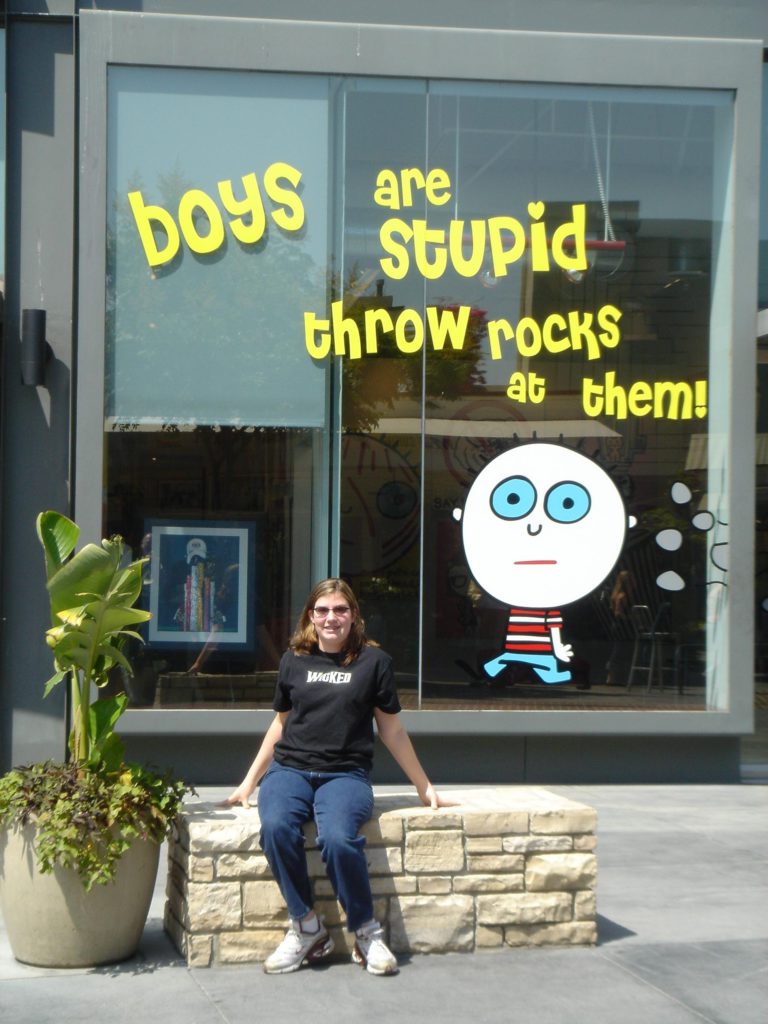
They’ve built a shopping area called the “Grove” next to Farmer’s Market. We wandered around there for a while. They have a huge, three-story Barnes and Noble. I bought the book version of Wicked, my favorite play on Broadway.
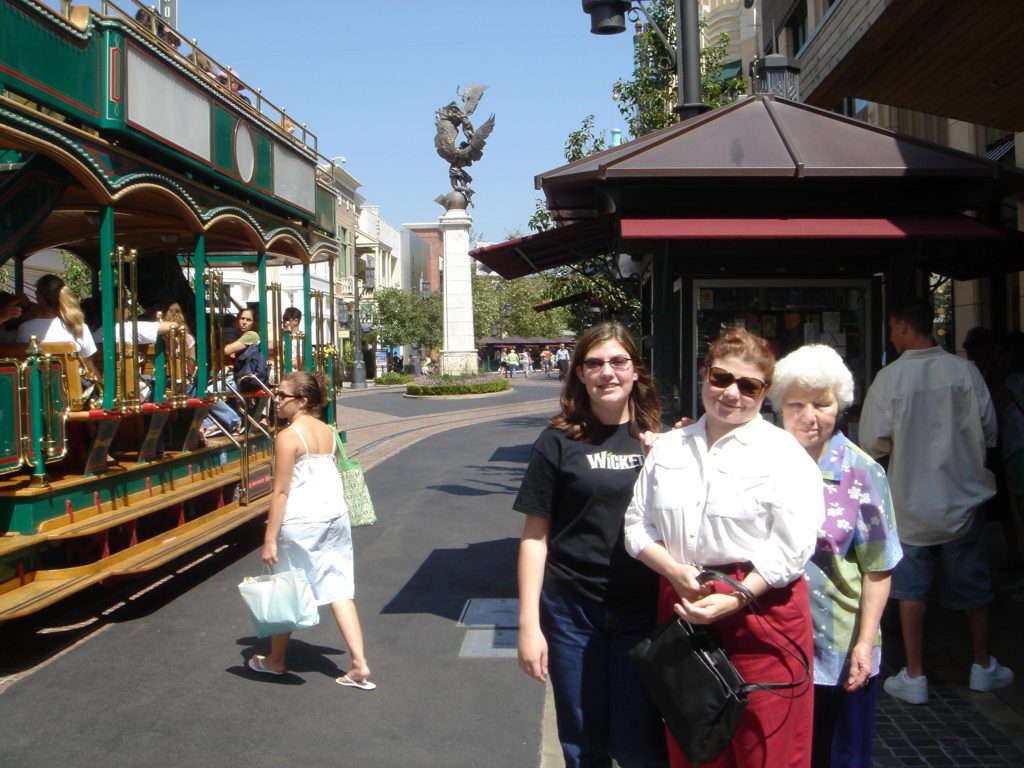
For dinner we went to the Smokehouse. They have has the best garlic cheese bread anywhere.
Dad bought some tickets to see the King Tut exhibit on Wednesday. There were lots of neat treasures on loan from Egypt. They not only had lots of gold treasures but also lots of really well-preserved wooden things. There was one footstool that was made of wood but it was carved and inlaid to look like an animal hide. A guided tour on tape interpreted it all.
For dinner we went up to an old building called the Saddle Peak Lodge, up in the mountains. We sat outside and watched the sun set. The Saddle Peak Lodge has been many things in its time including a hunting lodge, a speakeasy, a brothel and a fine dining restaurant. They specialize in game, so I had buffalo and dad had elk. Mom had ravioli, and man, are those things hard to shoot.
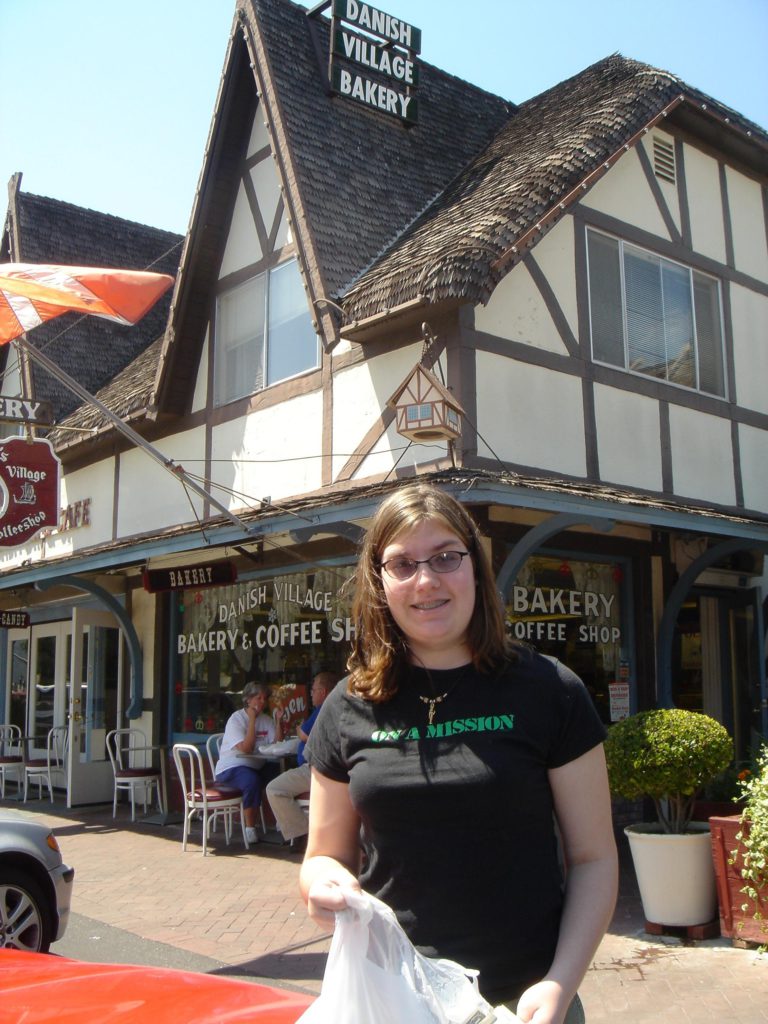
Thursday Mom and Dad and I took a two and a half hour drive north to the central coast wine country. It was good. The views were lovely, and there was a nice breeze, so it wasn’t too hot. We stopped in Solvang, a touristy Danish village, for some butter cookies. The movie Sideways was filmed in and around the town of Los Olivos; it was neat to keep running into places where they filmed. Mom and Dad did some wine tasting, and we had dinner in a nice little restaurant imaginatively called “The Los Olivos Café”.
We spent most of Friday at Grandma’s, and went to a new restaurant in the historic Wiltern Hotel for dinner.
Saturday Mom and Dad went to Fry’s, a giant electronics store, and selected a new computer for Grandma (her old one had a really weird software problem).
On Sunday Dad finished setting up Grandma’s computer and we went to Trader Vic’s in Beverly Hills for dinner. Trader Vic’s is where the Mai Tai was invented, and they served that and all sorts of other wacky tropical drinks, along with some excellent spare rib appetizers.
Steve’s Las Vegas Journal
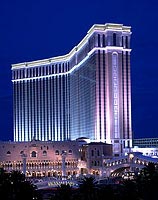
Monday we packed and checked out of the Ritz Carlton Huntington Hotel in Pasadena — after a week it had begun to feel like home. We took the 210 freeway to San Bernardino and then 15 over the pass to the high desert. The drive to Vegas took about six hours, and carried us through mostly rocky, barren terrain on a surprisingly busy four-lane road. A long, skinny ribbon of thunderstorm hung like a curtain across one valley, and provided ten minutes of torrential rain in a landscape that was otherwise parched and dusty.
We’re staying at the Venetian Hotel, our favorite in Vegas. Every room is a suite, and there are 17 restaurants in the building!
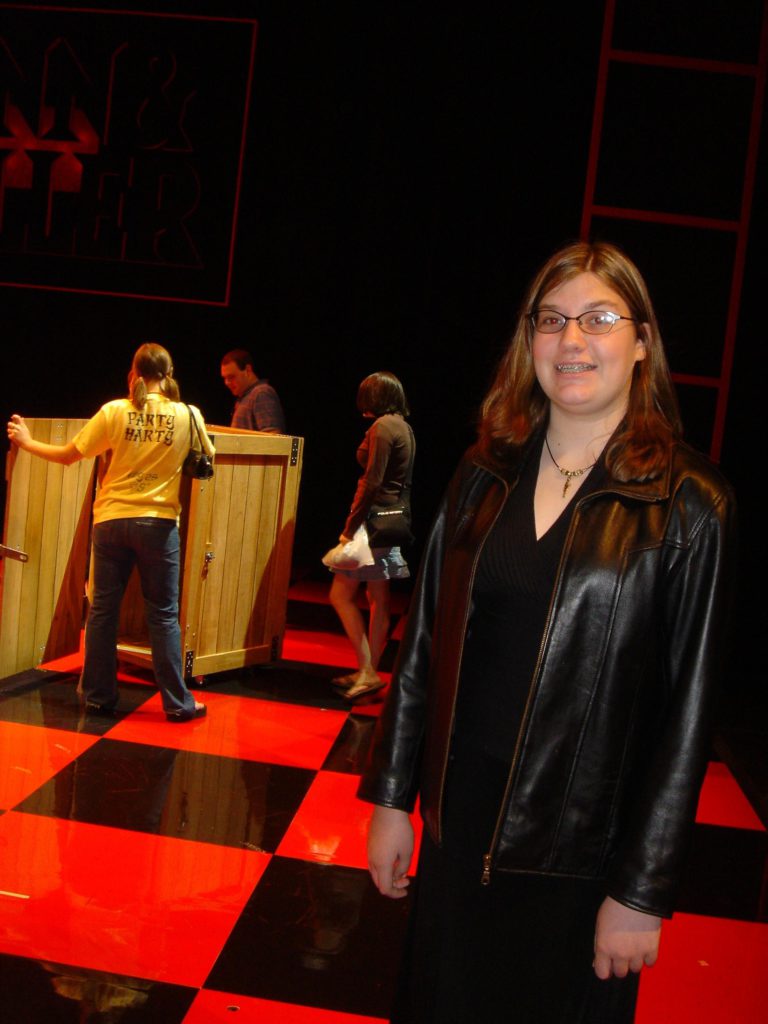
Monday evening we had tickets to see Penn & Teller at the Rio, so we had dinner at a Japanese restaurant in Masquerade Village there. While waiting for dinner Dani was able to watch the Mardi Gras parade that I worked on a few years ago. It’s a fairly complicated control system for a dozen or so overhead floats on which the performers ride.
Penn & Teller were amusing, but it wasn’t a great magic show. Before the show Mike Jones, a terrific jazz pianist, performed with a stand up bass player who turned out to be Penn himself. During this preshow the audience was invited onstage to inspect a box and sign an envelope, both later used in the show.
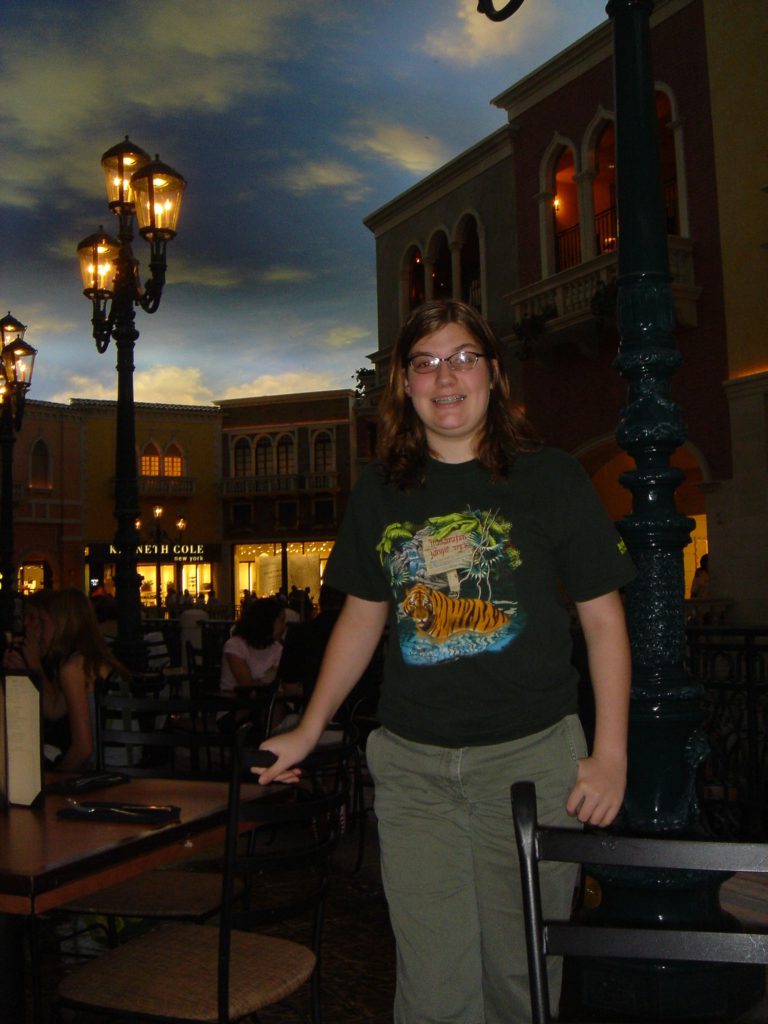
Tuesday we had lunch at Taqueria Cononita by the Grand Canal in the Venetian. Dani bought a magic trick at one of the shops and spent the afternoon practicing. After some power napping we changed and drove to the MGM Grand to see the new Circe de Soleil production, Ka.
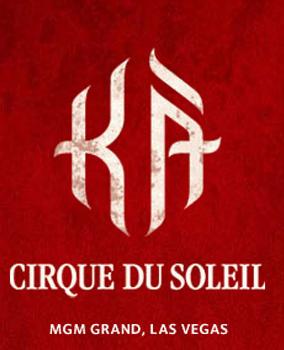
I find myself at a loss to adequately describe Ka. Days later we were still trying to absorb everything we witnessed. Here’s how the Las Vegas Review-Journal described it:
Cirque Tops Itself: ‘Ka,’ the most expensive live show in modern history, takes a new direction by telling a story
Seen from directly overhead, two opposing groups of armor-suited warriors charge to meet in the middle. A fierce battle ensues, the warriors using staffs, swords and kung fu. Some have an almost-supernatural power to leap over their enemy.
That’s how the scene unfolds in Cirque du Soleil’s new “Ka. ” But the audience doesn’t see the overhead perspective on film, or reflected in mirrors. They see it because the warriors are suspended in the air, their feet rappelling onto a near-vertical wall, upon which the image of the battlefield is projected.
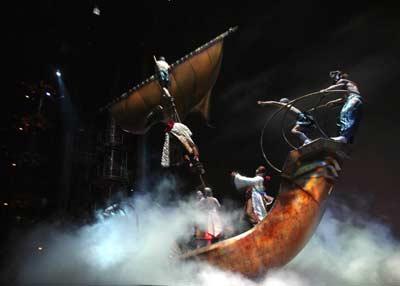
Along with performing their stunt combat, the performers are squeezing control units, hidden in their fists, to move the wires that suspend them from a grid 90 feet above the stage.
In part, it’s the answer to the question everyone had: How could Cirque top itself and deliver a distinct new product in its fourth show on the Strip?
The $165 million “Ka” marks not only a watershed for Las Vegas entertainment, but perhaps the creation of an all-new entertainment medium: the live movie; theater that uses the language of cinema.
“In movies you will see a battlefield from different angles… We’ve had the opportunity to give people a live experience about battle that is completely different than what you would get in any other theater,” says Lyn Heward, who oversees Cirque’s creative content division.
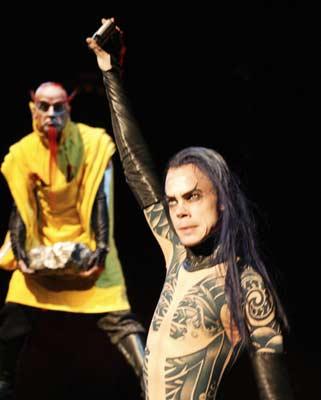
“Ka” has the rich, textured atmosphere of grand opera, except that nothing is stagebound, not even the two stages themselves.
Scenes flow from one to another, changing perspective. When the nanny of the young protagonist falls overboard during a turbulent storm at sea, you first see the older caretaker swept off the side of the boat that spins and bobs like a cork on the water.
Then the stage transforms to an underwater point of view, to show the nanny sinking to the bottom — again by using aerial wires and film projection — and the young heroine plunging in to rescue her.
“It does focus the way a spectator can watch an activity. When I go see `O,’ I have difficulty choosing what to look at,” Heward says. “But this is a little bit different. We are giving you a point of view to look at this from. “
Moreover, the signature Cirque music, acrobatics and overall aesthetic have been focused into actual storytelling for the first time.
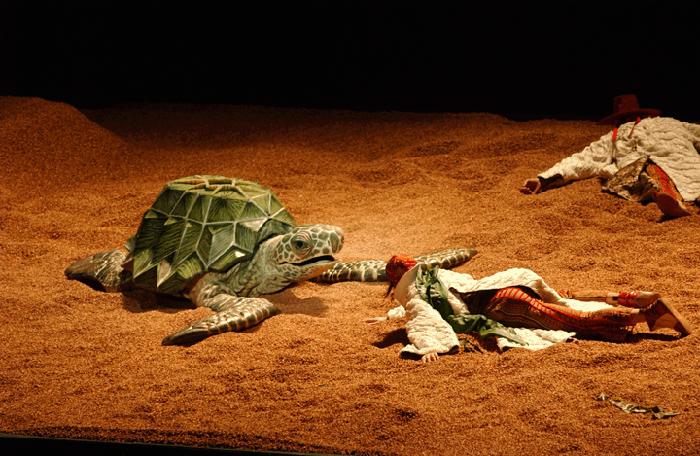
In lieu of a fixed playing area, the stage design resembles a black void, where the two main stages move in and out of position. One is the “Tommy deck,” a platform that slides in and out much like a drawer. The other — the one hosting the vertical battle — is the “cliff deck,” an 80,000-pound rectangle lifted in and out of place by a 230,000-pound gantry arm.
The cinematic feel of the show also introduces a new, home-theaterlike dimension to the theater: Every seat has its own personal set of speakers.
“It is not as if sound always comes out of the seat. It is just another pair of speakers,” says sound designer Jonathan Deans. In fact, there are 180 outputs of sound, compared to 60 for “EFX. “
“We take a sound and shred it into multiple sections,” Deans explains. “It will go out and fly around the auditorium shredded, then come back into that (original) sound. Will the audience know that is happening? No. But they will feel something different is happening. “
Much of the music is recorded, but all sound effects are live. “If a fireball comes up through the stage,” Deans explains, “we draw little squares on the camera image (that monitors the stage action). So when the fireball crosses through the squares, it actually triggers different sounds, and places the sounds to different speakers. “
René Dupéré, who composed the soundtrack to “Mystere” and most of the Cirque shows before it, returned to the fold at Laliberté’s request after a 10-year break.
“It has to be a score, like a movie score,” Dupéré says. “The music has to tell what’s going on, because there’s nobody talking. “
The most distinctive aspect of the score is a 42-voice choir, which sings “invented lyrics” by Dupéré’s wife, Elise Velle, who was principal singer for the first year of “Mystere. “
The choir and orchestral sounds are blended in with the live performance of a seven-piece band, which the audience doesn’t see.
But, Dupéré says, in places “I had to soften (the music) a bit. It was so dramatic, I couldn’t see the action. The music was too big. “
It’s a larger lesson the creators of the most expensive live show in modern history are trying not to forget. One key special effect is created by nothing more than the shadow of a candle.
“Human beings make the effects, and not machines,” Heward says. “The technology is simply a support to the human performance. “
Click here for a technical article from
Dinner at Nob Hill was as unremarkable as Ka was remarkable. Overpriced, uninteresting, and with an amazingly extensive selection of incredibly unappealing wines at absurd prices, this is the number one clip joint to avoid in Vegas.
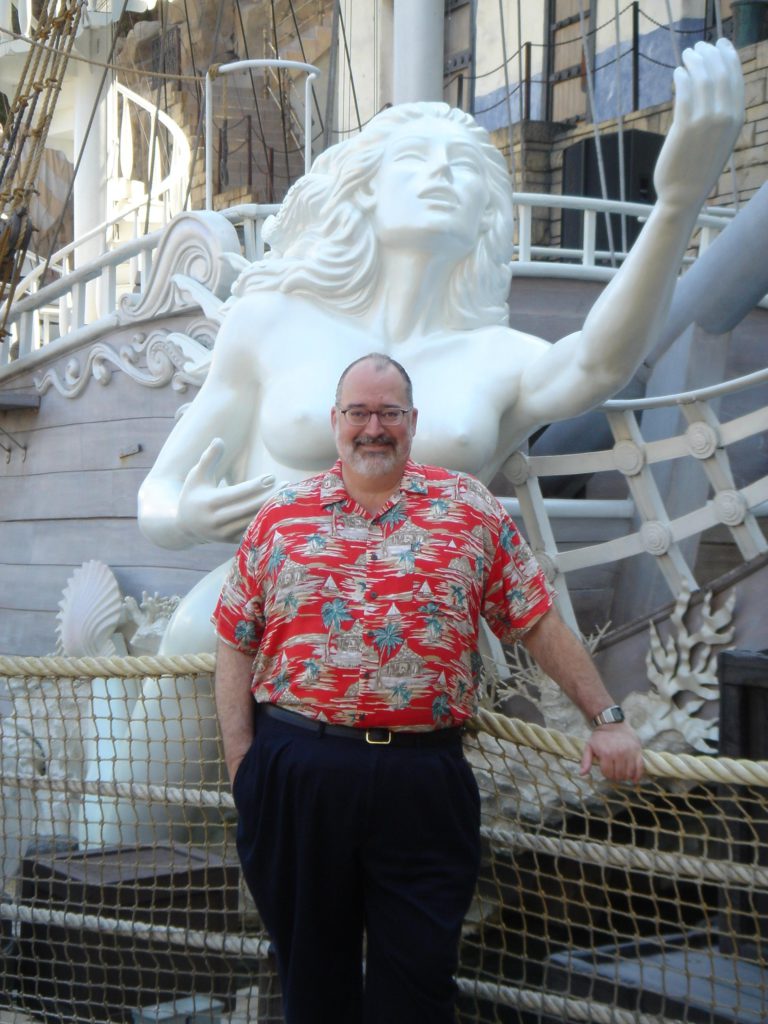
Wednesday began with a delicious room service breakfast. The servers are exceptional at the Venetian, setting the table in your room as if you were in a fine dining restaurant.
Then we walked across the street to the Treasure Island, which has been destroyed by MGM Mirage, the new owners. The name has been changed to the “ti,” and the skull and crossbones sign, the most distinctive in Vegas, has been removed. The exterior pirate ship theming has also been modified to make it “sexy,” and the redemption gaming center that Dani and Linda were looking for is gone.

We took the tram over to the Mirage and purchased an admission to the Secret Garden of Siegfried and Roy and spent a pleasant hour watching lions and tigers sleep.
After riding the tram back to the ti we crossed the street to the new Wynn. Steve Wynn’s latest upscale creation is even uglier than the Bellagio. The outside looks like an office building behind a dyke, and the inside is filled with the same garish mess as Bellagio. The only focal point, a “water feature” that is a simply a wall with water running down it, is so poorly placed that only a few dozen patrons can see it at one time.
Back at the Venetian we allowed our body temperature to return to normal while waiting about an hour for an afternoon snack in the Grand Luxe Cafe.
In the evening we drove over to the Hilton to pick up our wrist bands for the Star Trek convention, which begins tomorrow.
Dinner was at Bouchon, an authentic Parisian Brasserie in the new Venezia tower. It was indeed authentic, right down to putting the bread directly on the table. It was also delicious. The fois gras terrine appetizer turned out to be an entire 5 oz jar of pate de fois gras, pricey at $41, but enough for three, and worth every penny.

After a delicious breakfast at Bouchon — best baked goods outside of Paris! — we headed for the Las Vegas Hilton.
The Star Trek convention attracted an interesting cross section of people, to say the least. On Thursdayand Friday there was a high ratio of Trekkers in Federation costumes. These are the fans Shatner was was addressing in his Saturday Night Live sketch, “Get a Life. ” These people still live in their parents’ basements. It’s probably a good thing.
By the weekend, though, when attendance peaked at over 3000, the audience was a cross-section of all ages, with women perhaps slightly outnumbering men. If there was any demographic missing it was young teenagers, particularly girls. Kids came with parents, older teenagers rived on their own, and a lot of the audience must have seen the original series when it first aired. But Dani was fairly unique, and as a resulted attracted a certain amount of attention form the celebrities.
The format of the convention is: stage presentation by celebrity, stand in line for celebrity’s autograph, go to dealer room and buy crap.
I found the presentations almost uniformly entertaining. The stars enjoyed talking about current projects, and most were genuinely pleased by the loving reception they received from the fans. Two open mics at the sides of the stage allowed fans to ask questions, and the stars answered them with candor, and often with great wit.
The standing in line was a bit tedious, but nearly every celebrity made an effort to make eye contact or say a few words to each fan, even if they were signing 600 autographs. These autographs are the currency of the convention, as they — either directly or indirectly — cost $20 to $80 each. This comprises the celebrities’ compensation for attending, and also provides most of the convention organizer’s profit.
The dealer room was actually pretty interesting, because in addition to many booths selling Star Trek collectibles and photos there was also a large section devoted to minor celebrities. Here was an opportunity to have photos personalized, buy CDs, or just chat with a couple dozen minor stars. And some of these people weren’t that minor: James Darren hung out for several days, as did a large number of other characters from the five series.
Although there was more of an emphasis on autographs than I’d have liked, I tip my hat to the organizers, who kept the event running like clockwork for four days. No presentation ever started more than a few minutes late, and the mics and video worked well.
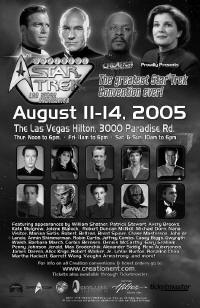
Here’s what we saw during the four days:
The show opened Thursday with a mediocre improv of TOS (The Original Star Trek) by some guys from Texas. Aside from an amusing double take when the security guy realizes he’s wearing a red shirt — and is therefore certain to be killed — it wasn’t that great.
It was followed by a presentation by Denis Russell, who worked on the original opticals for TOS. Denis seems like a nice guy, but is the world’s worst speaker, and I’m still not sure he knows what an optical is.
Throughout the convention there were some interesting lunches at Benihana, but although we had gold passes that included almost everything, lunches weren’t part of it, so I won’t describe them.
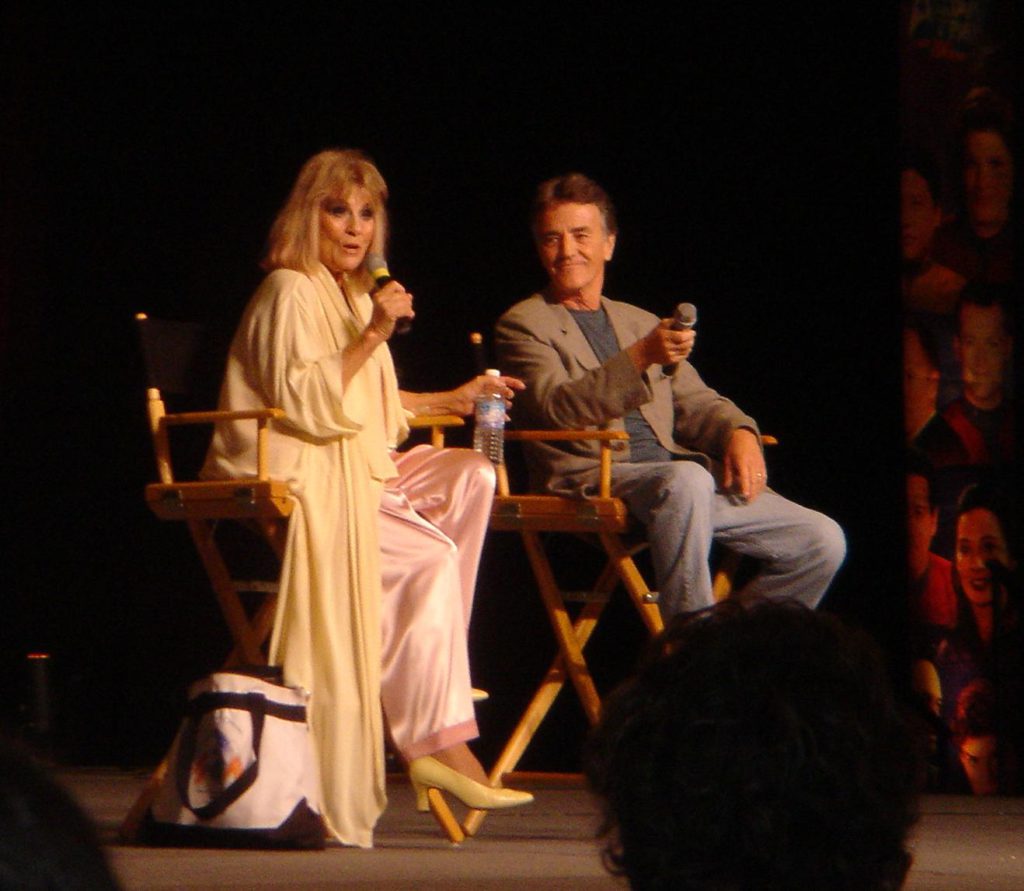
After lunch things picked up with an amusing presentation by Grace Lee Whitney (Yeoman Rand on TOS) and Robert Walker, guest star of the Charlie X episode. Raised by aliens, Charlie has some trouble adapting to human ways. In one famous scene he swats Rand on the butt as he passes her in the corridor. Whitney has had a rough life, which she’s only recently gotten back on track, and Walker talked about his (apparently famous) parents. They had a good rapport.
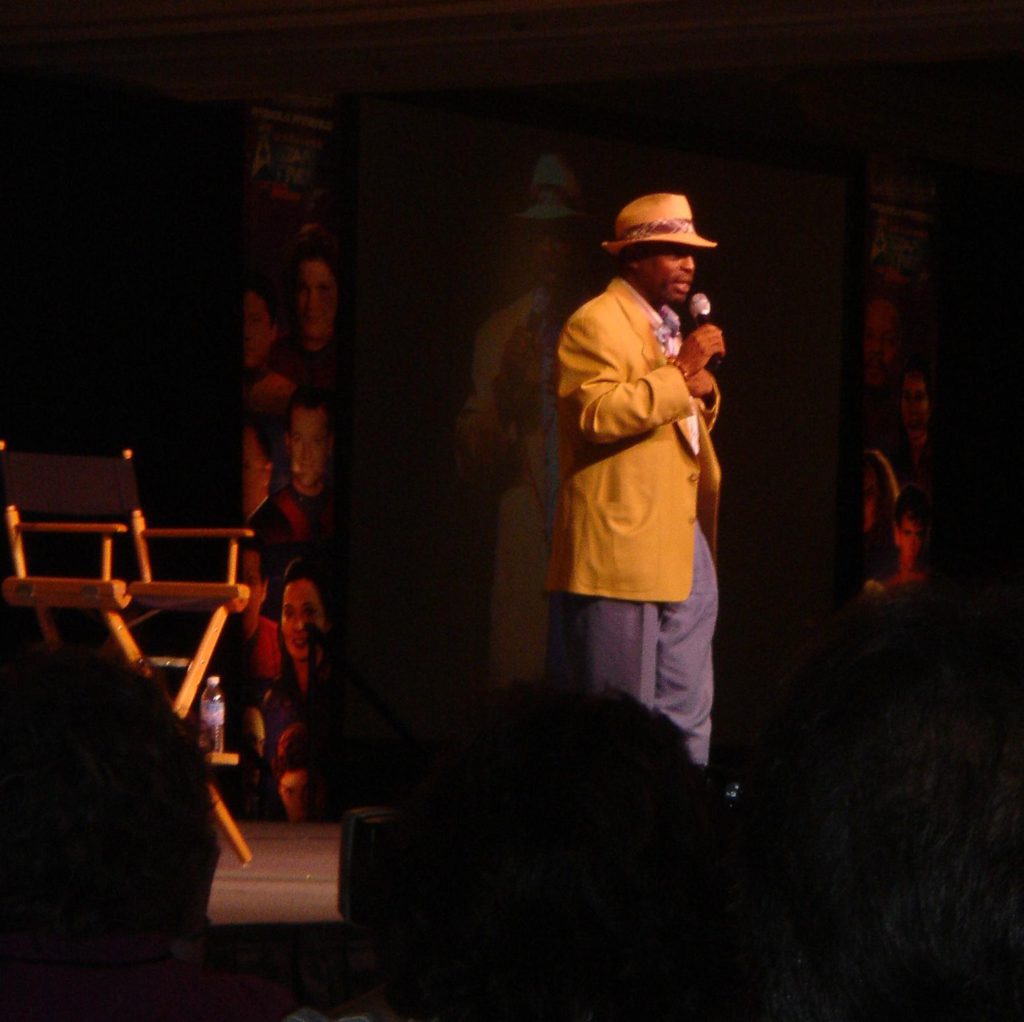
Next up was LeVar Burton. He’s an incredibly intelligent and well-spoken man, who talked about the impact of Roots, and his rather extensive directing experience. He just starting a new movie with Stan Lee. An amazing number of people thanked him for his 28 years of work on PBS’ Reading Rainbow.
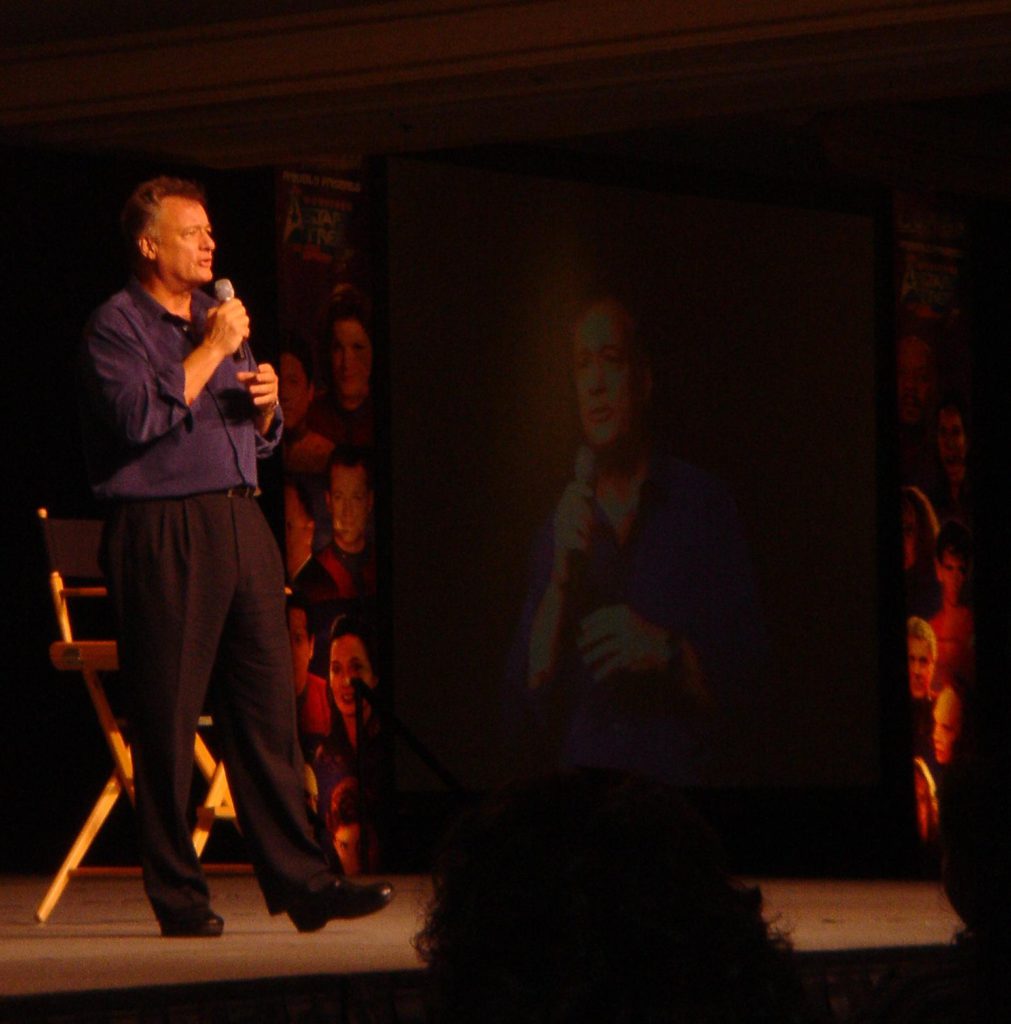
John de Lancie played Q on TNG (Star Trek the Next Generation), DS9 (Deep Space 9), and Voyager. (I don’t know if he was on Enterprise, as I haven’t seen most of that yet. ) He is very involved in producing classical music concerts and legitimate theater, and is a long-time friend of Kate Mulgrew.
Robin Curtis was a Vulcan in the movie The Seach for Spock. We skipped her presentation.
Corbin Bernsen played Q2 on TNG. We skipped this.
I couldn’t figure out who Dean Haglund is until someone told me he was one of the computer guys on the X-Files, a show I’ve never seen. So why is he at a Star Trek convention? Apparently he makes a career of touring the various conventions (more than one a month) doing improv. His show was hysterical! He began by explaining that the plot of all X-Files episodes is the same: some weird creature is discovered and then the government spend the rest of the hour denying it. So he invited the audience to suggest the creature (I think we ended up with a stoat-moose-rabbit) and then selected audience members to help him perform three sketches:
- Audience member attempts to make verbal sound effects as Dean describes the action — and comments on their sound effects.
- Audience member provides Dean’s arms as Dean acts out a scene — including taking questions from the audience: “Yes, you sir… no, not the one I’m pointing at, the one I’m looking at. “
- Audience member attempts to move Dean’s body as Dean — spastically — describes the climax.
Very funny stuff.
Thursday night was a private party for the gold ticket holders — at least 500 of us — at the Star Trek Experience attraction. Buffet food was served in Quark’s Bar, which looks a lot like the one on DS9, and seats the same dozen people. Entertainment was mostly by Chase Masterson, who played Lita, one of Quark’s Dabo girls, and is a pretty good nightclub singer, and Vaughn Armstrong (Admiral Forrest on Enterprise), who has a country band. The Star Trek Experience attraction was also open, with its astonishing transporter effect, which makes it seem as if you are “beamed” aboard the Enterprise. Also open was the new Borg Encounter, which is an excellent show incorporating live actors, 3D Hidef video and effects. Both are top notch shows.
Friday began before lunch, but we skipped the presentation by Gwynyth Walsh. We did get her autograph later, and she looks much better than this in person.
Garrett Wang (Ensign Harry Kim on Voyager) was a delightful speaker and did some very funny impersonations of Kate Mulgrew. He hung out with the attendees later, and seems like a really nice guy.
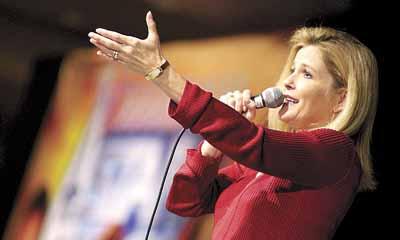
After lunch we met the first of four captains appearing at the convention, Kate Mulgrew (Captain Janeway of Voyager). Kate is just back from two months in Ireland with one of her twenty-something sons, where they were writing poetry and stories. She’s in Tea at Five, the popular one-woman show about Catherine Hepburn, and is enjoying being 50 and slowing down a bit.
Max Grodenchik and Chase Masterson played Quark’s slow brother Rom and Quark’s Dabo girl Lita on DS9. They took the stage together, and couldn’t be more dissimilar (well, maybe in makeup they could). Max is incredibly shy, and Lita incredibly outgoing. We met them in person later in the dealer room, where we bought photos and CDs. They were both very generous with their time.
Gary Graham plays Vulcan Ambassador Soval on Enterprise. We skipped this presentation.

Marina Sirtis and Micahel Dorn played Counselor Troi and Klingon Warf on TNG. Michael was busy finishing a photo op (pose with the star of your choice, sort of like Madame Tussaud’s) so Marina came out first and told us all the ways to tease Michael when he came out. They are obviously great friends, and were very entertaining.
After the show we headed back to the hotel to change, and went to Valentino’s for dinner. This was a bit disappointing, as the Wine Spectator names it one of America’s top ten, but they must be referring to the one in Los Angeles. The wine list, though extensive, had no older wines, and the Italian food was challenging and not particularly great.
Saturday we arrived in time to see Penny Johnson Jerald, who plays Cassidy, Captain Sisko’s girlfriend on DS9. Cassidy is one of our least favorite characters, because the two of them appear to have absolutely no chemistry. Oddly, Penny’s presentation consisted mostly of telling us how great their chemistry was.
Connor Trineer (“Trip” from Enterprise) wasn’t scheduled to appear, but at the last minute Jolene Blalock (T’Pol from Enterprise) cancelled. Jolene seemed to be persona non grata with the organizers, but Connor was a great sport and showed up with less than 24 hours notice.
Robbie McNeill (Tom Paris from Voyager) has been busy directing, including many episodes of Desperate Housewives.
Rosalind Chao played Keiko, O’Brien’s wife, on TNG and DS9. We missed most of this presentation.
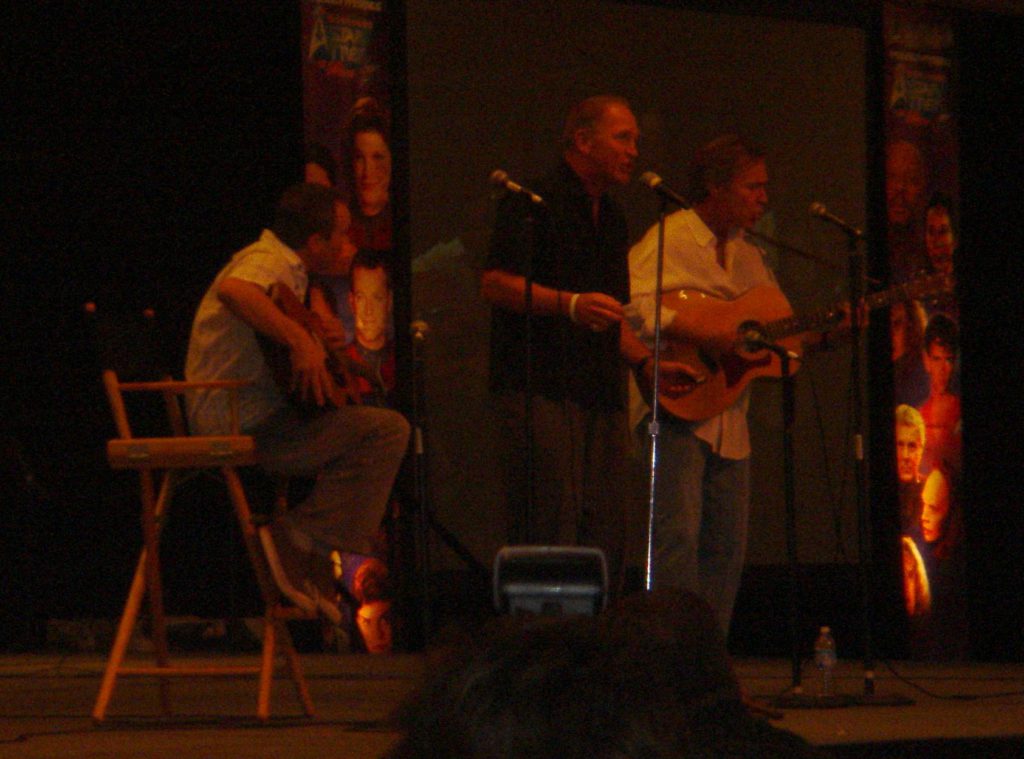
Jeffrey Combs has played several roles on DS9 and Enterprise, including Brunt and Weyun. He joined Vaughn Armstrong (Admiral Forrest from Enterprise) and Casey Biggs (Damar on DS9) for a live musical performance. Armstrong is a good bluegrass musician, and Biggs has a wonderful voice. Combs was truly awful. Nice guy, though.

Speaking of singing, James Darren, Linda’s heartthrob from the 60’s was up next. This guy was playing Moondoggie in Gidget movies in the 1950s, and he looks younger than me. On DS9 he play holographic nightclub singer Vic Fontaine, and introduced a new generation to the classic Vegas songs of the 50’s.
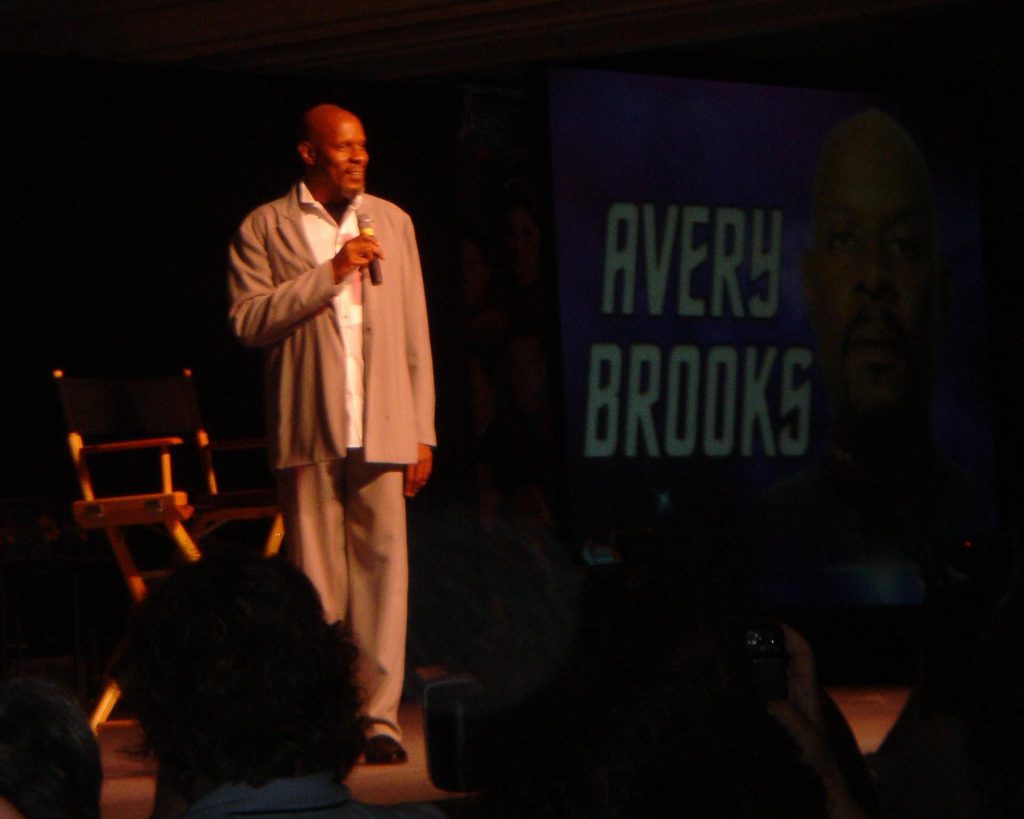
Avery Brooks played Captain Sisko on DS9. He was the first black to receive an MFA in both acting and directing, which he did simultaneously. He has been a professor at Rutgers sin 1972, and tenured since the 80’s. He also directed my favorite DS9 episode, Far Beyond the Stars, in which he plays a 1950s sci-fi pulp writer who is the victim of discrimination. Needless to say, Avery is an a amazing speaker. Afterwards he signed autographs with Penny Johnson Jerald, and their chemistry seemed OK. Avery stopped Dani in the autograph line to shake her hand and talk with her for a minute, and it’s the only time I’ve seen her nearly speechless.
After a quick bite at the Mexican restaurant down the hall (it’s the only decent restaurant in the Hilton, so we’ve eaten there three times in three days) we returned for the world premier of Star Trek: The Concert. 34 members of The Las Vegas Philharmonic Orchestra, conducted by Richard McGee, played all of the great Star Trek themes in chronological order. McGee was obviously also a fan, and his comments between pieces were quite enlightening. The orchestra was quite good except for a couple of horn players who should be taken for a ride in the desert. Composer Dennis McCarthy came onstage to conduct his themes from DS9 and the movie Generations.
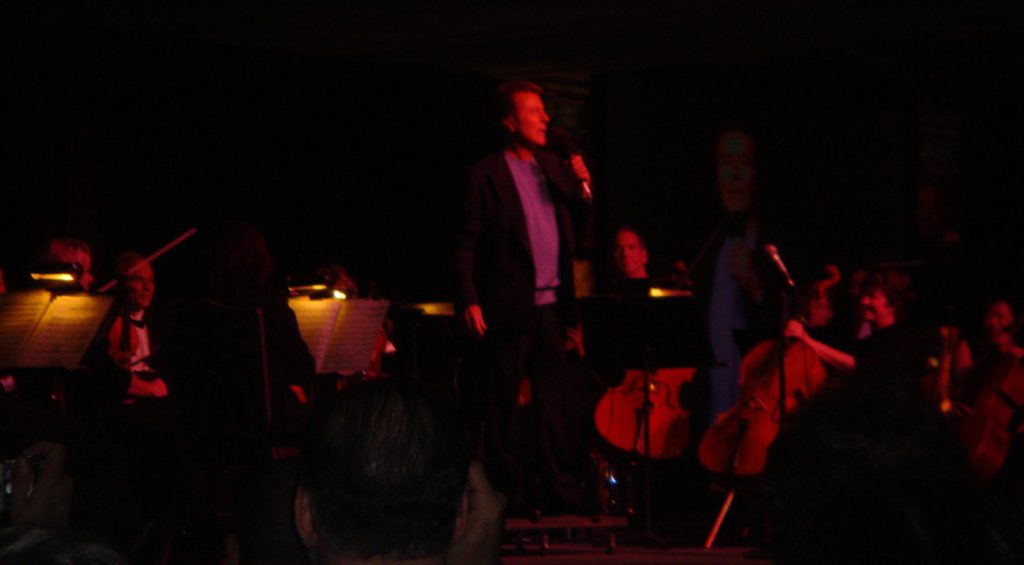
The concert included an interlude for a vocal performance by Nana Visitor (Kira from DS9) but although she was at the convention she cancelled this performance for some reason. The already overworked James Darren gamely took her place, although I’m sure he felt ridiculous standing in the middle of an orchestra and singing to a prerecorded track.
The concert was followed by a Dessert Party with a live band and more entertainment by James Darren and others, but it was crowded and not very intimate in the huge convention space, so we left after only a few minutes.
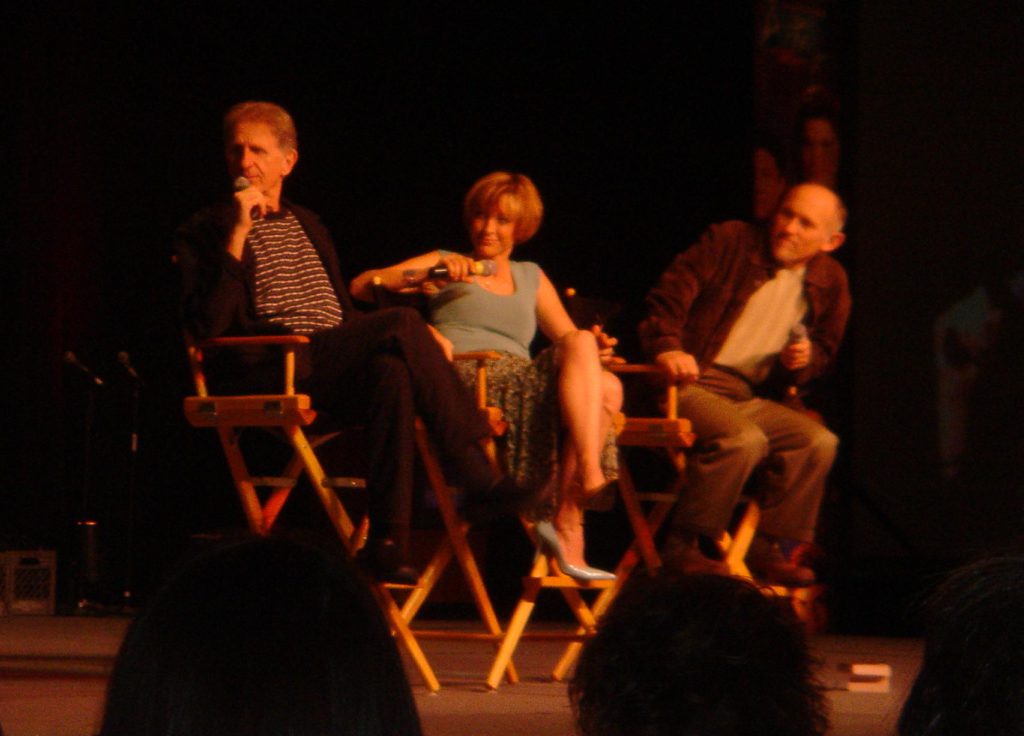
Sunday began with a DS9 reunion featuring Nana Visitor (Kira), Rene Auberjonois (Odo) and Armin Shimerman (Quark). There was great chemistry between the three of them, and it was lots of fun. To raise money for charity, in the autograph line Rene was doing individual sketches for $10. He drew a picture of Odo’s bucket with a word balloon saying, “Dani. “
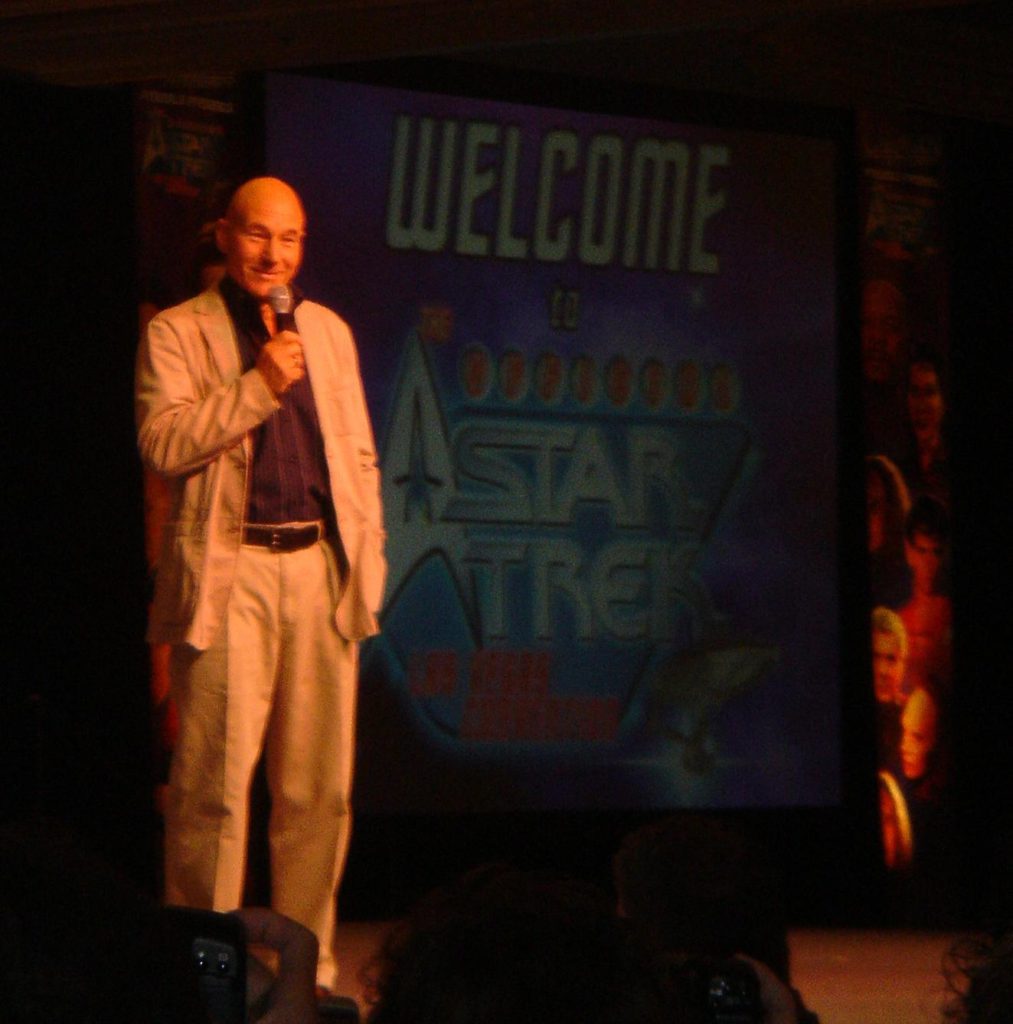
At noon Patrick Stewart arrived from Vancouver (where he has been filming X3) for a rare convention appearance. Patrick is living in London, and has rejoined the Royal Shakespeare Company. He will appear in several plays throughout 2006, and at one time or another next summer, all 37 will be produced. Patrick is clearly an ACTOR, but he takes his Star Trek notoriety with good grace.
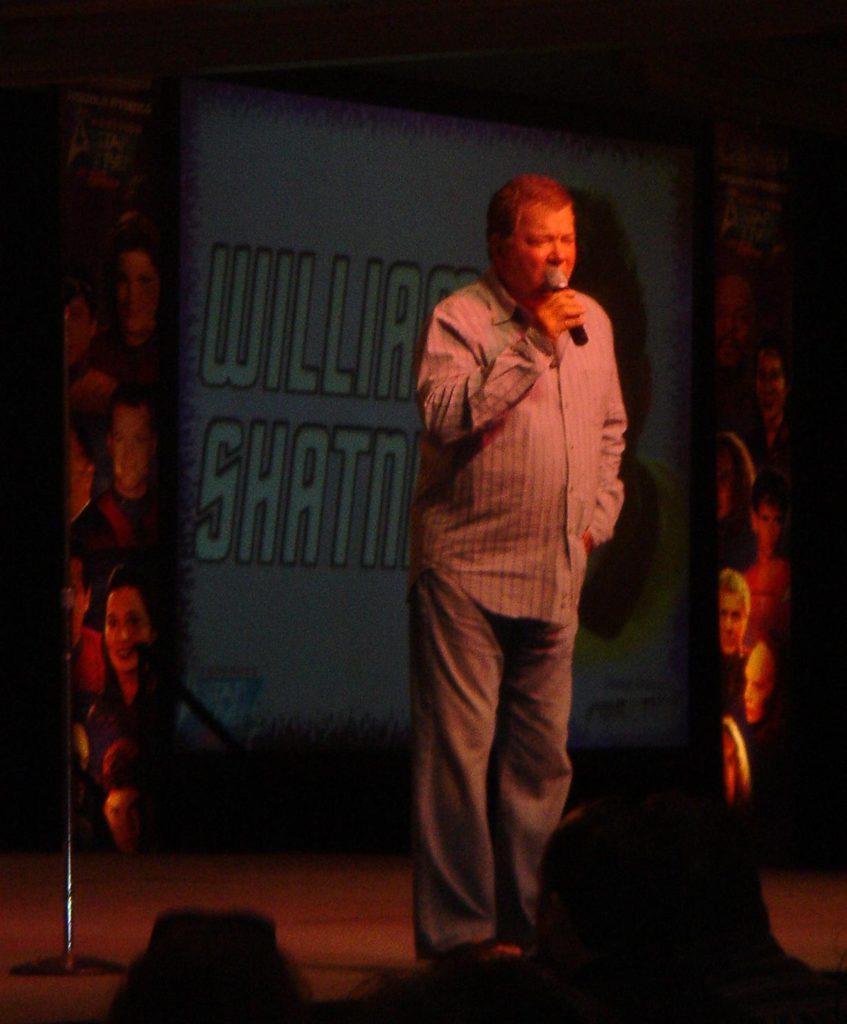
Shatner is just so damn funny! An aspiring actor asked for advise and Shatner said, “So you want to know what you can do to be famous, rich, have the yacht, the babes, everything? Nothing. It’s all luck. “Actor, author, horse trainer, musician; this guy is busy. During his presentation he auctioned off a number of items for charity. Most interesting was your chance to be in his next Star Trek book. Two people paid $5000 each. Patrick Stewart joined him on stage momentarily before departing.

After Shatner’s stage appearance we hurried over to the dealer’s room to pose for a picture with him, a father’s day gift from Dani. We got to exchange a few words and I left him a copy of one of my books.
Following the photo op we caught most of Brent Spiner’s (Data on TNG) presentation. Brent is a really funny guy, and has an absolutely dead-on Patrick Stewart impression. (Patrick was earlier asked if he had a Brent imitation and he said, “You know why all those guys imitate me? It’s because they want to BE me. “)
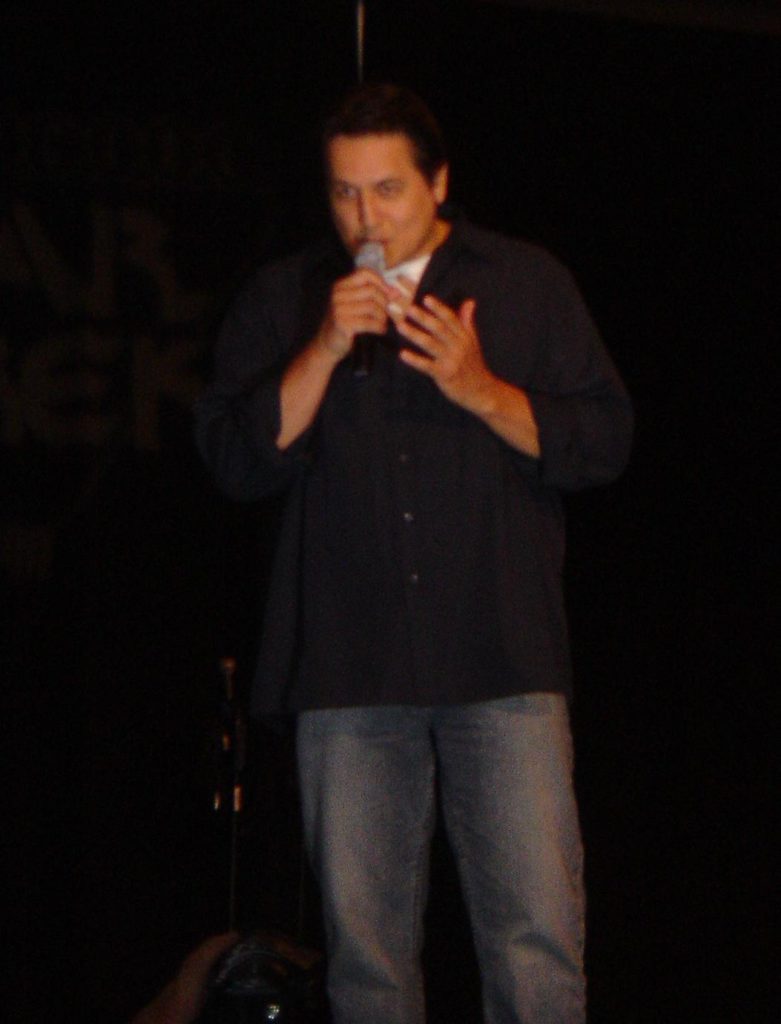
The convention wound up with Robert Beltran, Chakotay on Voyager. Of all the celebrities there, Beltran was the only one who seemed to have an “attitude,” and he might not have been the best choice to wrap things up.
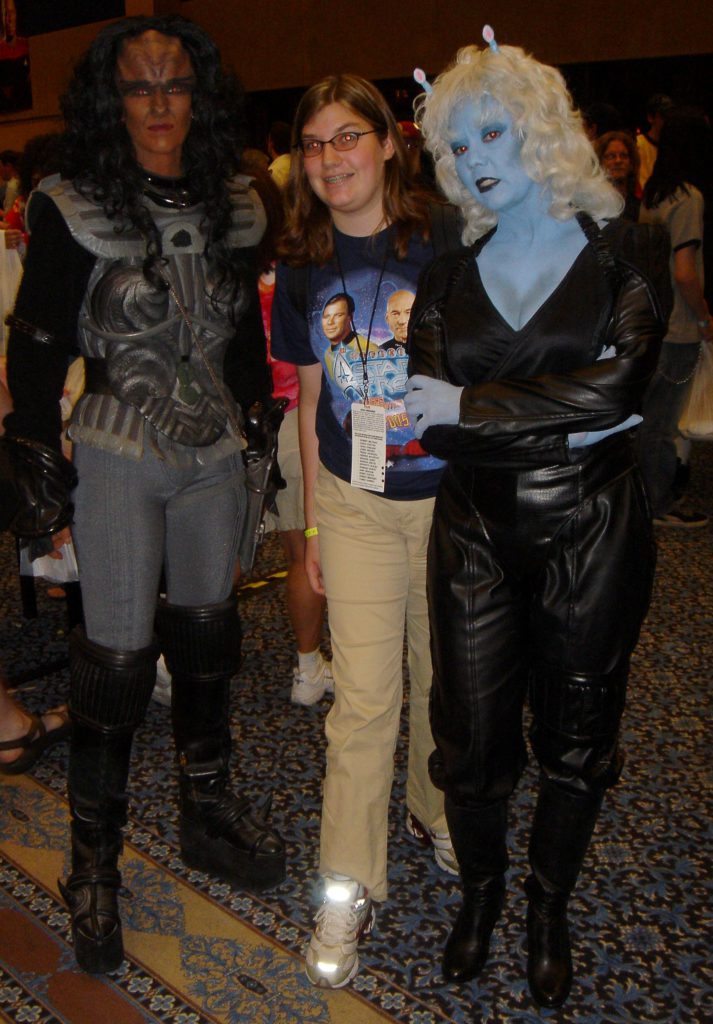
Here’s Dani posing with a couple of passers-by in the dealer’s room. I’m not sure if the Klingon and Andorian were from the Star Trek Experience, or were show attendees.
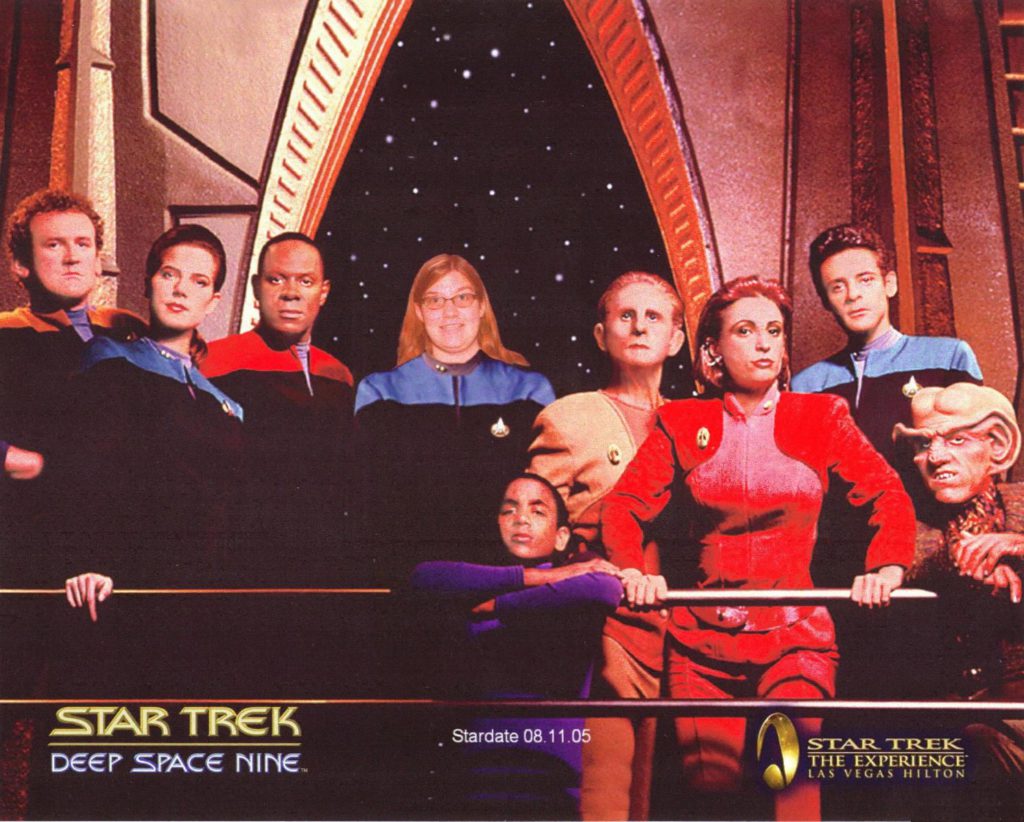
A parting shot of Dani who, through the magic of digital imagery, appears with the DS9 cast. Wrap Up: Since a big focus of the show is autographs, which we now have coming out of our (Ferengi) ears, I don’t think I’d buy a gold ticket to another convention. But it was a lot of fun, and I’d certainly consider a day pass to future conventions.
New York 2005
Dani’s Broadway Journal
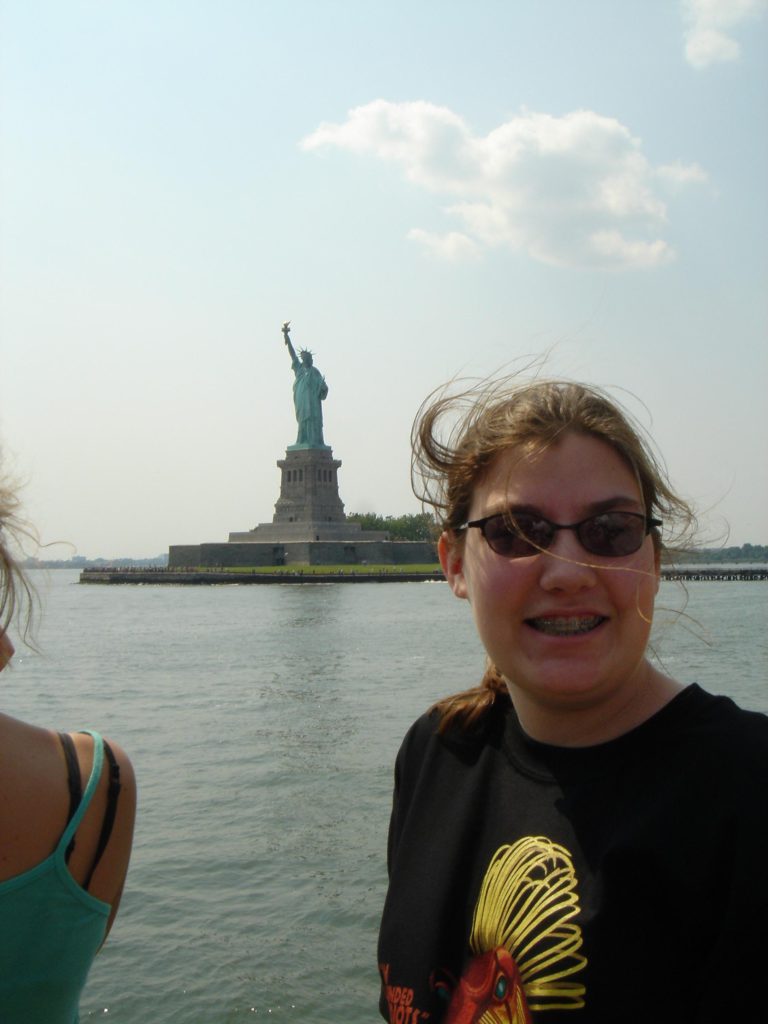
Day 1, 7/9/05 Manhattan
The day mercifully didn’t start out at the crack of dawn. We had an 11:35 direct flight to New York. The flight was rescheduled to 11:20 so we were a little worried about being late, but upon arriving at the airport we learned that due to the outer bands of Hurricane Denis the flight had been delayed to 11:40 so it didn’t really matter.
Instead of flying Delta like we normally do we tried their new commuter airline Song. It was wonderful, there are touch screens in the seats to play with that offer 24 TV channels, games, movies, and a trivia game for all the passengers. Song also offers real food for lunch. Unfortunately also due to Denis there was a lot of mild turbulence so the food couldn’t be served until the end and we were in the back of the plane but C’est la vie.
Mom and Dad were playing the trivia game and losing terribly but not for lack of trying, or so I’m told. Every time they tried to hit one answer the plane would rock and they would miss the answer they had intended. Mom gave up after one round but Dad hung in there for the second half of the flight and won the game 3 seconds before we arrived at our New York terminal.
So that we wouldn’t have to mess with finding a cab we had asked the hotel to send a car for us once we arrived. The city is a little like Los Angeles only cleaner, safer and with less graffiti. The city is so TALL!!! It’s much taller than LA. As we were driving from JFK towards the city but hadn’t gone through the tunnel yet it looked a lot like I expected it to. Some twenty or thirty story buildings mixed in with some smaller ones, billboards for upcoming Broadway shows, and very dirty. But once we got onto Manhattan itself the city was beautiful. It was very clean by comparison and the buildings are so TALL!!! I think I’m in love with this city. Even though there are no patches of grass the city is much greener than I expected. A lot of the major streets have fairly large (fifteen or twenty foot) trees planted along them. It is a beautiful city.
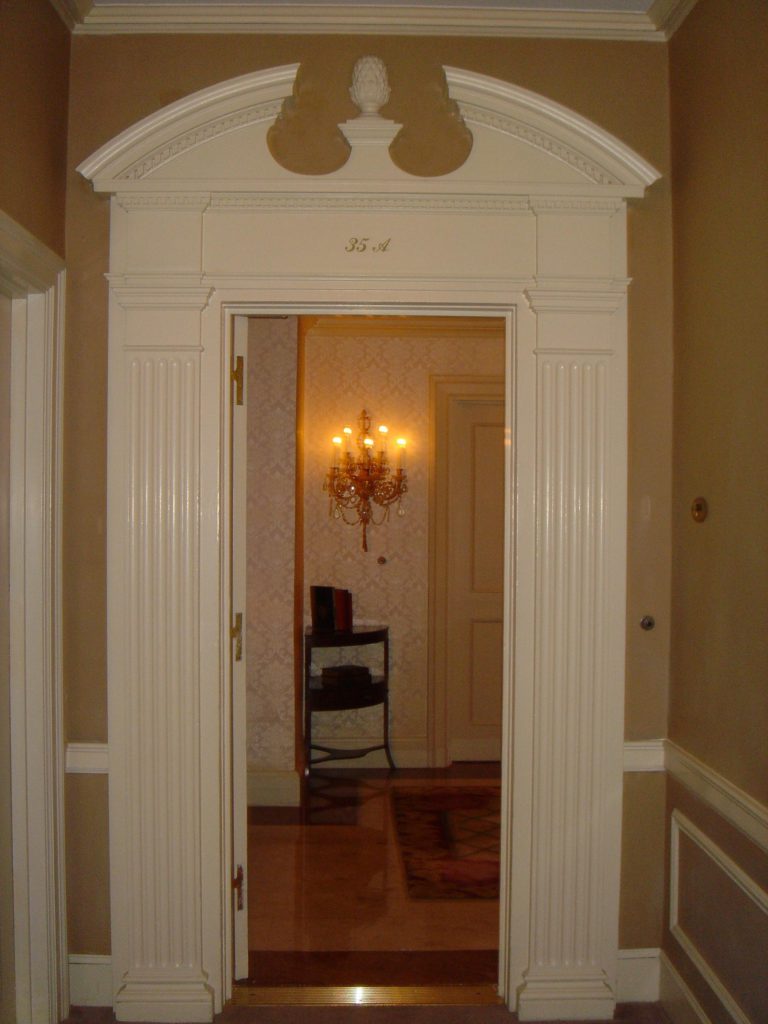
We are staying at the Waldorf Towers, in the Presidential Suite no less. Well, that’s not exactly true. We’re staying in a “sub-Suite” of the Presidential Suite. There is a main door to the Presidential Suite but there is also another door that can be closed to make the whole wing part of the Suite. It’s a very nice room with twelve-foot ceilings and tasteful decorations. There is one king-sized bed and a rollaway that fits nicely in the corner.
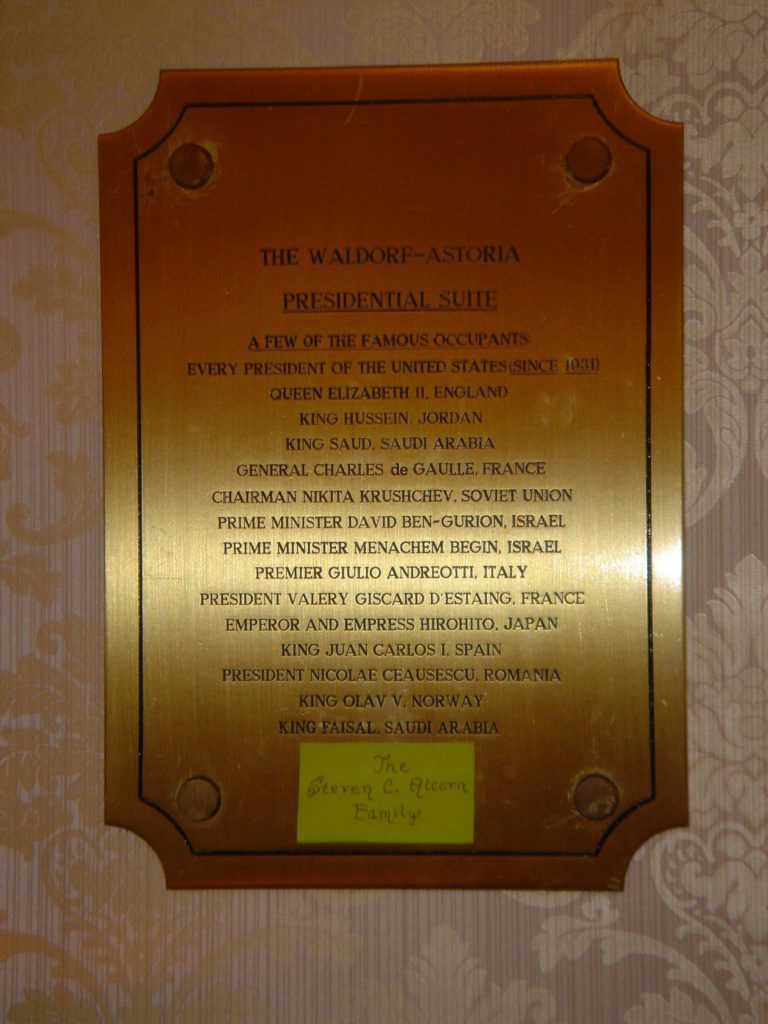
We were offered a tour of the Presidential Suite after our luggage arrived. It is to say the least large, not including its two sub-Suites. Some of the more famous patrons of the Suite include:
- Every President of the US (Since 1931)
- Queen Elizabeth II, England
- King Hussein, Jordan
- King Saud, Saudi Arabia
- General Charles de Gaulle, France
- Chairman Nikita Krushchev, Soviet Union
- Prime Minister David Ben-Gurion, Israel
- Prime Minister Menachem Begin, Israel
- Premier Giulio Andreotti, Italy
- President Valery Giscard D’Estaing, France
- Emperor and Empress Hirohito, Japan
- King Juan Carlos I, Spain
- President Nicolae Ceausesch, Romania
- King Olav V, Norway
- King Faisal, Saudi Arabia
- Mr. and Mrs. and Miss Alcorn, USA
Well okay, I made the last one up, but still. It’s pretty impressive.
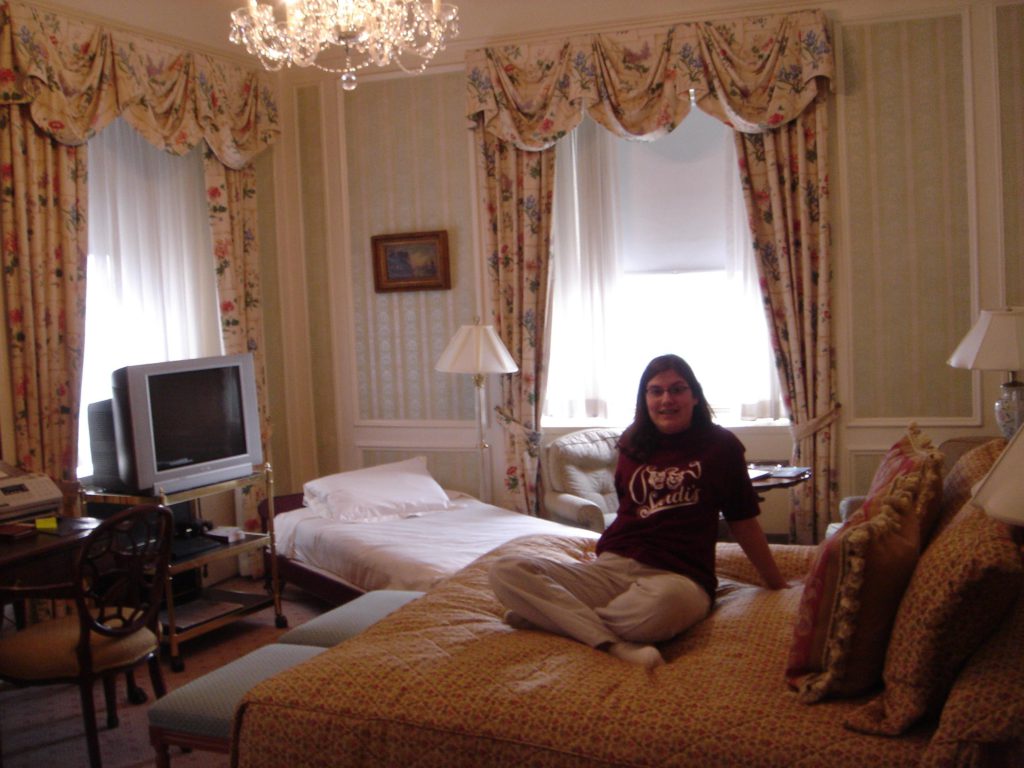
Because we hadn’t eaten all day at 3:30 we decided to have a very late lunch. Given our disheveled appearance after 2 hours on a plane we elected to try the only restaurant in the hotel that would permit our (okay, my) blasphemous jeans to enter their premises, Oscar’s.
Big mistake. The food was okay but our waiter (his name tag actually said “bus boy”) Victor seemed to have been temporally slowed down to some degree. After sitting at our table for, oh, about half an hour he walked past and caught Dad’s meaningful glare and said with great surprise, “Oh, you’re ready to order now?”
The meal proceeded on along those lines until after 5:30. The people seated next to us, at his only other table, scarily enough, got up and left without signing their check, to our great amusement.
The thing that strikes me about New York is how expensive everything is. All I had was a hamburger and fries (the fries didn’t actually come with the hamburger, we ordered them separately). It cost 21 dollars!! After such a LATE lunch we didn’t see the point in dinner so we retired early to our room for a quiet evening.
Day 2, 7/10/05 Lion King
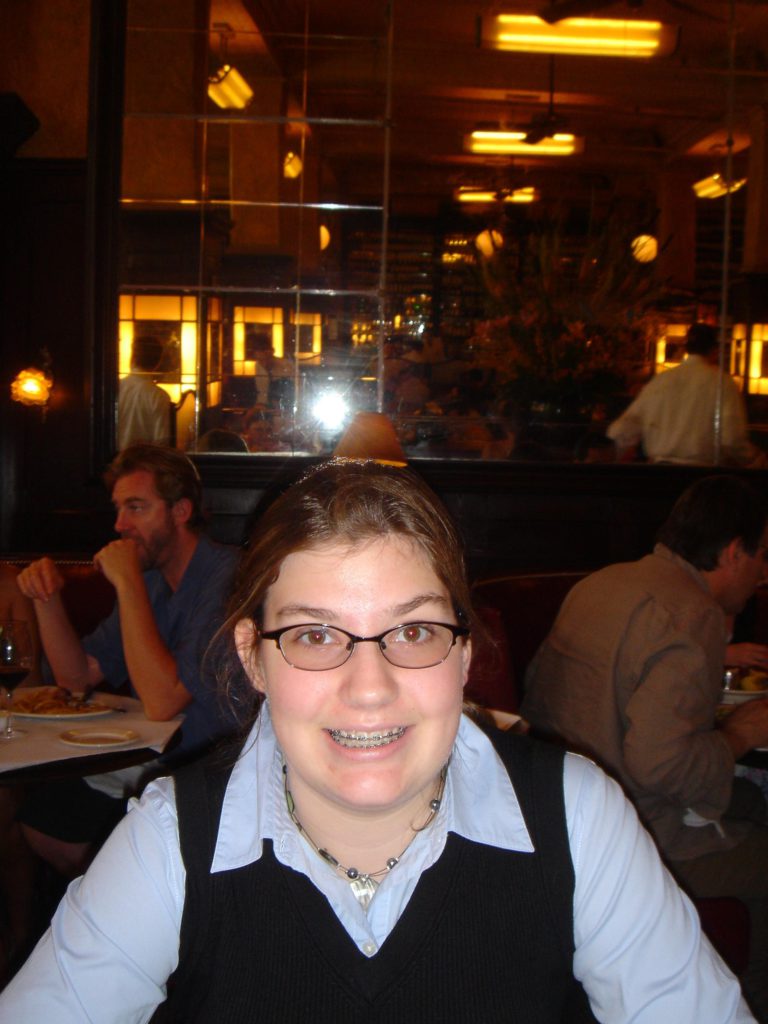
Dad and I ventured down to the 26th floor this morning for a continental breakfast. They had some good croissants (not La Duree, but hey) and some chocolate croissants filled with dark chocolate, good enough that a second one found its way onto my plate. We didn’t have too much time before lunch so we just went back up to the room.
Lunch was at a Parisian brasserie/bakery called Balthazar. It was a recommendation of Ron Siegel’s. Initially when we went in I was skeptical. There was not a soft surface in the place, so it echoed terribly. It was difficult to tell if it was old or just trying to look old. It had huge mirrors on all the walls that looked to be made out of a collection of old mirrors. None of them matched. I had the soup of the day, chilled carrot. It was delicious. Instantly all my skepticism evaporated. Mom had what she called “The best fois gras of my life” but I thought it was terrible. For our main course Dad and I had smoked salmon and Mom had beef stroganoff. The only weird thing about the whole meal was my coke; it tasted more like a drainage treatment solution than a fizzy beverage, but we had plenty of San Pelegrino. Dessert was a chocolate mousse that was to die for.
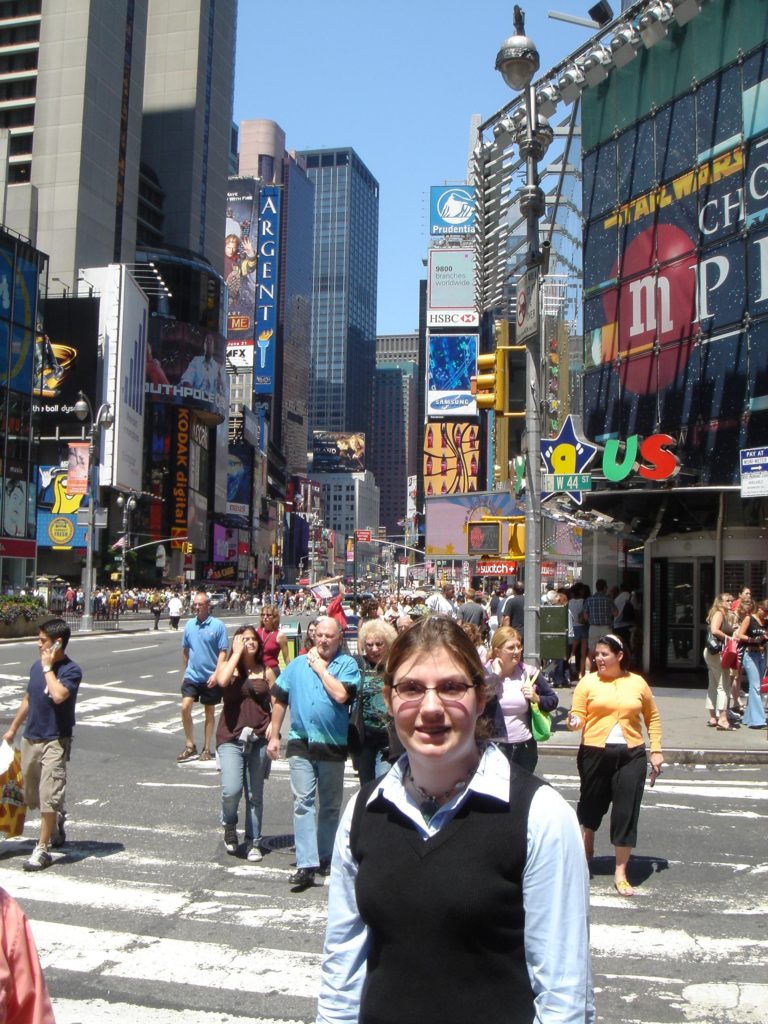
We had arrived early for lunch so we were done by 1:00. The Lion King tickets weren’t until 3:00 so we decided to stroll around the campus of NYU witch was only a block away. It was odd, without being told it was a campus I never would have guessed. It just seems like part of the city.
Mom had tried to find a pair of sunglasses that weren’t $65 at the hotel and failed, so she went into a grocery store at the campus. It was HOT out so Dad and I decided to check out the frozen food for a while. The only hint that we were in a college town was the fact that everything in the store was teenager sized. Mom also found some nice looking cheap sunglasses too.
After that it was time to head to the New Amsterdam Theater on Broadway to see Disney’s The Lion King. When I was nine we saw Lion King in Toronto but this was going to be my first “real” Broadway experience. I was pretty calm and collected while we waited outside the theater doors but about ten minuets before they opened the excitement bubbled to the surface. At long last the doors opened and I got my first look at a real theater. It was beautiful. We had the best seats in the house: first row, center on the mezzanine. The wide sweeping ceilings had beautiful paintings and gilt, the seats were made of green velvet. It was one of the most beautiful places I have ever been. When the lights finally dimmed and the curtain rose I think I was the happiest person on the continent.
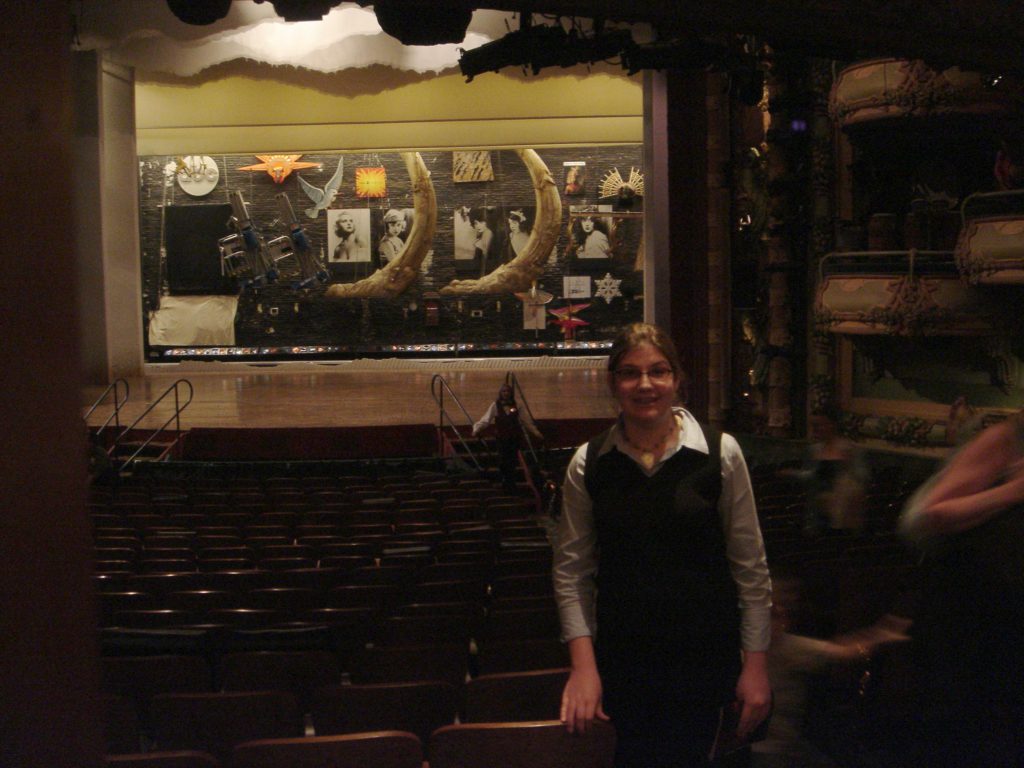
The show was even better than I remembered. I had forgotten how good it was. The young Simba and Nala were exceptional! It was such a great show. There wasn’t an inch of the stage that didn’t do something. There were at least three trapdoors and a staircase (Pride Rock) would rise in and out of the floor. The back half of the stage would raise up to about a 25-degree angle. They had plants that would inflate out of the floor and steam jets too. It was amazing. The lighting was superb, too, and the costumes. There was one cheetah that was simply breathtaking. The way the head moved it really looked like a cheetah. It was incredible.
After the show we bough a program and a shirt that had a painting of Scar’s mask that says, “I’m surrounded by idiots”.
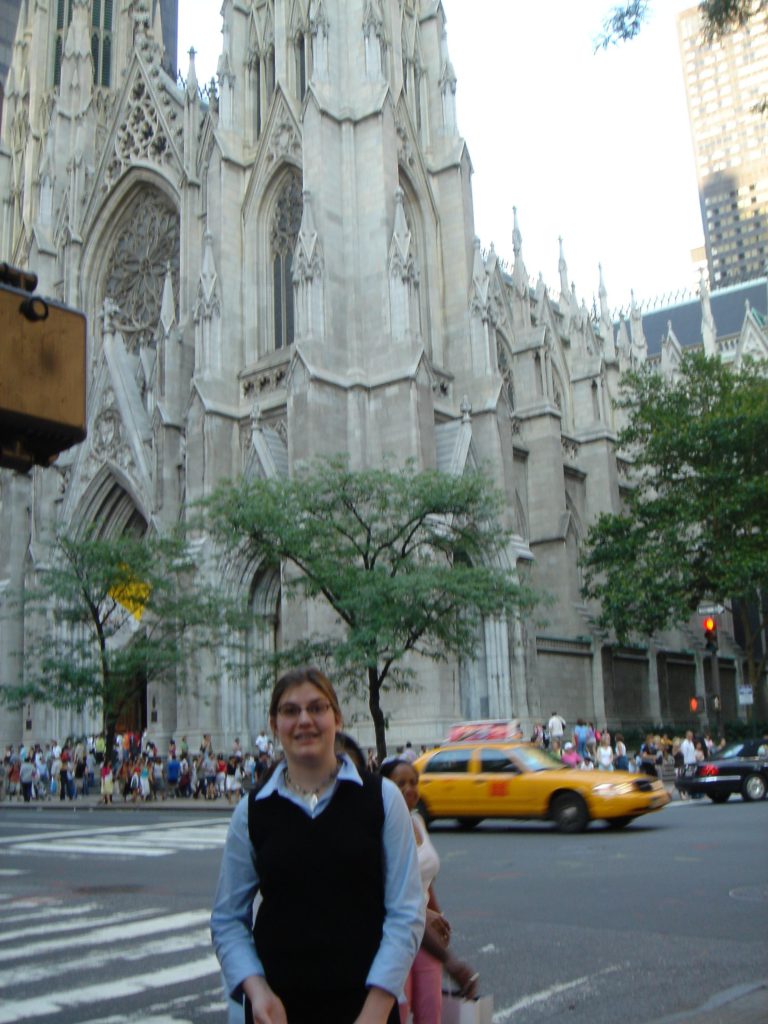
We had already wandered around Times Square so we just walked back to the hotel. Dad had been sick all through the last week so he was pretty tired. Instead of going out we had dinner at the Japanese place in the hotel. It was good, I had Chicken Teriyaki and a really weird dessert. It was called “White Chocolate Ice Berg Floating on Deep Blue Ocean”, no I’m not kidding. The ocean wasn’t very deep blue, it appeared to be Lime Jell-O with white chocolate mixed in. It was served in a dark blue bowl with a long curved stem that split into three. It should have been on Star Trek. The only thing normal about it was the iceberg (white chocolate mouse).
All in all it was a very good day.
Day 3, 7/11/05 Sightseeing
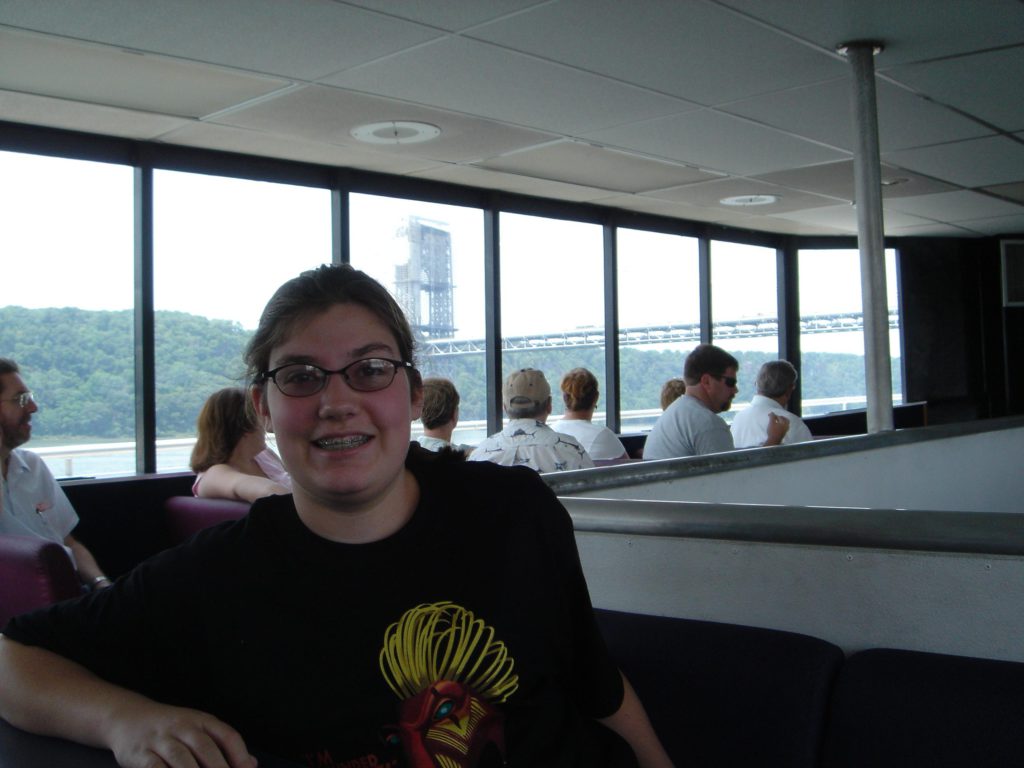
Again Dad and I had a continental breakfast. Today was the only day we didn’t have a play so it was our sightseeing day. We all went down to the lobby and asked the concierge to recommend a tour. We ended up booking a two-hour boat trip that did a complete circle around Manhattan Island. It didn’t leave until 1:30 so we had some time for lunch. We wandered around for a while until we came to a Houston’s. It was very good. Mom and Dad ordered half-pound burgers. I, opting for something lighter, ordered a French dip sandwich au jus. Unfortunately I didn’t realize it was covered in mayonnaise. Dad and I switched orders and he says it was the best French diphe’s ever had. I’m happy for him.
We didn’t realize how much the previous day’s activities had taken out of Dad. He ended up opting out of our planned sightseeing for a quiet day in the room. Mom and I caught a cab at the front of the hotel with plenty of time. The cab driver got to the corner of our hotel, made a right turn and was pulled over by a cop. Apparently the road we were on was a thru fare on weekdays and we had made an illegal turn. The cops wanting to thoroughly assert their authority over him made us wait, and wait and wait. After about ten minuets with no sign of the cops, Mom decided to bail on our poor cab driver. Having not even made it past our hotel we simply walked through another door, through the lobby and out the front again. A very confused looking bellman hailed us another cab. Once we got in and told him we wanted pier 78 and had to be there in 15 minutes. Nearing the corner of our hotel cab driver number two looked like he was about to make the same turn our last poor driver made. Mom quickly explained the fate of our last driver and he said “Oh yeah, I fuggot abou’ tha’. ” Surveying the traffic he asked me where the cops were. I told him they had just gotten out of their car and were walking towards our poor cab driver. He located a very large delivery truck and hid behind it while making the same illegal turn.
Now unfortunately traffic was bumper to bumper. I said that our boat left at 1:30, well, we arrived and 1:28. We ran down the pier and thrust our tickets at the man. He said, “Oh you need boarding passes to get on. ” I ran to the ticket office line where he had said to get them and encountered a man in front of me who had no idea what he wanted. As I stood in line for five minuets trying to be patient with the absolute moron in front of me I was sure that the boat was going to leave without us. Finally he left and I obtained boarding passes. As Mom and I stepped onto the boat they shoved off. Phew!
It was sort of funny: our guide’s name on the boat tour was Noah.

He was very personable and cracked a lot of jokes, he also knew a LOT about New York. He made a lot of potentially dull information very interesting.
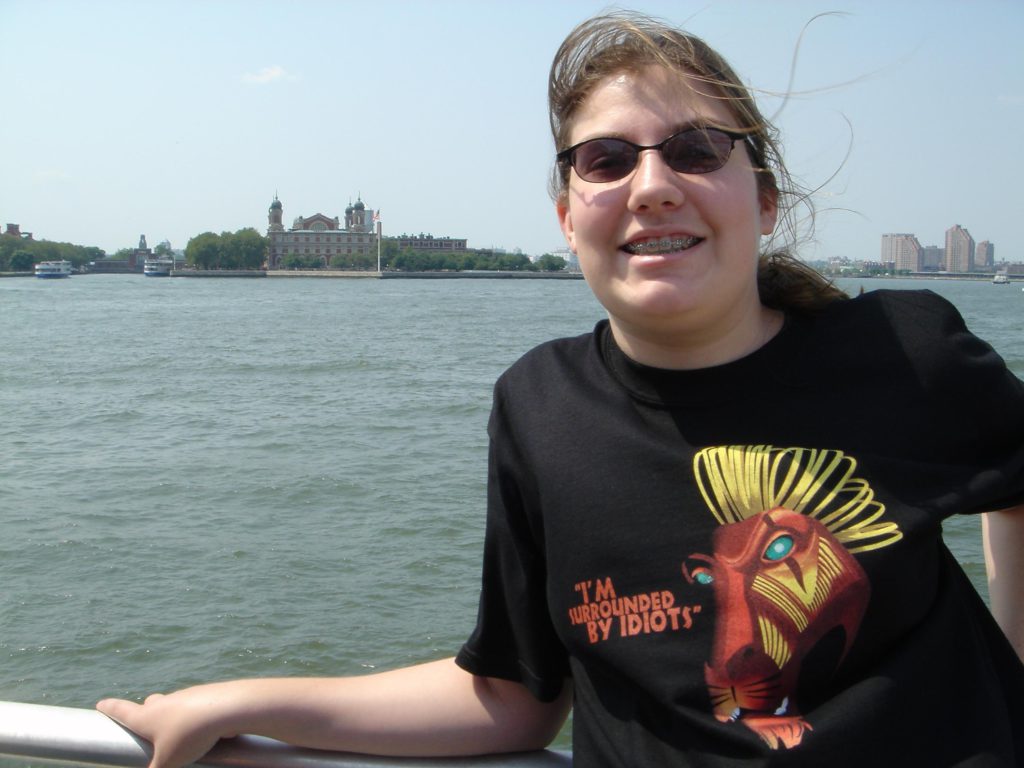
Because it was Cole’s birthday today I used my new cell phone to call her. We suffered from a bad connection and I had to redial her SIX TIMES!!
Dad was still pretty pooped when we got back to the hotel. We decided to cancel our dinner plans and have it at the Bull and Bear downstairs. It was delicious. I had a Queen cut of Prime Rib with garlic-mashed potatoes. Mom had a strip steak and Dad had Surf and Turf with some of the best lobster I’ve ever tasted. Desert was to die for. It was a real New York Cheesecake drizzled with strawberry sauce.
Another great day.
Day 4, 7/12/05 Spamalot
Yesterday the maid had accidentally turned on our alarm, it went off at 6:30. So Dad, planning ahead laszt night, turned the alarm to 10:00 instead, because we couldn’t figure how to turn it off. Still, it woke us up.
The continental breakfast is only served until 10:00 but there wasn’t much point anyway because we had a 12:00 lunch reservation at Jean Georges. Instead of having a normal menu it has a tasting menu at lunch so you pick two or three things to try. They looked so good we decided to try three. Amazingly, the courses were only $12 each.
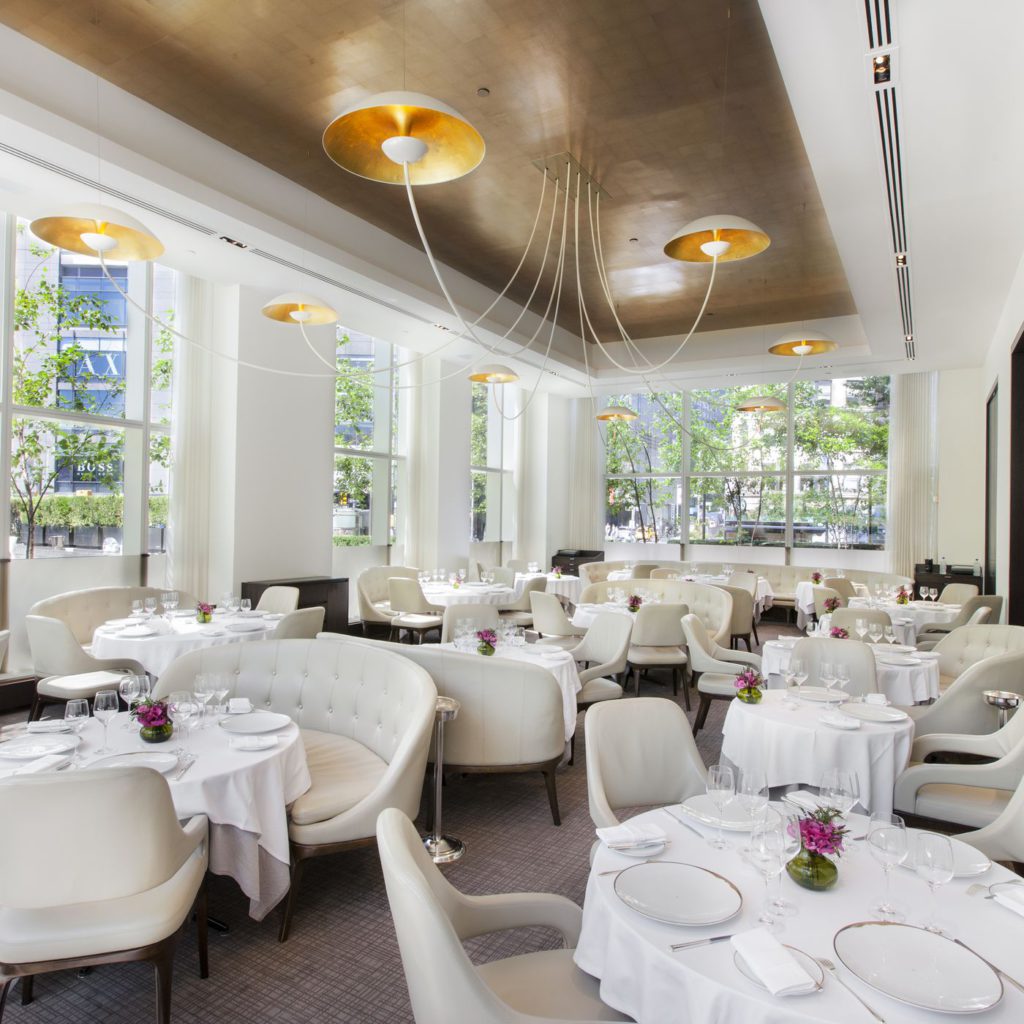
This was the best meal I think any of us has ever had. Every dish was an explosion of flavor. My favorite was Dad’s scallop dish. Mom and Dad liked his sea bass. The meal was too good to express with words. There was a REAL cheese tray. Mom couldn’t remember the last time she had a real one. There were about twenty different cheeses to choose from. She was in heaven. I personally thought they stunk (well they did!).
Dessert was the most amazing part for Mom and I. It was a Jean Georges’ specialty, marshmallows, coffee, mint or vanilla. They were not exactly the consistency of a normal marshmallow they were a little softer. Dad turned his nose up but we thought they were great.
We returned to the hotel for a quiet afternoon.
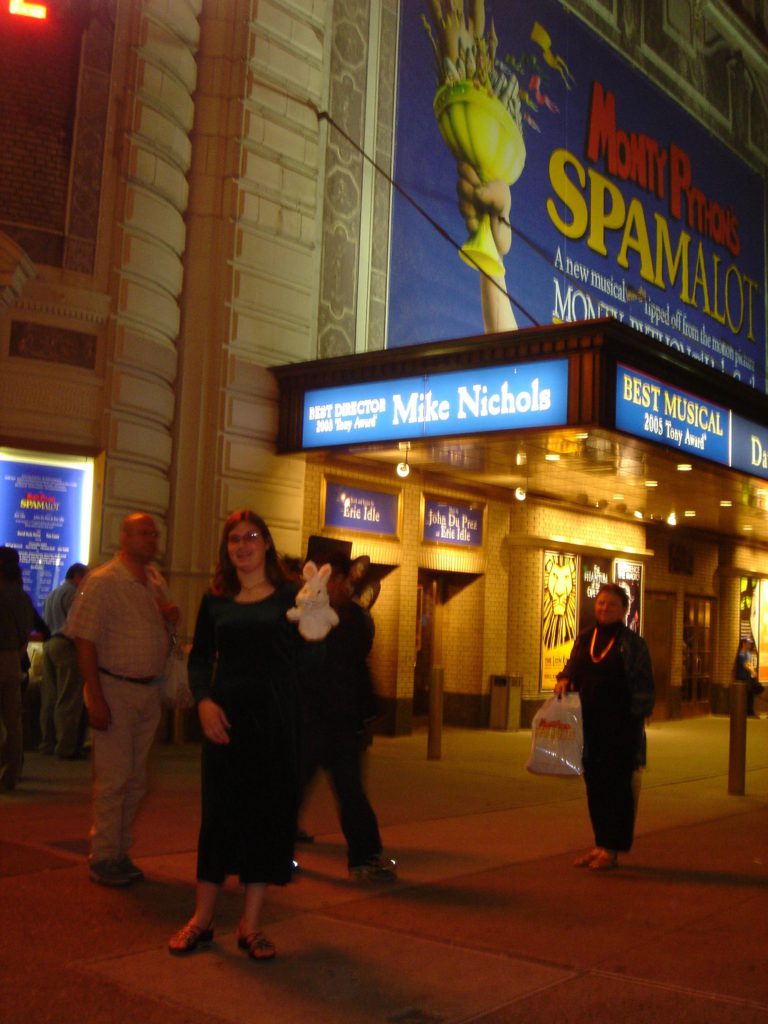
At 6:30 we left the hotel headed for Spamalot, the hottest ticket on Broadway right now. I wasn’t as thrilled about it as I am about Wicked or I was about Lion King because it’s based on Monty Python’s Quest for the Holy Grail. Dad is the real Monty Python fan but Mom likes it okay, too.
Spamalot was playing in the Schubert Theater. The show stars Tim Curry as King Arthur, David Hyde Pierce (Niles from Frasier) as Gallahad, and Hank Azaria (voice of Homer Simpson) as Lancelot.
We had pretty good seats as far as location goes, they were second row balcony, but the seats were so uncomfortable!!! There was no leg room. And normally when someone tells you there was no leg room it means they only had a couple of inches between their knees and the seat in front of them but in this case “no leg room” means that my shins were digging into the seat in front of me. I bruised the right one from prolonged pressure. There were literally only seven inches between the seat and the one in front of it.
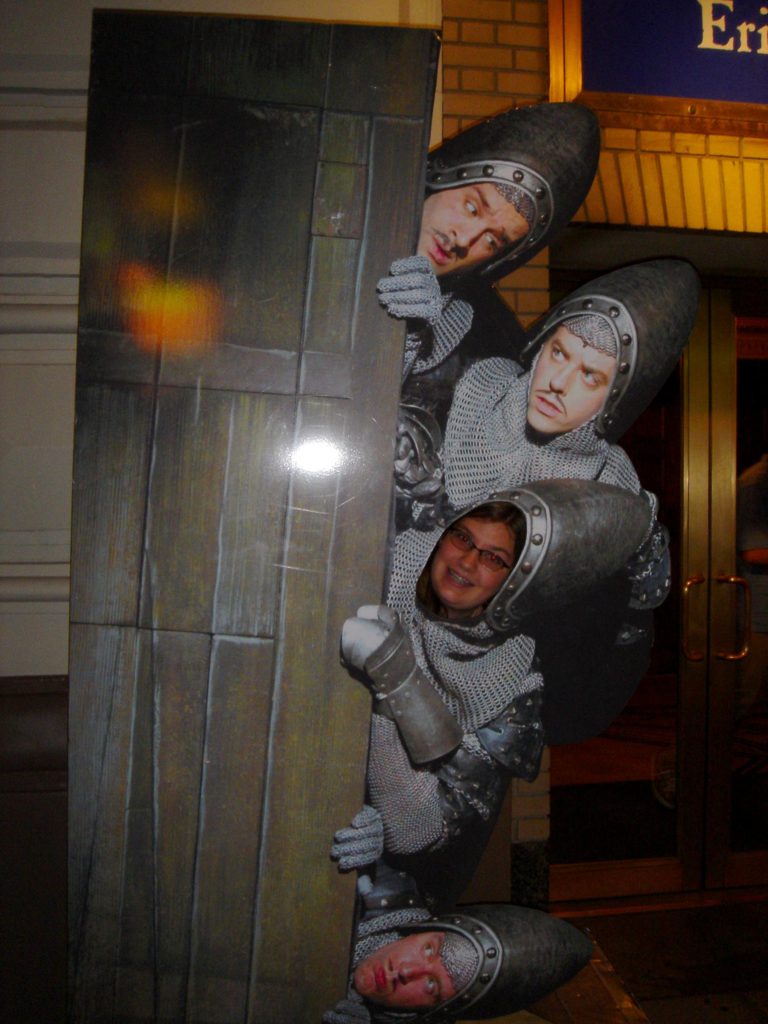
It turned out that the show was GREAT. We all loved it. We were all laughing so hard!! The cast was the original Broadway cast and you could tell, they had the audience in the palms of their hands. The show was just so funny. They had their timing down to a science. It was truly amazing that a line as simple as “Well, I guess we’d better go and find some Jews” could bring the house down.
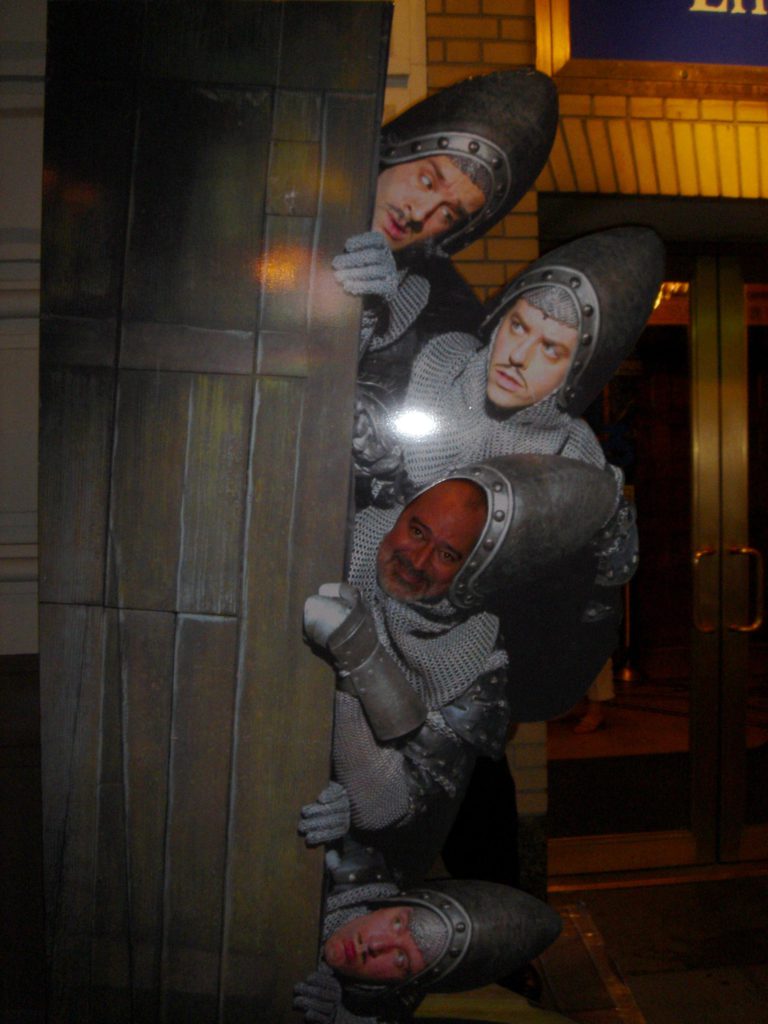
Sarah Ramirez was incredible as the Lady of the Lake. Her range was amazing; there was no style she couldn’t sing in. She also had this really funny number called “The Diva’s Lament” in the middle of the 2nd act (she doesn’t have much to do in the 2nd act). In it she asks the audience “what happened to my part?”. It ends with her yelling for someone to call her agent. After haughtily finishing and stalking off stage the action continues as though uninterrupted. Reading her bio I discovered that among one of her less prodigious roles was the cashier in “You’ve Got Mail”.
Spamalot was the funniest show we’ve seen!!!
After purchasing a “Fechez la Vache” t-shirt, a pair of coconuts, a program and a killer rabbit puppet, we crossed the street and had dinner at an after Broadway standard, Sardi’s.
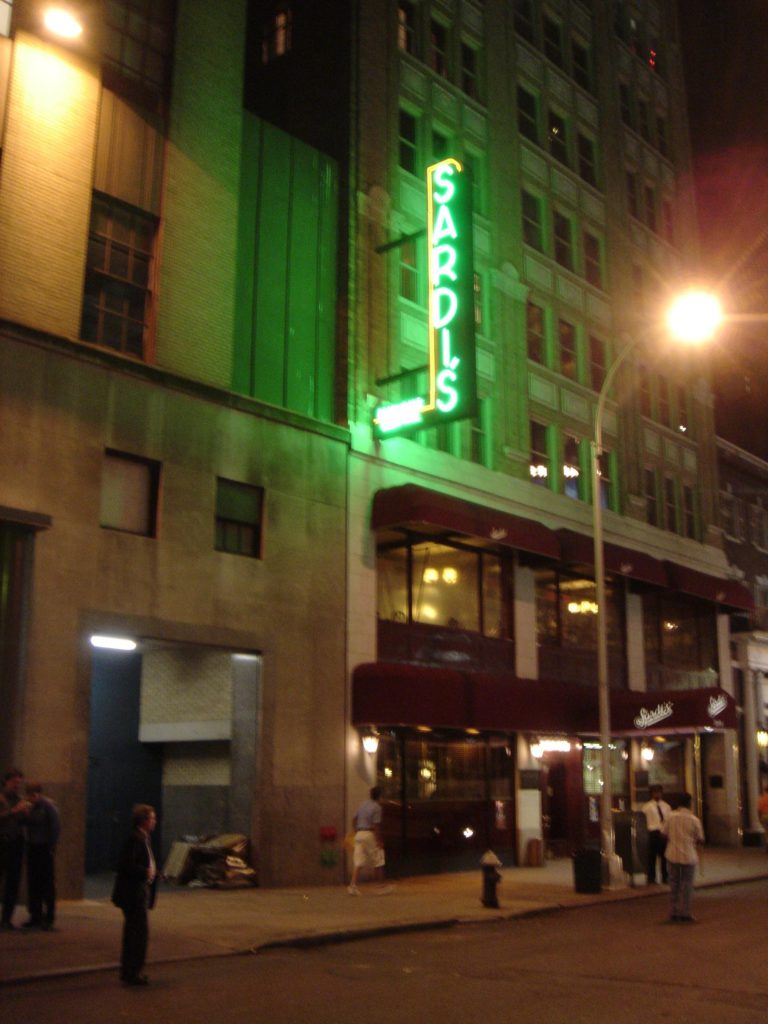
It was really good. I had Shrimp Sardi’s and Chicken. Mom and Dad both had cannelloni. The walls were lined with caricatures of famous Broadway stars. It was a really neat place. We all had a really good time.
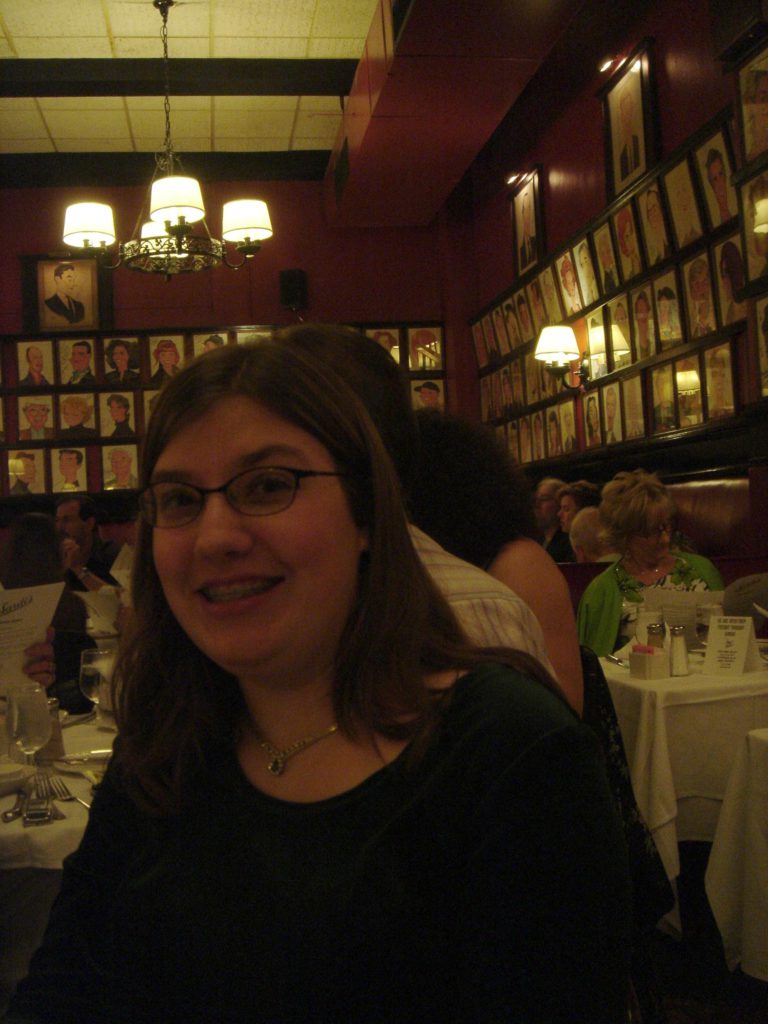
Day 5, 7/13/05 Wicked
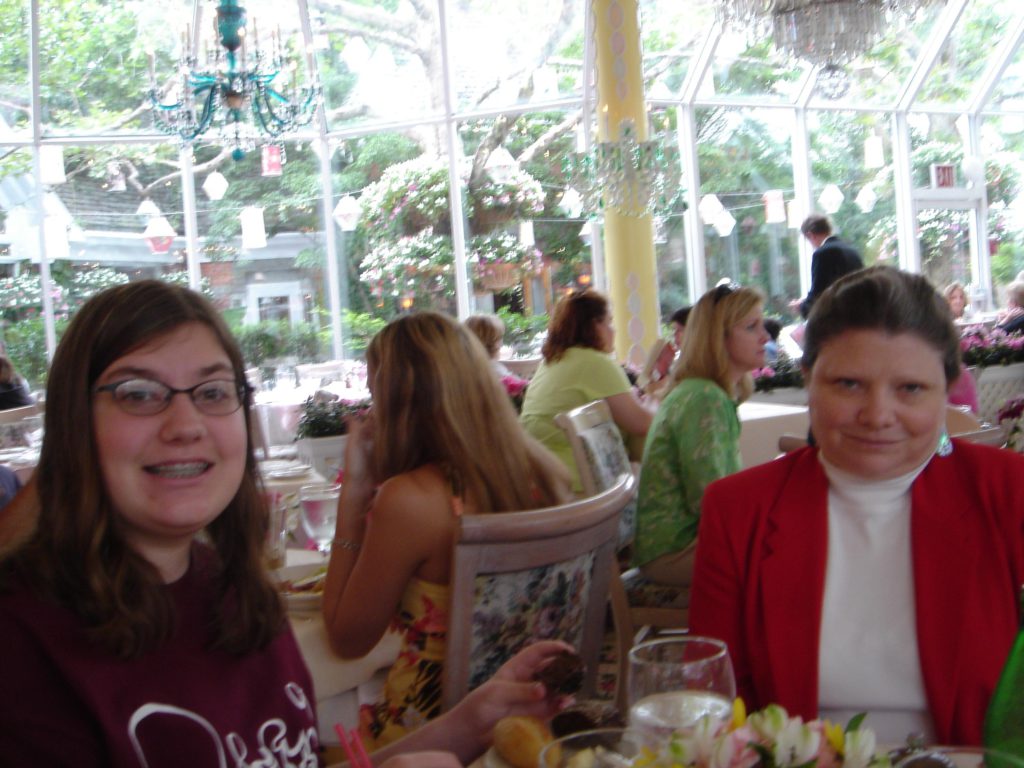
We woke up really late today (we didn’t start dinner until 10:00 last night). We elected to cancel our lunch reservation at the trendy La Bernardin and go to a tourist standard, Tavern on the Green.
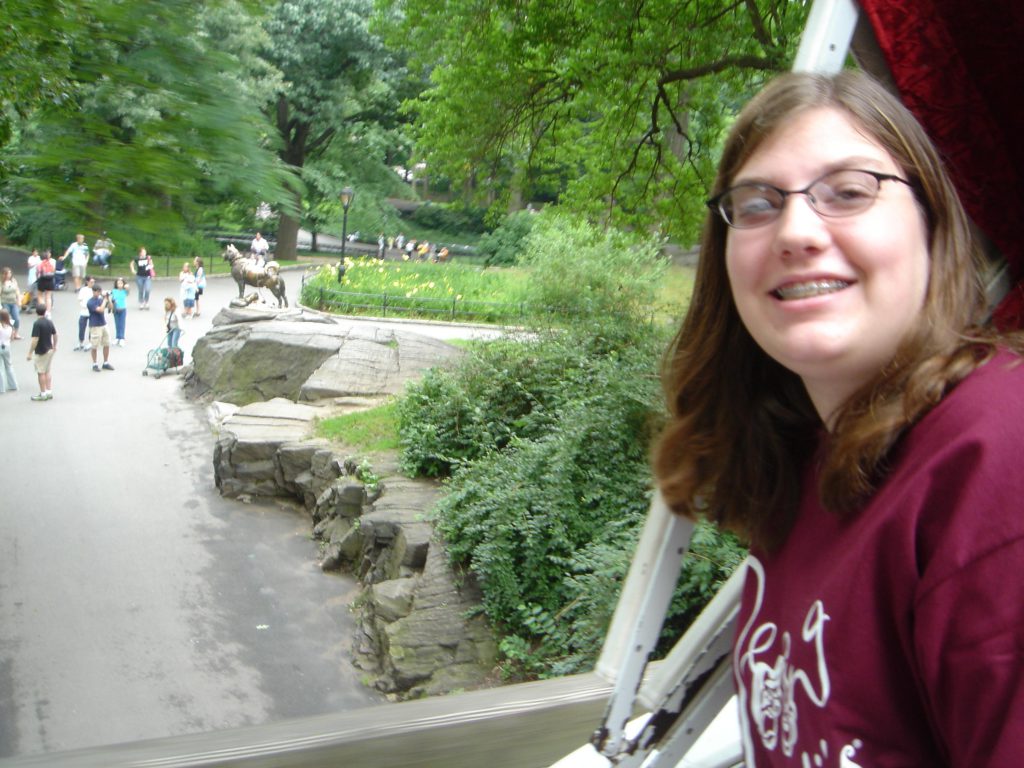
Tavern on the Green has lots and lots of dining rooms. There is a hallway covered in stained glass and mirrors that curves around and eventually leads to a conveniently placed gift shop and several of the dining rooms. The one we ate in was pretty, with a view of the garden. It looked like we were eating inside an Easter egg. The colors were all pale yellow, pink, and blue. There were at least six miss-matched chandeliers hanging from the ceiling. It was a nice meal.
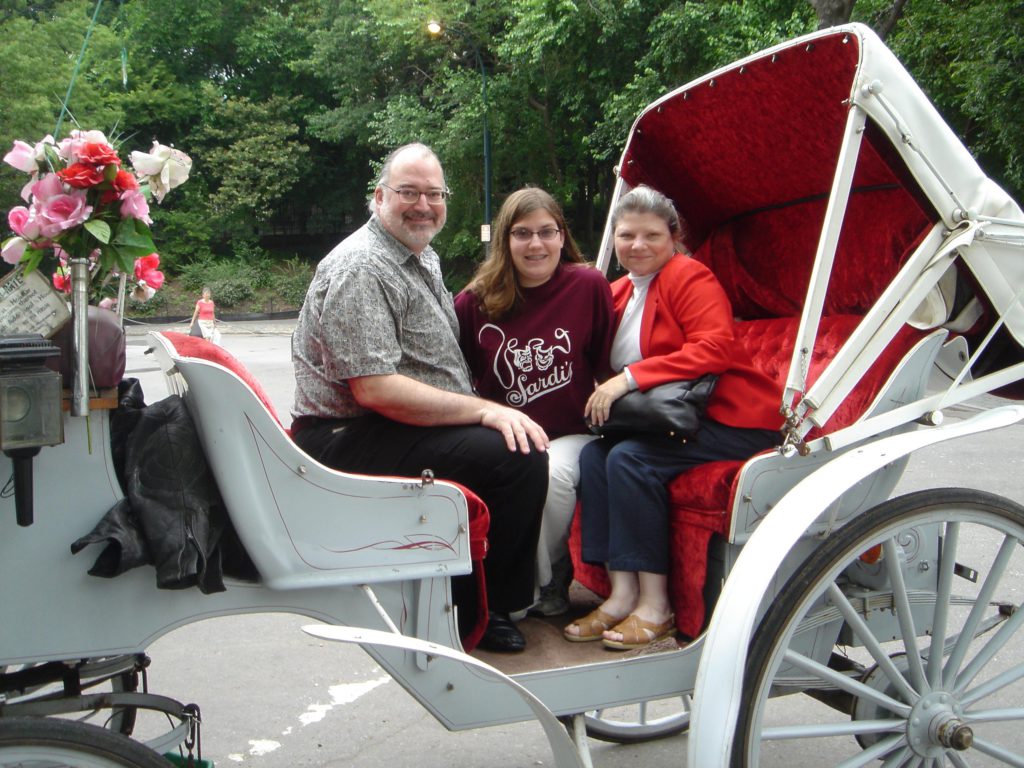
Tavern on the Green is located in Central Park. We hadn’t intended to stay afterwards but there were carriage rides launching from outside the restaurant. We took a 45-minute ride around the park. We had a nice Irish driver and a horse named Jimmy. He told us all about Central Park and he drove us past the statue of Balto, the boat launching station (kayaks), and the rows of famous writer statues.
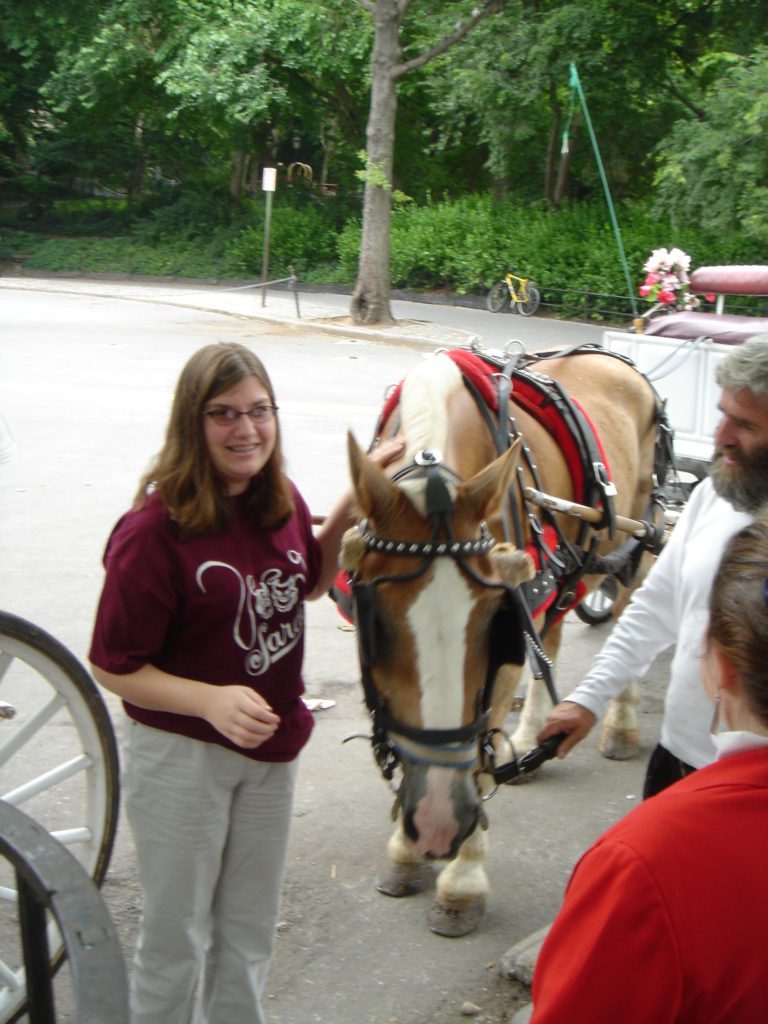
Jimmy had a very plodding gait until we were about two minutes from his stable. Then he didn’t understand why a simple red light ought to keep him from his oats. It was fun. The carriage was white with red velvet seats.
Central Park is nice, much nicer than I imagined. The trees are big, beautiful and green. It was quite a shock to see green after so much gray. I felt really safe while we were going around, and it didn’t have anything to do with the two-ton horse attached to our carriage. There are also some really scenic places in Central Park by the waterways. It was a really enjoyable afternoon.
We went back to the hotel around 4:30 to let Dad rest until Wicked. All afternoon I had been so excited I could barely sit still. After all, I have been waiting for more than 6 months to see this show. Finally at 6:30 I couldn’t take it anymore and started getting ready to go out.
It’s funny, no one seems to take Broadway seriously anymore. Everybody wants to go, but nobody wants to dress up for it. Admittedly Lion King is a kids’ show and we were going to a Sunday matinee but the dress for Spamalot was pathetic.
Well, even if no one else dresses up for Broadway, Wicked was my favorite show and I was going to look good for it. I silently kicked myself for forgetting my green blouse (get it?) but got dressed in a blue blouse, long black skirt, and black vest. The show was at 8:00 so we wanted to leave the hotel at 7:00 to allow plenty of time.
We encountered a problem downstairs. The theater was only eight blocks away but eight blocks in high heals seems like eighty, so we were going to take a cab, as were twelve other couples. At this point I started to panic, I was NOT going to miss the opening of Wicked. But luck was in our favor, a limo driver capitalizing on the lack of cabs in the vicinity offered to take us the eight blocks for $45 + tip. Okay, whatever, just get us there in time for the show.
It ended up being a good thing because, fishing for more business, he offered to pick us up from the hotel the next morning for our flight. We arrived at the theater with plenty of time to spare.
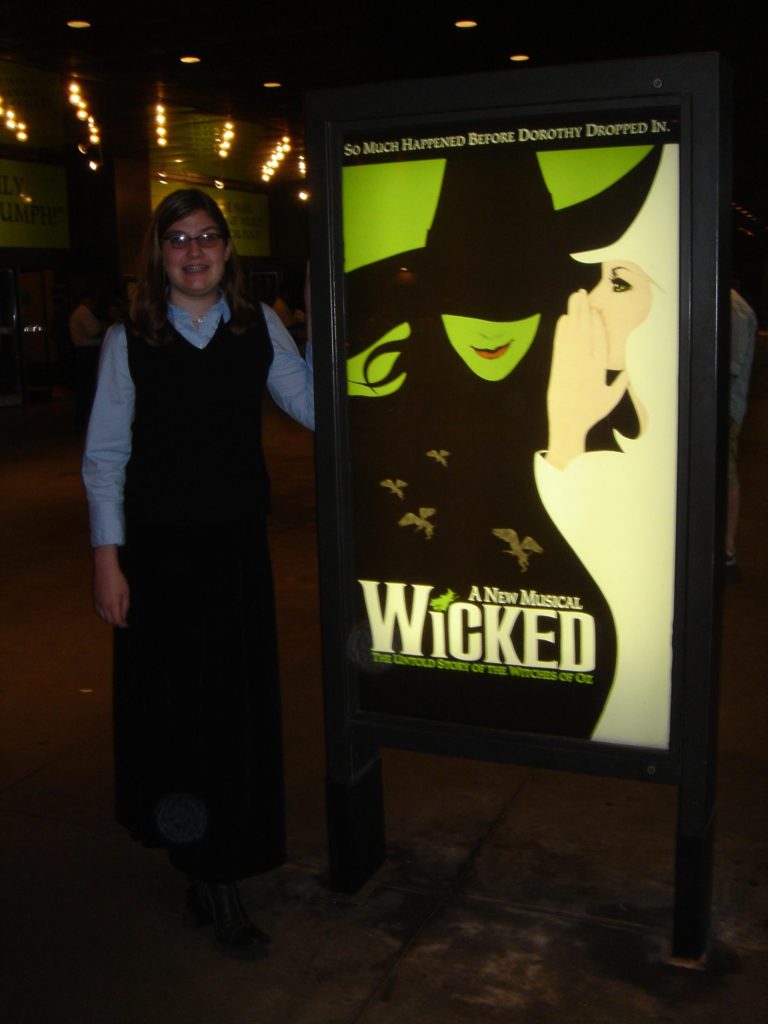
Our seats were REALLY GOOD!!! Third row, center section. OH MY GOD!!! We sat down and I was in shock. I knew we had good seats but this was unbelievable. This theater was more modern than the other theaters we’d been in. This one felt newer, the seats were wide with lots of leg room and it was a lot bigger.
The other shows’ sets somewhat extended into the theaters, but this one was just incredible. The whole proscenium was covered with gears. Some of the gears were decorative but others actually worked. There were also dead vines over everything. Elaborate sets on each side of the stage incorporated balconies and staircases. A huge tin dragon hung above the arch of the stage, animated by cables!!
Finally the show started, and WOW!! This was no longer the Broadway cast, but everyone was so good!! The lead was a look alike for Idina Menzel the original Elphaba. She sounded like her, and she looked just like her.
After listening to the music for six months I was still blown away by all the story that you can’t necessarily get from the music. It was so cool to see all of the acting that went into the songs that made them so great. All of the characters were so REAL. I have seen some great theater but if the best thing I ever saw was a 10 this was an 11. All of the talent that went into the show was just so good.
The number that really surprised me was “No Good Deed. ” On the CD it is a really good song, but live it stopped the show.
Because of where our seats were it felt like we were getting a private show for the first five rows of the audience. All of the major action of the show took place on the right side of the stage, literally ten feet in front of us. TEN FEET!! It was like they were telling this story to us. You could see all of their facial expressions and it was just so cool.
There were two wings of the stage that came out on either side of the orchestra pit and most of the major action happened on that wing right in front of us. I have never had an experience quite like this.
It was just a phenomenal show. I loved every minute of it. At the end of the show we would all have happily gone back in and watched it again.
After the show was over we loaded up on souvenirs, a Wicked shirt that says “Defy Gravity” on the back, a coffee cup, a program, a baseball hat, and a jacket.
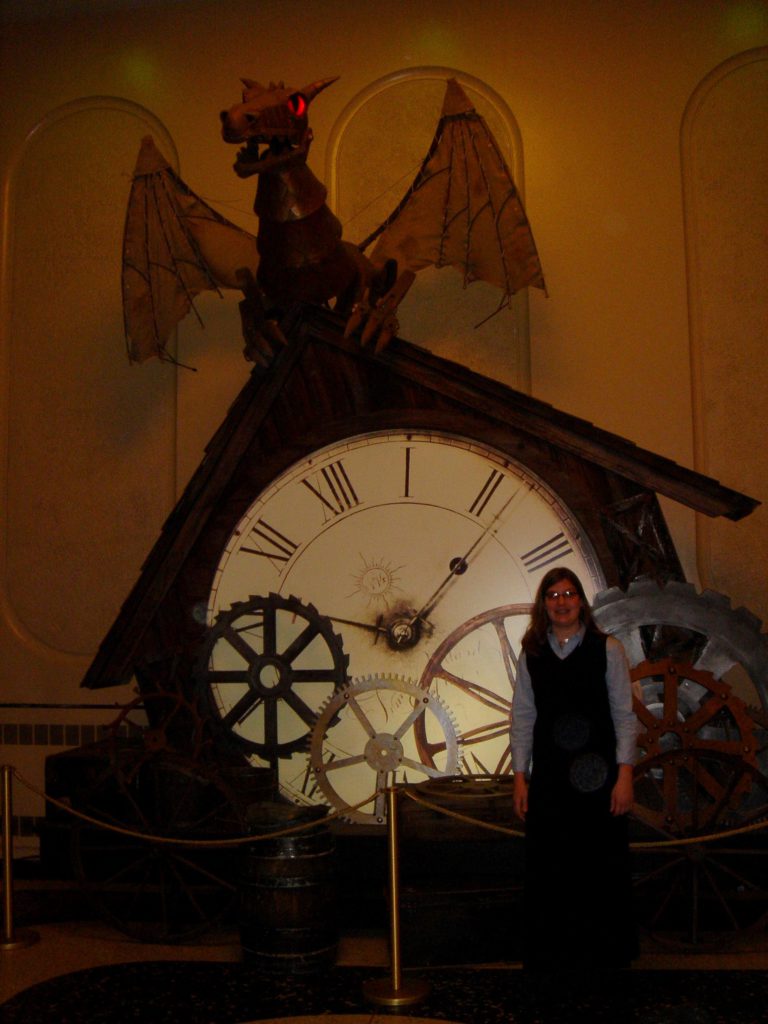
My parents were hungry after the show so we went to the Stage Deli (recommended by Thomas) and they had sandwiches larger than their heads. I was too excited to eat.
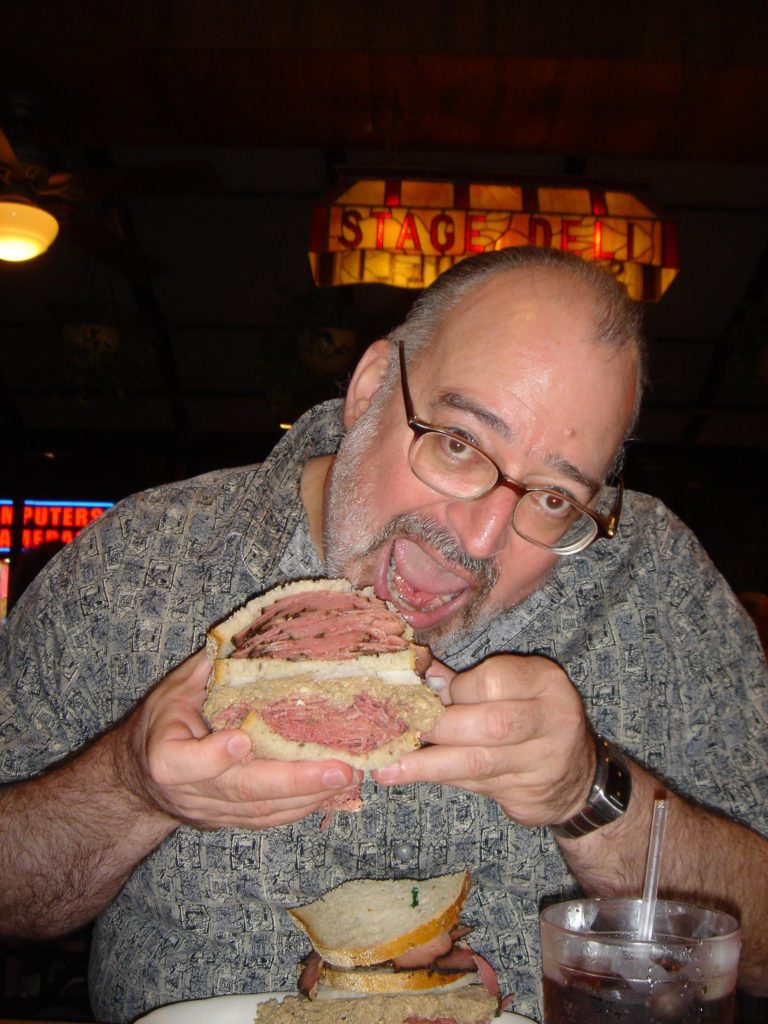
All in all this has been the best trip EVER!!!
Panama Canal 2005
Ft. Lauderdale • Limón, Costa Rica • Colon, Panama Grand Cayman • Cozumel, Mexico • Belize
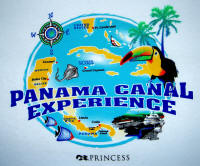
Ft. Lauderdale
Friday, March 18, 2005
The search for a Spring break cruse that matched Dani’s school schedule and went to places we hadn’t been proved a challenge. In fact, there was only one! Fortunately it happened to be on our favorite ship, the Coral Princess, on which we sailed to Alaska two years ago. Ever the engineer, Linda had always wanted to go through the Panama Canal, and that’s where it was headed, so we grabbed the last mini-suite and got a sweet deal on it, too, via the Internet.
The Coral Princess was actually built for the Panama Canal, so it’s skinnier than most new ships. As a result, it accommodates less than 2000 passengers (compared to 3000 on most. ) That difference is what makes it our favorite. The ship has all the big ship amenities — even a ceramics and art studio — without the crowds. Its design is clever, with smaller public spaces and a passenger flow that never crushes everyone into the same area at the same time.
It was also convenient that the ship was leaving from Ft. Lauderdale’s Port Everglades, avoiding the extra distance (and death risk) of Miami. Averaging just over 80 mph on the Turnpike we made it in under four hours, including a stop for gas and food — not necessarily in that order.

The Port Everglades terminal amazingly grungy (and possibly being remodeled — it was hard to tell), but it didn’t really matter because check in was so efficient we were only there for about five minutes.
Our cabin layout is identical to our last voyage on this ship, but it’s on the port side and forward, which has so far been surprisingly disorienting. Couple that with last summer’s memories of the similar but different Star Princess, and wandering around has been a bit like a bizarre dream, or constant deja vu.
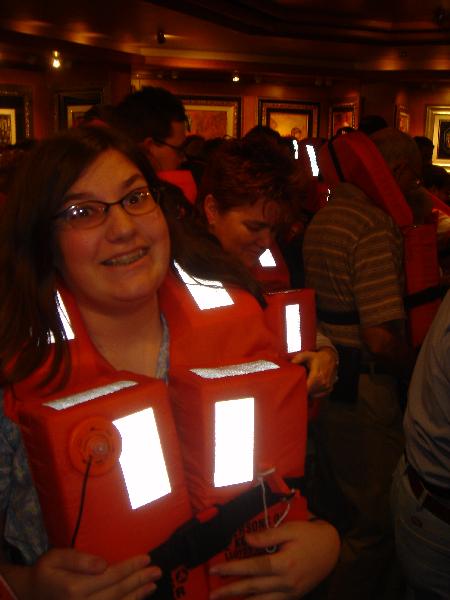
Life station drill was pretty unpleasant, with a hundred or so of us packed into the art gallery. I’m becoming convinced they make it awful so that no matter what happens later you’ll approach it with the attitude, “could be worse.” It’s possible that actually abandoning ship would be more pleasant.
There was a line for anytime seating at the dining room, so we went to the cover charge restaurant, Sabatini’s, (which is always uncrowded at the beginning of the cruise) for their 3000-course dinner. Service and food were good, in fact identical to previous visits on this and other Princess ships.
At Sea
Saturday, March 19, 2005
We spent a restful day at sea. Dani and I watched a pottery wheel demonstration, then spent a couple of hours painting ceramics in the studio. Linda spent most of the day doing needlepoint or reading on the balcony. It was the only day I can remember having all three meals in the ships dining room.
I learned my friend Bill Canon, the Hollywood screenwriter, died suddenly of a heart attack last week. He was on his boat in Santa Barbara Harbor. His death came as quite a shock, as I’d just talked to him a few days before. Education to Go has asked me to take over his online classes. It was a difficult way to get the news, but I suppose there’s no good way. I’ll miss him.
Dinner was memorable. It was formal night, so we arrived from the photographers as dressed up as we ever get, in tuxes and evening gowns (I opted for the tux, rather than the gown).
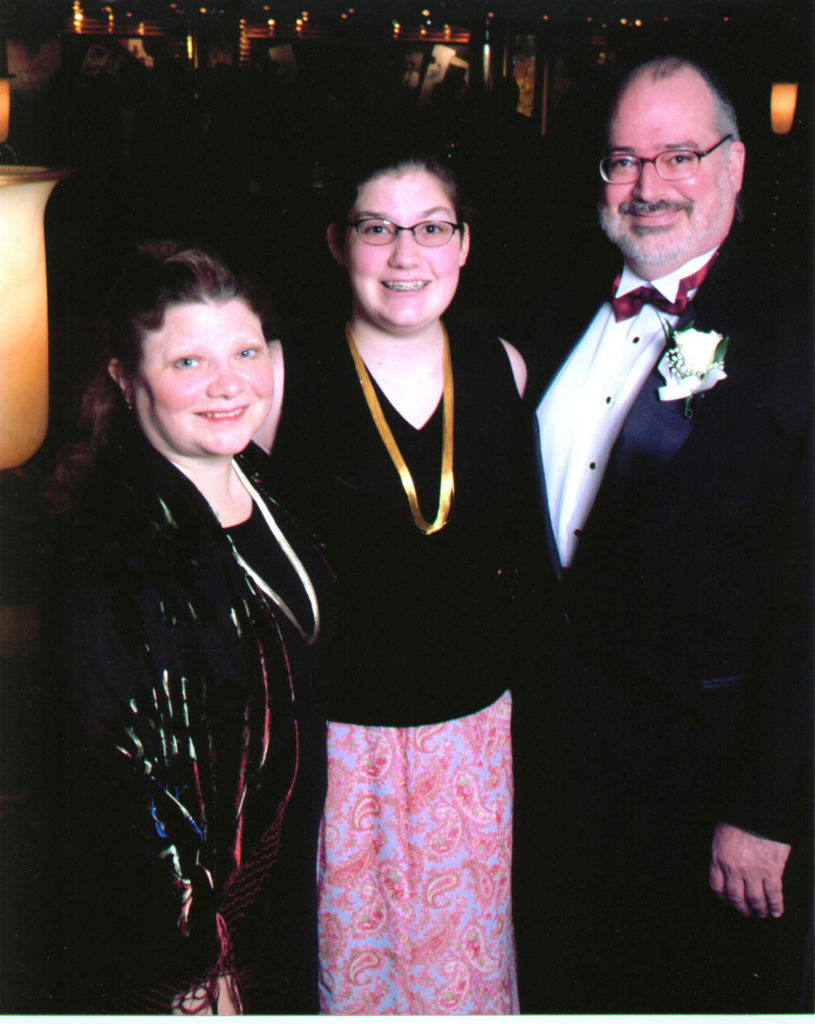
We were greeted at the door by Godwin, the head waiter, who knew our names despite the fact we’d never met. (We asked him later and he said he saw our name on the ID screen as he watched the passengers check in. Wow. ) He ushered us to a lovely window table which must be the best table in the house, not because of its location but because our waiter was Jorge, possibly the finest waiter I’ve ever had. Although he was busy, he made excellent service seem easy, and he was extraordinarily personable, and funny, too. (Waving the pepper grinder, he asked if I wanted pepper on my salad; when I said yes, he set the tiny pepper shaker from the table next to my plate. )
Jorge is from Mexico, and apologizes for his English, which he says is only slightly better than his Spanish. As other diners left they were asking Jorge how they could get one of his tables again. As we, too, were wondering this the problem was solved for us. Goodwin came by and asked us I we’d like him to reserve that table for us every night at the same time. We replied with a resounding “Yes!”
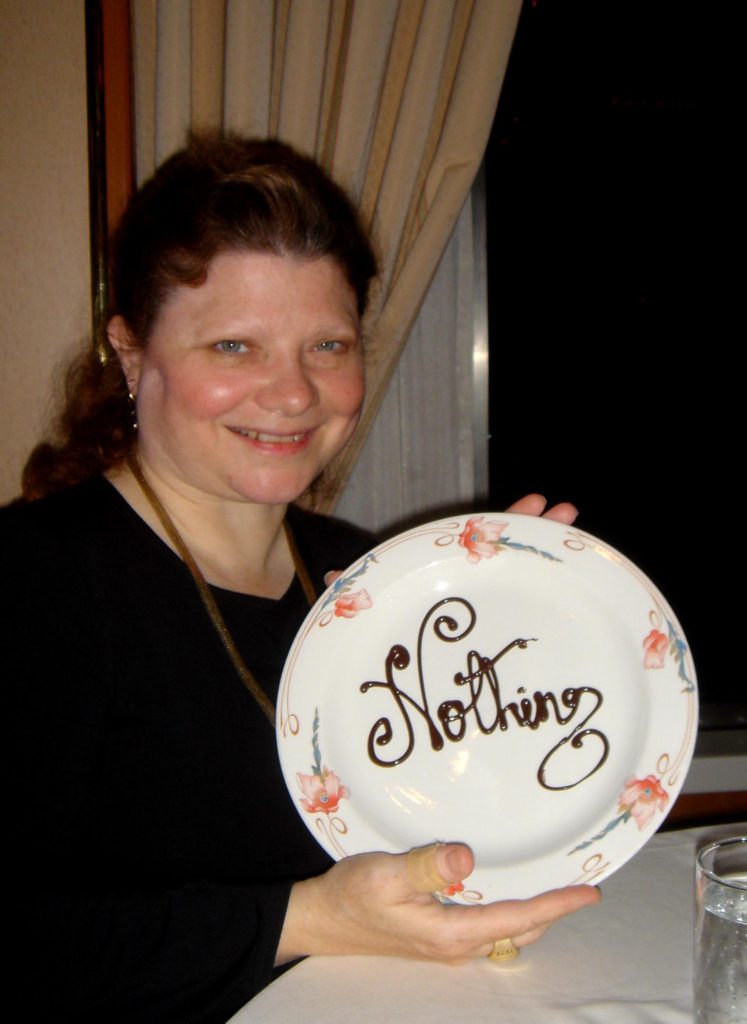
Linda said she wanted nothing for dessert. You can see the results in the photo. The Broadway show in the Princess Theater was top notch. It’s staging was particularly unique, with onstage locker and the cast changing wardrobes between numbers in full view. The segments from Evita, Grease and Oklahoma were particularly good.
At Sea
Sunday, March 20, 2005
Another quiet day a sea, with a little painting and a long nap. we’re definitely now on cruise time. Dani is getting a cold, probably the one I dodged last week.
Limón, Costa Rica
Monday, March 21, 2005
We docked in the wee hours at Limón, Costa Rica. Dani didn’t feel well enough for our rainforest aerial tram trip, so Linda and I set out on our own.
Our guide, Porfiro, was extremely intelligent and entertaining. He grew up in a shack on a coffee plantation, but because of Costa Rica’s incredible educational system (92% literacy rate) he was able to finish college on a full scholarship. The educational system is paid for with funds saved by eliminating the country’s entire army. Sounds like a plan.
Costa Rica is extremely conservation oriented. 25% of the country is national parks and other preserves. And there are serious effort to promote bio-diversity in all areas, including agricultural lands. This is partly subsidized by tourism, which accounts for 45% of the country’s economy.
Limón is a small town with no harbor, just a pier. We boarded a bus and headed out of town, which didn’t take long. By our standards, the buildings are shacks, some little more than piles of corrugated metal. But as Porfiro put it, “most people are happy, because you can’t miss what you don’t know about. ” I noticed they all had TV antennas, though.
The staples of Costa Rica are rice and beans. As Porfiro explained, they eat three meals a day:
- Breakfast: Rice and Beans
- Lunch: Rice and Beans
- Dinner: Beans and Rice
Once out of town we were surrounded by verdant countryside, interspersed with banana and pineapple plantations. The country’s main crop, coffee, is only grown above 3000 ft, and elevation we never reached
The country spans the isthmus, from Caribbean to Pacific, between Nicaragua and Panama. There are over 600 rivers — we crossed many — and nearly a dozen distinct bio zones.
We also crossed some impressive chasms created by a 1991 earthquake. The entire isthmus is geologically young, having been thrust up about 70 million years ago to form a land bridge between North and South America. This allowed the migration of species in both directions, and altered the world’s ocean currents, allowing the gulf stream to warm Europe. A number of active volcanoes testify to the area’s continued geologic activity.
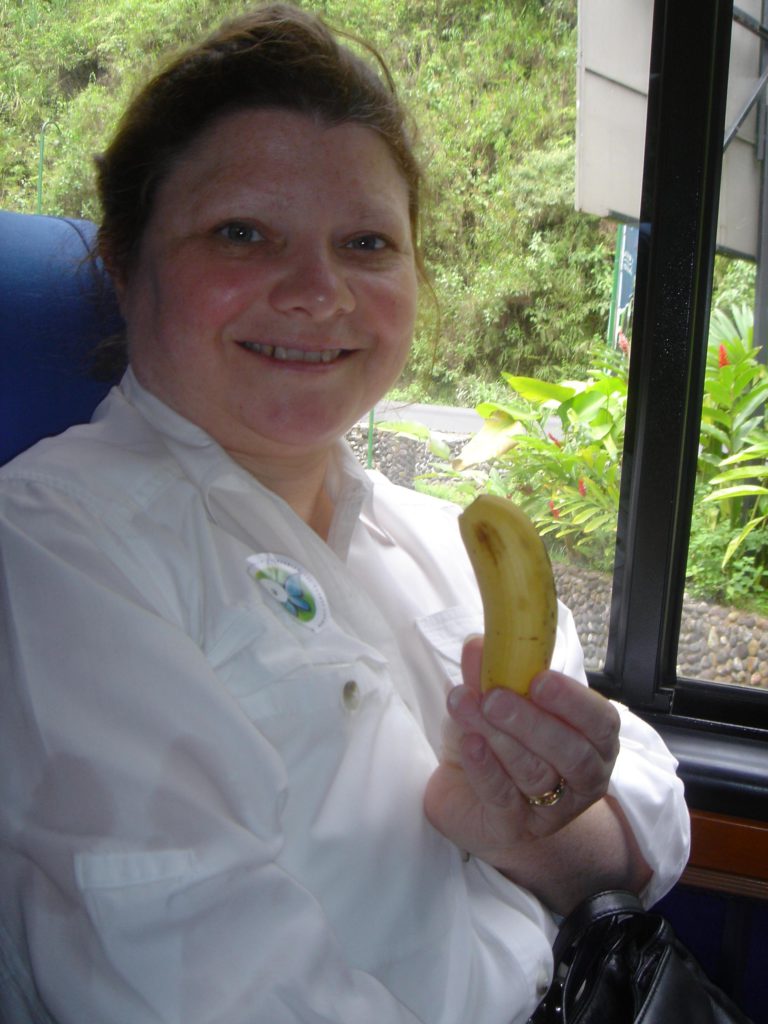
Not far out of Limón our driver stopped and bought us a stalk of delicious little bananas. We learned more about them later.
It was about a two hour drive to the aerial tram, where we rode in an open trailer pulled by a tractor to reach the boarding area. The tram travels over a mile, making a round trip in just over an hour, and stopping periodically to load and unload. There are 24 seven-passenger cars. The seventh passenger is a naturalist.
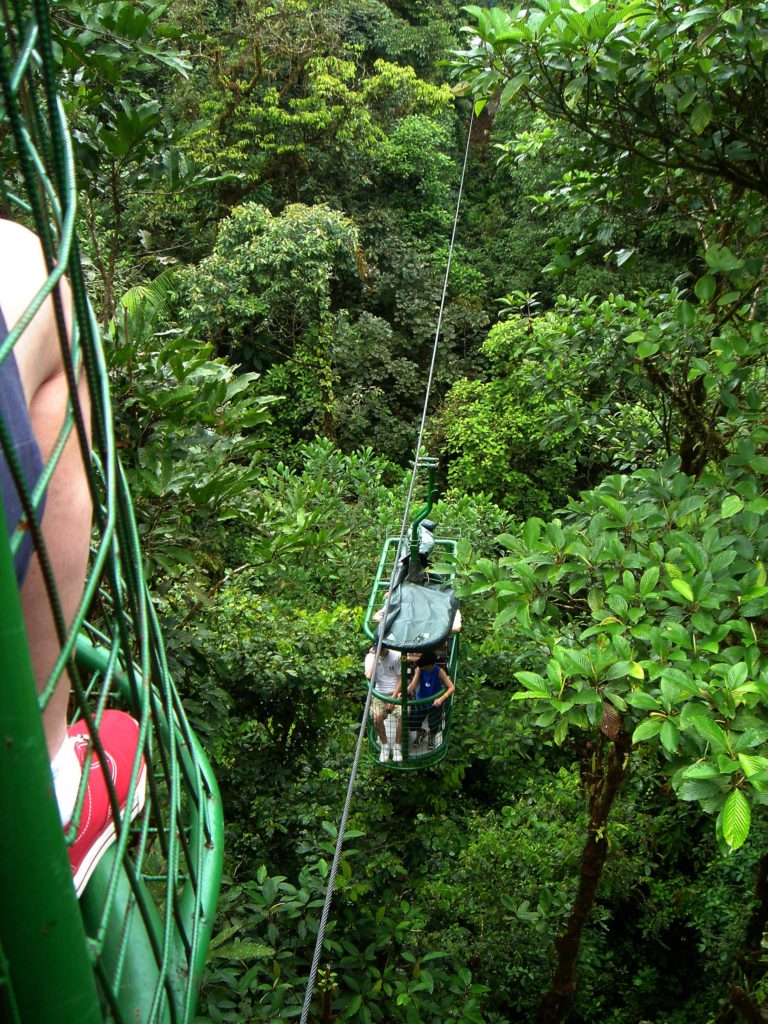
Although the views – and height and length — of the ride couldn’t compare with the one in Cairns, Australia (although they brashly claimed this was the greatest in the world) it was really nice having a naturalist along to point out the diverse elements of the ecosystem.
The journey out was made nearly on the forest floor, and the return tip in the canopy. We spotted a family of Coati (similar to raccoons) crossing the forest floor, but saw little other wildlife, since it’s mostly nocturnal. We learned a lot about the flora, though. Although this is the dry season, about halfway through our journey a slight drizzle began, not enough to really get us wet, but the perfect atmosphere for a rainforest that gets more than 300 inches of rain a year.
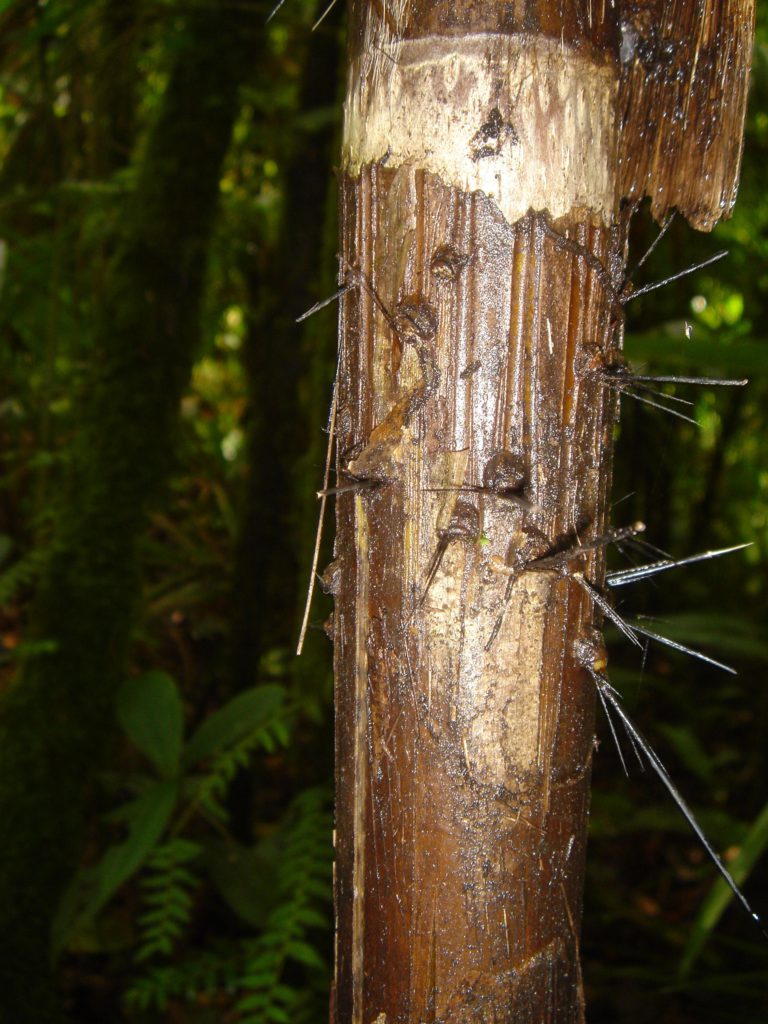
After the tram ride another naturalist took us on a nature walk, where we saw leaf-cutter ants demolishing the forest in most impressive fashion. There was also a sloth, a bat sleeping on the underside of a leaf it had folded in two, and a deadly eyelash viper. Gulp. We also saw a palm which is the source of poison darts. A single poison dart frog can equip up to 60 of these needle-sharp splinters with a fatal dose of poison.
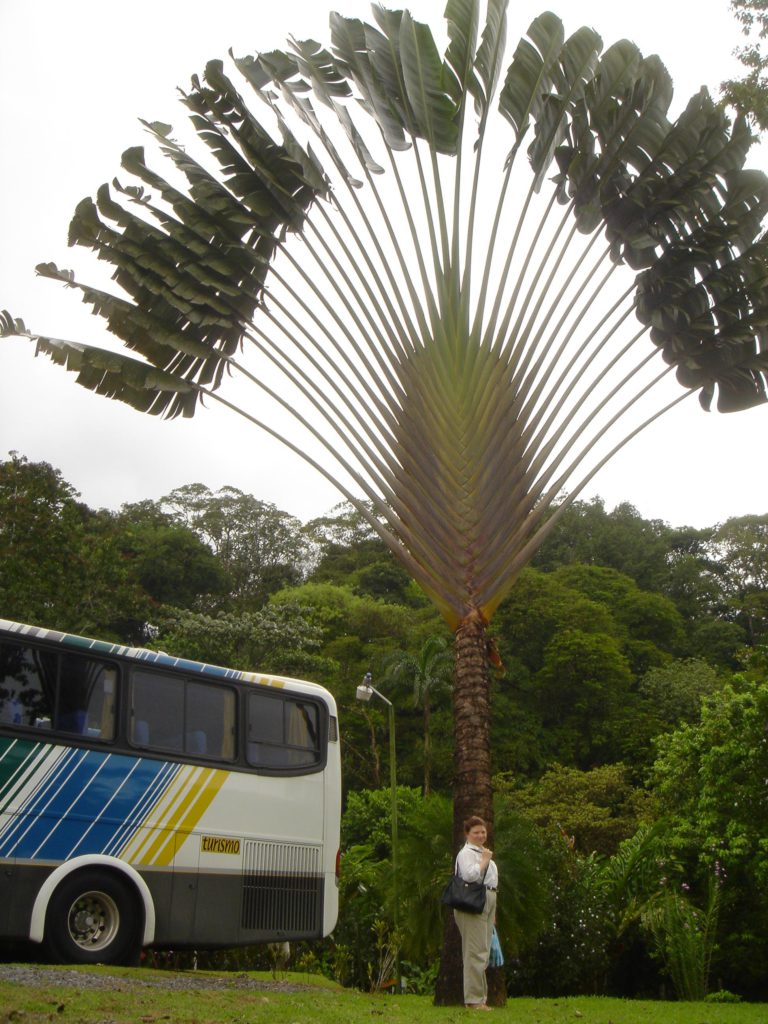
Leaving the rainforest, we stopped for lunch at Restaurante Rio Danta, where we had a delicious lunch of. . . rice and beans. We liked their hot sauce, a complex, curry concoction, so much we bought three bottles.
Almost back to Limón, we made an unscheduled stop at a banana plantation where Porfiro showed us how this plant — technically the world’s largest herb — is cultivated.
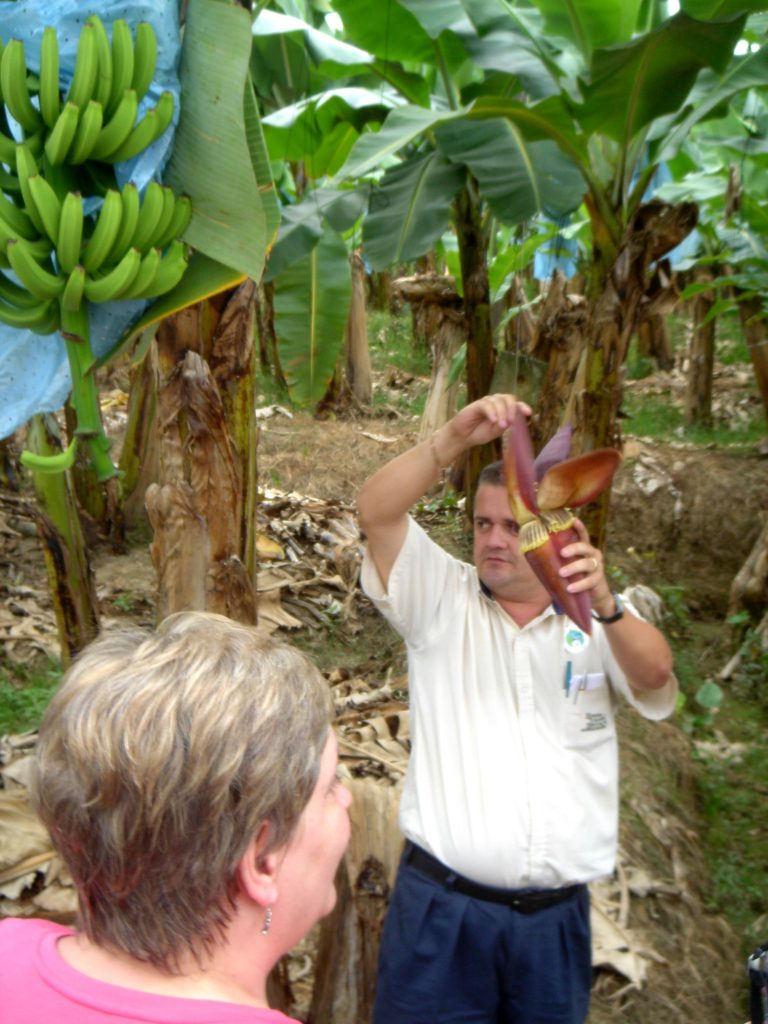
The plant grows where the previous one is chopped off. There are always two left from the same base; one is producing fruit, the smaller is its replacement. After nine months of leaf growing a blossom forms. As it opens teeny bananas are revealed. As they grow they turn upward to the sun. The lower ones are pruned off, except one (examine the photo closely) that signals the plant not to grow more levels. This leaves about 80 bananas on the stalk. It’s sealed in a perforated plastic bag for six weeks, then harvested, and the plant is cut off at the base. A new one sprouts almost immediately.
We arrived back at the ship at five, and by six, lovely Costa Rica was fading in the distance.
Panama Canal
Tuesday, March 22, 2005
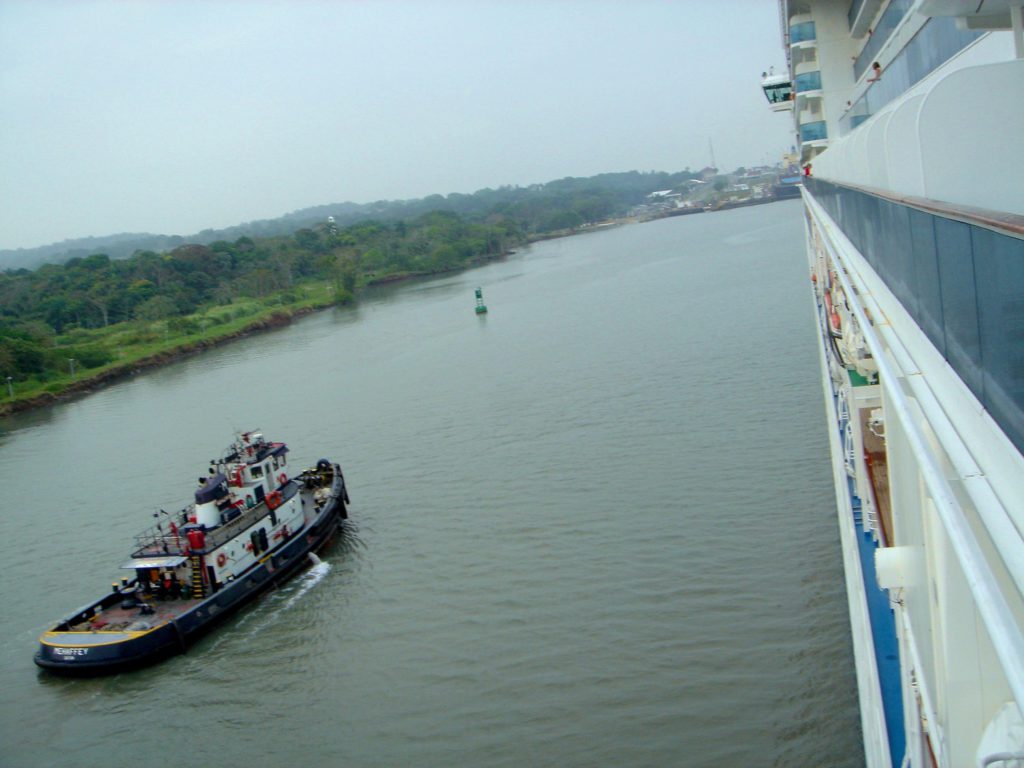
Today at dawn we entered the Panama Canal and passed through the three locks that elevate the ship 75 feet to the level of Gatun Lake. The canal is 50 miles long, and shaves 7800 miles off the trip from New York to San Francisco.
Excavation was begun by the French in the late 1800s, but abandoned after two attempts and the loss of 22,000 workers, mostly to malaria. The United States took over — literally — by backing a coup to create the country of Panama out of a chunk of Colombia, and completed the canal in 1914.
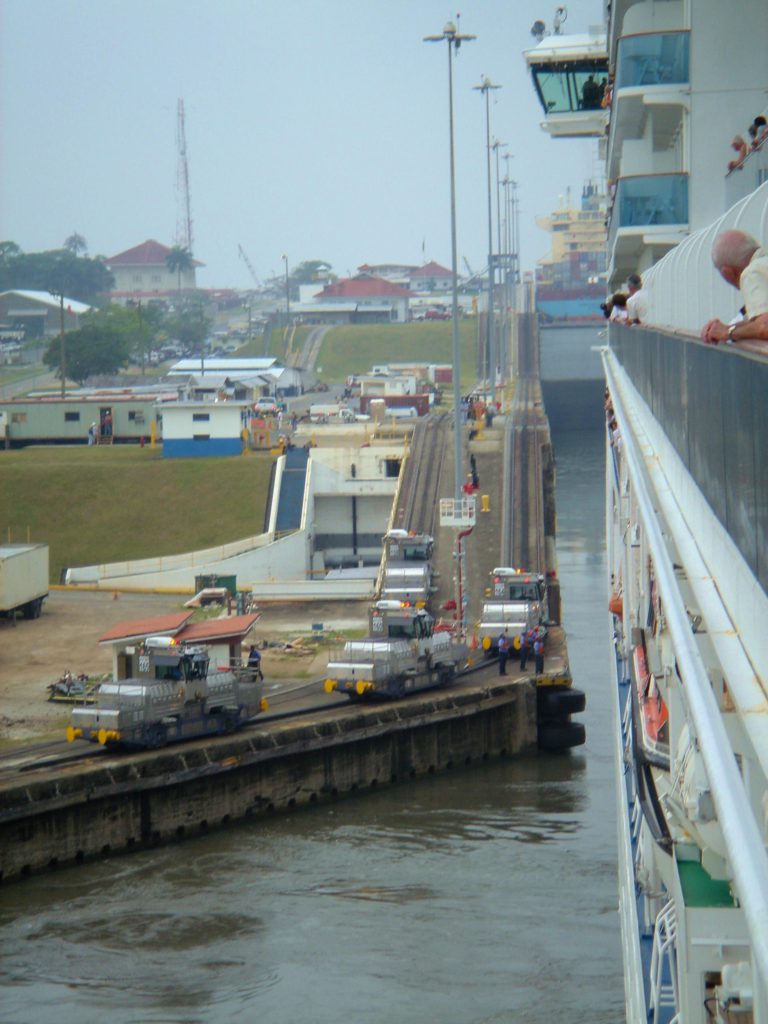
By design, our ship barely fits into the canal, with only a few feet to spare. The toll for freighters is based upon the ship’s displacement weight, ballast and load. (Heavier ships take longer in the locks, because there is less space for the water to flow past, which slows their passage. Cruise ships pay based upon capacity. This ship pays $226,000! (The lowest toll ever was 36 cents. Someone swam the canal in 1928. )
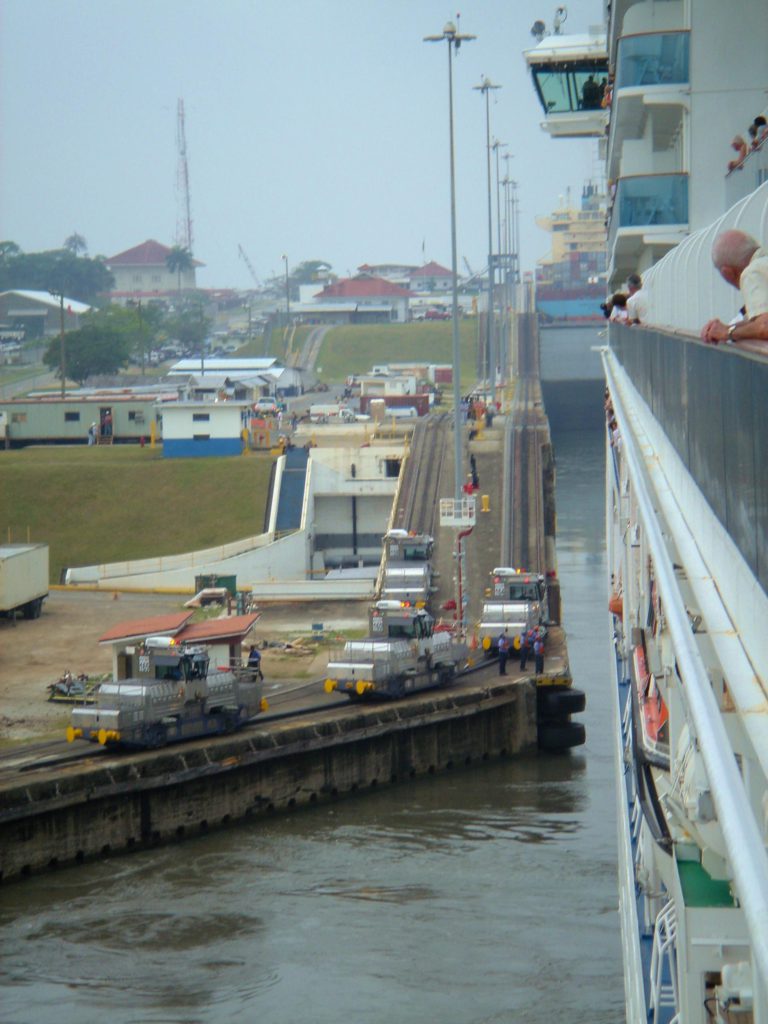
A special room service Champagne breakfast was served on our balcony, and Dani, who feels much better, joined us for the passage. It was a lot hotter than our Champagne breakfast at Glacier Bay!
After passing through the locks we spent the day cruising Gatun Lake. Some passengers tendered off for shore excursions, but we spent the day relaxing onboard.
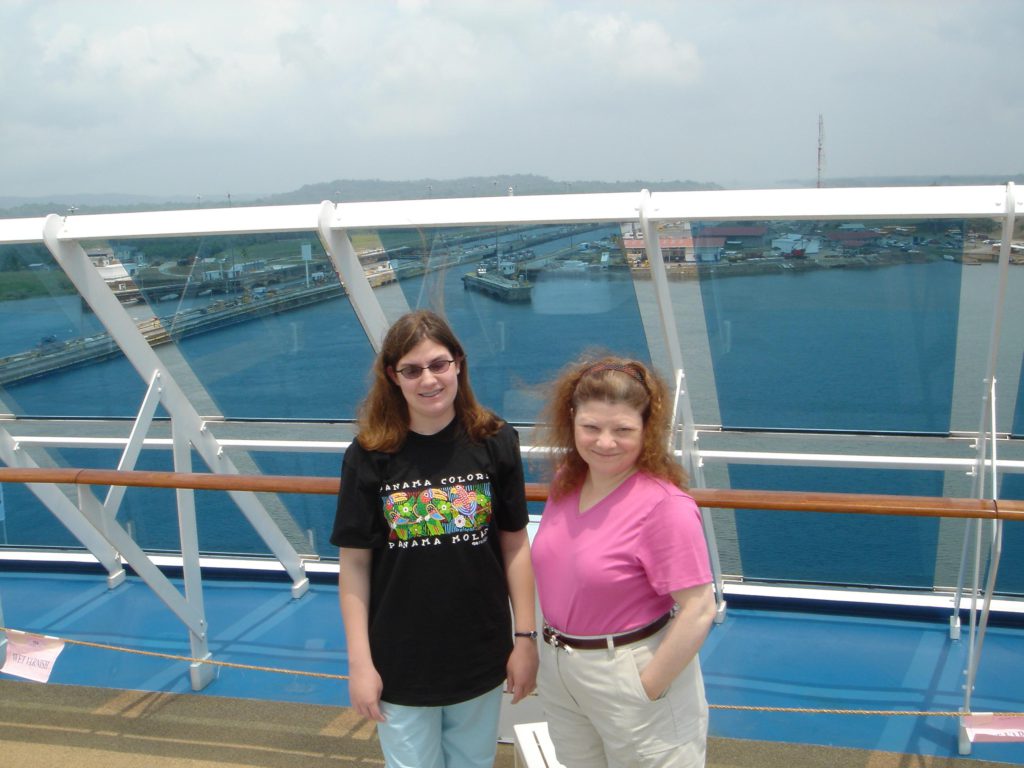
At noon the ship passed back through the Gatun Locks. I photographed the process from deck 15 forward. It’s amazing how fast the locks fill. The water in the 100,000 square foot chamber drops several inches per second at the beginning of the process. That’s a lot of water.

As we entered the final lock we decided to go down to the dining room for lunch. This proved to be a lucky decision, as the view from the atrium was truly bizarre. Somehow it hadn’t occurred to us that the lower decks were surrounded by concrete walls, just inches from the hull. The sight of that concrete sliding silently past, interrupted by the 50 foot steel gates with their riveted surface was like a scene from Myst.
In the afternoon we docked at Cristobal to pick up those who’d gone on shore excursions. Linda and I spent a few minutes walking through the arts and crap booths on the pier and she bought a couple of hand-painted feathers as souvenirs. One of the booths was staffed by members of a local tribe selling their baskets. The juxtaposition of bare- breasted, heavily tattooed natives and dowdy American tourists was quite amusing.
We set sail again at dusk, passing a mile-long line of ships — mostly freighters — their running lights glowing in the misty darkness, waiting for their turn to pass through the locks.
At Sea
Wednesday, March 23, 2005
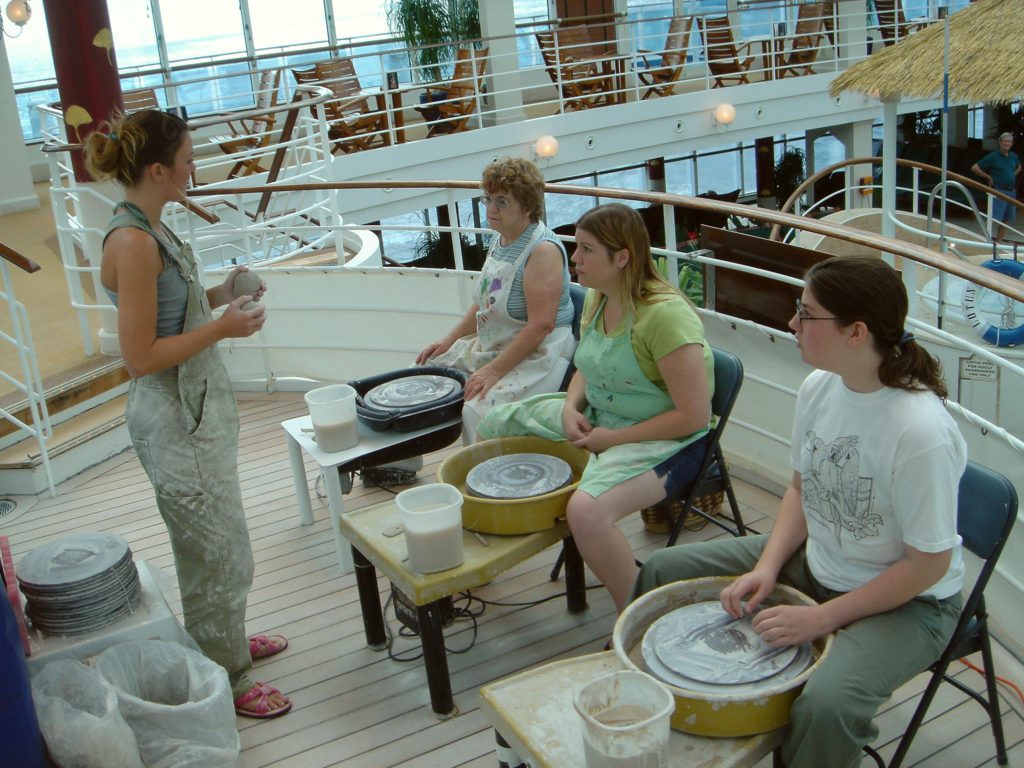
In the morning Dani had a pottery lesson up on deck 15. We originally became interested in pottery and ceramics because of our first trip on this ship, two years ago, which led to us getting our own kiln and wheel. We’ve gotten a lot of use out of the kiln, but the wheel proved a challenge. Now, having had some additional instruction, I think we’ll have more luck with it.
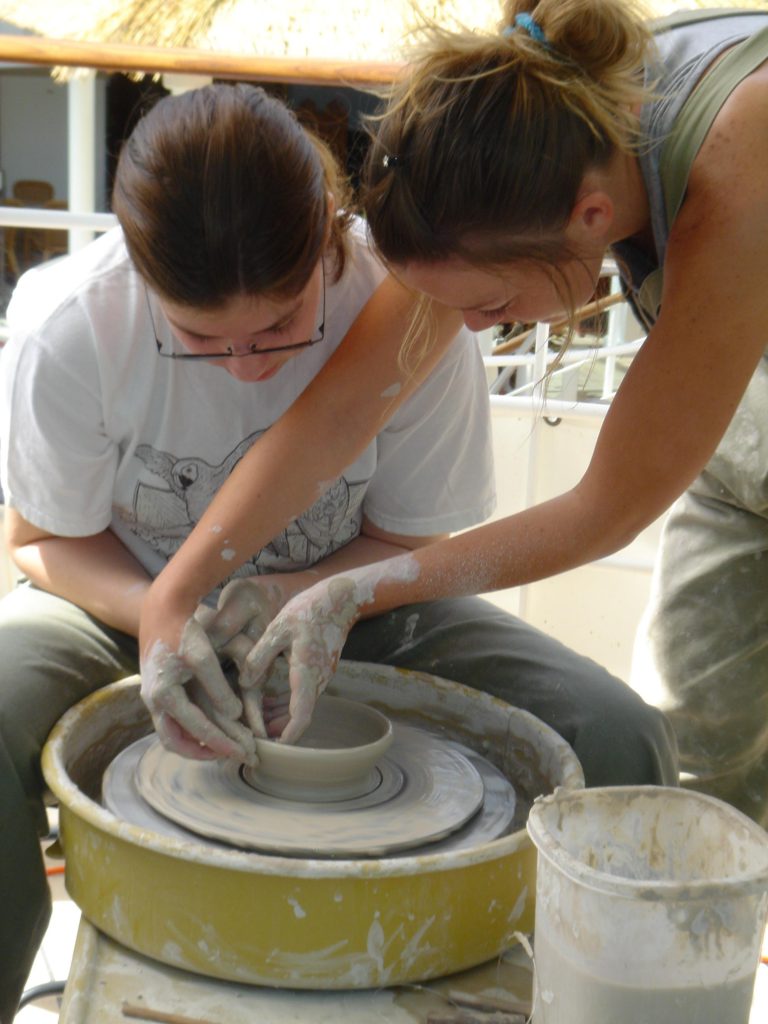
Ever been two a wine tasting and emerged a bit wobbly? Even before the afternoon “connoisseur’s” tasting at Sabatini there were seven-foot swells! Although the ship does a good job of minimizing the roll using active stabilizers, it can still be a challenge navigating the corridors. Especially after seven wines.
Dinner after dinner, the staff of the Bordeaux Dining Room has exceeded our expectations. The special attention lavished upon us by Head Waiters Godwin and Thomas, and the superlative attention and fun loving spirit of our waiter, Jorge, have been the highlight of the cruise. Princess seems to have upgraded their food, as well. Although some dishes are still middle-brow cruise food, the escargot I had the other night was the best I’ve ever tasted.
Grand Cayman
Thursday, March 24, 2005
After a hiatus following her soar throat, Dani’s cold has moved to her head. Unfortunately she didn’t feel well enough for the sting ray shore excursion. Linda accompanied me, only after being guaranteed she wouldn’t have to actually touch the water.
The Cayman Islands were devastated by last summer’s hurricane. 95% of the buildings were damaged, and we passed many blocks where nothing was left standing. They’re working hard to rebuild the dock area, and there is luxury hotel and condo construction everywhere. But it’s hard to imagine what it would be like on this island during even a ten-foot storm surge. It simply wouldn’t be here.
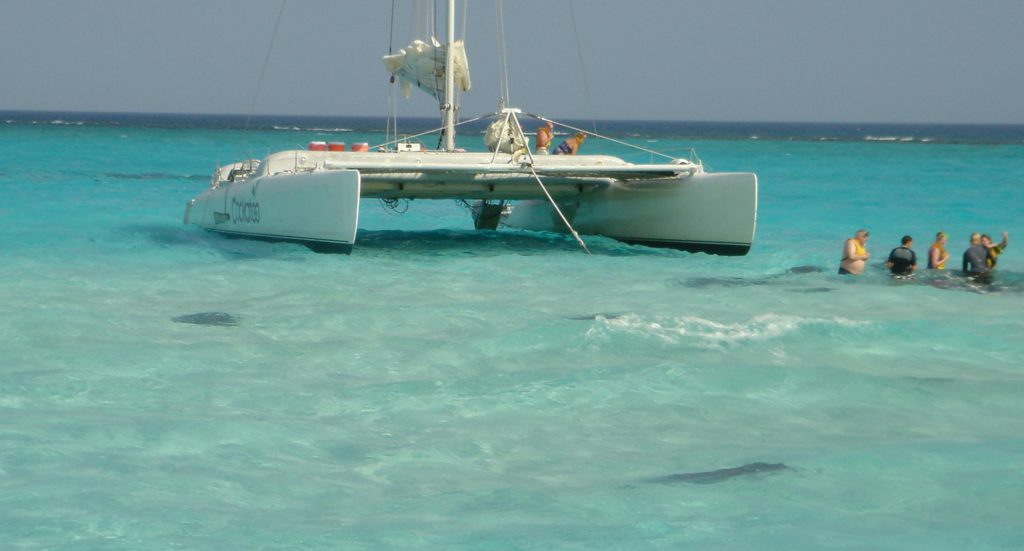
I must say it was even more fun than I expected. The rays swirled around us, nuzzling us occasionally like dogs begging for table scraps. Feeding them was a lot like stuffing squid into a vacuum cleaner. They feel quite silky, and are neither aggressive nor skittish.
As you can see, the bargain-priced underwater camera housing I got for my little Sony T1 digital camera worked great.
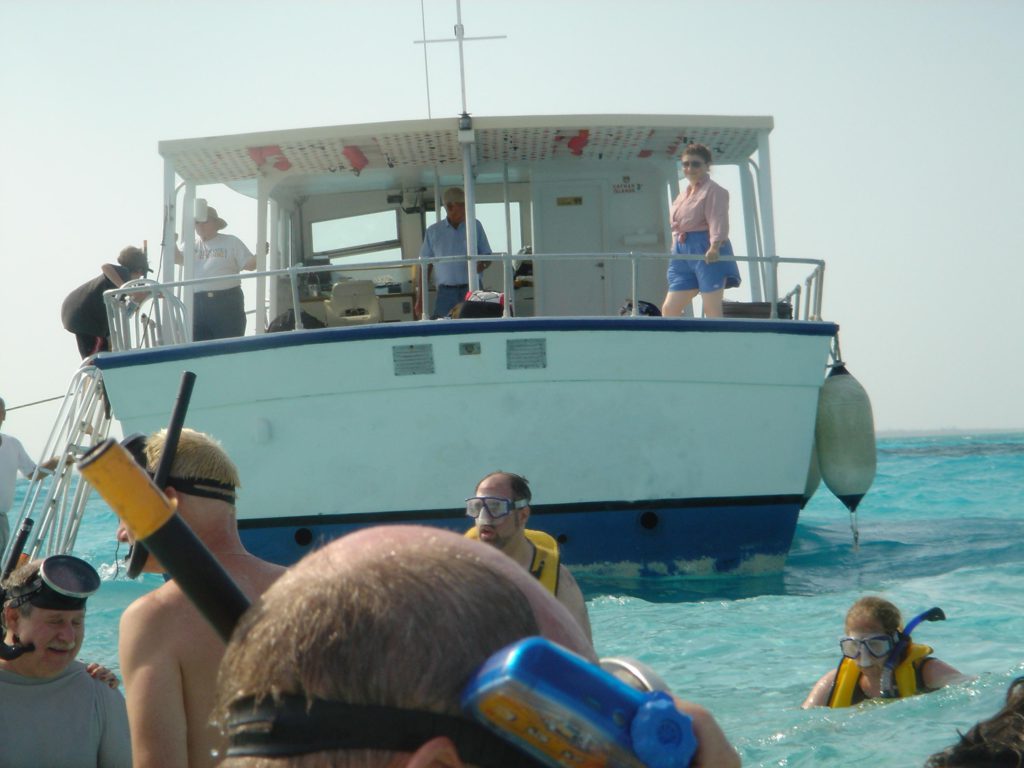
Our second stop, for snorkeling, was brief. There was a small amount of chop and a medium current. The combination proved too much for the large percentage of inexperienced snorkelers on the trip, and they called everyone back in after about ten minutes. It didn’t really matter, though. Although billed as the world’s second biggest reef, it was more of a sandy place with some fan coral. The sights couldn’t compare to Australia’s Great Barrier Reef.
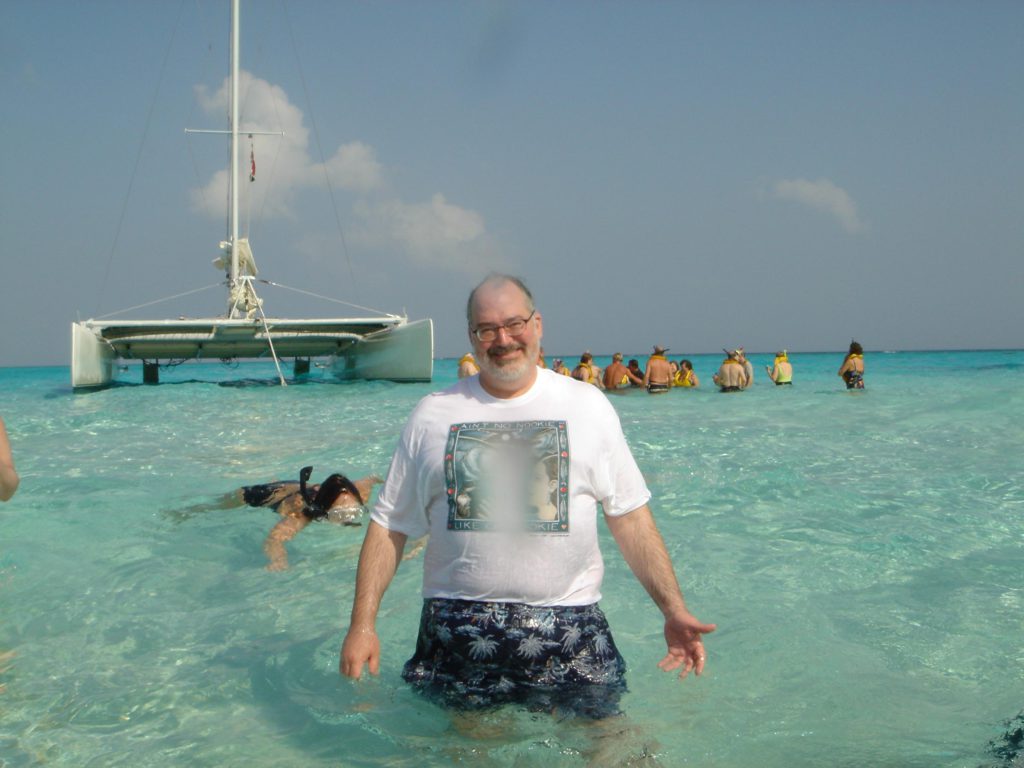
Cozumel, Mexico
Friday, March 25, 2005
Today is our 27th anniversary. We’ve never been on a cruise before during an anniversary or birthday. We got the traditional balloon outside the cabin door. Whoopee.
Linda woke with a bit of a sore throat, but she gamely went off with Dani to go horse-butt riding. I headed for my Atlantis submarine ride.
Cozumel was a tiny backwater until 1959 when Jacques Cousteau introduced the world to it’s beautiful diving condition. Now it’s a bustling, touristy resort city that has done an excellent job of keeping itself environmentally appealing. Even waiting for my tour I could see parrot fish nibbling the coral in the aquamarine water beneath the dock.
They put our tour group onto a procession of taxis (there are about a million of them in Cozumel) an we sped about 5 miles down the coast near the other cruise ship pier (there are at least four in port today) to the Atlantis office. This is a first class operation, with modern, split level building, waiting room and dock. A boat transported us about 20 minutes farther down the coast to the sub.
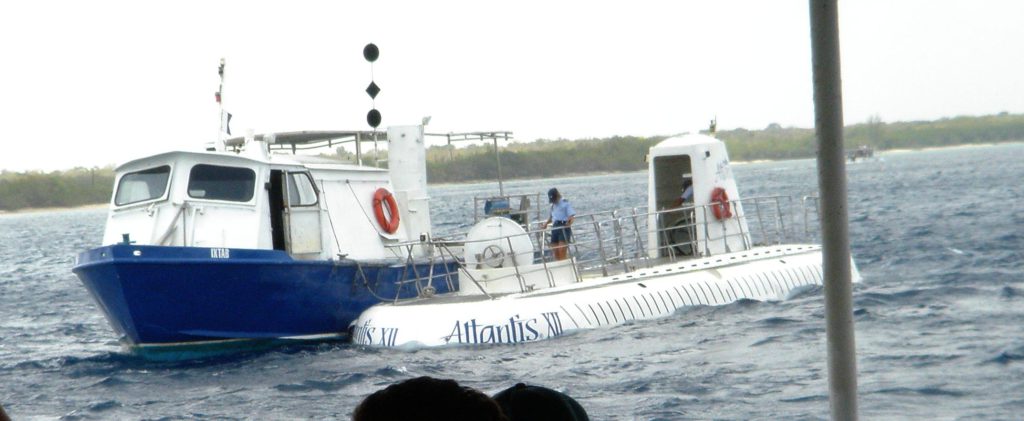
Atlantis is a true submarine, unlike the semi-subs I’ve been in before. It weighs 80 tons, carries 48 to a depth of up to 150 feet, and can stay underwater for 24 hours. Fortunately our trip was much shorter than that.
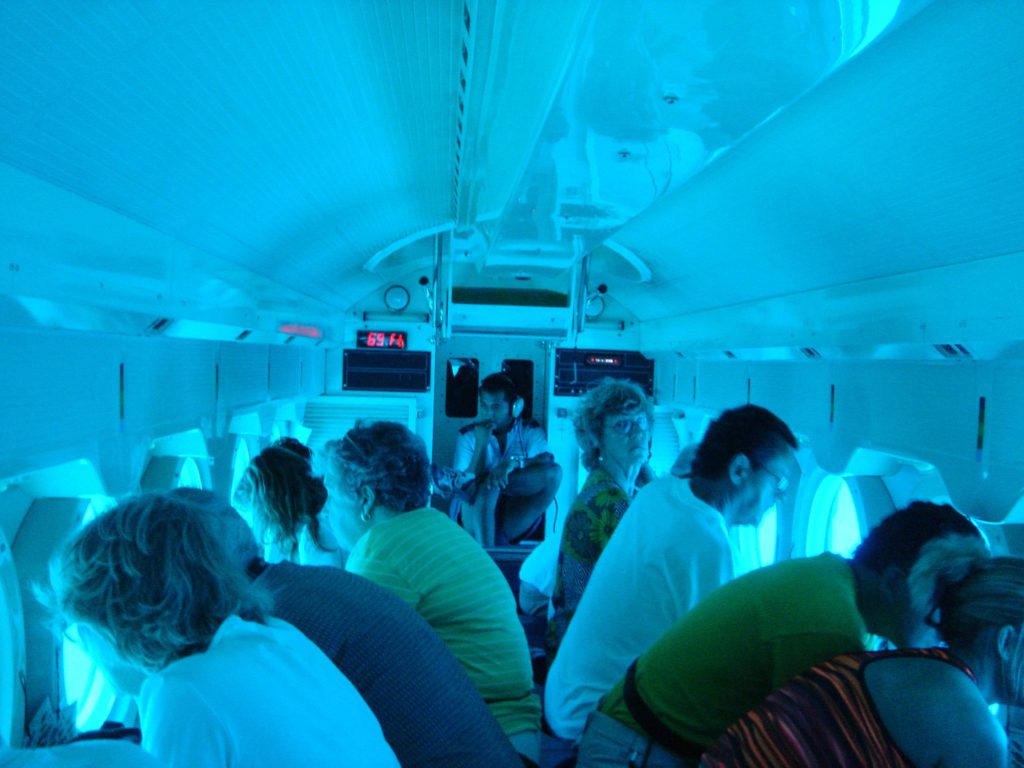
Onboard the operation continued to be quite professional, with the pilot’s chatter piper into the passenger area as he talked with the control ship topside. There was also a first mate and a tour guide, and all the comments were made in both English and. . . well, German.
We descended rapidly to about 70 feet and cruised the reef, spotting lots of smaller fish, one shark and a lobster. Because there is no red light below about ten feet, I have to honestly say that the sights from the semi sub are probably as good or better, but it was neat to be in a real submarine. At one point we passed a school of scuba divers, and it reminded me that a sub is no substitute for the real thing!
Our maximum depth was 135, at which point we dangled over the sharp edge of the the “wall”, where the continental shelf ends and the ocean floor suddenly drops 3000 feet. Fortunately, no leaks.
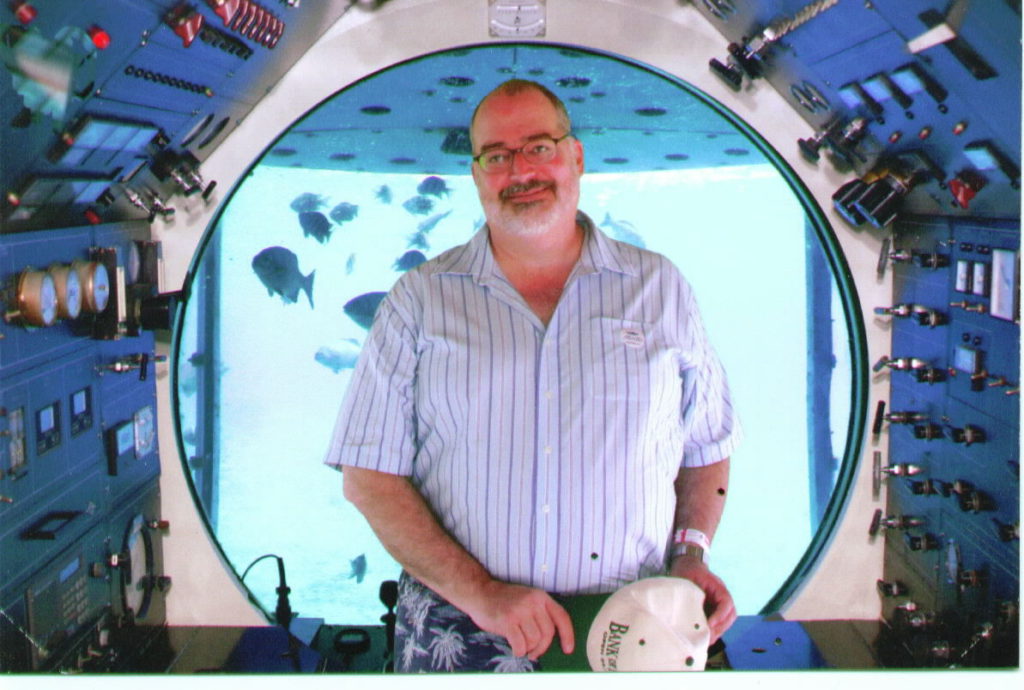
The return process began by blowing ballast and ended by hailing a taxi.
Meanwhile, Linda and Dani were in the countryside, where Dani was demonstrating that she’s an excellent horsewoman, and Linda was demonstrating that Dani is an excellent horsewoman. There were many iguanas on the trail, some up to several feet long. Surprisingly, the horses ignored them.
After Linda had a chance to hose off back at our cabin, she and I ventured out for an anniversary lunch. We had the name of a good restaurant, but we decided not to risk the logistics of finding a taxi back to the ship and instead went to Mis Charros, one of the tourist places along the waterfront.
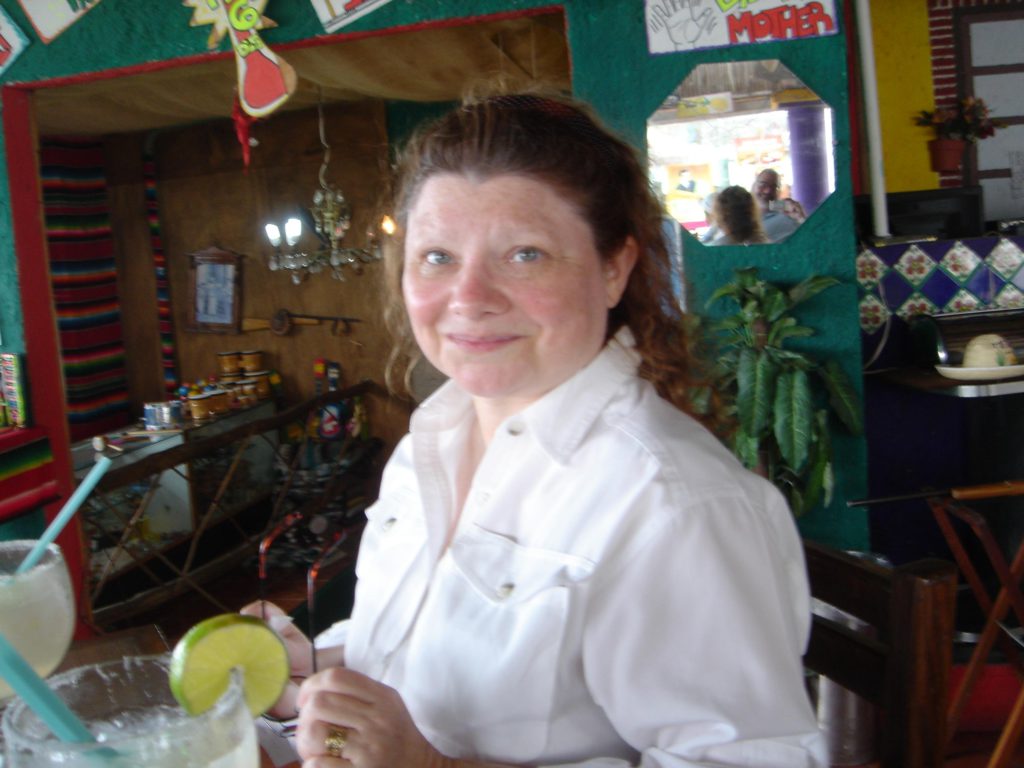
Mis Charros claims to be 100 years old, and there’s certainly plenty of evidence there hasn’t been any maintenance for at least that long. We had excellent magaritas, guacamole and chips, and mediocre everything else. at Epcot’s Mexico pavilion there is a scene on the boat ride where vendors race along beside the boat trying to sell you stuff. That’s what this restaurant was like, except we couldn’t escape in a boat.
After finishing her ceramic painting, Dani visited the ship’s doctor for some antibiotics to make sure she avoids her cold turning into bronchitis. She was impressed with the ship’s medical staff and facility. The prescriptions come from Ireland, so they are reasonably priced and the inserts are actually informative (i. e. not written by lawyers).
We received the sad new that our wonderful waiter, Jorge, lost his niece. He left the ship in Cozumel to fly home, and we won’t see him again. We’ll leave a thank you note and tip for him with his fiance.
Belize
Saturday, March 26, 2005
A popular T-shirt here reads, “Where the Hell is Belize?”
It’s between Mexico and Guatemala, and until independence from England in 1981 it was called British Honduras. It’s the smallest country in Central America, and the only English-speaking one. The capital, Belize City, has 70,000 residents, more than a fourth of the country.
Since Belize is a former British colony, it was surprising to find the cars driving on the right side of the street. Apparently they changed over, sometime in the early 1960s. That must have been an exciting week.
Even though Belize is a really interesting port, not many cruise ships visit yet, because of the logistics. We anchored seven-miles off shore, and the tendering was a VERY slow operation, so our tour was running an hour behind time. Because it involved water, Linda chickened out at the last minute. Just as well, as it turned out, because — although Dani and I loved it — she would have hated it.
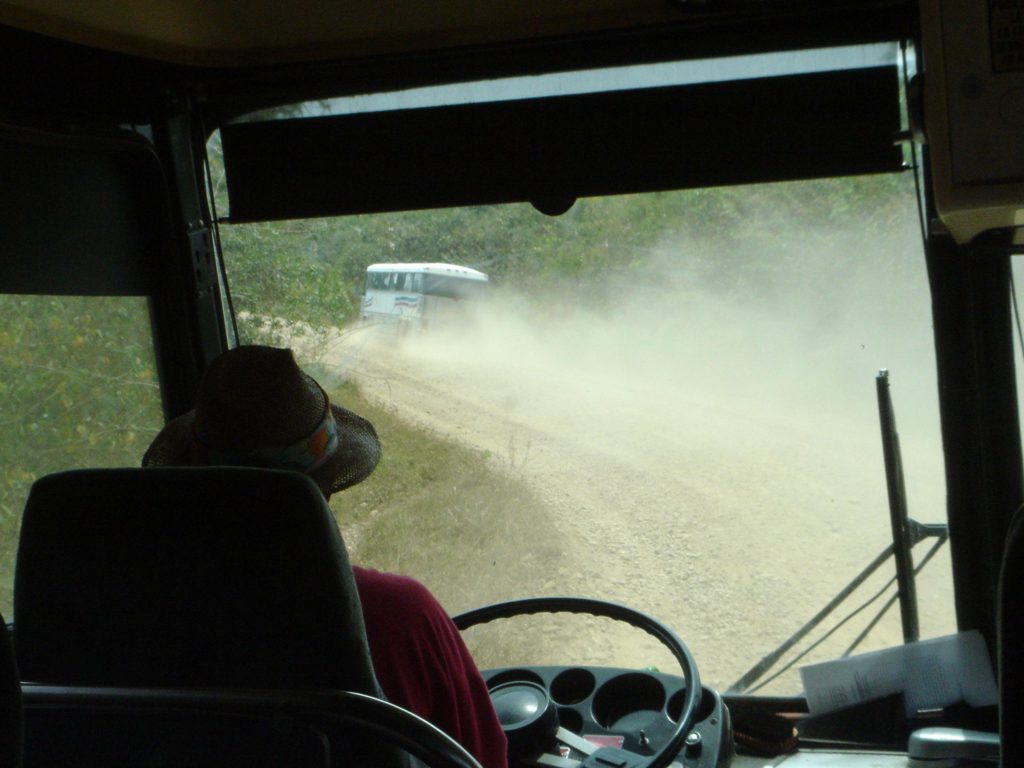
Our journey began with an hour bus ride through a surprisingly ramshackle town, then countryside consisting of mostly scrub brush. The final seven miles were unpaved road — very dusty unpaved road. This was definitely not tropical rainforest.
At the end of the road we hiked over a hill to a lodge were we were loaded up with inner tubes, life jackets and “head” lights. Then, laden with all this stuff, we made a forced march through the jungle for half an hour in 97 degree weather (this was not the highlight of the experience).
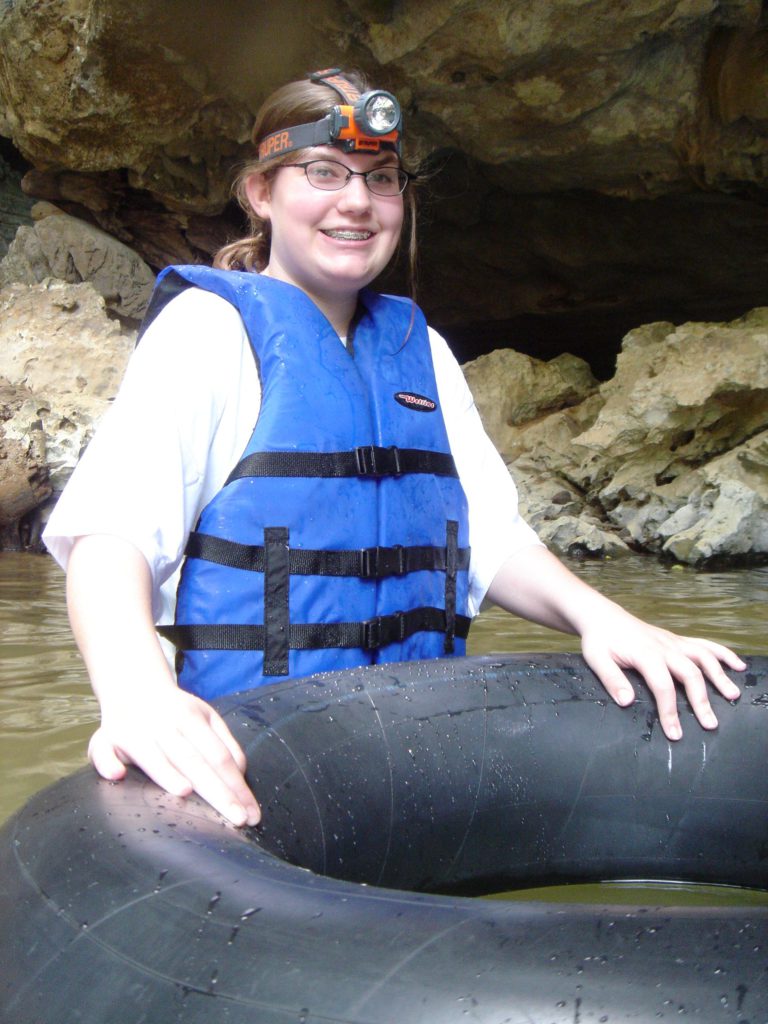
Few things in life have felt as good as plunging into the river at the end of that hike.
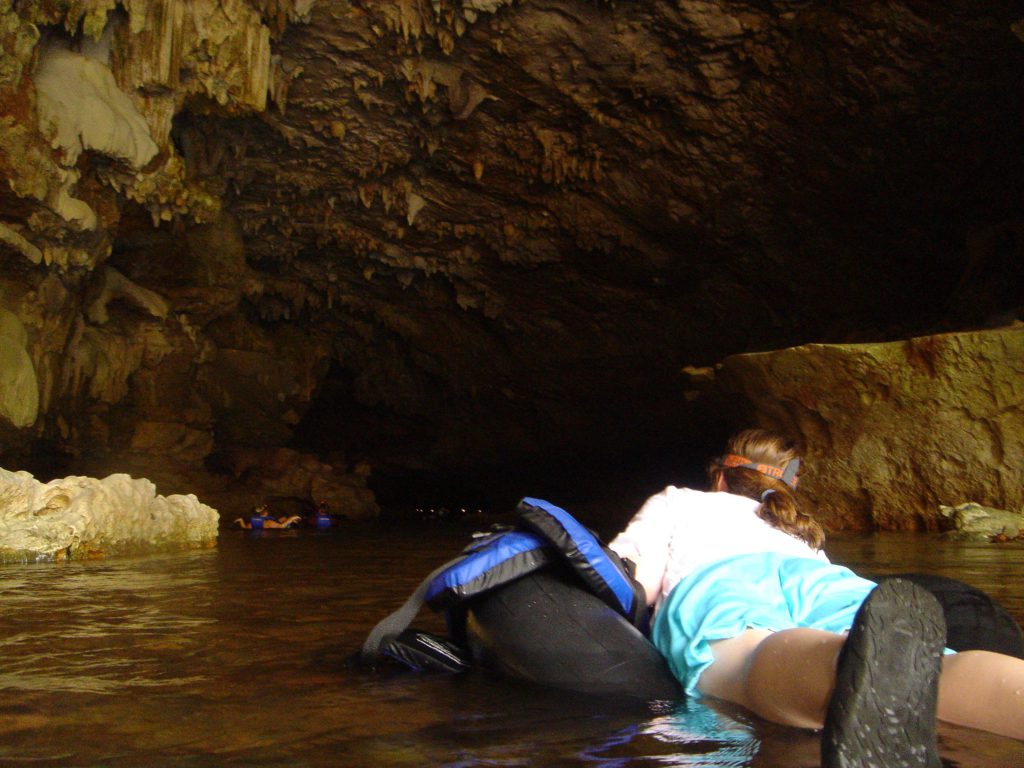
After our body temperatures had returned to two digits, we began our hour-long float through the cave. It was about twenty feet high in most places, and about fifty feet wide. After the first turn the darkness descended quickly, but we could see wherever we looked because of our head lights. Stalactites and other formations clung in curtains, mostly along the sides. Overhead were holes where bats hung, although we couldn’t really see them clearly. At places it was too shallow to float and we had to walk, but most of the time we chose to swim, as it was easier to maneuver. We would have liked a little more time to explore, but because of the lateness of our start we had to hurry.
At the end of our float we found ourselves back where we’d picked up our gear. The lodge served a delicious al fresco lunch of curried chicken breast, rice and beans with all the habanera sauce we could eat. The ice cold bottle of Coke tasted pretty good, too. Then it was time to retrace our steps back to the ship for an afternoon departure.
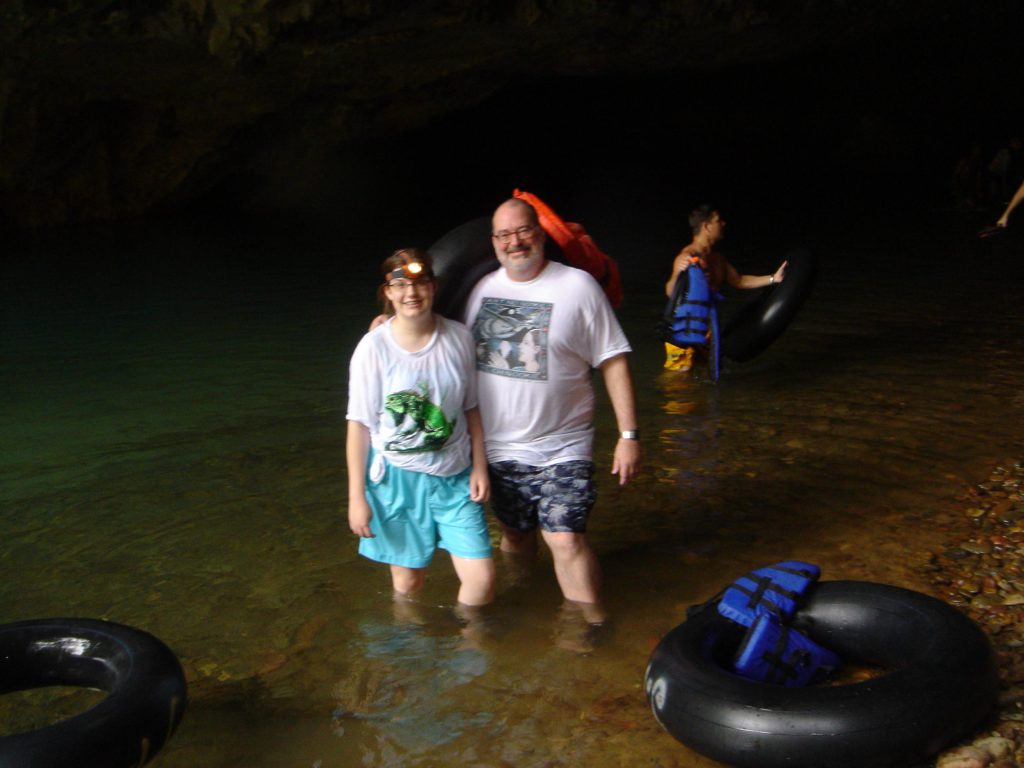
At Sea
Easter Sunday, March 27, 2005
Our first holiday at sea in ten cruises. They decorated the atrium with giant eggs.
I was reflecting on our past cruises:
- The Norway (formerly The France), US Virgin Islands
- Big Red Boat, Nassau
- Costa Victoria, Key West
- Voyager of the Seas, Jamaica
- Explorer of the Seas, San Juan
- Norwegian Dream, Baltic
- Coral Princess, Alaska
- Disney, Nassau
- Star Princess, Mediterranean
- Coral Princess, Panama Canal
This was certainly the best dining room experience we’ve had on any of them, and also the best Caribbean itinerary. The Baltic is still the one with the most interesting ports, Alaska had the best scenery, and the Mediterranean was the most educational. I’d enjoy a repeat of any of those, but you’d have to shoot me to get me on Costa again.
Ft. Lauderdale
Monday, March 28, 2005
It seems strange to be traveling home on a Monday. I had a nice breakfast in the dining room, my first chance to talk with some of the other passengers. There seemed to be as many different impressions of the cruise and the ship as there were passengers, from rapturous to grouchy. Perhaps we each bring our own expectations with us, wherever we travel.
Linda, Dani and I relaxed in the Universe lounge until 9:30, when our disembarkation color was called and we easily collected out baggage, cleared customs, ransomed our car from the garage and headed home.
Things to remember for next time
A starboard cabin would be better in every single port. I was pretty sure this would be the case (come to think of it, that almost always seems to be) but had no choice.
The Coral Princess remains our favorite ship, because of the uncrowded feel to its public spaces and its superb dining staff.
Next time I’ll approach the head waiter in the open seating dining room before dinner on the first night, and see if I can reserve a table with “the best waiter” for 8pm throughout the cruise.
Punta Gorda 2004
Because of Windermere Prep’s financial troubles, the scheduled American Adventures trip to the Grand Canyon was replaced with a less expensive three-day jaunt to Punta Gorda, south of Sarasota on Florida’s west coast. The trip actually turned out to be quite fun and possibly more educational than the original plan.
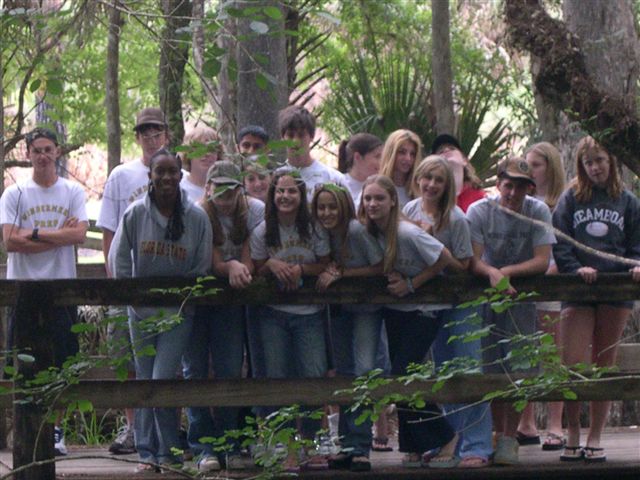
Our first stop was the Babcock Ranch, a huge ranch and nature preserve with lots of Florida wildlife.
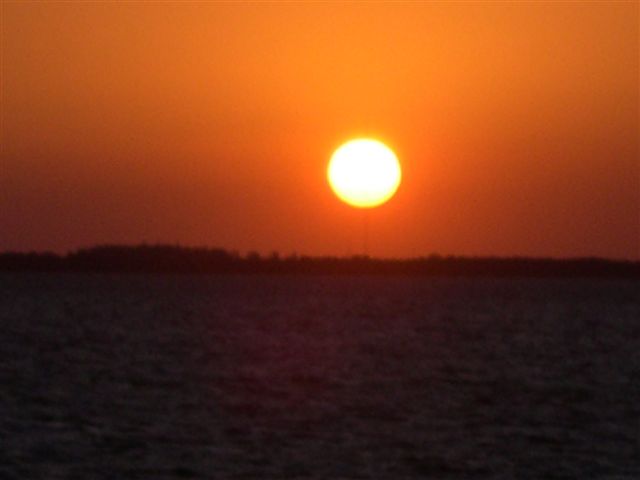
That evening we went on a sunset cruise in Punta Gorda bay.
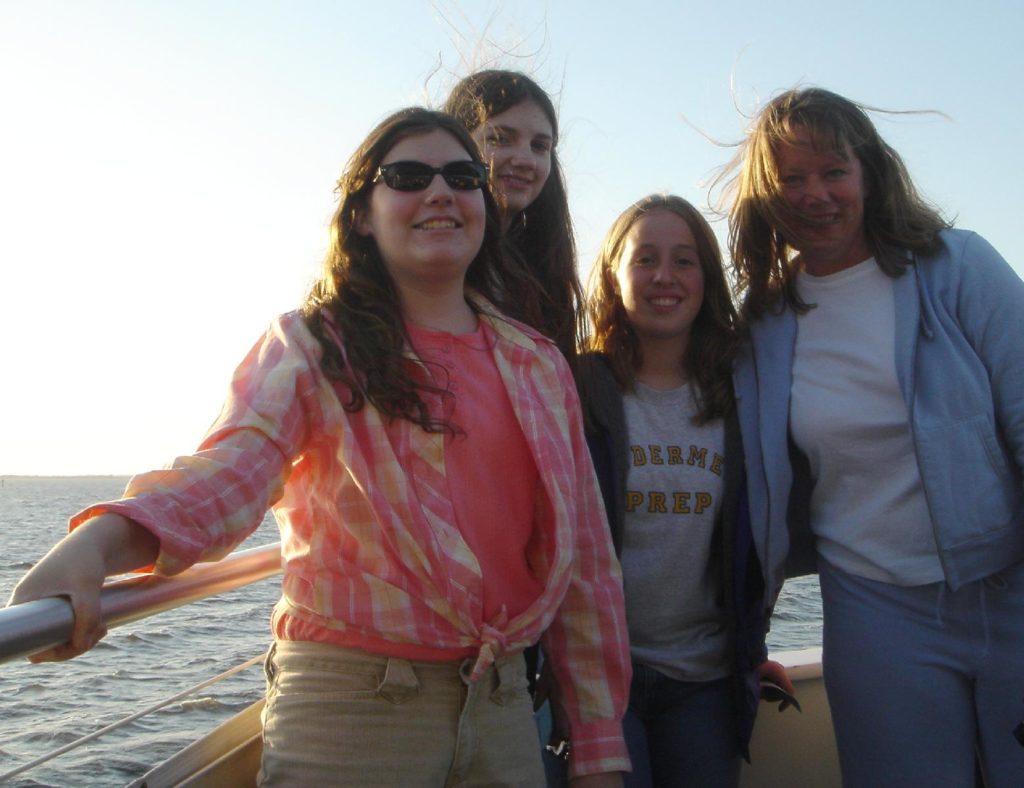
Dani, Caitlin, Christina and Mary Beth Davies, their Language Arts teacher and the trip organizer.

This is one of my favorite photos of the two of us.
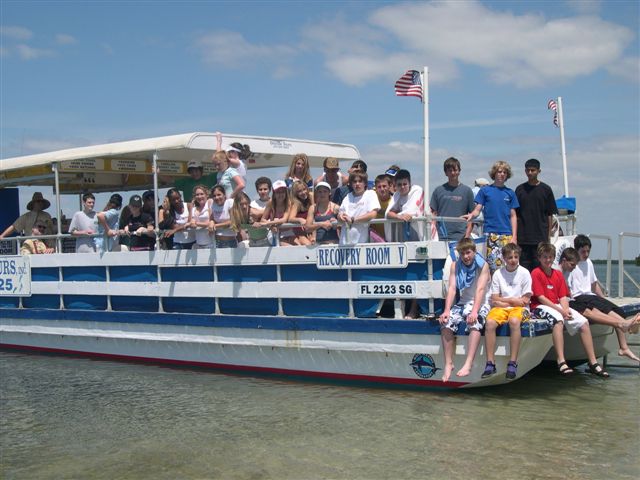
The second day we went on a marine biology trip to an island in the bay, followed by a kayaking excursion.
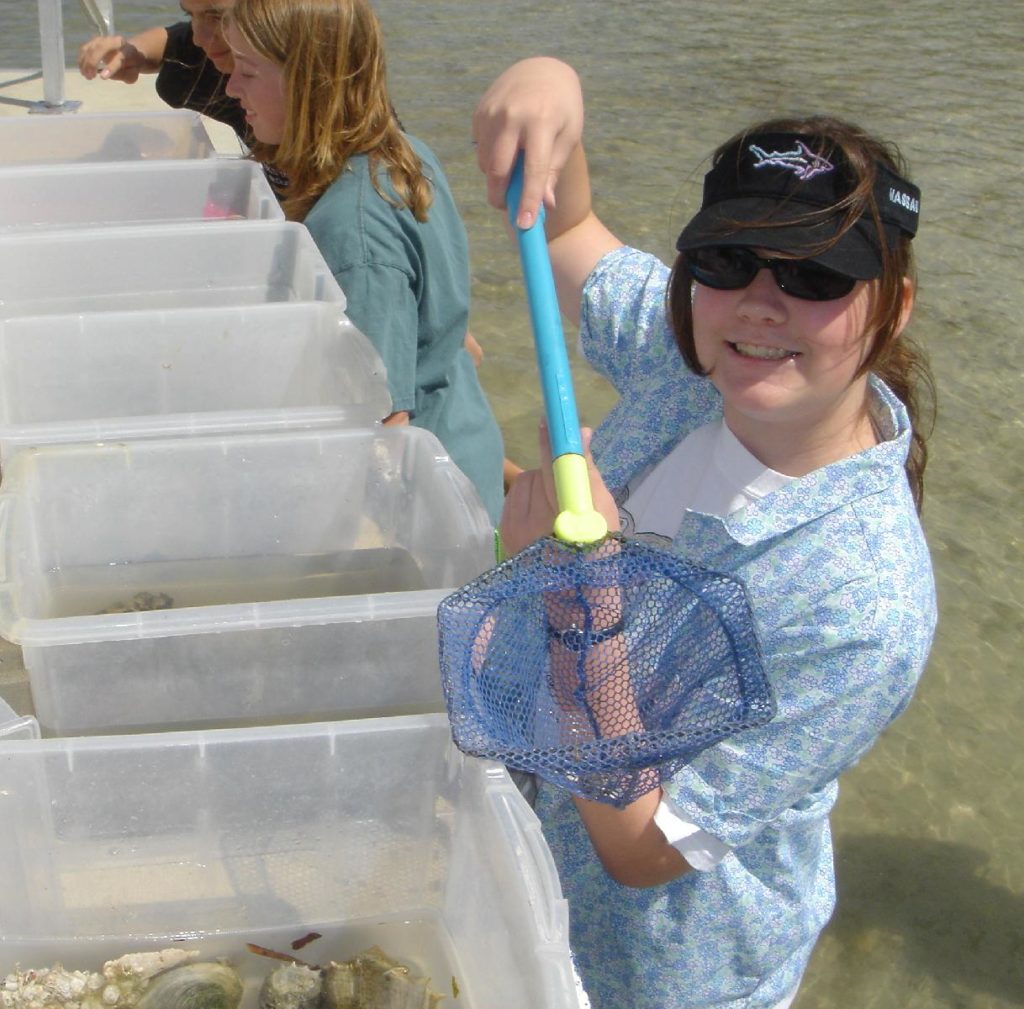
It was amazing how much stuff they found in the shallow water along the shore — including a eight inch wide horseshoe crab.
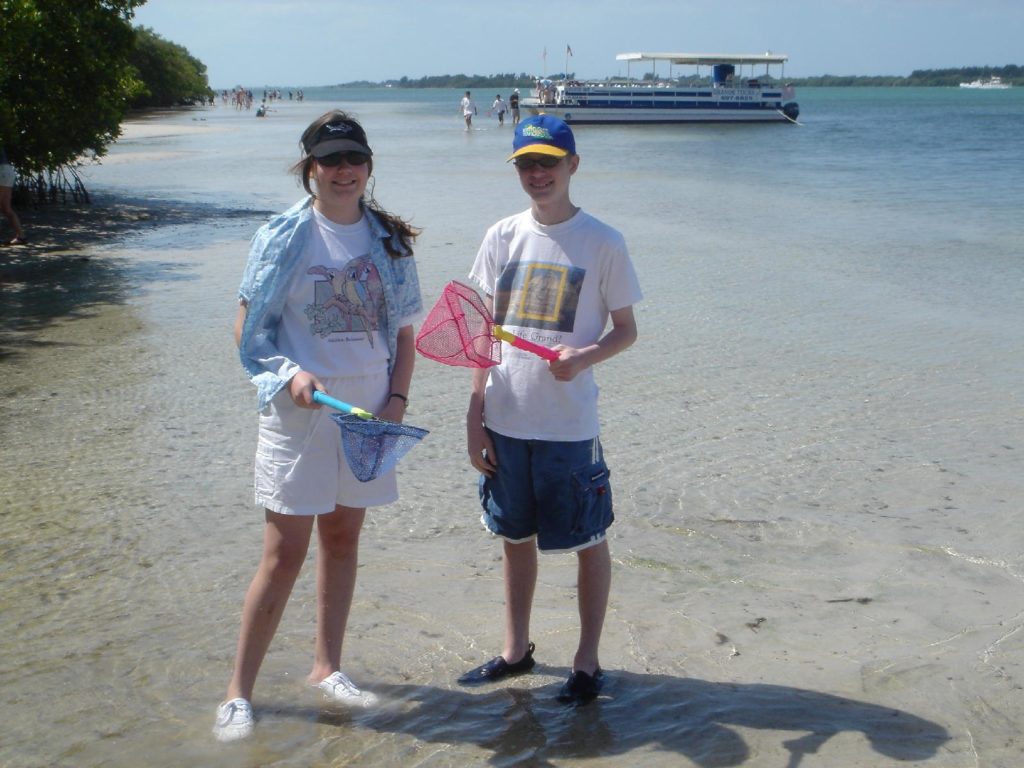
Dani and her friend Cory.

The third day was spent at the beach. Here is the whole group, nearly all of Windermere Prep’s seventh and eighth grade classes.
Alaska 2003
July 31 – August 14, 2003
Thursday, July 31, 2003
Orlando to Vancouver
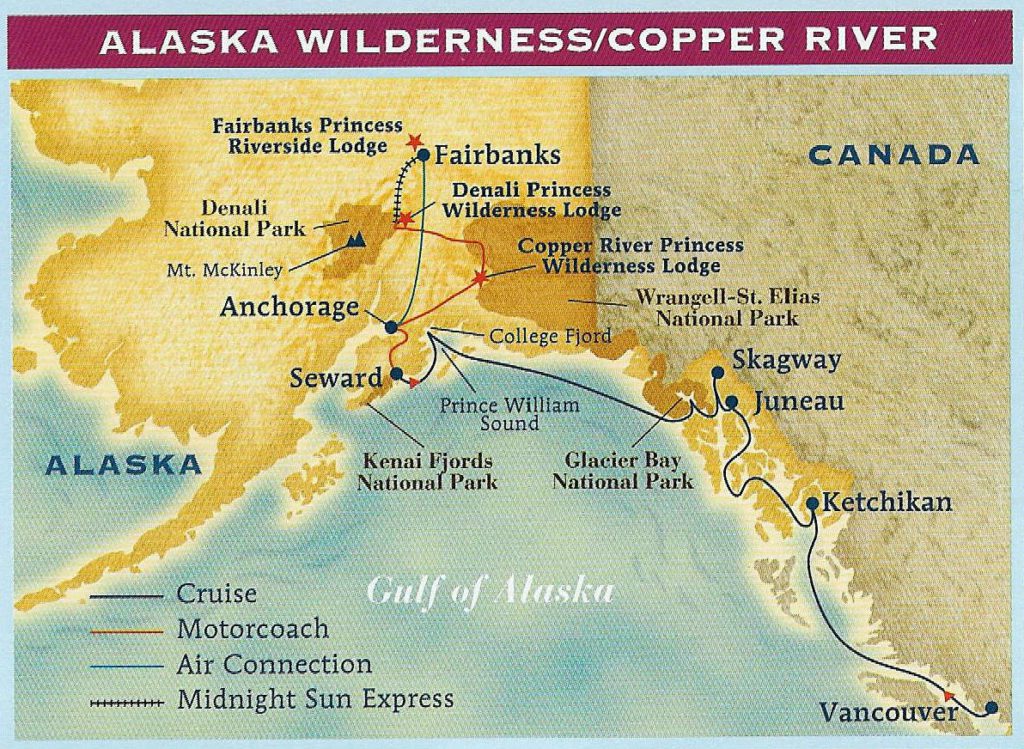
In our continuing search for cool — literally — places to visit during the hot Orlando summer, we headed for Alaska this year. We invited our friend from Australia, Pamela Collins, to join us for a week of cruising and a week of land touring. For Pamela it would be a chance to warm up from the Australian winter. It’s a long way from Orlando to Vancouver, and we didn’t choose the most efficient route. Up at 5 AM, we had two comfortable Delta flights in free first class, connecting in Salt Lake City and arriving in Seattle around noon West coast time. It was a lot faster than the Dallas connection I once did. But we’d learned it was impossible to rent a car to drive to Vancouver — our original plan — so we caught the Quick Shuttle at the airport. After clearing Canadian customs and Immigration (surprisingly rude Canadian agents!) at the border, the bus dropped us right at our hotel, the Pan Pacific — convenient, but it added another five hours of travel to the already long trip. Total door-to-door travel time: 16 hours. But I guess we can’t complain. . . Pamela had to come by way of Tokyo, taking two days to get there!
It was a challenge packing for the warmth of Vancouver, the cold weather up on the glaciers, plus formal nights on the ship and a week of backcountry trekking. Nine suitcases and three carry-ons told the story – thank Heaven for Princess porters.
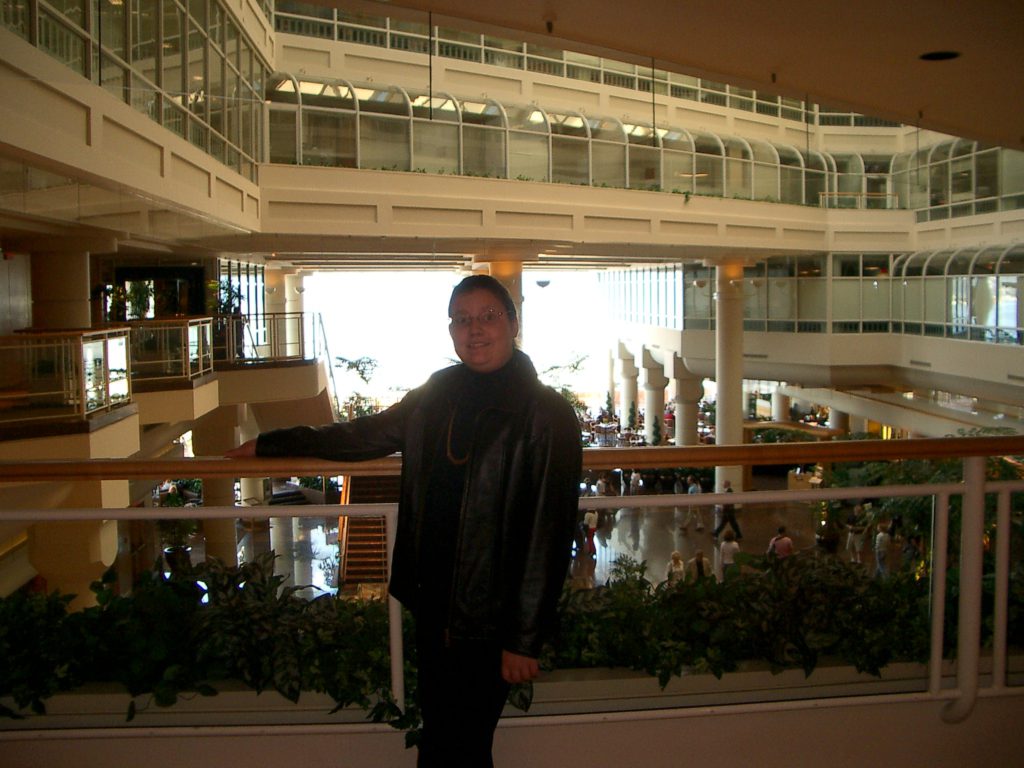
The Pan Pacific is a delightful hotel. It was constructed for Expo ’86 (which Linda worked on) and it on the cruise ship pier. We met Pamela in the lobby and got reacquainted during a lovely dinner at the Five Sails restaurant.
Friday, August 1, 2003 – Vancouver
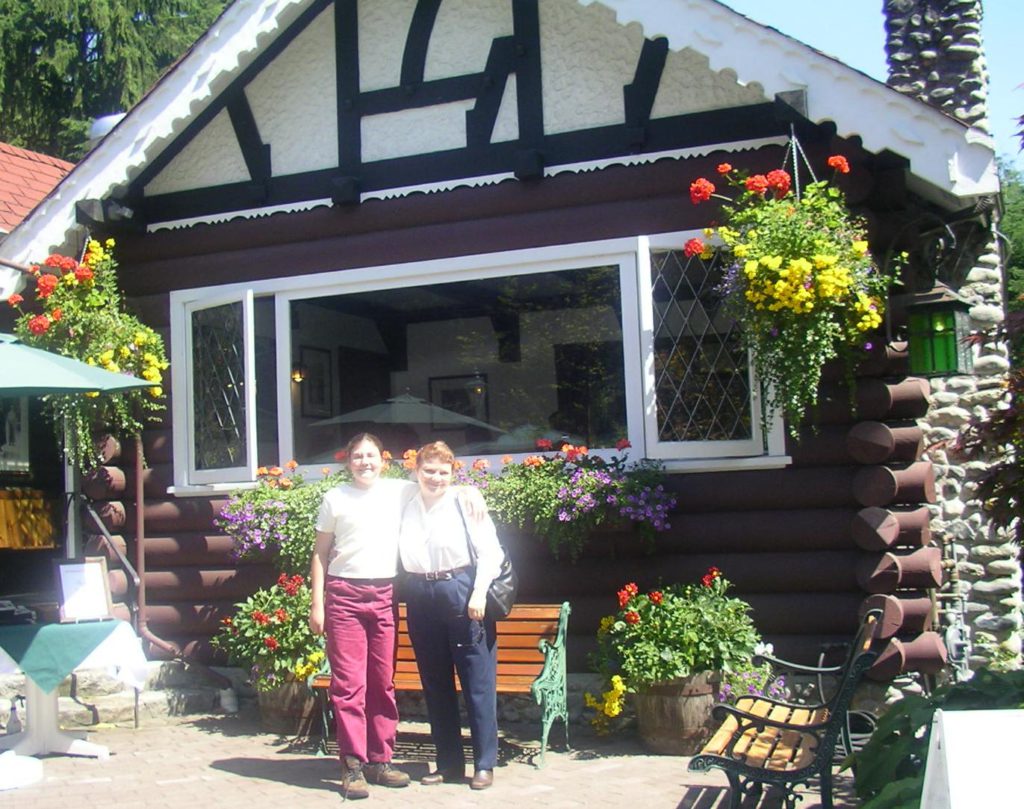
Friday was our free day in Vancouver. We made the most of it, renting a Jeep Grand Cherokee just like mine at home and touring Stanley Park. Then we headed across the Lion’s Gate Bride for North Vancouver where we had lunch at nice cafe near the Capilano Suspension Bridge.
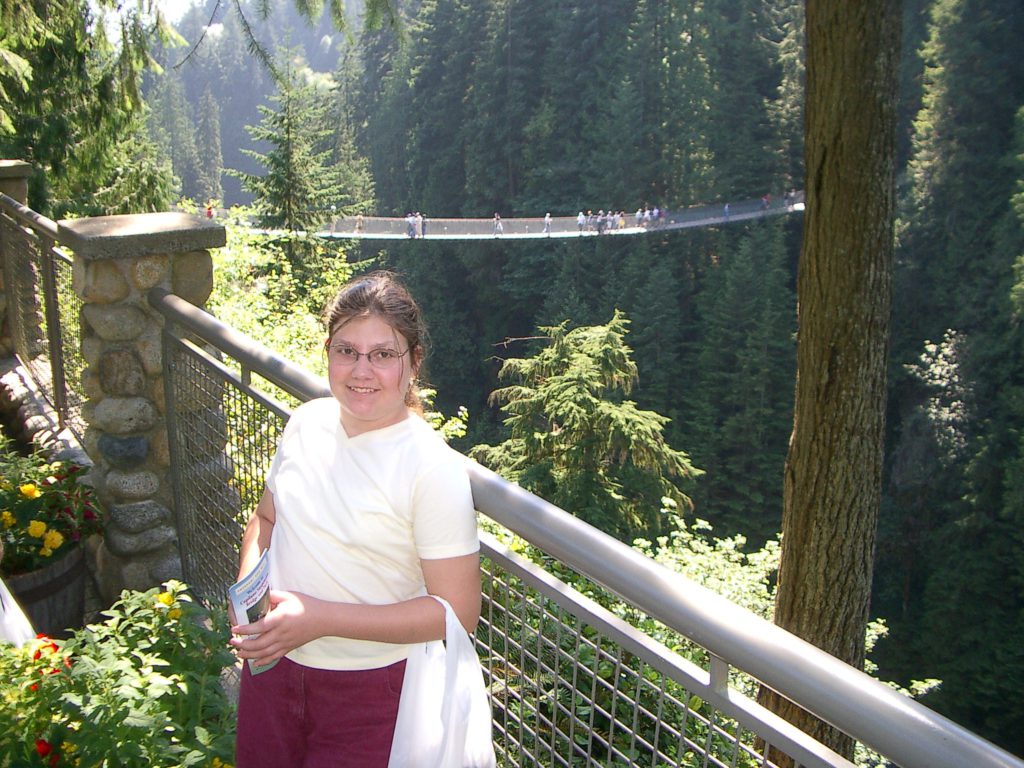
Afterwards we ventured onto the bridge, and crossed over the 300-foot-deep gorge.
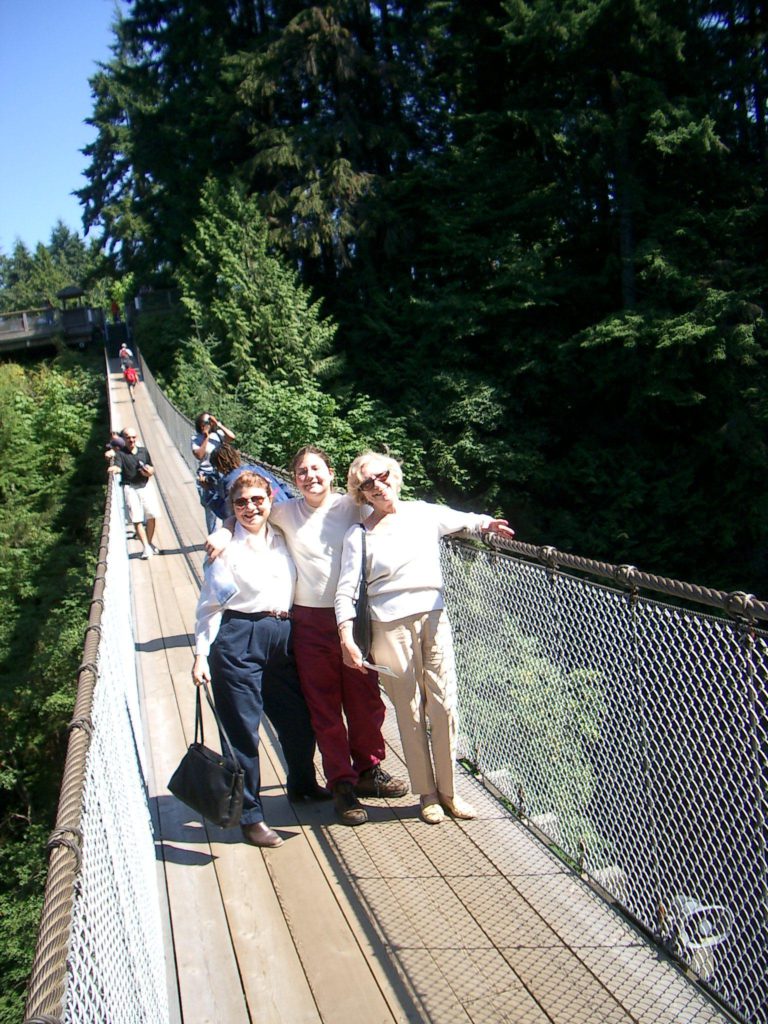
Pamela was very brave and overcame her fear of heights to join us. The bridge was originally built in 1886 by Mr. Capilano, who purchased the surrounding 6000 acres and was either looking for a way to get around his property or wanted to create a tourist attraction. It has certainly turned into the later, with shows and exhibits on both sides of the canyon. They also are constructing a tree walk in the forest on the far side.
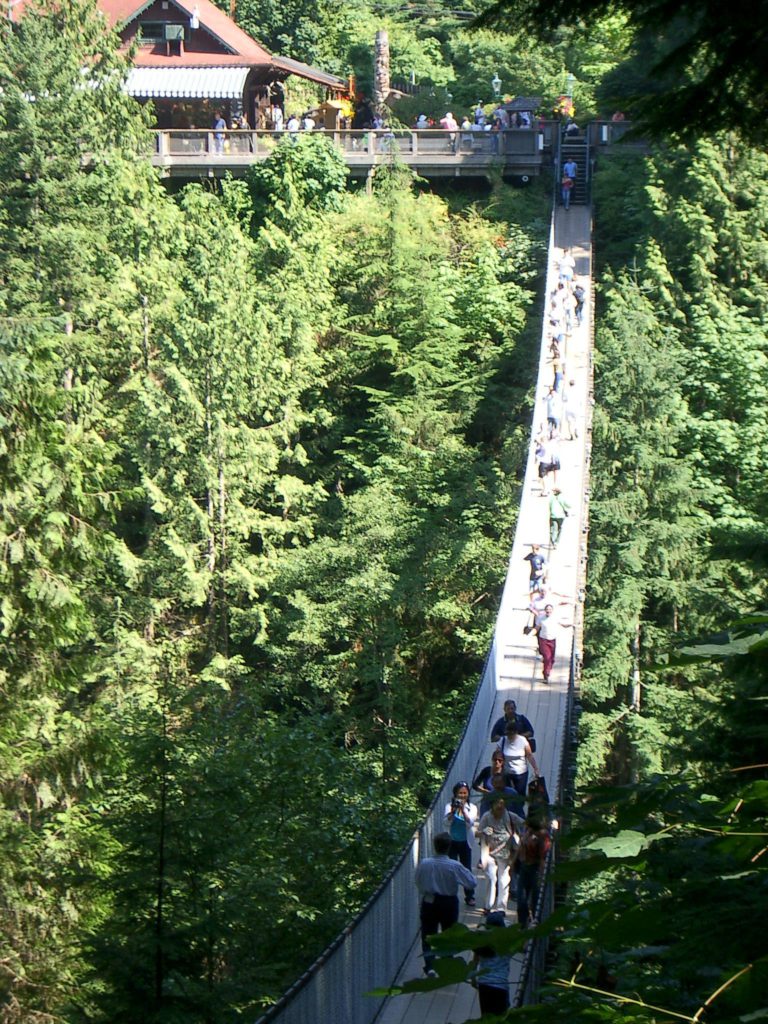
Linda and I walked the bridge in 1986, but our recollection is that then it was just a bridge. We were skeptical of the increase in the admission charge, which is now over $20 CDN, but the new attractions made it well worth it. Here you can see Dani in the middle of the bridge, wearing burgundy colored pants.
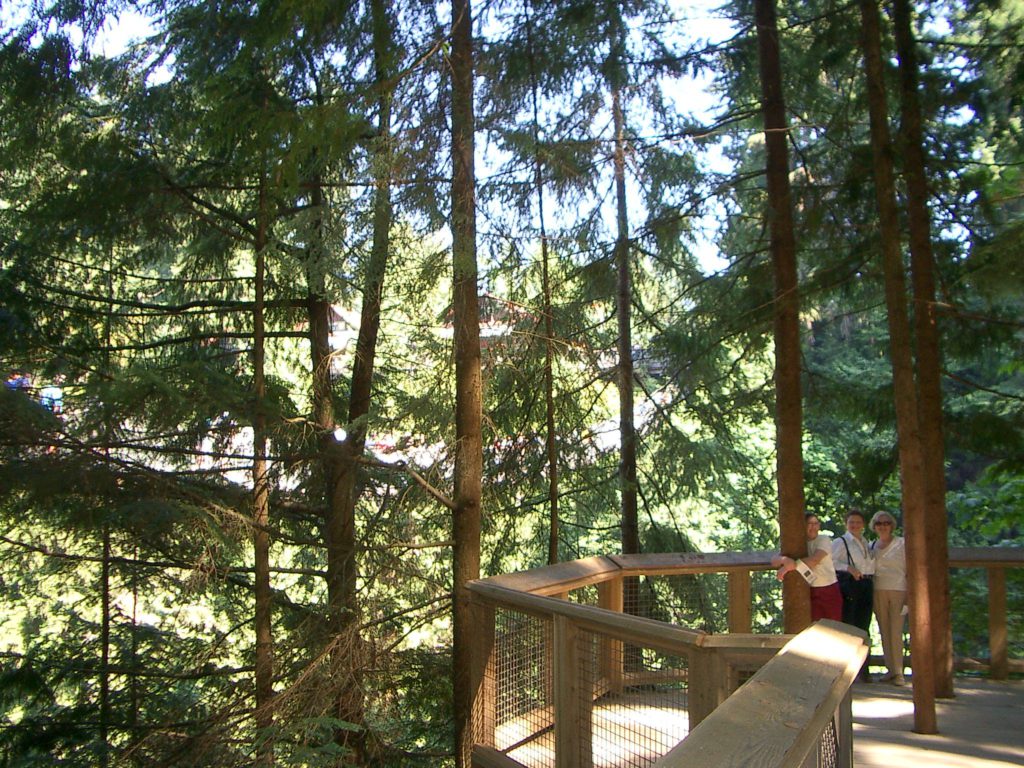
Some of the cedars and Douglas Firs in the forest on the far side are several hundred feet tall. New walkways wind through the forest and cantilever out over the chasm.
Back to the hotel to relax and change, and then we returned to North Vancouver, passed the Capilano Bridge and parked at the base of Grouse mountain. There we took the gondola to the 3700 foot summit (Pamela was certainly getting some acrophobia deconditioning today) for dinner at The Observatory.
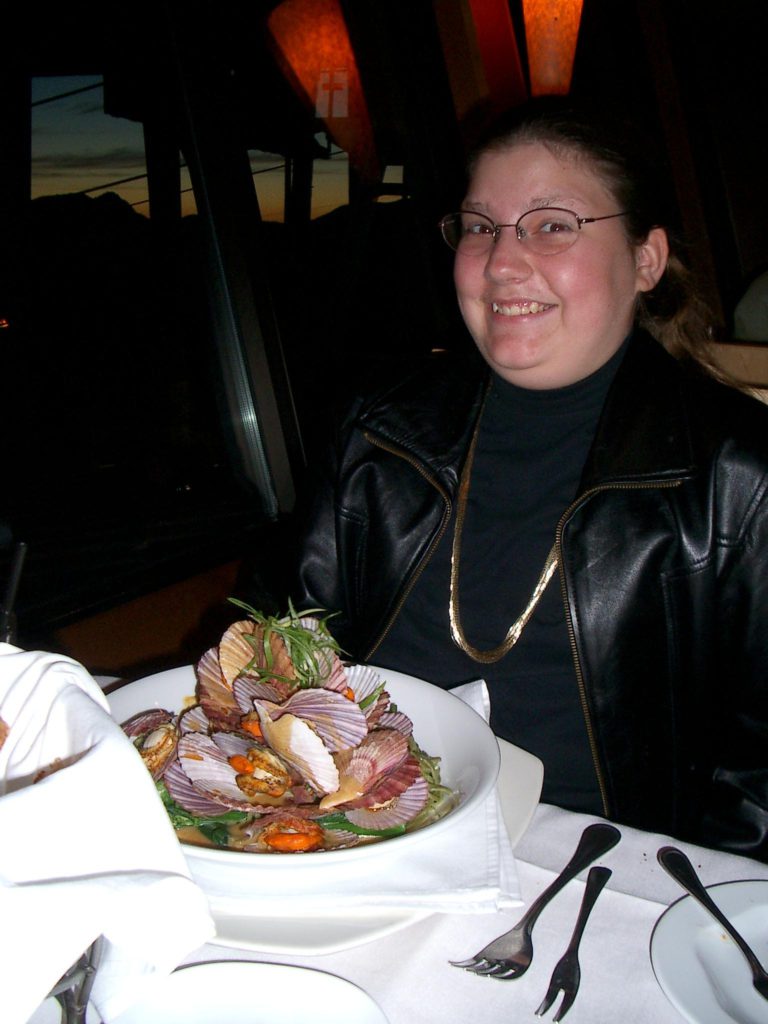
While the food was elaborate, it struck me as one of those restaurants that is trying way too hard. Nothing on the menu was normal, with salmon served in a soup bowl, and this bizarre mussel-like preparation for scallops. . . pretty, but not what Dani has in mind when she ordered it (in her travel journal she referred to them as “scary looking shells”) . She traded for Linda’s somewhat more normal chicken. At least it wasn’t in a soup bowl.
Saturday, August 2, 2003 -Departing Vancouver
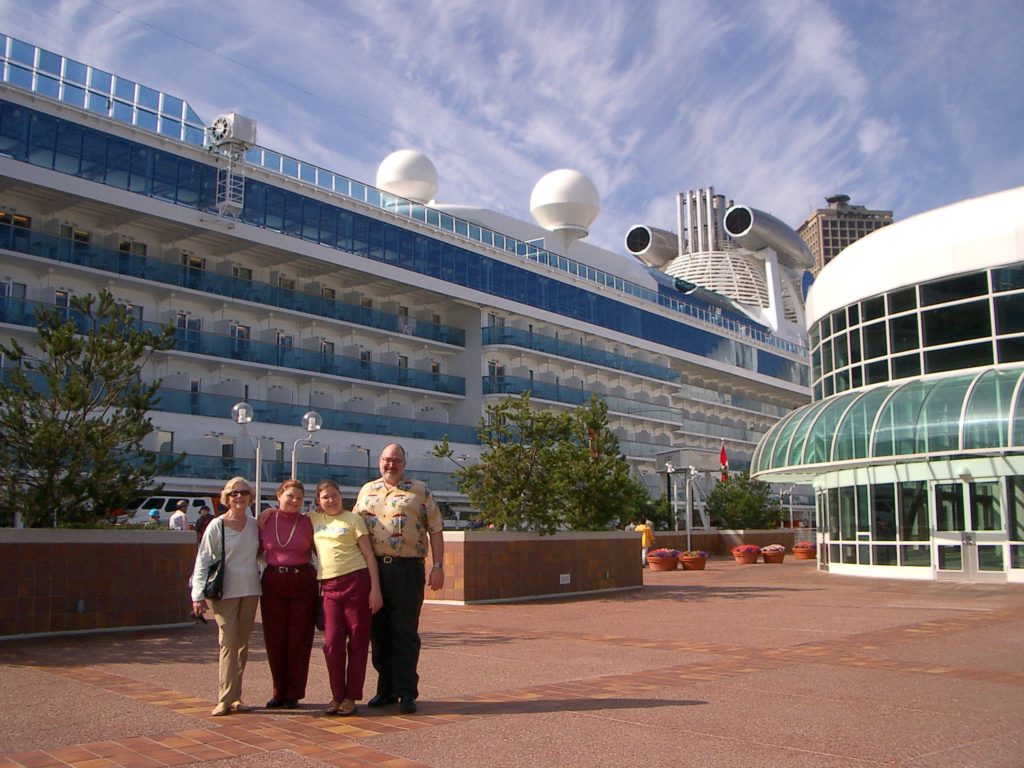
Staying at the Pan Pacific made Saturday a breeze. Our luggage was transferred directly from our rooms, and we cleared US Immigration and were on board by noon. We’ve been on Royal Caribbean, Norwegian Cruise Lines, Costa, The Big Red Boat, and Disney ships, but never Princess.
The Coral Princess is brand new; this is its inaugural year. The ship the most beautiful I’ve been on. A very different design than the Voyager-class ships of RCL, the Coral Princess is built upside-down, with the public areas on the lower decks, and the guest cabins above. 85% of the cabins have a balcony.
The public areas are where the difference in philosophy is most apparent. Although there is a beautiful multi-story atrium that joins the dining rooms, shops and other areas, the emphasis is on the many small, elaborately decorated and themed lounges that meander their way about the ship. Rare woods, gleaming fixtures and dramatic lighting are used to full effect throughout.
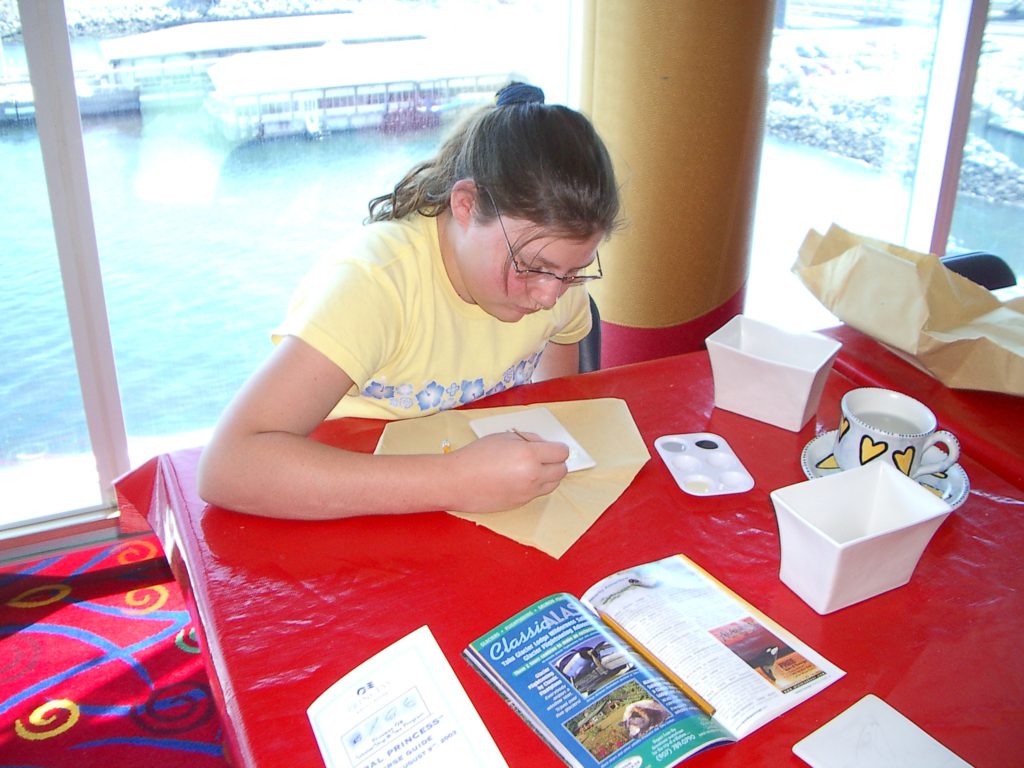
There are several unique activities available aboard the Coral Princess. My favorite is the ceramics workshop, where you can paint or even create your own pottery. Two artists on board teach clay sculpture and pot “throwing”. Even before the ship left port, Dani and I were starting our projects, ceramic boxes decorated with scenes of Alaska.
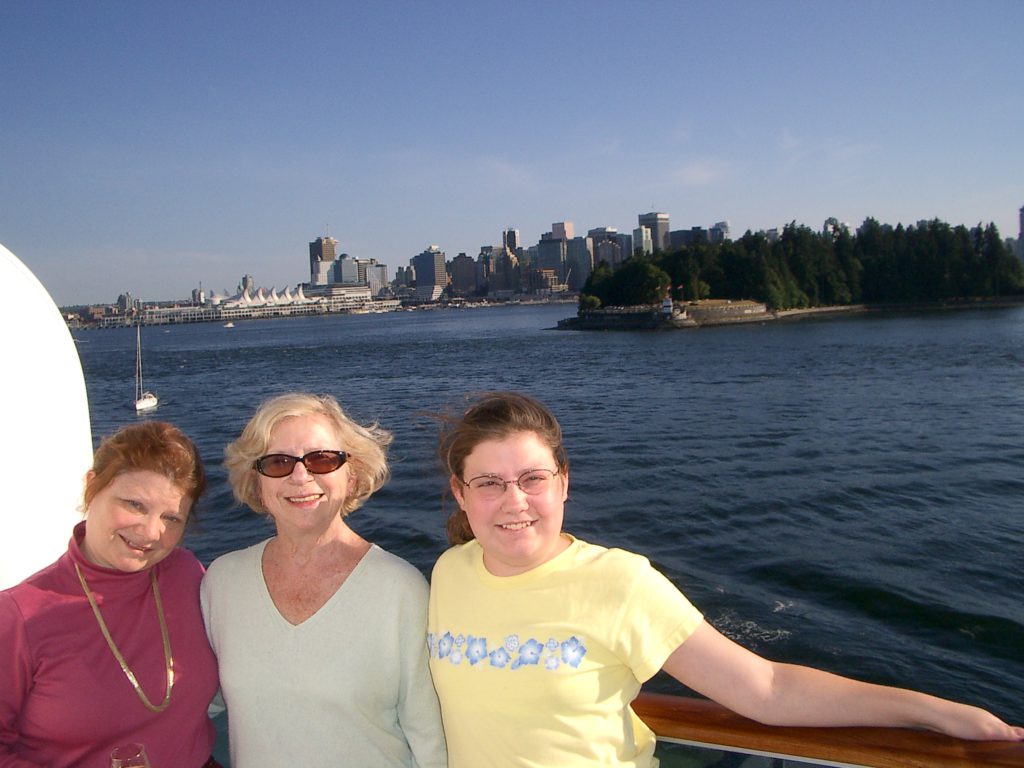
Dani and Pamela are sharing a mini-suite on the port side, while Linda and I have a starboard suite. This gives us a choice of views. At 6pm we set sail from Vancouver and passed into the Georgia Strait on our way to the inside passage.
Sunday, August 3, 2003 – At Sea
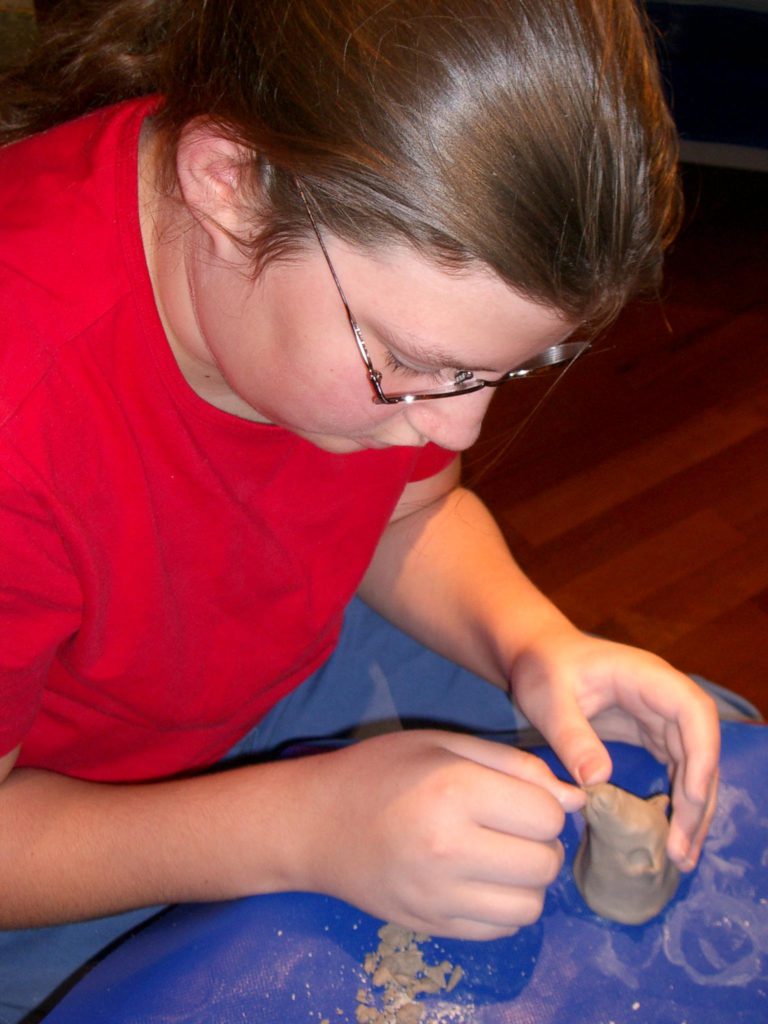
Sunday we spent a restful day at sea, cruising the inside passage. The water was very still in the morning, and Dani and I saw an Orca Whale blowing very close to the ship. We sighted a few other more distant whales throughout the day. We attended a sculpting class and were quite amazed at the results. The instructor told us to let our fingers do much of the thinking. We were startled to find that we could sculpt things that we could never have drawn realistically. Dani made a remarkable polar bear, and I did a reclining nude. Later we will glaze them so that they can be fired.
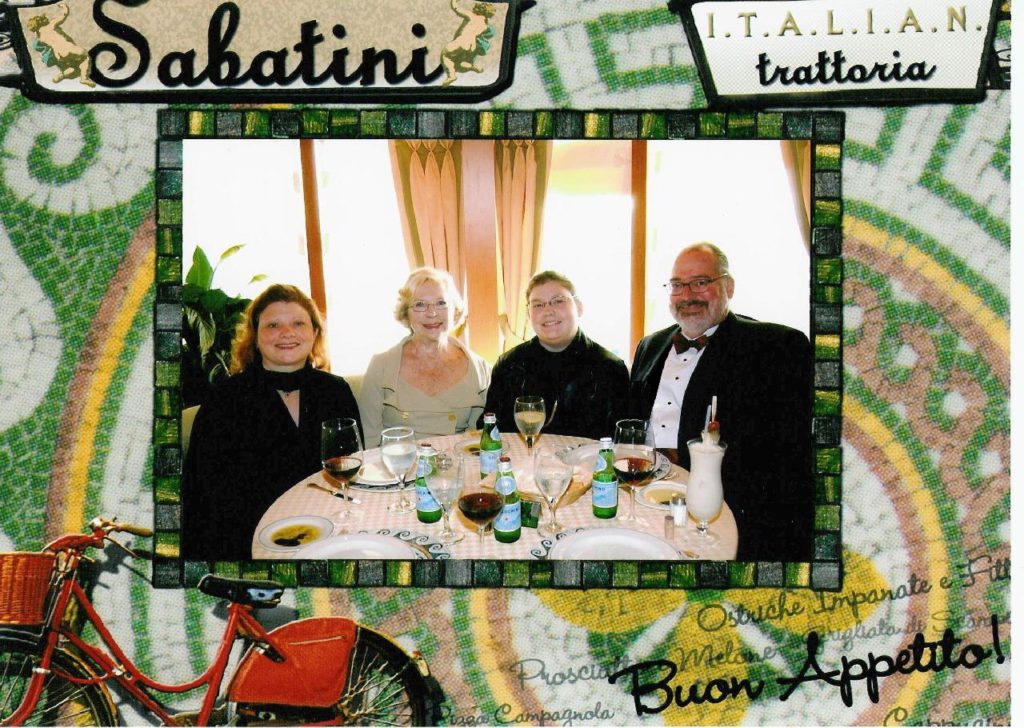
We dined in Sabatini’s, one of the two cover charge restaurants on the ship. Our $15 bought us about a dozen courses, some of which consisted of eight or ten things. Basically, you select your entree and they bring you everything else on the menu. Our main course was lobster, langostino, prawns, scallops and Alaskan Halibut, but we couldn’t eat very much by that point in the meal. The food on Princess is the best I’ve had; in particular, it’s far better than Royal Caribbean.
Monday, August 4, 2003 – Ketchikan
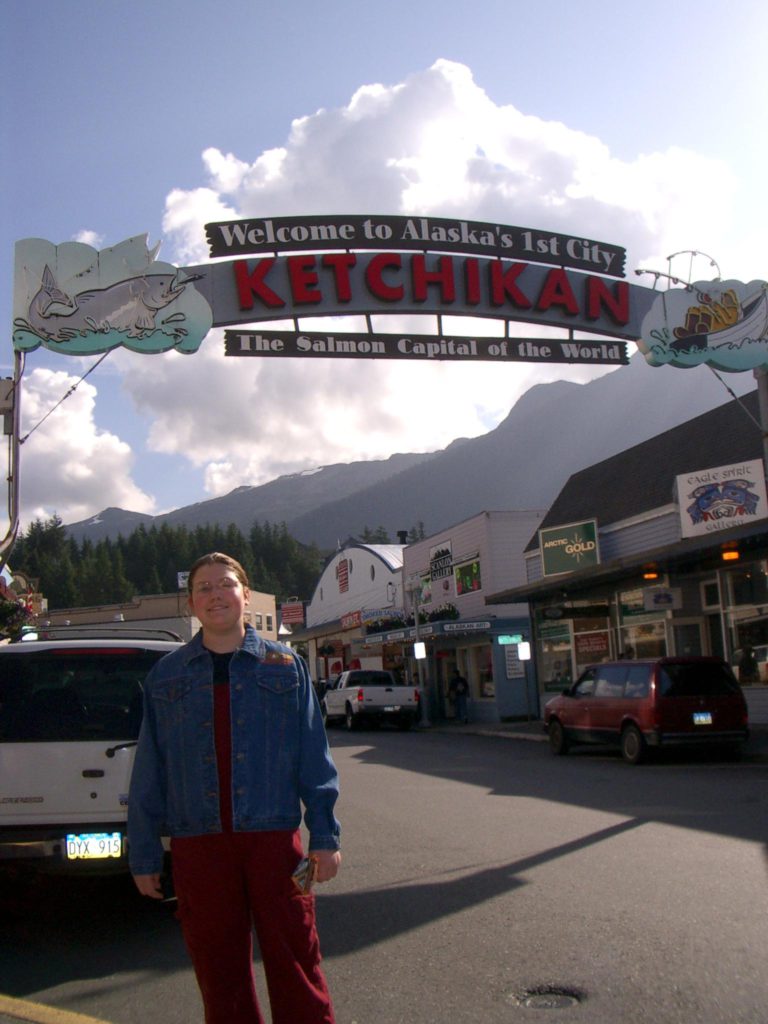
We awoke in Ketchikan, a city on an island. The population is only 14,000, yet it’s the fourth largest city in Alaska, after Anchorage, Fairbanks and Juneau. It rains about 250 days out of the year in Ketchikan — annual total about fifteen feet — so we were very lucky to have such beautiful weather. After a morning shopping foray we returned to the ship to get ride of all our warm clothing. It was in the fifties and sunny all day.
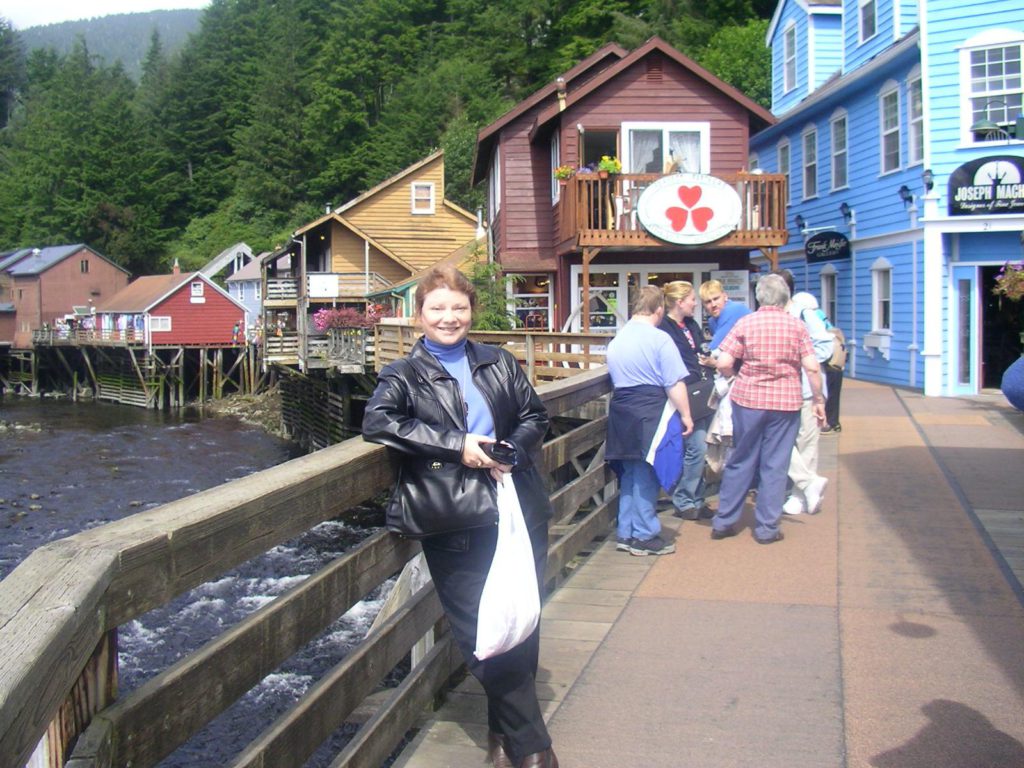
Linda and Pamela set out for a lighthouse tour, while Dani and I headed down the coast for a mountain bike ride.
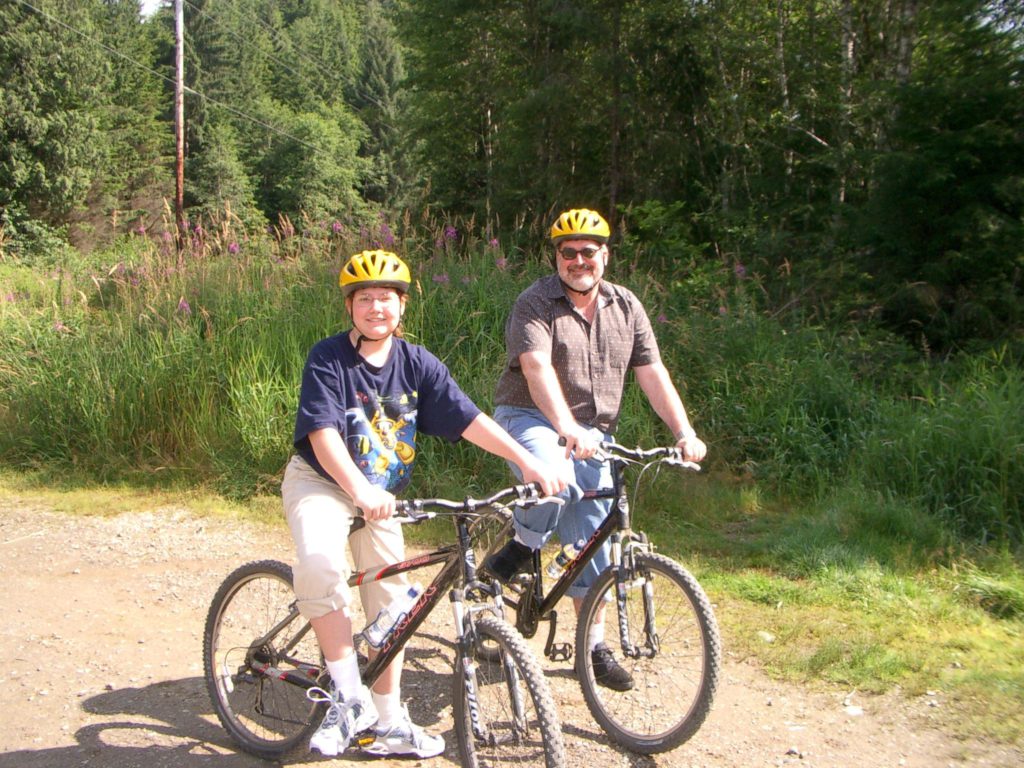
The bike ride was billed as a “gently rolling” ride along a dirt road, but it was more of a steady grade up — both ways. Actually, it was nice that it was downhill most of the way back.
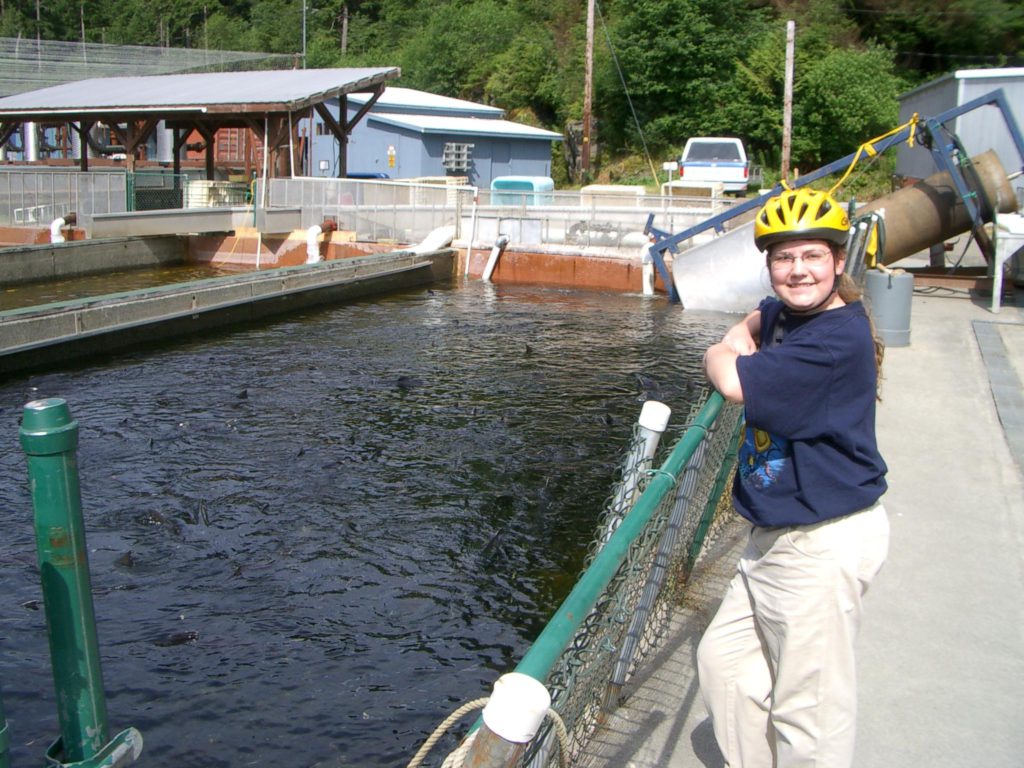
Our first stop on the bike ride was at a salmon hatchery. We learned there are five kinds of salmon, that you can remember from your fingers:
Pinky Pink
Ring Finger (wear a ring made of. . . ) Silver
Middle Finger (the Longest) King (also called Chinook)
Index Finger (the Three Stooges poke with it) Sockeye (also called Red)
Thumb (rhymes with. . . ) Chum (also called Dog)
Because salmon return to where they are spawned, the fish hatchery can release millions of babies and they will swim back straight into the local fishing grounds when they are grown.
A few make it past the fishing nets and return to the hatchery by climbing up these. . . Salmon ladders.
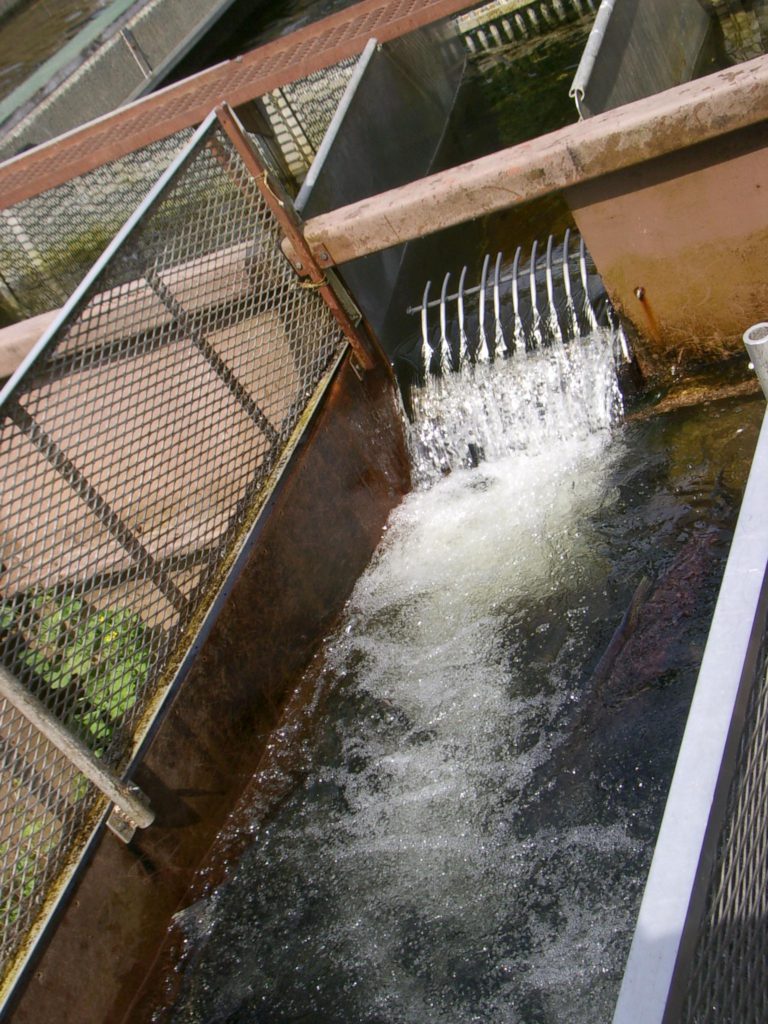
There is a big King salmon in the water at the right. She has already gone up many levels, and must jump this last one to reach the holding tank. They collect only 340 of these pregnant females — they’re about three to four feet long. From them they will harvest 14 million(!) eggs, which they artificially inseminate and then release as hatchlings.
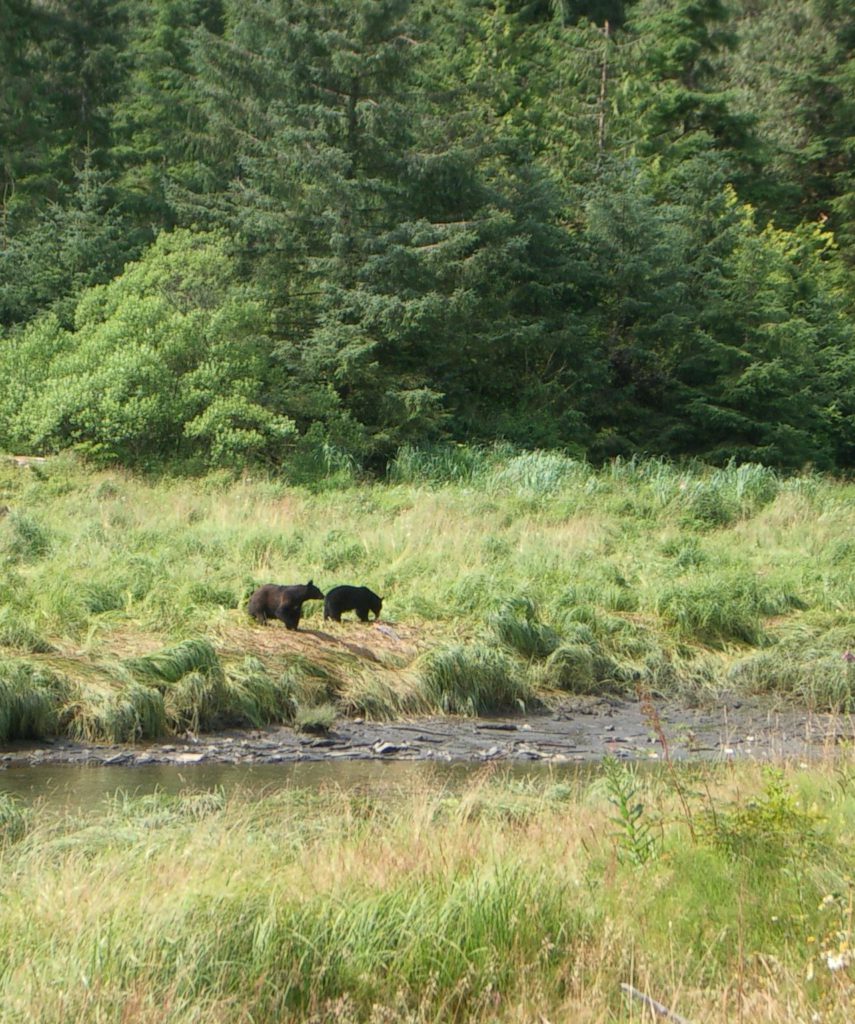
By a stroke of luck, as we stood looking at the fish hatchery, three Black Bears approached on the other side of the river. As we watched, they found a salmon and carried it off, nibbling from it on the way.
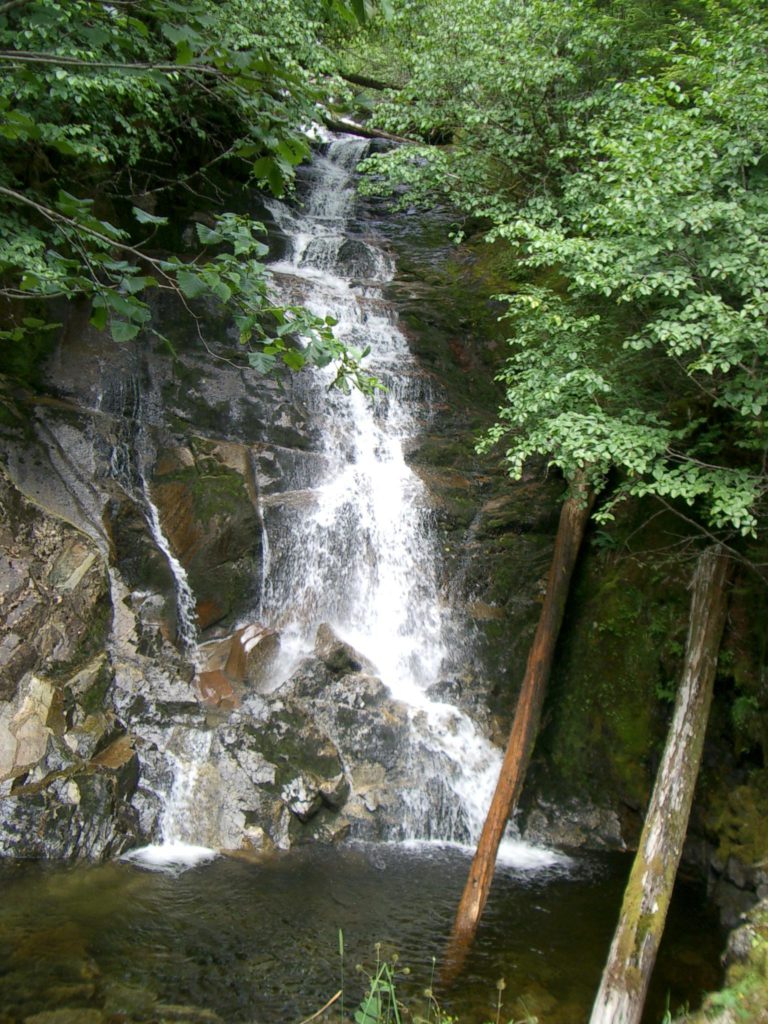
On up the road we stopped to rest at this pretty waterfall. I headed back but Dani went on for another mile or so. The total round trip was about seven miles, and we were more than ready for lunch when we got back to the ship!
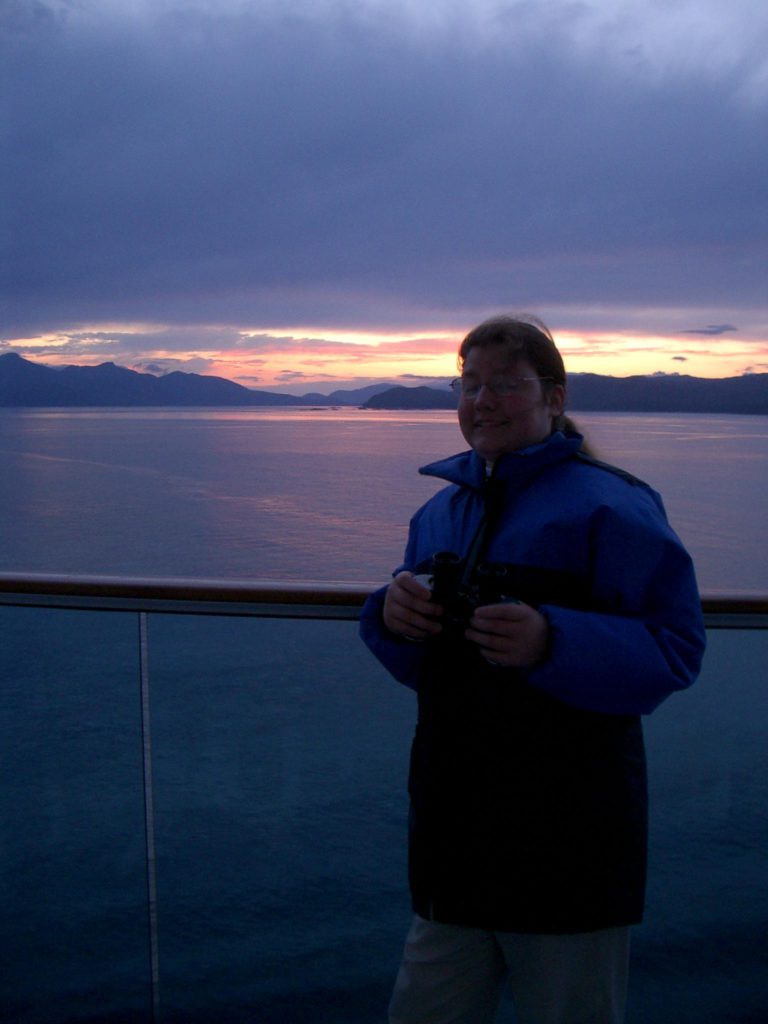
Sunset was on the starboard side of the ship — an interesting phenomenon for a North-bound cruise. Many of these ports are at the apex of narrow sounds. We saw a V-formation of geese grazing the water near the ship.
Tuesday, August 5, 2003 – Juneau
Juneau is the capital of Alaska. Half of the residents are civil servants and the other half sell souvenirs. Squeezed against the mountains on top of a pile of mine tailings, the city dates from the 1880’s, when gold was discovered in the river.
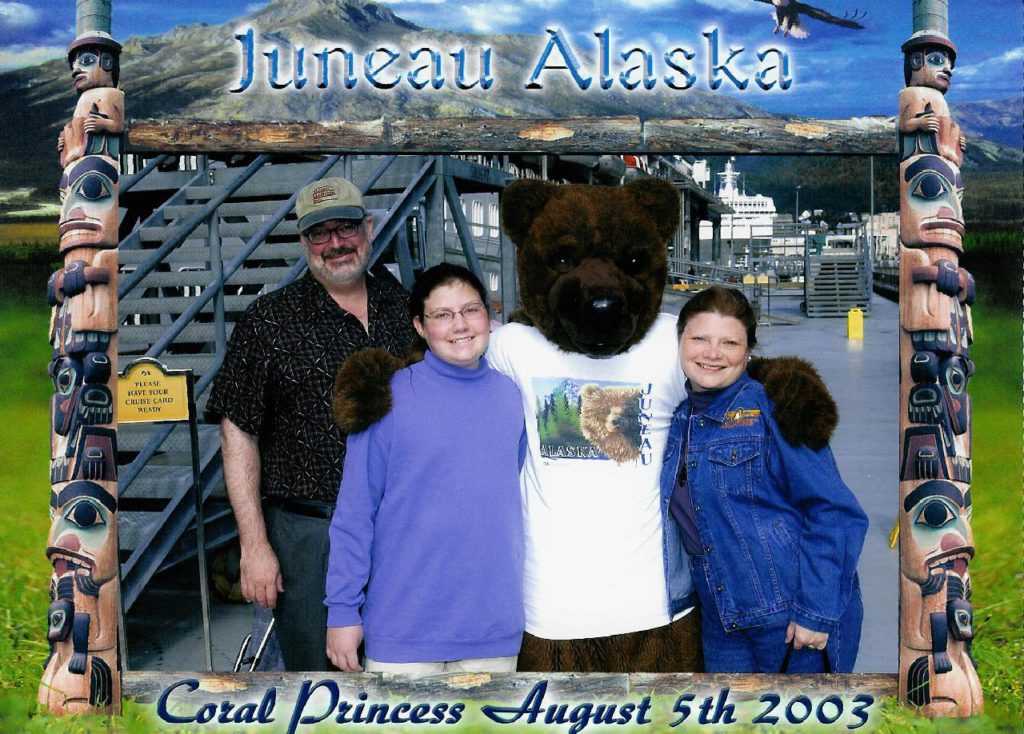
Note the dichotomy between the scenery on the dock and the border of the postcard!
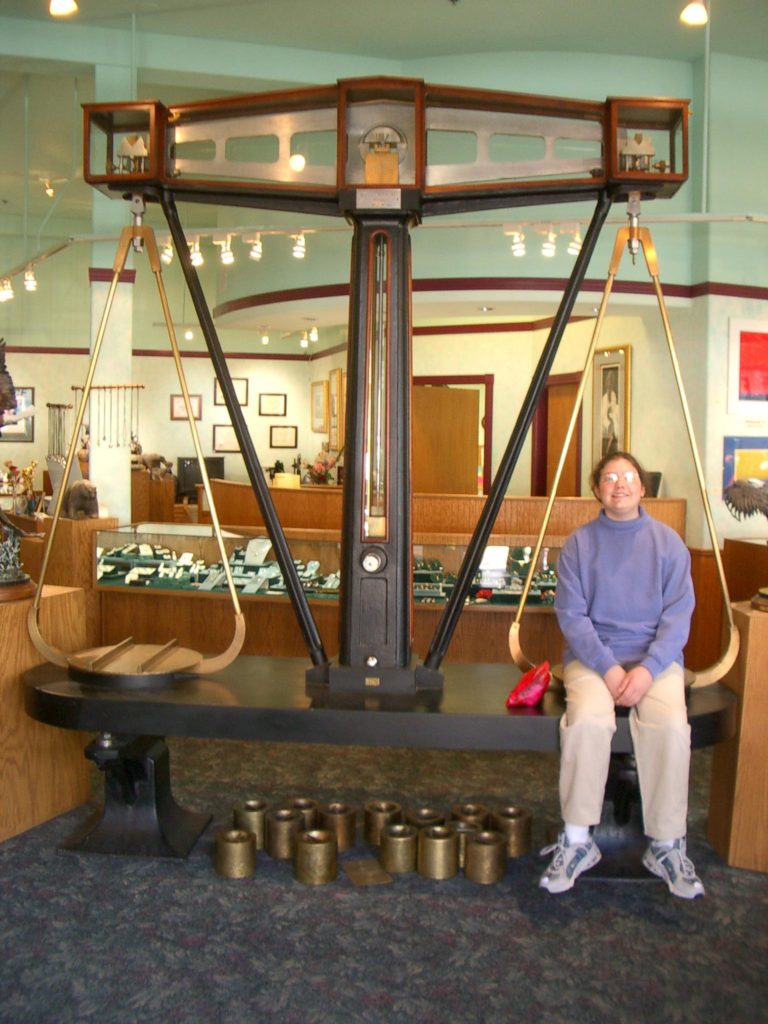
We spent the morning buying — you guessed it — souvenirs. Linda and Dani did some jewelry shopping in this shop with an antique scale. This must have been for really successful prospectors.
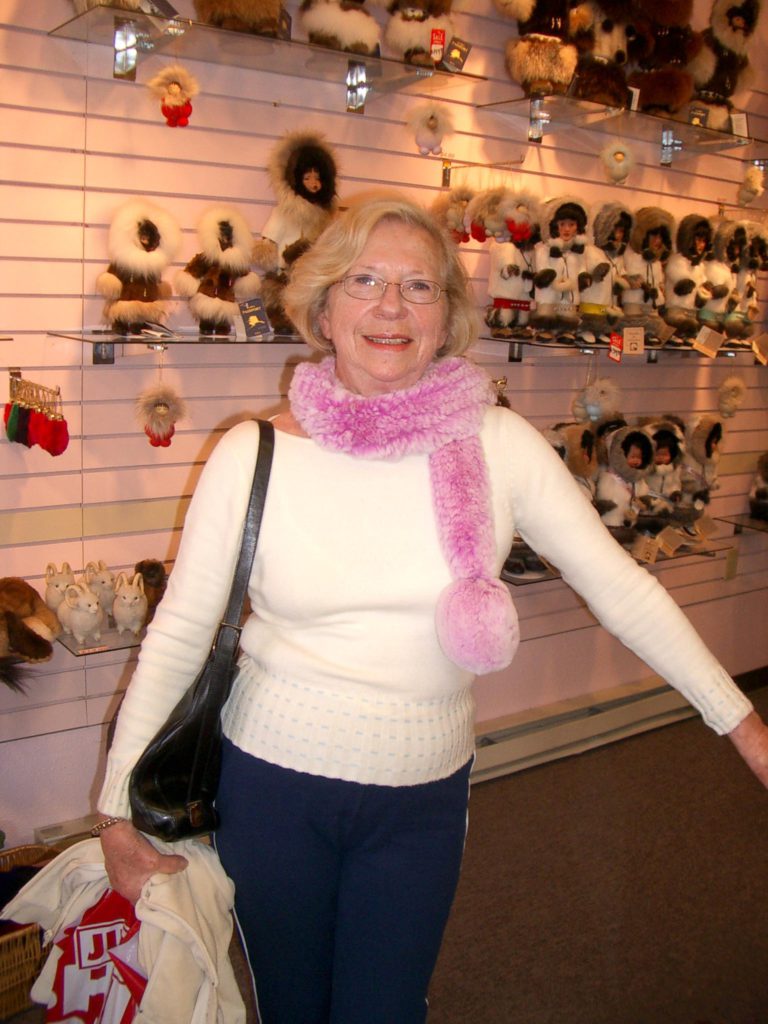
Pamela tries out a pink boa. What a great look for her, eh?
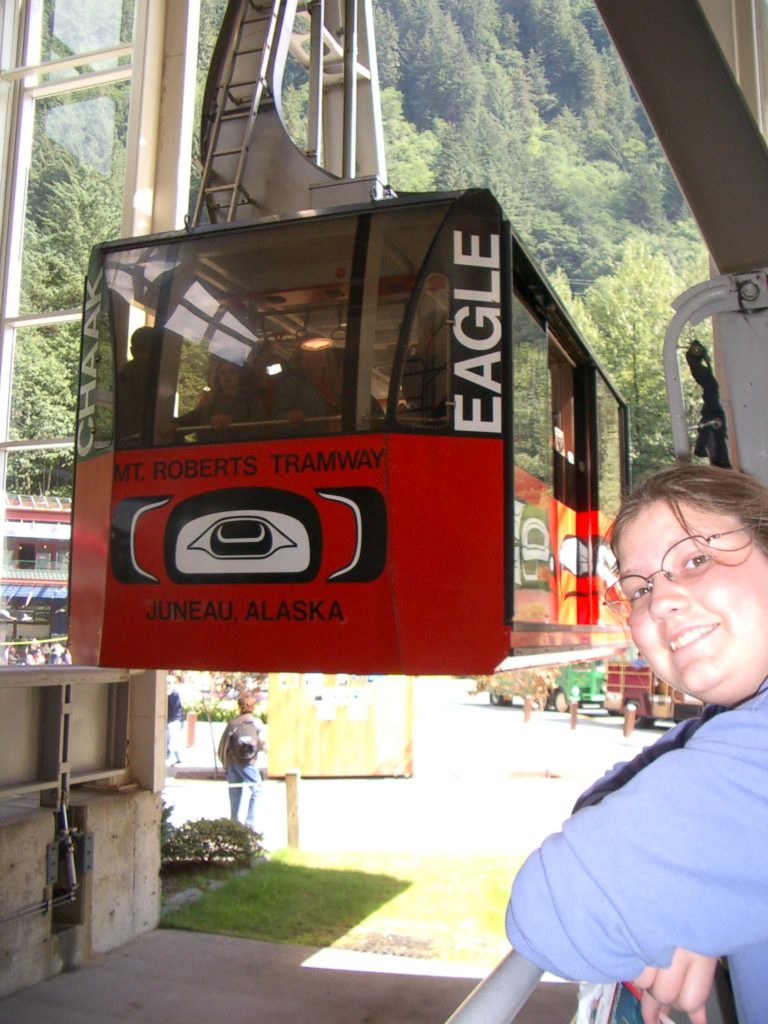
We (minus Pamela!) took the tramway 1800 feet up to the peak of Mount Roberts, where we had a leisurely lunch perched atop the mountain. The tram goes literally to the top — another five feet and you’re going down again. This is the only tramway we’ve ever been on that doesn’t have an intervening support – the cable is strung in a direct line from station to station.
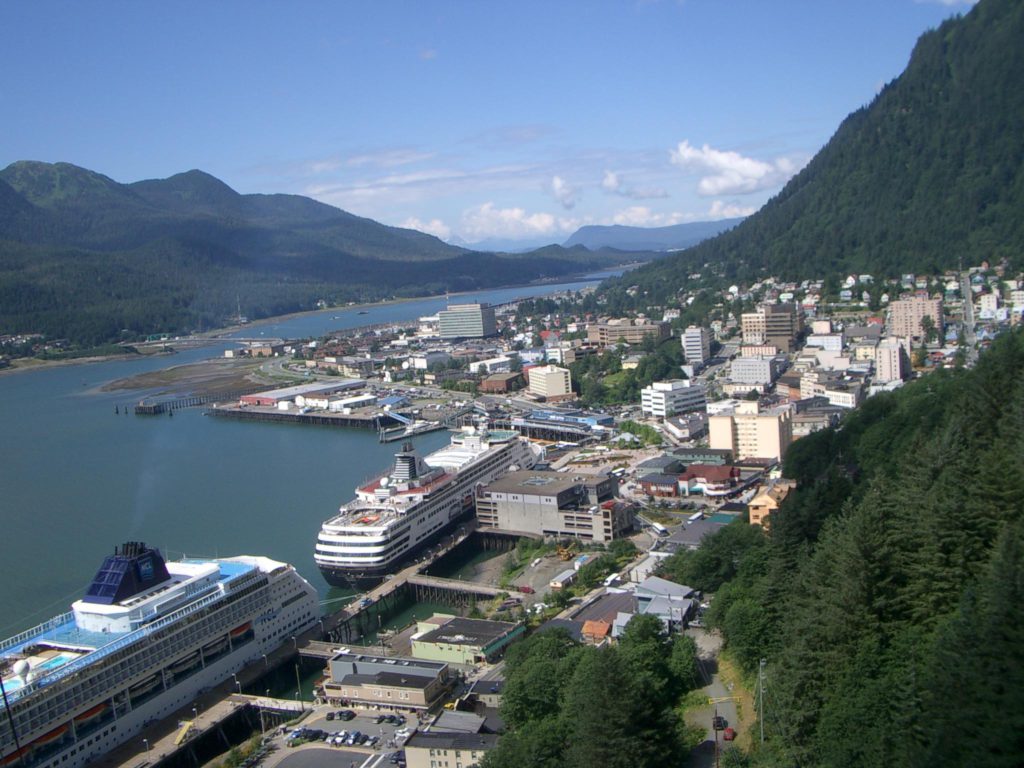
Juneau, with two of the day’s five cruise ships at dock.
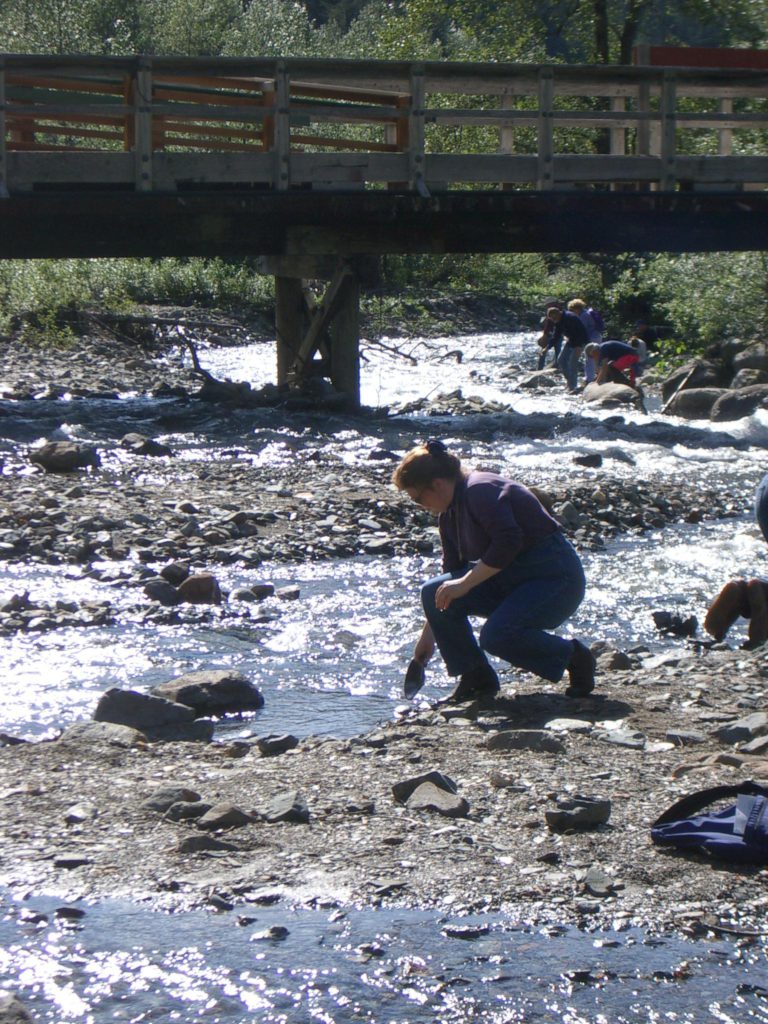
In the afternoon we tried our hand at gold panning near the original gold strike. Our guide, “Mule”, was a gregarious comedian who gave us the inside scoop on the history of Juneau, which was named for a drunken Frenchman who died broke in the middle of gold country. Mule is a student at the University of Alaska, but he’s originally from Macon Georgia, y’all.
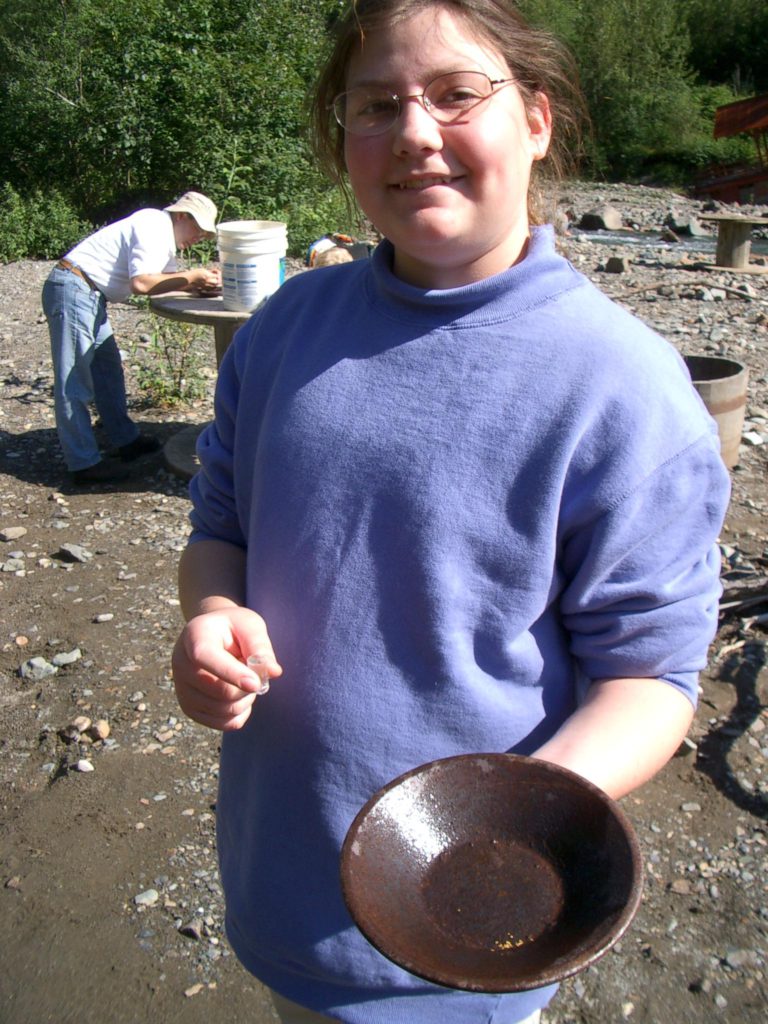
He showed us the panning technique, which uses water to float off the lighter particles, leaving the heavy gold flecks in the rust-colored pan. Our sand may have been salted to guarantee results, but we all found at least one fleck from a pan of honest river bottom sand, too.
Back on the ship, Dani and I finished glazing our sculptures and Dani tried her hand at pot “throwing”. tomorrow is the last day for ceramics since they fire up the kiln Wednesday night. We have a busy day of activities planned, so we tried to finish everything else today.
At these latitudes the sun seems to take forever to set; it is still quite light at ten or even eleven pm. The effect is exaggerated as we travel northwest because we don’t change time zones but we move the equivalent of several time zones westward.
Tonight the sun and moon set at nearly right angles to one another — an effect impossible in Orlando. The glow of the sunset shifted from starboard to port and back again as we wound our way through the channels back to the northward passage. The moonlight illuminated white birds skimming the waters near the ship. After only a few hours out of Juneau the landscape had changed dramatically, with jagged peaks cradling snowy saddles of ice.
At 11 pm the sky still glowed deep orange in the west when a green ribbon appeared against the dark sky overhead, snaking its way from the north to disappear over our ship. The Northern Lights.
We called Dani and Pamela’s room and they rushed over in pajamas and warm coats to watch. The ribbon twisted and spiraled, its lower edge sometimes glowing red. It seemed to be comprised of thousands of vertical strands, each following in a choreographed procession. At times it would disappear, and another would reform nearby. Sometimes a section would whip across the sky, covering hundreds of miles in only a few seconds. At one point a bright blue-white shooting star arced through its center. The show lasted fifteen minutes, and then faded, leaving a milky glow across the northern sky. It was the most spectacular thing I’ve ever seen.
Wednesday, August 6, 2003 – Skagway
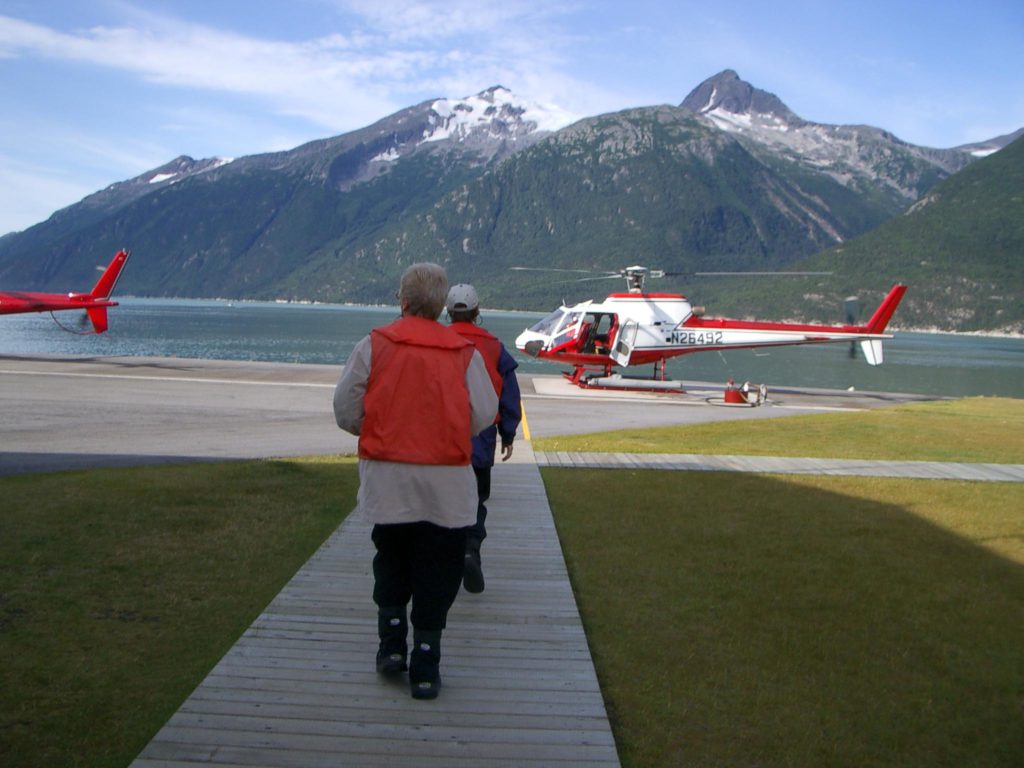
In Skagway the ship docks against a rock mountain which bears the names and the painted logos of the ships that have gone before. I saw inscriptions from the ’20s, and Linda spotted The Princess Louise, which was converted to a restaurant docked in San Pedro harbor when we were kids. I could almost hear Wagner’s “Ride of the Valkyries” playing as I watched a squadron of helicopters careen from the dock and head up into the mountains, taking Dani and Linda to the top of the glacier for dog sledding.
Linda and Dani go Dogsledding
After some disorganization on the pier, Dani and I were shuttled off to the local helipad and issued glacier boots and orange flotation vests. (Near as I can tell the only function of the latter was to make your body easier to locate after you had expired in the water from hypothermia. ) After having to confess our weights (which will not be recorded for posterity) we were assigned seats in a helicopter and our adventure literally took off.
Having never flown in a helicopter before, we were amazed at how solid it felt — sort of like driving a sports car in the sky. Our pilot was a nice young man who assured us that his learner’s permit was valid and that all he had to do was follow the lead helicopter. We were encouraged to talk to one another over the intercom system while he practiced flying. We soared over glacial valleys and ice-covered terrain riddled with crevasses — not terribly hospitable but beautiful in its own way. After 15 minutes of flight to about 5000 feet we noticed a collection of small dots on the ice. We were soon to arrive at the summer dog sledding camp located on top of a glacier.
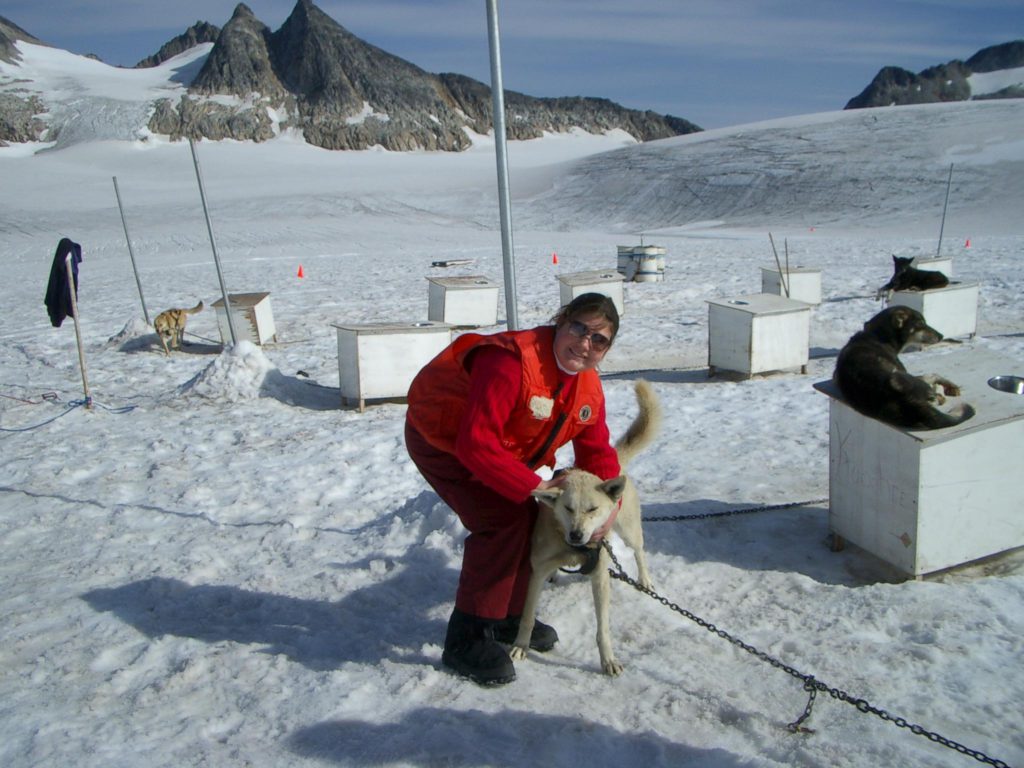
As soon as we disembarked and the helicopters flew away, taking their motor noise with them, we were struck with not “glacial” silence but rather the enthusiastic welcoming yips of some 200 dogs.
Each dog is given their own dog house with an indentation in it for their food bowl. They are loosely chained to a common team line. Most seem to prefer to hang out on top of their houses to soak up the sun, check out the newcomers and wait for their next meal (they are fed mostly cooked lamb). They are very friendly and not ashamed of voicing their opinions — Dani couldn’t figure out which one to pet next.
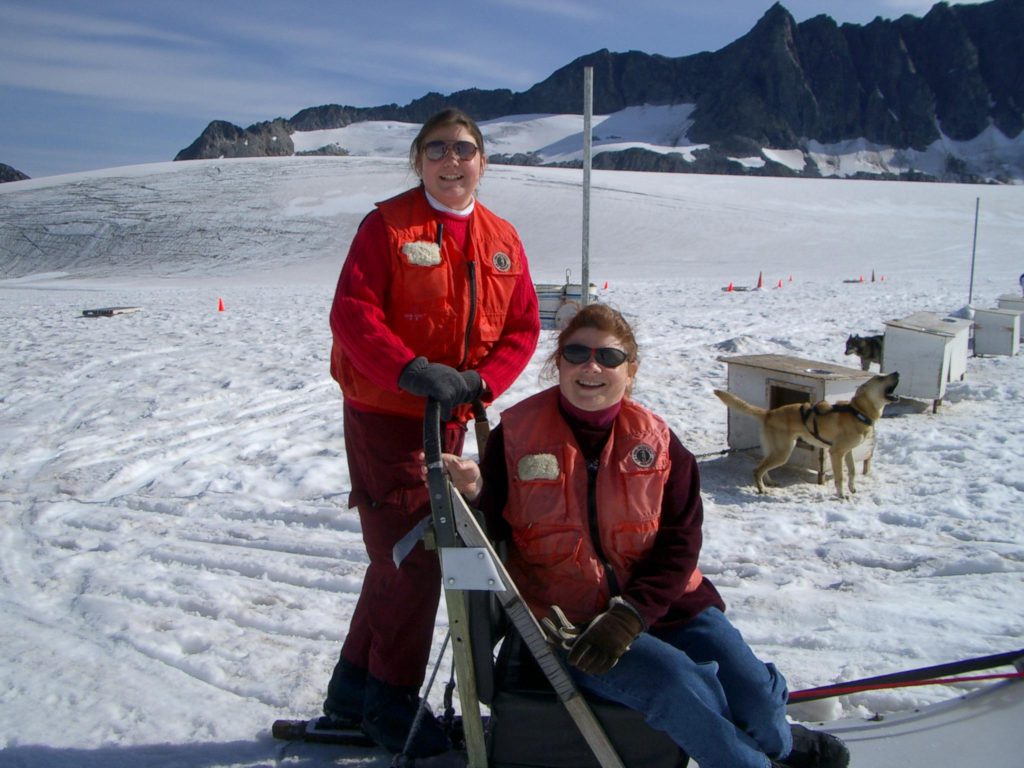
After some brief instruction (pretty much where the brake was and don’t walk away from the camp as you most likely will die in a crevasse) we were off. Dani took the first leg steering our sled (we were actually tethered to a sled in front but it looks good in the pictures).
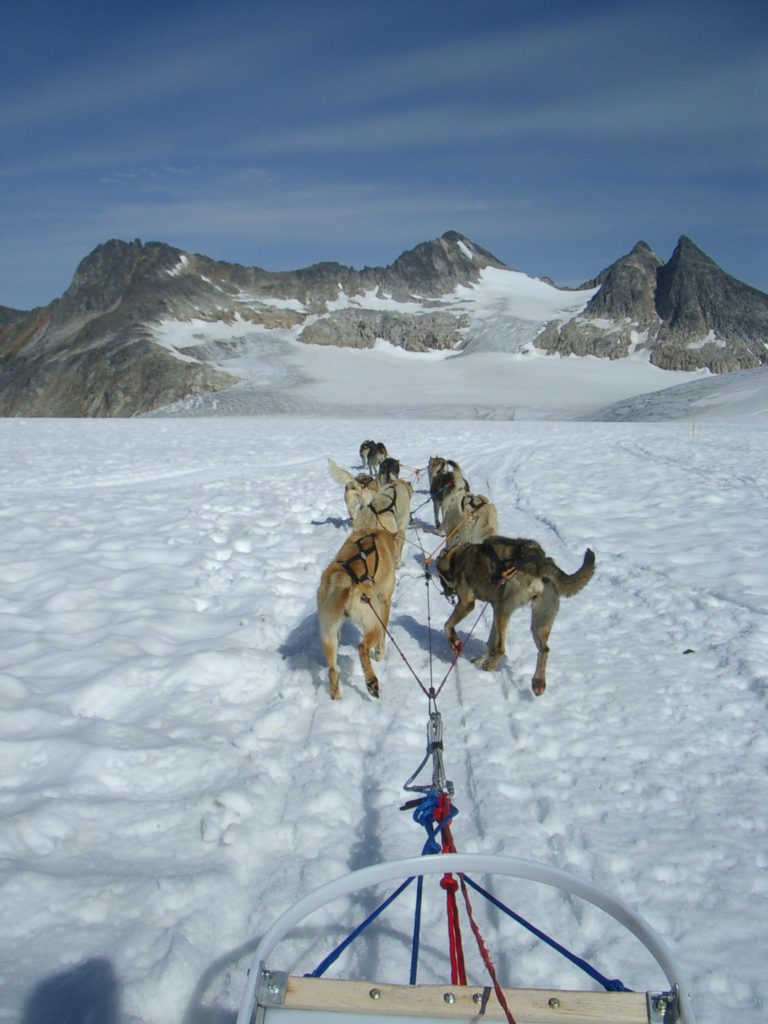
Our sledding guide, Lucas, told us the philosophy of the camp was not to overly train the dogs — as long as they were willing to run in the correct direction that was good enough. Hence, although they pulled smartly together as a team, as soon as we stopped the line quickly dissolved into mayhem with dogs eating snow, rolling in snow and doing other things in the snow which accounted for the distinct aroma.
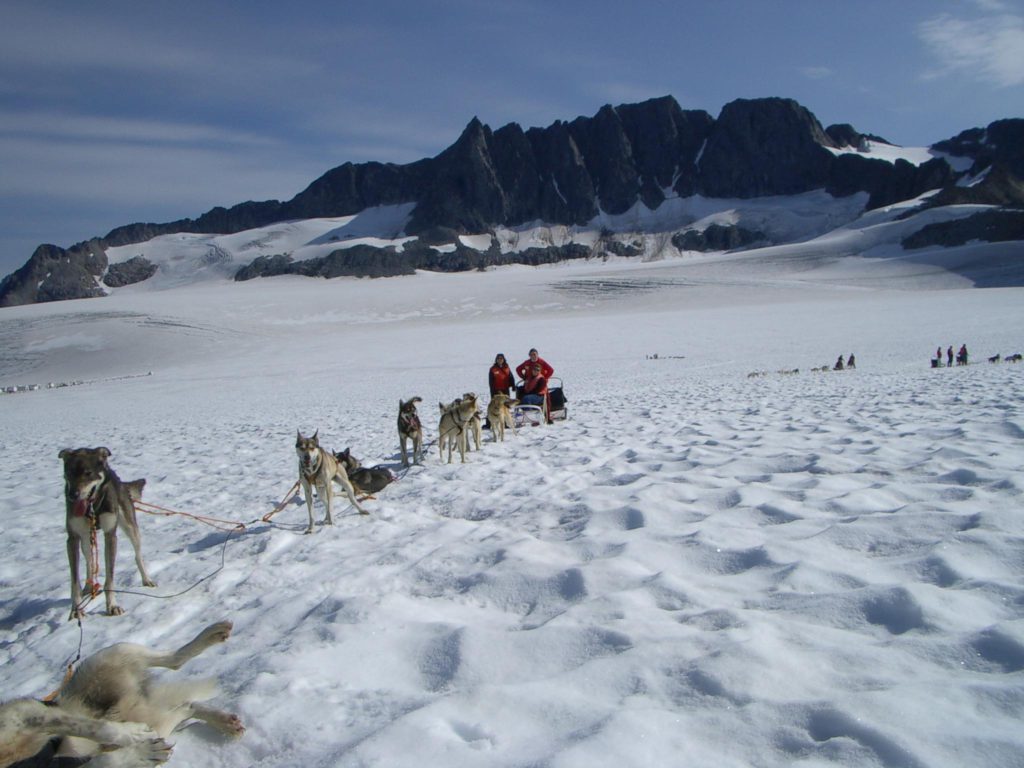
The dogs really enjoyed running — each time we stopped, they seemed frustrated and anxious to take off again. Each of the three of us riding with Lucas got to steer for about ten minutes. Our fellow passenger, Paula from San Diego, was a skier and got the most challenging segment. The sleds are very lightweight — their design allows them to skim over quite rough snow and smooth out the worst of the bumps. It’s the closest Linda will ever get to skiing — standing on skids sailing over snow but with a nice handle to hold on to!
After about 30 minutes we went back to camp and were led over to the “nursery” where husky puppies are being raised. Dani got to cuddle Patches, 4 weeks of wriggling joy. There were eight puppies in Patches’ litter. Being cuddled by various folks (albeit under the eagle eye of both mom and the sled guide) is the first step in their sled dog training.

Dani did her best to smuggle Patches out, but to no avail. Soon our helicopters returned and whisked us back to town.
Meanwhile, in the Yukon…
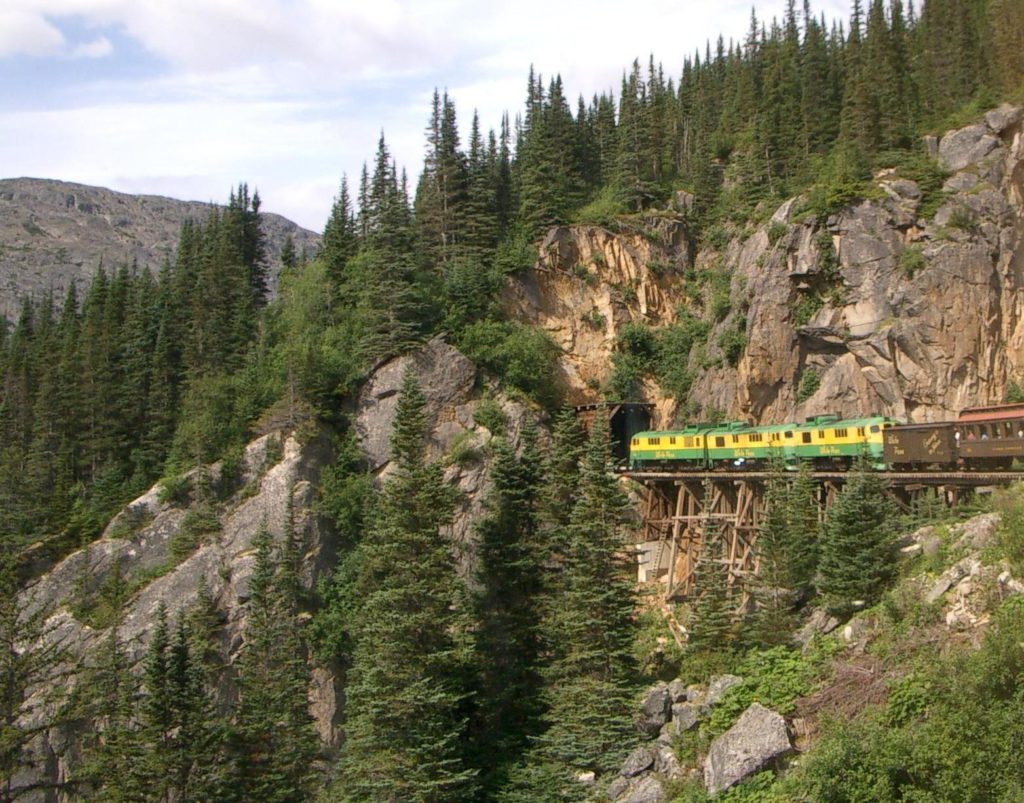
Meanwhile, Pamela and I set out for “The Best of Skagway”. The first thing we did was leave Skagway. Not surprising, since this tiny town — still bearing 1898 facades — was more important for where it was that what it was. Today there are only about 800 residents, and its longest street is only a few blocks long. The four cruise ships at the dock increased the population by about 1000%. But Skagway was important because it served as the gateway to the Yukon gold fields, and that’s where we headed, aboard the White Pass and Yukon Railway.
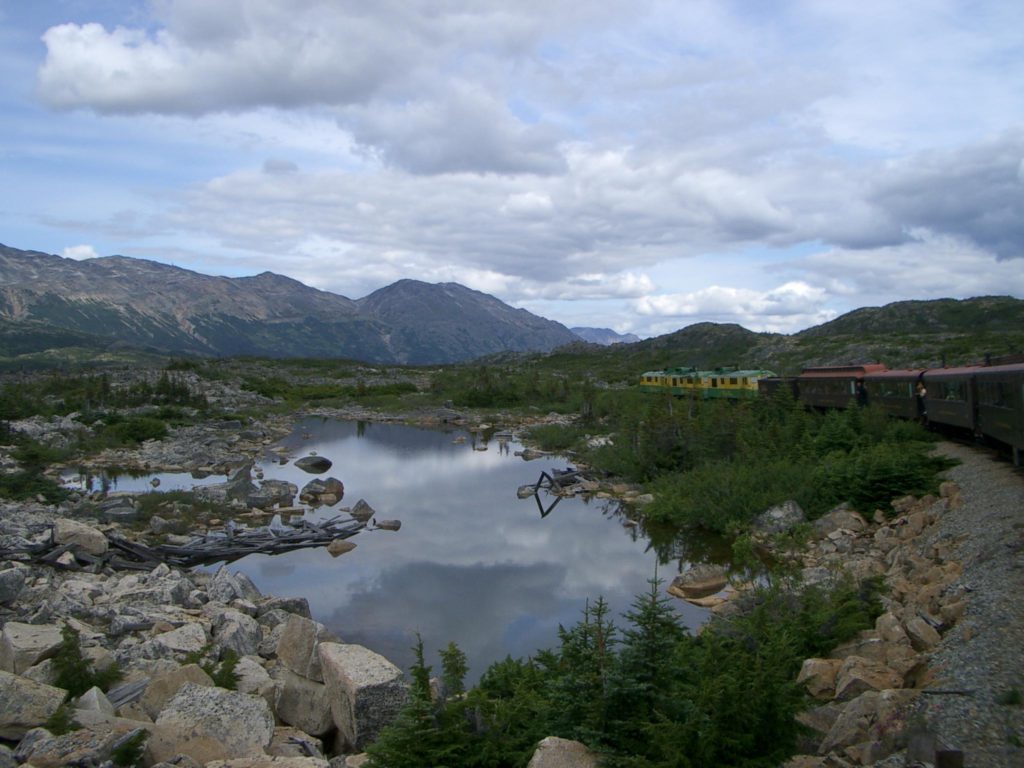
The thirty-mile trip over the pass climbs three thousand feet and takes about and hour and a half. It was a beautiful, clear day. The views of distant mountains, glaciers and harbors were spectacular. We were told that one jagged range of mountains which seemed almost to loom over us was actually 45 miles away, and was almost never visible. The railroad was constructed in less than two years, beginning in 1898. Even so, it opened too late to help the 100,000 Stampeders who came looking for Yukon gold. The followed the torturous White Pass Trail, which we could see winding through the rocks below us. And they didn’t follow it just once. To enter the Yukon, the Canadian government required them to carry 2000 pounds of supplies — one year’s worth. Wagons were impractical on the trail, and pack animals were rare, so this meant each miner had to make thirty to forty trips over the pass carrying 50 pound loads roped to their backs — a total distance of about 2000 miles.
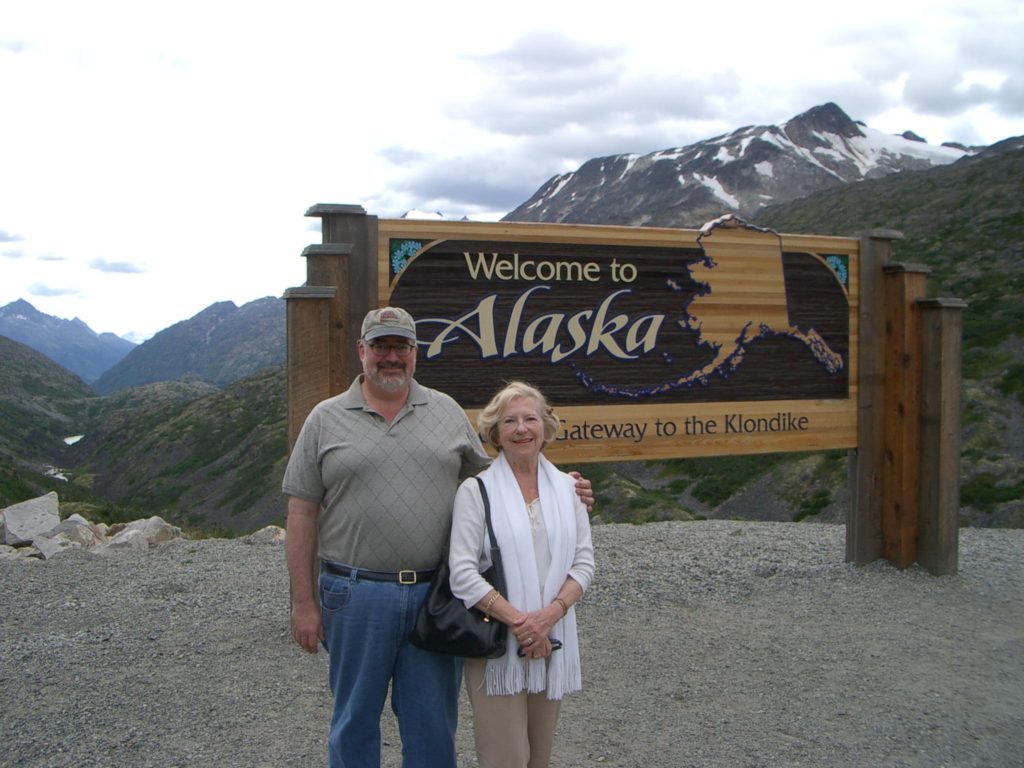
Of the 100,000 who set out, only 30,000 made it, and many turned back at Dawson City. Only a few thousand ever found and gold at all, and just a few hundred struck it rich. After passing over what, in 1898, was the longest cantilever bridge in the world, we emerged from a tunnel into the Tormented Valley, so named because no tree can grow more than a foot or two tall because of the severe winters. The train stopped at Fraser, British Columbia, a town consisting of three houses for Canadian Customs. We disembarked, reboarded our bus, and took the road back down through US customs, posing for a picture at the border.
Our bus driver, Trevor, was a twenty-one-year-old recent college grad who is putting his political science degree to work driving a bus in Alaska. He told us many funny stories, including one about his first week on the job. He forgot a woman at one of the viewpoints and had to go back for her. The woman was very irate — but not at him. She was mad at her husband for not saying anything. At the end of the tour the husband tipped him $10, telling him, “It was the quietest half hour I’ve had in 35 years. ” On the way down we crossed an unusual single-sided suspension bridge. All of the weight of the bridge is supported from one end, and the bridge simply rests on the ground at the other end. This is because the gorge that it straddles represents the junction of the Pacific and North American tectonic plates, which are slowly colliding. A regular bridge would be crumpled by the two to fifteen small earthquakes that occur beneath it each day. At the bottom of the pass we stopped at Liarsville Gold Rush Trail Camp. The tent city of Liarsville — accurately recreated and interpreted by costumed characters — is so named because the reporters sent north to cover the gold rush never actually made it to gold country. Seeing the hardships of the pass, they stayed here, and simply invented their dispatches. We had a delicious salmon supper, wandered past tents for the Press, Saloon, General Store and Brothel, and then watched an entertaining show about life in Liarsville. Afterwards we panned for gold and — what do you know — we found some, even though there was never any gold discovered in Skagway.
Back in Skagway we stopped at the Red Onion Saloon, one of 60 brothels that served the town in 1898. Upstairs we visited one of the ‘cribs’. In mining days, ten dolls stood behind the bar downstairs, representing the ten whores upstairs. You picked your favorite, and the bartender laid it on its back, indicating she was engaged. Upstairs a network of pipes connected from each room. When the coins came rattling down her pipe, the doll went back into service. On our way back to the ship we passed one of the original locomotives, outfitted with a giant rotary plow designed to deal with the twenty feet of snow that accumulates in the pass each winter.
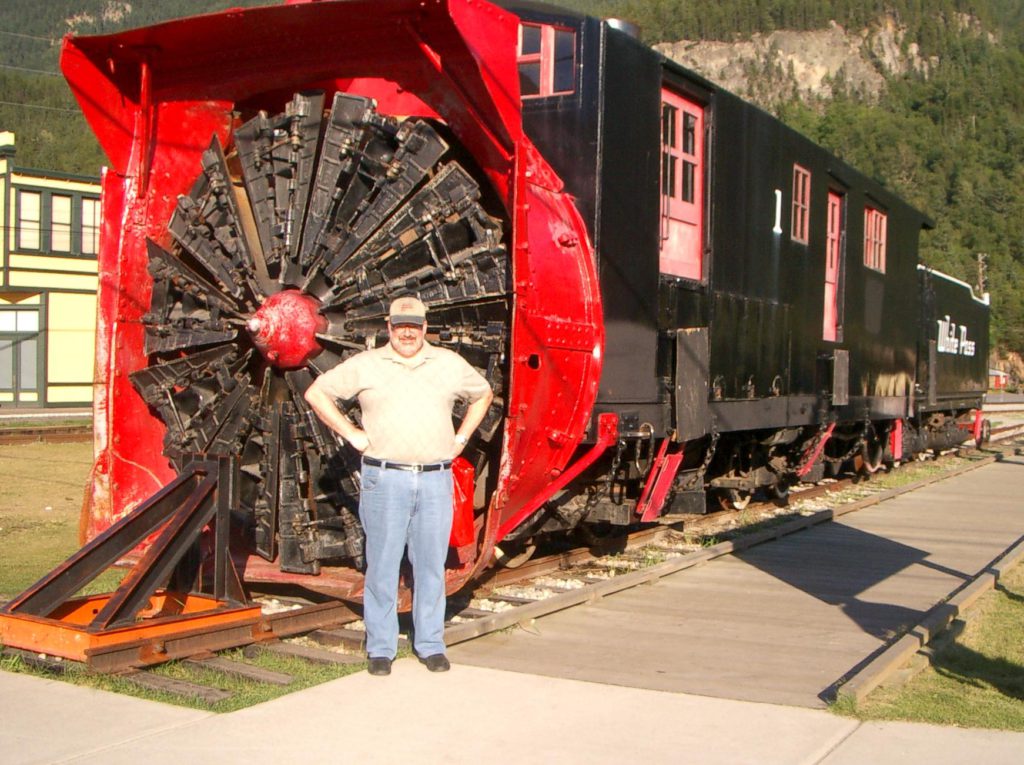
While we were gone, Linda and Dani completed their ambitious day with more shopping in Skagway (world leader in houses of “negotiable affection”), and horseback riding. On the site of the old trailhead, Dyea, they were given horseback riding “101”. Instruction did not exactly mesh with Dani’s idea of proper form, but Linda’s patient mount Iris was kind enough to give her the illusion that she was in control.
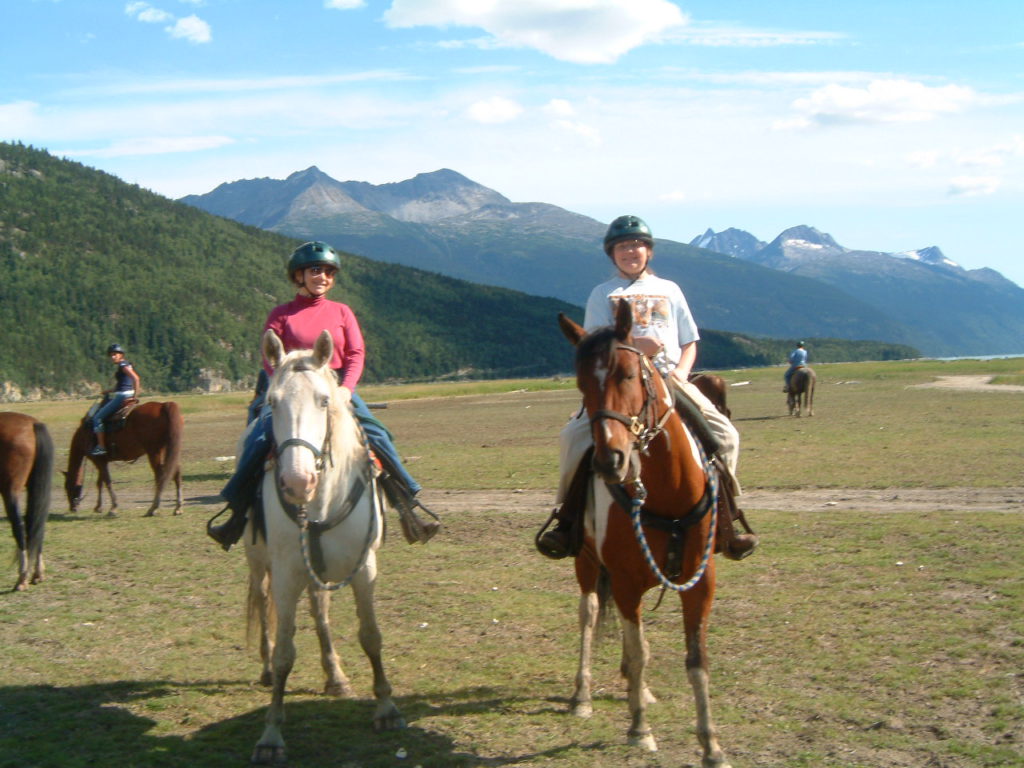
Thursday, August 7, 2003 – Glacier Bay
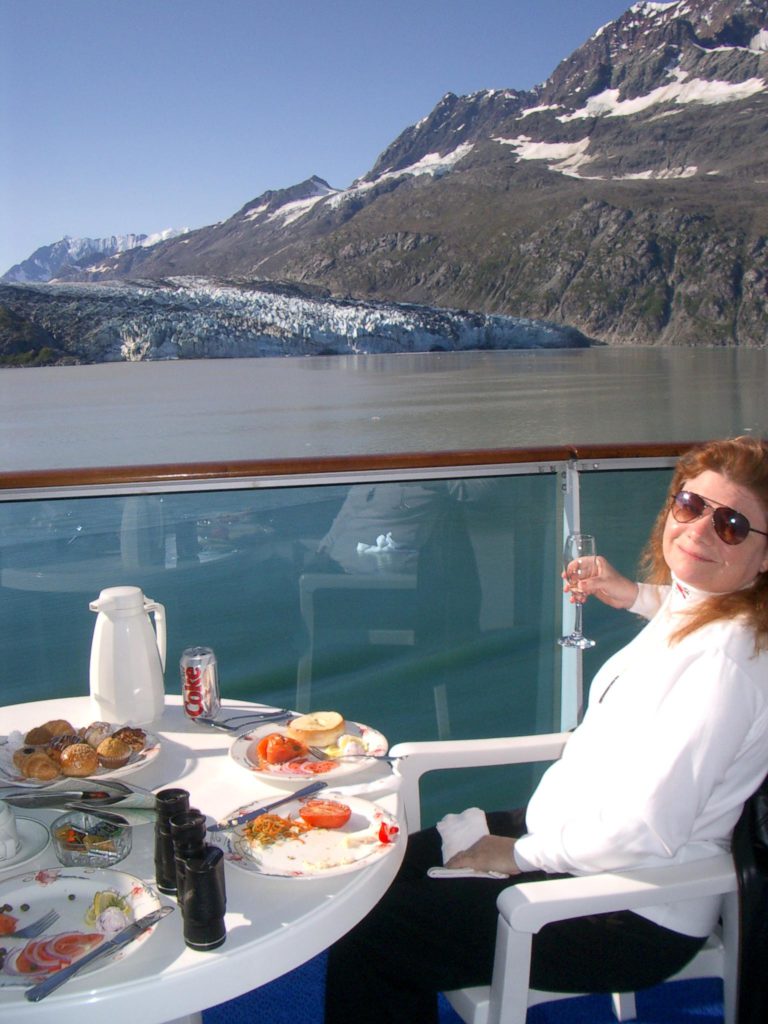
When explorer Captain George Vancouver passed this was in 1794 there was no Glacier Bay, just an icy depression in the coastline. But by the time of John Muir’s visit in 1879 the glaciers had receded forty miles! Since then they have retreated another 20 miles, leaving deep fjords for our ship to explore. There are many reasons for the retreat of the glaciers, including the end of the little ice age and the effects of major earthquakes. It is unclear whether man’s activities have also contributed, since a number of the glaciers are actually advancing.
Some of the glaciers are quite dark because they carry massive amounts of gravel down to the sea. As a result the water is quite cloudy. Because it is also cold, large numbers of deep water Lantern Fish can be found here, fooled by the cold and dark into thinking they are in the deep sea. There are many small fish, and the turbulence caused by the falling ice stirs the water, bringing them to the surface for the birds to feast upon. The surrounding land is — contrary to our expectations — quite verdant, and is home to much wildlife, including bears. The bay waters are well suited to porpoises, humpback whales and sea otters. Princess Cruises prepared a spectacular room service breakfast with Moet Champagne for — I suspect — about half the passengers, all out on their balconies to see the glaciers. The most spectacular was the Margerie glacier. Taking advantage of the fact that our cabins are on opposite sides of the ship we spent an hour or more watching giant chunks calve from its 200 foot face, accompanied by thunderous crashes. One seemed to come down every ten minutes or so. At other times ominous cracking sounds emanated from deep within.
A note about the weather: visibility today was about fifty miles. This apparently almost never happens. The bay is usually fogged in. Our cabin steward told us this is the first cruise this summer when it hasn’t rained, and on many it has rained every day. We feel very fortunate.
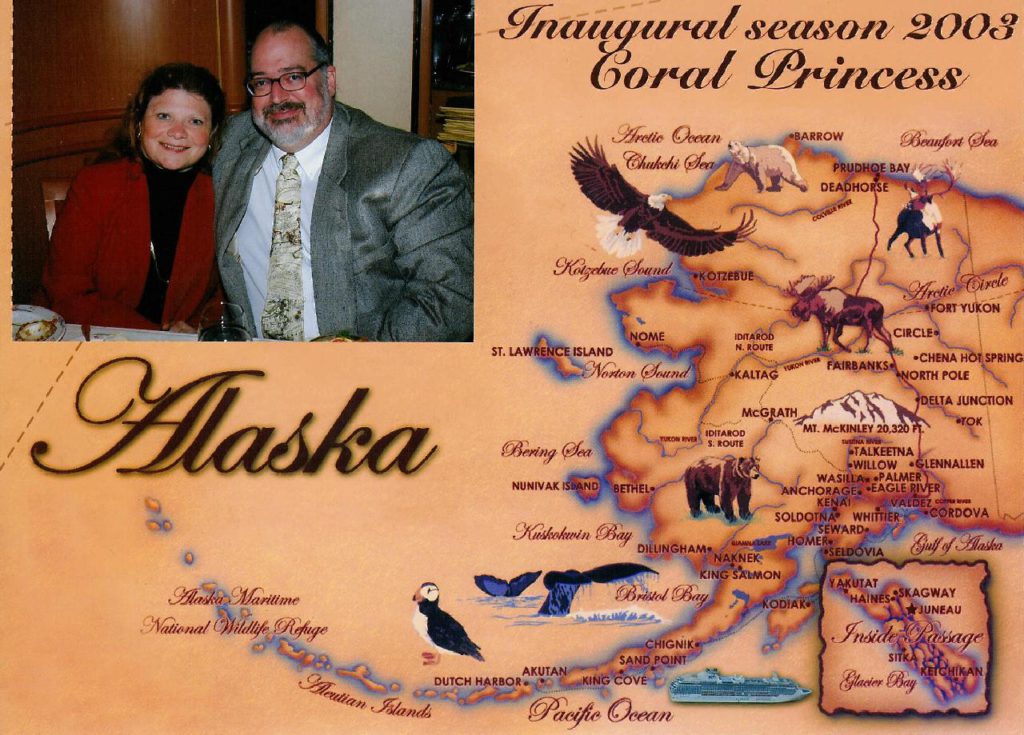
Friday, August 8, 2003 – College Fjord
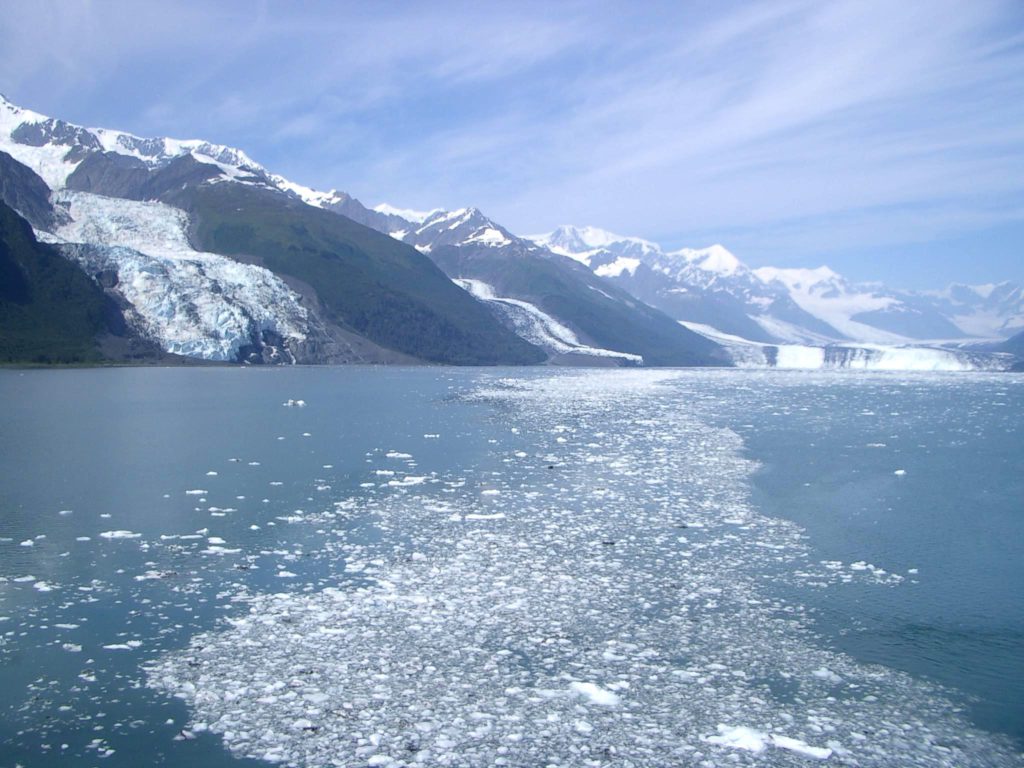
College Fjord is a narrow (three-mile-wide) channel that was explored in 1899 by a group of travelers which included John Muir. They named each of the dozen glaciers after eastern colleges: Harvard, Yale and so on.
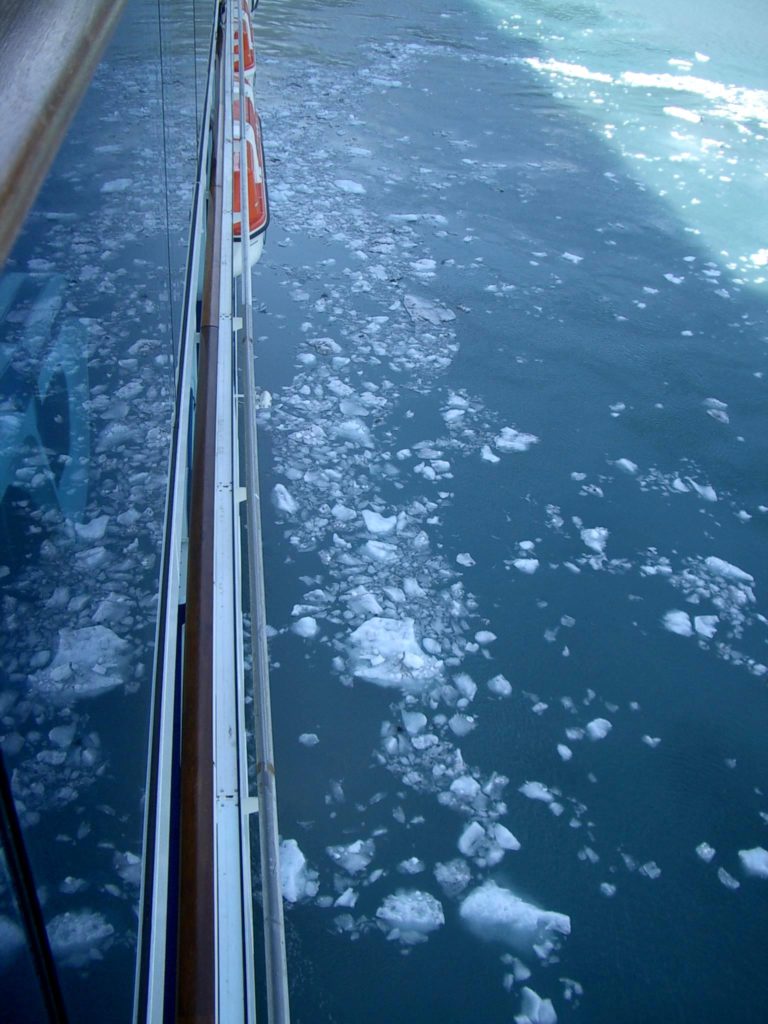
Again we were lucky, as this was the first cruise in a month that was able to see the glaciers. There was much more floating ice than in Glacier Bay. It made a strange crackling noise as the ship’s transverse propellers rotated us through it.
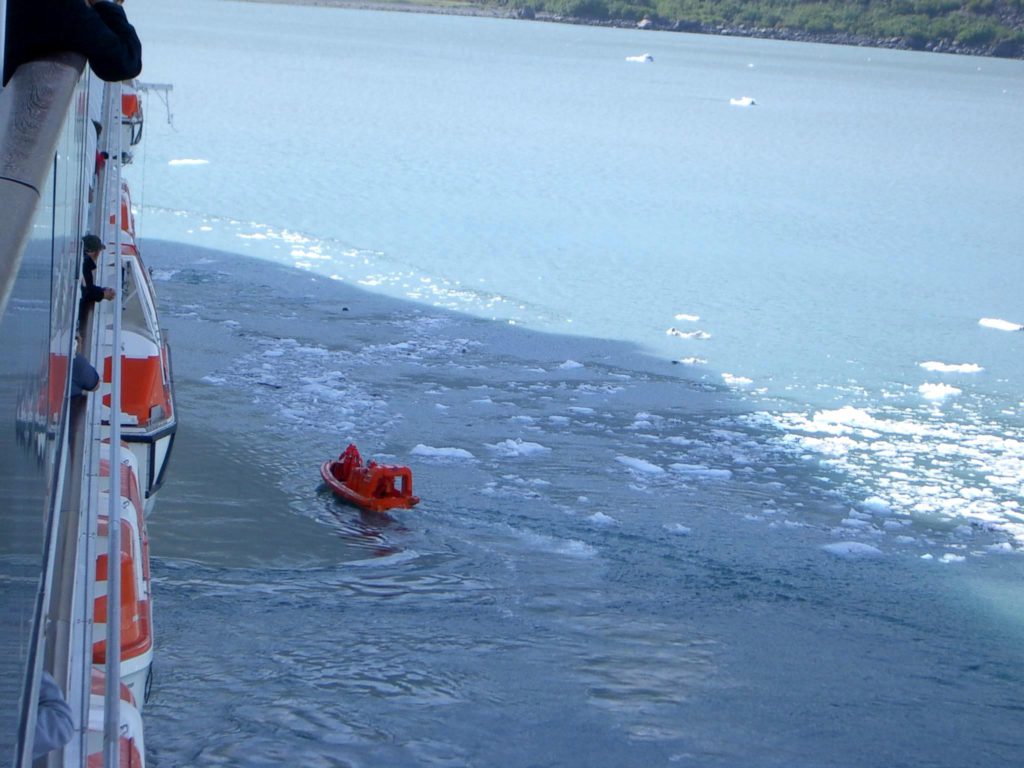
The ship’s photographer’s set off in a small orange rescue boat to take our picture against the icy backdrop.
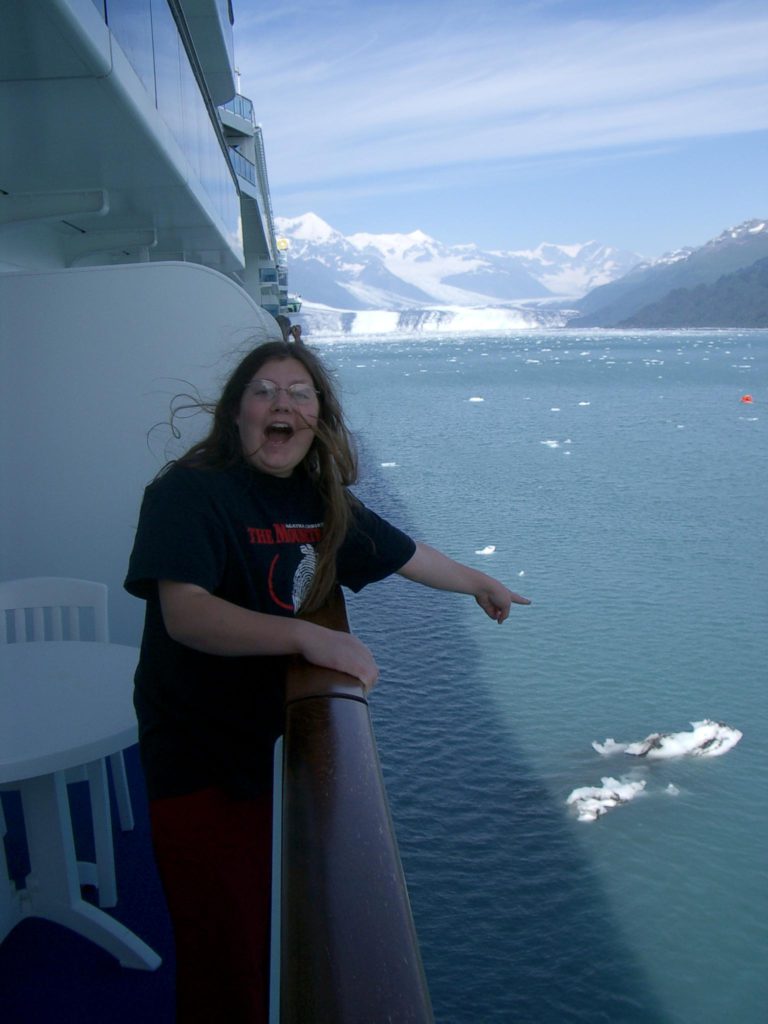
That “little” berg that Dani’s is pointing at was about forty feet long.
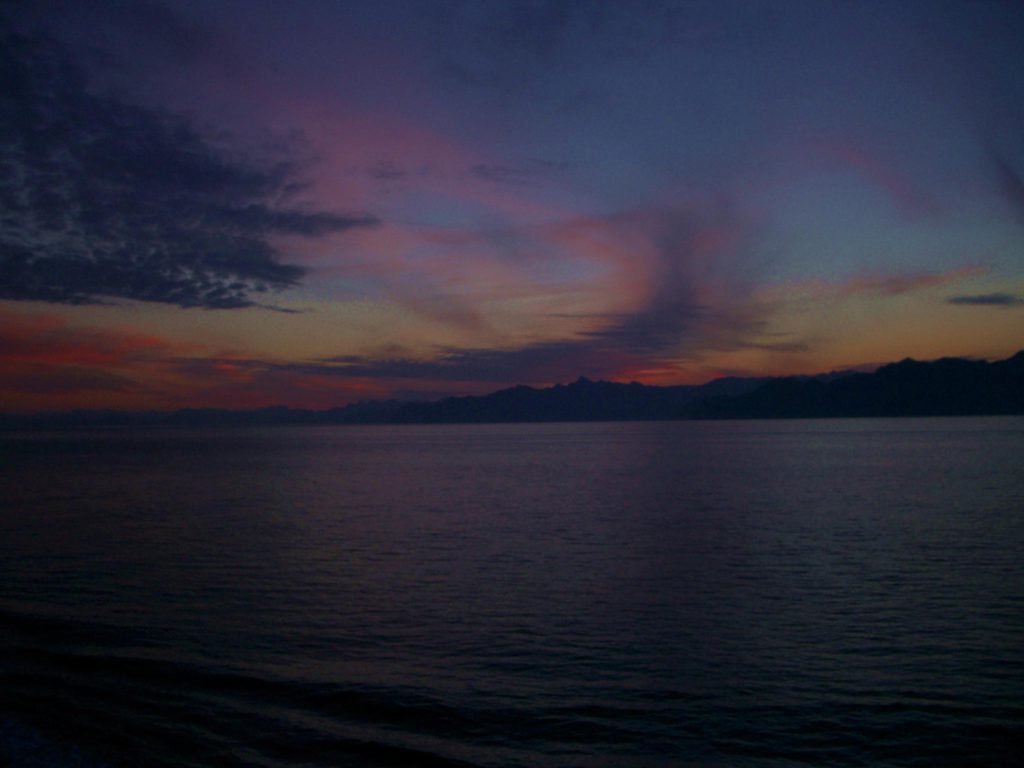
This picture of the sunset (in the northwest) was taken from our balcony at 10:30 pm.
Saturday, August 9, 2003 – Seward to Fairbanks
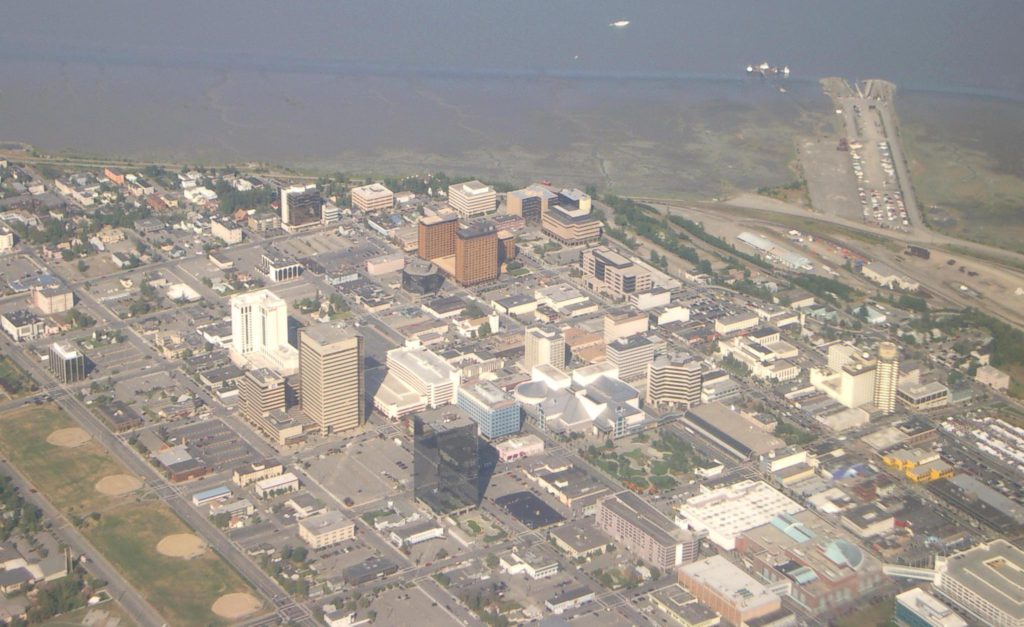
We left our beloved suite aboard the Coral Princess at 7am and boarded a coach at Seward for the three hour trip to Anchorage.
Our driver, Crystal, was a native Alaskan who grew up 40 miles to the north, in the only Alaskan farming community. Founded during the depression, it was a agricultural experiment that invited Minnesotans — including Crystal’s grandparents — to come to Alaska and homestead forty acres. Not many of the original families stayed, but those that weathered the minus 65 degree winters were rewarded with extraordinarily fertile land that, because of the long growing season, produces phenomenal crops, such as 100 pound cabbages.
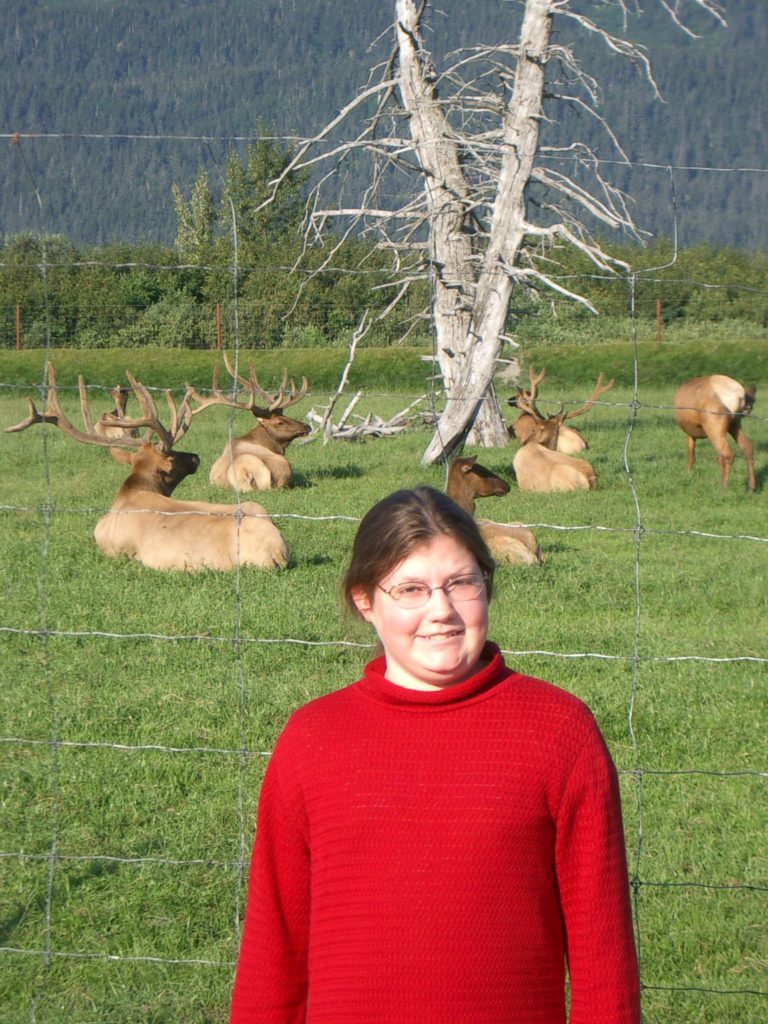
On our way across the Kenai Peninsula we stopped at the Arctic Wildlife Rescue facility, which rehabilitates injured and orphaned animals. We spent a pleasant hour watching moose, caribou, bears, and other animals before continuing on to Anchorage.
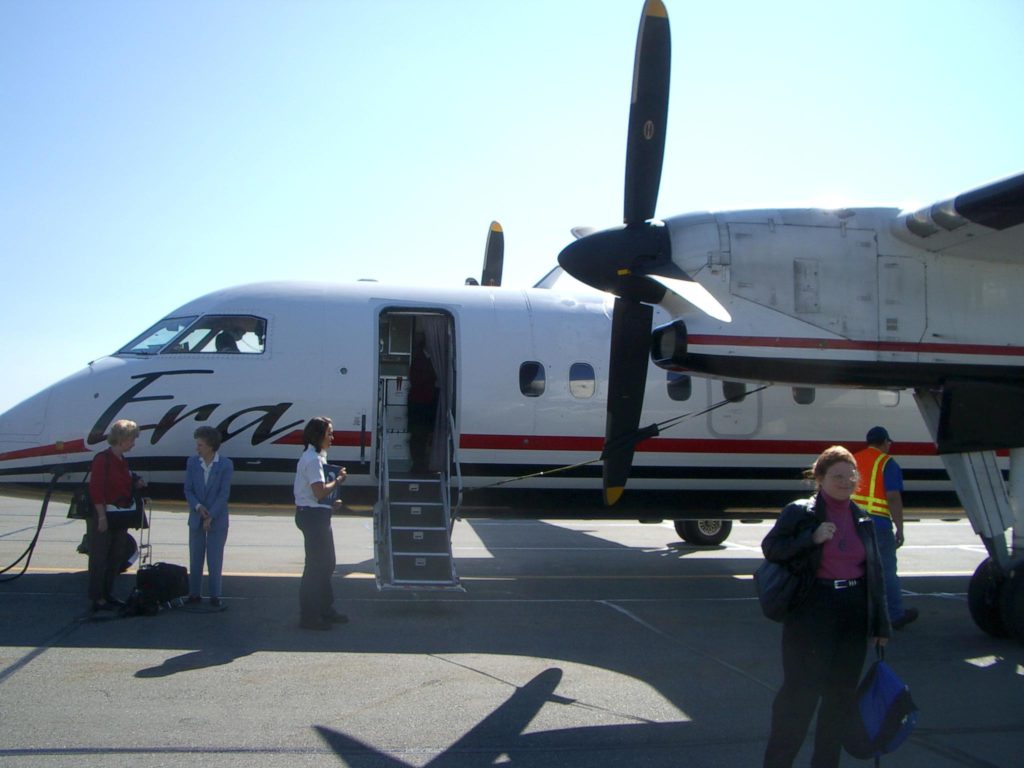
There we caught our charter deHavilland turbo prop along with our twenty fellow travelers. It was a very comfortable plan, and the one hour flight to Anchorage passed quickly.
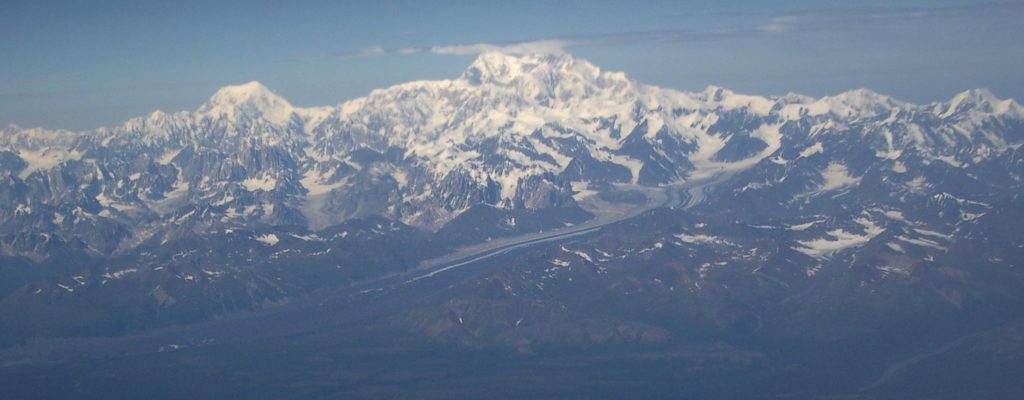
We were again blessed with very clear weather. Denali — or Mount McKinley, as it is also known — is the tallest peak in North America, at over 20,000 feet. It has the reputation of nearly always being shrouded in clouds, but we could see it from 70 miles away, and it thrust dramatically from the landscape as we passed over it. Note the glacier flowing down its side. The terrain around Anchorage was surprisingly flat, green and lake-filled. In fact it looked exactly like Central Florida. As we approached Fairbanks the ground became mountainous, then leveled out into a plain covered with fir trees and oxbow rivers. There was very little snow in Alaska this past winter, and it is 75 degrees in Fairbanks today. Oddly, the mild winter has greatly reduced the mosquitoes — unofficially known as the Alaskan state bird — because there were no pools of snow melt for them to lay eggs in.
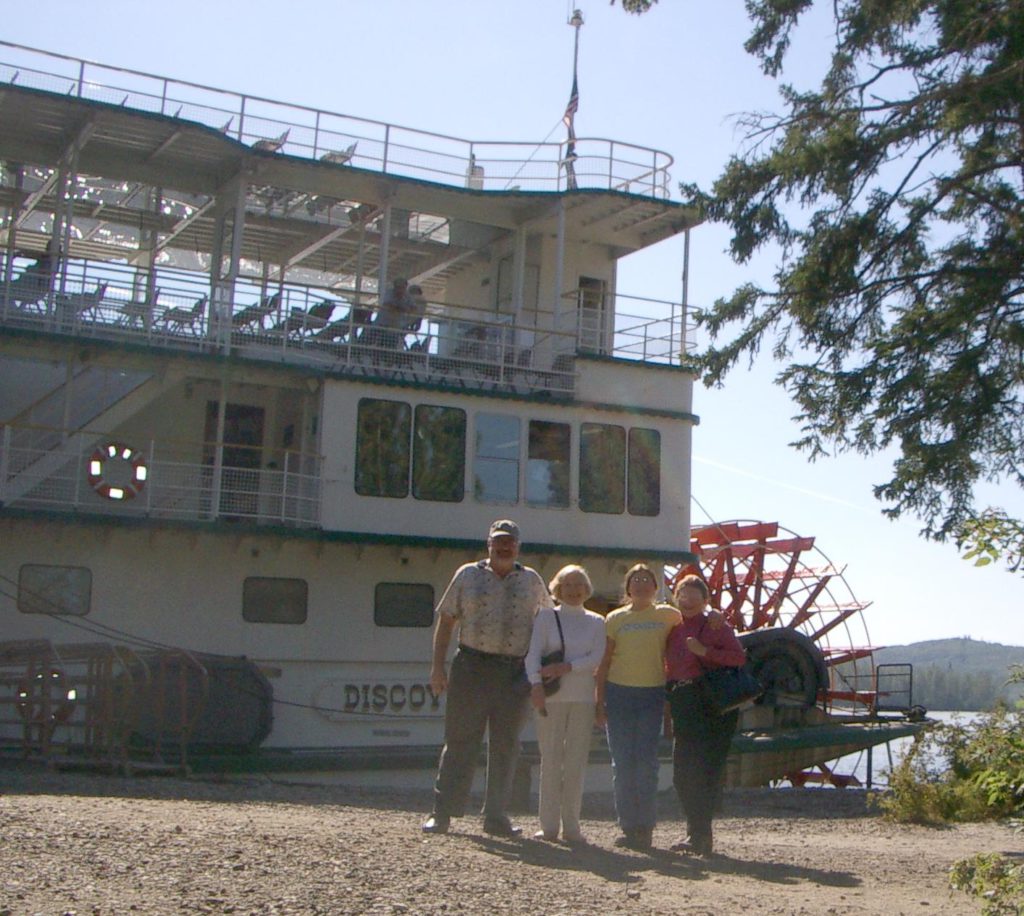
In Fairbanks we took a two-minute bus ride from the airport to the Riverboat Discovery III. I expected this four-hour riverboat excursion to be a hokey tourist fiasco, and a way to stall us until our rooms were ready, but it turned out to be the highlight of the day. The family-run operation is very professional, and is far more than a riverboat ride. Along the way we watched a prop plane take off and land in about 200 feet (1 in 60 Alaskans holds a pilot’s license), interviewed workers at a husky training camp, and learned how to smoke salmon from an Athabascan native.
These presentations were incredibly professional. The boat stopped at each location and the MC — who was on live video broadcast to all for decks — could talk seamlessly with people on the shore wearing radio mikes. Several roving cameras focused in on the action onshore and were edited into the video feed in real-time. A top notch production.
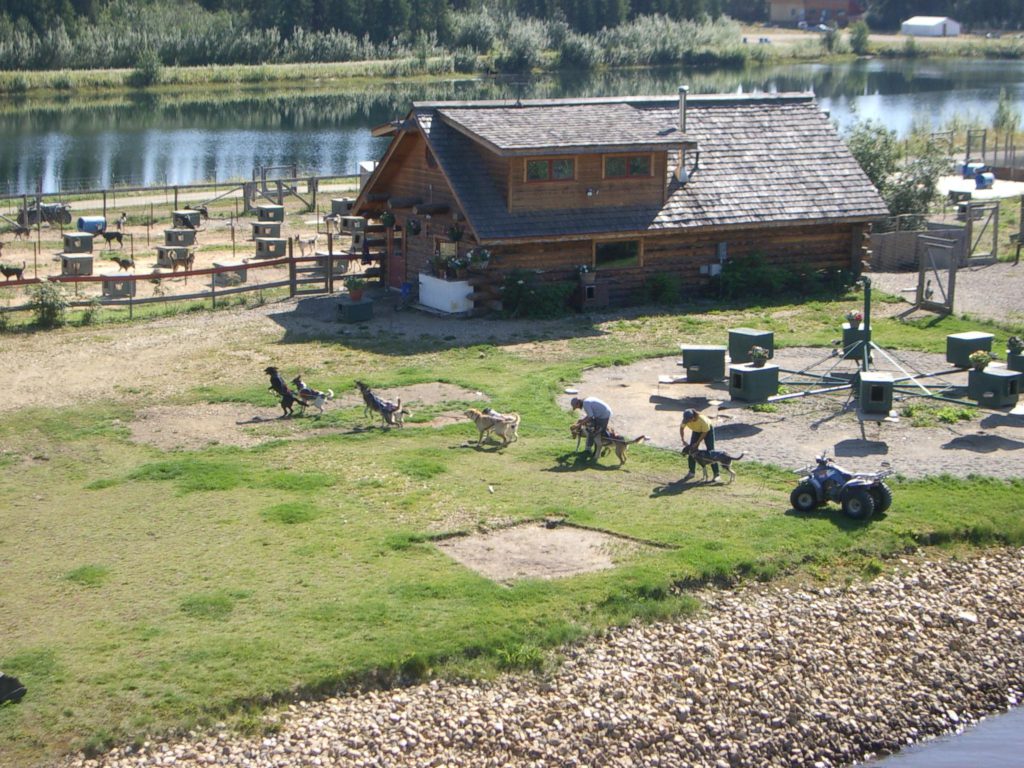
At the husky training camp — owned by Susan Butcher, winner of four Iditarods — we were amazed at the dogs’ enthusiasm as they were hitched to a four-wheeler for a one kilometer race around the lake. (The Iditarod is a bit longer — Fairbanks to Nome, over 1000 km. ) In the photo you can see the lead dogs leaping, trying to “break free” their pretend sled.
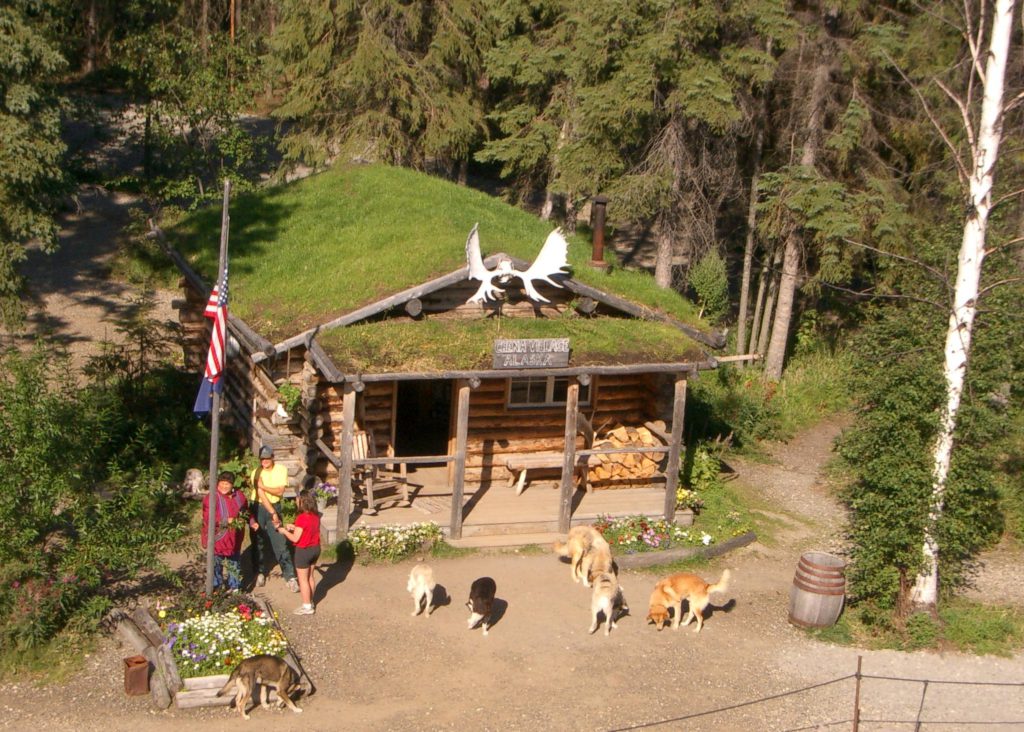
On the way back we stopped at Chena Village, a recreation of several periods in Native American history, where we learned about hunting techniques, animal hides and bead work. We also got to visit with some of the huskies again. We checked into the Fairbanks Princess Lodge, a pleasant accommodation similar to some of the new National Parks lodges.
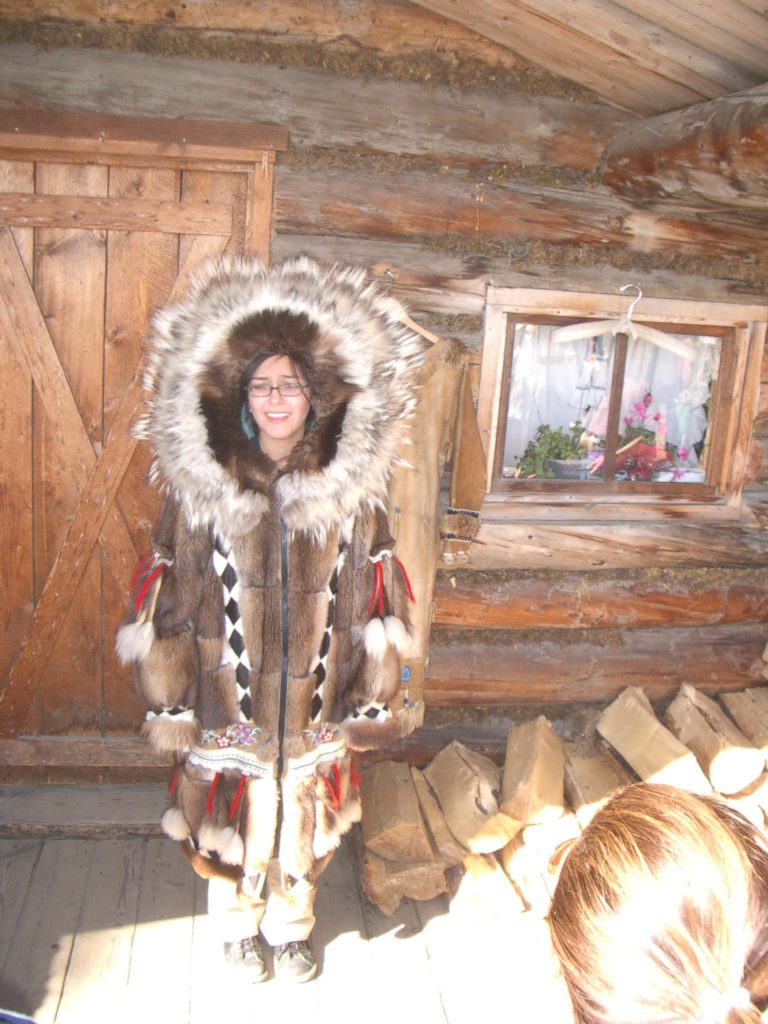
Dinner was a bit of a fiasco. Our waiter, Stephen, had apparently never actually dined in a restaurant in his life. He had trouble with concepts such as removing plates before serving new ones, and was unaware of the meaning of such exotic words as “Perrier”. The manager must have been aware of the problem(s), because without our showing the slightest irritation we were delivered a free bottle of wine — which we almost had to demonstrate how to open.
As I write this it is going on 11 pm, and it’s still bright daylight outside. Time to pull the blackout drapes.
Sunday, August 10th – Denali
The Midnight Sun Express pulled out of Fairbanks at 8:15 am. For the first hour we passed through tall birches where the ground was soft and stunted black spruce struggling to grow above permafrost. Our Ultradome car’s ceiling was almost entirely glass and our vantage form the second floor was glorious. We could also step out onto the open observation platform at the rear of the train for some fresh air (75 degrees and clear again today). Downstairs we had a glorious breakfast of pancakes, eggs, and breakfast burritos(!)Gradually the terrain became mountainous, and the train followed a raging, silt-filled river up into Denali National Park. We passed white water rafts and kayaks . At noon we arrived at the Denali Princess Wilderness Lodge. Our room is on the second floor of a log structure, perched above a bend in the Nenana River. Our trip included a four hours natural history tour on a school bus, but since we’ll be on a bus from 8 to 5 tomorrow, we all decided to skip it. We enjoyed the ambiance of the river and view of the national park, napped, and had an early dinner in the lodge’s casual dining room.
In retropspect our visit to Denali was somewhat pointless, since you can’t see the peak from the lodge or its environs (I guess that’s what the Princess Mt. McKinley lodge is for) and we’d already seen it from the air, anyway. I suppose for train buffs it was worth it to take the Midnight Sun Express. It’s not the most efficient transport though — if we’d taken it all the way to Anchorage it would have been a twelve hour trip. We did the reverse by deHavilland yesterday in only one hour.
Monday, August 11, 2003 – Denali to Copper River
Today we had a long bus ride over unpaved road from Denali to Copper River. Fortunately it took much less than the advertised 10 hours, but we were still on the bus from 8am to 3pm except for a few rest stops. This was our first overcast day, with a few raindrops keeping the temperature below 70 all day.
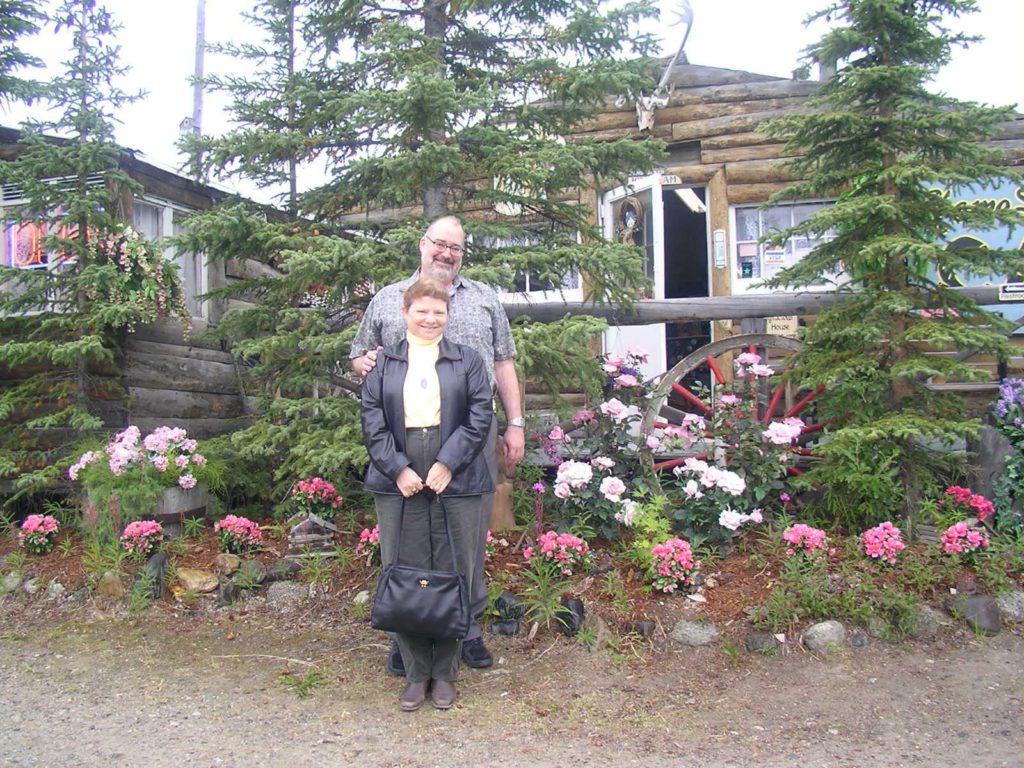
The road was a bit monotonous. It passed through rolling hills of stunted black spruce and crossed many rivers; the Alaska range was often visible in the distance. The only noteworthy event was when a moose ambled across the road in front of us. Our first rest stop was the rather funky Gracious House, a lodging, cafe, bar and gift shop built mostly from army surplus Quonset huts. A strange army surplus cargo mover served as their marquee.
Lunch was at the Tangle River Inn — hot dogs $12 but that includes chips and a drink. Hey, this is the middle of nowhere. Even the electricity is from a generator. It was actually quite tasty.
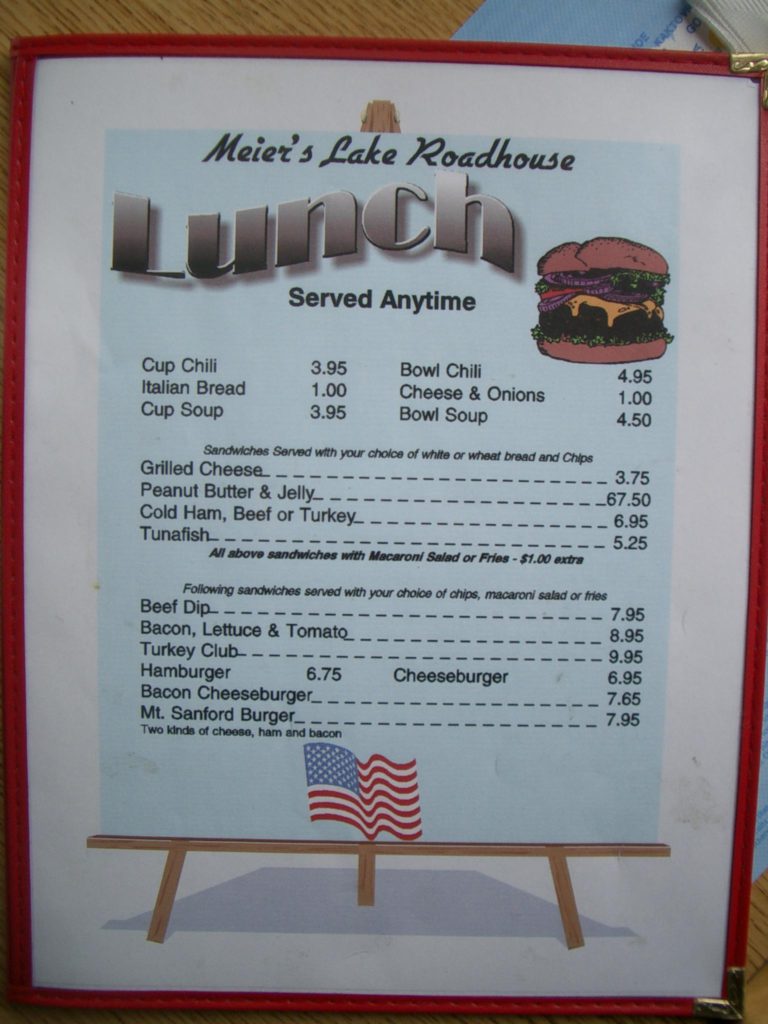
Our final rest stop was at Meier’s Lake Roadhouse. Best bring some serious money if you want that peanut butter sandwich (see menu).
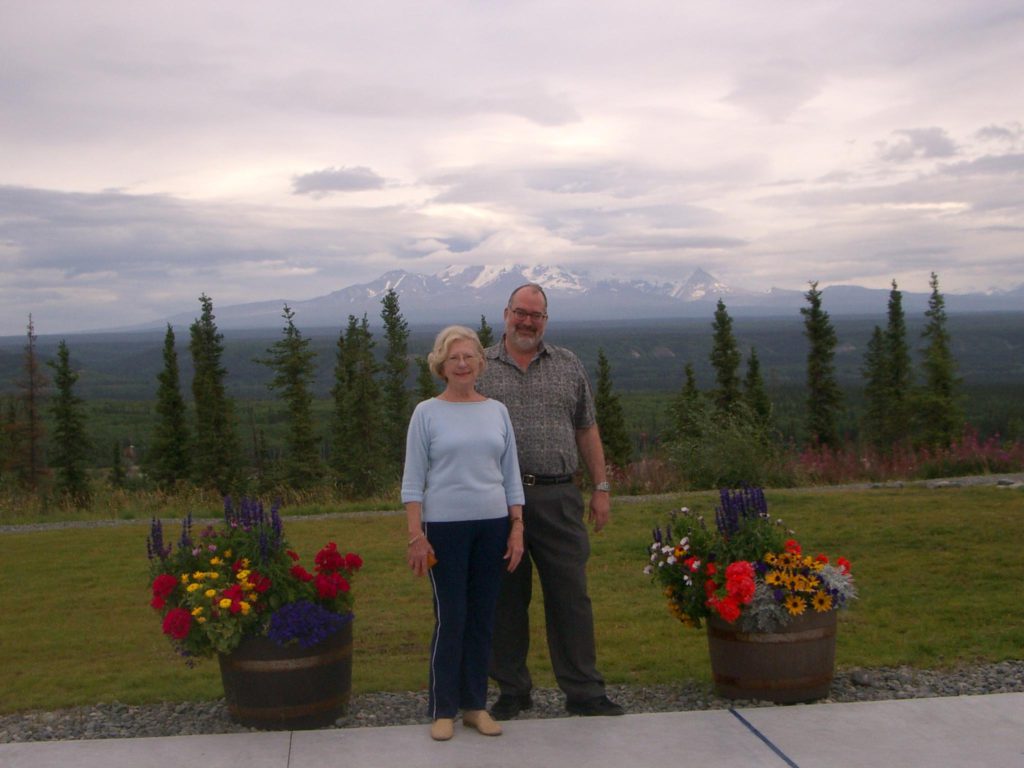
The Copper River Princess Wilderness Lodge is their newest and nicest facility. Opened in 2002 and still undiscovered by most travelers — just ten of us arrived at the empty hotel, although a few more joined us later in the evening — it sits on a hill overlooking the Klutina River.
Two story windows provide a breathtaking view of Mt. Wrangle, an active volcano.
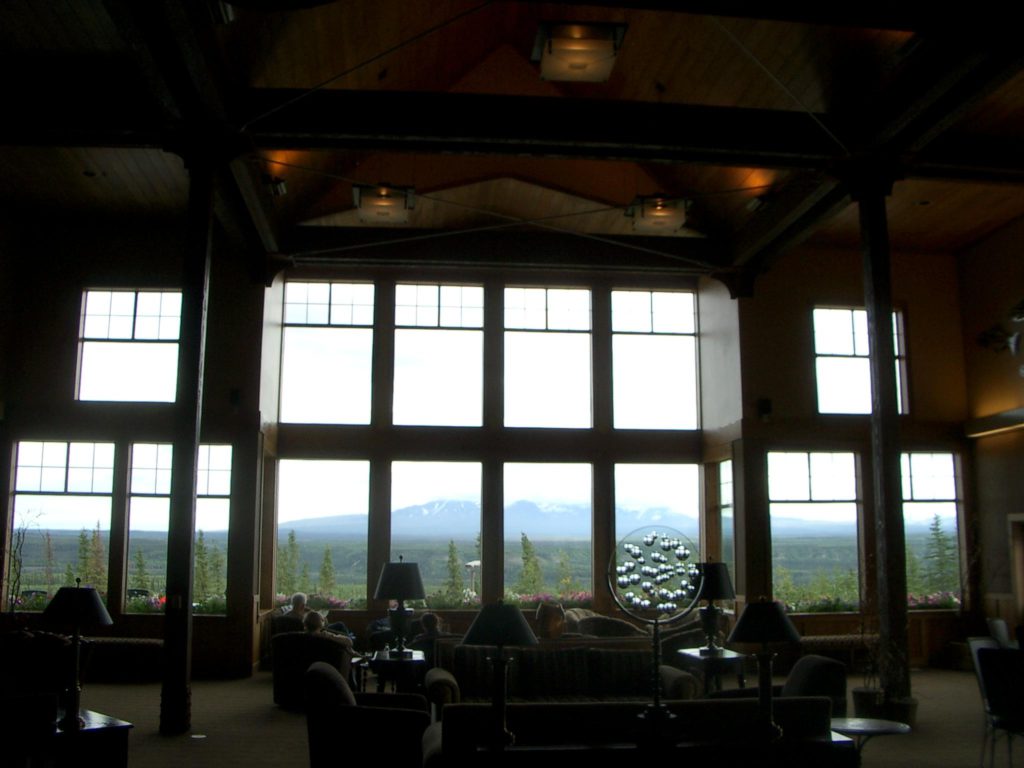
We had drinks in the bar — I particularly liked their mosquito lights — and an early dinner in the expansive dining room.
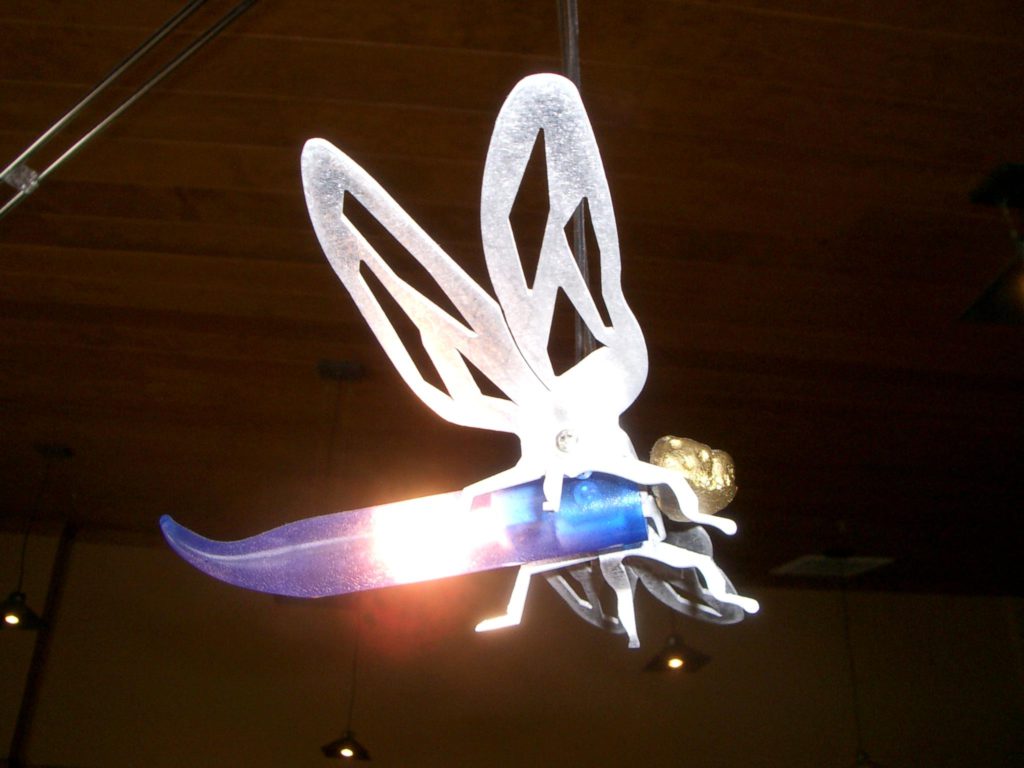
Tuesday, August 12, 2003Copper River
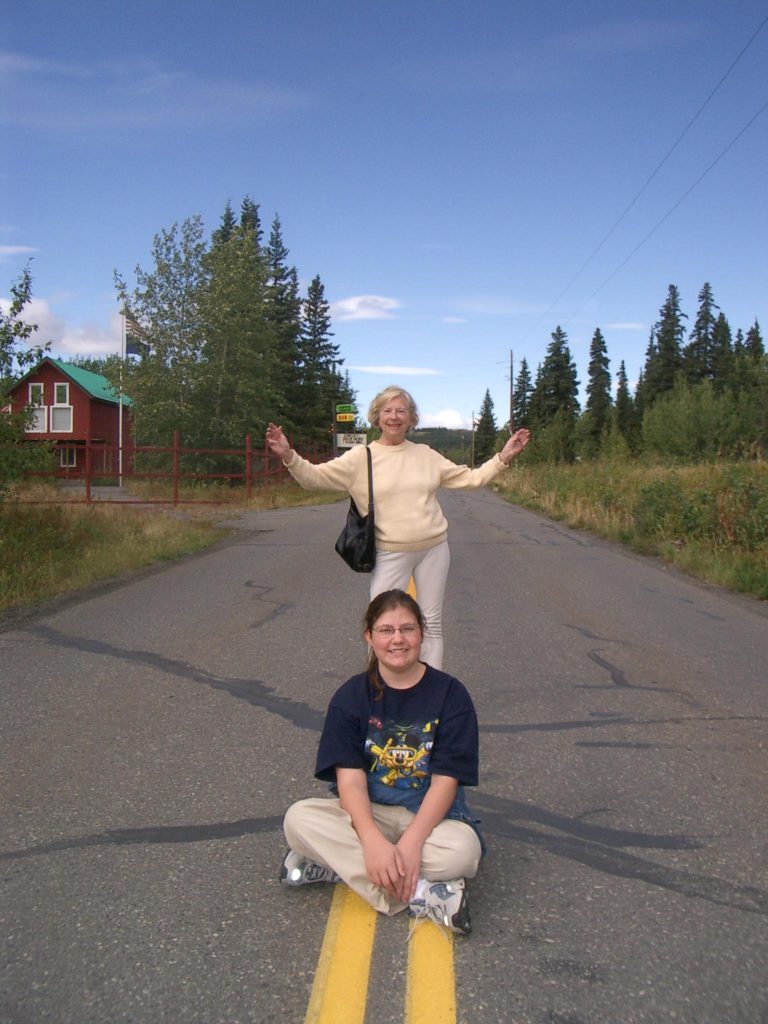
We had a nearly private hotel today. A few groups came in yesterday afternoon, but by 8 am they were already gone, leaving the lodge to a dozen or fewer guests. The weather was pretty, at times blustery, with many clouds, some of which looked threatening. But it remained nearly seventy, and no rain fell.
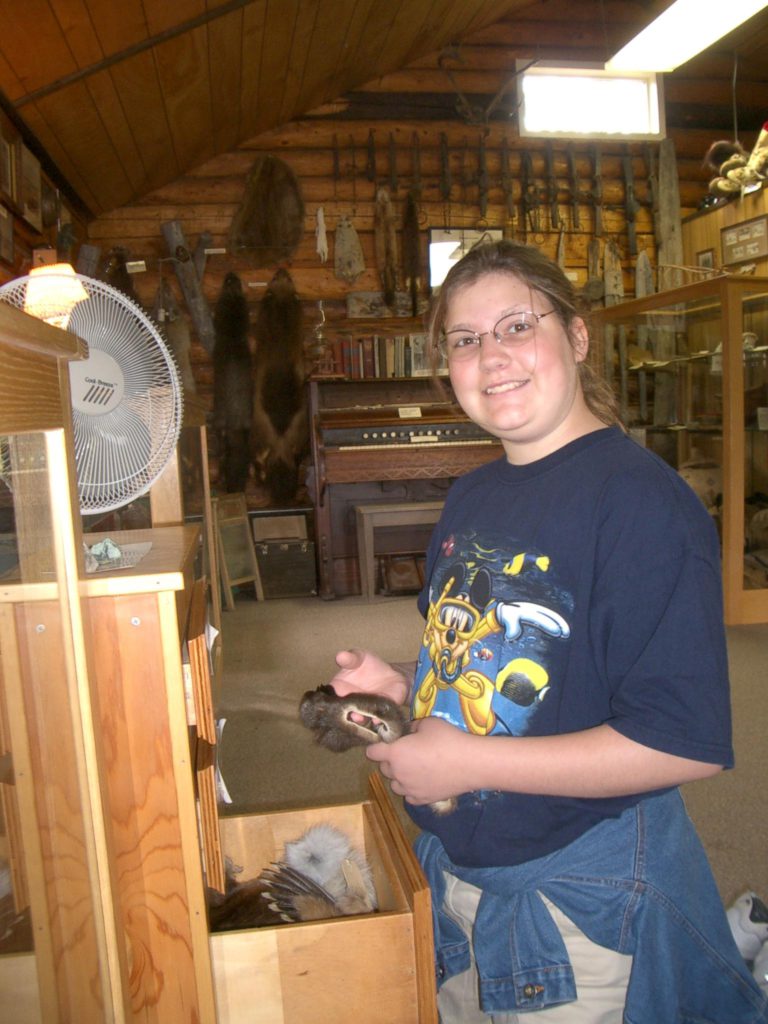
Dani, Pamela, and I rode the shuttle to Copper Center while Linda slept in. Copper Center was a staging point for first gold and later copper miners, but today it is a mere scattering of buildings.
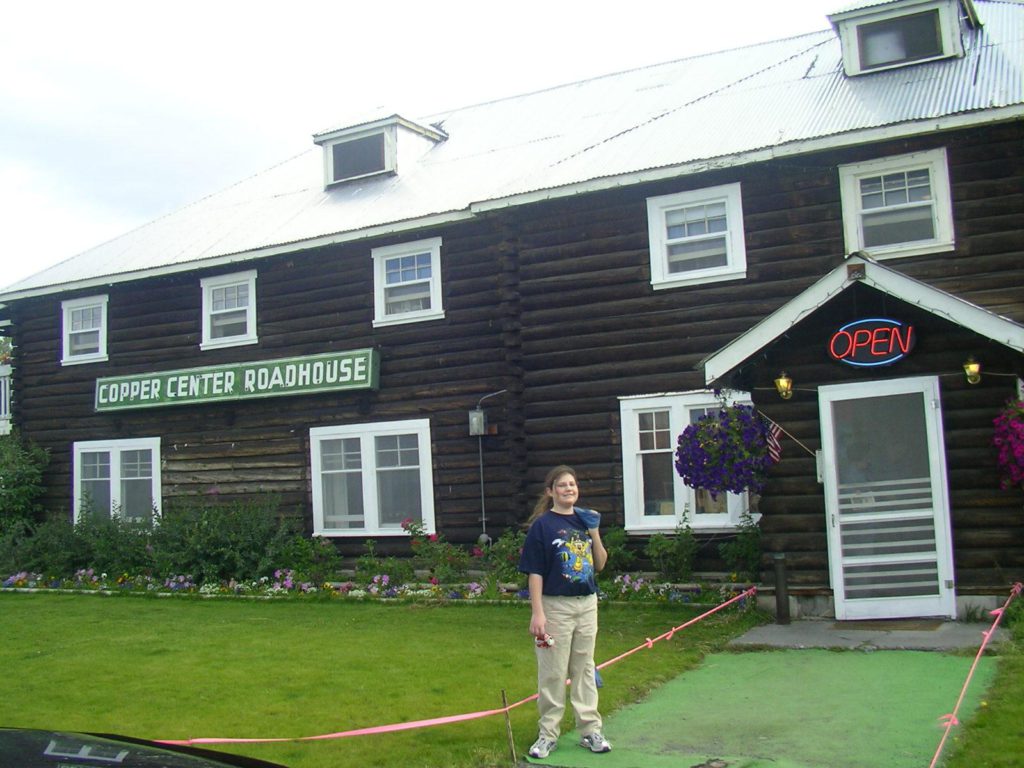
We poked around a one-room museum of mining artifacts, and visited a bar with an elaborate model railroad that ran inside and outside through two buildings, at times elevated on Plexiglas. Well, that’s about it for Copper Center.
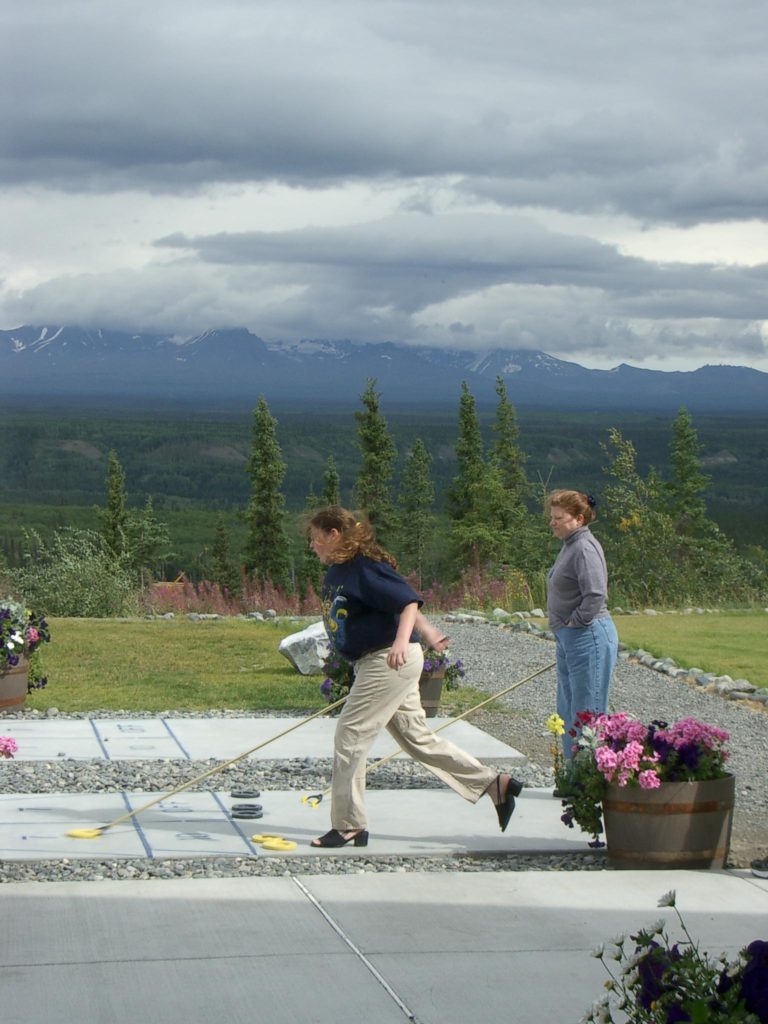
Back at the hotel we played some shuffleboard. In the afternoon I arranged for Dani, Linda and I go on a ninety-minute family rafting trip. After several visits to the outfitter’s desk I was told the time had change to 4pm.
At the appointed time we joined a couple from Washington State and a man from France in the lobby, where we were picked up by two rafters, Randy and John, and Buck, a 79-year-old character who seemed to have stepped straight out of a Robert W. Service Poem. We climbed into a dilapidated van and started up 14 miles of what can only imaginatively be called a road.
To say that we were amazed that the van didn’t simply fall apart on the way up would be an understatement. On each right hand turn, clouds of dust poured in through the two inch gap between sliding door and sidewall, and the few fixtures still attached rattled on every rock and pothole. Since the road was comprised of nothing but rocks and potholes, this was a lot of rattling.
Along the way we learned that the Klutina River is the third fastest in North America, an can travel at up top 15 miles per hour. It’s a Level 3 river, meaning you can survive it in a raft if you remember to steer. The van climbed 2400 feet, then descended only a few hundred to join the river at the only accessible spot for miles.
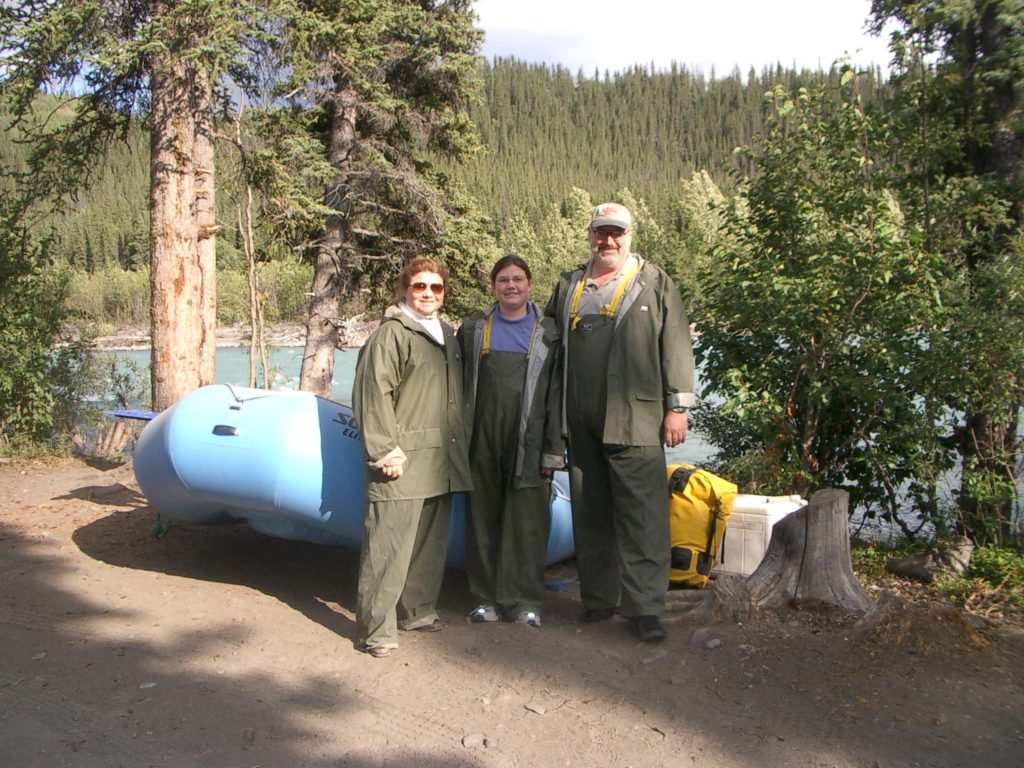
While the rafters unloaded two rafts from the trailer we donned rubber overalls, jackets, boots and life preservers and received instructions on what to do if we fell into the 38-degree water — basically, die of hypothermia unless we were fortunate enough to drown or be bashed to pieces on a rock. It was near the end of this explanation. as Buck drove away to meet us down river, that it dawned on me: we were on the wrong tour. This wasn’t the 90-minute family float trip, it was the full-fledged four-hour white water rafting trip. That explained all the, er, white water.
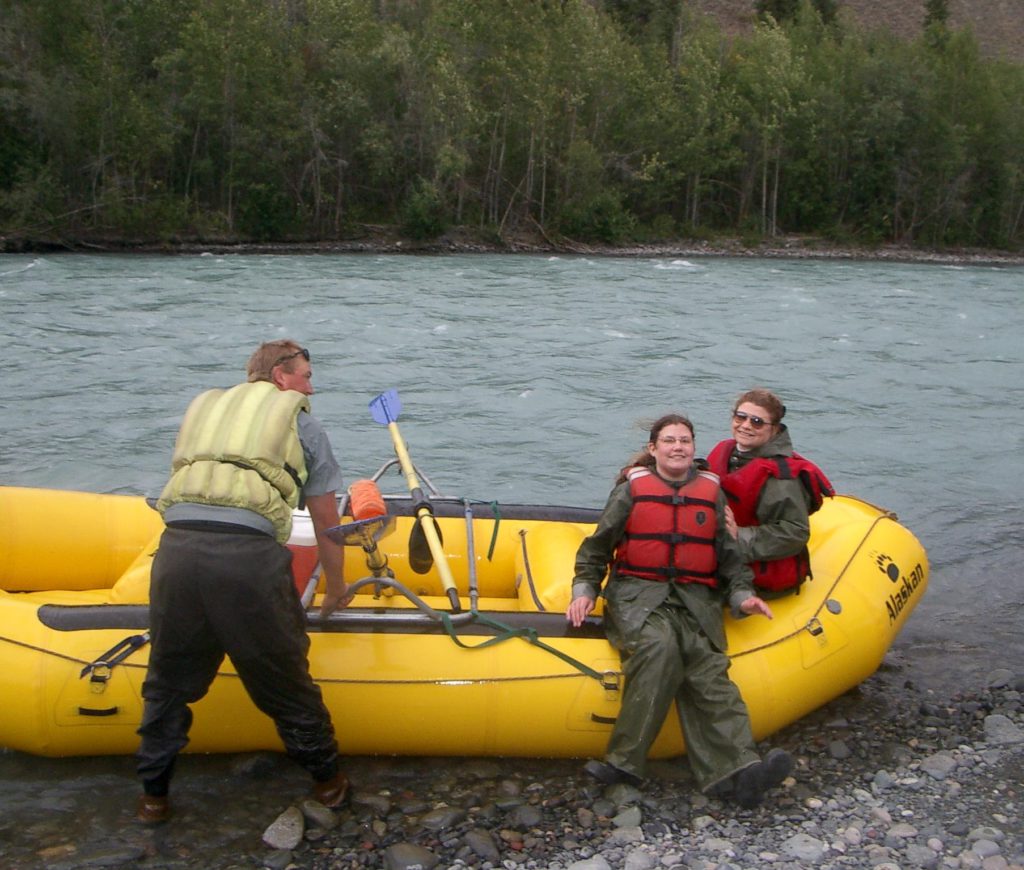
We piled into our raft — Dani and Linda in the front, me in the back, with John rowing, and the others in the second raft. White water proved to be Dani’s thing. Soon John was making sure she was on the leading edge of every wave. And his masterful steering assured that we hit every wave for 14 miles. Her delighted cackling could be heard in the other raft, which trailed several hundred feet behind. For two hours we splashed and twirled downstream. Along the way we saw dozens of bald eagles, either perched on trees or driftwood or buzzing the surface of the water. I also saw a huge salmon leaping out of the water on its way upstream. The geology along the way was spectacular, too, with the water cutting into steeps banks hundreds of feet high revealing many layers of strata. The sun kept us warm for most of our journey and the waterproof clothing did its job.
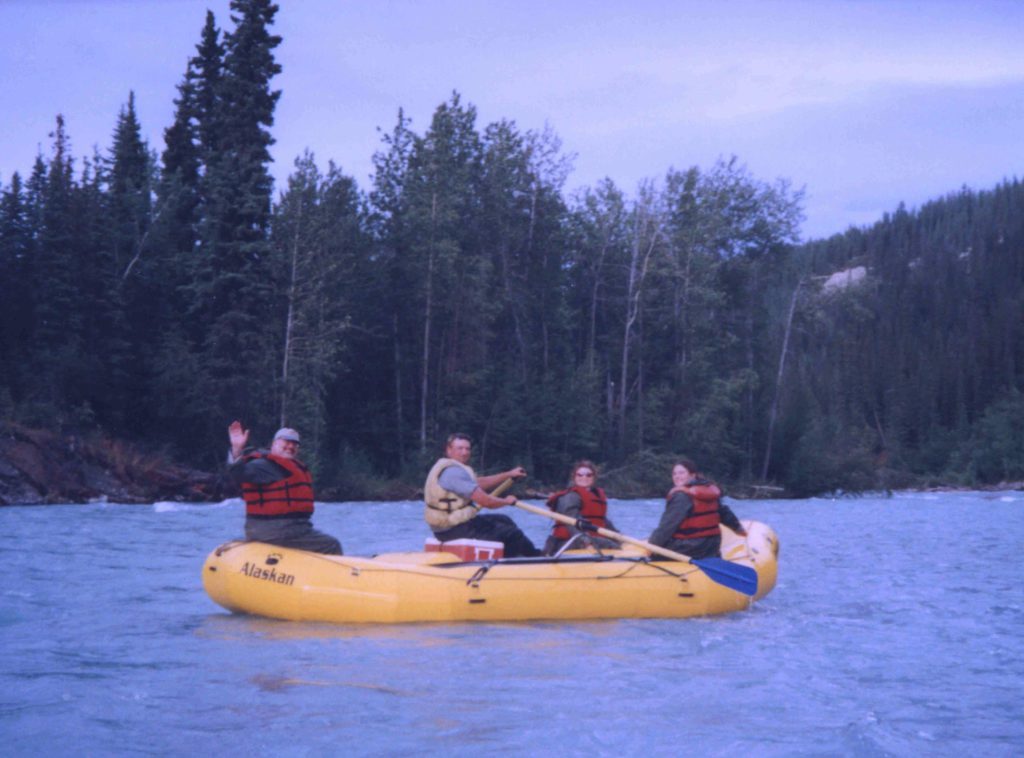
Only Dani’s collar and Linda’s sleeve were wet. It didn’t turn cold until we were getting out of the rafts near our lodge, and we gratefully climbed into the van to get out of the wind. A few minutes later we were back at the lodge where we were greeted by a worried Pamela, who wondered why our 90-minute trip had taken four hours. We assured her that a good time was had by all.
Wednesday, August 13, 2003 – Back to Anchorage
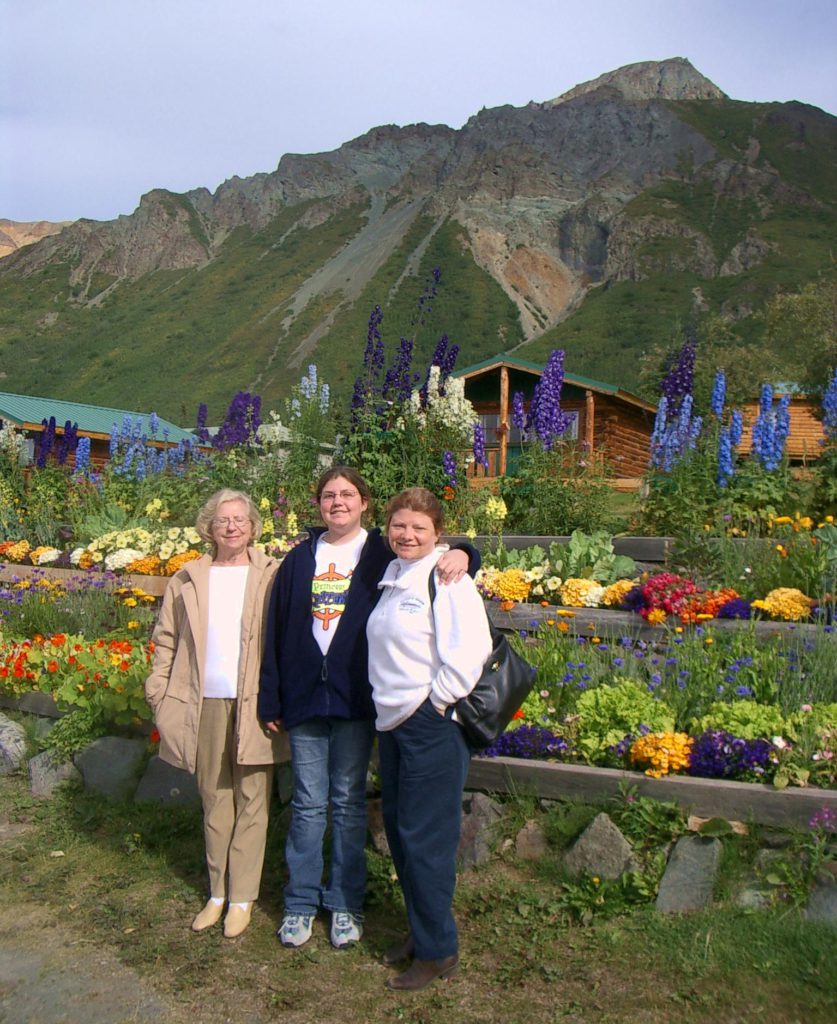
Our drive along the Glenn Highway from Copper Junction to Anchorage was beautiful. We skirted snow-covered mountains, stopping at the Sheep Mountain Lodge for an early lunch of soup and sour dough bread – check out those flowers behind us – 18 hour days are good for something!In the early afternoon we passed the Matanuska Glacier, an unusual formation of ice that travels one foot per day down an otherwise ice-free valley. By mid afternoon we had reached our hotel in anchorage, The Captain Cook. It’s a nice high-rise in an otherwise unattractive city. Captain Cook led an amazing life, circumnavigating the globe three times, exploring from the artic to antarctic, and discovering Australia and Hawaii in the process. Wherever he went he made charts and took soundings. Many of his charts are still in use. Cook explored the waters around Anchorage in 1778, naming them Turnagain Arm because he was once again forced to turn back in his quest for a Northwest passage. Today these tidal flats are known as Cook Inlet.
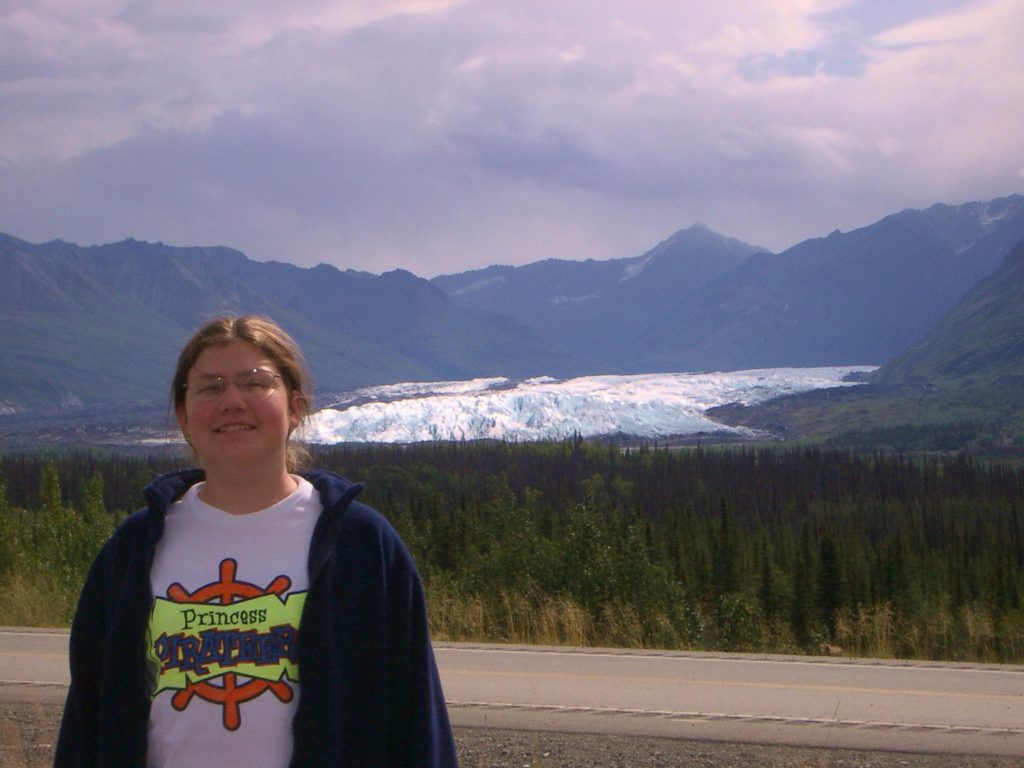
We had a fabulous dinner across the street from the hotel at The Corsair: Escargot, Caesar Salad made tableside, Chateaubriand, Bananas Foster, and real Café Diablo made the way it used to be before the insurance companies got in the act: by pouring flaming brandy down intertwined clove-studded orange and lemon peels whilst setting the tablecloth and various other parts of the restaurant on fire. Yum.
Thursday, August 14, 2003Anchorage
A final day in Alaska was a quiet one, spent walking around Anchorage, my nominee for ugliest city in the United States. It was easy to see where hundreds of feet of the city fell into the tidewater flats during the 1964 Good Friday earthquake, which registered 9. 2 on the Richter Scale — the strongest quake ever recorded in North America. I remember, as an eight-year-old, waiting for the resultant to Tsunami to travel down the coast of California, where it killed 24 people. Amazingly, only 115 died in Alaska, where nearly every building fell down. The destruction caused by the quake necessitated the rebuilding the entire city of Anchorage. Unfortunately for Anchorage, 1964 did not represent a high point in American architecture.
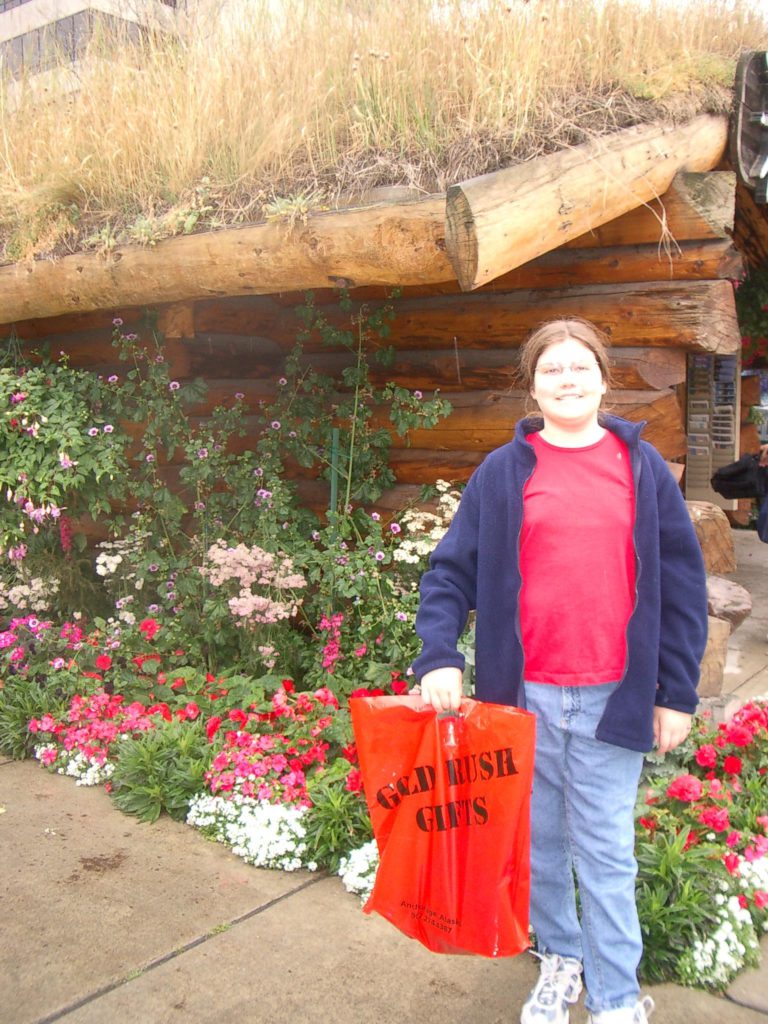
We are constantly amazed by the beautiful flowers everywhere in Alaska. They line the street in hanging baskets, window boxes and planters. The long hours of daylight work wonders. It was a little drizzly today, but didn’t require an umbrella or even a jacket. Dani and Linda did some souvenir shopping while Pamela and I browsed the Cook Inlet Bookstore for used paperbacks.
Then Dani, Linda and I had lunch at La Mex, a local Mexican restaurant where a single appetizer platter filled us all up.
Afterwards we stopped at The Alaska Experience where we saw a well -filmed, deadly dull, 70mm, 180-degree, interminably long film about Alaska. The dialog, narrated by the guy who narrates every dull documentary you’ve ever seen, might as well have been arranged in random order, for the amount of sense the film made. It was followed by a documentary on the Alaska quake which inexplicably featured a lisping German geologist as host. The exhibits were considerably more interesting, including a working seismograph that went spastic if you jumped up and down.
On TV we watched in amusement as New York and most of the east coast were brought to a standstill by a power outage. I don’t think it would have much effect on Alaska, at least not in summer. Remembering the last such outage, 25 years ago, when New Yorkers couldn’t watch TV for a night, I guess we’ll be seeing a lot of babies come May 14th.
Dinner was at the Snow Goose, a restaurant overlooking the tidewater flats. Tonight we pack for an early flight back to reality tomorrow. It’s been a marvelous trip, with good friends, good scenery, good food and good activities.
Alaska was full of surprises, not least of which was that we never used any of our warm clothing. It’s hard for us to imagine what it must be like to live her in winter, though, when the temperatures are routinely below zero. But people get used to it. The full measure of this is a line from the Fairbanks High School Student Rule Book:
“Students may not wear shorts to school if the temperature is less than minus 20 degrees. “
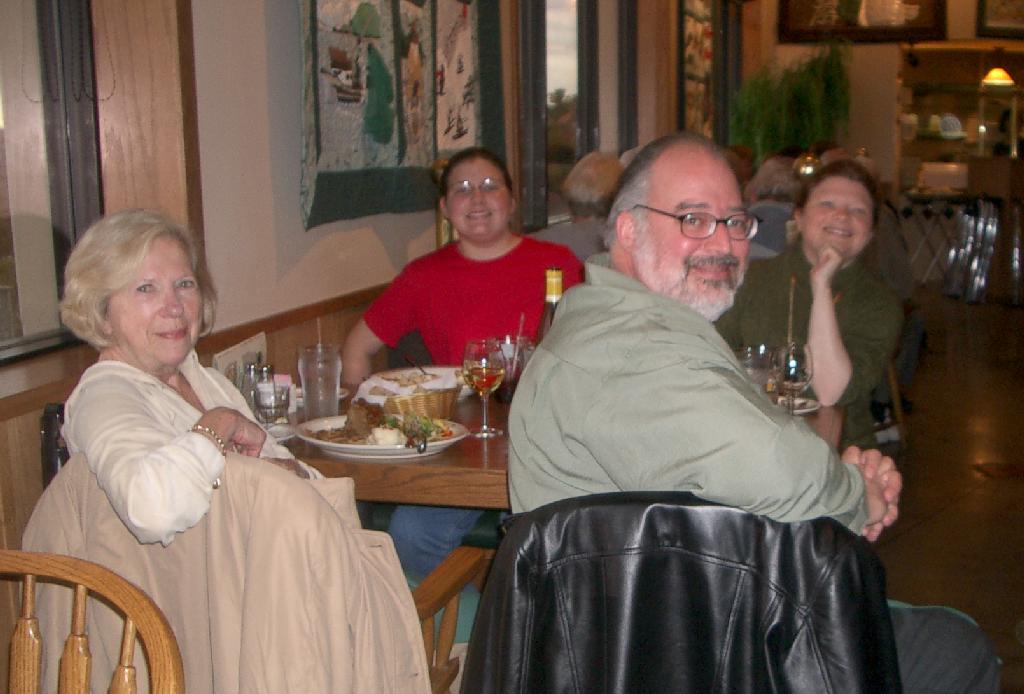
Tips for an Alaskan trip:
- Book a northbound cruise — a southbound one would be anti-climactic.
- Select a cabin on the starboard side so there’s always land to look at.
- Go with Princess for intimate large ships, great service and food, good kids’ activities and ceramics classes.
- See Creek Street in Ketchikan.
- Pan for gold authentically, on the river in Juneau.
- Take the helicopter/dogsled excursion, even though it’s really expensive.
- Ride the Riverboat Discovery if you go to Fairbanks.
- Skip Denali and the Midnight Sun Train unless you’re a real train freak.
- Don’t bother to spend any extra time in Anchorage – the best itinerary is probably to get off the cruise ship and go straight to the Copper River Princess Lodge for a few days, then to Fairbanks for a day and fly home from there.
- Don’t expect snow or cold weather, but rain and bugs are likely even if we didn’t have them.
- Bring binoculars and sunscreen.
Yosemite 2003
Monday
Monday morning 44 seventh and eight graders and 17 parents and teachers met at Orlando International for the start of our Blazing a Trail trip to Yosemite California. After a fairly quick check in we caught the flight to Dallas. The plane was nearly filled by our excited group. The flight went quickly. A few students tried their hand at an anagram contest. It’s hard to find long words in California.
There was time for a quick bite before catching the flight to Fresno. The scenery on this flight was great. We flew over Monument Valley and the Sierra Nevada mountains. I sat next to Laura, our travel agent from Go Travel, who was incredibly on top of things throughout the trip. We arrived in Fresno in the early afternoon and boarded two tour buses. I was in bus two, and spent most of the trip with a group of ten 7th grade girls, so most of my pictures are of this group. Our bus driver — who chauffeured us throughout the week — was one of the most interesting people I’ve ever met. He is a naturalist who has lived on all seven continents doing research. For example, he has summered in Antarctica twice, once doing geology research and once marine biology. He takes jobs wherever he goes to support himself. He’s also a pilot, fire fighter and a Teamster! There seemed to be no subject he wasn’t knowledgeable about. Sixteen years ago he came to Yosemite and got hooked, spending twelve years cataloging its very complex ecosystem. If you’re ever lost in the wilderness, he’s the guy to be with!
Our bus overheated on the first climb into the mountains and we stopped to remove some baffles that keep it warm during snow season. The rest of the trip was uneventful, and in two hours we arrived at. . . Tunnel view, the first spectacular view of the valley as you emerge from the nearly 1-mile-long tunnel. It’s nice to know that in this age of computer simulation and virtual reality, twelve-year olds can still be awed by this view. We drove though the valley, passing Bridal Veil falls and crossing the Merced river. At Yosemite Lodge we were assigned most — but to the dismay of a few unlucky guests, not all — of the Maple building. Our rooms had porches or balconies opening onto the surrounding fir trees. About five minutes after our arrival Billy got his finger smashed in a door and ended up at the emergency room, but he was a trooper, and was able to enjoy the rest of the trip.
Dinner was a buffet in the Garden Terrace.
Things were a bit exuberant that night, but eventually the time change caught up with even the boys.
Tuesday
Breakfast was in the food court, which has been considerably improved since Yosemite’s facility management passed from the Curry Company to Yosemite Concession Services. We planned the days activities in the lodge’s amphitheater. Mary Beth distributed some homemade trail mix and we split into six groups led by different guides.
Our small group headed for Yosemite Falls. The falls are enthusiastic, burgeoning with the spring thaw. The weather was warm and pleasant; by mid-morning it was in the sixties. Our bus driver called these “leverites”, because when you find one you “leave ‘er right” there. That water was snow 60 minutes ago, and it’s COLD! John Muir picked a lovely spot for his cabin. Talk about a room with a view. Some of this group made it to the Yosemite Falls lookout point. After a token effort we rejoined them on the way down. Everyone met up for lunch at the amphitheater, then set out on our afternoon activities. We learned about Yosemite’s complex geology which ahs been shaped by rivers, glaciers and a moraine. Then we watched a rock climbing demonstration and learned about the equipment the climbers use. And, of course, tried it ourselves.
Dinner was in the Lodge’s lovely Mountain Room. After dinner it began to drizzle, and we had a rainy walk to the elementary school for a presentation of John Muir Live. The students were extremely attentive as an actor — a ringer for Muir — recounted many of his adventures exploring the Sierras. Afterwards I think he was stunned by the detailed questions the students asked, and the deep knowledge they obviously had of the subject, right down to his OTHER dog’s name!
Imagine our surprise that night as we stepped from the school’s auditorium and discovered — IT WAS SNOWING! Dani was bouncing like a month-old puppy. We had expected a few flurries, but it settled in and snowed all night.
Wednesday
After breakfast we headed for the Mariposa Grove of sequoias, in the high country near the park exit. If it was snowing at 4000 feet in the valley, what would it be like at 6000 feet? Snowy. Our bus driver stopped at tunnel view to put on chains.
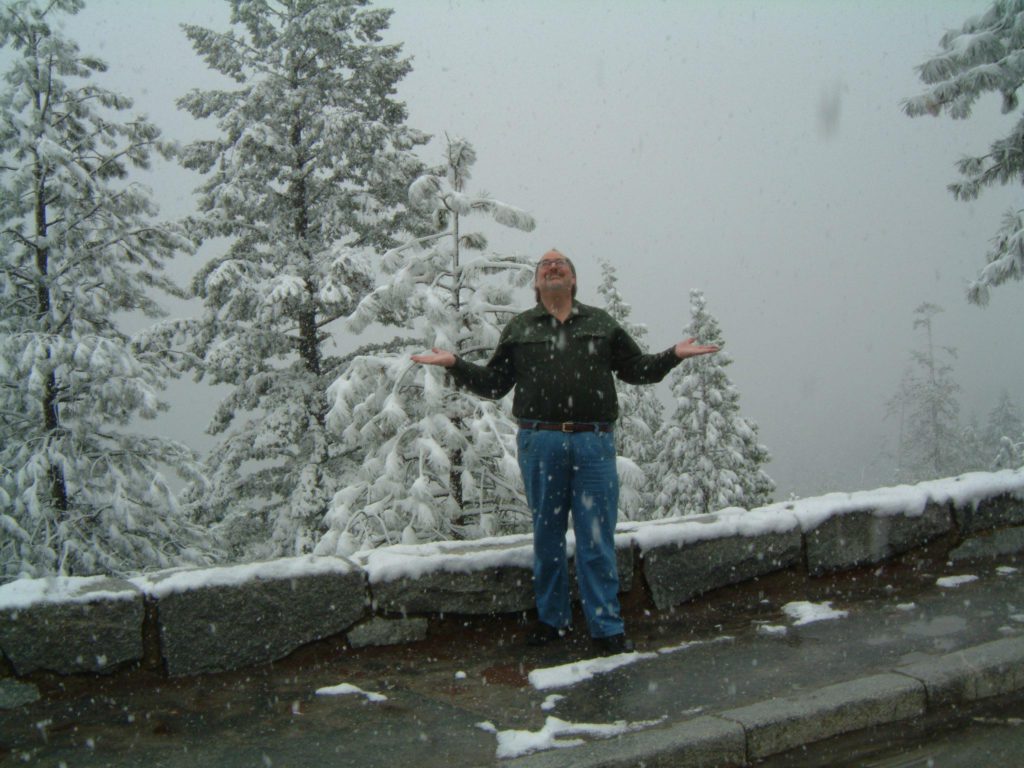
It’s a two-mile walk uphill to the Mariposa Grove. Needless to say, our little group didn’t make it, although most did.
But we did have fun along the way, making snow angels. . . . . . snow balls. . . . . . and snowmen. We also got to try snowshoes.
We had lunch at the Wawona Hotel. In the afternoon we visited the Wawona fire station and learned about fire fighting and prescribed burns. Some of the kids were cold and wet, but you should have seen how they revived after we took them up the mountain and handed them a can of burning petrol!
Wednesday evening while most of the group gathered at the Lodge for songs and stories (in lieu of the scheduled campfire) a few of us caught the shuttle to the Ahwahnee for dinner in their beautiful dining room. At night the dining room’s windows act like mirrors, reflecting the candlelight. We pointed out to the kids how over time the enormous sheets of glass have flowed, so that the windows are much thicker at the bottom than at the top.
Thursday
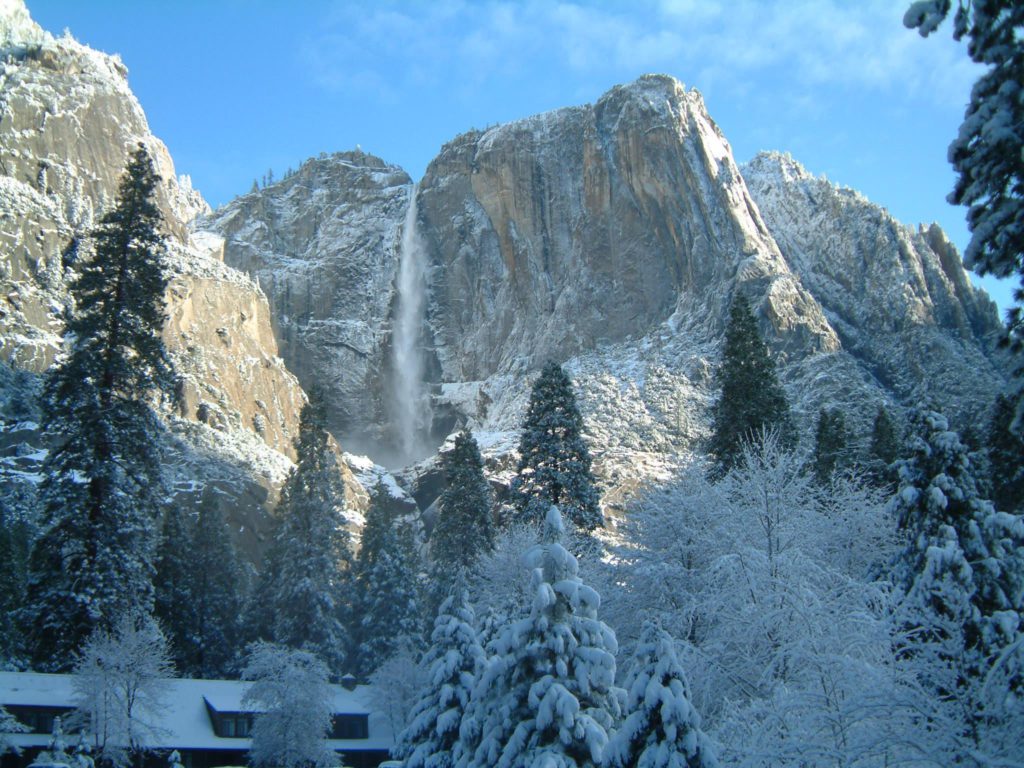
And what a view greeted us the next morning! After a night of snow, the clouds departed and we had bright blue sky and warm sunshine.
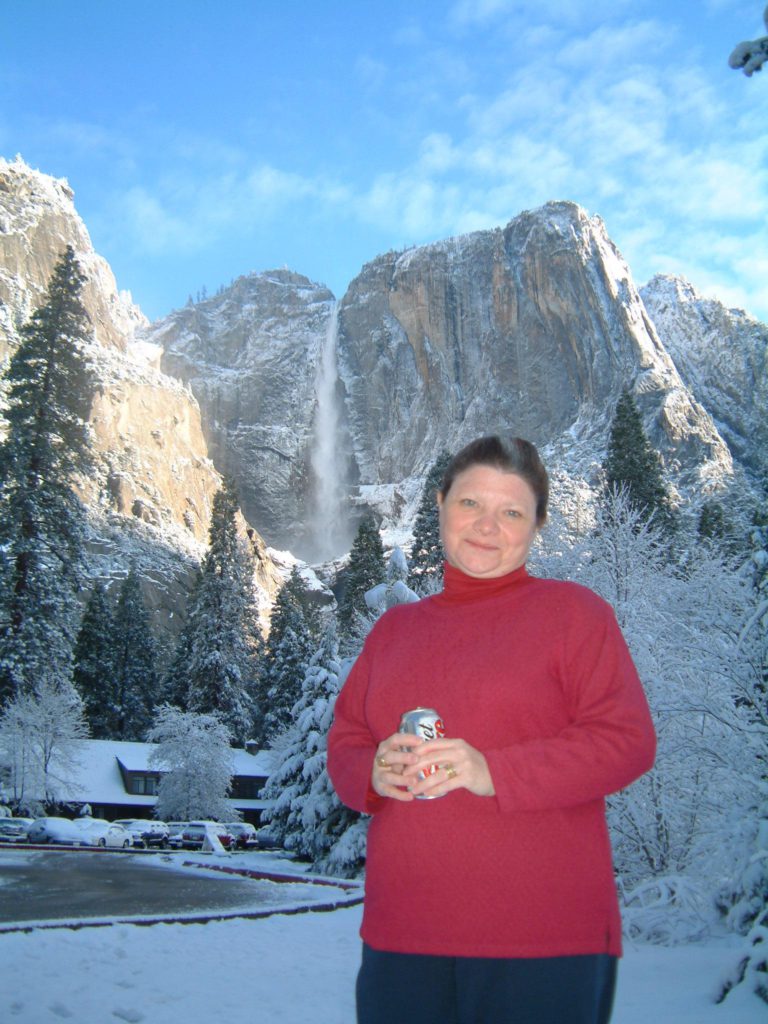
No, that’s not a painting behind Linda. There was snow everywhere! We walked past Yosemite Falls and saw that there was a slurry flowing down the river. It’s a fairly rare occurrence, when the water is super cooled coming over the falls, and freezes as it flows. It was getting warmer, and the trees were having fun with us, dropping unexpected clumps of slush as we passed underneath.
We learned the history of the Ahwahnee Hotel, built in 1927. Our guide really brought the period to life. Linda described what the fire fall looked like, as they pushed embers off the edge of 7000-foot Glacier point. They were still doing it during her first visit to Yosemite, in the 1960s. Outside we watched a coyote cross the meadow. We also saw many deer, squirrels and woodpeckers.
We walked to Curry Village for lunch, then caught a shuttle back to Yosemite Village for shopping. Behind the visitor center is a really interesting recreation of a Miwok village. This is an acorn granary. The acorns were a main staple of the Native Americans, but it was a lot of effort to make them edible. We took Dani’s picture in this same hut when she was little. In the afternoon we caught a shuttle back to the Lodge.
Hey! What happened to all the snow? It’s hard to believe the difference a few hours of sunlight made. Then it was back to the Ahwahnee for a delicious farewell dinner in the Solarium. The students performed their Ahwahneechee legends on the balcony. Jake was a hilarious master of ceremonies.
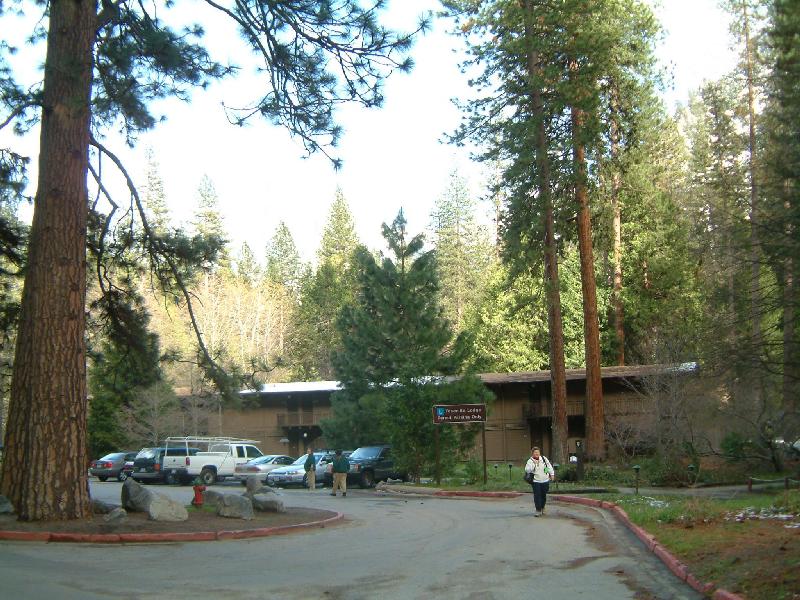
Afterwards the students presented their teachers with beautiful matted photos of the valley as a thank you, and the teachers recognized each student with individualized mementos of the trip.
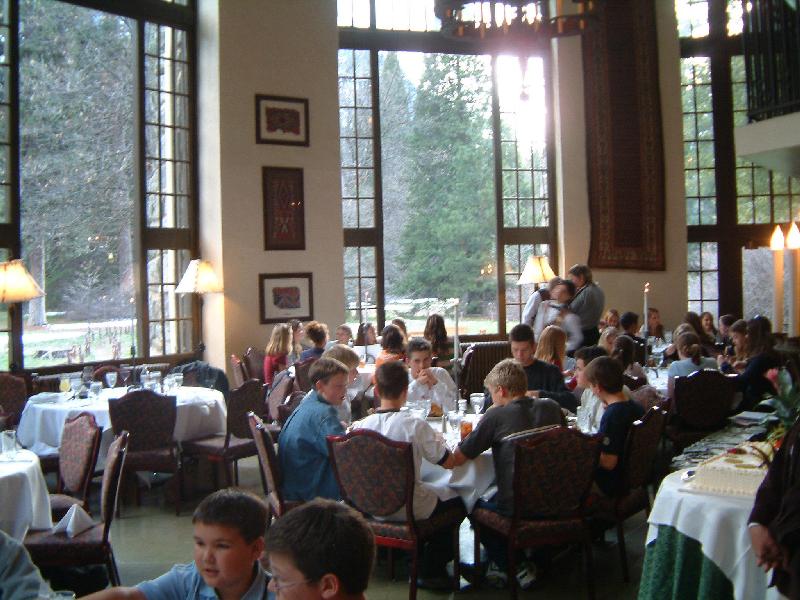
We gathered for a group shot of students…
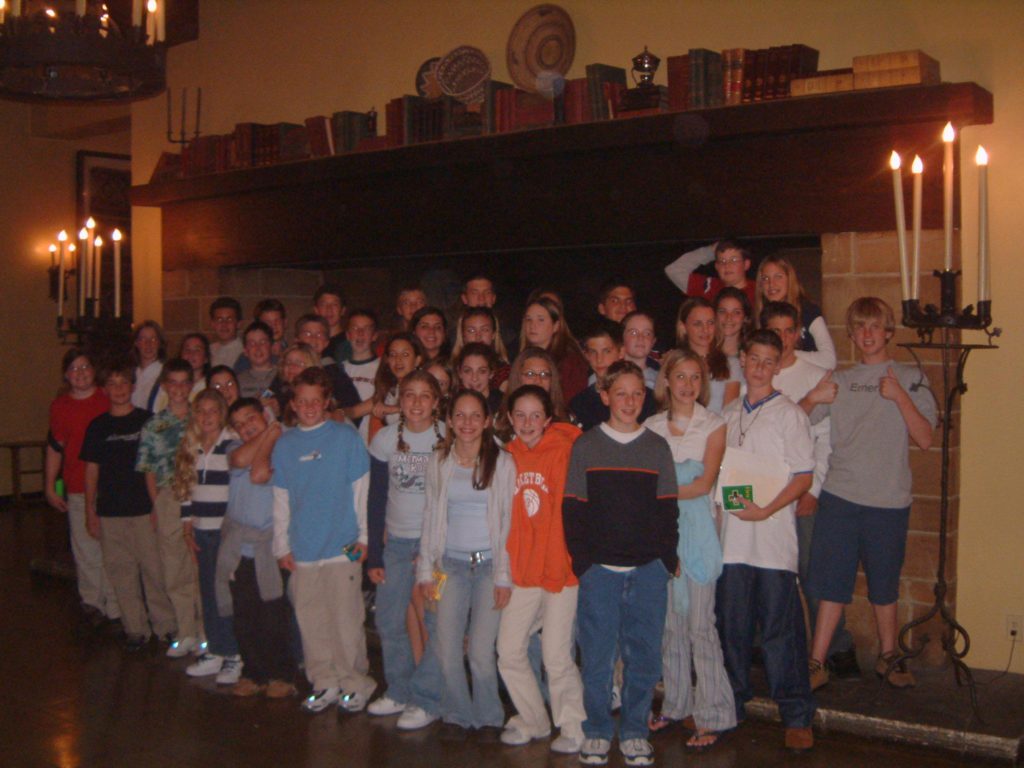
and parents, before departing for a late night bus ride to Fresno.
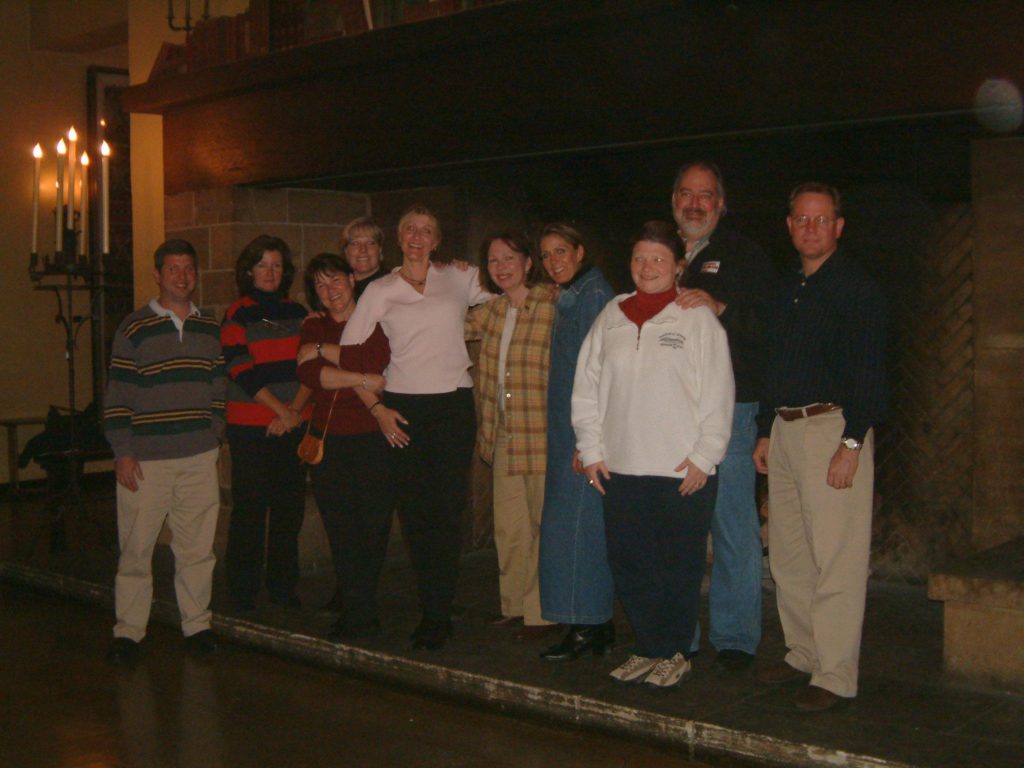
Friday
I believe the four hours I slept at the Courtyard Marriot near the Fresno airport sets a record for the shortest time I’ve ever stayed at a motel. We were at the airport shortly after 5 AM, and after several thousand taxpayer dollars were spent to ascertain that none of the seventh grade girls were carrying plastic explosives we caught our flight to Dallas.
A nap on the plane helped, and lunch at the airport further revived us. It was a remarkably chipper group that arrived back in Orlando Friday evening.
What a magical trip it was, with amazing weather, terrific adventures and great company.
Charleston and Savannah 2002
WPS Southern Heritage Tour
April 8-12, 2002
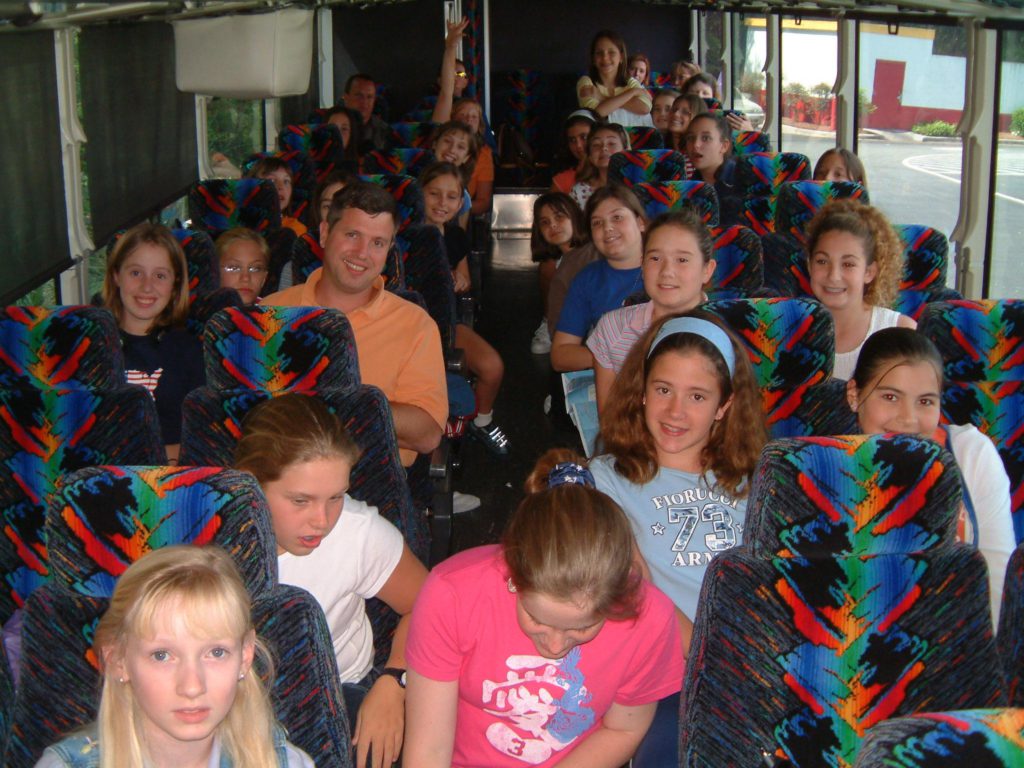
Monday
6:00 AM came an hour early, with the change to daylight savings time only a day old. It was still pitch black as we pulled out of the Windermere Preparatory School parking lot and headed for Charleston. Two, buses, one for girls and one for boys, were both nearly full, with 56 students and 23 chaperones — nearly all of the fifth and sixth grade classes. I was on the girl’s bus, and guess I got the better deal, as the video player worked. The kids were very patient on the ten-hour drive to Charleston. They had notebooks with class assignments in all different subjects, and immediately got to work learning about Charleston History .
We stopped only twice, the second time at a McDonald’s somewhere in Georgia for lunch. I had made up a word search puzzle, which helped pass the time.
We learned that it’s pretty challenging to come up with seven-letter words using the letters in Charleston (never mind that the computer can find 94 of them!) The winners were Bramjot and Erica Kordsmeier .
We also learned that Chitty Chitty Bang Bang is a VERY long movie .
Charleston
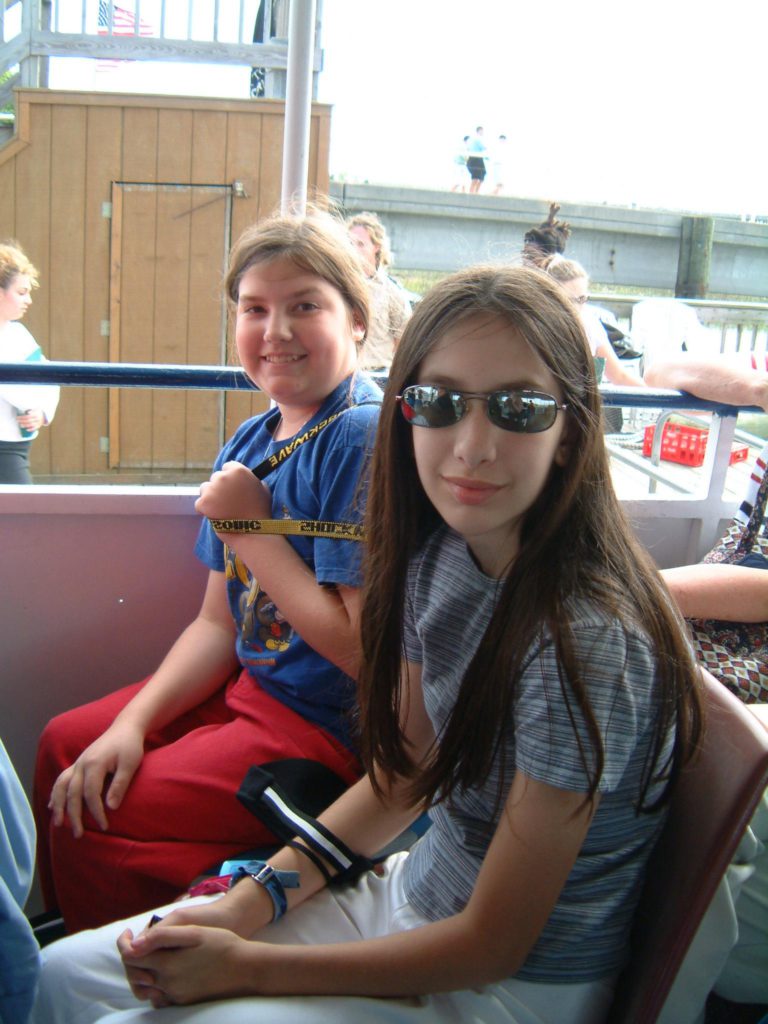
We arrived at Patriot’s Point and met out tour director, Frankie, a bit too late to visit the Yorktown aircraft carrier, but in time for the last boat to Fort Sumter.
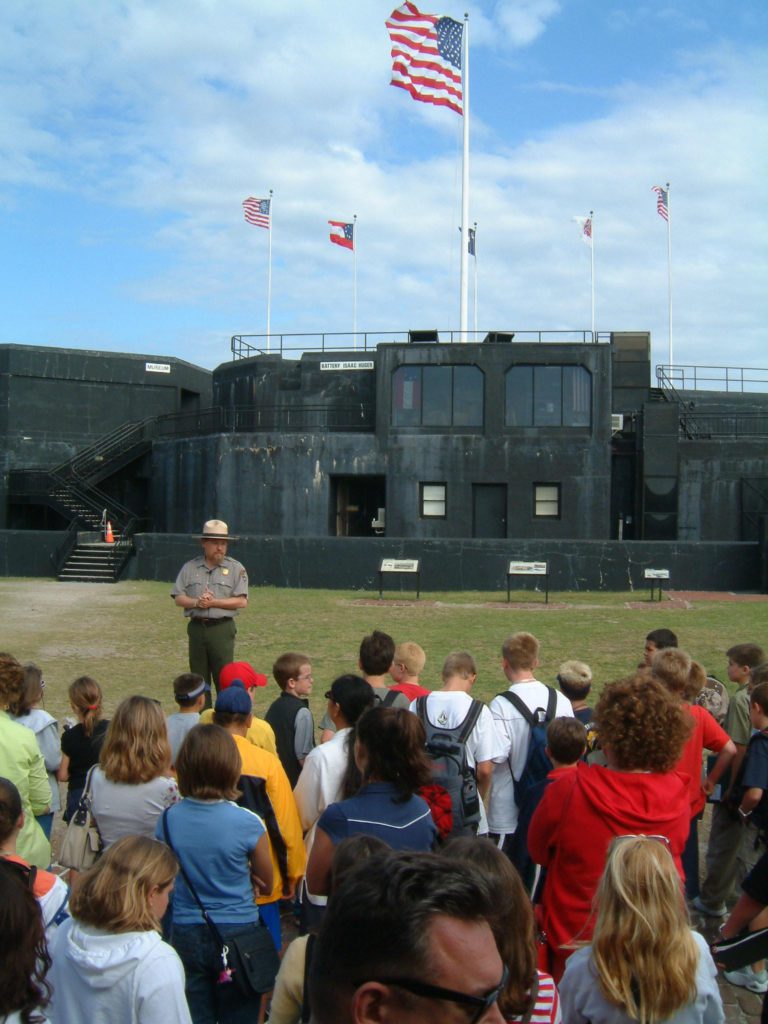
Fort Sumter is operated by the National Park Service.
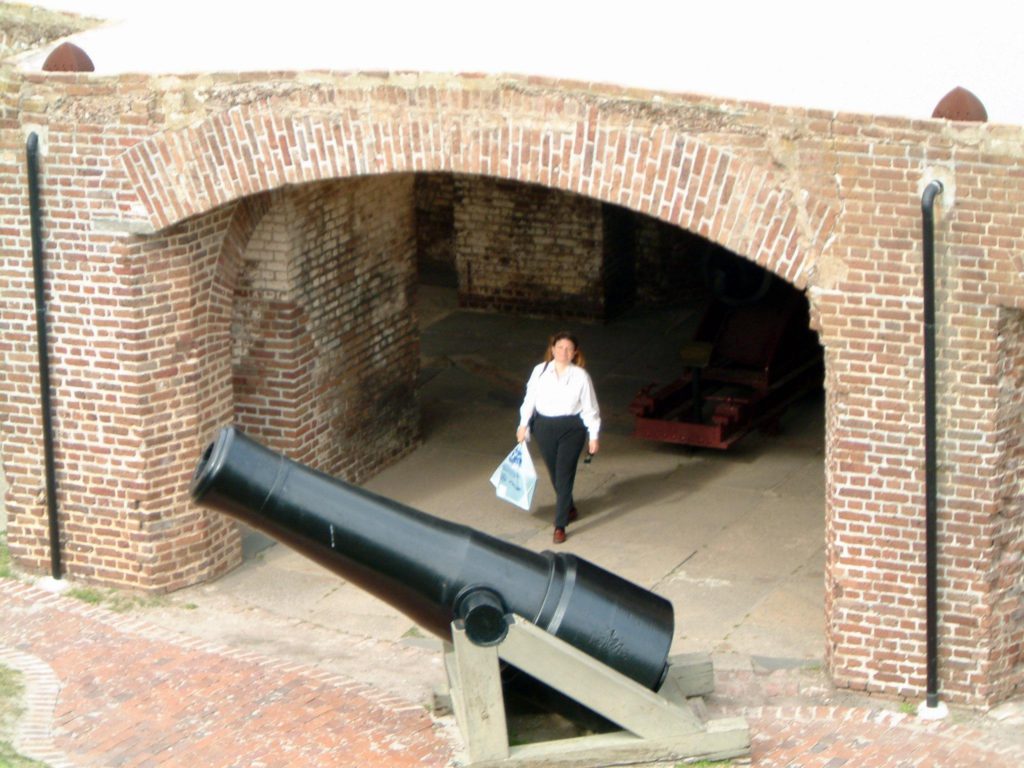
These aren’t the first cannons from the fort, but they are old.
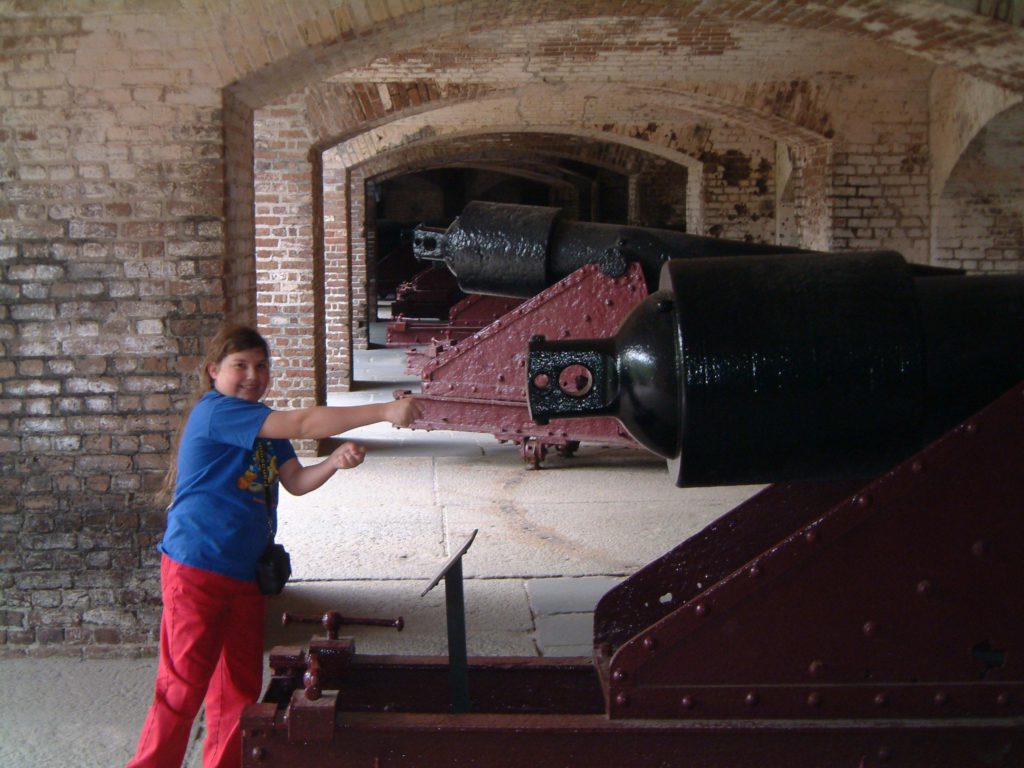
To strengthen the fort for the Spanish American War, these cannon placements were filled with dirt and rubble. They were excavated in the 1950s. Archaeologists were surprised to discover that the cannons were still there .
Tuesday
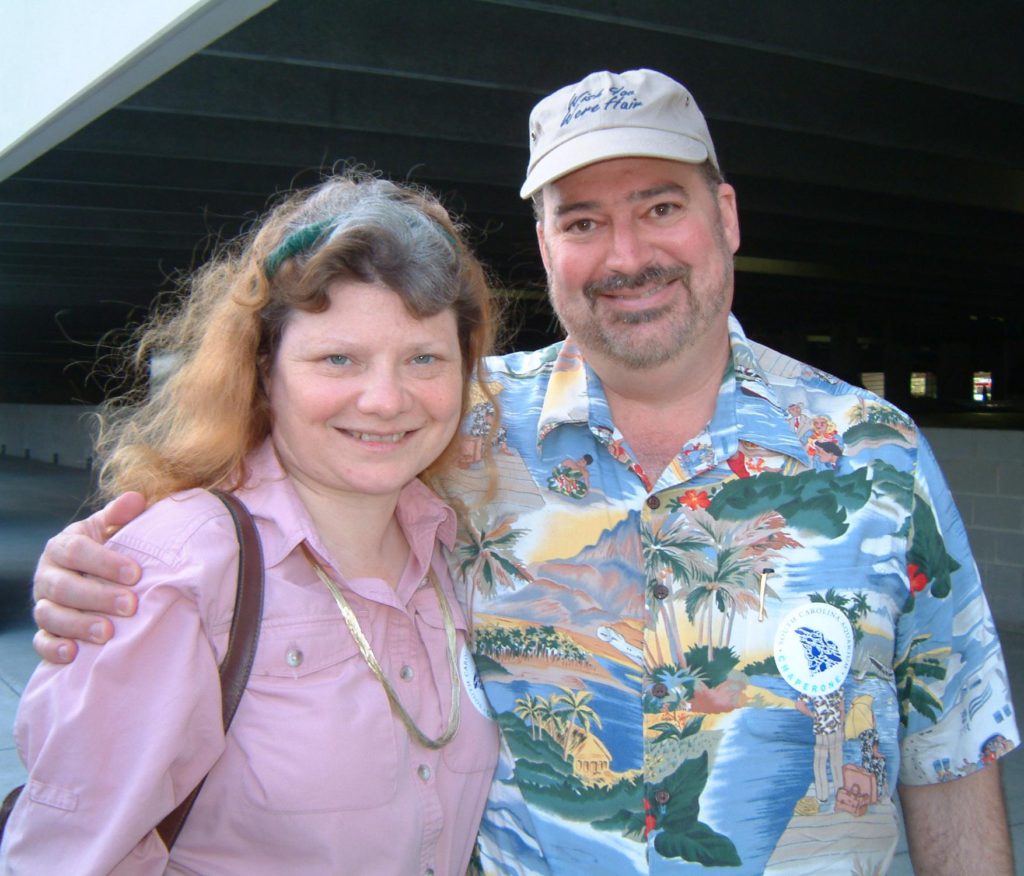
Tuesday morning we had a nice breakfast at the hotel, then headed for Charleston. We passed a replica of the Confederate submarine the Hunley. It was the first submarine to succeed in sinking a ship, although its crew subsequently perished. It was forty feet long, but so skinny it is hard to imagine eight or nine men crammed inside, hand cranking the propeller. It would have been like crawling into your own coffin .
Once in Charleston we discovered we had left one student and his mother at the hotel, and both buses made the round trip to pick them up. Nevertheless, we arrived at the Charleston Aquarium with plenty of time to explore.
The best exhibit at the Charleston Aquarium was UFOs — Unidentified Floating Objects. Between the Tampa and Sydney Aquariums, I thought I’d seen pretty much everything, but there was some REALLY weird stuff in this exhibit.
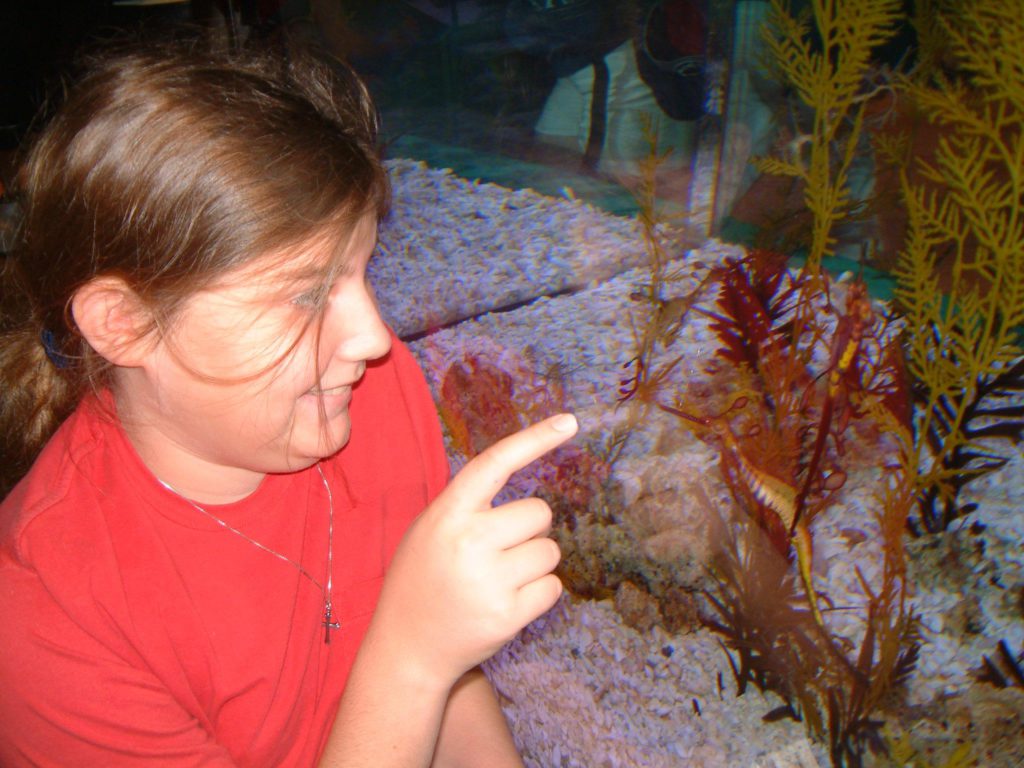
Here, Dani points at some very fanciful seahorses.
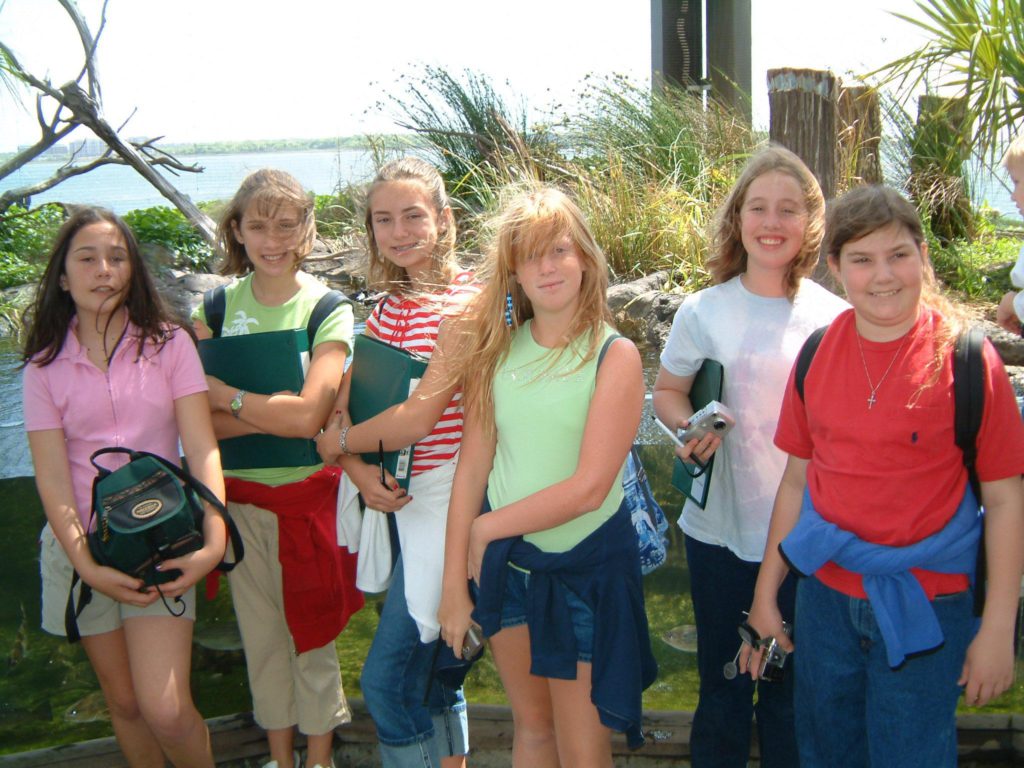
The salt marsh exhibit yielded few clues in filling out the curriculum.
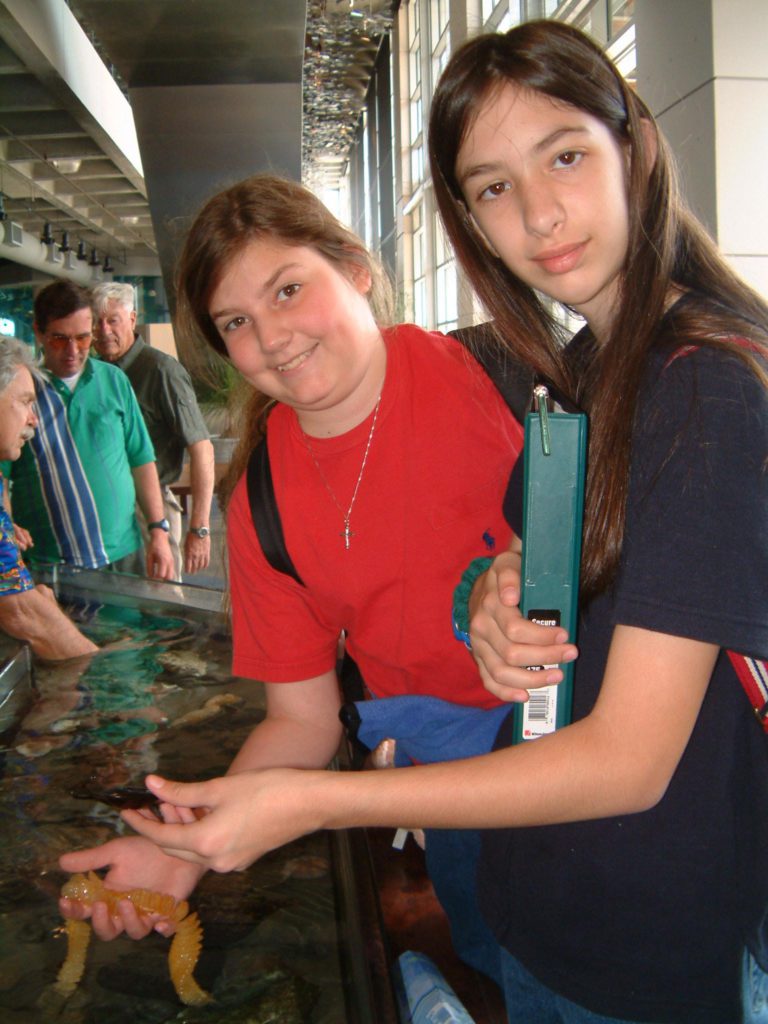
Picking up slimy things .
We had a leisurely lunch at a food court outside the IMAX theater, then saw a fabulous film about Earnest Shakleton’s ill-fated attempt to cross Antarctica in 1914. He and his crew survived a year and a half in and on the ice, escaping from their ship, the Endeavor, as it was crushed. Shackleton and five others made an 800-mile journey in a rowboat, returning to rescue the entire crew. A remarkable accomplishment, and the best IMAX film I’ve seen.
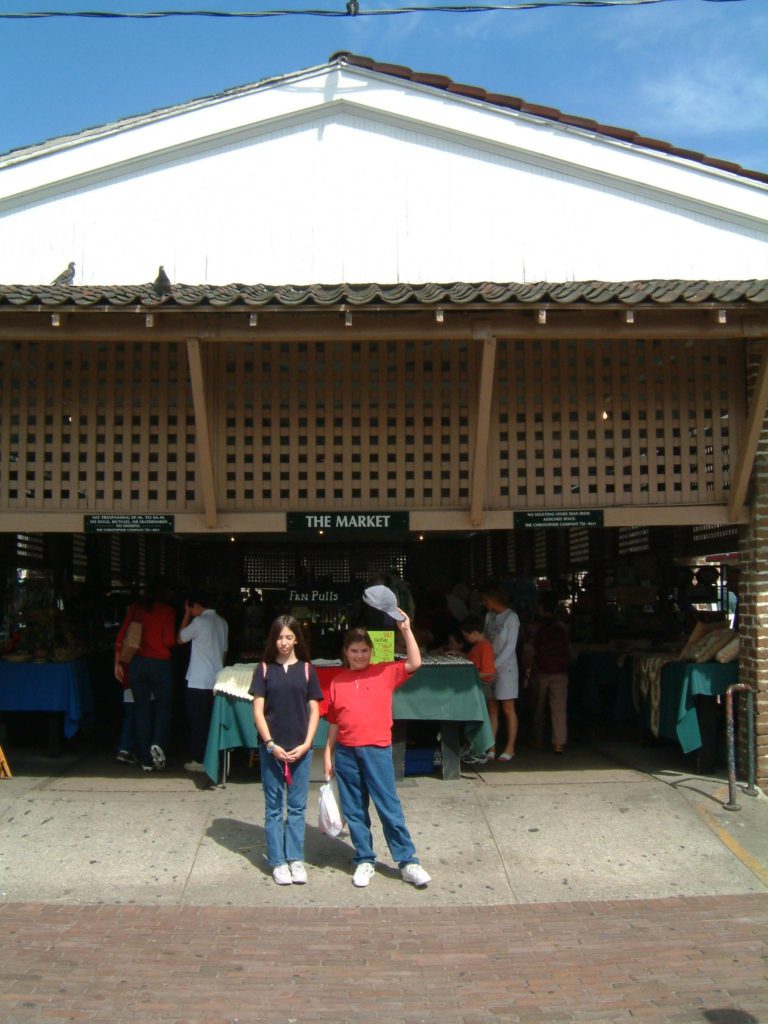
Our next stop was the market in downtown Charleston. Originally deeded to the city for use as an open air food market, it is now a souvenir market with many interesting arts and crafts.
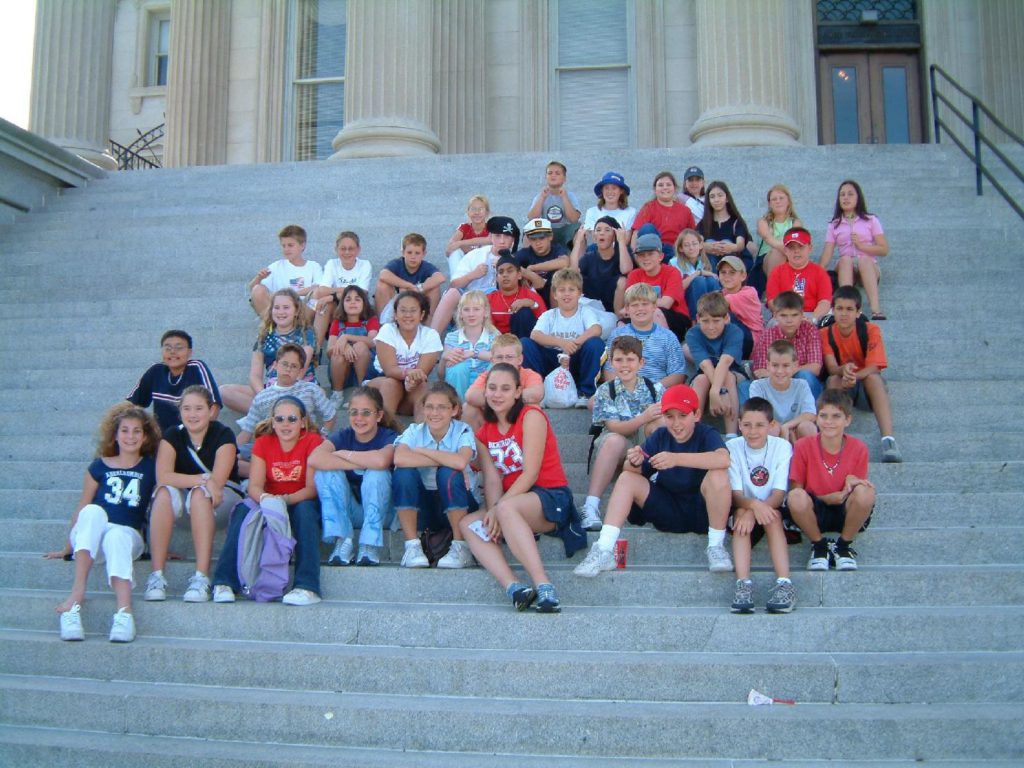
Student group shot.
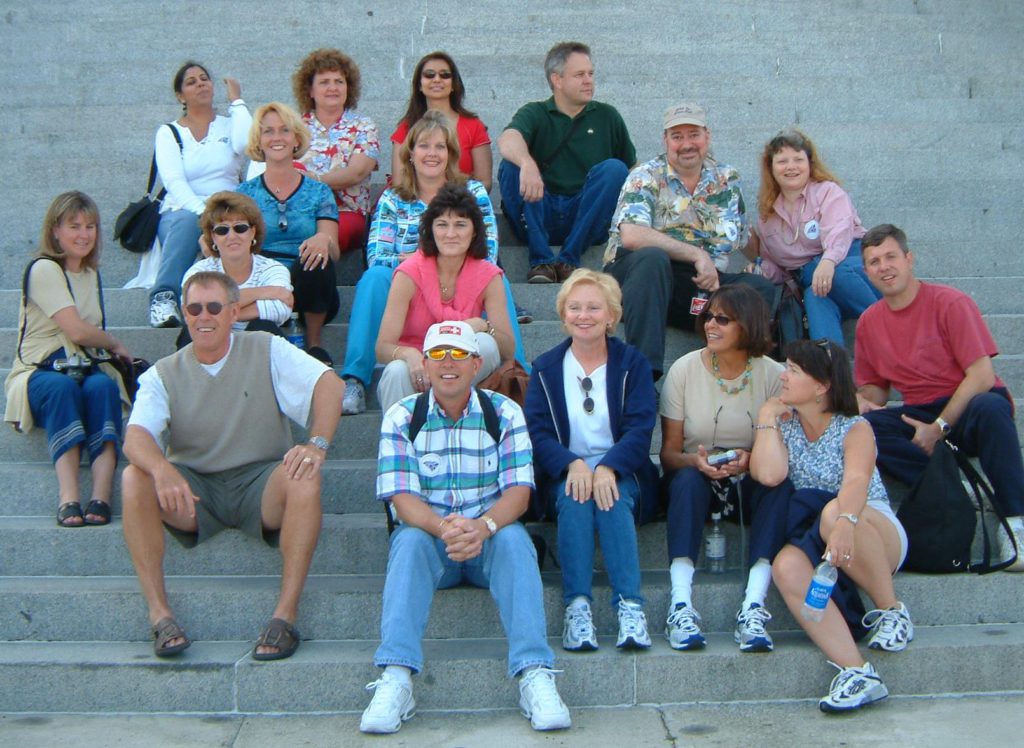
Chaperones.
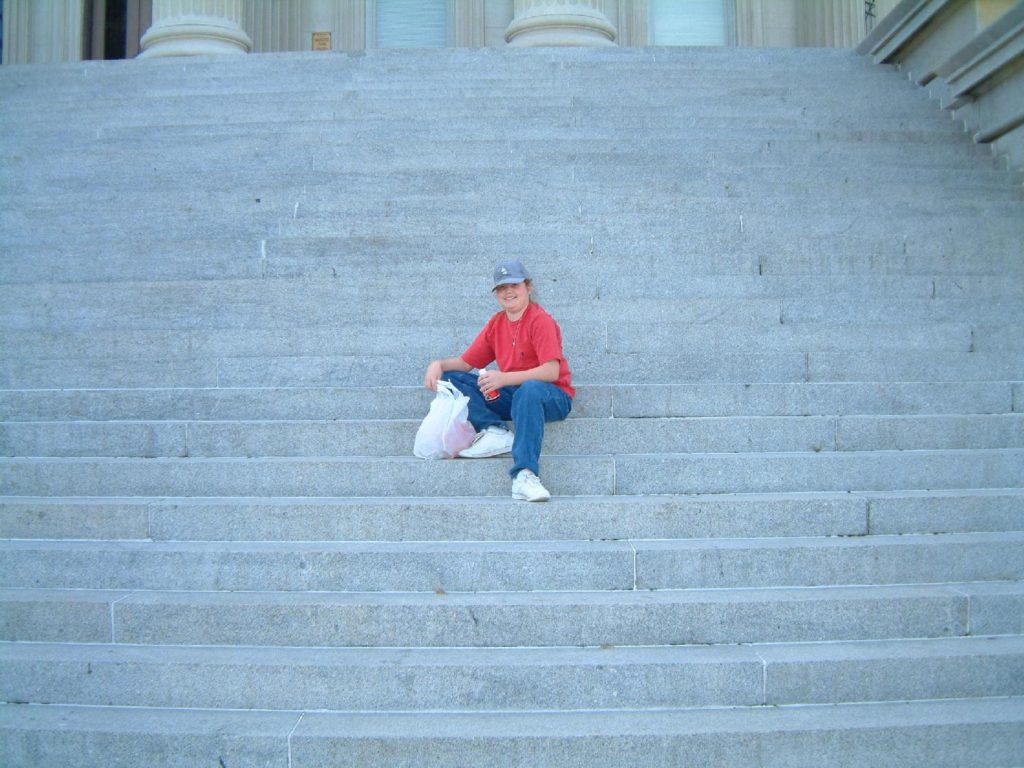
Hey! Where did everybody go?

The pirate walking tour. Our guide was fantastic. She really brought the story of Stede Bonnet and Blackbeard alive, including all the gory details. Roasted lips, anyone?
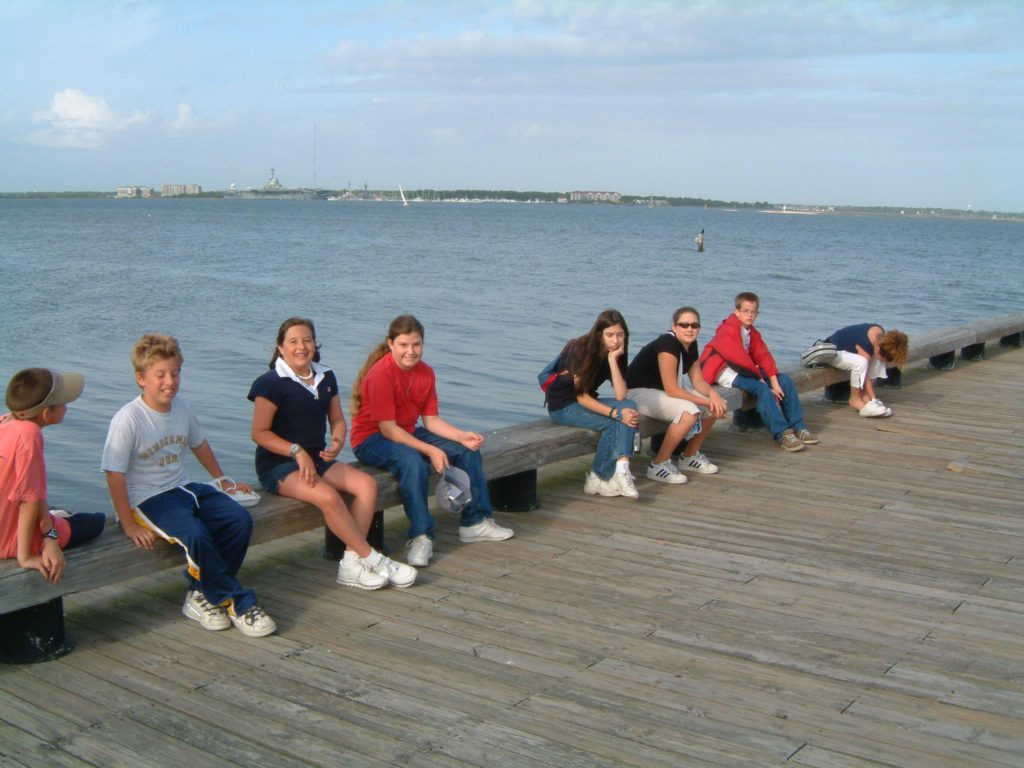
Dinner was at Bubba Gump’s (delicious garlic bread!)
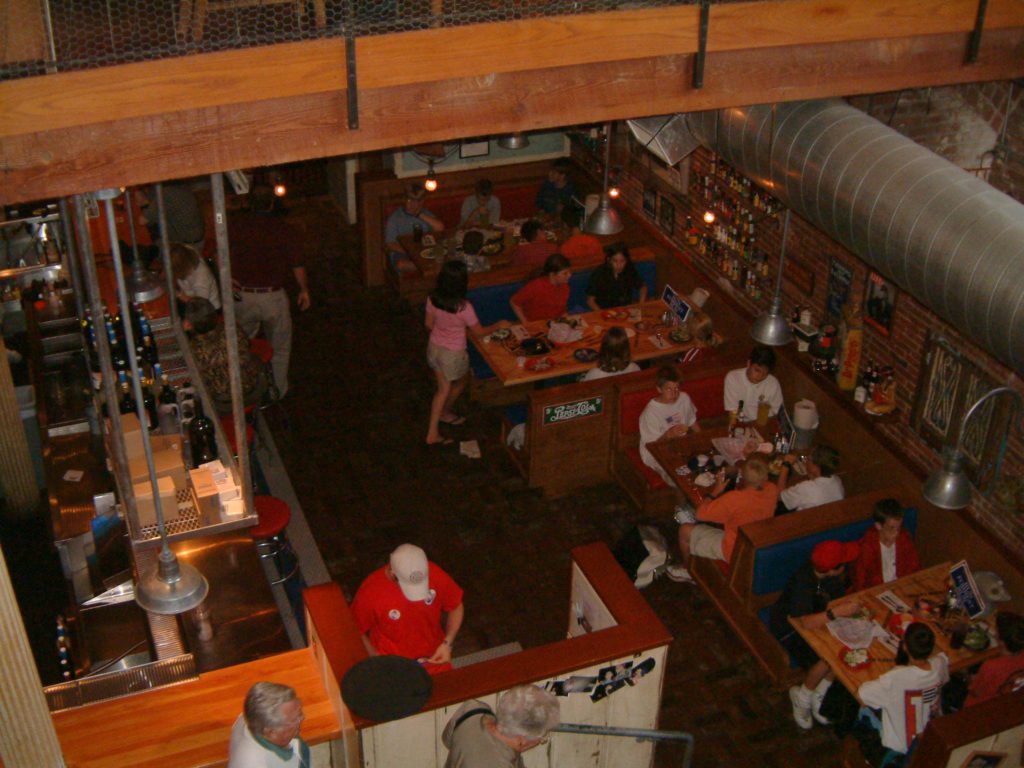
After dinner we went on yet another walking tour. Scattered showers forced us to take cover periodically under overhanging buildings. Linda’s glow stick bracelets added a spooky air to the ghost tour, which proved frightening — at least to the frighteningly gullible .
Back at the hotel it was nearly 10:00 pm. A few stalwart souls joined Mrs. Kent in the lobby for a study session. , but we were definitely ready for bed after this, our busiest day of the tour .
Wednesday
After a nice breakfast we loaded our luggage onto the bus and set off on the rainy two-hour bus ride to Savannah. I handed our a cryptogram puzzle, which proved popular. It was also an opportunity to learn some Savannah History, as these paragraphs turned out to be the answers .
Savannah
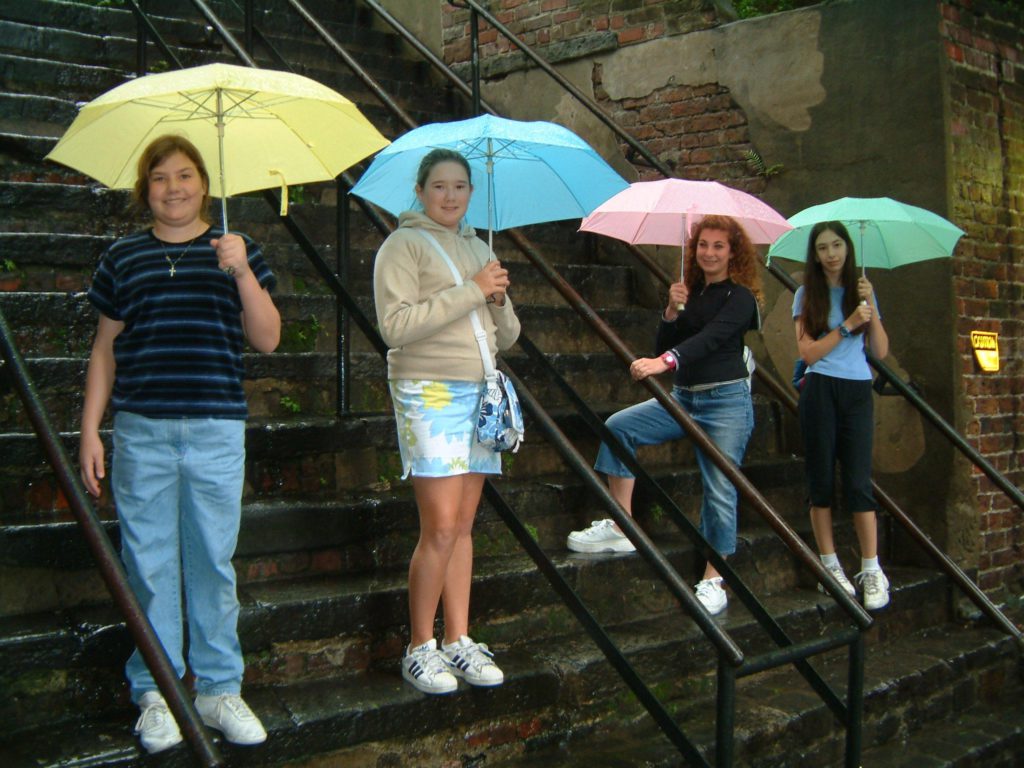
We stopped at the Savannah visitors’ center to pick up our bus pass and ruminate about the rainy day. In the end, we decided to follow the original plan and go to the River Walk, an historic area that has been converted to shops and restaurants. There, equipped with some newly-purchased pastel umbrellas, we strolled down the half mile of storefronts .
We had lunch with Dani, Elise, Miranda and Becky at Fiddler’s Crab House, then bought some candy and curios .
At a shop at the very end of the street I bought some Savannah ceramic tiles as prizes for the cryptogram contest. (Later, on the bus ride to dinner, we handed them out to the winners. Five people solved all five cryptograms: Gabrielle, Alannah, Dani, and Chris. )
At 4:00 pm, soggy but cheerful, we headed to the Fairfield Inn to check in and get ready for dinner.
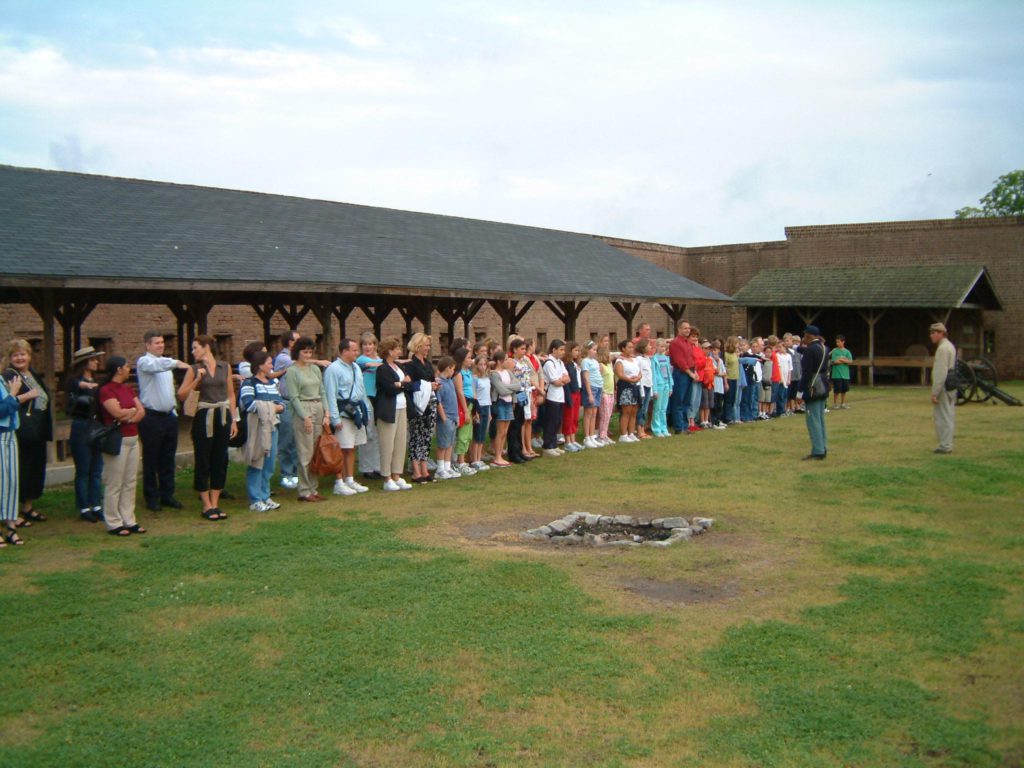
Dinner was at Fort Jackson, a Civil War era fortification located on the river downstream of Savannah. The students were greeted by three soldiers dressed in Civil War garb.
They learned some basic field drills and then had dinner (fortunately chicken tenders, not salt pork). Afterwards, they were split into three companies, and cycled through three different presentations.
Up on the wall, they learned about the role of blacks during the war, and inspected a fiberglass cannon used in the filming of Glory.
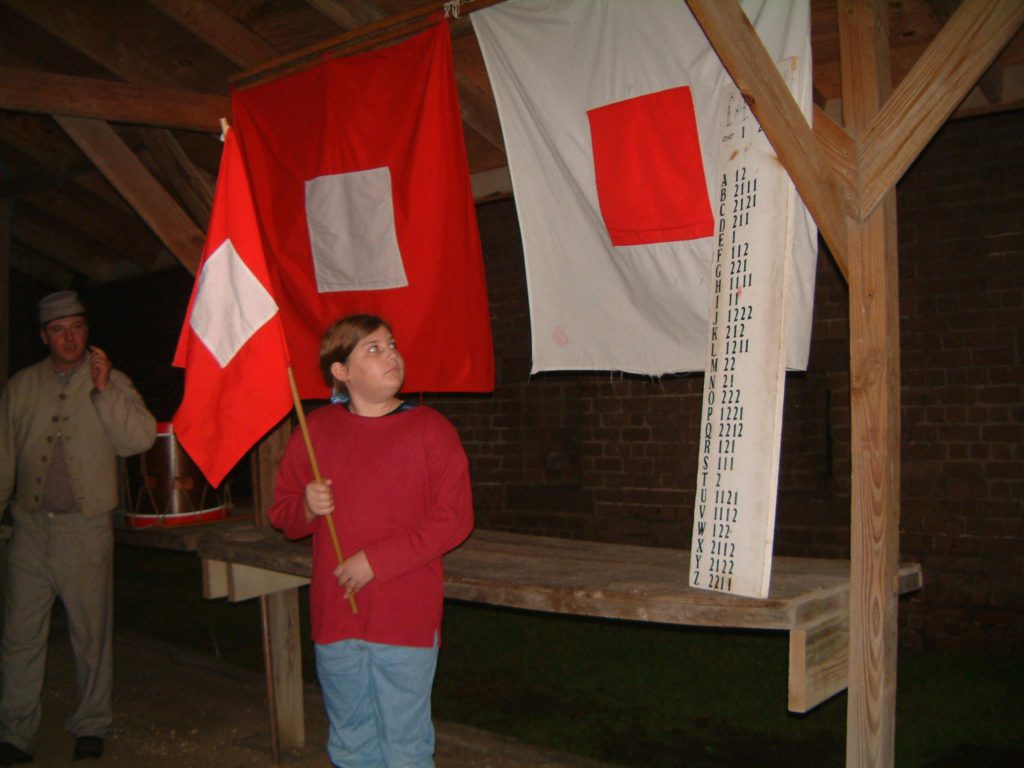
Back on the field they learned about nineteenth century communications, and got to try their hand with semaphore flags .
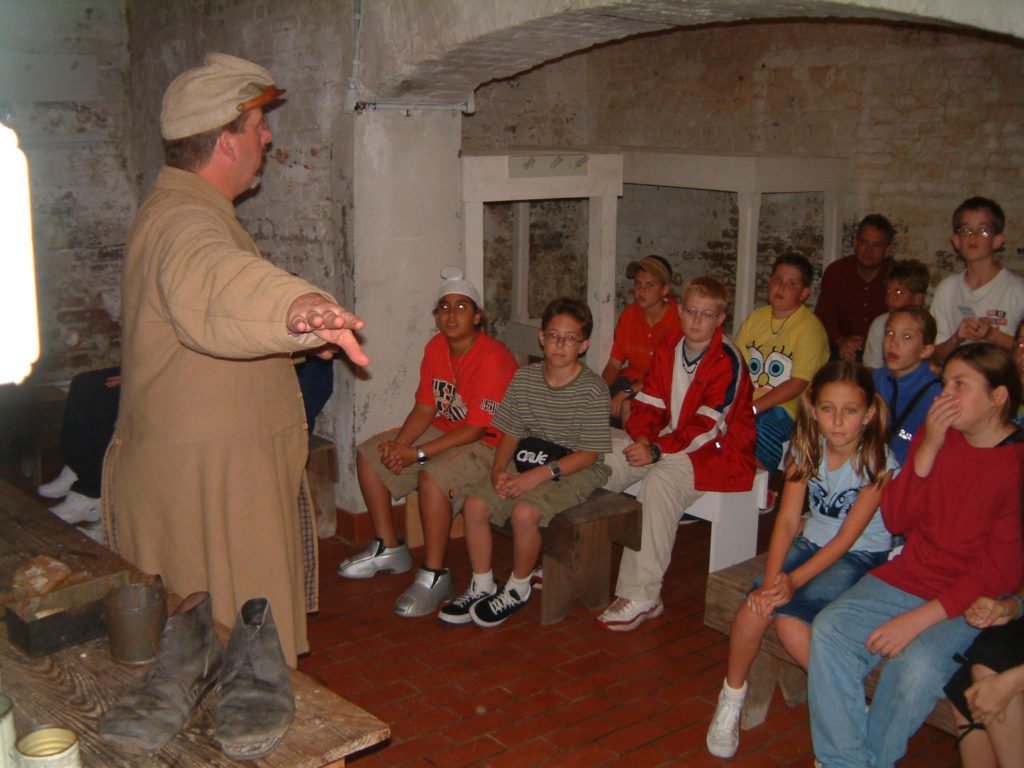
In the supply room they were shown what soldiers ate (yuck) and wore .
The grand finale was the firing of the 12-pound field cannon. We learned how it is cleaned and loaded, a non-trivial process that could be accomplished in 15 seconds by a team of seven. We also learned that when it’s fired you want to have your fingers in your ears!
Thursday
Thursday morning one of our buses broke down, so we had to transfer the group to our first stop in two shifts .
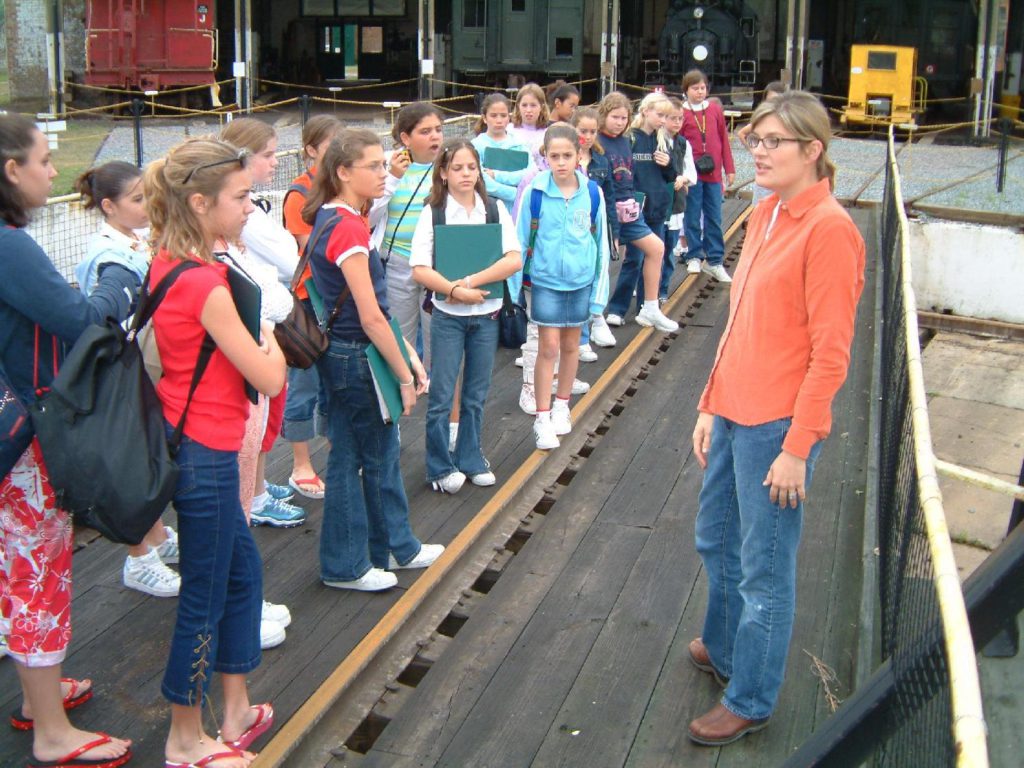
Our first stop was the Railroad Museum, where we had a very entertaining and informative tour by the museum’s director. She showed us how the turntable worked (we went for a very noisy ride), and described the machinery and tools that were used to service the locomotives.
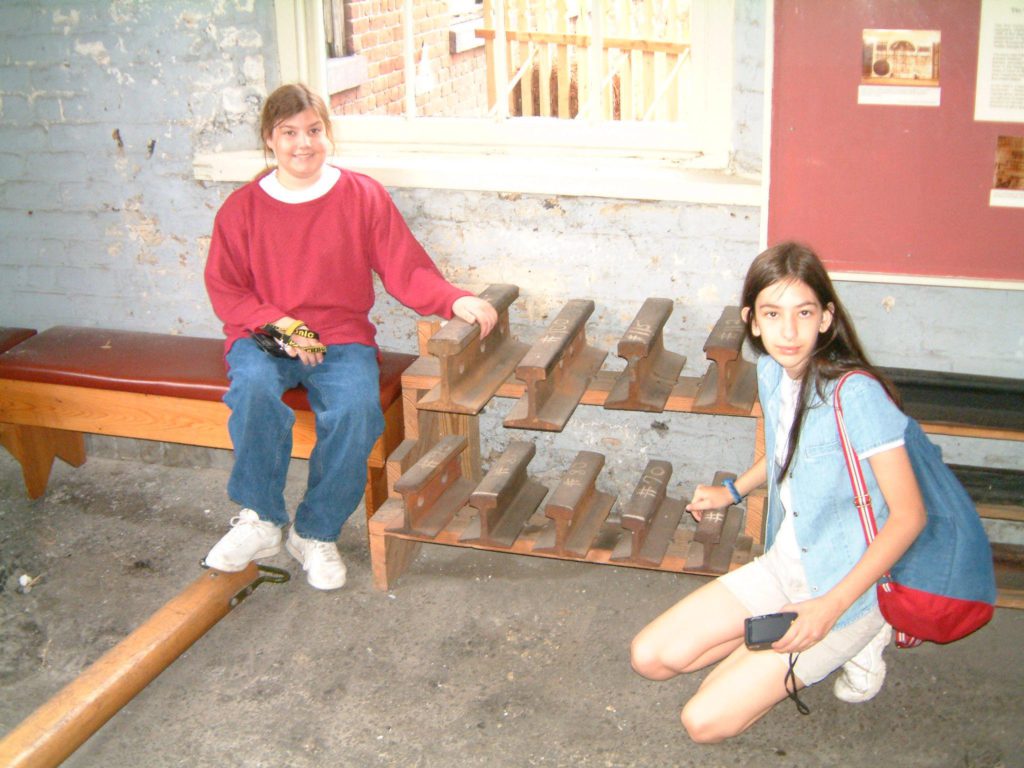
The facility was quite sophisticated for its time, using a central steam engine to drive rotating shafts that went to buildings throughout the yard, providing power to the equipment .
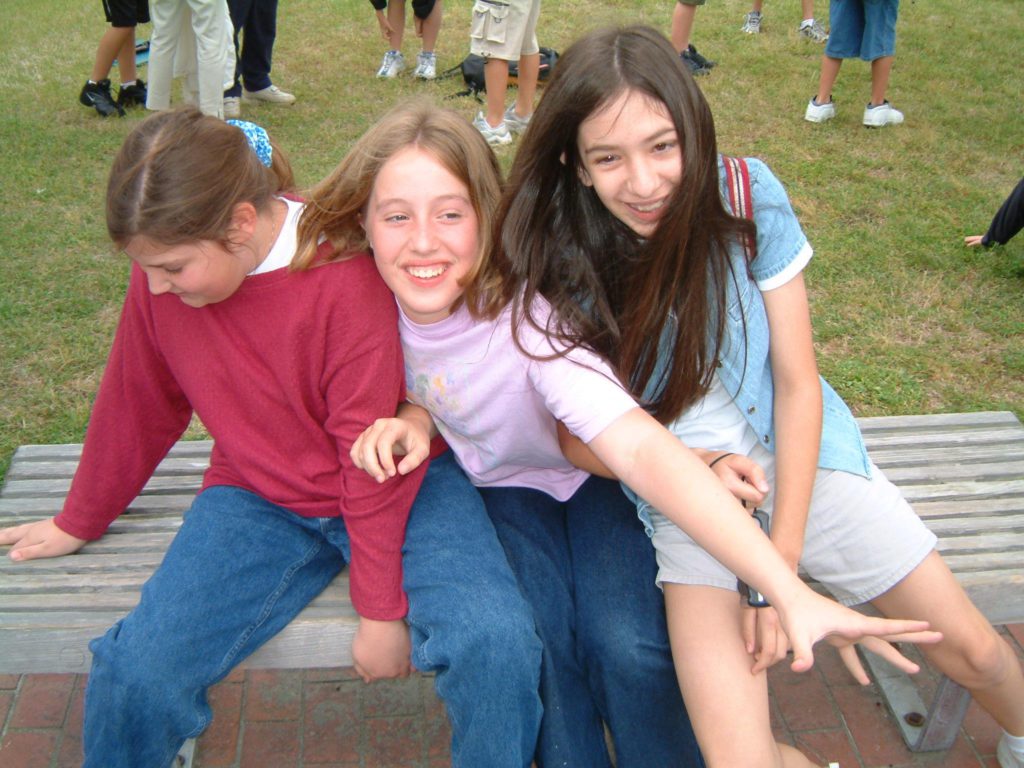
A circular building in the yard was a community shower. Excess steam heated water in a tank above the individual stalls, and a tall smokestack carried away the leftover heat.
Next stop was Fort Pulaski. I was dubious that we could find a third fort in as many days interesting, but our National Park Service Ranger guide was funny, fascinating and really brought the place to life. When one girl asked what cause the impressive holes lining one wall of the fort he exclaimed, “Woodpeckers! We’ve got a terrible woodpecker problem here!
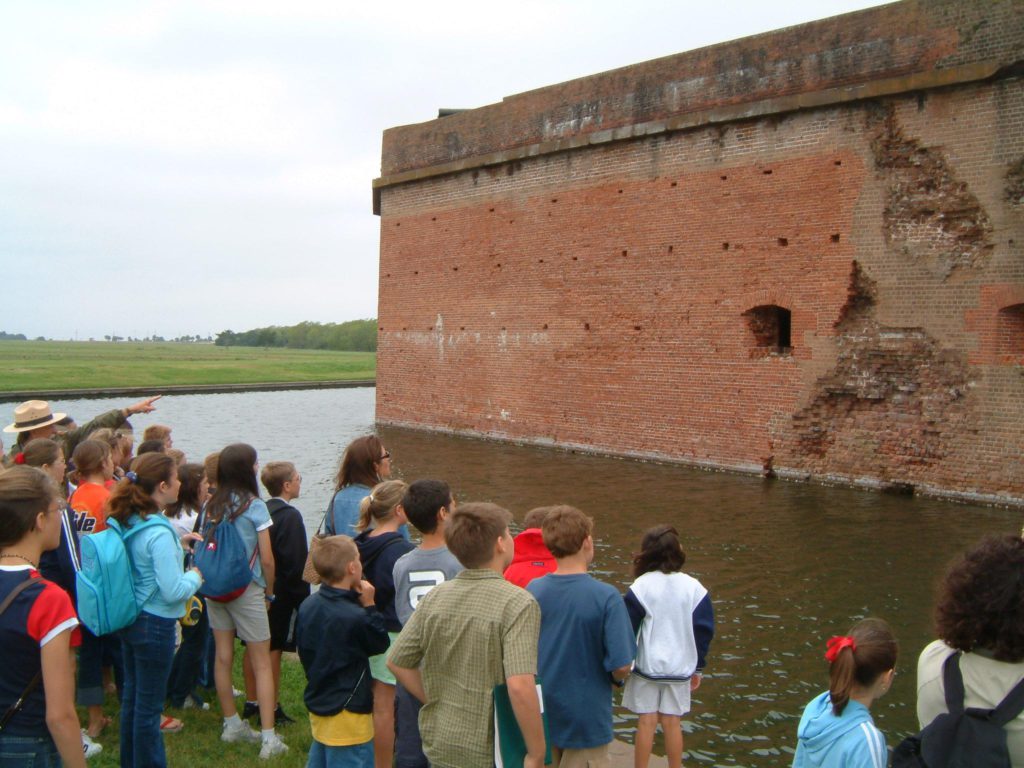
“The fort, originally constructed prior to the revolution, was believed impregnable. Yet its wall was breached in just 36 hours, using a new cannon developed during the Civil War.
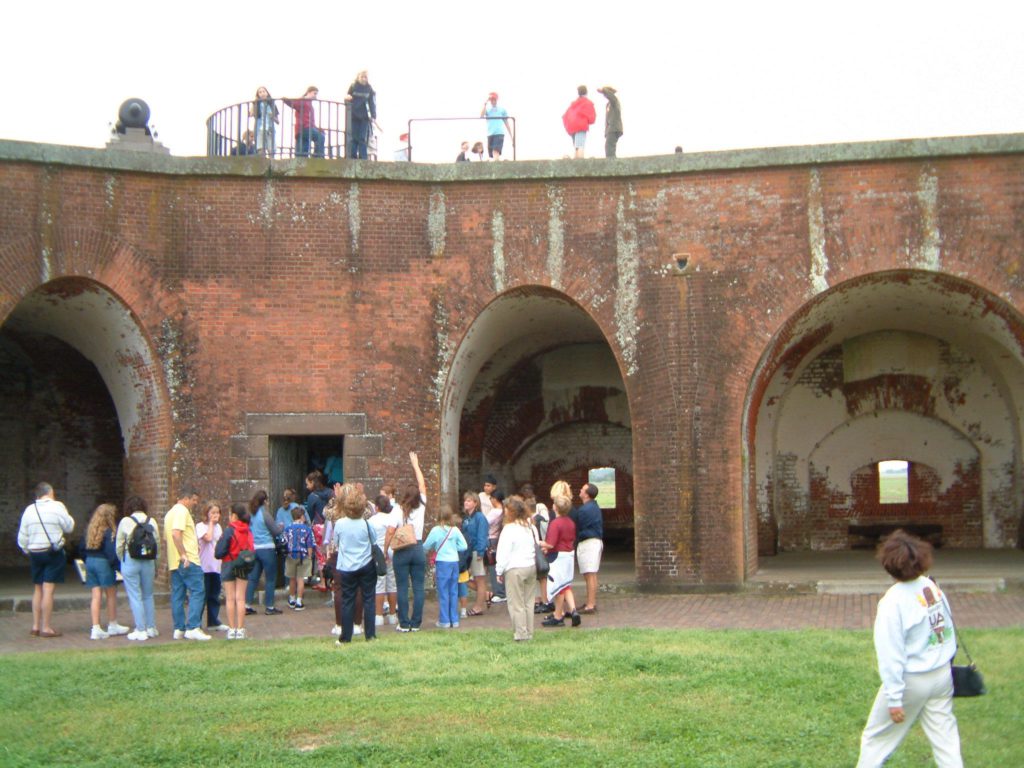
It was quite exhilarating to be up on the railing-free wall. Particularly for those of us trying to keep the kids away from the edge.
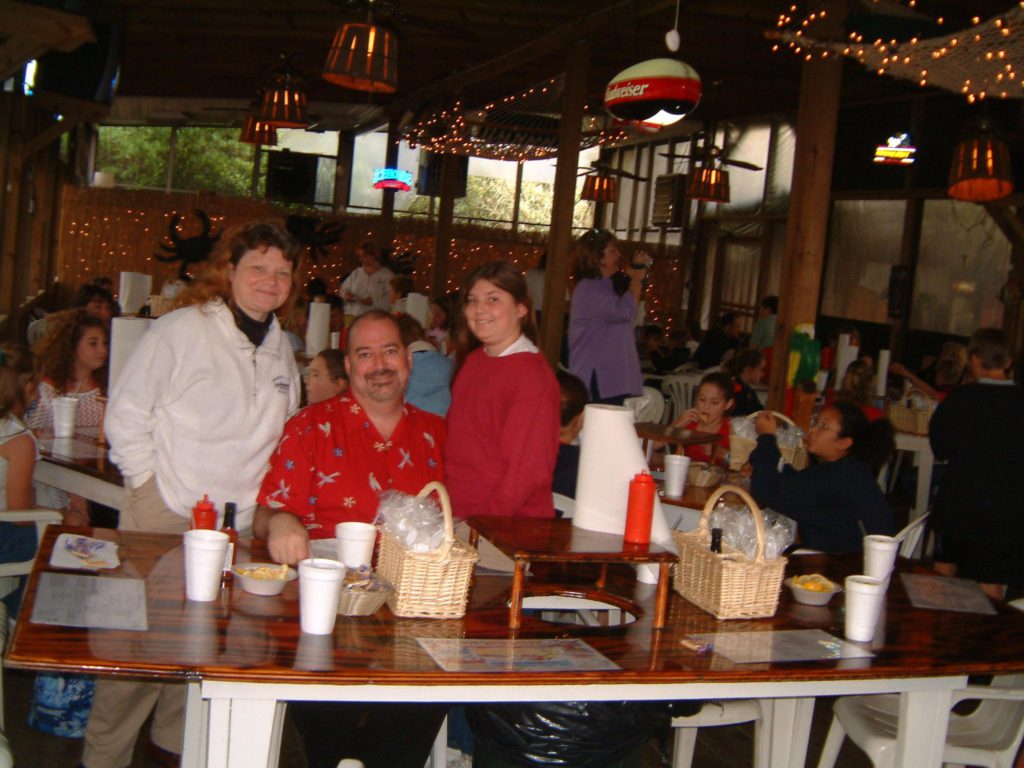
Near Fort Pulaski is The Crab Shack, an unparalleled dive where we had some delicious crab, shrimp, mussels, and crawfish. Well, some of us did. Chicken and hotdogs won the popular vote.
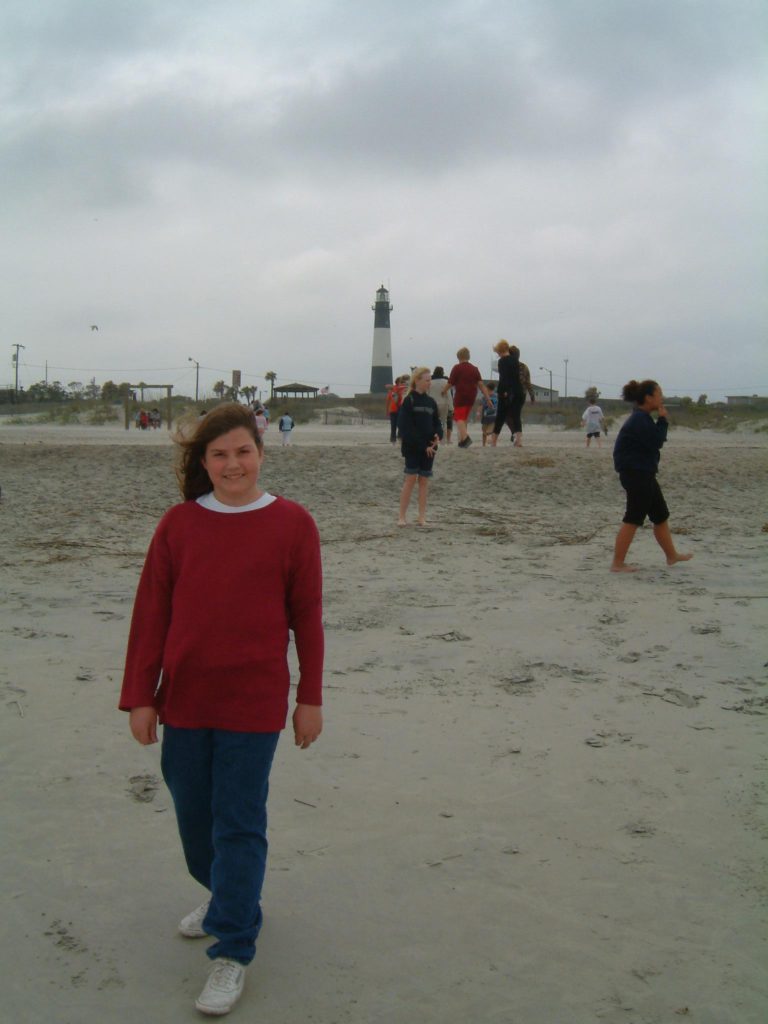
We stopped briefly at the lighthouse on Tybee Island, but with the museum closed it hardly seemed worth the price of admission, so we walked along the beach instead. It was cool, with a stiff wind blowing, but no rain. Nearby was a great concrete structure, now the Shriners’ Hall. I wondered if it was originally a WWII era fortification or U-boat lookout station. There were no explanatory signs, but plenty of keep off warnings.
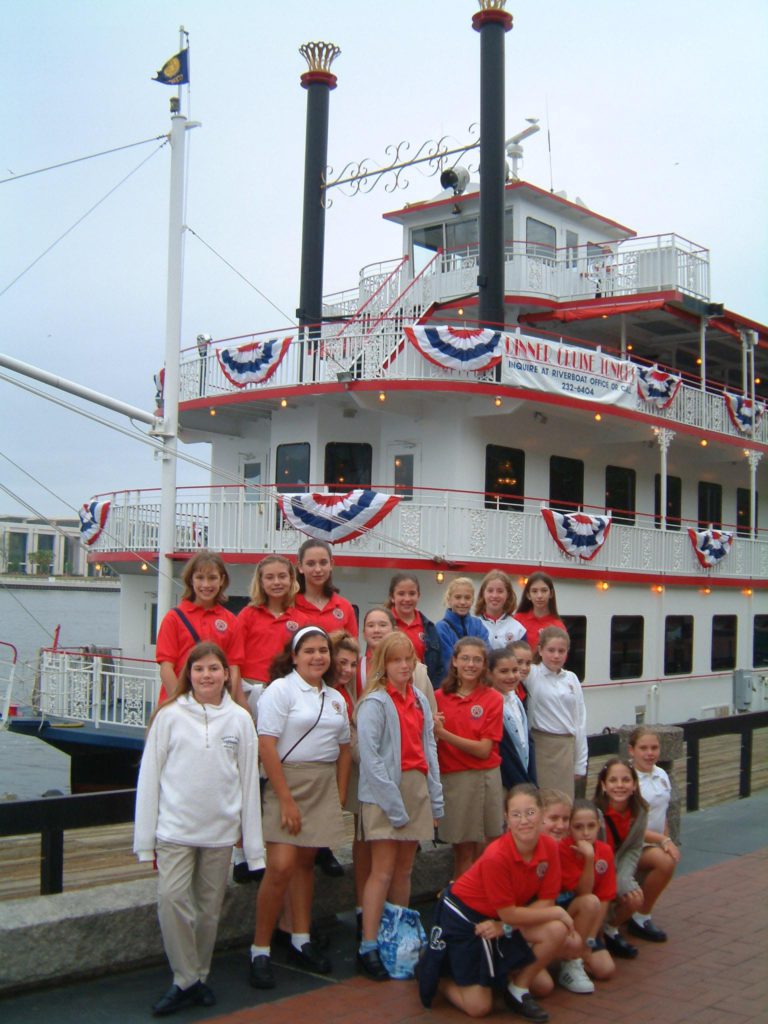
Dinner was on a riverboat on the Savannah River. The group, wearing their school uniforms, posed on the River Walk in front of it prior to boarding. Quite a few of the kids were dragging from our busy schedule, and a few had colds or the flu, but there was still an enthusiast group doing karaoke after dinner.
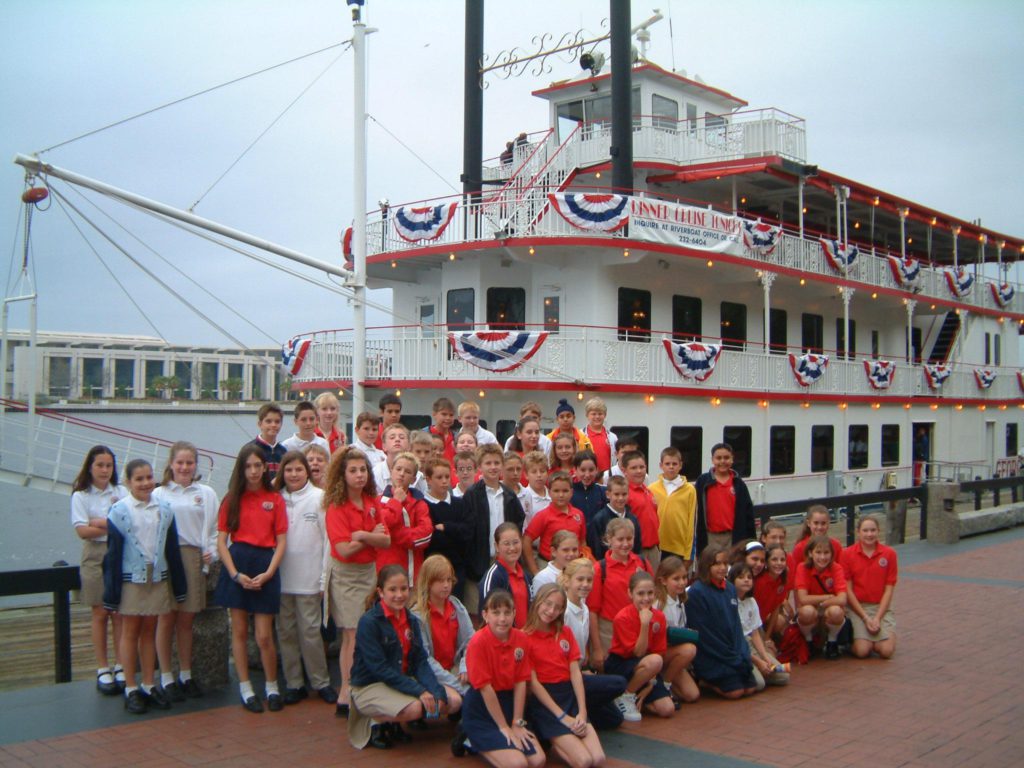
We were all definitely ready for bed by the time we got back to the hotel .
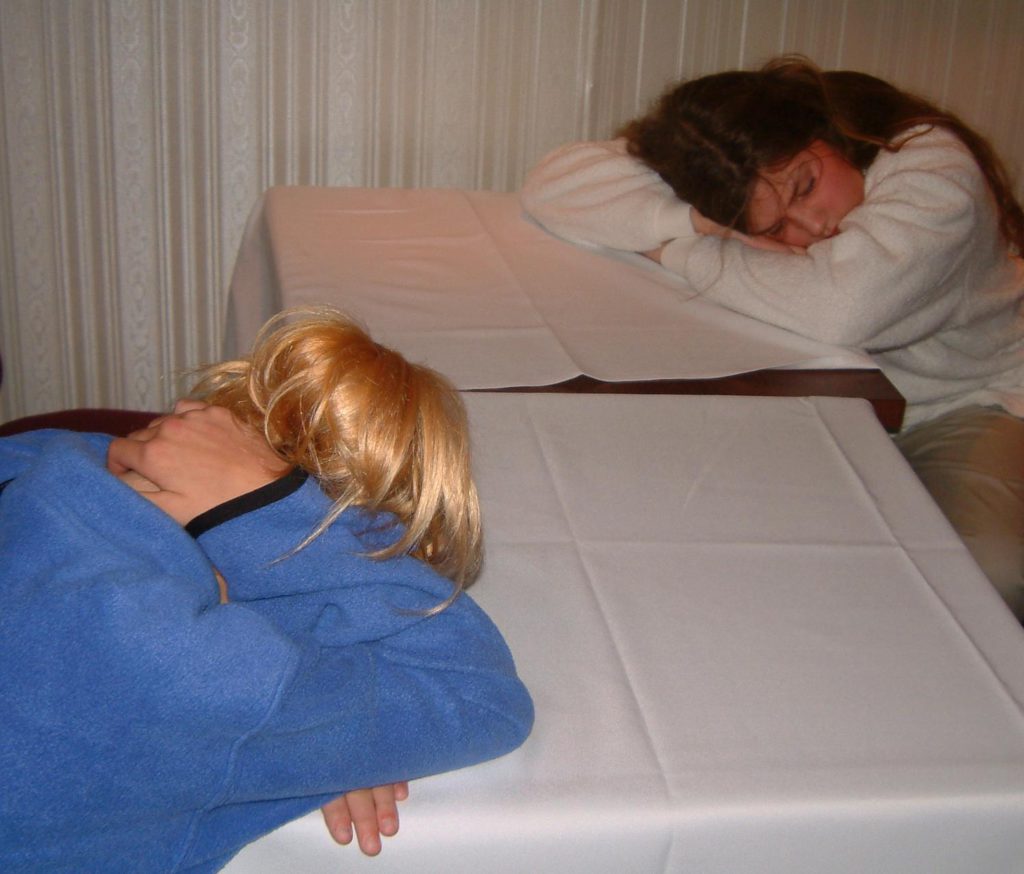
Friday
Luggage packed, continental breakfast, and onto the bus by 9:00 am, we headed for our final stop: the Mighty Eight Air Force Heritage Museum. This wonderful museum presents the history of World War II, particularly the European Theater, from 1933 through 1945. Several videos and our informative guide brought the conflict to life. It appeared to be the first time that many of the girls had been exposed to this information, and I think they learned a tremendous amount about it .
One terrific multi-screen show put us in the seats of a B-17 mission, including explosions and wind coming in the bomb bay doors. It was quite gripping .
On the way home I handed out some Weird Facts About Florida .
At last the six hour bus ride was over. A cheer went up as we pulled into the Windermere Preparatory School parking lot. Kids and luggage tumbled out of the bus into the arms and cars of their waiting parents.
We learned a tremendous amount on the trip. The students learned about everything from the Civil War to World War II, with stops in Antarctica and under the ocean along the way. The adults learned a few things, too, particularly about keeping track of students. I think everyone had a great time, but I also know we’ll all be happy to be home in our own beds, for a loooong night’s sleep.
Steve Alcorn
April 2002
Caribbean 2001
Miami, St. Thomas, San Juan
Miami
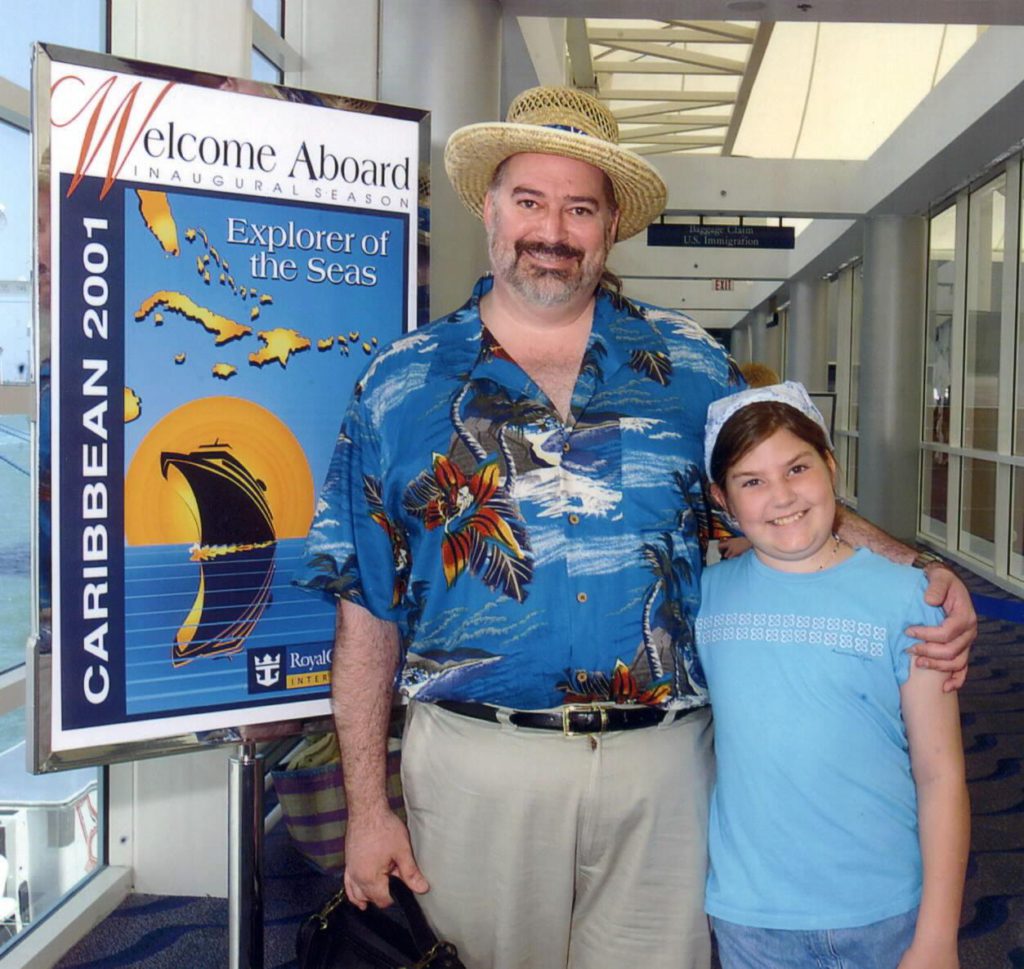
Saturday, April 7, 2001
For Spring Break, Danielle and I decided at the last minute to take a cruise aboard the newly-launched Explorer of the Seas. It’s the sister ship of the Voyager of the Seas, on which we sailed last year. Explorer sails the Easter Caribbean, while Voyager continues its Western Caribbean itinerary. We got a great last minute deal on an outside cabin. We even ended up on the port side of the ship, which proved to be the best view throughout the cruise.
Unfortunately Linda, swamped with six simultaneous projects, couldn’t get away. Never mind that Disney is laying people off right and left, she seems to be required to do the work of half a dozen of them.
So Friday Danielle and I packed up and headed down to Ft. Lauderdale for a night at the beach. That way it’s a relaxed drive to the port on Saturday.
We had a nice time at the beach at the Marriott Harbor Beach Resort. We invented a new game, “dueling towers”, where two identical towers made by inverting a plastic cup of sand must be defended against the encroaching surf by the respective players. Danielle found that a combination of walls and trenches worked best.
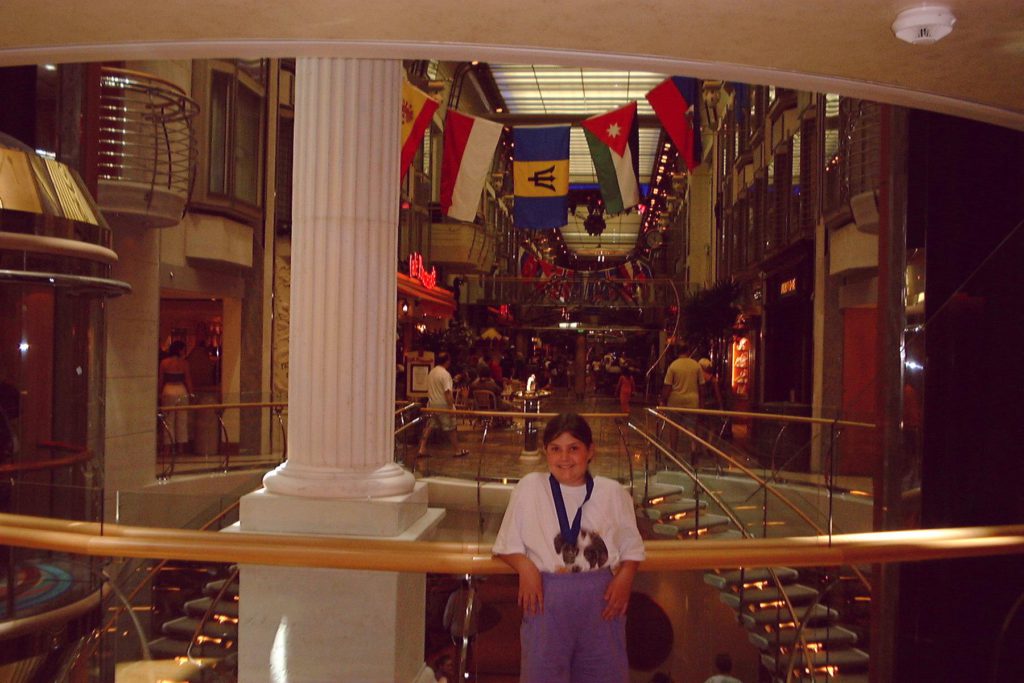
Saturday we headed down to the Port of Miami, stopping for lunch in a tiny Chinese restaurant on the way. It turns out you can get on the ship long before the advertised 2pm boarding time. Some people reported having lunch aboard. Still, we felt lucky to be settled in our cabin shortly after 2pm. Our luggage arrived soon thereafter.
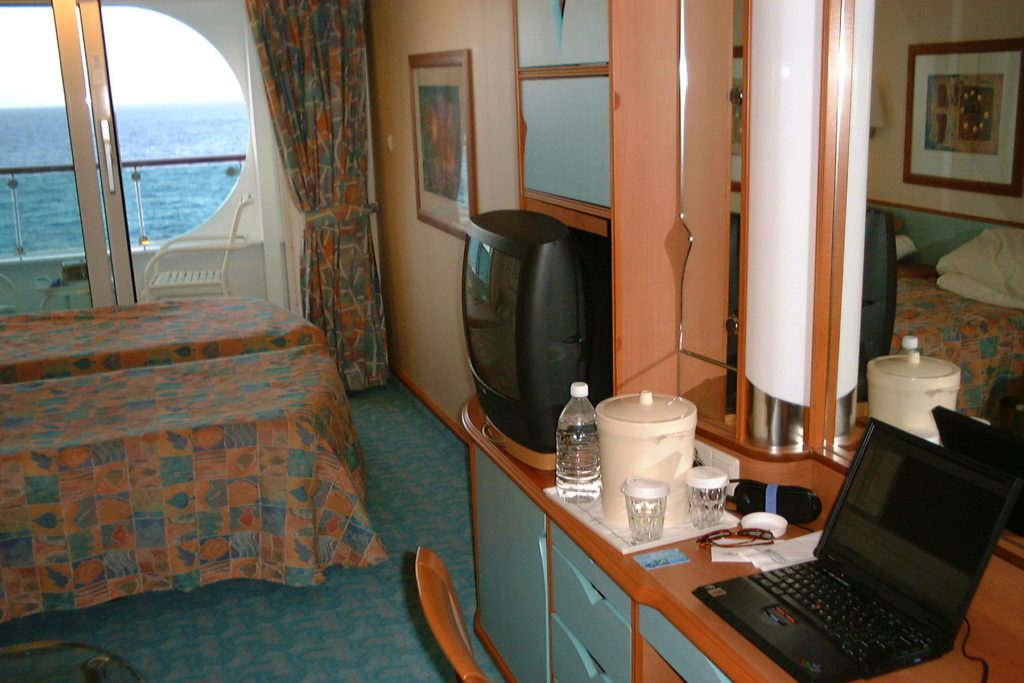
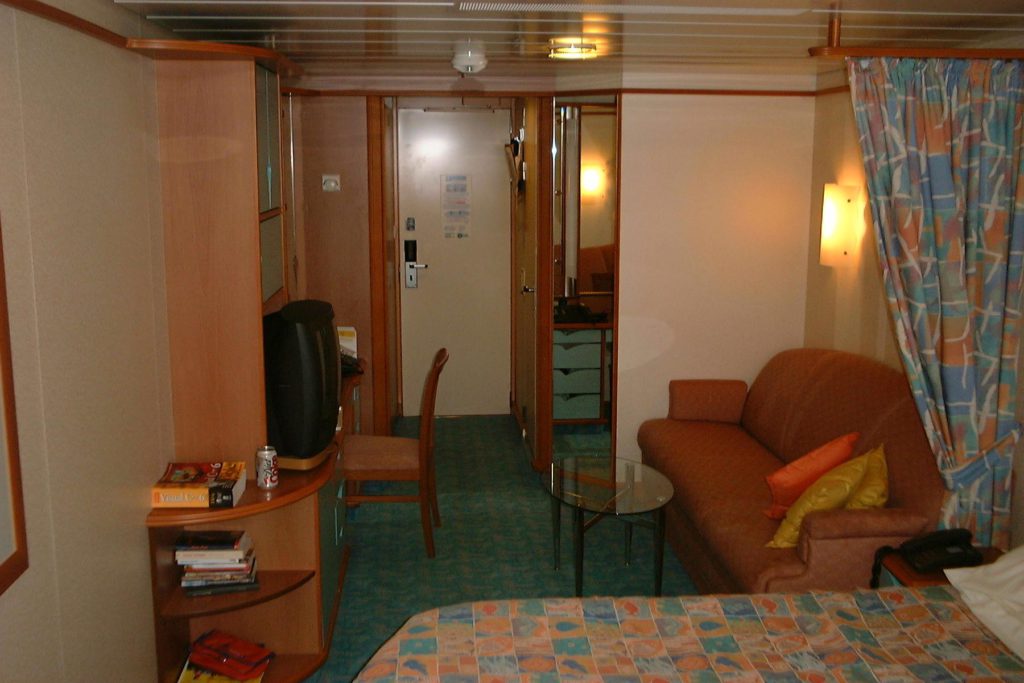
Explorer of the Seas is extremely similar to Voyager of the Seas. As we wandered around the ship Danielle pointed out to me a wall covering here or a carpet there that is different, but on the whole it’s nearly a twin. Our cabin was about half the size of the suite we had last year, but was very nice, well-finished and comfortable.
After the obligatory lifeboat drill (which we spent mugging for the camera) we checked the seas for any signs of icebergs, and then returned our life preservers to the cabin.
Ain’t technology grand? Even halfway to the Bahamas, of course we could send and receive email in our cabin. Cybercabin turned out to be a modem connection through the phone at 45K. It worked almost 100% of the time, and cost $100 per cruise – maybe not as cheap as a few quick uses of the Internet terminals in the library at $0. 50/minute, but a whole lot more convenient.
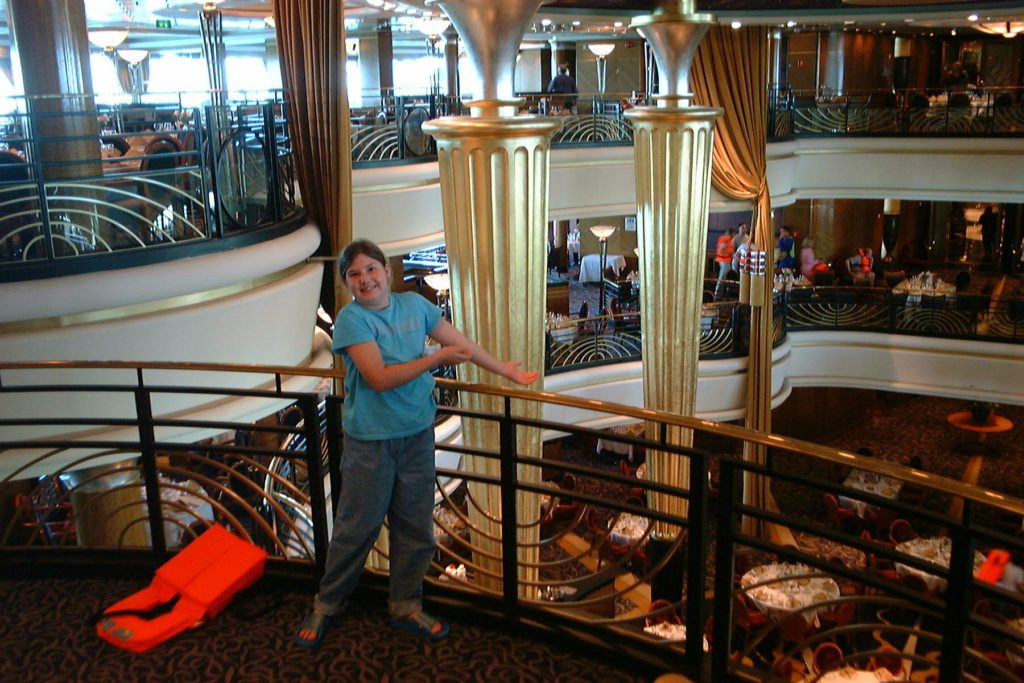
Danielle was the social butterfly at dinner. We have people from Ft. Lauderdale, Wisconsin, New Jersey and Philadelphia at our table for 10. It’s actually one of the best tables on the ship, being in a quiet side room right next to a very large window. It’s so secluded that it even took the maitre d’ a while to find it. The food was about the same as the last cruise – good, but not great – but the service was much better.
Nassau
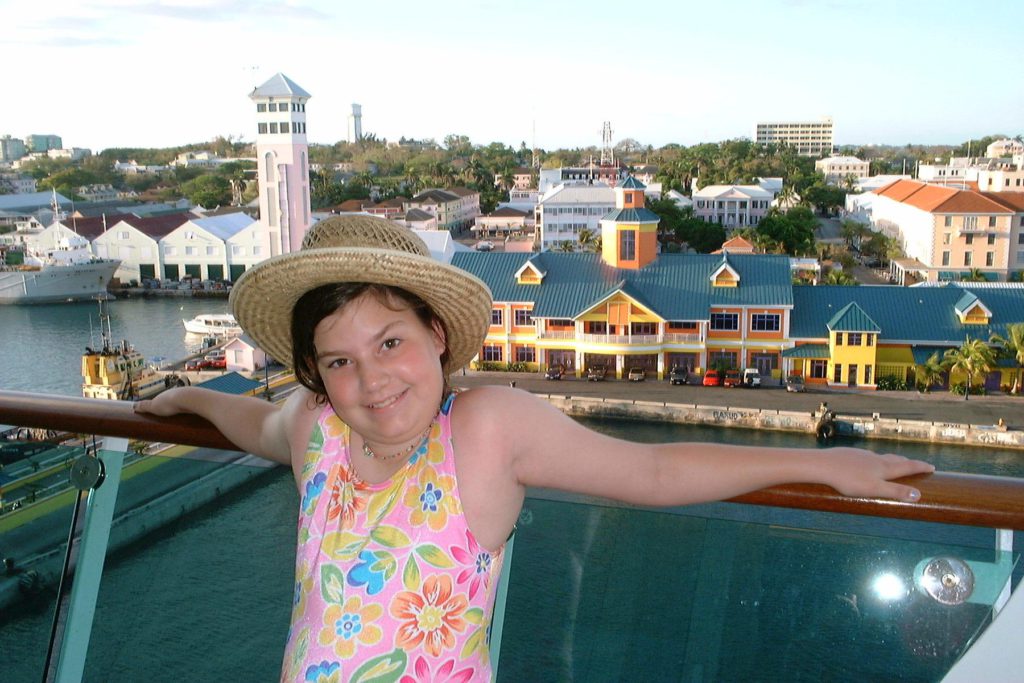
Sunday, April 8, 2001
Well, we survived snorkeling. Linda wouldn’t have liked it. There were a lot of very colorful fish that have learned the boats bring people with fish food. There were also a zillion itty bitty jellyfish (0. 5″ size), harmless, but they would have freaked Danielle out if she’d noticed that we were swimming through them. Fortunately she didn’t. The water was very warm, and fairly clear.
Linda would have liked the ride on the catamaran. We lay on the cargo mesh and sailed back while the crew and a few of the rum-plied women danced to some pretty good reggae CDs.
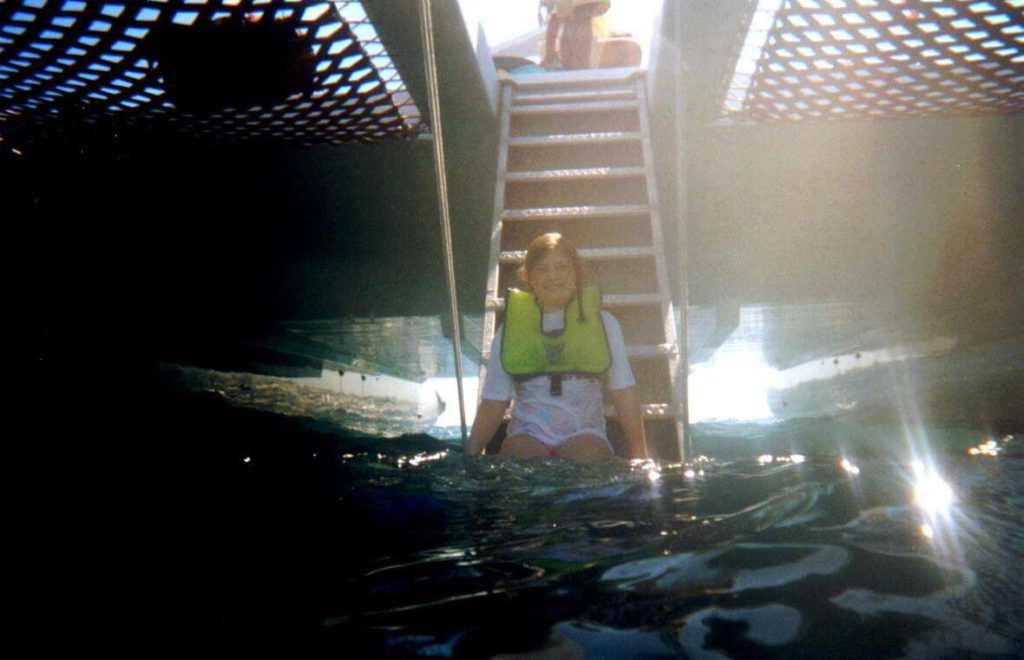
We managed to lock ourselves out of the safe in our cabin (my fault, I think). It took at least 5 seconds for one of the officers to open it with an electronic device that plugs in behind the handle.
We left port at 2pm today for the long trip to St. Thomas. Danielle went to her first Adventure Ocean Voyagers group. Afterwards there was the formal dinner (which Danielle also attended, since Adventure Ocean is closed at that time).
We got dressed in our best formalwear and went to the captain’s reception, where we had our portrait snapped about a dozen times. I hope Danielle doesn’t pressure me into buying every version. I managed to hold out against buying the stupid photo with the pirate in the background.
Our dining companions all did different things in Nassau. One group went on the pseudo-sub – a boat with portholes below the water – another group went to Atlantis, and the third went on the dolphin encounter. The boy who did this was very enthusiastic about it, but frankly both his descriptions and the printed materials sounded pretty lame. It’s not like you get to swim with them.
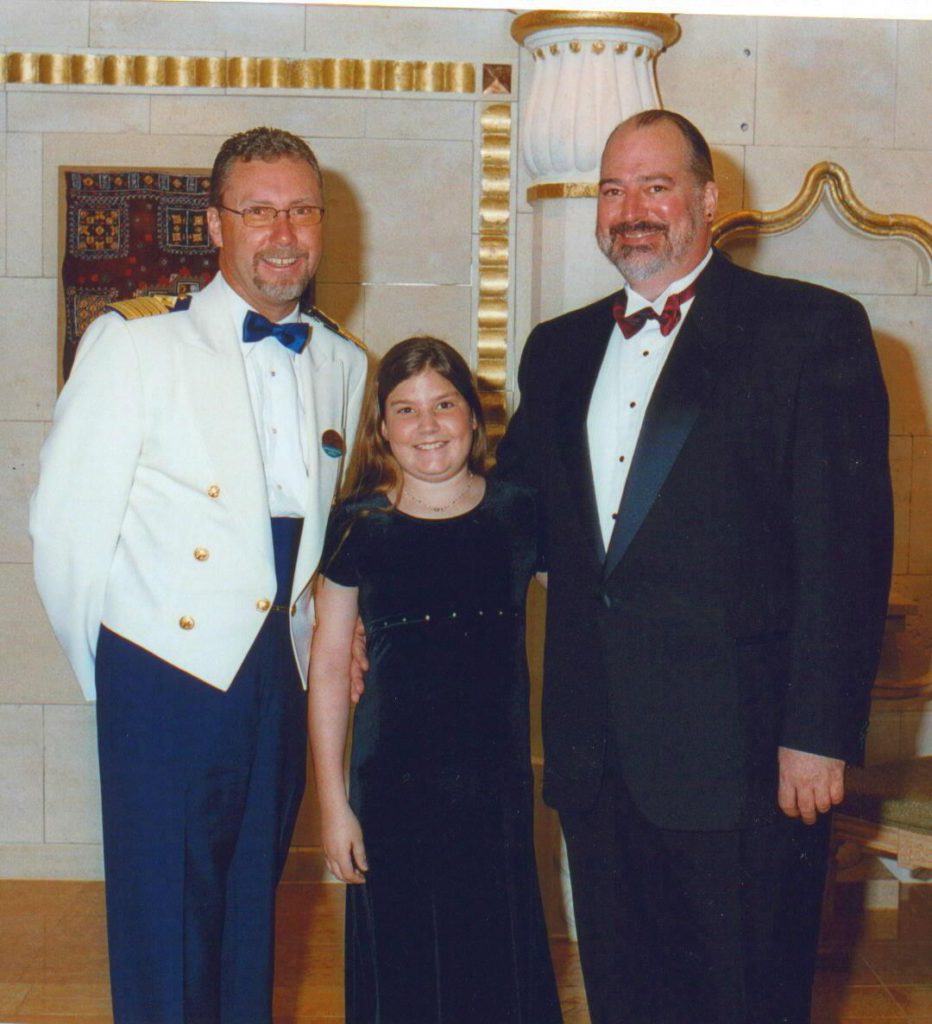
Our captain has quite a good sense of humor. He described our day at sea tomorrow as “cruising through the middle of the Bermuda Triangle”.
At Sea
Monday, April 09, 2001
The day started with room service on the balcony. The lochs were the best food I’ve had onboard. Throughout the day I’ll wrestled with the vagaries of C++, while Danielle joined the Voyagers.
We had a “high Italian” meal at Portofino for dinner ($20 extra, and worth it). Danielle, to her surprise, found plenty of things she liked, including a nice cheese plate, filet mignon, and chocolate mousse.
Afterwards we headed for the main theater, where we saw an entertaining – if uneven – musical review called History Repeating, and watched small Spanish-speaking children attempt to commit suicide by leaning over the balcony railing.
St. Thomas, U. S. Virgin Islands
Tuesday, April 10, 2001
Today we had breakfast on the Balcony overlooking the harbor in St. Thomas – it always reminds me of the Greek islands. Then we headed for downtown Charlotte Amalie (pronounced “Am-all-yuh” aboard one of the 22-person “taxis” that take passengers – on the wrong side of the street – from the Pier, along the harbor to the shopping district. Danielle blew her wad on souvenirs, mostly from the “changes color in the sun” shop. We also checked out a few Jewelry stores and a liquor and cigar shop. They make an excellent rum here in the Virgin Islands, and it only costs about $5 a bottle, but I couldn’t be bothered trying to get it back intact. I looked briefly for Cuban cigars until it occurred to me that St. Thomas is technically part of the United States. It may be duty free, but it doesn’t appear to be free from politics. In fact our only non-U. S. -affiliated stop on this trip was Nassau, so I guess I’m out of luck.
After a snack in the ship’s Promenade Café, we caught the “Leeland Snead” oyster boat (or facsimile thereof) for the hour cruise to Trunk Bay on St. John. I never realized how many little islands, rocks and reefs there were around St. Thomas. You definitely have to know where you’re going.
The crew of the Snead proved to be quite personable, and provided a running commentary throughout the trip. They were mostly Maryland and Virginia expatriates, down for the season. The captain was from North Dakota, a place I don’t associate with seafaring. He must have spent time on the east coast, though, as he had a fuzzy little dog named Chesapeake.
The diving at Trunk Bay was good, not great, but better than Nassau. We snorkeled along the reef and right up to the beach. After some sand and surf play they hauled people back in small inflatable dinghies, but Danielle and I speed-snorkeled our way back to the boat. Some snacks and unlimited rum punch (hic) occupied the hour-long return trip.
After a much-needed shower we headed down to dinner to swap stories with our dining companions. There we watched the sun set on the Charlotte Amalie harbor as we pulled out of port. Since it is only about 80 miles from St. Thomas to Puerto Rico, once we were out to sea we “killed time”, as the captain put it, cruising at what we reckoned to be a mere three knots for most of the night. Oddly, the ship rolls much more at this speed. I sat on the balcony and smoked a (Dominican) Partagas and watched the glow of the lights of the Greater Antilles beyond the horizon.
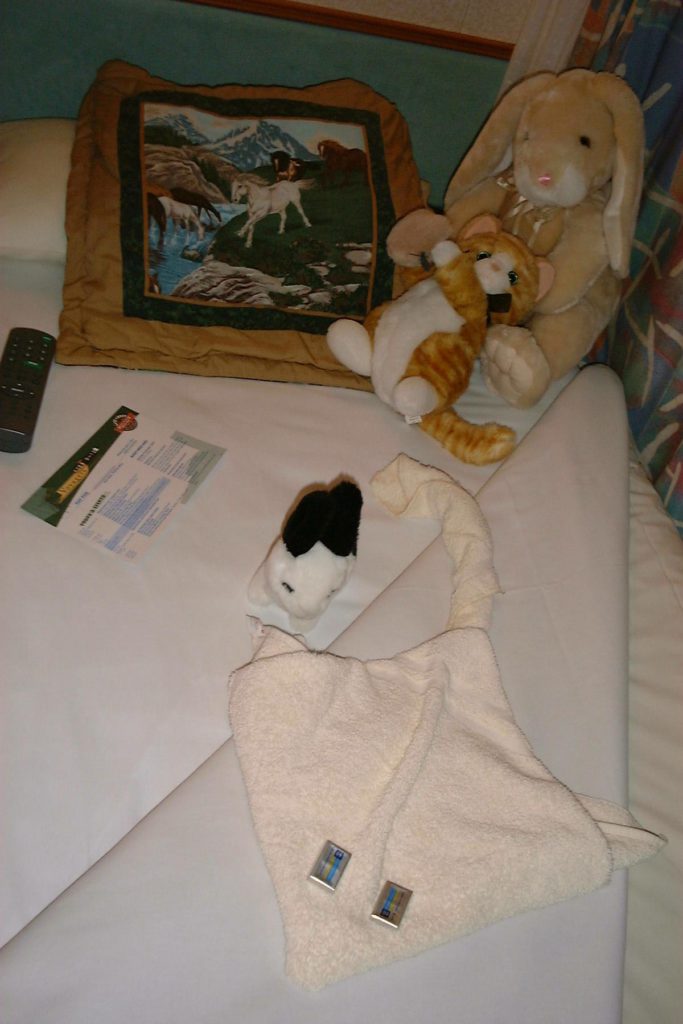
The cabin stewardess made Danielle a sting ray out of wash clothes and hand towels.
San Juan, Puerto Rico
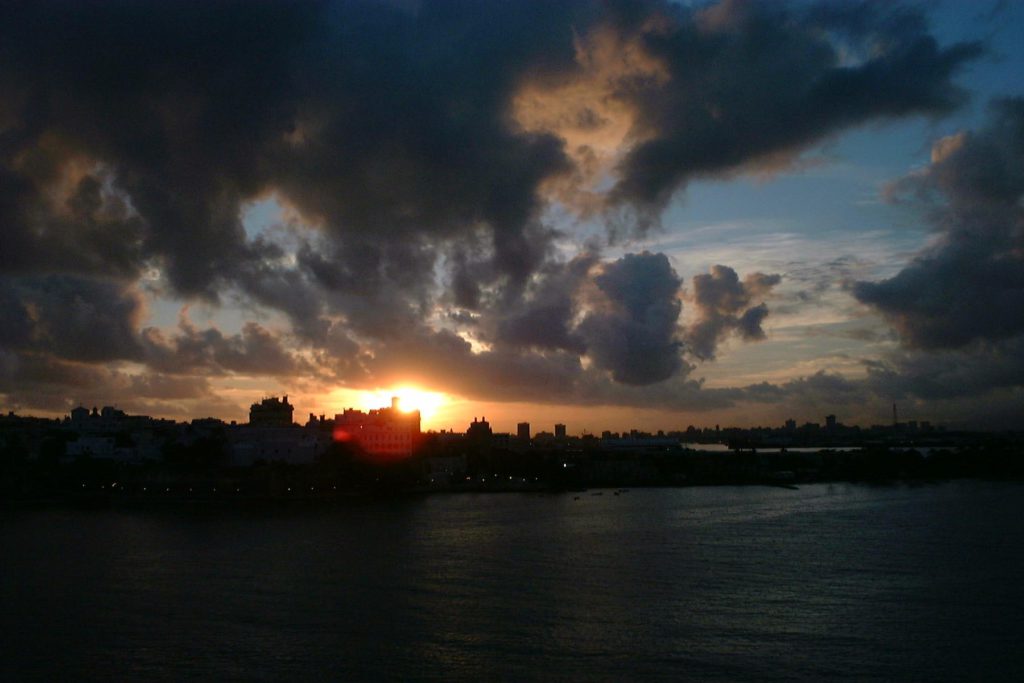
Wednesday, April 11, 2001
As the ship pulled into through the headlands around 6am there was a spectacular sunrise over the fort that guards the entrance to San Juan harbor. In the distance I could see rain coming down over the tropical forest in the mountains.
At 8:30 the bus left for the hour drive to our horseback ride. Our bus driver was very skilled, navigating the traffic while wielding the horn as his chief weapon.
San Juan is a city of barred windows. Destruction sites outnumber construction sites by a wide margin. We were quickly out of the city, though, following the coast on a road lined with fast food stands and factory outlet malls. In about an hour we arrived at the 600-acre Caraballi ranch, a tropical plantation that rambles over several foothills adjacent to the rainforest.
There were about thirty of us on the outing. We were divided into experienced and inexperienced groups, with experienced being defined as “having been on a horse five times”. I was surprised to find myself in the experienced section, and to discover that far more than half of the group was in the “never been on a horse” category.
We were assigned horses individually, and each indeed seemed to match its rider’s personality. Danielle, probably the best rider in the group, mounted “Sensation” a horse that always wanted to be at the front. I found myself on Marquis, who was extremely dependable and loved to eat.
The ride went over rolling terrain, sometimes crossing open hillsides but more often under the trees. The trail was muddy from the morning’s rain, but the horses didn’t seem to mind. They were extremely responsive to direction, and I found myself successfully resting most of my weight on the stirrups, which made for a comfortable ride.
These are Pasafino horses, trained a bit differently than those Danielle normally rides. They have a very quick trotting gate that Danielle called a “jog”. It’s tough for an inexperienced rider to get the horse to do it, but during the brief moments I accomplished it, it was like gliding on ice.
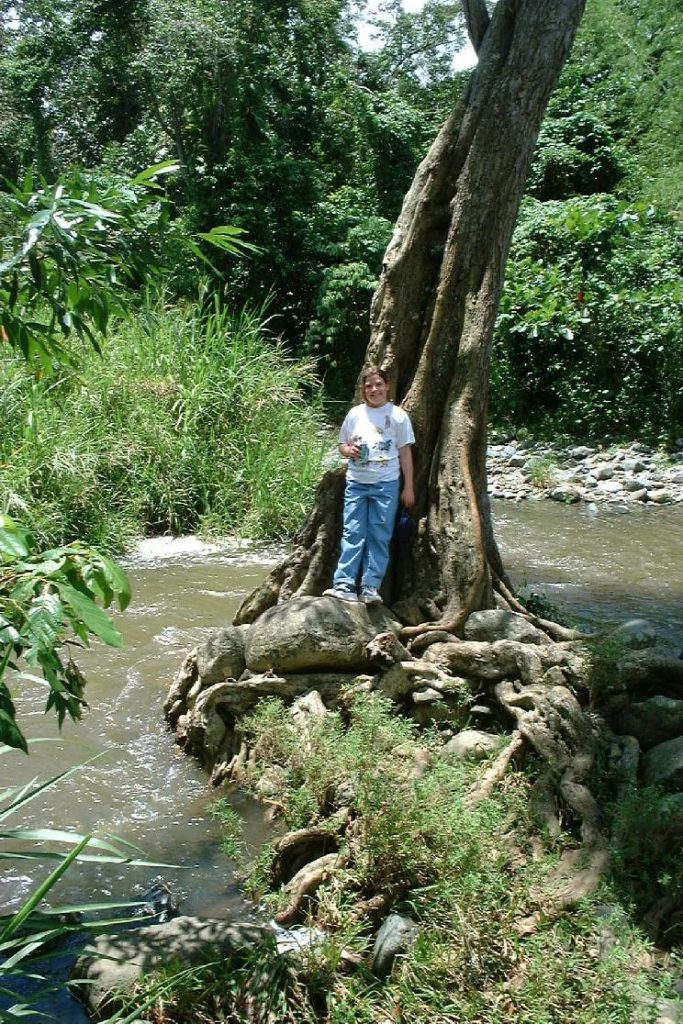
After an hour we stopped for a drink by the river. Normally this is an opportunity for a swim, but we were told that they were expecting flash floods. This didn’t give me a warm feeling as we sat by the bank sipping our drinks. Frankly, I think we were just running late.
Another half hour brought us back to the barn, surprisingly free from saddle sores and with only slightly tired legs. Danielle, of course, was unaffected.
Mr. Toad’s Wild Bus Ride back to the ship got us onboard shortly before our 2pm departure time. The afternoon was a good time to relax in our cabin and catch up on journals.
Danielle again accompanied me to a formal dinner (just between you and me, I think the social experience is growing on her) and then spent the evening and late night at the kid’s pajama party.
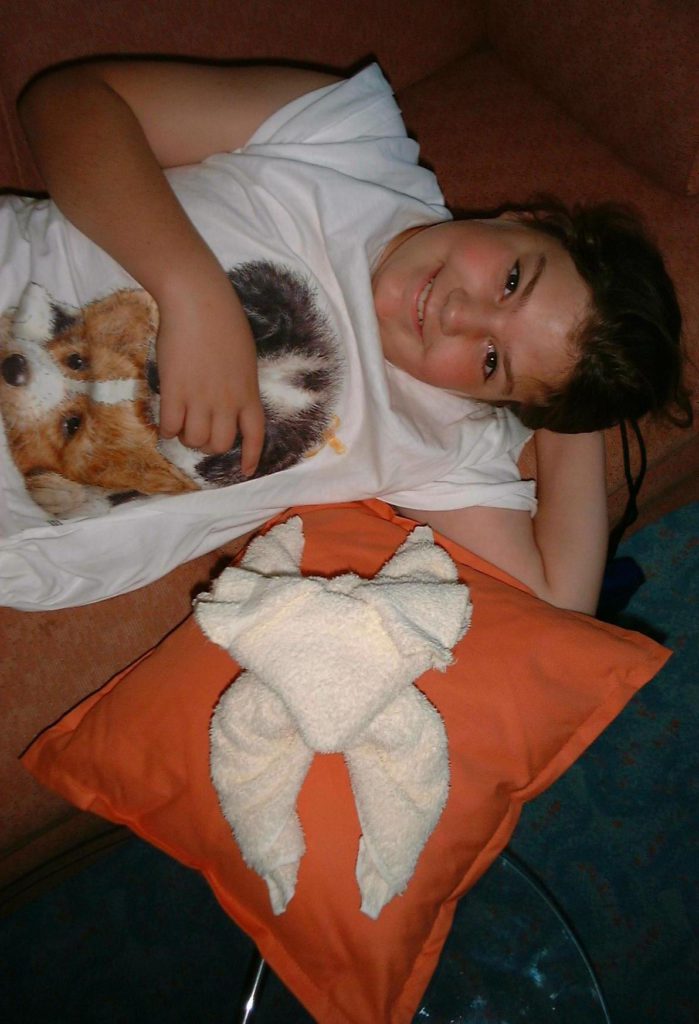
The towel animal of the day was a lamb. Or possibly a crab.
Labadee, Hispanola
Thursday, April 12, 2001
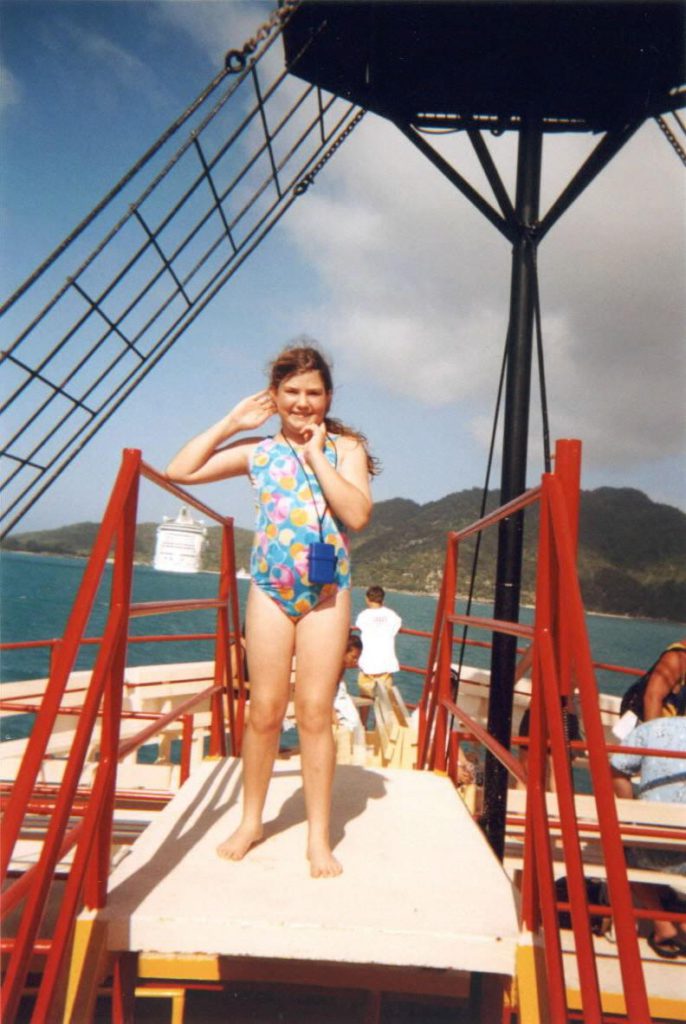
Today we awoke in Labadee, a private cove at the northern tip of Haiti (which Royal Caribbean calls Hispanola for marketing reasons). The southern two-thirds of Hispanola is the relatively prosperous Dominican Republic, which was primarily settled by the Spanish. Haiti, on the other hand, is a colony comprised 95% of the descendants of former slaves. Two hundred years of mismanagement and deforestation have reduced it to near-total poverty. On satellite photos you can actually see the demarcation between the two countries. Royal Caribbean’s private cove remains forested, however.
After a late breakfast on the balcony we caught a tender to shore. We stopped briefly at the native marketplace, where we received the Jamaica-like hard sell from dozens of vendors selling utterly worthless native “crafts”. Danielle was out of spending money, but I gave her $10 to let her try out her negotiating skills. In mere minutes she’d negotiated a $2 pair of maracas down to only $10.
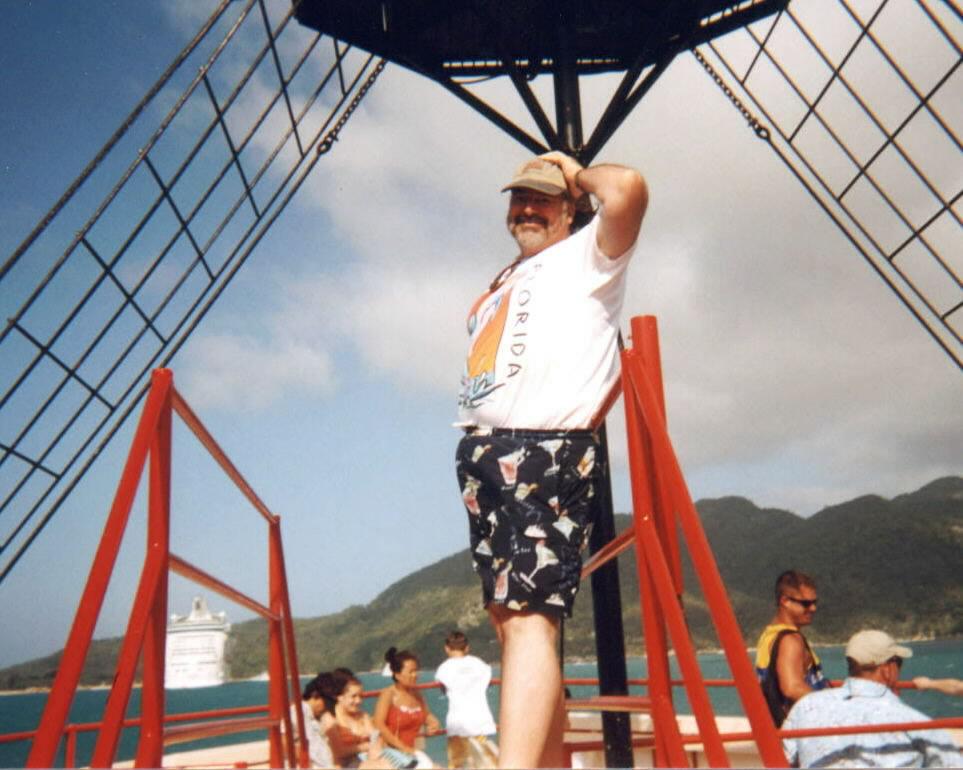
We caught the dive boat Fire Dancer for the hour ride to Amiga Island, a tiny oasis surrounded by coral reefs. The water was the clearest we’ve seen on the trip. We started by exploring the 16th century canons, pottery and giant kettles that have been sunk here since our last visit. There was also an enormous anchor. The current was stronger than on our last visit, and I was concerned that Danielle would find it a struggle to make it back to the shore if we went all the way out to the reef, so we contented ourselves with beach play for the rest of our stay.
A strong wind blew up, and the Fire Dancer had quite a fight getting back to the ship. Shortly afterward we set sail, and Explorer also found it rough going. Still, Thursday night is lobster and filet mignon in the main dining room, so even if we have to weave, we make the trip.
Danielle wanted to go to the midnight buffet, and stayed up watching “Best of Show”, which was hilarious — a spinal-tap style fake documentary about a dog show. But in the end, the spirit was willing but the flesh was weak, and we both slept through it.
They’ve been replaying the video of some of their entertainment in the cabins. The best one was the “Not So Newlywed Game”. The couples ranged from one married 45 years to one married a week. When they asked the latter “What is the most unusual place you’ve made love?” I don’t think they were expecting the answer “In one of the ship’s glass elevators”.
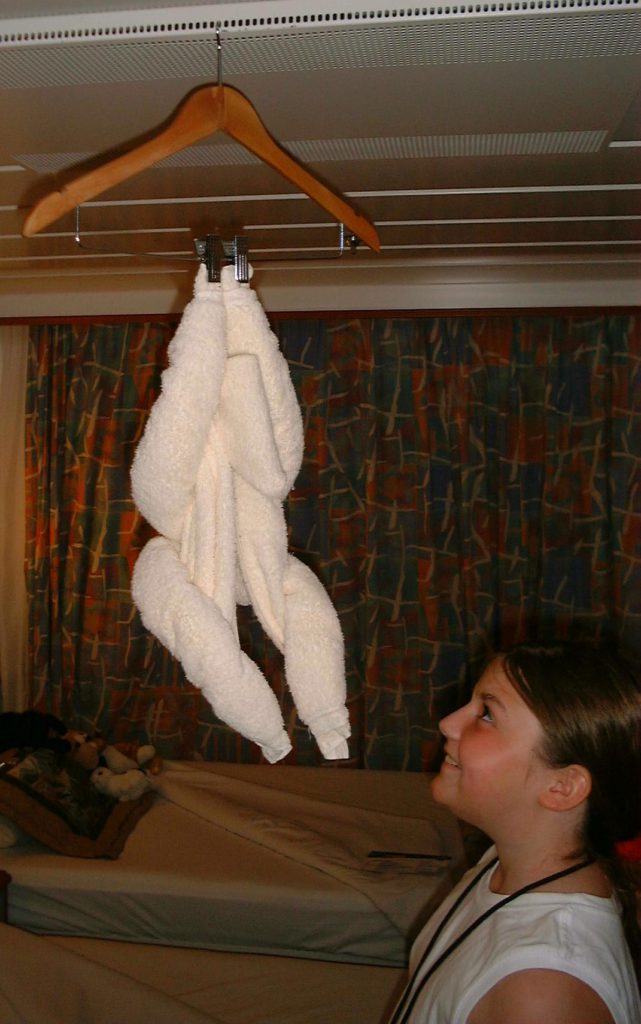
Today’s towel animal: a swinging monkey.
At Sea
Friday, April 13, 2001
A leisurely day at sea, the best way to end a busy cruise. I spent some time in the cabin torturing myself with C++, then caught Danielle in the talent show, where she recited Shel Silverstein’s “Christmas Dog”. Later she went ice skating, which is a neat trick when you’re six miles east of Cuba.
After a bite at the Island Grill, which affords a 180 degree view of our no-wake zone, Danielle spent the afternoon at Ocean Adventure doing improv and redeeming her Ocean Dollars.
We made a quick stop to say goodbye to our dining companions (and tip the waiters) and then it was back to the Portofino for an elegant farewell dinner.
Miami
Saturday, April 14, 2001
Our lucky color was brown. After a leisurely breakfast in the Windjammer, we were called first for debarkation. There was the usual uncomfortable backup getting to the gangway, but then we quickly cleared customs and hit the road. It felt strange to be driving again. We found that we still had our sea legs when we stopped at a service plaza on the turnpike and felt the building swaying. Even with a break for lunch we were home in under four hours.
Things to remember for future cruises:
Book a port-side balcony cabin between the elevators.
Arrive early, perhaps by noon.
Don’t buy the unlimited soft drink sticker for the charge card. It’s a complete rip-off, since it’s only good in the bars, and they’re never open when you want a soft drink. I think I got two Diet Cokes for my $33.
Book the six-person sailboat snorkel trip on St. Thomas.
Buy cigars in Nassau.
Don’t even think of shopping in San Juan.
Make sure Danielle brings shoes that can actually be worn, and don’t bother packing panty hose, slips, or 75% of her other clothes.
Washington, DC 2000
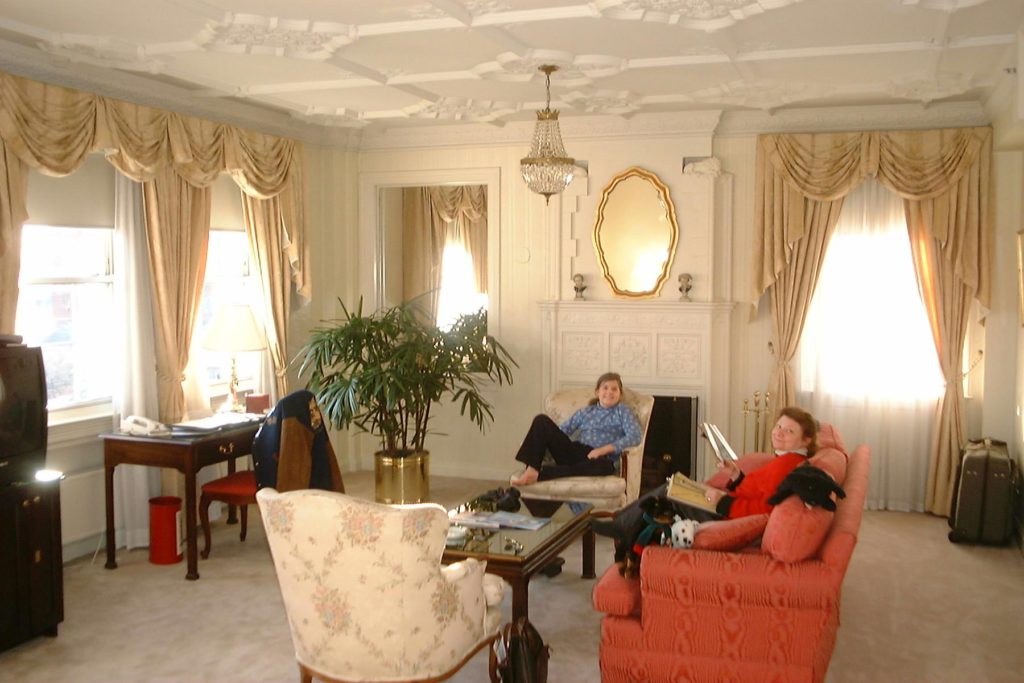
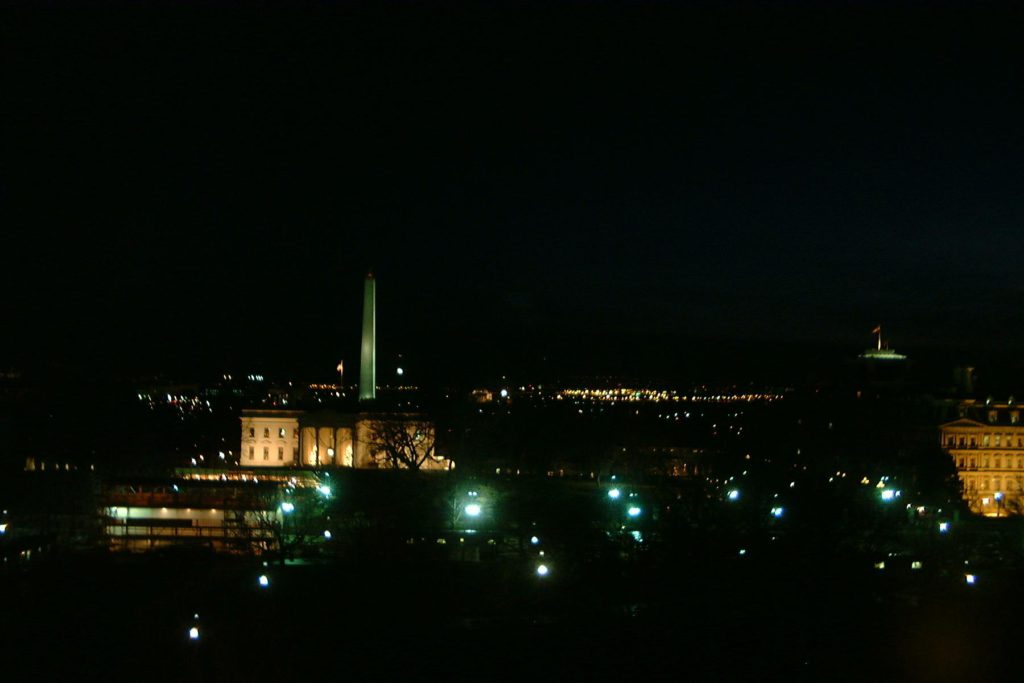
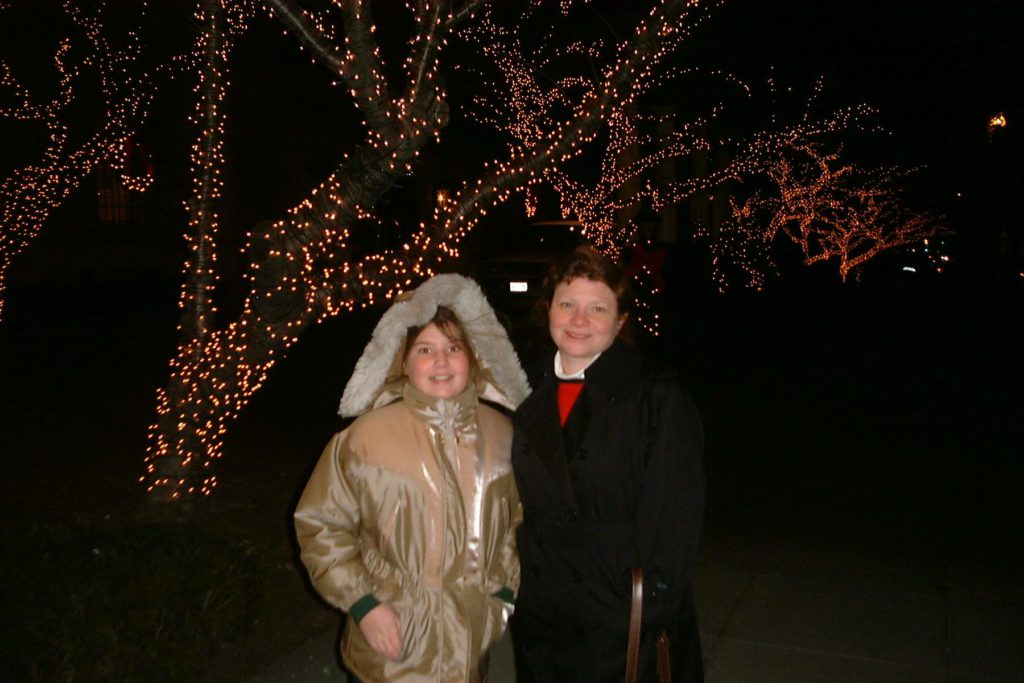
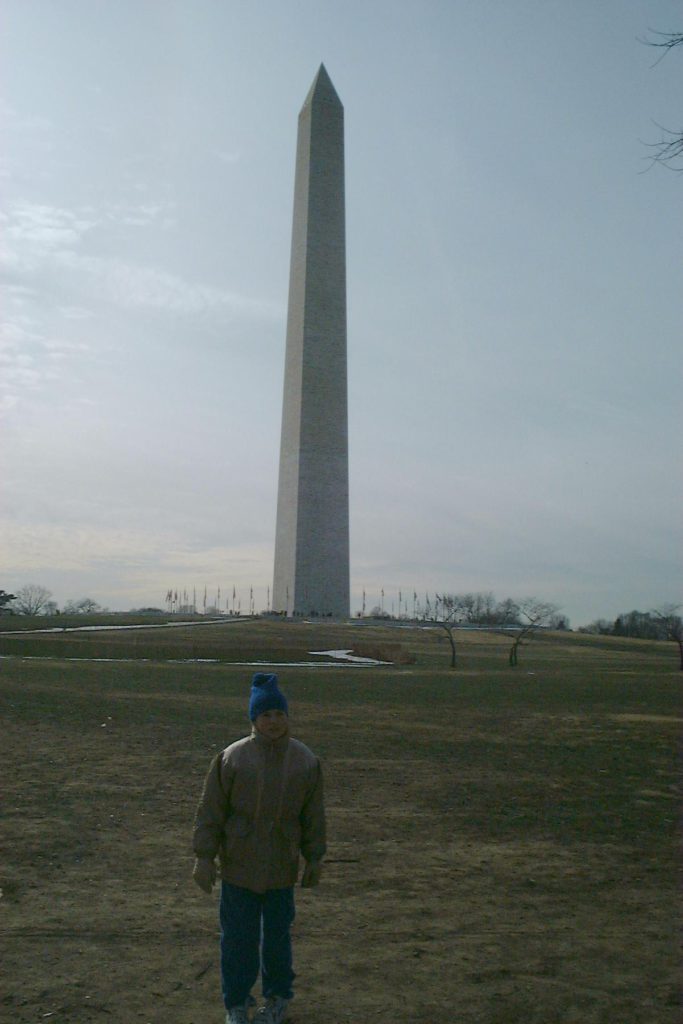
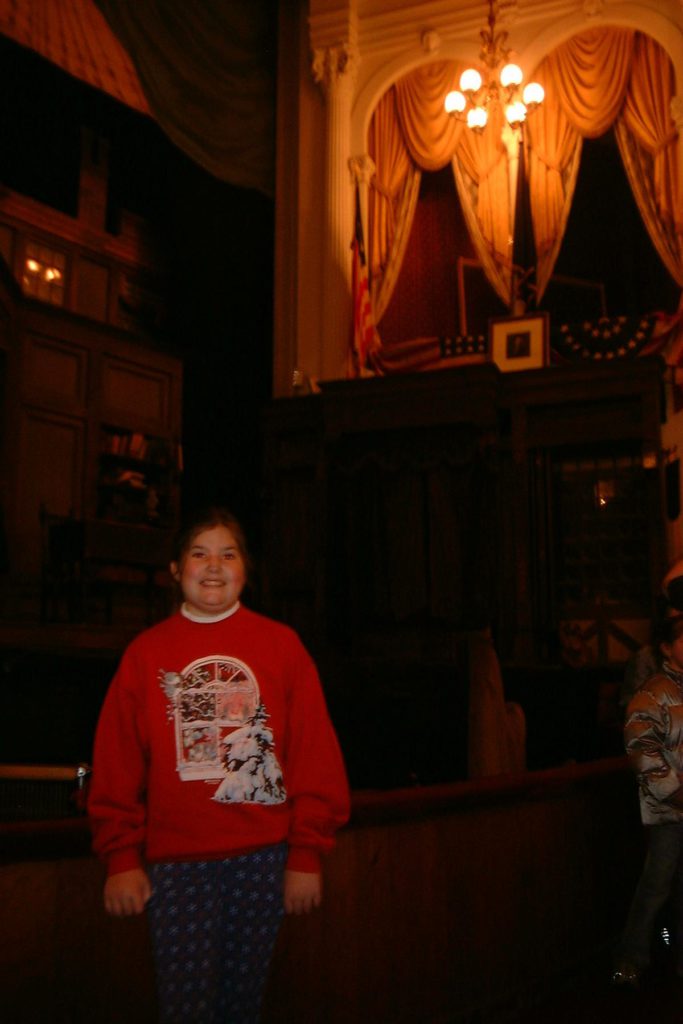
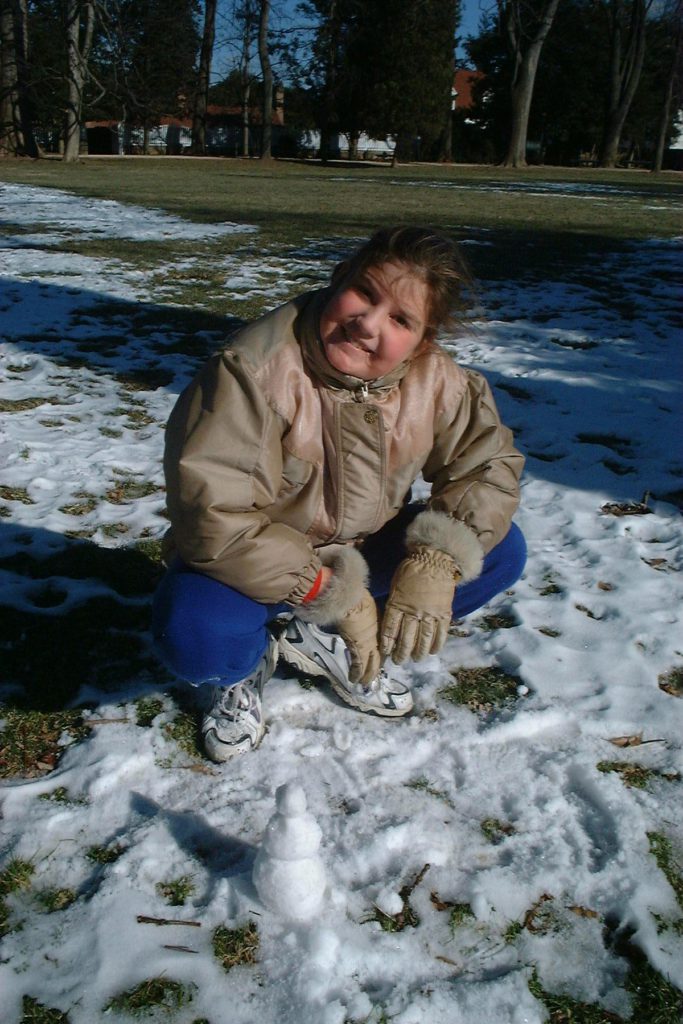
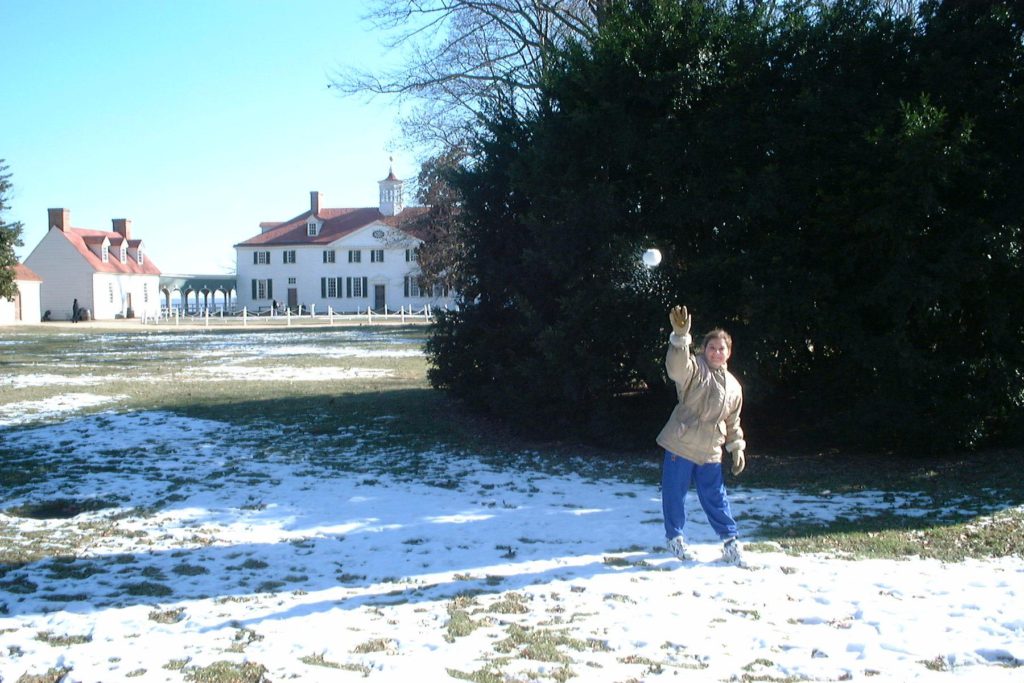
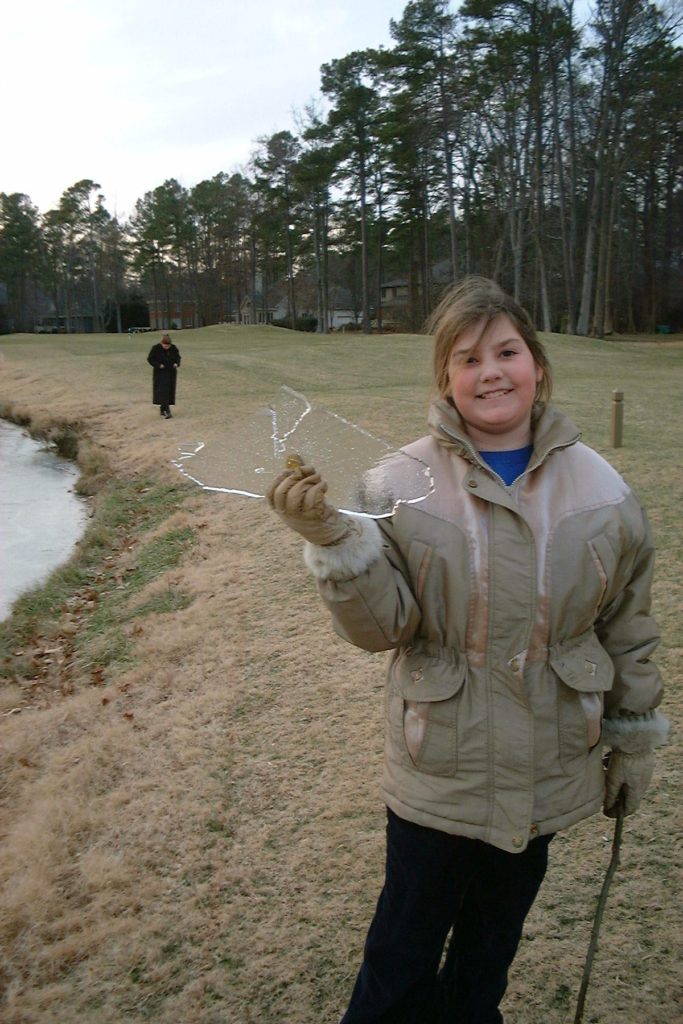
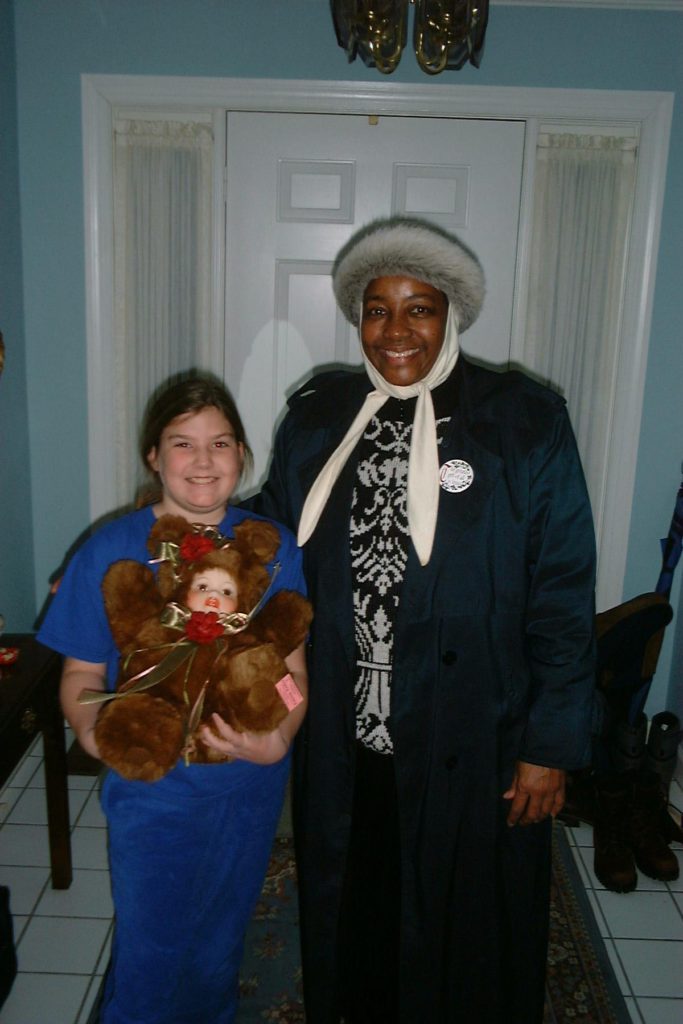
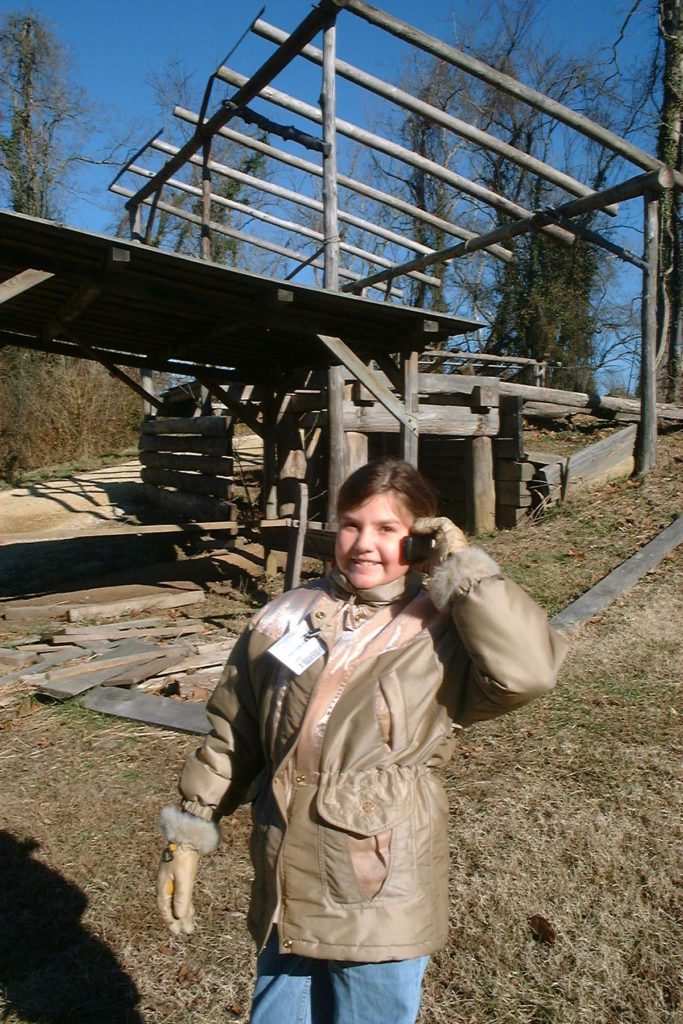
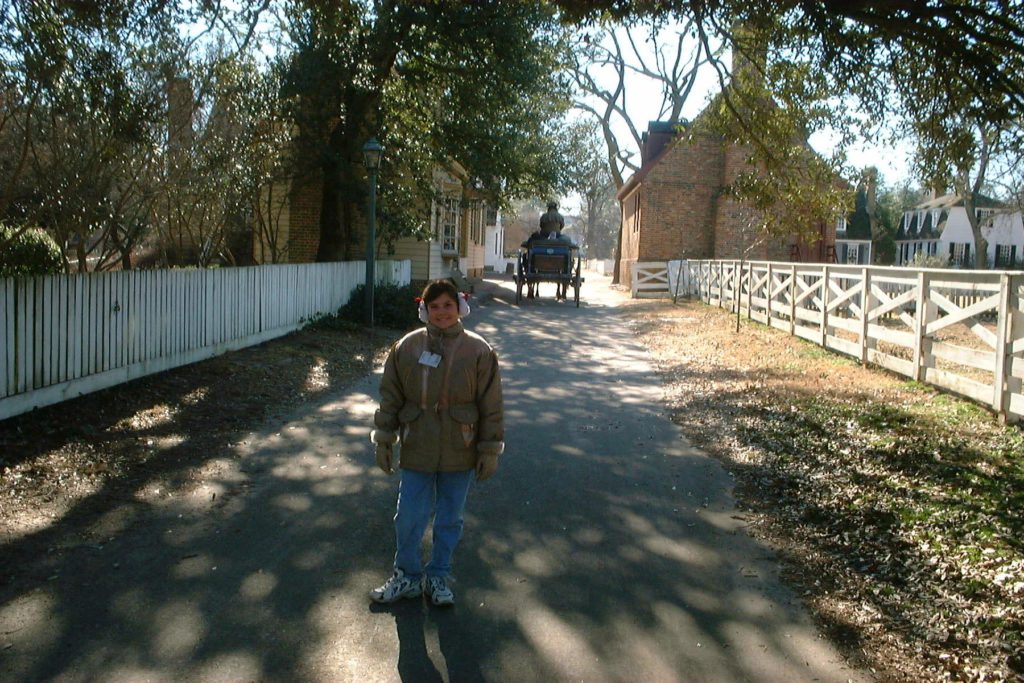
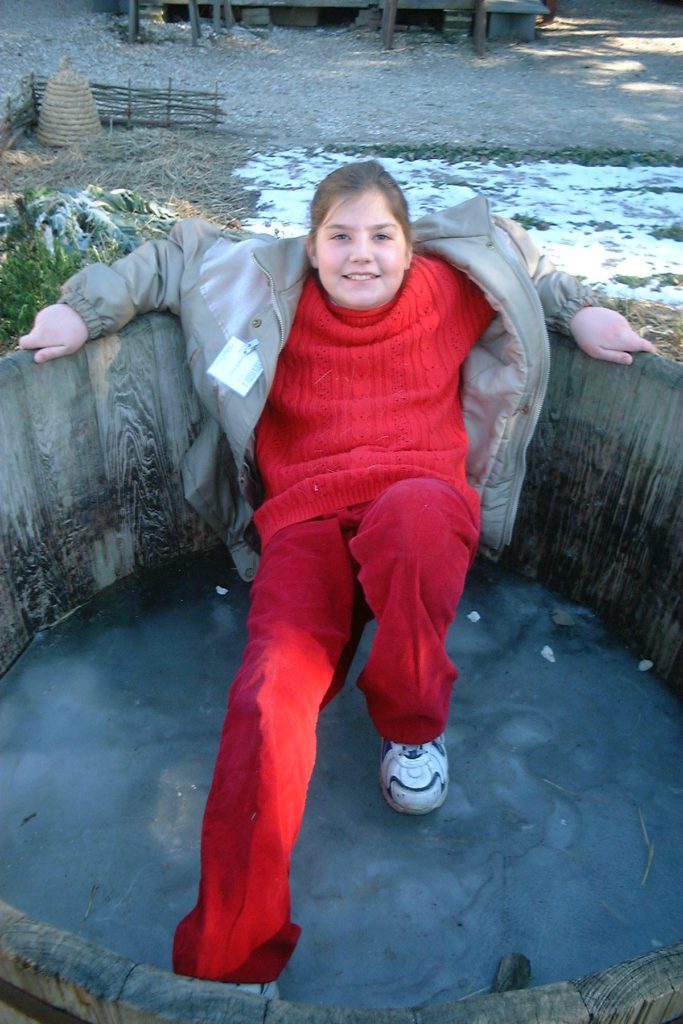
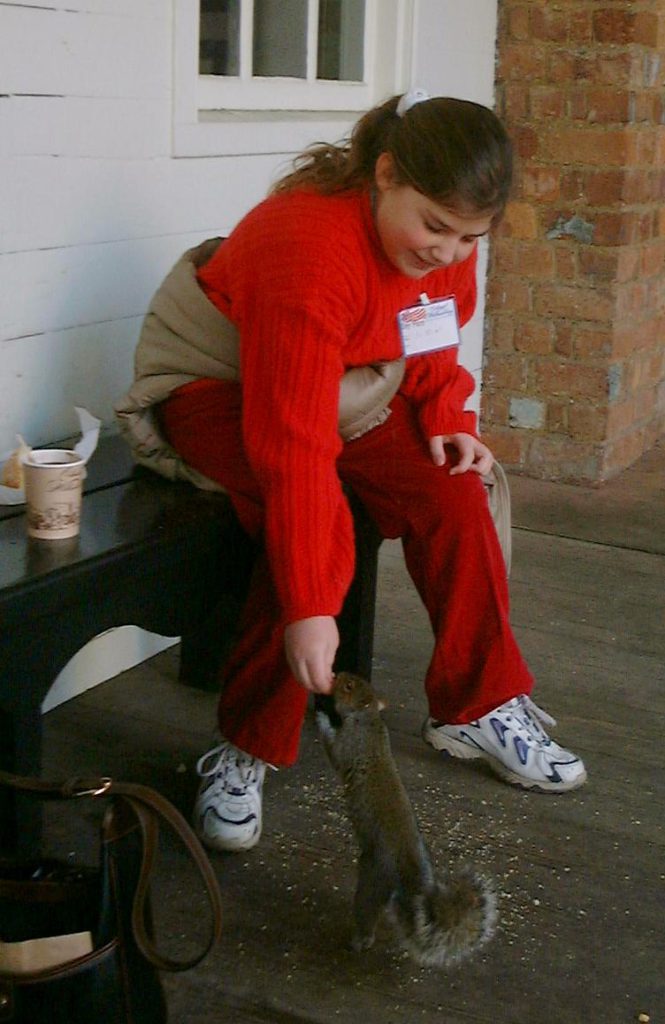
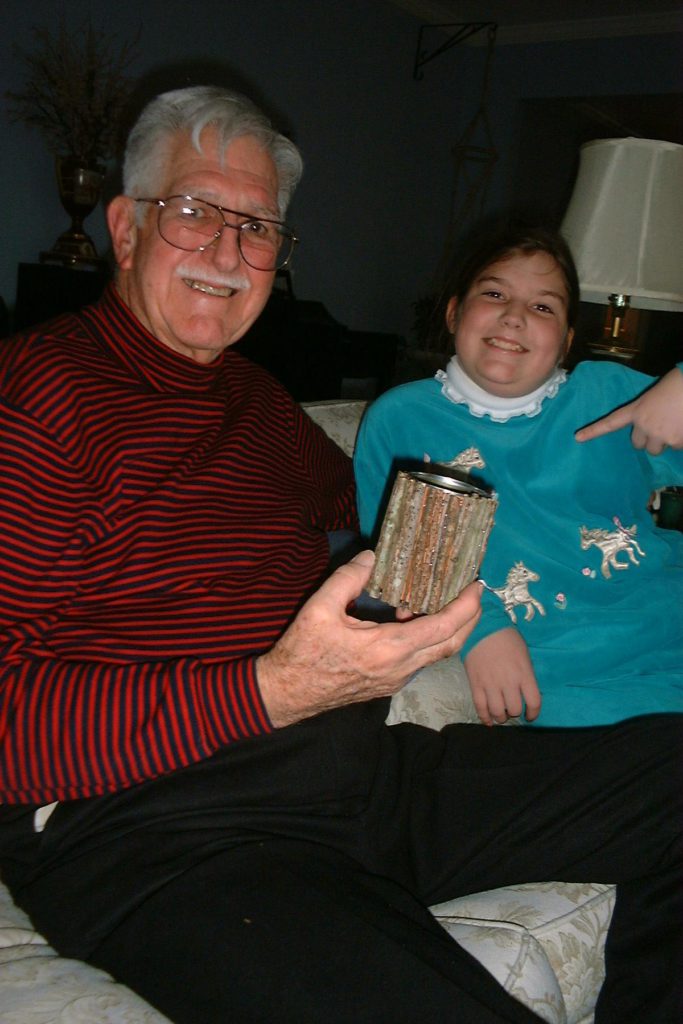
Las Vegas 2000
In the Fall of 2000 most of The Wine Syndicate group went to Las Vegas, where we stayed at the Venetian. We had some great lunches, dinners and tastings, and also found time for Star Trek The Experience, a tour of Caesar’s Magical Empire, and “O’ at the Bellagio..
Attending:
The Alcorns, Crockets, Henlines, Robinsons and Siegels.
Itinerary:
Thursday, October 12th. Dinner in Red Square at Mandalay Bay.
Friday Dinner in Picasso at Bellagio. Yes, that’s an original behind the Henlines.
Saturday Lunch at Stratosphere’s Top of the World restaurant: Dining at 887 feet.
We capped off our trip with a grand tasting (and 4-1/2 hour dinner!) Saturday night at Delmonico Steakhouse, which graciously provided the appropriate glassware, plus and superb food and service.
Delmonico Tasting Wines:
79 Grands Echezeaux & DRC Echezaux
86 & 91 BV GDLTPR
Guenoc Cabernet Franc
Far Niente Cabernet
86 Ch. Mouton Rothschild
Lynch Bages
91 Dominus
81 Ch. d’Yquem
Canadian Capitals 2000
Montreal, Quebec, Ottawa, Toronto
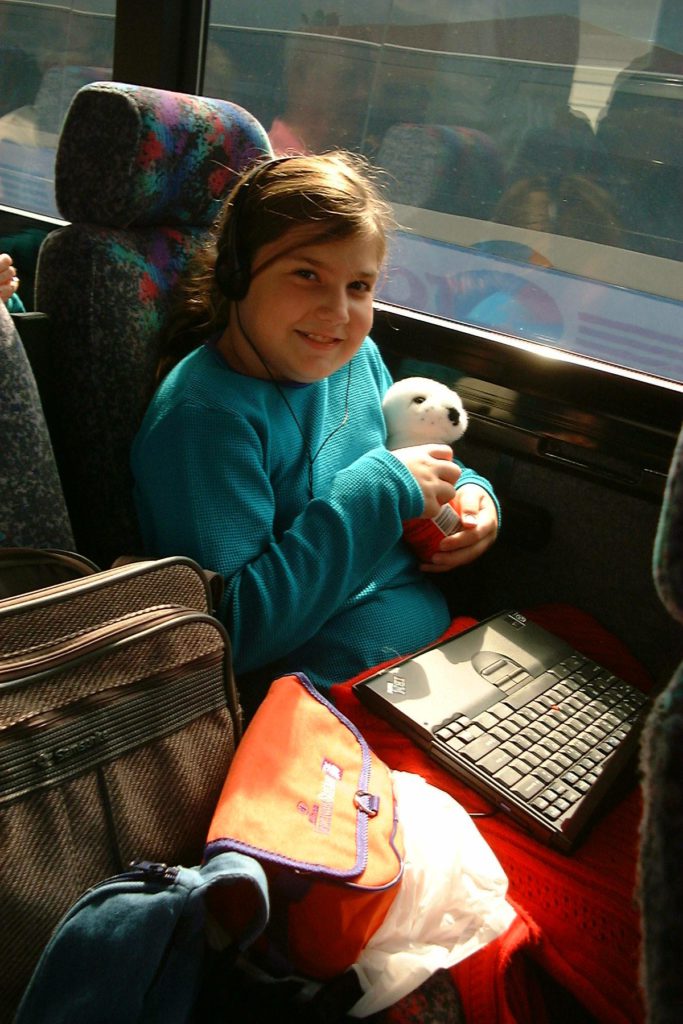
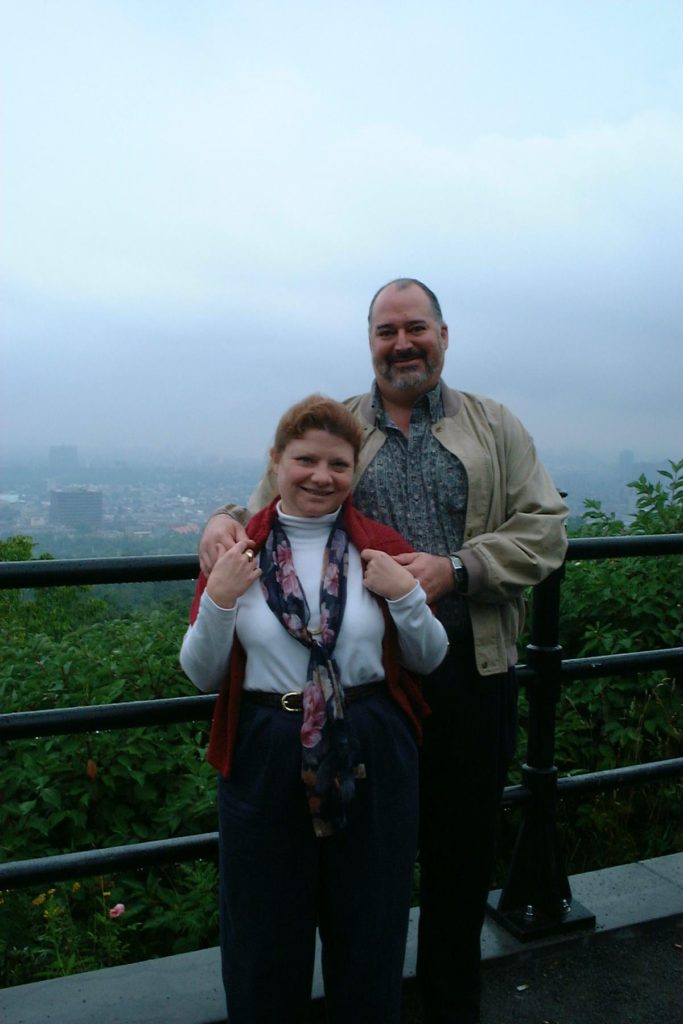
Monday
On August 21st, 2000 we set out for a tour of Canadian Capitals. We selected Tauck Tours, because of their reputation for a hassle-free experience, with deluxe accommodations and no restrictions on dining choices. Departing from Orlando around noon, we traveled through Cincinnati, and arrived in Montreal — unfortunately — during rush hour. The trip, almost due north, took only a little over four hours; but the cab ride from the airport took another hour.
Monday was really the day before the tour officially started. We wanted time to relax at the hotel. The Hilton Bonaventure in Montreal is an interesting place. The building is seventeen stories tall, but the hotel occupies only the top two floors. It is built facing the interior to eliminate street noise. Most of the rooms surround the swimming pool and garden area in the middle.
On Monday night we had a lovely dinner at the Castillon restaurant, where Danielle experienced the first of many multi-course French meals on this trip. She decided that the cheese course was probably her best bet at most of these French restaurants.
Tuesday
We had most of the day free on Tuesday. After a short walk around the city near our hotel we had lunch at a deli in the underground city of Montreal. We thought about going to the planetarium, but it wasn’t open yet, so we wandered up to the visitor center, where I discovered that the Cuban cigars in the shop across the street were priced for tourists. $45 for Cohibas?! Admittedly that translates into about $30 US, but still…
We browsed brochures for a while, but nothing really captured our interest. I’d spent a month in Montreal one week in the early 90s, and I got the same feeling this time — that there’s no “there” there.
In the end, Linda took a nap, I smoked a delightful cigar called a Vegueros, and Danielle spent nearly four hours in the hotel swimming pool, where she made friends with a girl from the United States named Michelle.
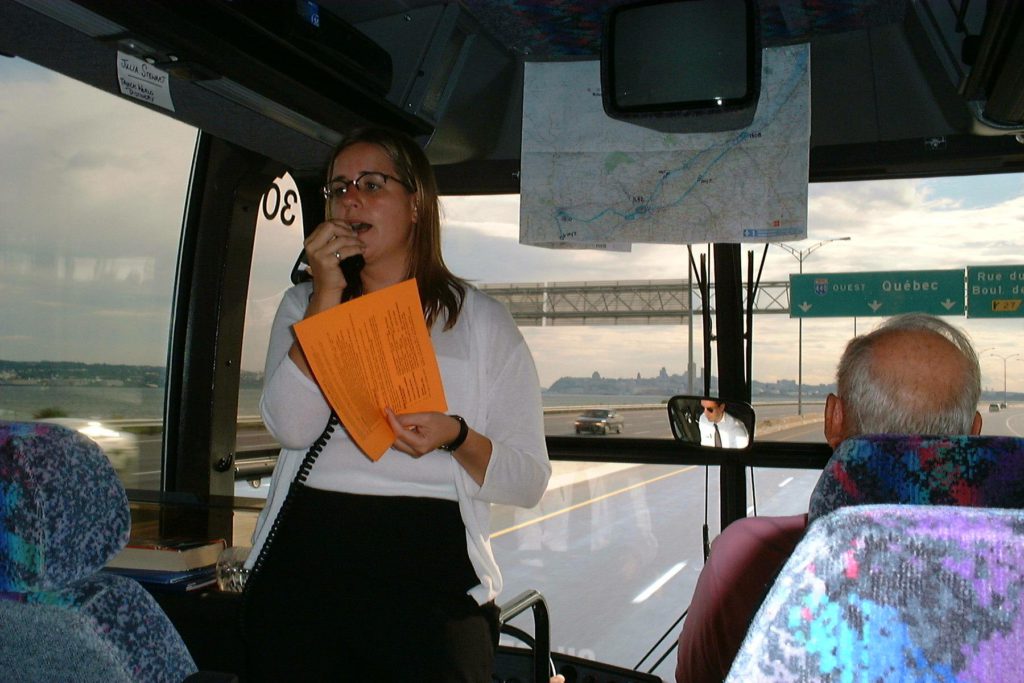
At 6:00 we met with our tour group for a wine reception. Our tour director, Julia Stewart (“spelled the right way”, she says) is excellent: friendly, organized, knowledgeable, and helpful. She was able to learn everyone’s’ names almost before she’d met them! Her stories of her experiences make the tour much more personal and memorable. Julia is from Nova Scotia originally, but now lives in Vancouver. This is her second year as a Tauck tour director.
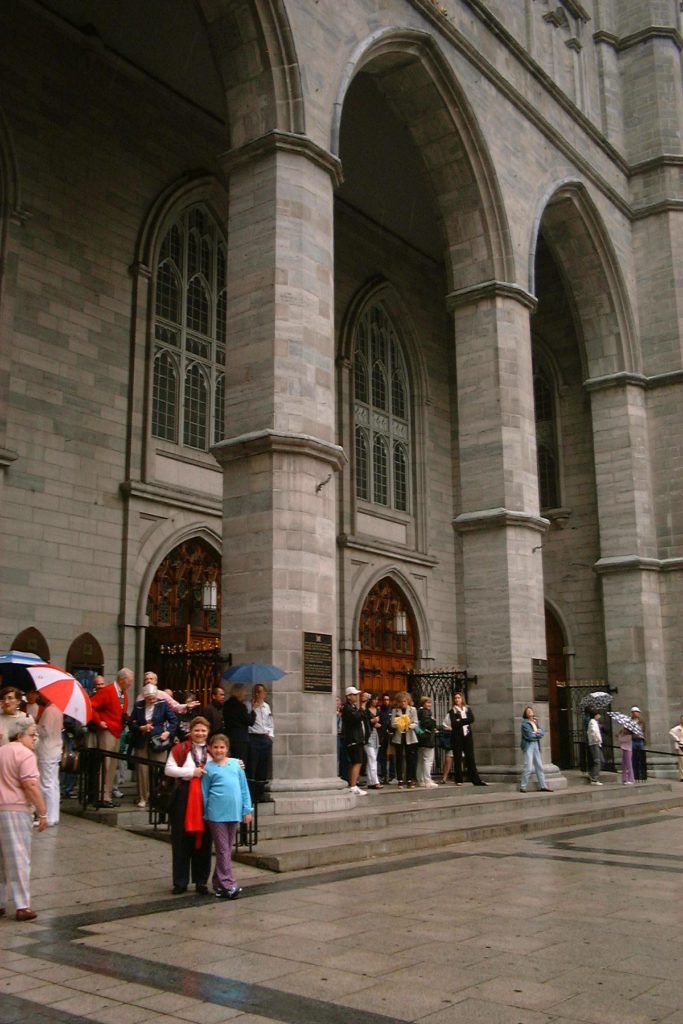
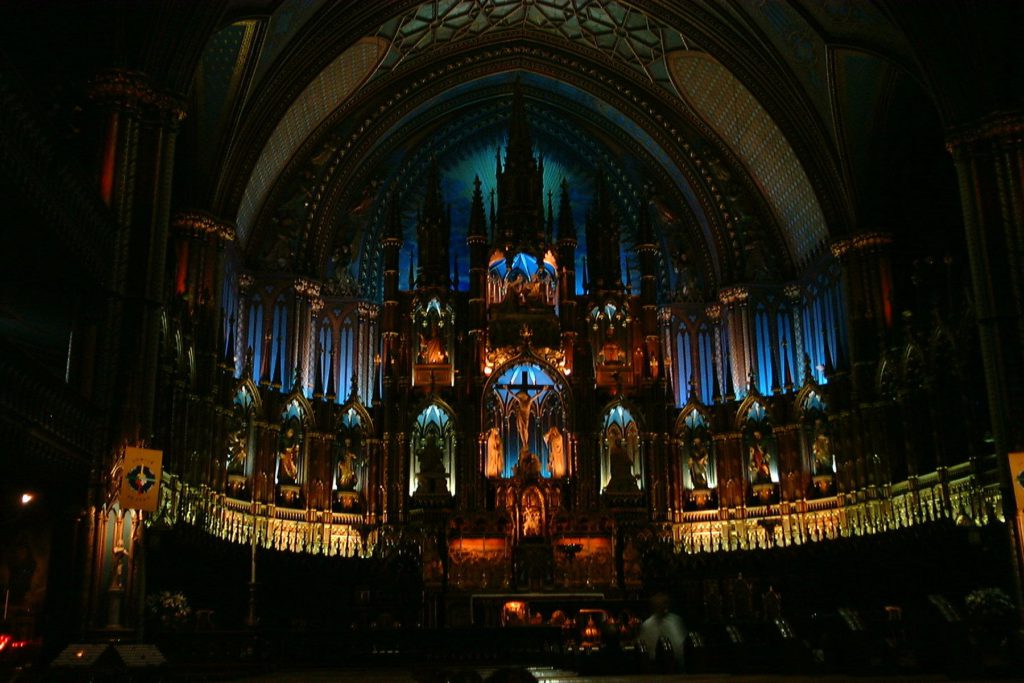
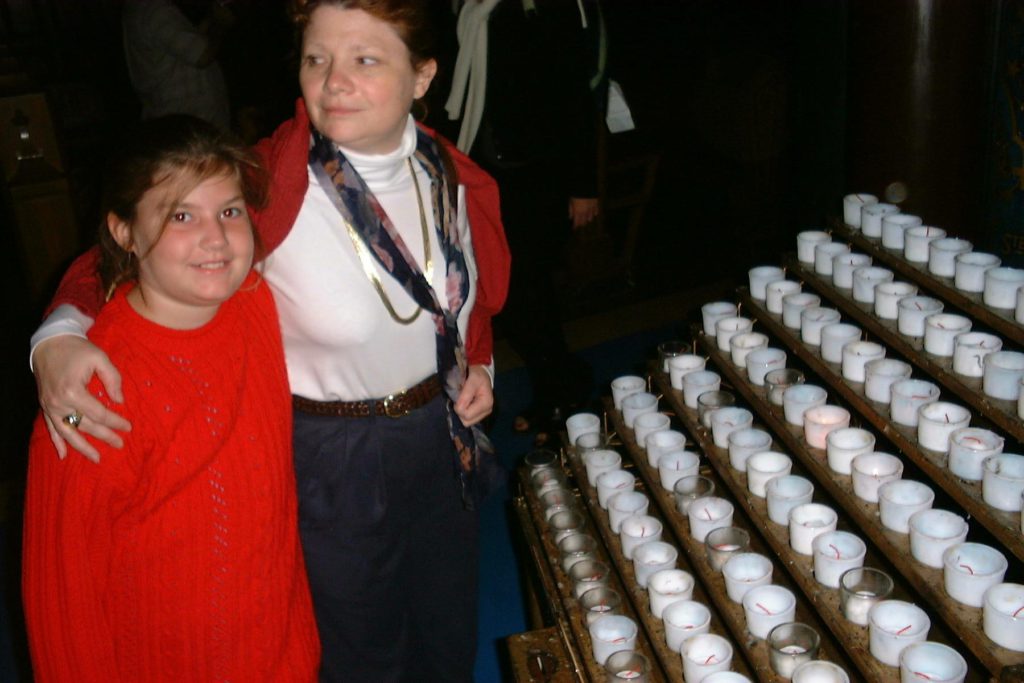
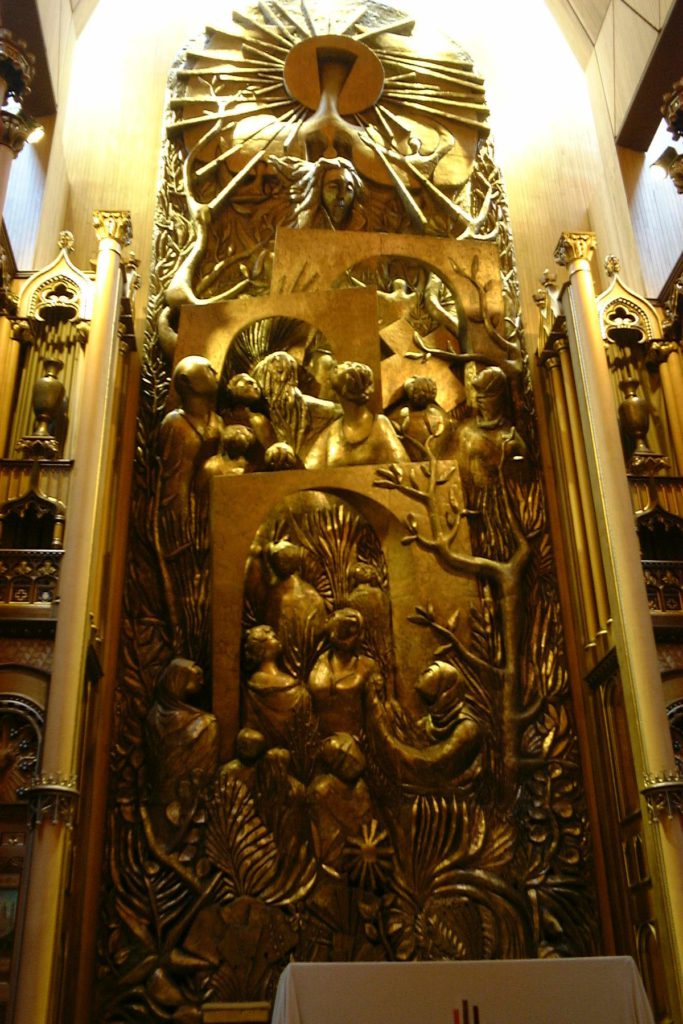
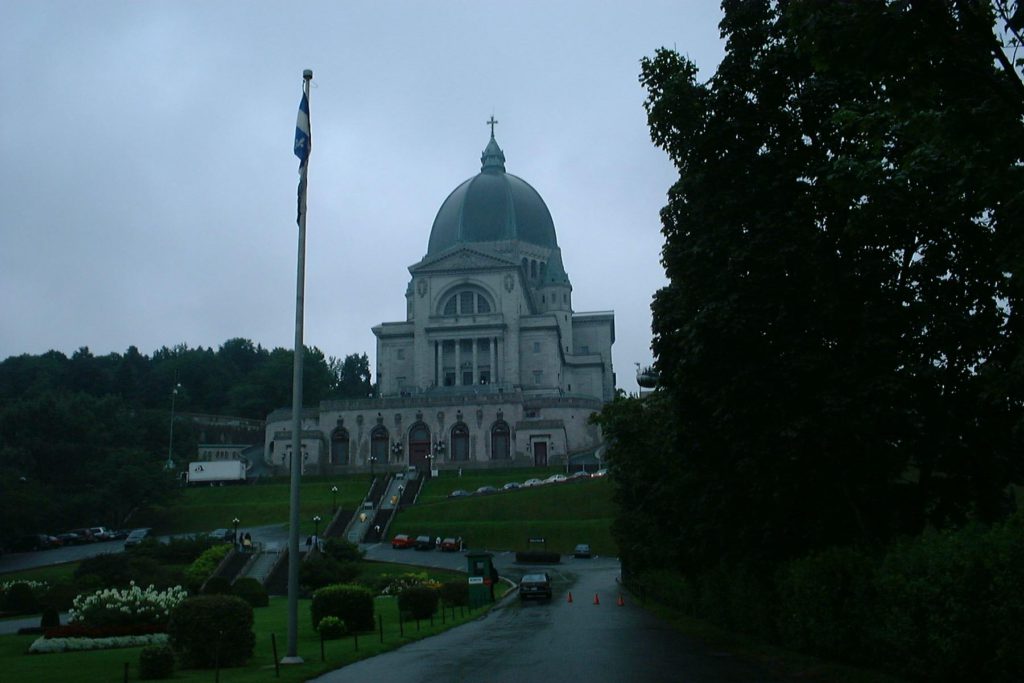
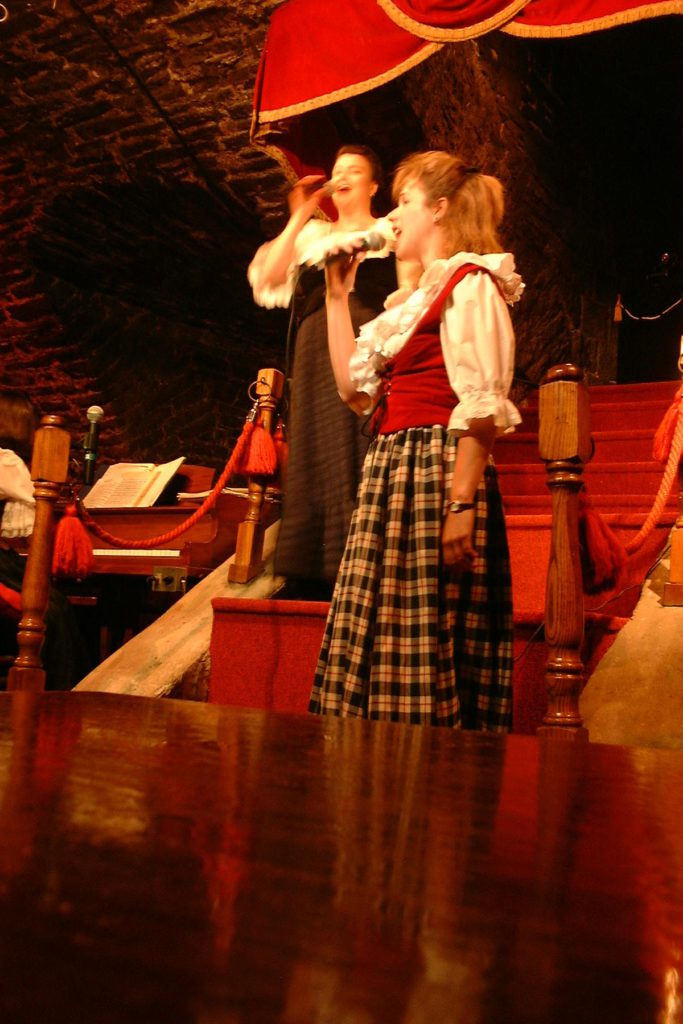
Danielle was a bit disappointed to discover that there was no one else her age on the tour; we later found out that she was the youngest guests our tour director had ever had! Nevertheless, she gets along well with older people, and is doing a great job of being a mature traveling companion.
The average age of our fellow travelers is well into retirement, but that’s not surprising, since school has started almost everywhere. They’re a very nice group, and have proven to be friendly and punctual.
After the wine reception we had a delightful dinner at the Castillon restaurant with a couple from North Carolina, Dick and June. We talked about Harry Potter and many other books, travel, and our hometowns.
Wednesday
After a nice breakfast in the hotel coffee shop, we met our group for a tour of Montreal. Our motor coach is amazingly quiet. Even climbing a steep hill, there is virtually no engine noise or vibration. Andre, our driver, is from Montreal. Whenever we get on or off the coach, he stands nearby in his coat and tie ready to help.
A local guide name Lis showed us around town, including the 1967 World Expo site and the Olympic Village.
In the old part of the city we visited the Cathedral of Notre Dame. Although I’m not much into cathedrals, it was very beautiful, with elaborate woodwork and unusual stained glass windows depicting the local history. Danielle lit a candle for GinGin, her step grandma.
Behind the cathedral is a chapel which was burned and reconstructed in the 1960s. Its architecture is jarringly modern, but the bronze sculpture at the front is impressive. The largest in the world, it was made in England and transported to Montreal by ship in thirty-two sections.
Up on Mont Royal (for which the city is named) the view was nearly obscured in fog — which later turned to rain. Fortunately, Montreal is not a particularly scenic city, so we didn’t feel like we’d missed much.
After a quick stop back at the hotel, we crossed the bridge to the Isle Sainte-Helene for the Festin du Guviniers, in The Old Fort. Lunch included singing and piano music. Like many of the old forts in the area, it was constructed after the war of 1812 in case the United States ever again invaded Canada.
In the afternoon Danielle went ice-skating in the high-rise building next to our hotel. Then, for dinner, we wandered down into the underground city beneath Montreal and had an eclectic meal at a fresh food buffet restaurant called Movenpick.
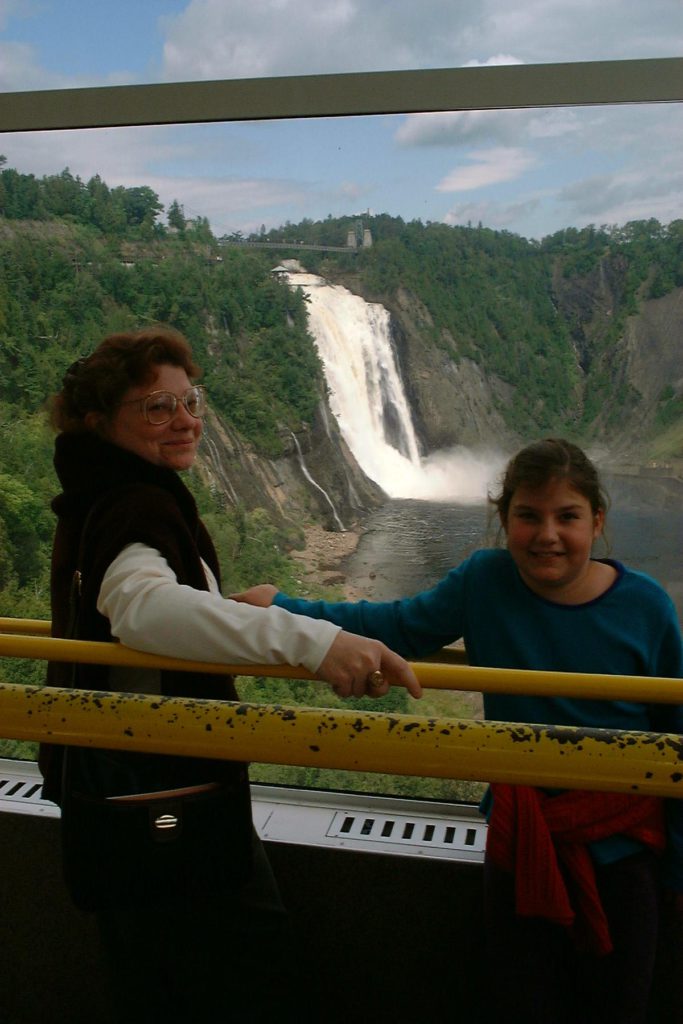
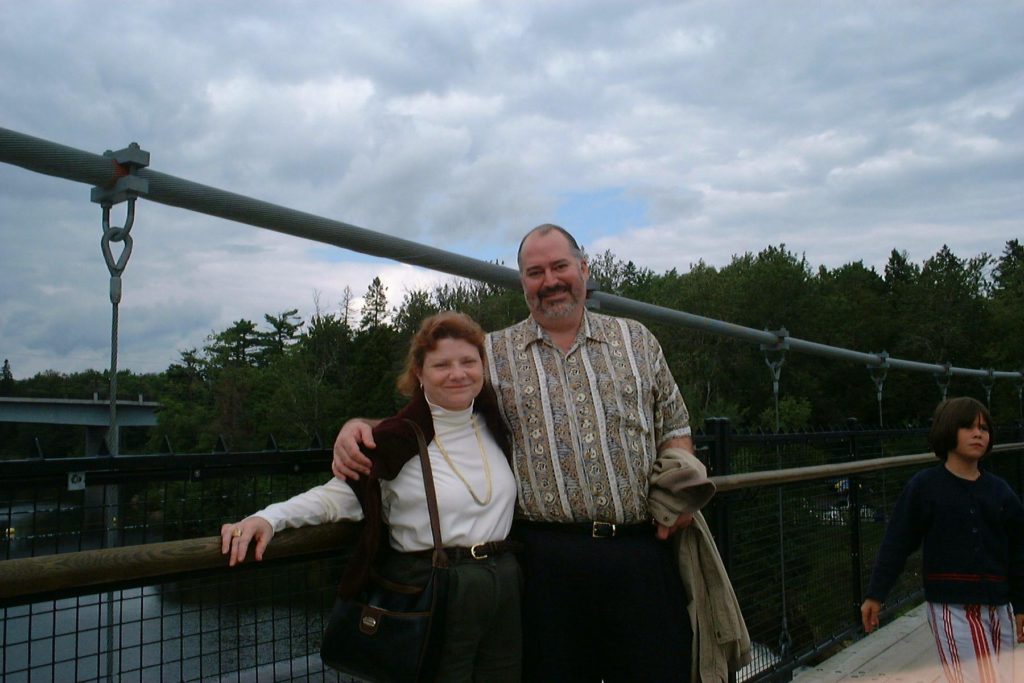
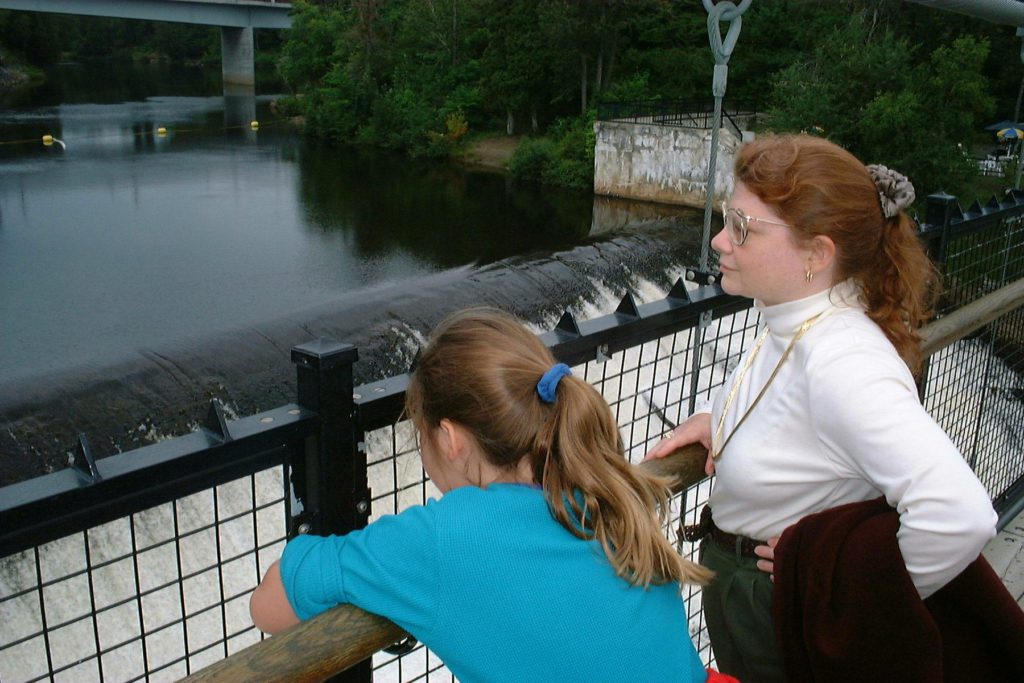
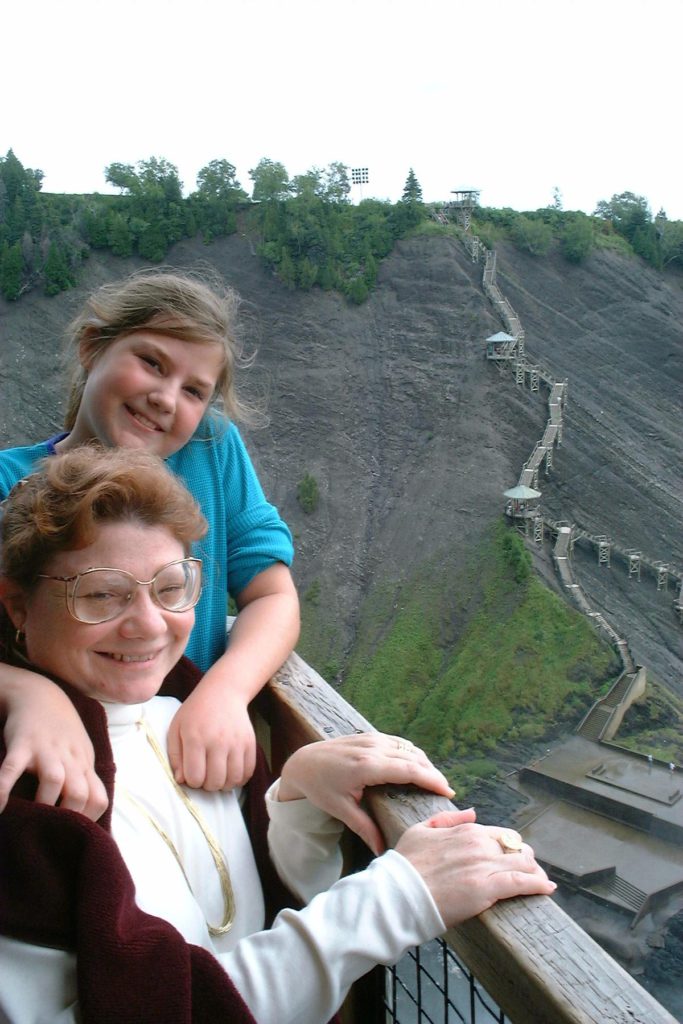
Thursday
Thursday was a day for traveling. Our bags were picked up from our room at 7:45, and we were on the road by 8:45, headed from Montreal to Quebec. We stopped for lunch at Montmorency Falls, where we dined on a terrace at the Manoir Montmorency, overlooking the falls. The manor was originally built by Edward, Duke of Kent during the 1800’s. Edward was the son of George, and inherited his father’s fascination with clocks, but fortunately not his manic depression. A military genius, he led an unhappy life, and was eventually forced to separate from the mistress he loved and return to England, where he married. He was the father of Queen Victoria.
After lunch we took the cable car to the base of the falls and back. The falls are higher than Niagara Falls, but don’t carry nearly the volume of water. We walked along a boardwalk that clung to the mountain, eventually venturing out over the falls on a suspension bridge. It was very noisy.
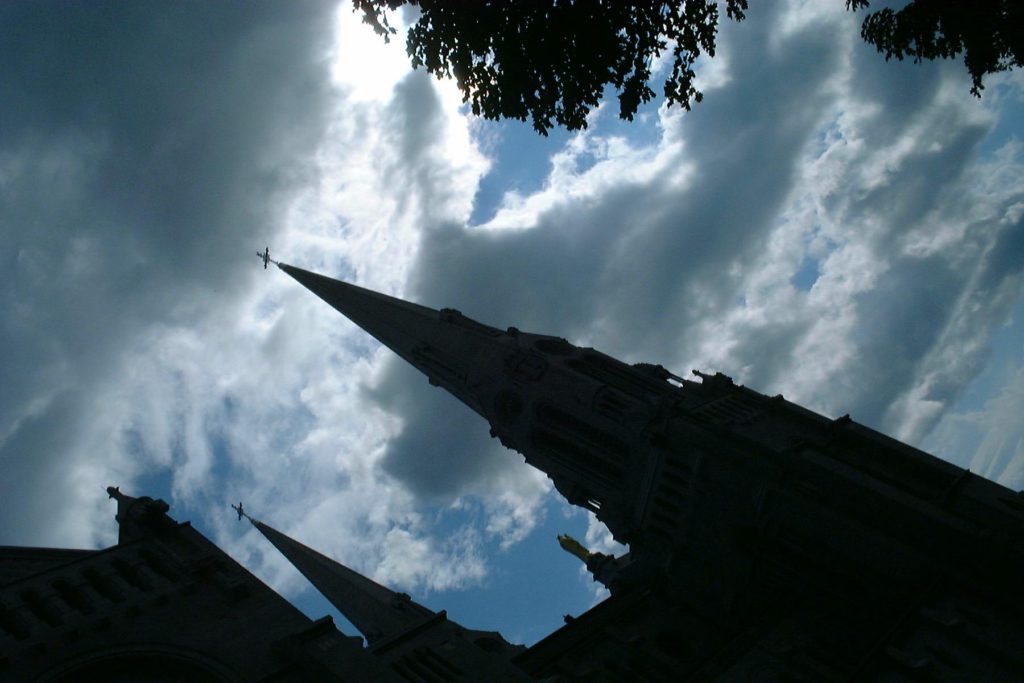
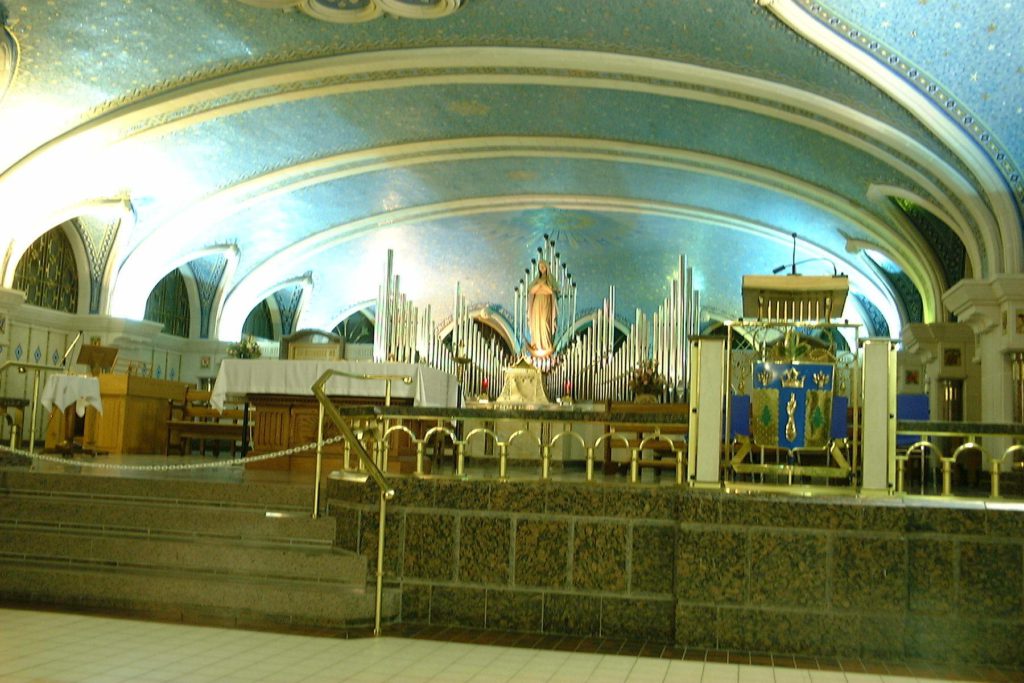
After lunch we drove past Quebec City and on to the basilica of Ste. Anne-de-Beaupre, a relatively uninteresting church, the current version of which was completed in the 1920’s. The columns at the back of the congregation are decorated with sculptures made from crutches and various orthopedic devices, presumably to symbolize all of the people who have been healed there. I’m not sure what the artificial limbs symbolize, but it must have been impressive! I suspect this stop is on the tour merely to kill time until the hotel rooms are ready.
On the way back to Quebec City we stopped at a place that served maple butter on fresh bread. That was delicious!
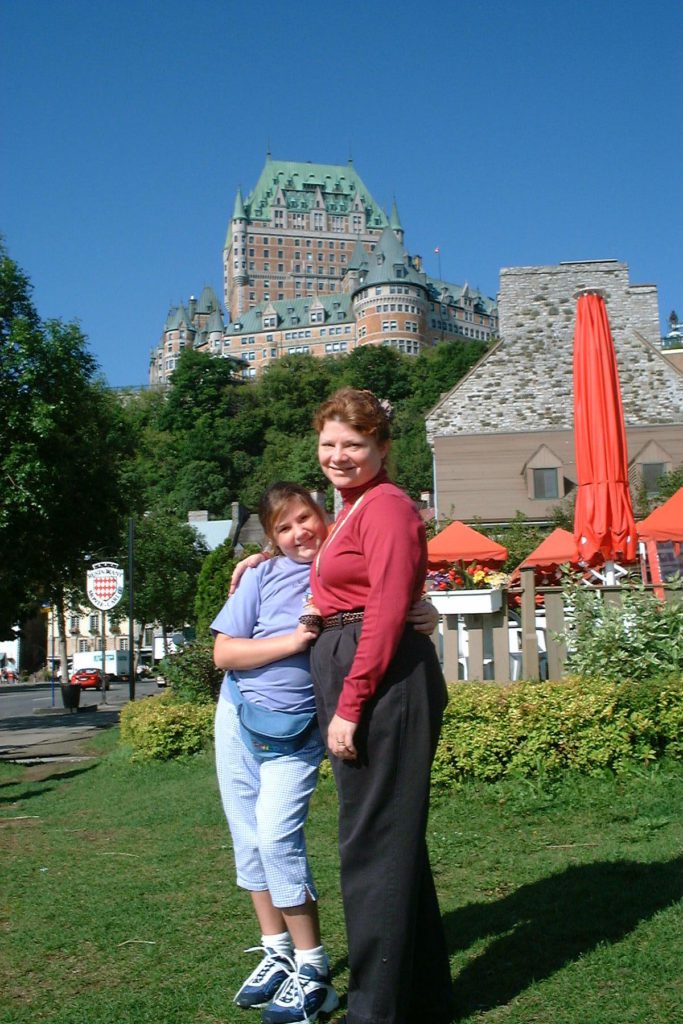
Due to road construction we were somewhat late to arrive at the Chateau Frontenac. We’d already made a 6:00 PM dinner reservation, and were dismayed to discover the lobby filled with hundreds of Japanese tourists, all attempting to cram themselves into three small elevators. It looked like a Tokyo subway.
The Chateau Frontenac is the most famous hotel in Quebec — and perhaps Canada. It is easily identifiable, because of its steeply sloped green copper roof. Built in 1893, (although the section we were in was added in the 1920s), other sections have been added as recently as 1993. Our room was spacious, with modern bathroom facilities, and had obviously been completely refurbished quite recently. The Chateau Frontenac is now part of the Fairmont organization.
In spite of the late arrival, baggage delivery to our room was prompt, and we made it to dinner relatively on time, and had a lovely five-course meal. We were delighted to be able to select any items on the menu, all included in the tour. The waiter even flambéed Danielle’s steak at the table, although in the flame height competition his flames were about a foot shorter than at the Castillon. The other highlight of the meal was that the waiter asked Danielle if she cared for some of our wine. Although not strictly legal here, if the parents ask, it’s accepted. We had a 1995 Corton Charlemagne, by the way. It was only moderately expensive — until they added all of the taxes!
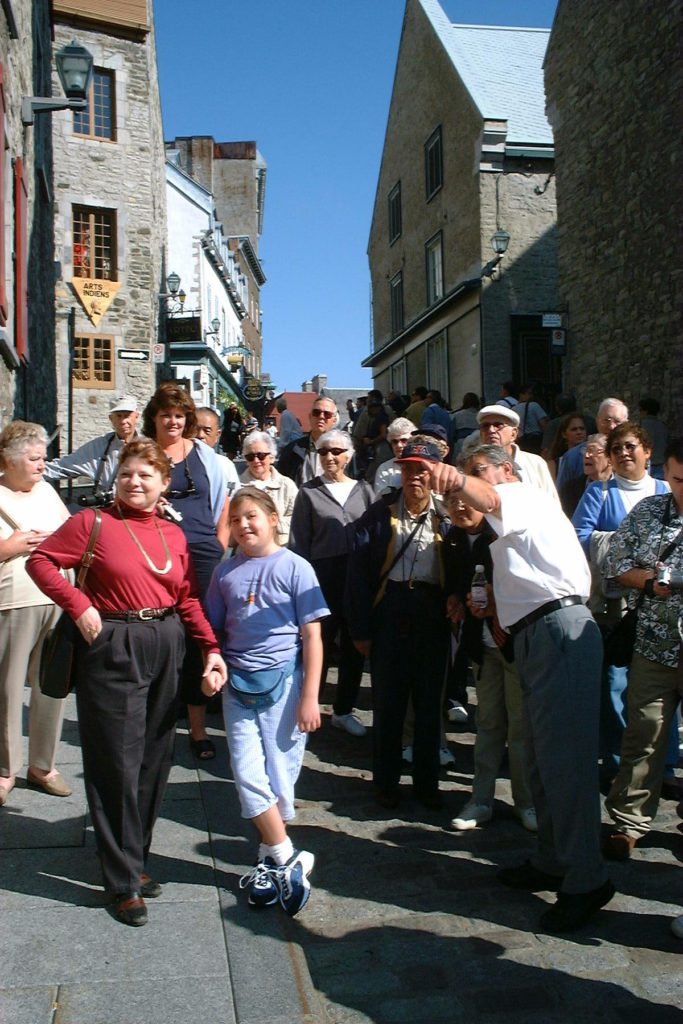
Friday
Friday began with breakfast at Cafe Terrasse, where the croissants and pain au chocolate rivaled those of Paris. Then we went on a two-hour tour of Quebec City. Our guide, Eric — (Quebec law requires a local guide in the city) — took us down to the old city, where it seemed that almost every shopkeeper and restaurant owner was one of his relatives. Since he’s a tenth generation resident of Quebec, I suppose that’s not surprising.
We had lunch at Le Continental, a four star restaurant, reputed to be the best in town. Once again Danielle was able to taste the wine, a 1998 Clos du Val Chardonnay (“Le Clos”).
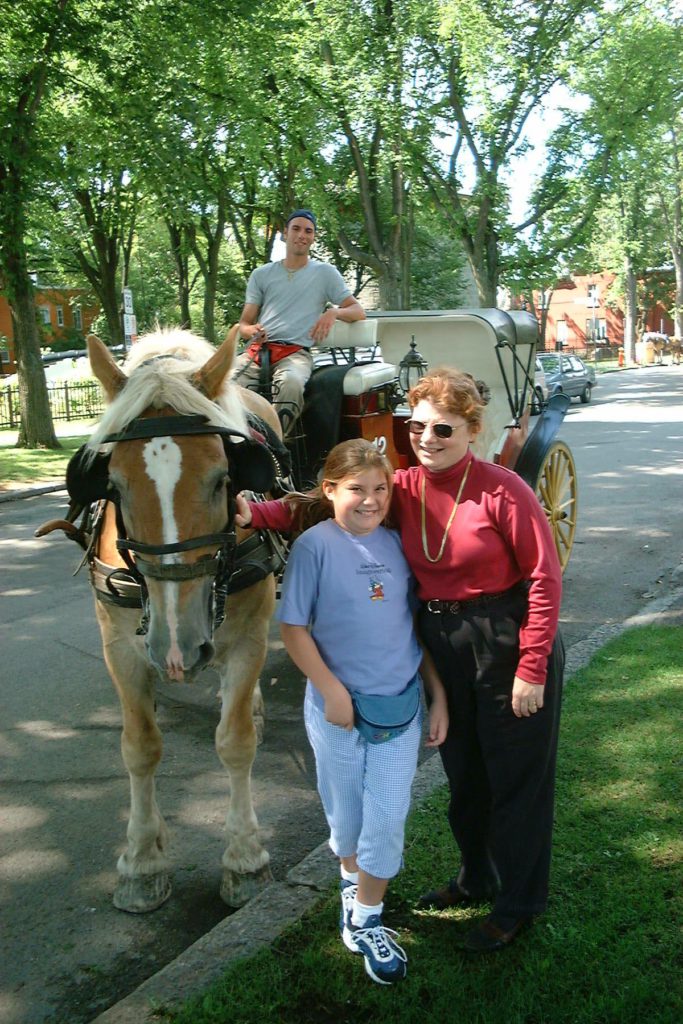
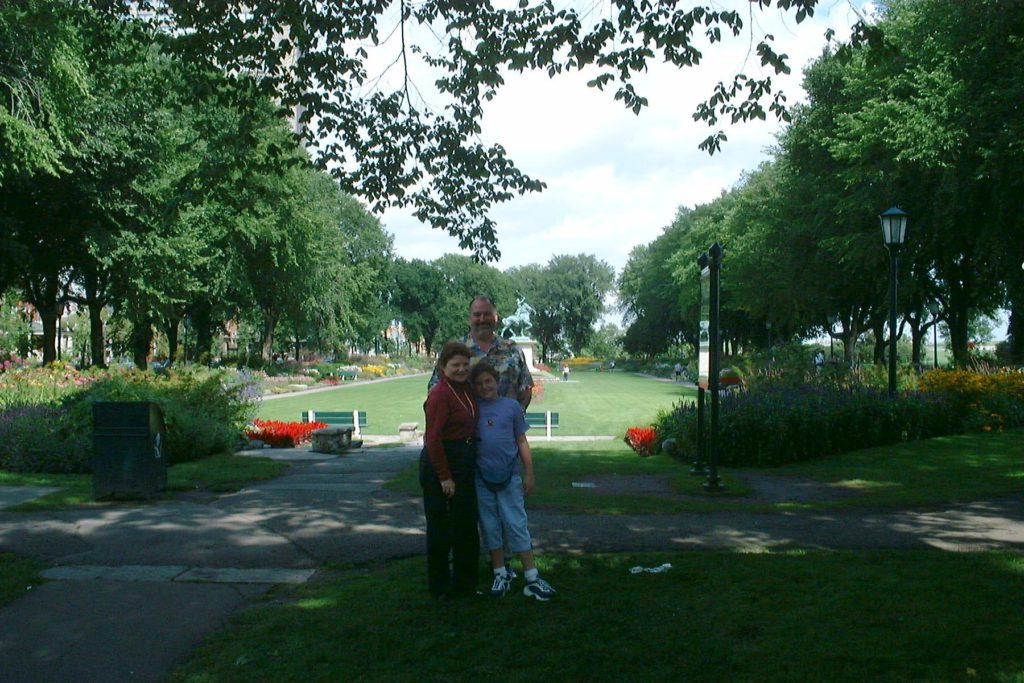
At Danielle’s insistence, we had a lovely carriage ride around town. Our horse was named Roadster. Compared to the summer weather in Orlando, the 70 degree breeze here was heaven.
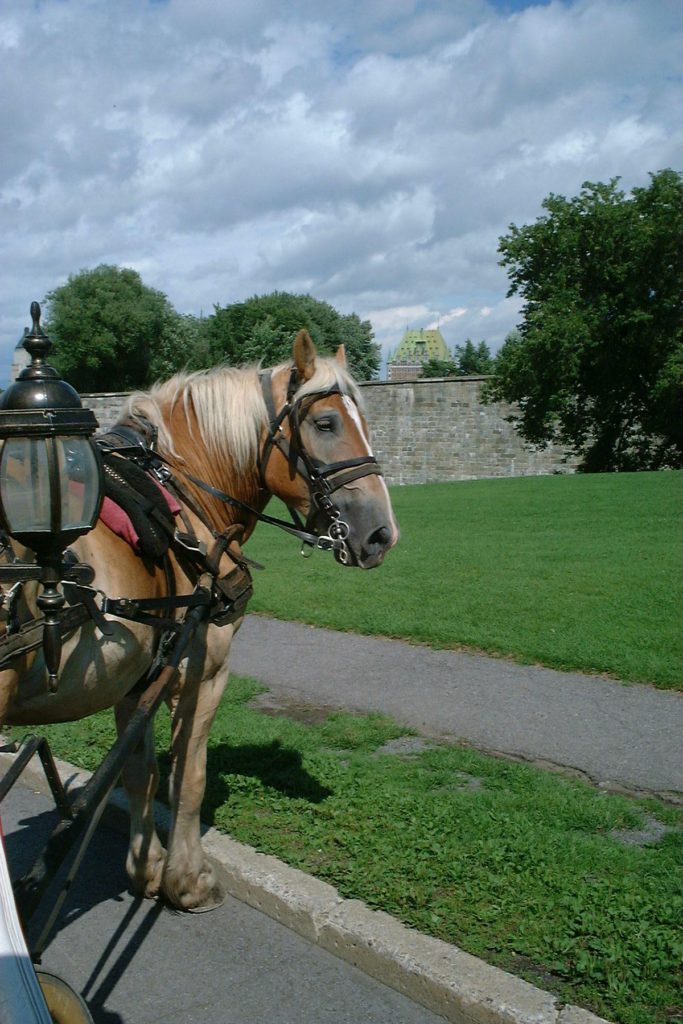
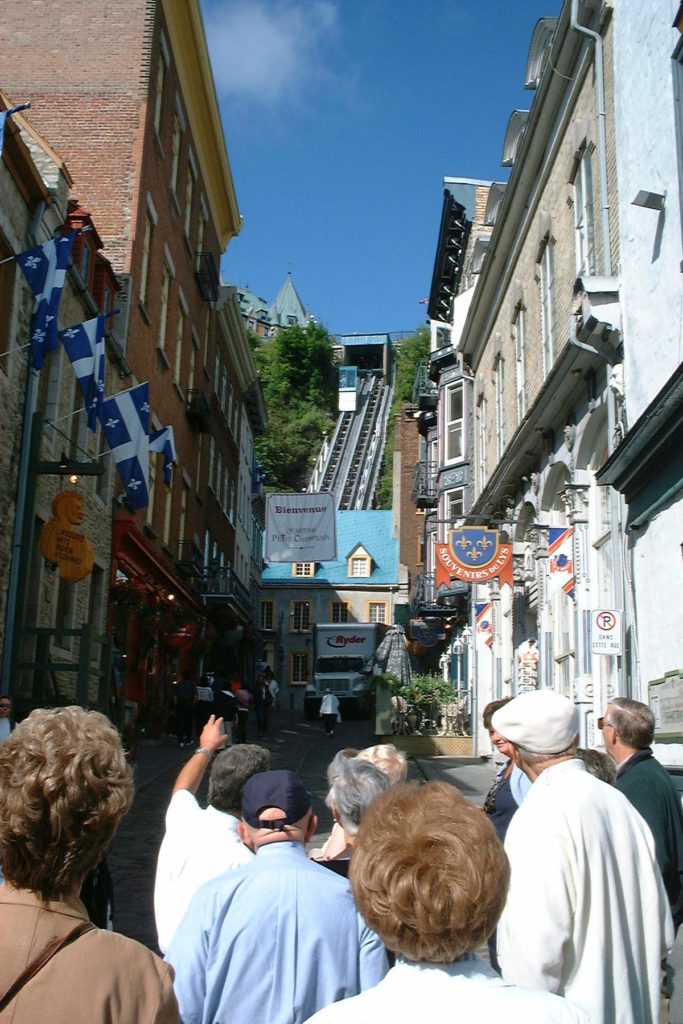
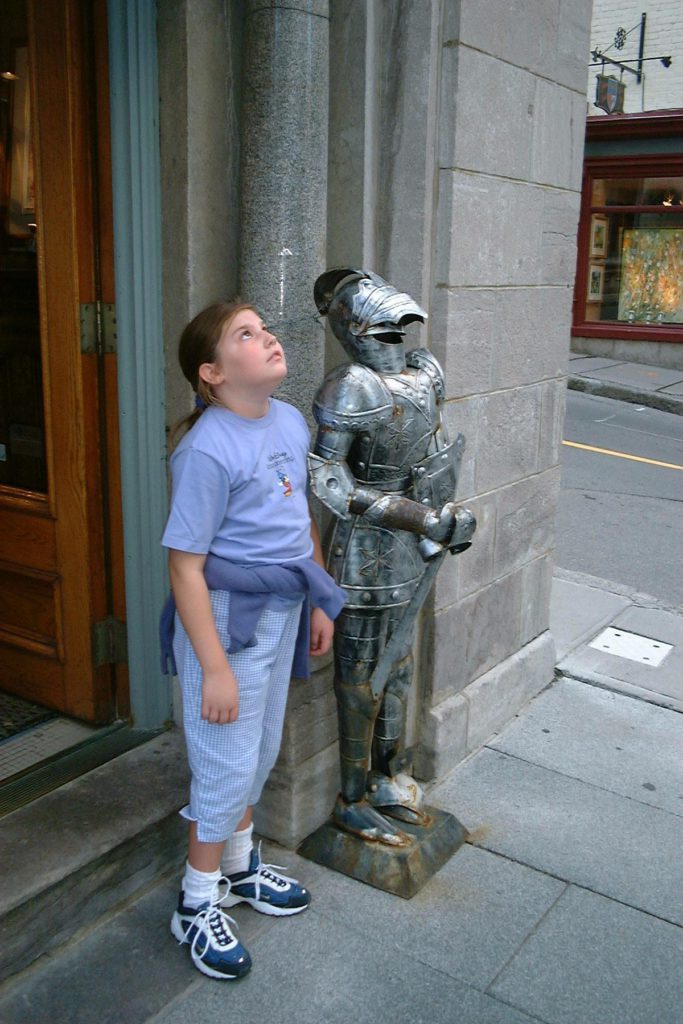
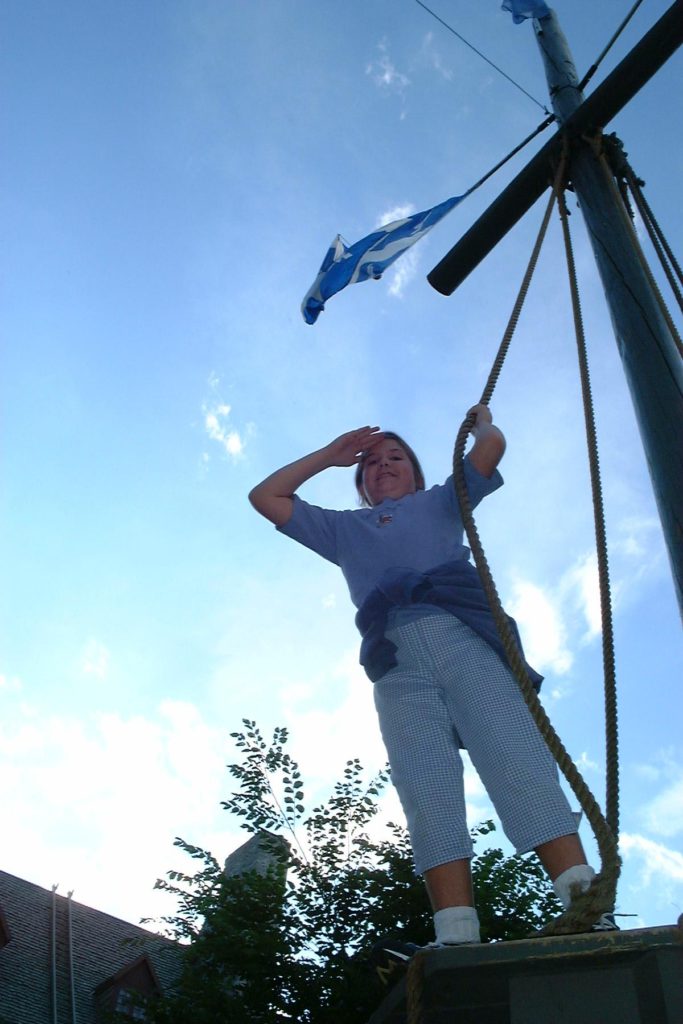
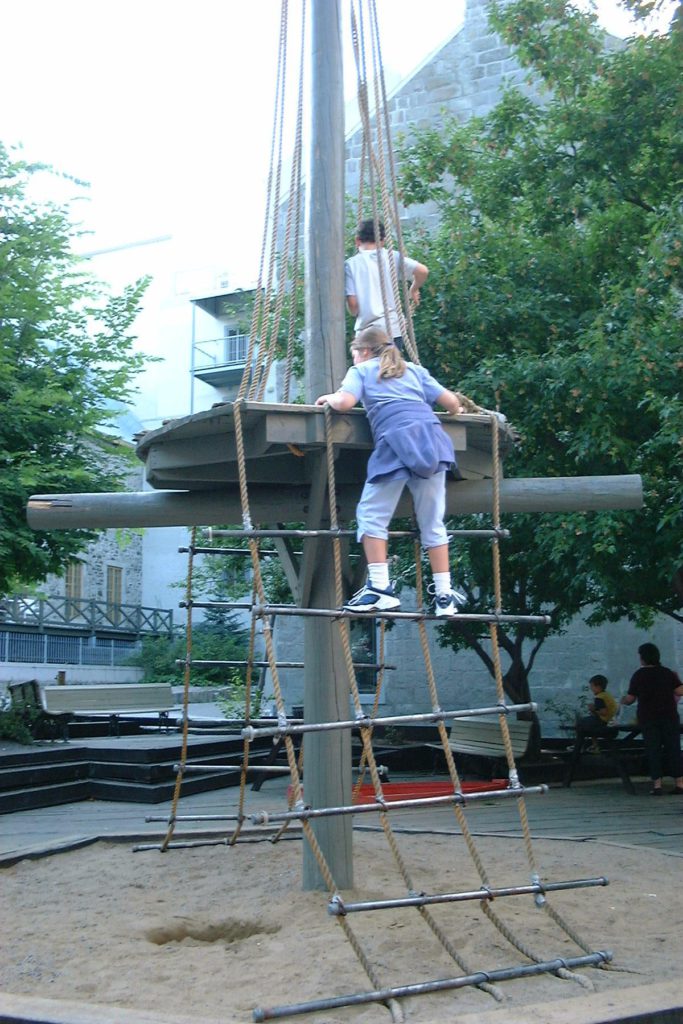
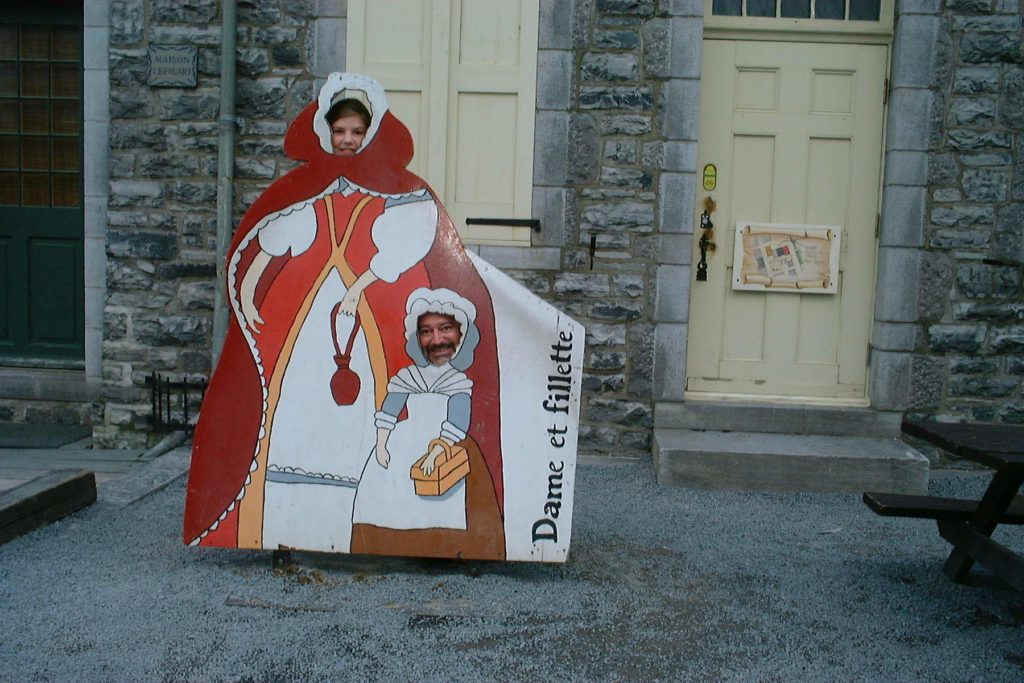
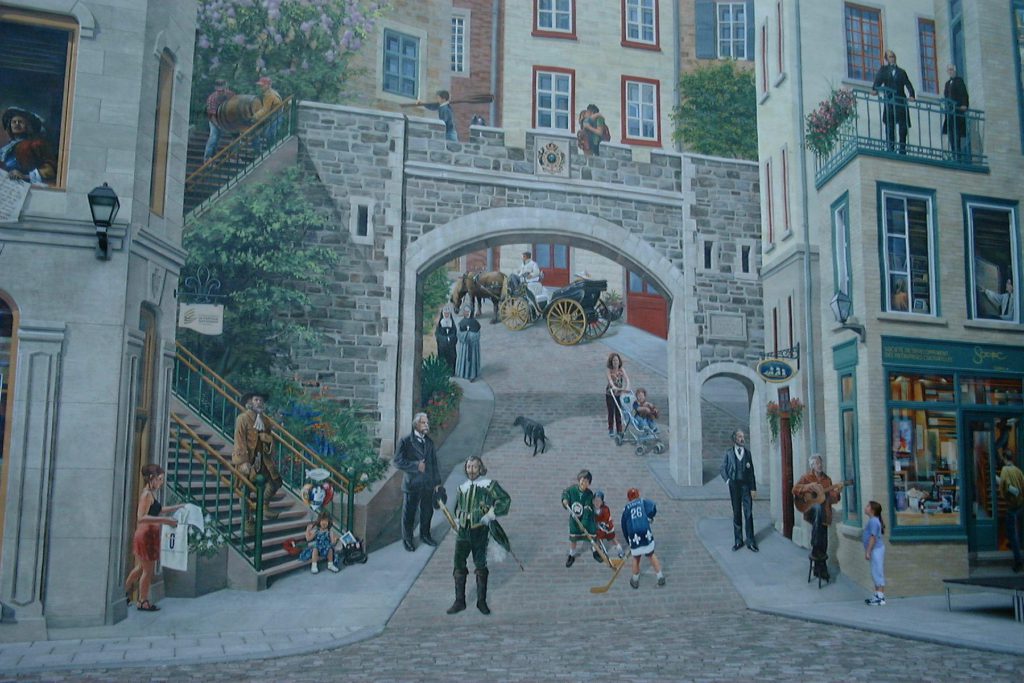
After a rest, some journal entries, and some long-division practice, we headed down to the old city on the funicular. Danielle did some curio shopping, and we took some funny pictures.
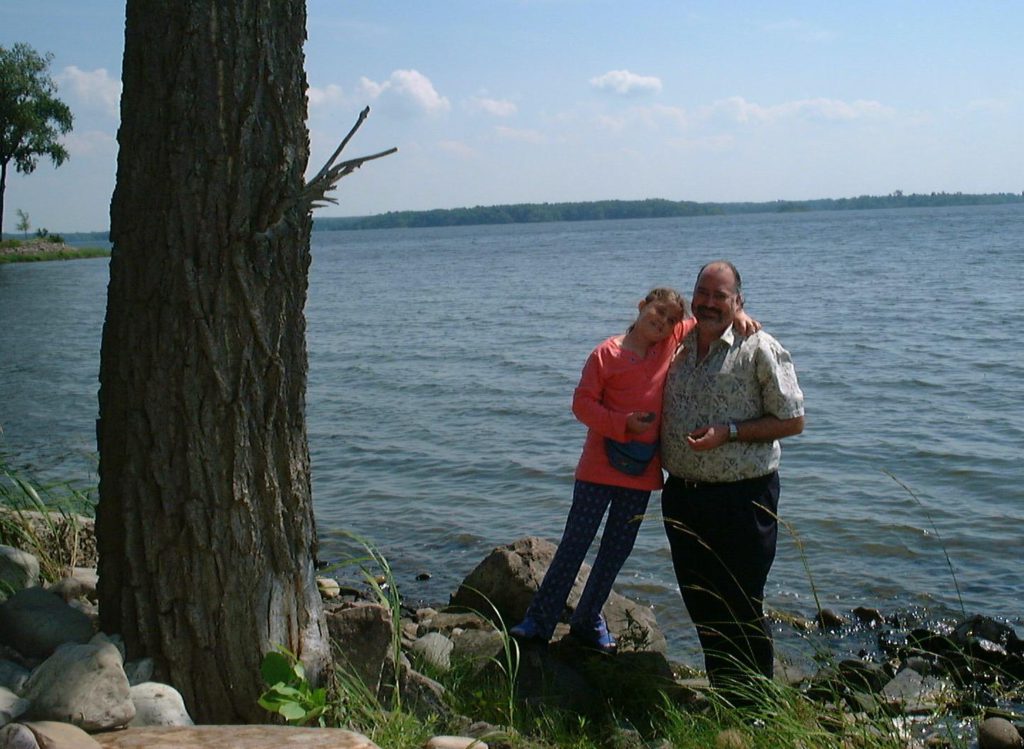
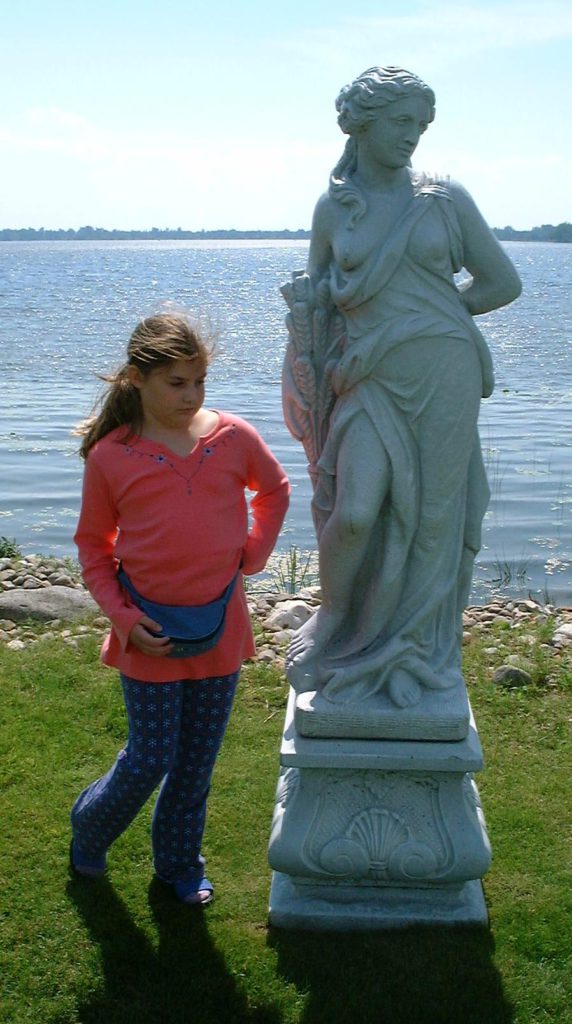
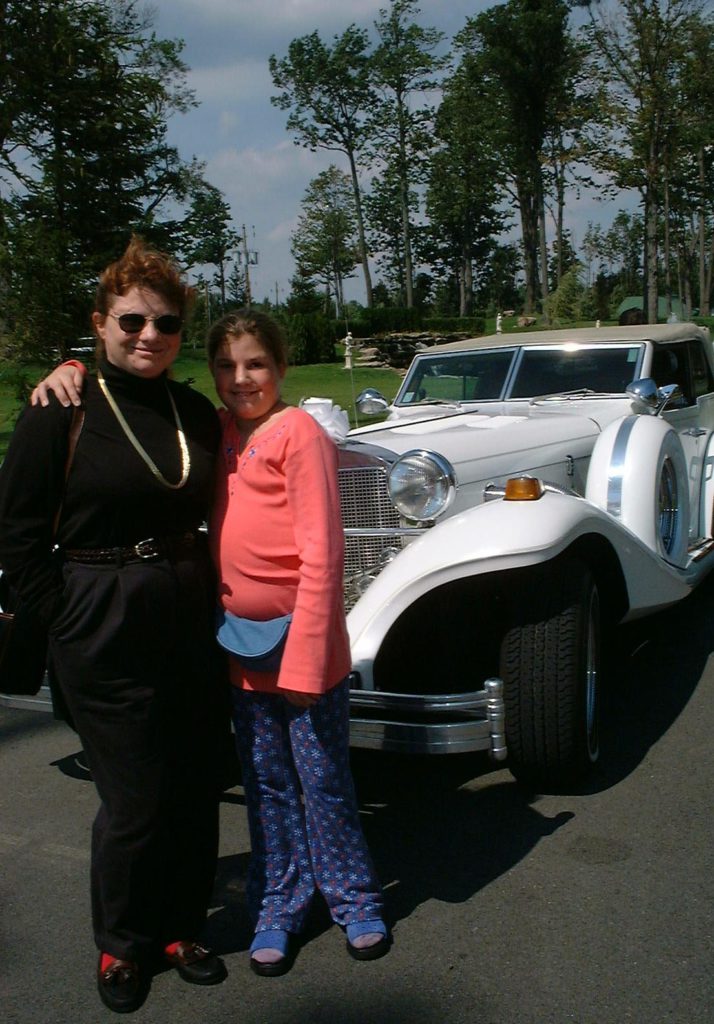
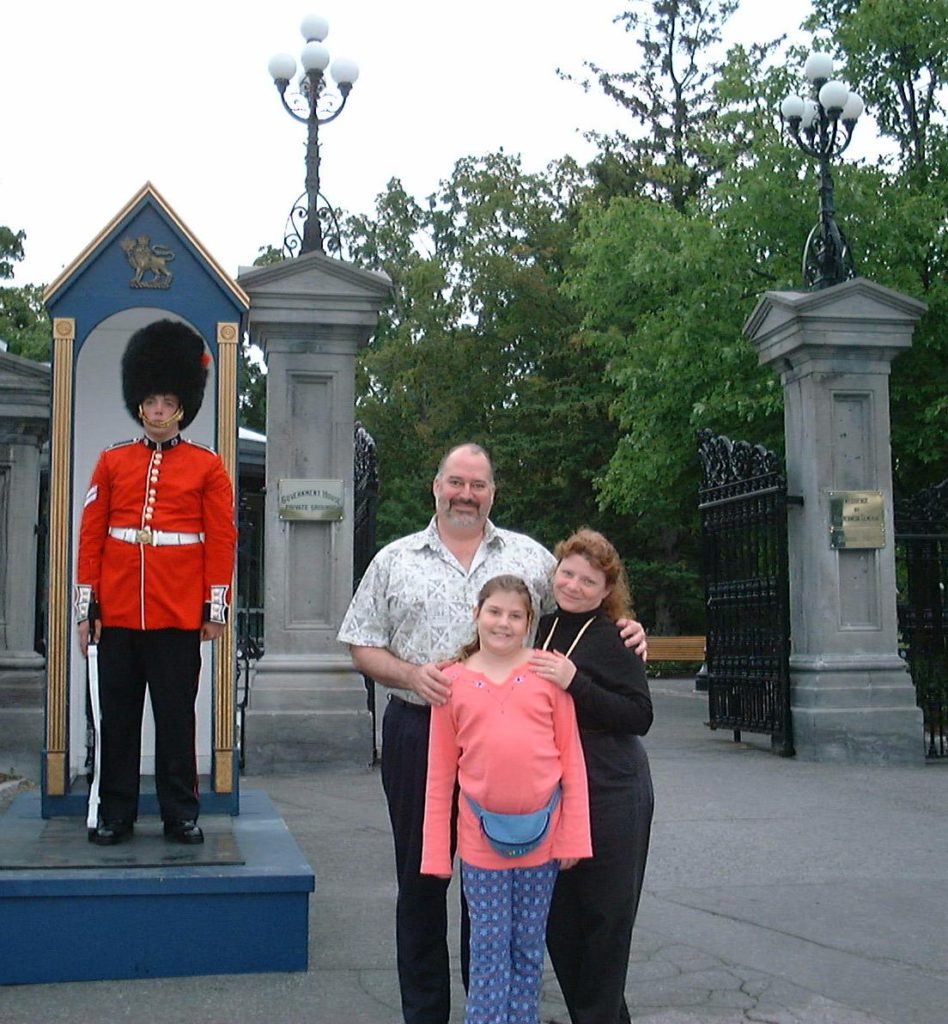
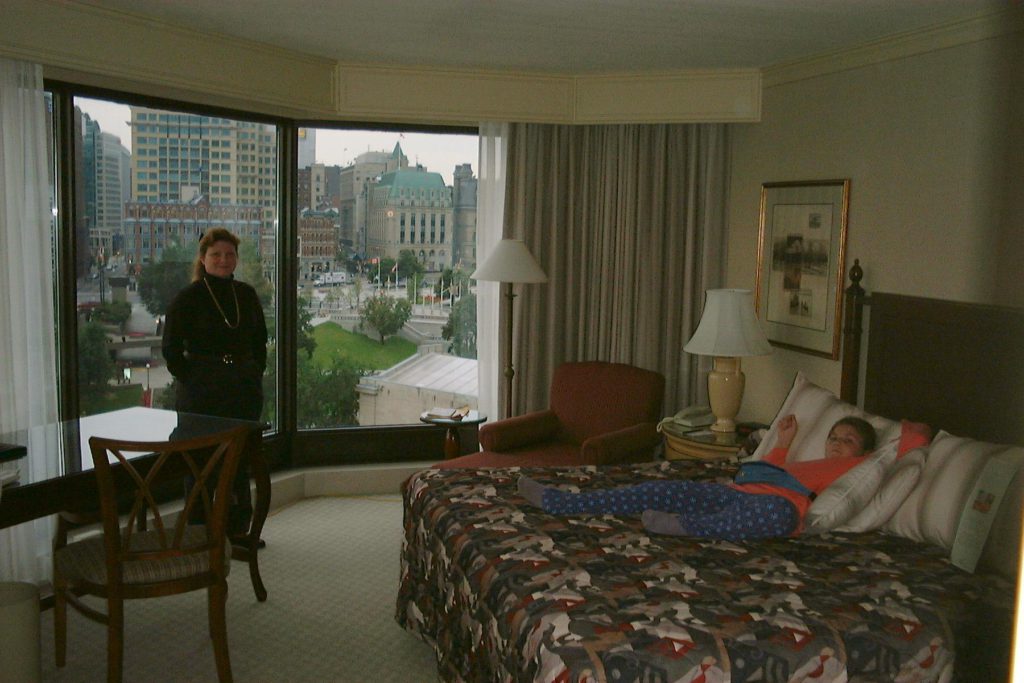
Saturday
Saturday was another day of travel. After breakfast at Cafe Terasse we headed out of Quebec City — to the regret of all. We wished we could stay longer to more fully explore this charming place.
Heading along the St. Lawrence River, we stopped for an elaborate buffet lunch — featuring several dozen salads, among other things — at Chateau Vaudreil, a new hotel built on the banks of the river.
After lunch we followed a winding road past many lovely homes on the Ottawa River, crossing into Ontario and arriving in Ottawa at 5:00 PM.
We learned that Ontario means “sparkling water”; Canada means “collection of huts”; and Ottawa means “floppy ears”(!) — an Iroquois reference to the dangling earrings of the Heuron tribe.
Ottawa is a charming city of parkland and beautiful buildings surrounding the river and the Rideau Canal. The canal runs 120 miles, paralleling the Rideau River. Rideau is french for curtain, so-named because of the way the Rideau River falls into the Ottawa.
Our room at the Westin overlooked the canal and the parliament building, with a view to both north and south. It is one of the nicest hotel rooms that we’ve ever had.
Saturday evening we had a fairly awful meal at the Elephant and Castle, an English pub near the hotel. The culinary contrast between the French and English parts of the country is self-evident!
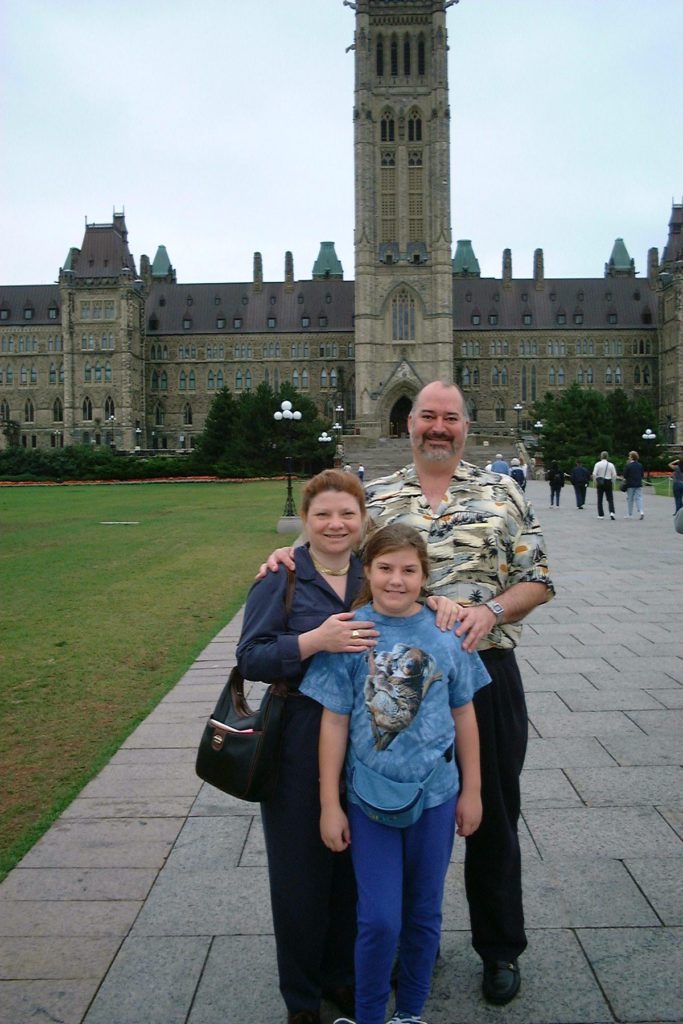
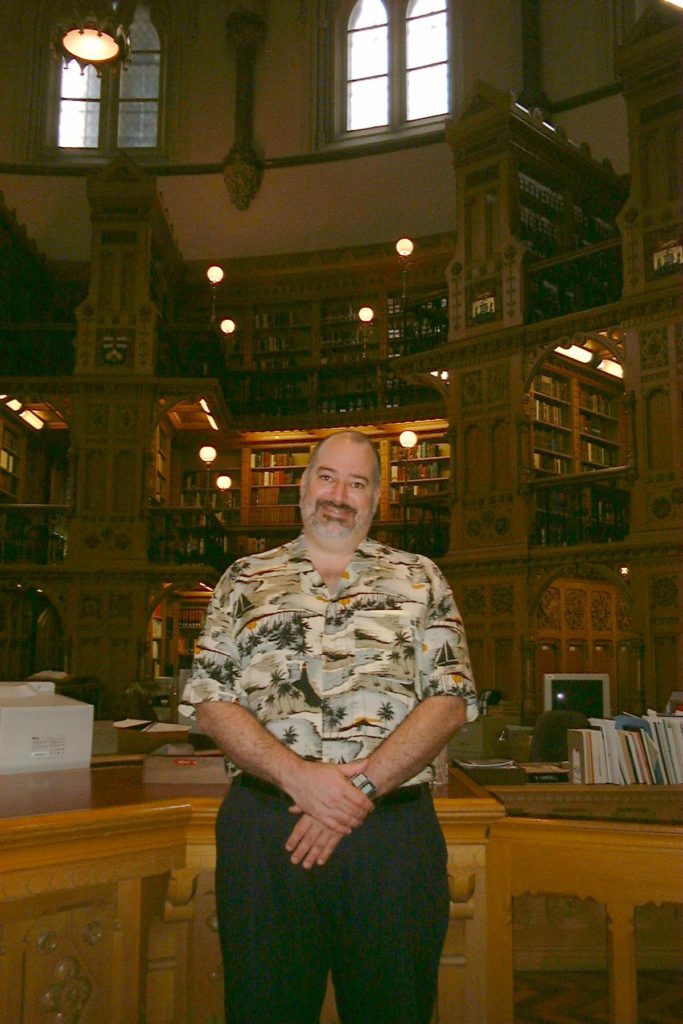

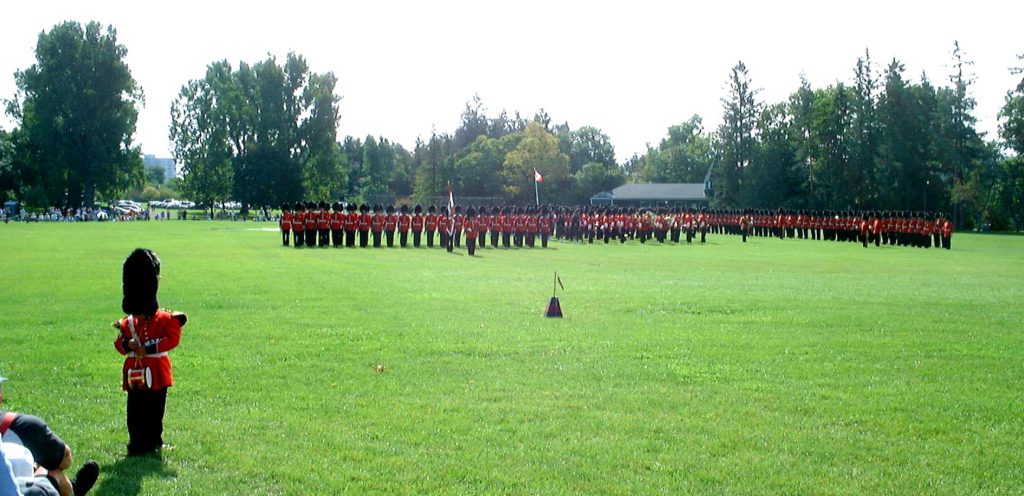
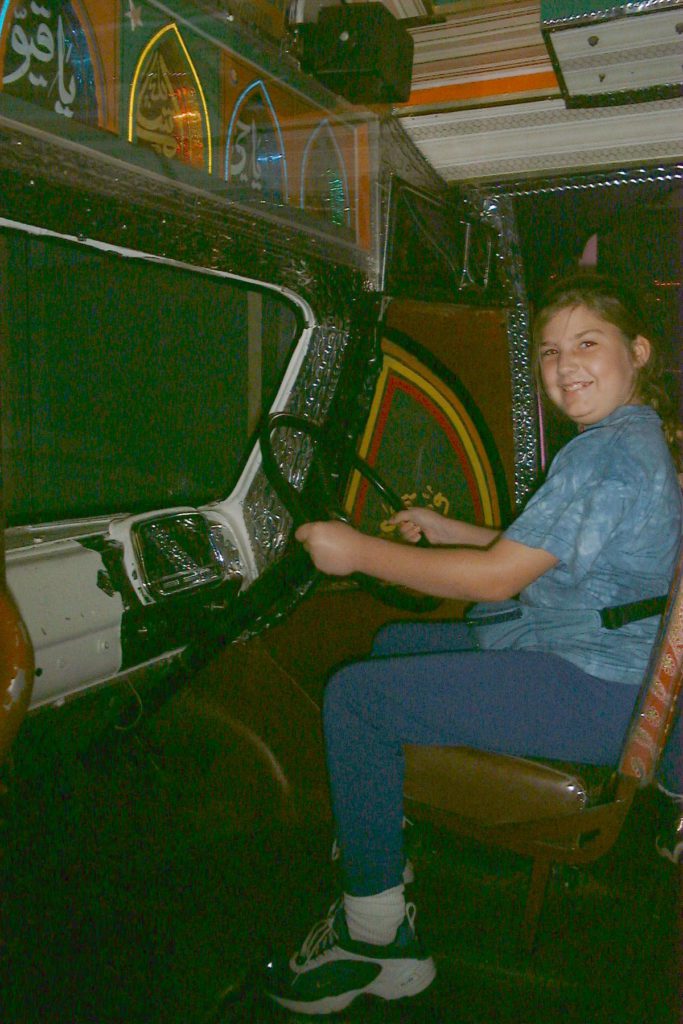
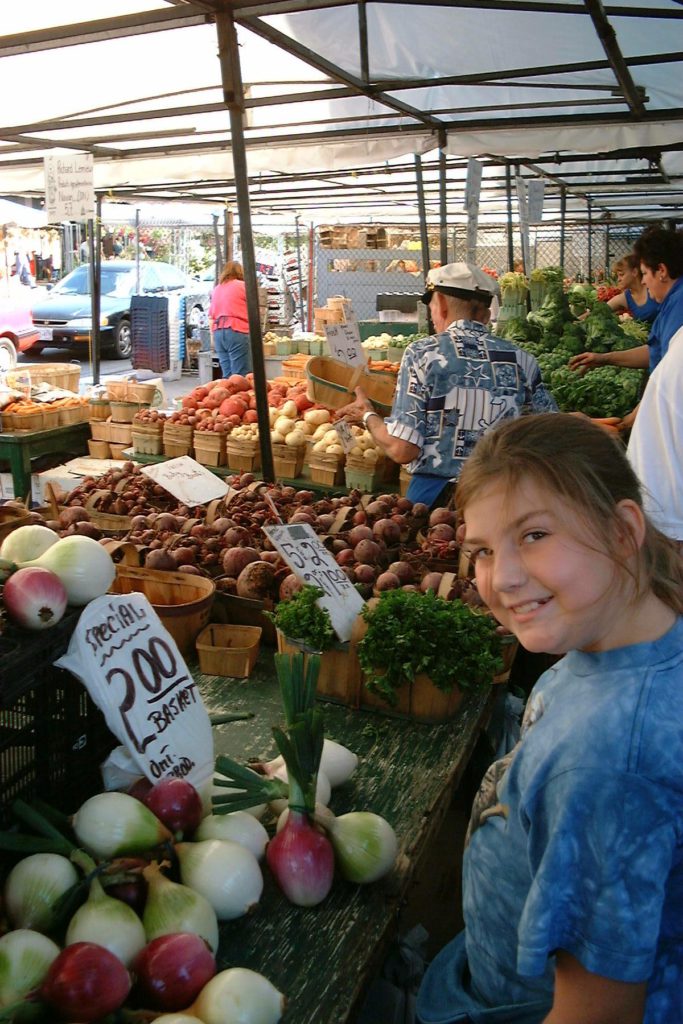
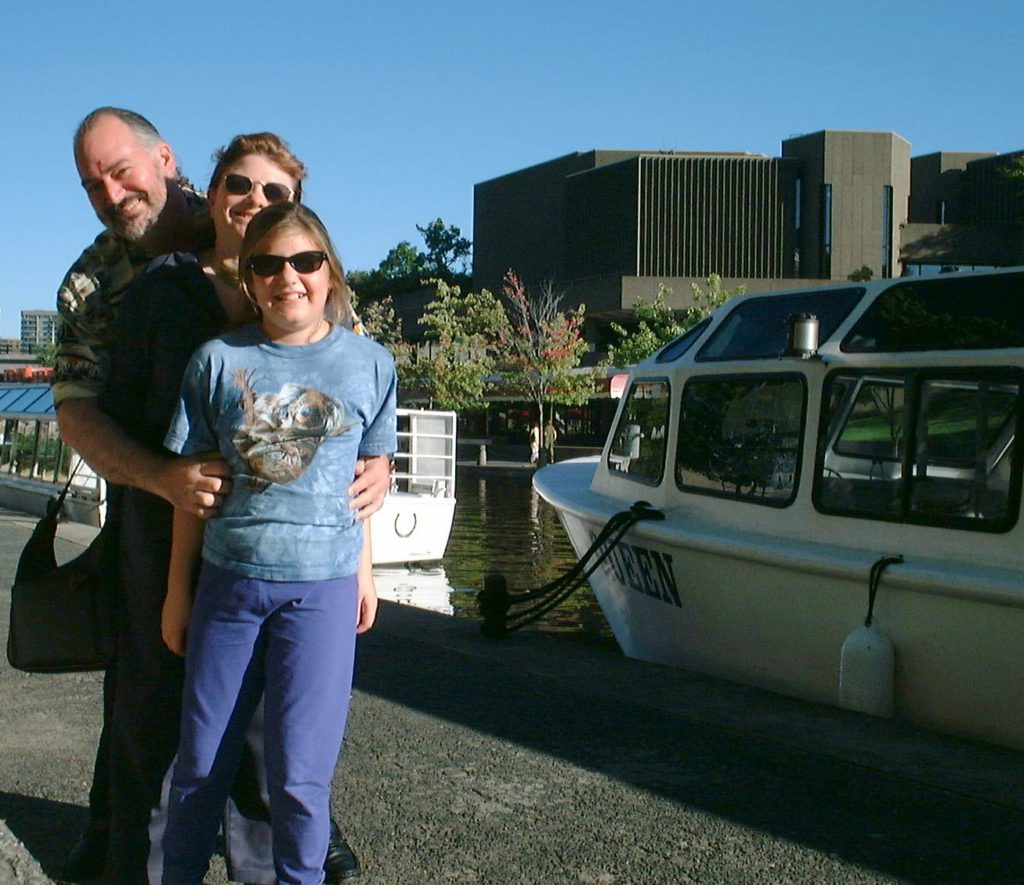
Sunday
Sunday we had breakfast at Daly’s in the hotel and set out for a tour of Ottawa. Now that we are out of Quebec, Julia guided the city tour herself.
First stop was the Canadian Parliament building. It’s a beautiful structure, filled with elaborate carving, woodwork and stained glass. The House of Commons is like a smaller version of the one in London.
Behind the building is the older Library of Parliament, which survived the fire that destroyed the earlier Parliament building — due to someone’s closing the steel door that separates the two.
On the south side of the building is the Senate chamber. Unlike the U.S., Canadian senators are appointed until age 75. Perhaps because of this, they don’t seem to have any significant role in the government.
After Parliament, we hurried off to Rideau Hall, a park across the street from the home of the prime minister, to view the trouping of the colors. Adrian, one of our co-travelers, is from London. On the way, he gave us a detailed history of the British army, and described the significance of the colors, the elaborate flags given to each company. The flags are actually blessed, and presented by one of the royal family. Even when they are worn out, they are never destroyed, but are stored away in a chest.
The colors, of course, were used as primitive semaphores during battle, since the drums and bugles could not always be heard.
We watched as the red-coated troops marched about the field. The band — which included bagpipes in addition to the full array of usual instruments — was quite impressive. They played for about a half hour.
The final stop on the tour was the Musee de Civilization, an enormous structure on the Hull side of the river. The others on the tour were most impressed by the exhibits, but we’ll have to take their word for it — we never made it out of the children’s museum! It’s the best I’ve seen, with dozens of fascinating experiences that captivated the imagination of the many children packed into the place. In our brief hour, Danielle drove a Pakistani bus, explored a pyramid, unloaded crates from a freighter using a crane, tried on snow shoes, and visited a dozen countries.
On the way back to the hotel the bus dropped us off a few blocks away at the ByWard open-air market, where we had lunch at a sidewalk cafe.
After a break for journal writing and relaxation, we headed out to the Rideau Canal for a boat ride. The guide on Paul’s Boat Cruises (since the 1920’s, the sign says) was named Frank. A student of French Literature at Ottawa University, Frank was quite a comedian.
We learned that the Rideau Canal was constructed by Irish and French workers in just six years in the 1820s. It was built in preparation for a sequel to the War of 1812, which never came. The eight-kilometer portion we toured was created from sections of swamp, bedrock, and a farmer’s fields. Four hundred of the workers died in the swamps alone, from what was later called malaria.
This section and one other that is ten kilometers long are the only manmade portions of the canal. The rest of the 200 kilometers is comprised of natural bodies of water.
Traveling along the moss-laden waterway, it was hard to imagine it in winter, when they drain all eight kilometers by opening the locks that feed the Ottawa River, Then it becomes the world’s longest supervised ice rink.
We had dinner back at the hotel, at Daly’s, then packed for the trip to Toronto tomorrow.
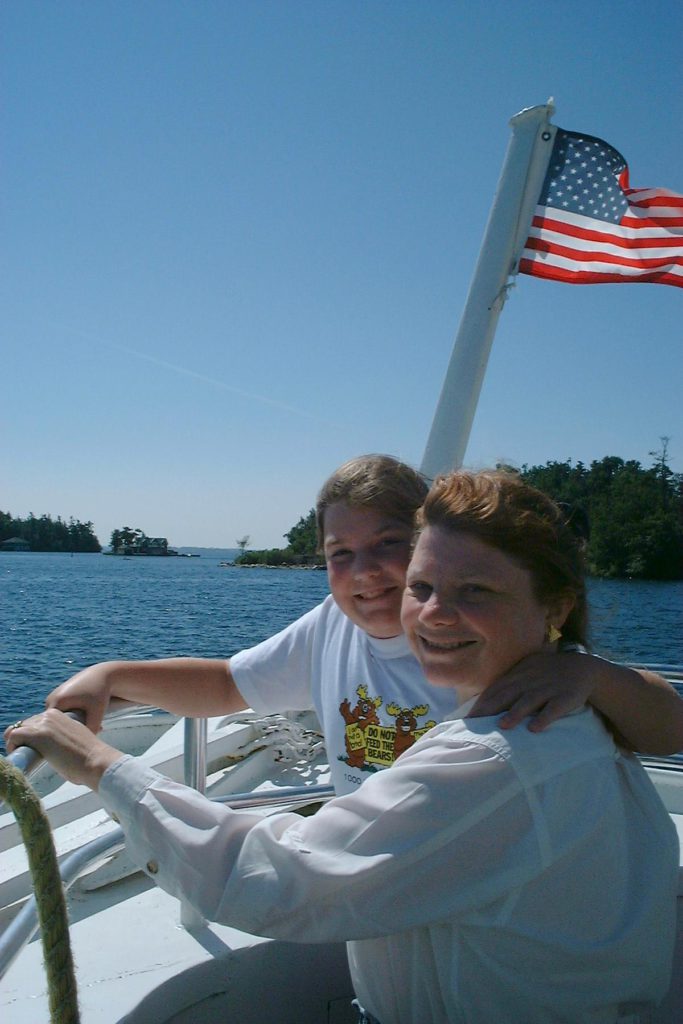
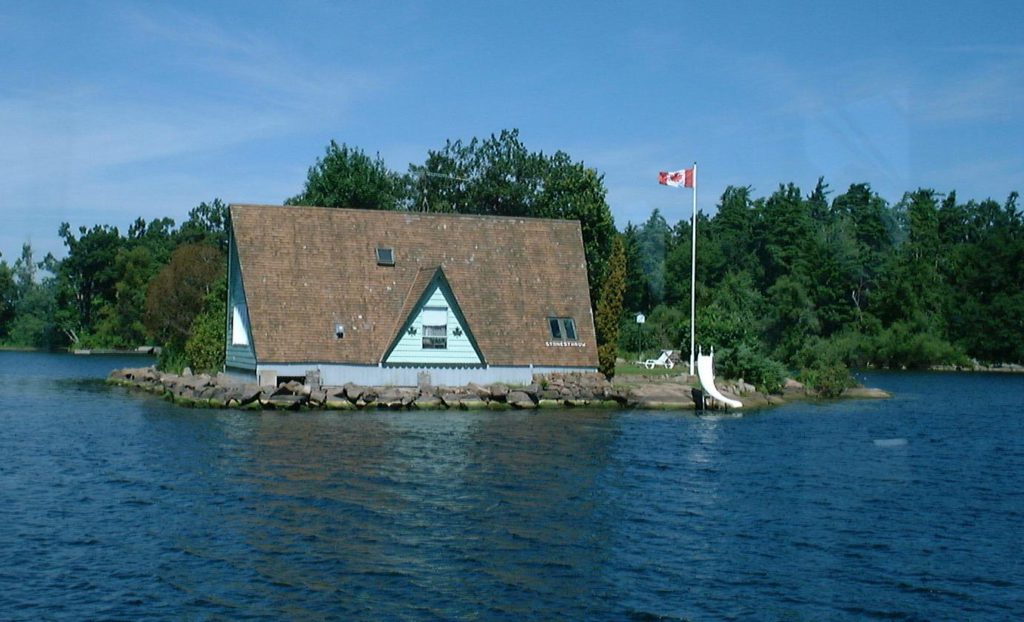
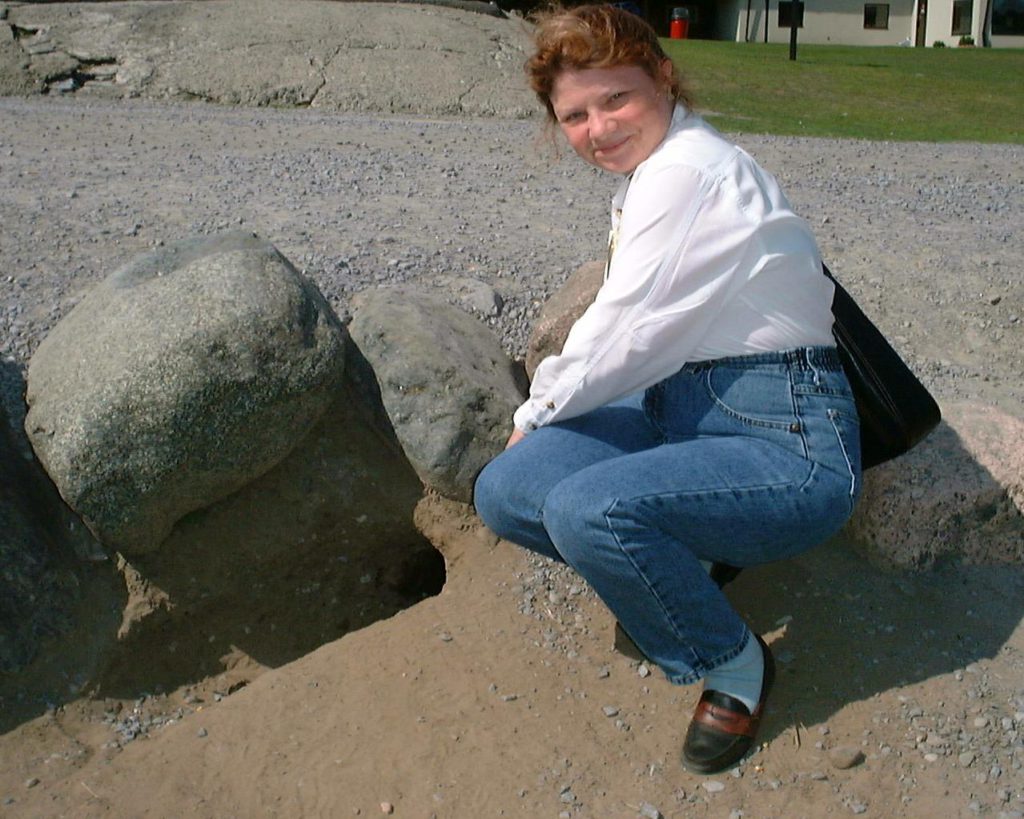

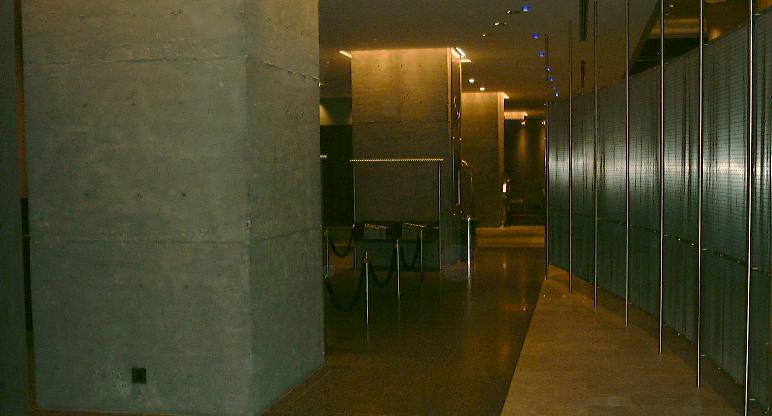
Monday
After breakfast at Daly’s, we headed south for Toronto.
It was mostly a day of riding on the bus, but we stopped at Gananoque for a one-hour cruise of the Thousand Islands. If you think Thousand Islands is an exaggeration, so did we — but there are actually 1865 of them! (To be an official island, it has to have at least two trees and six square feet of ground cover!)
The area is one of the most beautiful we’ve seen, rivaling Yosemite, Vancouver, et al. The narration was recorded, and perhaps a bit out of date, but you could have bought a six acre private island with cottage and dock for the astronomical price of $100,000 in 1982. I want one!
Seriously, though, it would be a great place to spend the summer, swimming and boating off of a tiny rocky island, commuting to Ganonoque across the channel. Winter, on the other hand, sounds a bit harsh. Some residents snowmobile across the frozen river to get to town!
We could see the US side of the river from the boat. The international boundary was drawn after the War of 1812, and splits the islands between the US and Canada. No islands straddle the line, although it runs between a pair that are connected by a short bridge — making it the shortest international bridge in the world.
The lunch on the boat was pretty grim, so I stuck with the salad, which was quite tasty and served with — you guessed it — 1000 island dressing.
Mid-afternoon we stopped at a roadside oasis called the Big Apple, which was actually a lot of fun, The bake their own pies, have a large gift shop and restaurant, and the obligatory restrooms. But the real attraction was out back, where you can feed the sheep, rabbits, ducks and llama. The rabbits wander free through the woods, and Danielle had a great time photographing them. It was a well-timed visit, since our current nighttime reading is “Watership Down”.
Julia passed around a clipboard so that we all could contribute to a group poem. Linda’s contribution was:
We greatly enjoyed the tour and eating,
But soon Tauck’s buses will need wider seating!
Danielle wrote:
I had fun although I’m only nine
I even got to taste some wine.
I didn’t get a chance to do one, but it would have been:
Hilton beds are pretty rotten,
But Westin’s are the best we’ve gotten;
Still in all, for what’s around it,
Frontenac’s tops, I’m glad we found it!
We arrived at the Toronto Hilton at 5:00 PM. The building has just been completely remodeled into what can only be described as Parking Garage Moderne. The concrete lobby has all the charm of a cement plant. And the trendy Tundra restaurant offers fine dining in an environment slightly more austere than your average stainless steel box. The food was elaborately presented and mostly top notch, but the designer of the place really should be shot. We had a good time playing with the rocks(!) that held down the napkins, designing hypothetical weighing puzzles for each other. Example: You have four rocks, three of which weigh the same. How many weighings does it take to find the different one?
Julia went to special efforts to get Danielle accommodations on a high floor, so we have an expansive view of the city. But the best thing about the room isn’t that. It’s not even the trendy easy chair that has only one arm(?!). It’s the Internet connection. Plug your laptop’s 100Base-T jack into the cord, launch your browser, and you’re immediately connected to the Hilton’s welcome page. Log in for $9.95 a day, and you’re on the Internet at T-1 speeds. No set up, it just works — I have no idea how.
I’d never actually used the Internet at these speeds; it’s a whole different experience. Ironically, our web and mail server was down (which never happens) when I first connected , but after dinner it came up and I transferred all of the pictures from this trip in under two minutes. Whew!
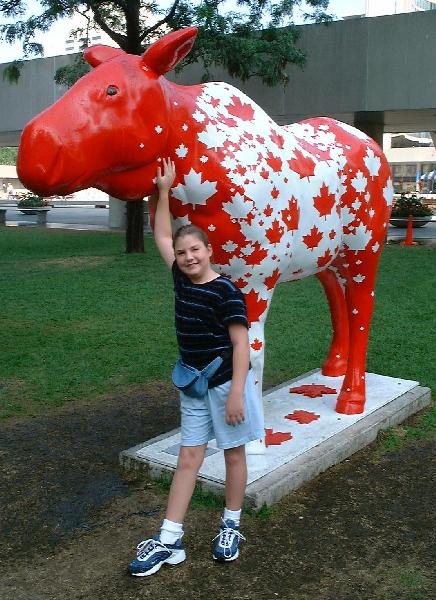
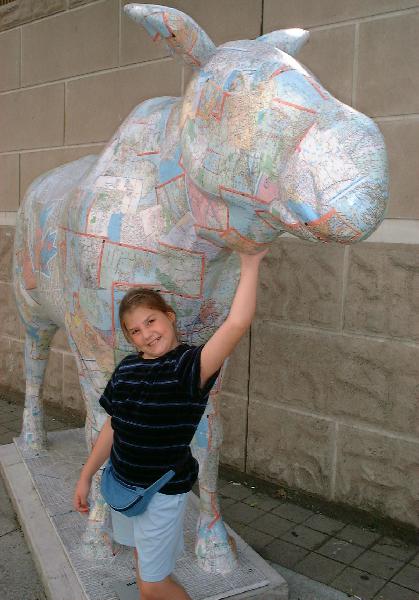
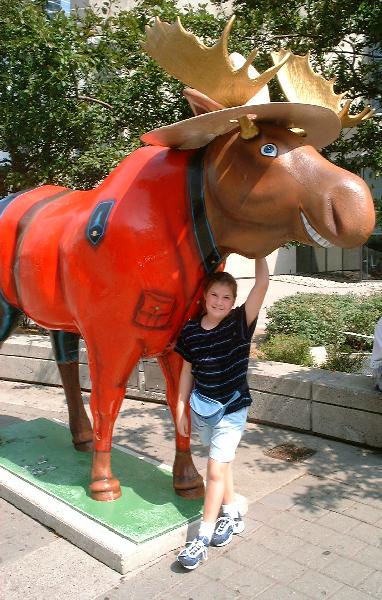
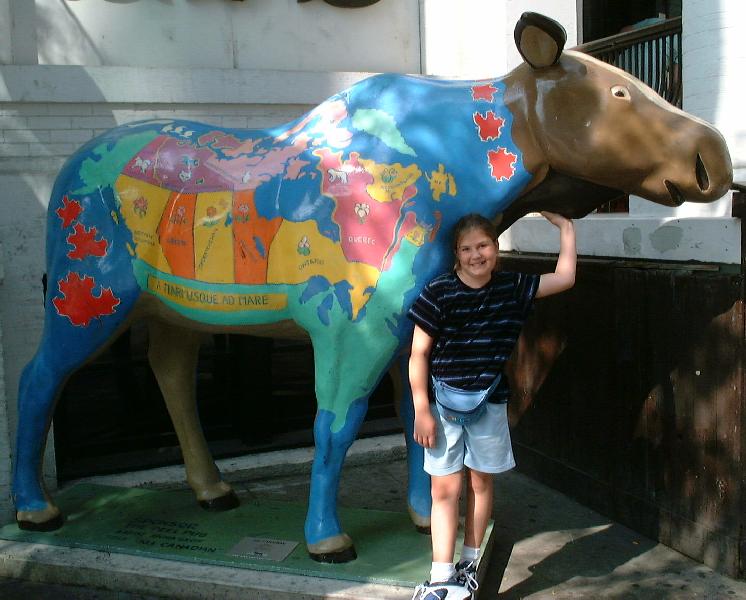
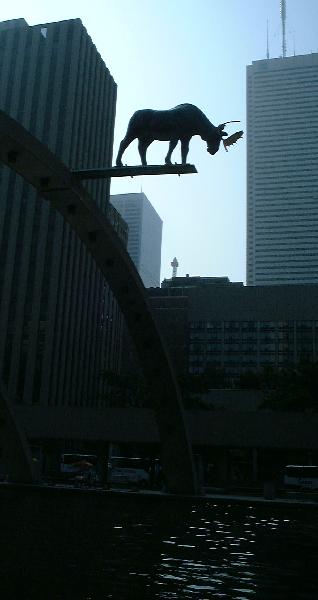
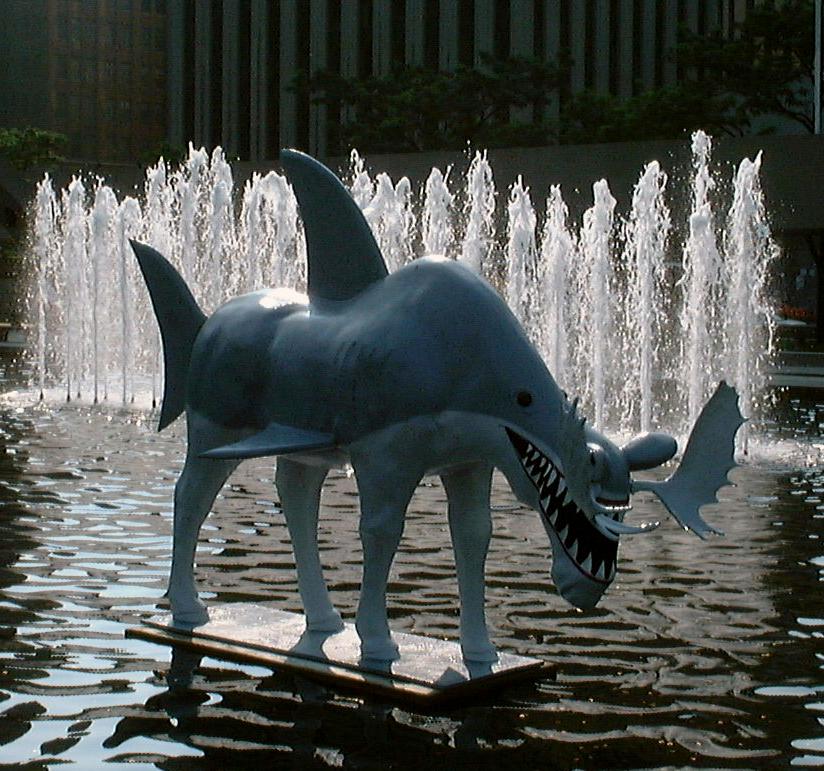

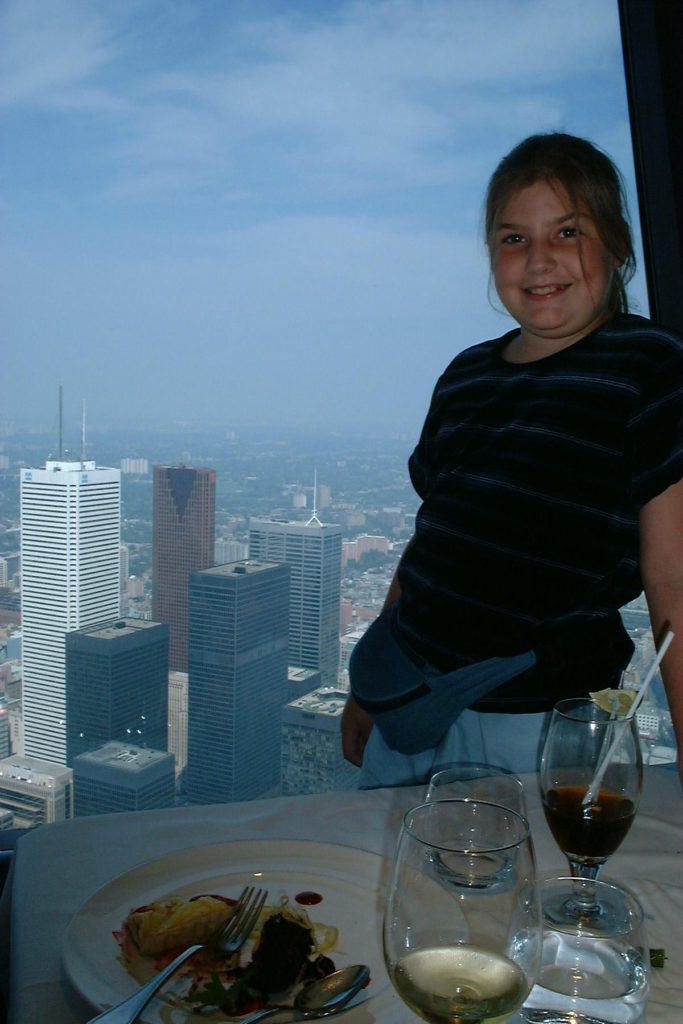
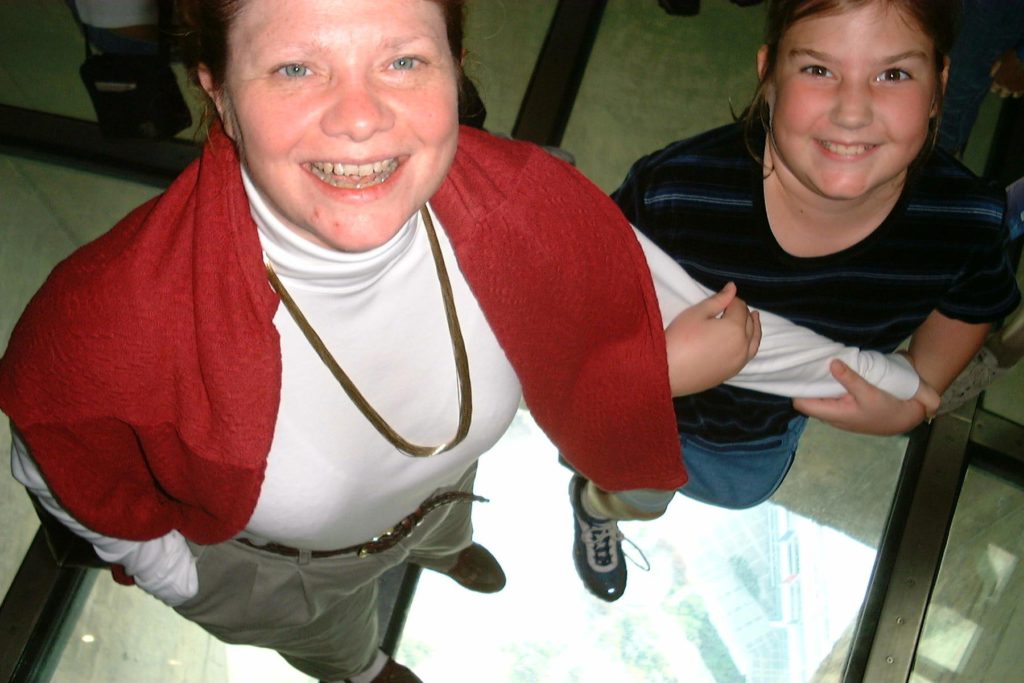
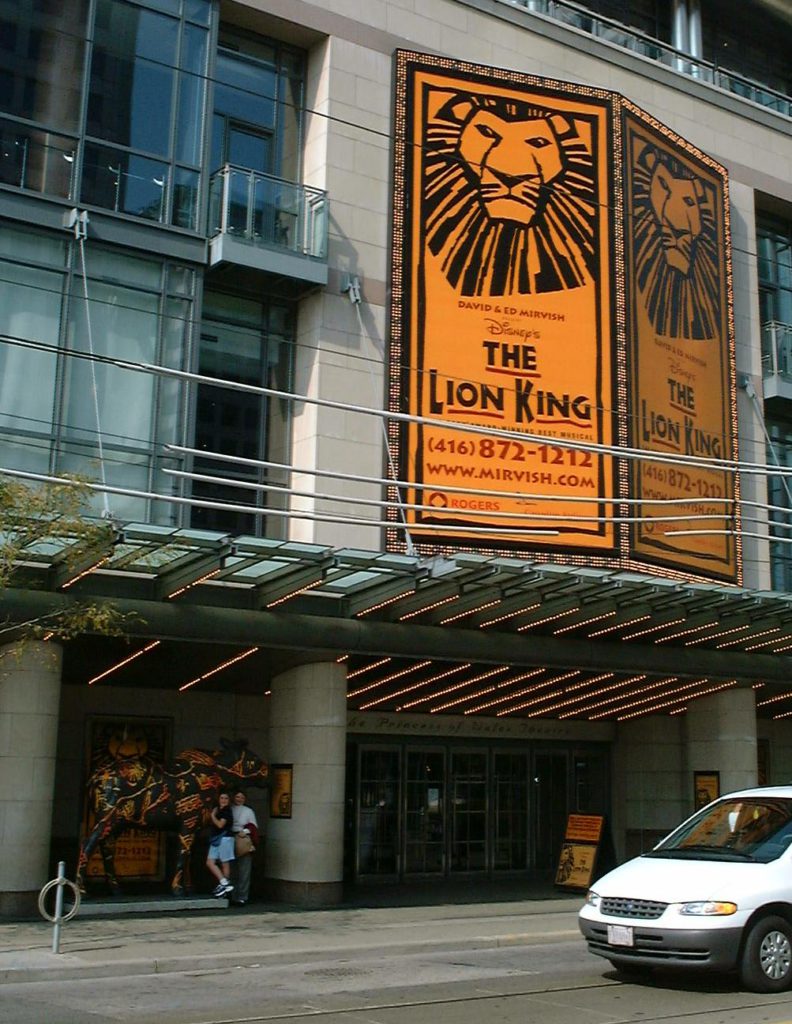
Tuesday
Toronto is a city of glass and steel, the antithesis of Quebec. The homes of 4 million people sprawl around a block of towering buildings at the edge of Lake Ontario, smallest of the Great Lakes.
Other than the big buildings, there’s not much character to the city. A local guide showed us around for a couple of hours, walked us through city hall, and then dropped us off for a self-guided tour of Casa Loma.
Casa Loma is a castle-like house built by Sir Henry Mill Pellatt in 1911. More precisely, it was built by about 300 laborers. It cost the equivalent of about $40 Million. Sir Henry and his wife lived in it for less than ten years before he discovered that it wasn’t nearly so profitable to own an electric utility company once it wasn’t a monopoly. The furnishings and house were auctioned to pay his debts.
One of the more interesting things we found in the city were some 600 moose statues. Sponsored by corporations at $6000 each, the moose are clever and often comical. The fiberglass creations have mostly lost their antlers to souvenir hunters or pranksters, but they’re still cute. They will be auctioned in the fall.
For lunch we went to the 1800-foot-tall CN Tower, the world’s largest free-standing structure. The Restaurant 360 makes a complete turn every 72 minutes, affording a terrific view of downtown and the Lake Ontario waterfront. After lunch we walked across the glass floor, which gives you a rather queasy feeling, since it’s 1100 feet straight down!
One the way back to the hotel we passed the theater where we saw The Lion King later in the evening. What a show it was, with fabulous costumes and lighting, and all the great songs from the movie plus many new ones. Several of the performers were quite good, including the ten-year-old boy who played young Simba, and the woman who played Nala — she was truly of Broadway caliber.
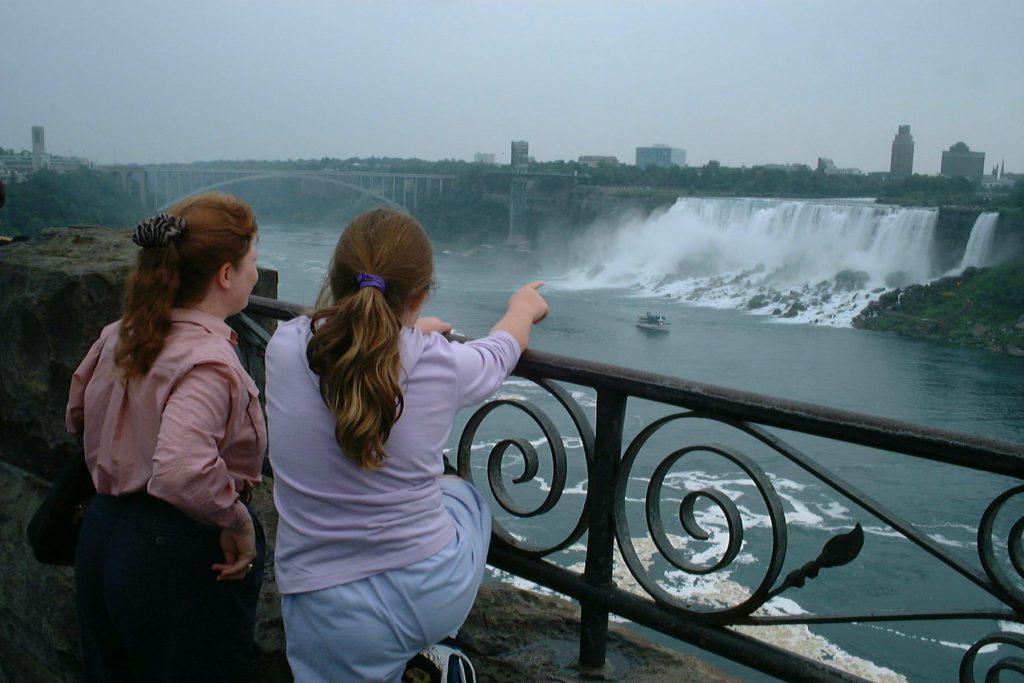
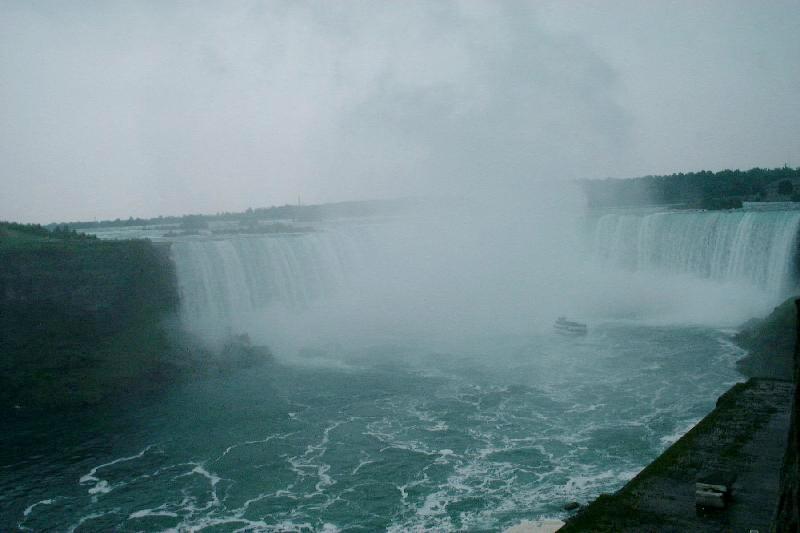
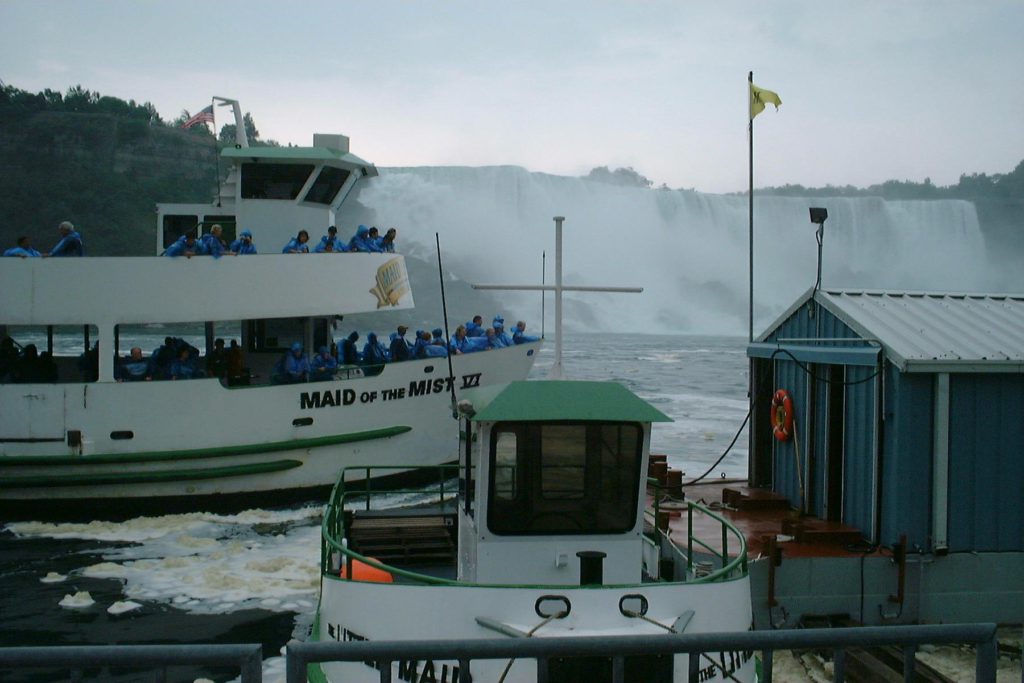
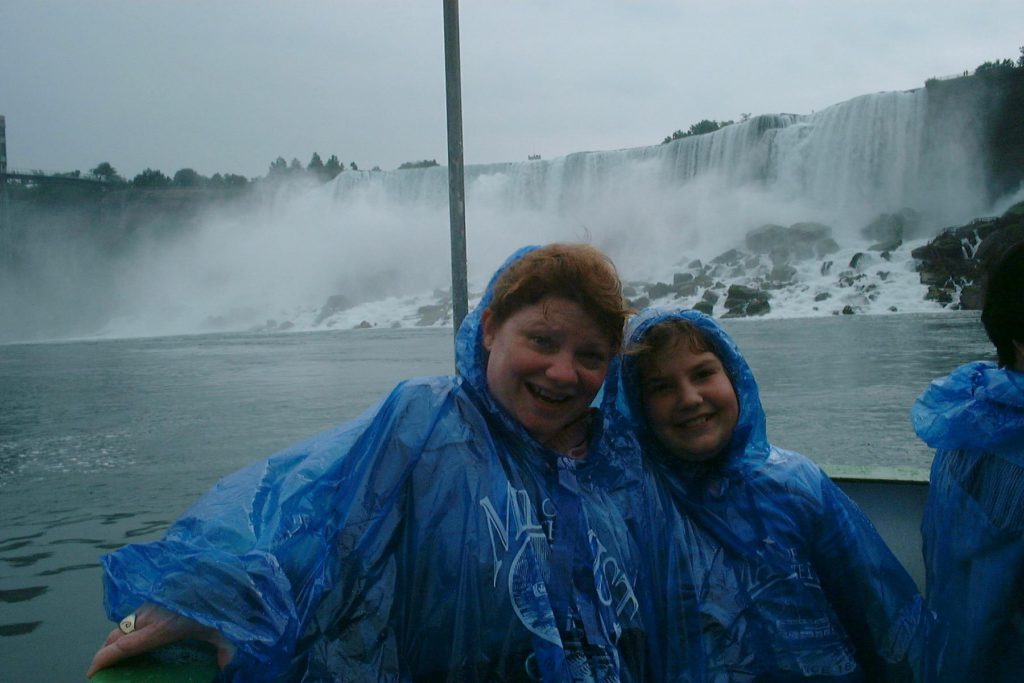
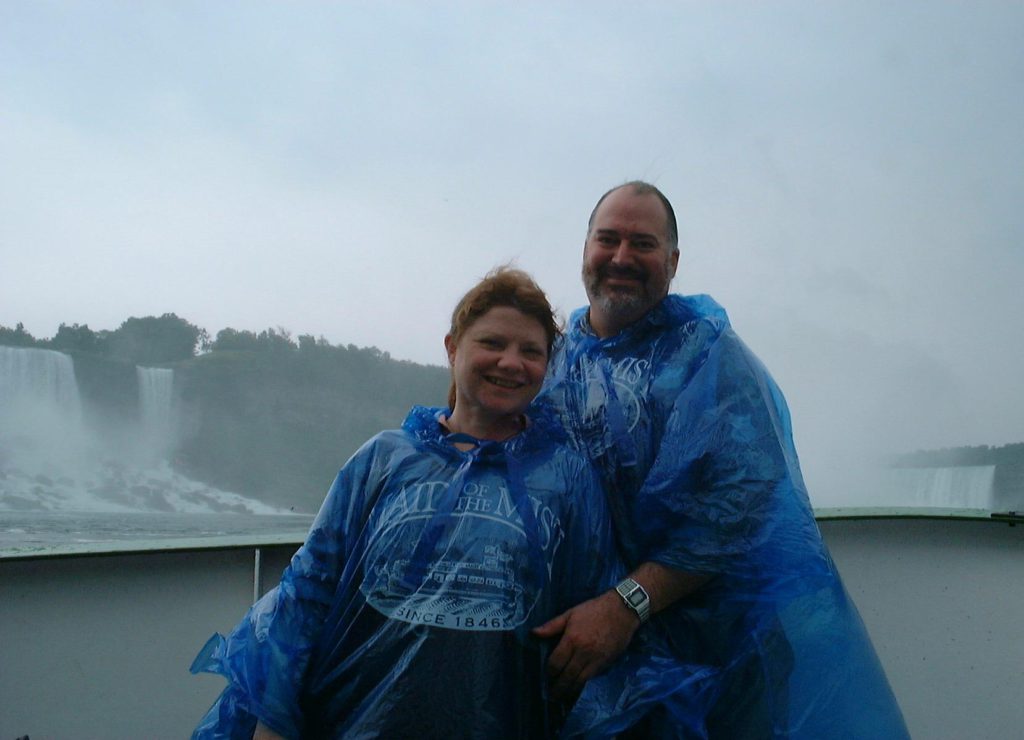
Wednesday
After my solo breakfast in the aptly-named Tundra (Danielle opted for room service) we boarded the bus for the ninety-minute drive to Niagara Falls. I had always pictured the falls in the middle of a national park setting, but in reality they’re surrounded by something across between Coney Island and Las Vegas. Still, even the miniature golf courses and haunted houses can’t overwhelm the beauty and massive size of the falls. The Maid of the Mist boats get right up into the spray of the horseshoe-shaped Canadian side. The boats are named after an Indian legend about a maiden who was sacrificed by sending her over the falls in a canoe. Her spirit is said to live in the mist behind the falling water.
Speaking of people going over the falls, the first one known to survive was a schoolteacher who went over in a barrel about one hundred years ago. She was 63! More impressive is the boy who, about ten years ago, accidentally went over the falls in swimming trunks and life preserver and survived. He was pulled out of the water by the crew of one of the boats.
It’s a good thing they hand out ponchos, because the water really comes down when you’re up in the thick of it. The flow is fairly turbulent, and the boat rocks as if it’s shooting the rapids.
We stopped for lunch at The Queen’s Landing, a new and very nice hotel in Niagara-on-the-Lake. It’s a charming town, and we wished we had time to explore it, and to visit some of the many wineries in the area. But too soon were headed back to Toronto, for our farewell dinner and packing for our early flight tomorrow — and a 4:00 AM wake-up call!
It’s been a great trip. Now we have the excitement of getting back so that Danielle can see her new school.
As we fly home, we’ll also be remembering the sights (especially Quebec), and thinking about our tour director, Julia, who starts it all over again tomorrow afternoon…
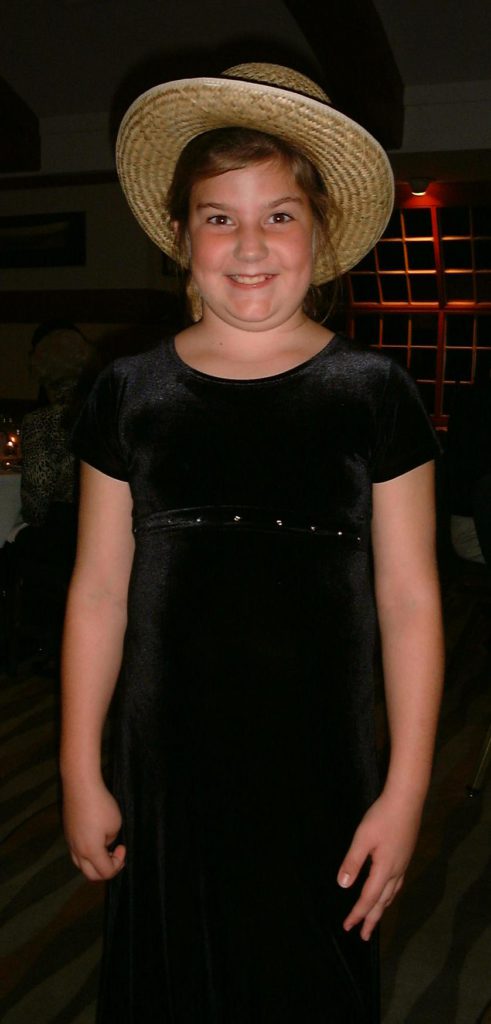
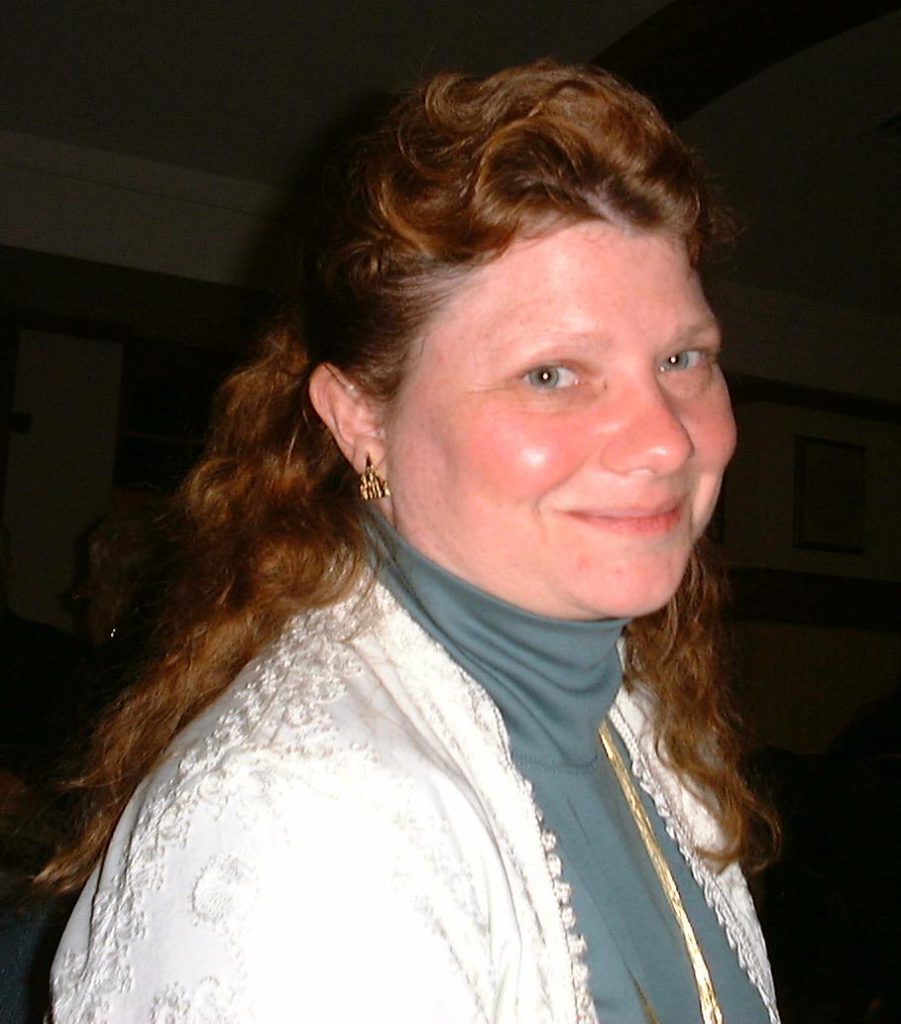
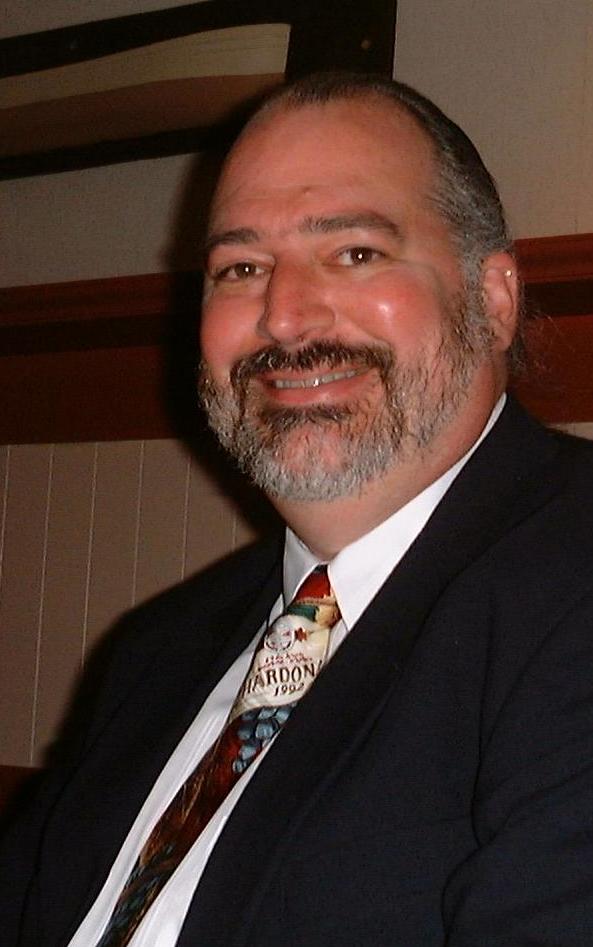
Itinerary from the Tauck catalog:
1. Fly to Montreal
Tour begins: Bonaventure Hilton Hotel at 6:30 PM. Discover the many charms of the delightfully French city of Montreal; the day is at leisure upon your arrival. This evening you are invited to a 6:30 PM reception and dinner to meet your Tour Director and fellow travelers.
Meals D
2. Sightseeing Montreal
With its dual English and French cultures, Montreal is one of Canada’s most unique cities. This morning enjoy a sightseeing tour including St. Joseph’s Oratory, McGill University and Mt. Royal, plus a visit to Notre Dame Cathedral. After lunch the afternoon is free to spend as you wish. Visit the fashionable shops of Place Ville Marie, Place Bonaventure, St. Catherine and Sherbrooke Streets, or explore on your own. Montreal is delightful, with many things to do at any time of the year.
Meals BL
3. Montmorency Falls / Quebec
Leave Montreal and head east through the heart of French Canada. Follow the shores of the mighty St. Lawrence River through Trois Rivières to magnificent Montmorency Falls, higher than Niagara Falls! Enjoy lunch beside the falls, then journey to Quebec City for two nights at the Château Frontenac. Sprawled atop sheer cliffs rising above the narrowing St. Lawrence River, Quebec reflects an old-world charm and grace of another era. Highlights include the Plains of Abraham, the provincial Parliament buildings, Porte St-Louis and the narrow, cobbled streets lined with boutiques and cafes.
Meals BLD
4. Quebec City
This morning take a sightseeing tour of Old Quebec, capital of the province, the only walled city north of Mexico. Grayed by the brush of time, ancient stone houses huddle beside venerable churches and historic monuments. You may wish to stroll on Dufferin Terrace, watch the unending line of ships from around the world, or visit the small boutiques of the Old City. For those who wish, continue on to the Beaupré coast and visit the shrine of Ste. Anne de Beaupré and its famous basilica. Return midday to Quebec City; the remainder of the day is at leisure to enjoy this beautiful city.
Meals B
5. Vaudreuil / Ottawa
Travel west, past Montreal, along the route of early French explorers and fur traders. After lunch continue to Canada’s capital city of Ottawa, perched on the banks of the Ottawa River. As the center of Canadian government, it is renowned for beautiful flower gardens, tree-lined streets, numerous parks and noble buildings. The city was chosen as the capital of Canada by Queen Victoria in 1857; at the time it was a somewhat rustic outpost on the edge of the Canadian frontier. View the training center of the Royal Canadian Mounted Police before arriving in the heart of the city for a relaxing two-night stay.
Meals BLD
6. Canada’s Capital — Ottawa
Ottawa captivates the visitor with the charm of its magnificent boulevards, exquisite gardens and regal architecture. This morning’s sightseeing includes views of the Royal Canadian Mint, National Research Center, City Hall, the residence of the prime minister and Rideau Hall, the governor-general’s home; you also have an opportunity to visit Parliament. In July and August see the “Changing of the Guard” (weather permitting). Enjoy the remainder of the day at your leisure.
Meals B
7. 1000 Islands / St. Lawrence
Head south to the St. Lawrence River for a luncheon cruise among the lovely Thousand Islands. Some of the islands are lushly forested while others support only a few pines perched precariously over the blue water. Continue to Kingston, where the great river opens on to Lake Ontario. Travel the MacDonald-Cartier Freeway to Toronto, Ontario’s largest city, for the next three nights.
Meals BLD
8. Toronto / Lake Ontario
Today enjoy a sightseeing tour of Toronto to see the downtown and residential areas as well as the Royal Ontario Museum, Parliament Buildings and the University of Toronto. Visit magnificent Casa Loma mansion, the opulent legacy of Canadian Industrialist Sir Henry Mill Pellatt. The afternoon is at your leisure to visit the museums and waterfront shops, or perhaps take a boat excursion on Lake Ontario. Join us for a special evening attending a theatrical performance of the magical Tony Award-winning musical, The Lion King.
Meals B
9. Niagara Falls
Travel along the Queen Elizabeth Way to Niagara Falls. In addition to viewing the thundering falls from high above, you will descend to the churning waters of the Niagara River and take the famous Maid of the Mist boat to view the falls from below. It’s a breathtaking experience! Travel along Niagara Gorge to view the world-famous Floral Clock, giant hydroelectric plants, Niagara Parks School of Horticulture, and the Whirlpool Rapids. Visit the charming village of Niagara-on-the-Lake for lunch with time to browse through the shops. Return to Toronto for a farewell reception and dinner.
Meals BLD
10. Journey Home
Tour Ends: Toronto. Fly home anytime. A transfer is provided to the airport.
Meals B
Three Rivers and Sequoia 2000
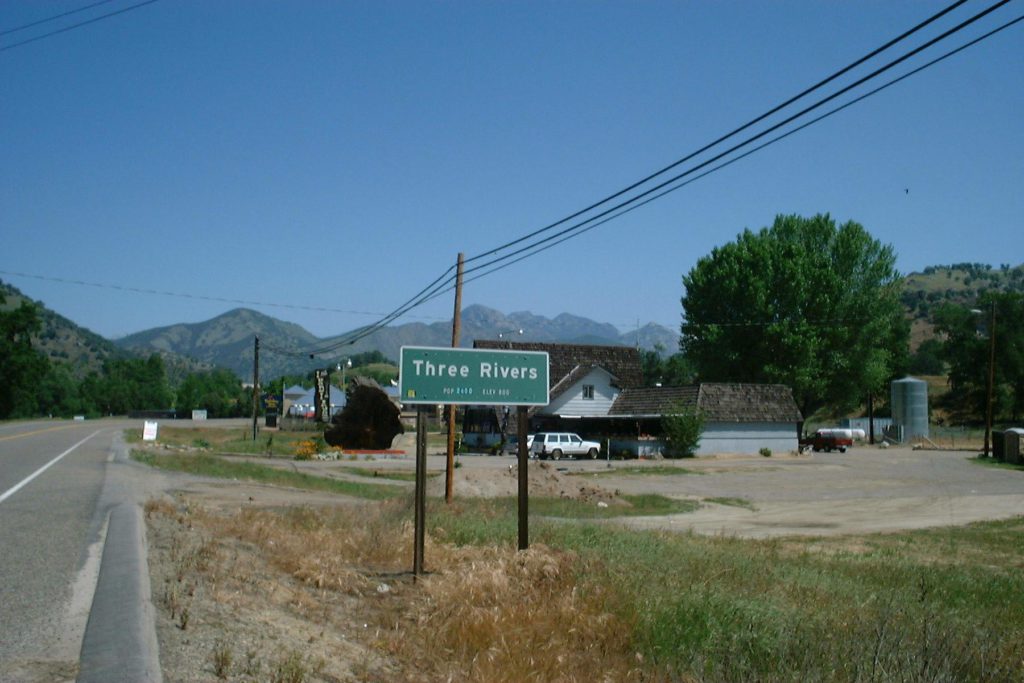
In April 2000 Linda was headed to Walt Disney Imagineering in California for meetings about the new Space Pavilion at Epcot. Danielle and I decided to tag along, to visit grandparents. I also conceived the idea of visiting my childhood summer haunts in Three Rivers, just below Sequoia National Park.
Saturday, April 22, 2000
To avoid any Easter morning angst, Danielle celebrated Easter with an egg hunt and baskets Saturday. I say baskets, because she had her friend Megan staying over Friday night, and they both got an Easter basket on Saturday. Saturday evening Linda, Danielle, Nicole and I went to A Chorus Line at the Mark Two Theater. They did a commendable job with their limited facility. It was amusing to see the changes that had been made to the names of popular movie stars since we saw it at the Shubert in L.A. back in the mid ’70s.
Easter Sunday, April 23, 2000
We were up at 6:00 AM to head for the airport. Coupled with the late night before, Danielle was pretty much comatose until we got to the airport. Disney no longer uses Delta, so Linda ended up with a United non-stop. Danielle and I got free first class Delta ticket with SkyMiles, but had a connection in Atlanta. We met up at Marjorie and Dean’s house at about 3:00 PM for a nice Easter dinner of Honey Baked Ham and smoked turkey. Then it was off to the Glendale Hilton (Linda had already checked in) for a very early bedtime.

Monday, April 24, 2000
Still on East Coast time, Danielle and I were up and out by 7:00 AM. We exchanged our Oldsmobile Alero for a Pontiac Grand Am at the Burbank Airport (the Alero went thump-thump-thump at freeway speeds) and then headed north, stopping for breakfast in Castaic (near the site of the St. Francis dam disaster of 1928, although you couldn’t tell it now). Beyond Bakersfield we took the cutoff through Porterville, drove through an A&W Root Beer stand for something to drink in Exeter, and stopped to peer into a cricket cage at a tackle shop in Lemon Cove. By 11:30 AM we were in Three Rivers.
Lake Kaweah was surprisingly low, considering that the spring melt had already begun. Sometime in the mid ’70s they moved the marina down near the dam so that they could let the water drain lower in the fall (for flood control in the winter). After so many years of going out on the boat at the old location, it still looks like it’s in the wrong place to me. The houseboats looked the same, although I doubt that any of them are floating on plywood boxes full of empty Purex bottles any more! I recalled the spring of 1966, when flooding filled the lake to the brim, and water was running over the four feet of sandbags they’d added to the spillway. The surface had been covered from shore to shore with so much debris – tree stumps, building materials, branches, anything that would float – that it looked as if you could walk across it.
Above the lake we passed what used to be Metz’s Trailer Park, now some sort of cabin rentals. Across the street was the Three Rivers General Store, which we used to call Harry’s. Harry seemed to have at least one of everything ever made. It seemed that no query could stump him – with enough rummaging he would come up with whatever you needed, or a reasonable substitute. The store was still there and looked like it was in business, but it was closed.
There was a new Holiday Inn Express on the right (quite an eyesore), and a new hotel and restaurant under construction on the left. Other than these, we saw very little recent construction throughout the area. Some business have come and gone, but the buildings are unchanged. Three Rivers was amazingly similar to when I last visited, some 25 years ago. I was amazed at how accurate most of my memories had been, especially considering that they were largely forged when I was ten or twelve. Even the map that I drew for A Matter of Justice had only minor errors in it: the gas station too far north by 100 yards, the first part of North Fork Drive too perpendicular to 198.
Our first stop was at the Supermarket and Drugstore. Danielle bought a few souvenirs and collected twigs to make a picture frame. Continuing on into town, I didn’t see the golf course clubhouse, but there seemed to be a new structure near the first hole.
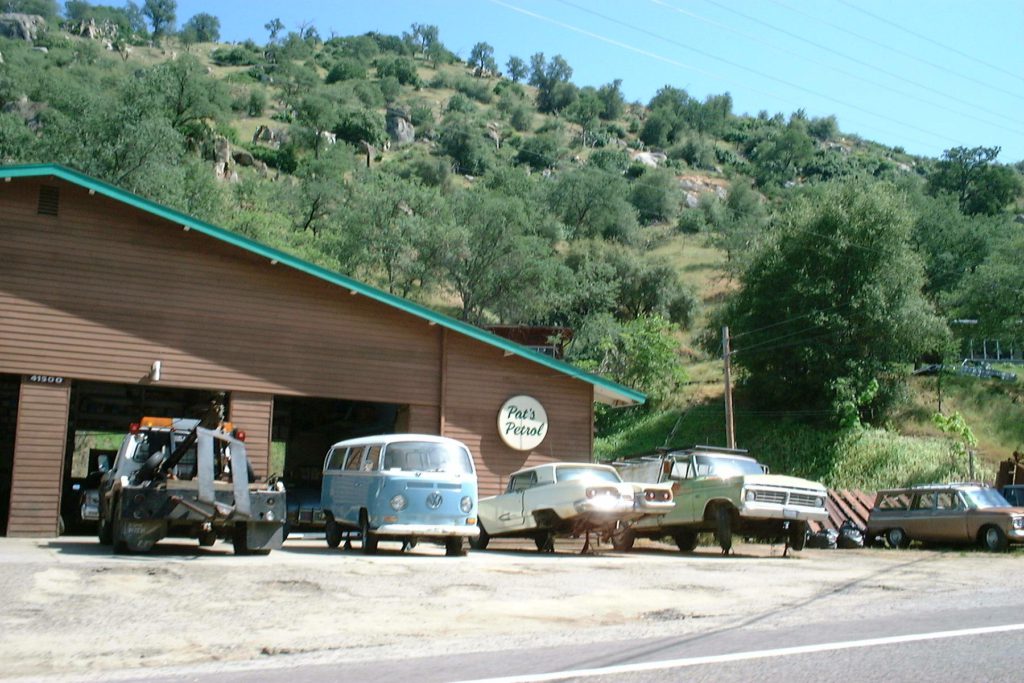
Pat O’Connell’s gas station is still there, although they’re just a towing service and wrecker yard now. I guess when the new gas tank regulations came in it was too expensive to change the tanks. We found out later that Pat, who must be in his seventies, still runs the place.
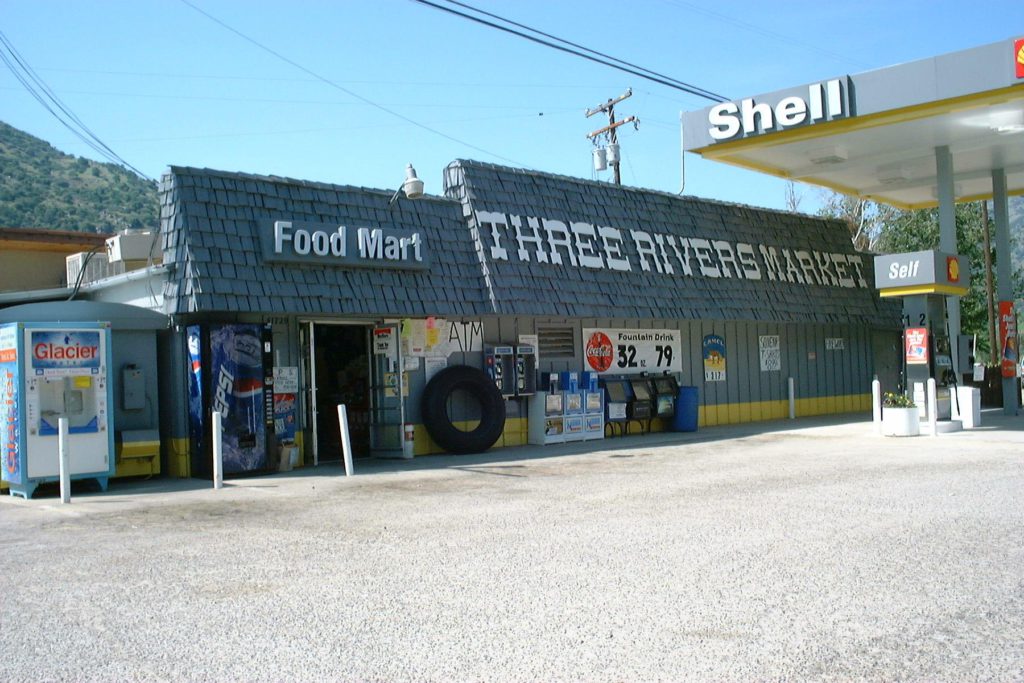
Three River’s “downtown” still looks almost exactly the same. Pat Lang’s emporium, a sandwich and gift shop, is still at the corner of North Fork Drive and 198. The strip of buildings running north from there on 198 is identical, although many of them are out of business, and most of the rest have changed names.
The Three Rivers Market is unaltered – two gas pumps out front, crowding the façade of the building, narrow rows of everyday staples squeezed inside.
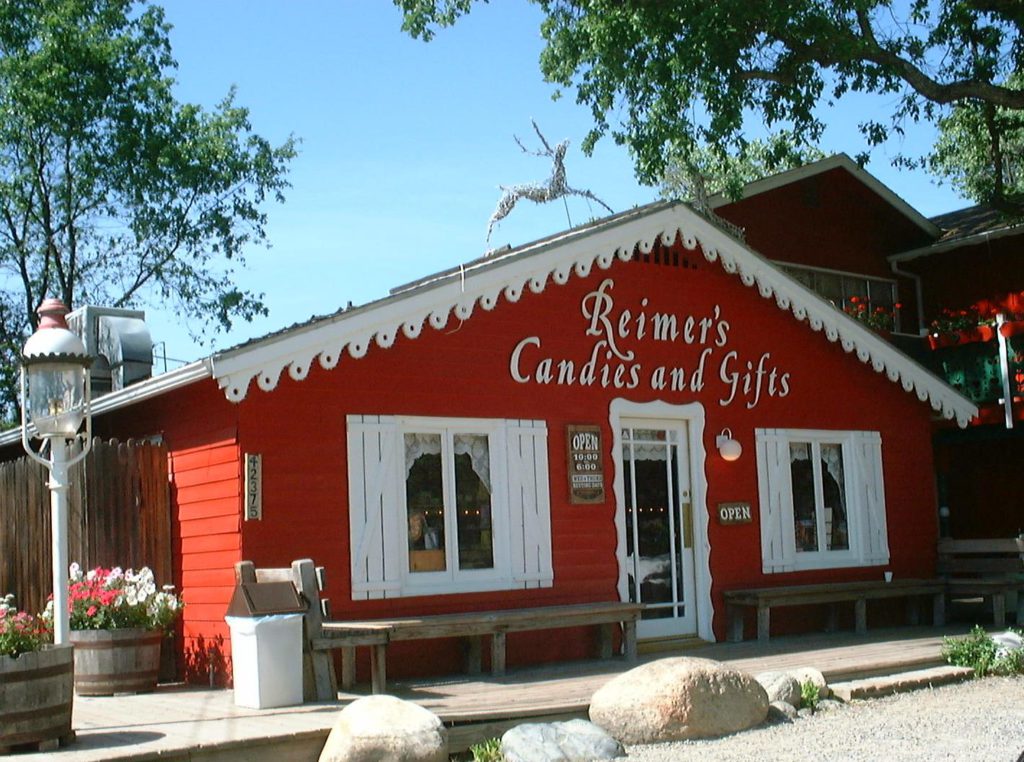
Driving on through town we stopped at Rainer’s Candy Shop, which was the same shop I’d written about in the book, but under a different name. The woman behind the counter, Leslie Fry, was a longtime resident of the area. She reminded me that it had been called Huffaker’s Country Candies in those days. She also mentioned that there was a book called “Sunshine and Buzzards”, written by a local resident, which I might find at Ann Lang’s Emporium. I told Leslie I’d send her a copy of my manuscript.
We drove back to Ann Lang’s for lunch, and I found the book that Leslie had mentioned, and another about the founding of the Kaweah Colony Cooperative in the 1890s. I later discovered that the Kaweah Colony book was written by Pat O’Connell’s son! We asked what building the library had been in – I hadn’t recognized it as we drove past – and learned that it now houses a newspaper, The Kaweah Commonwealth, which was resurrected from a nearly 100 year rest in 1995.
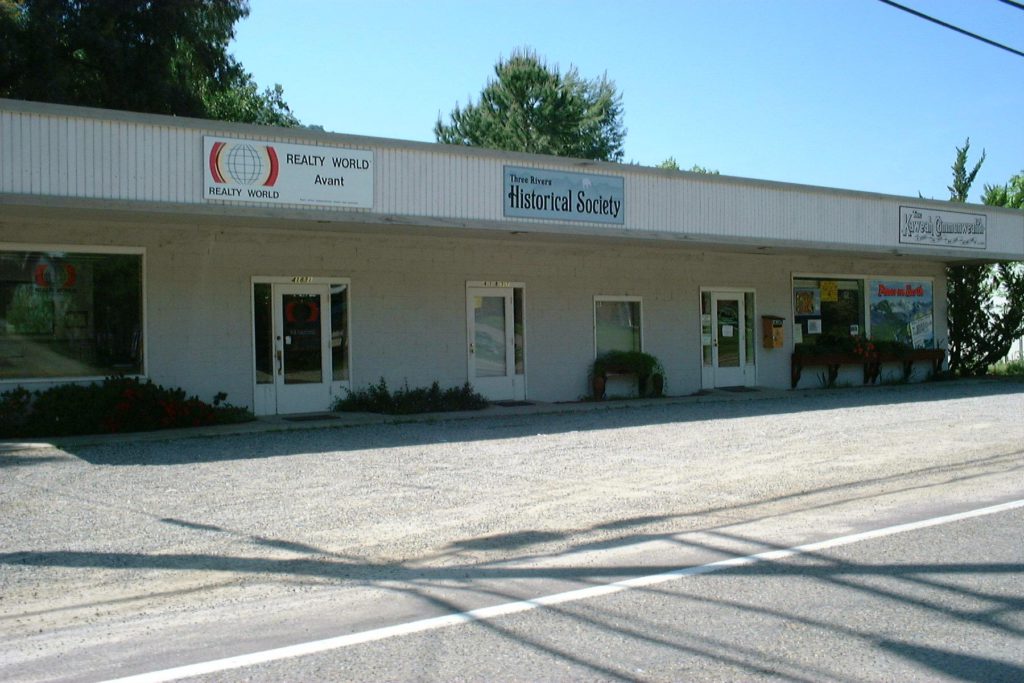
On the way into the newspaper office, we passed on elderly lady coming out. Inside, we asked the publisher, John Elliott, about the library. Indeed, this building (which was even smaller than I remembered) had been the library for many years. He told us that the woman we’d passed on our way in was the daughter of Esther Peck, the librarian of the 1960s! According to John, she ran the library for about 25 years, and died a couple of years ago. John gave us a few back issues of the newspaper, and filled us in on some local history. He asked for a copy of the book to review when it was published, and I told him that in the meantime I’d send him a copy of the manuscript.
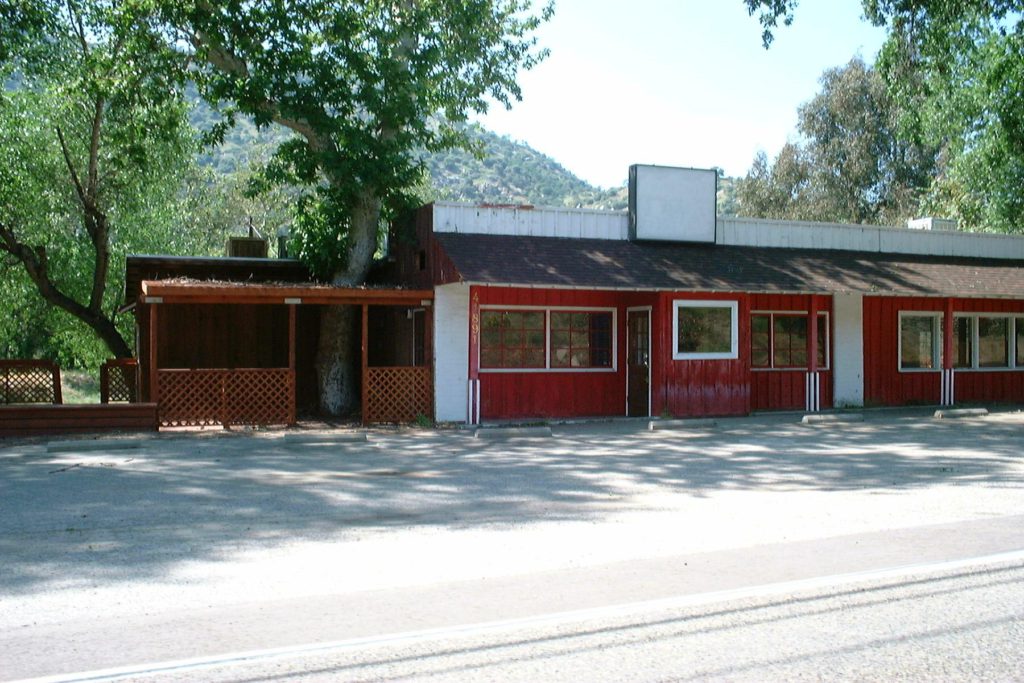
We drove past the Three Rivers Drive In Restaurant, which is now closed. They’ve built a new Chevron station next door. (Apparently the restaurant was also known as Corky’s for a time. Interestingly, I saw a stained glass sign that said Corky’s stored in a window of one of the apartments behind the Three Rivers Market.) Incidentally, the market is a one-story structure, contrary to what it says in the manuscript. There is a deck out behind the apartments in the rear, and there is a partially exposed basement beneath the front part of the building. I’m not certain that the apartments were even there in the 1960s, though.
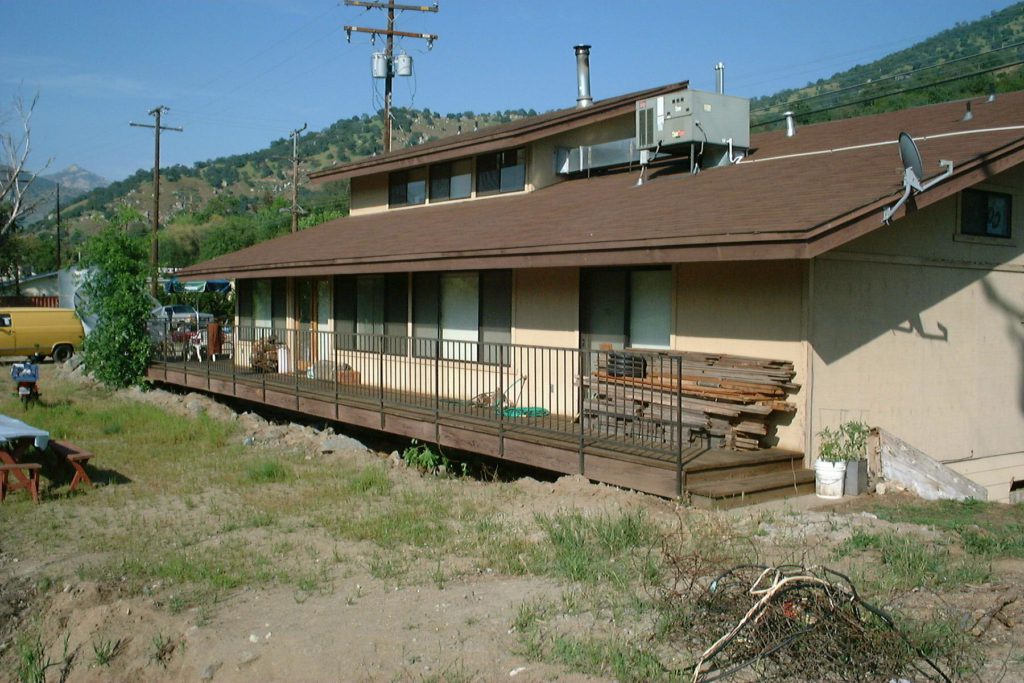
Having seen most of the town, we headed across the North Fork Bridge, and swung through the rodeo grounds, now called Lion’s Arena. It’s actually on the east side of the North Fork, across another small bridge. I purposely showed it on the west side when I made my map, because I thought it was confusing to have yet another bridge. Now I’m not sure that I even what to show it on the map, since it has nothing to do with the story.
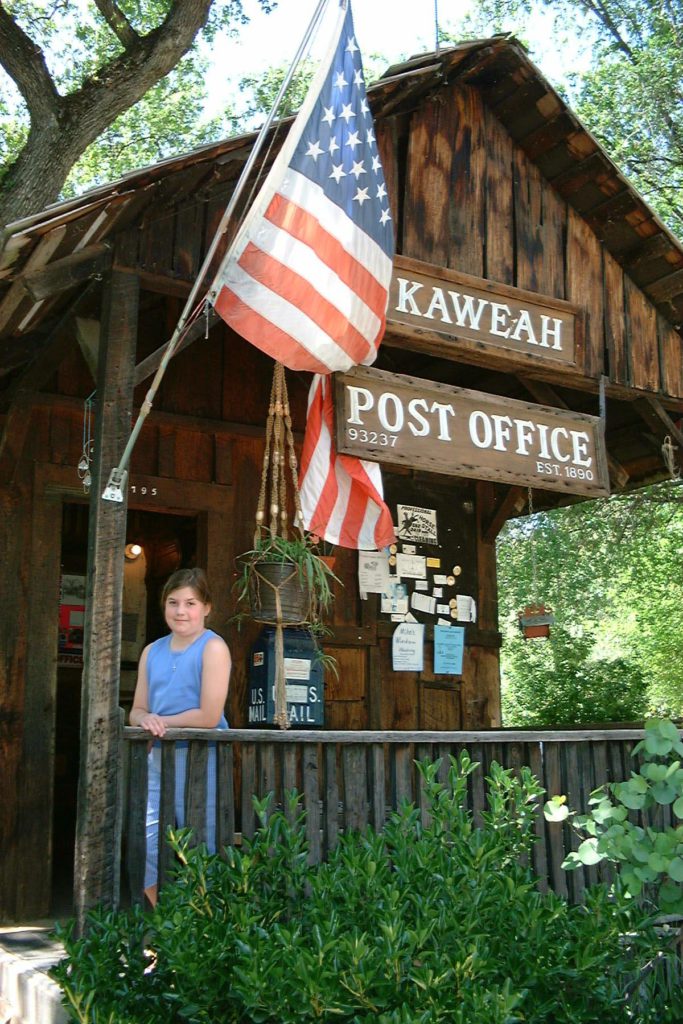
Continuing up North Fork Drive, we passed Trailer Isle for the moment and drove to the Kaweah Post Office. It, of course, was unchanged, since it’s an historical monument. I believe this is the smallest post office in the country. The public area is about the size of a phone booth! Danielle petted a cat named Lilly and sent a postcard to Linda while I took pictures.
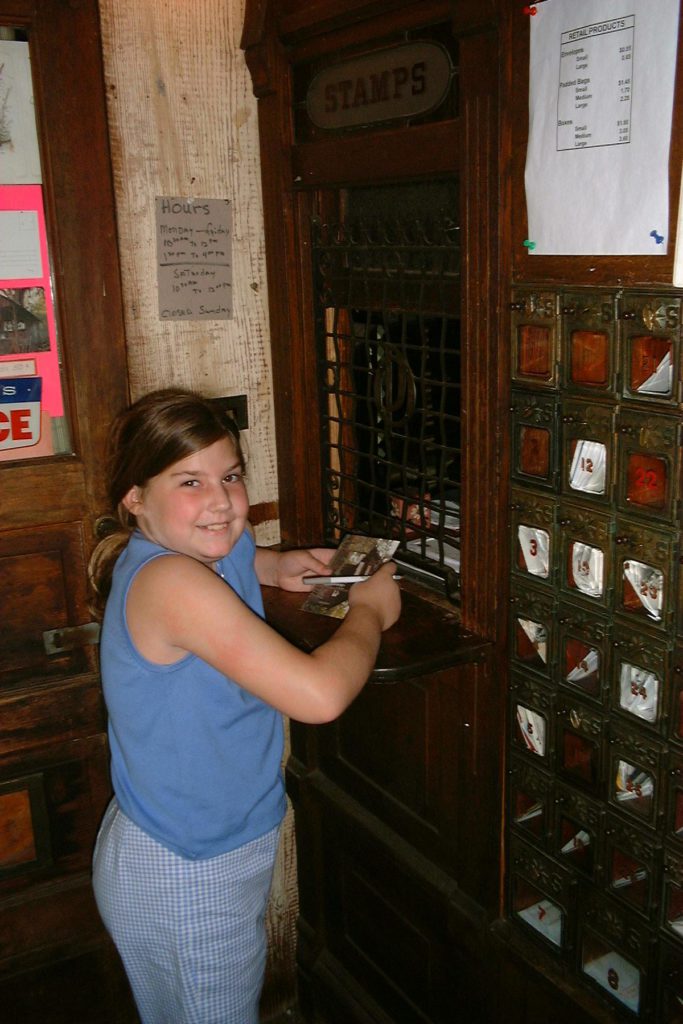
On up the road, we crossed the spot where the Bailey Bridge had been. A Bailey Bride is a kind of temporary military bridge. This one ended up being not so temporary. It was installed during the 1950s (I think) and lasted until the flood of 1966 washed it out. It was then replaced with the bridge that Mott would have lived under.

On up the road about a half-mile we photographed the spot where Karp’s trailer might have been, turned back and stopped at Mott’s bridge to take photos.
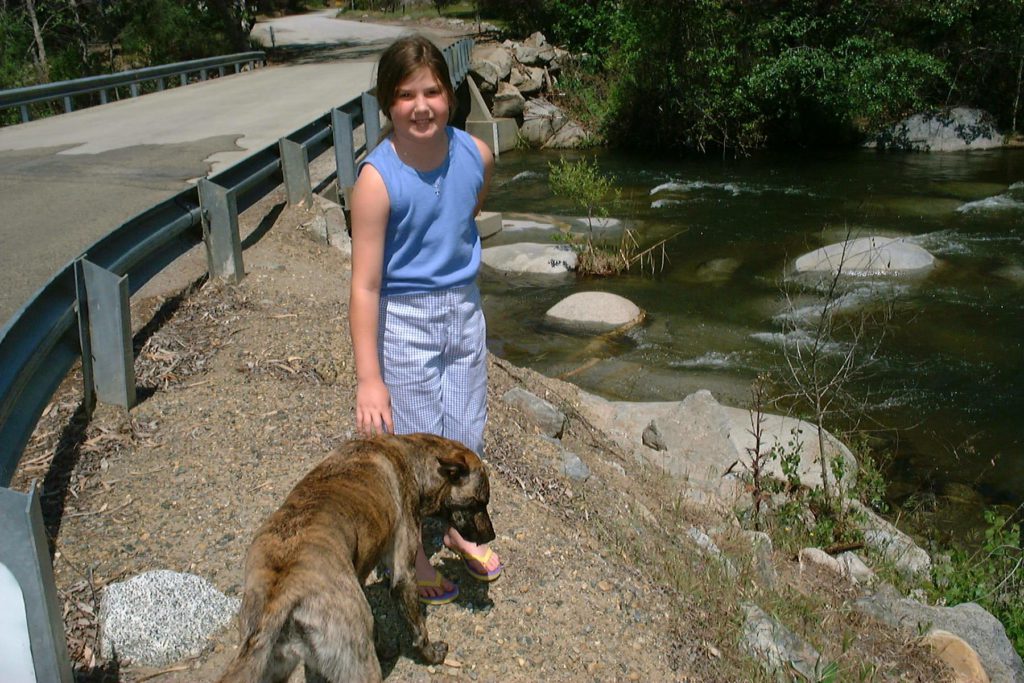
Then the strangest thing happened. As I was photographing Danielle in front of the bridge, a dog walked into the frame. He was very friendly (even if he did look like a hyena). He took an immediate liking to us, and wanted to get into the car. This is really weird, because the plot of “A Matter of Justice” centers on Danielle’s adoption of a stray dog. Eventually, after considerable wheedling, we said goodbye to the dog, who Danielle had named Blackie, and headed back to Trailer Isle.
There we met Julie and Kevin Pierce, the managers. In gratitude for letting us look around, I gave them an autographed copy of the manuscript.
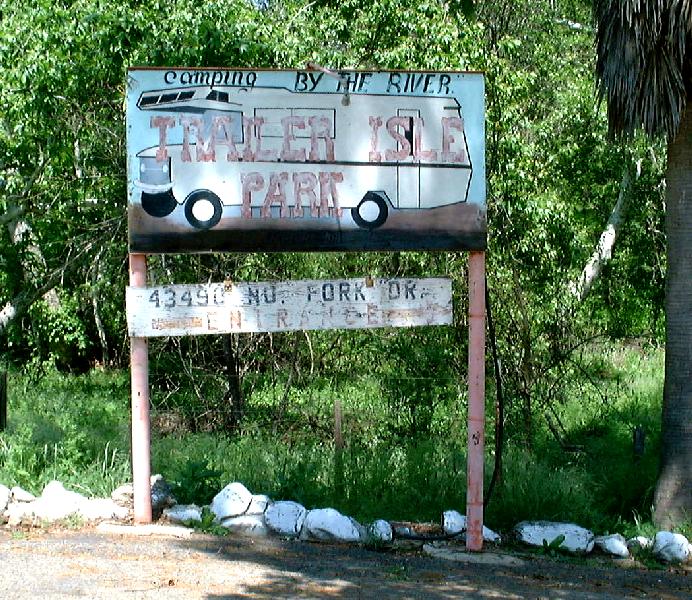
Trailer Isle is amazingly unchanged since the 1960s – even the sign hasn’t been painted. The permanent resident’s loop has had a few more mobile homes squeezed in, and there are cattle in the pasture, but all else remains the same. I was able to recognize several trailers, including the one that we briefly owned in space 10, and the one across the street that belonged to Kay Gregory.
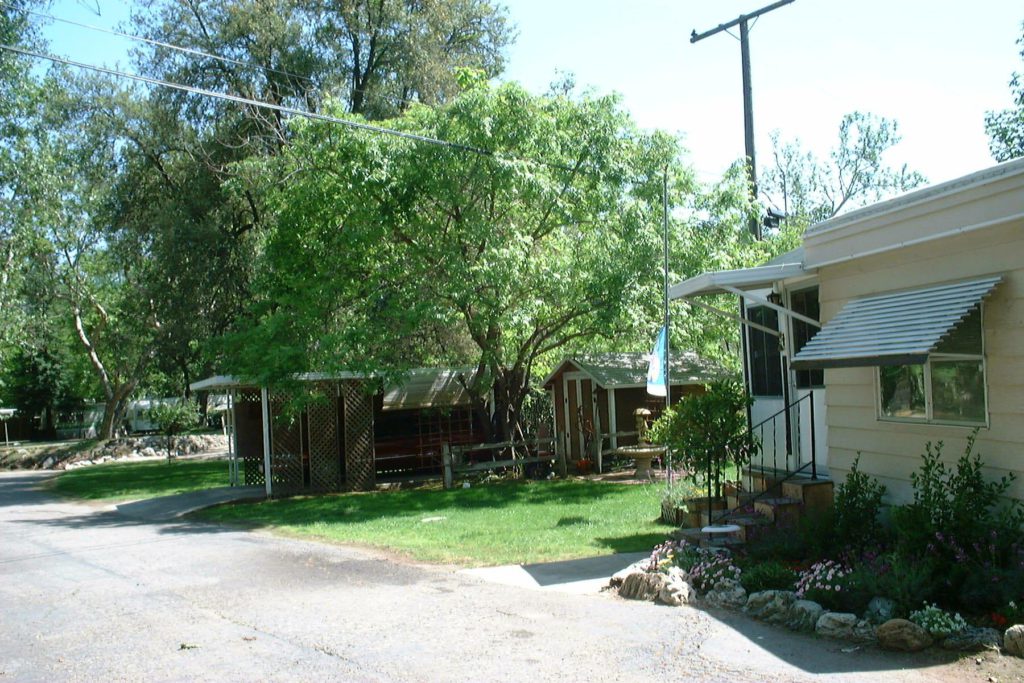
Our longtime location at number 17 (Danielle Deucer’s in the book) was now occupied by a mobile home, and a concrete parking pad had been poured across the middle of the lawn.
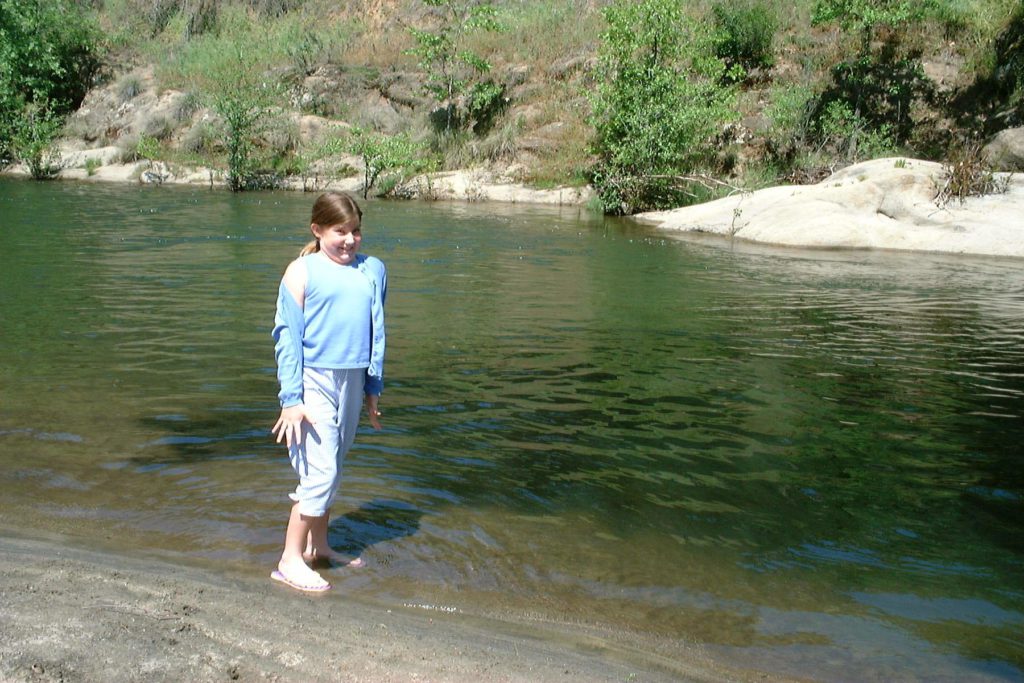
The swimming hole was pretty much the same, although it looked like a few floods had cleared it out. The water was running high. Danielle spent a while prospecting for iron pyrite grains. She also found an abandoned Matchbox car buried in the sand. It looked a lot like the ones I used to play with, but that would be just too weird. Finally we headed back to town to find the new library.
The library is now behind the elementary school, on the east side of the road. As we passed the playing field, I recalled the Halloween fair in about 1966, when, wearing a blond wig and dressed as Ilya Kuryachin of the Man From Uncle, I went into a fortune-teller’s tent, was mistaken for a girl, and told that someday I would meet a tall, dark handsome stranger! I’m still waiting.
The new library is somewhat larger and much nicer than the old one. It also has two computers, a feature I’m sure I don’t remember from 1968! They no longer have the copy of Huckleberry Finn that I read those many summers ago, but they did have a 1960 printing of To Kill A Mockingbird. It appeared to be in mint condition. If Danielle Deucer read it, she was the only one – it was in mint condition. Consistent with my novel, there were plenty of old Nancy Drews on the shelf.
The new librarian, Rita Pena, has held the position for sixteen years. She tried to find a photo of Esther Peck for me, but couldn’t turn one up. She said that she’d get one from Esther’s daughter and mail it to me. I told her that I’d send her a copy of the manuscript.
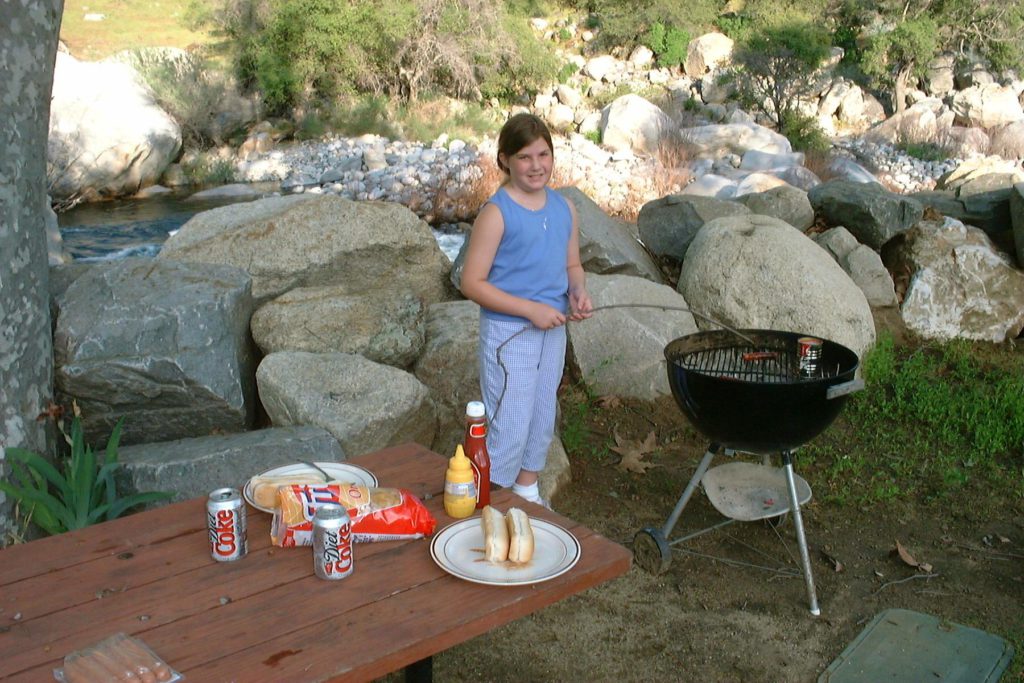
Now it was time to head up to the National Park boundary and check-in. The Buckeye Tree Lodge turned out to be quite nice – two concrete-block buildings right along the river beyond the Pumpkin Hollow Bridge. It’s actually the last structure before you reach Sequoia National Park. We had the only unit with a kitchenette. This fact and the barbecue out on the lawn got Danielle thinking about cooking dinner. Since the White Horse Saloon, although in perfect repair, is permanently closed, she talked me into it. After some rock hopping on the river, we headed back into town to buy hotdogs and other supplies at the Three Rivers Market. After a cookout and more rock hopping along the river, be made it a fairly early night.
Tomorrow we’ll head up into Sequoia National Park.
Tuesday, April 25, 2000
I arose while it was still dark, being somewhat still on East Coast time, and worked on this journal for a couple of hours. Later, Danielle joined me to write hers. I was impressed with the way she distilled the previous day down into the same highlights on which I have focused.

As the sun rose we went out to the river and took a panoramic shot of all 360 degrees, with Danielle in each picture.
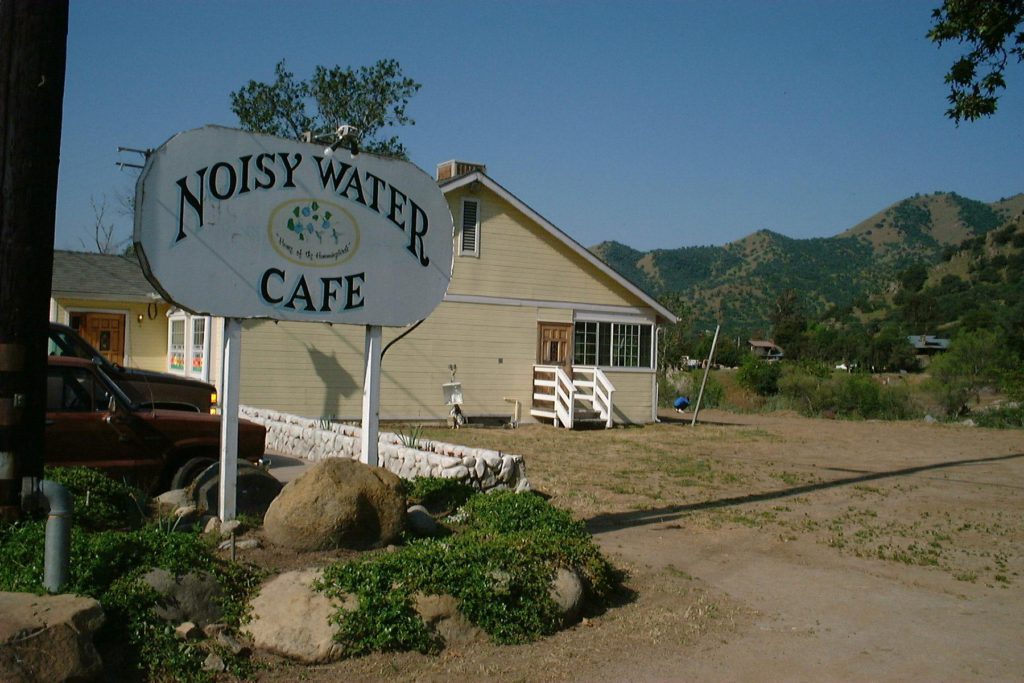
With the car packed, we headed down into Three Rivers for breakfast at the Noisy Water Café. I vaguely remembered the place. The waitress told us that it had been there since the 1930s, and that it was named the same in 1968. It’s impressive that it could have survived so long, because right outside are the pilings of the North Fork Bridge that was built in 1938 and washed out in the flood of 1955.
(The other place we used to eat breakfast was the Buckaroo Inn, down by
Metz’s, but I saw nothing that I recognized when we passed by yesterday.)
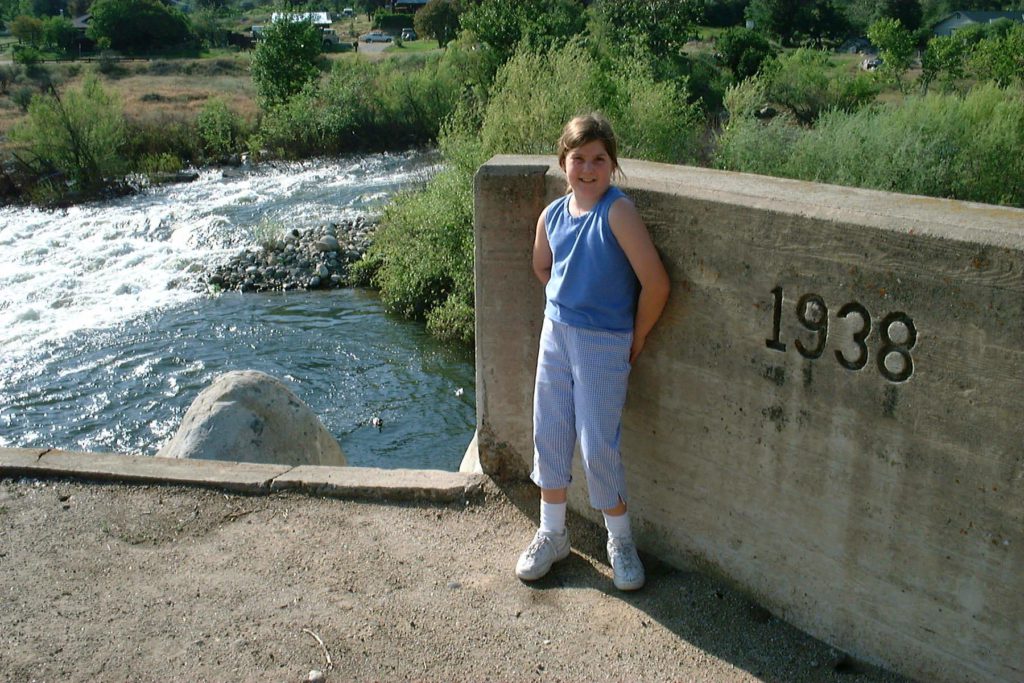
After a huge and delicious breakfast of eggs, omelets, pancakes, toast, bacon, hash browns, milk and coffee (well, I said it was huge) we headed back towards the park entrance. Unfortunately we forgot that we were going to get gas at the Chevron Station next to the Noisy Water Café. We remembered when we saw the park entrance sign that said there was no gas in the national park. So, after another round trip into town, we finally made it to the entrance gate.
The ranger advised us that the road was only open for a few minutes at the top of each hour, due to several miles of construction just inside the park. So we spent a pleasant half hour at the visitor center, looking at dangerous things in little glass jars. Another ranger in the visitor center sold us a workbook for kids that included puzzles, word searches, writing assignments and quizzes. By filling it out and picking up a load of litter, Danielle learned that she could earn a “Raven” award, which consisted of a patch to sew on a shirtsleeve. This was a great idea, as it gave her something to do while we waited for the road to open.
The road really is under construction. There’s only one lane for several miles, as they build retaining walls to hold up a new outer lane. I couldn’t tell if this was due to flood damage or just an improvement project.
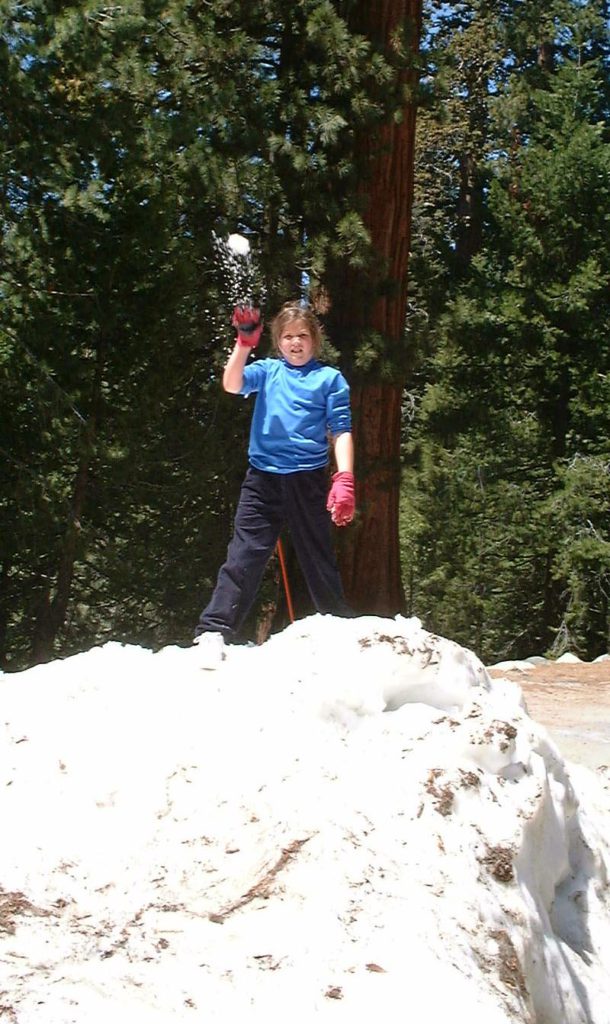
When we reached Giant Forest, Danielle was delighted by the enormous trees, and even more delighted by the snow that was lying in big patches by the road. At Morro Rock we climbed the first 5% of the way (just far enough to take a picture), then went back to the parking lot – Danielle lured by the snow, I dissuaded by the number of air molecules at 7000 feet!

Next stop was the General Sherman Tree, the largest living thing on the planet. We took two more panoramas at General Sherman, then had a snowball fight next to the parking lot.

Onward to Lodgepole, where we had a pretty good lunch at the snack room. Danielle finished her workbook, and we went to the visitor center to claim her patch. A nice ranger checked her work, and then made an announcement of the award over the PA system!
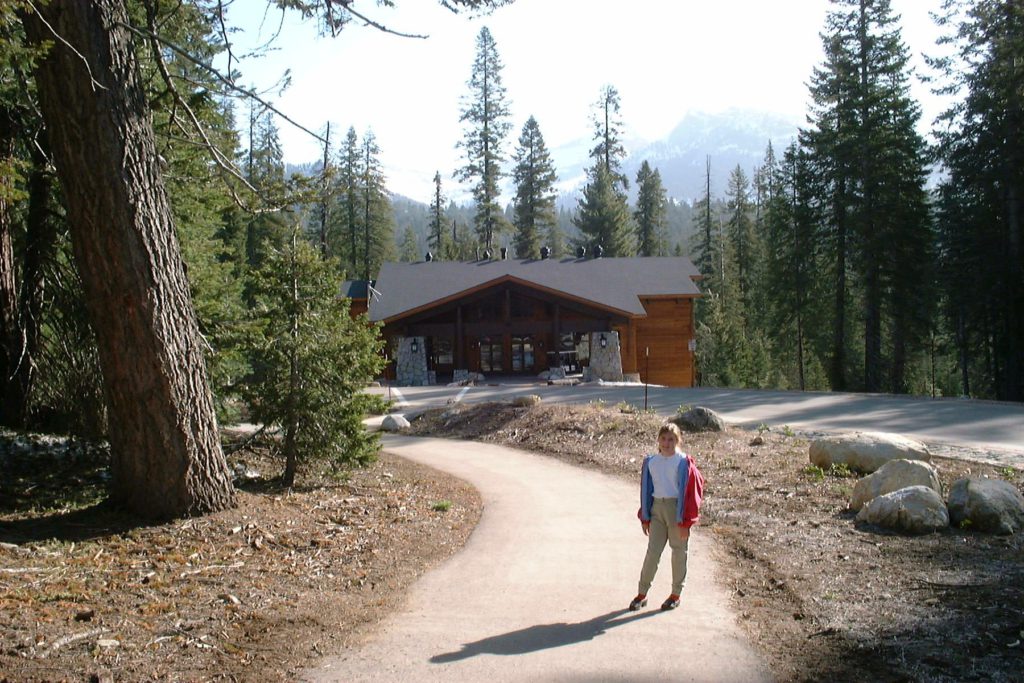
Another two miles brought us to the brand new Wuksachi Lodge, a beautiful complex atop a 7000-foot ridge overlooking the Sierras. Our room, number 127, was lovely. For $95 a night we got a bedroom and a sitting room, snow right outside, and a spectacular view. Dinner was in a dining room reminiscent of the historic park lodges. The food – Caesar salad, grilled salmon with an orange sauce, and asparagus – was top notch, but the atmosphere is casual. We’ll have to bring the Wedi here some time. We ordered box lunches for Wednesday, which we’ll pick up at breakfast time.
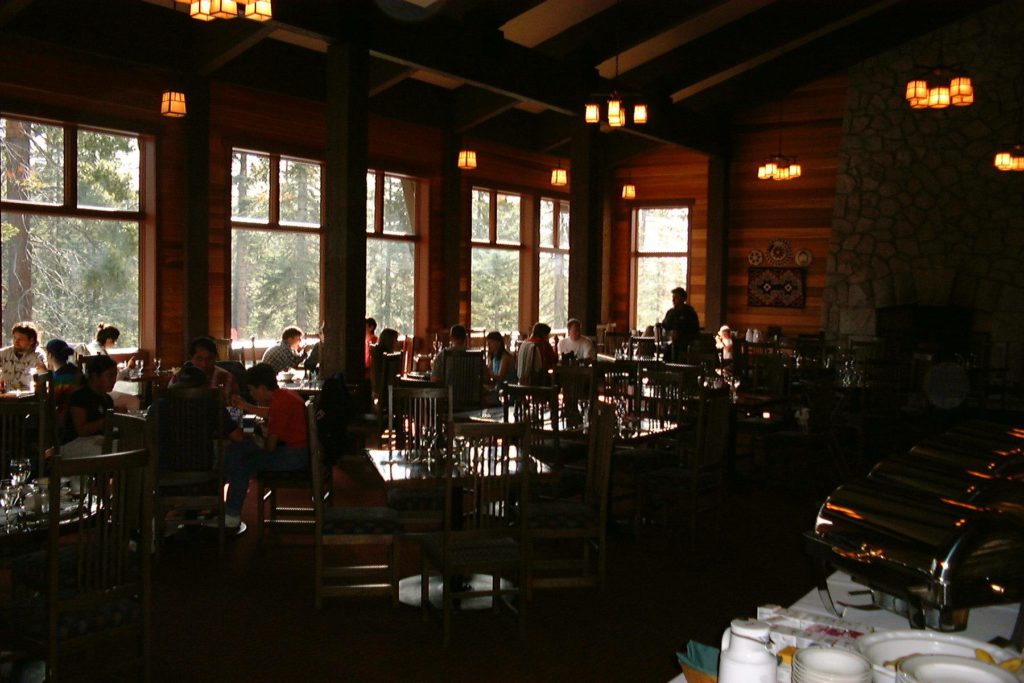
Wednesday, April 26, 2000
After some early snow play we had a nice breakfast in the Wuksachi dining room, picked up the boxed lunches and checked out, heading for Grant Grove.
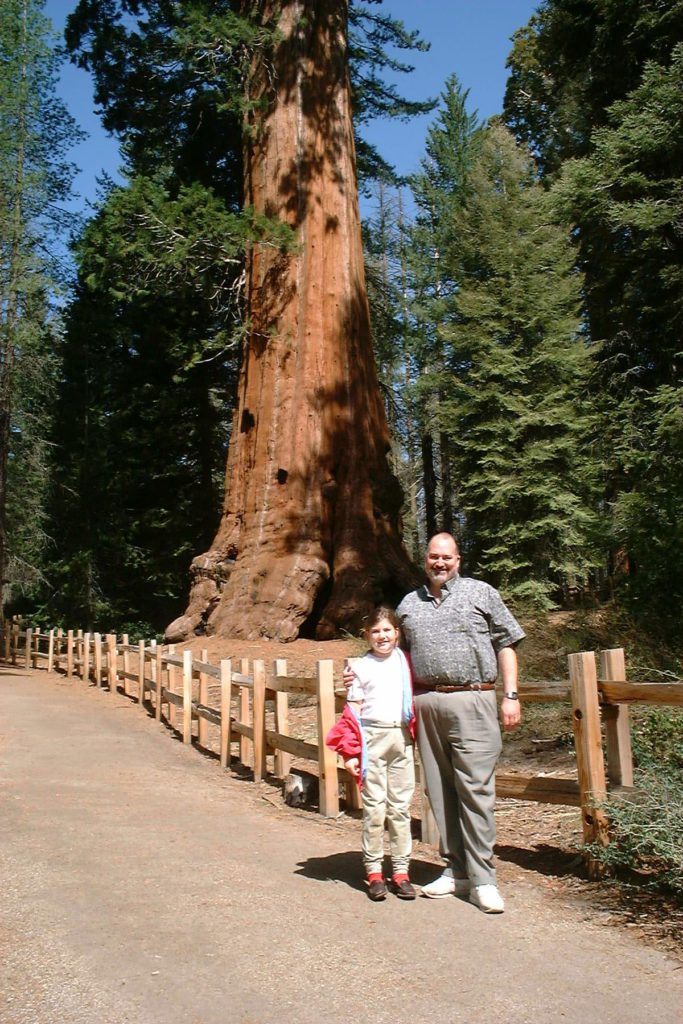
One of the big trees in this grove was named after then General (later President) Grant in 1865. In the 1890s, these sequoias were preserved by the creation of U. S. Grant National Park, later incorporated into Sequoia and Kings Canyon National Parks. (They were also preserved by the fact that their wood is really weak and brittle, making it next to useless for exploitation.) There is an excellent trail here that passes a lot of nice trees, and goes through a fallen log that was used as an army camp in the late 1800s.
I suppose in the interest of bipartisanship, there is also a General Robert E. Lee tree. (The subtlety of the naming of these trees was lost on me when I was a youngster. General Lee is the southernmost in the grove; General Grant is to the north.)
Nearby is Grant Grove Village. In the gift shop I bought Danielle a large chunk of amethyst crystals as a surprise and then we walked over to the visitor center. This is the best of the three visitor centers in the park. The highlight is a circular room the size of a giant sequoia trunk. In the center is a clear dome holding a single tiny seed. That seed has the potential to expand to 3 trillion times its current size!
Before noon we headed out the Big Stump Entrance of the park, and wound our way down through Badger to Visalia, and from there back to Los Angeles, arriving by 4:00 PM for an early dinner with Linda and her parents at El
Cholo.
Danielle and I agreed that although brief, it was an excellent and memorable trip.
Thursday, April 27, 2000
After several days retracing the locale of A Matter of Justice, today was my day to visit the setting of Everything In Its Path, in preparation to start A Stranger From Afar. After dropping Danielle off to spend two days at her grandparents’, I headed for Ventura County.
My first stop was at the new Chumash Interpretive Center at Oakbrook Regional Park. This park consists of many acres of wilderness, plus exhibits of Chumash culture and history, and even some cave paintings. Out in front there is a sculpture of a small, life-size tomol, the Chumash boat that was made of wooden planks sewn together. Oddly, there were some fancy bas-relief carvings inside it, but they were far too representational be of Chumash origin. The tour of the cave wasn’t available, but I enjoyed the exhibits, and met the director, Frank Winai
Lemos. He kindly offered to check the manuscript for accuracy.
The center can’t be more than a mile from where I used to live in Westlake Village. It’s on the other side of the hill, in an area that was wilderness fifteen years ago, but is now almost solid housing developments except for the park. I saw a sign advertising affordable luxury houses starting at only the high $700,000’s!
Also at the center I picked up a very useful brochure listing Ventura County museums. Following this and a web page from the Ventura County Historical Society, I headed for Fillmore. Unfortunately, route 23 was blocked by a Caltrans truck mishap where it winds over the mountains. After about fifteen I grew impatient and retraced my way back to Thousand Oaks, then out to the coast and Ventura.
At the Ventura County Museum of History and Art I was able to purchase all of the Chumash books I’ve seen on the Internet plus others, and some excellent historical maps. The docent in the gift shop was an elderly woman named Betty who lived in Somis during the St. Francis Dam disaster and remembered it clearly. She also knew Charles F. Outland, of course, and has an autographed copy of Man-Made Disaster. She was amazed when I told her that it was worth several hundred dollars.
From Ventura I drove up 126 to Santa Paula, the home of the main character in the book. It hasn’t changed much since I was last there. I visited the California Oil Museum, originally run by Union Oil, but now operated by the city of Santa Paula. An interesting docent there, who worked for Union Oil for many years, directed me up the street to an antique shop/art gallery/used bookstore named Mr. Nichols. The oil museum is an interesting
one. I learned how the oil pumps literally pull the oil out of the ground. There was also a display of antique motorcycles on loan from the Chandler collection. I
saw some late 20’s models of both a chrome-and-green Harley Davidson and a red Indian that I might be able to use in the book.
At Mr. Nichols I met John (I assume John Nichols). He had assembled an exhibit on the St. Francis dam disaster at the oil museum some time ago, and still had most of it in his shop. He let me look through a hundred or more old photos of the disaster in Santa Paula. I was amused to learn that my pen pal, Dave Hogan, from Santa Clarita, the head of the L. A. Grimm Society, had been there just the week before. What a small world it is. John also agreed to read the manuscript. I purchased a few more Santa Paula references and an old bottle dug up under the train station, then headed back to Malibu Canyon to have dinner with Linda at the Saddle Peak Lodge.
Friday, April 28, 2000
Since Danielle was at her grandparents and Linda didn’t have early meetings, I slept in and then headed for Santa Barbara. On the way I stopped in Thousand Oaks to see if Harold’s House of Omelets was sill there. It was, and was as delicious as ever. Football-shaped, and filled with whatever you want, they’re one of a kind. I had the special – bacon, green chilies, and sour cream. The same woman, albeit 15 years grayer, is still waitressing there. And she still doesn’t have any personality. I think she’s Harold’s daughter.
The drive to Santa Barbara was quick, and by noon the low clouds were beginning to clear off. My first stop was at the Santa Barbara Museum of Natural History. This is a very nice, though not large, building located immediately behind the Santa Barbara Mission, on the hills above town. A 72-foot-long blue whale skeleton was being restored out front. Inside there were many interesting exhibits, including taxidermy and dioramas from 1927 that were very well done. I need to find out if they were in the same building in 1927 (I doubt it).
There was also a lot of information on the Channel Islands, and an entire room of Chumash exhibits, my main reason for going. I bought quite a few
good books in the bookstore.
Driving down into the town, I stopped at the Santa Barbara Museum of History. It’s located in an old (and large) Spanish adobe. Unfortunately almost all of the exhibits dealt with the Spanish occupation – nothing before or after. There were also some truly hideous surrealist paintings of the missions, done by a friar. I did find some more interesting books in the shop, including a young adult fiction that is about a sailor from Cabrillo’s fleet who is reported as killed but actually joins the Chumash.
At first this seemed dangerously close to the plot of my next novel, A Stranger From Afar, but it’s pretty thin and
proved to be quite lousy.
I drove back on 126, stopping at the museum in Fillmore (which was still closed) and following the path of the 1928 flood. The valley widens and narrows several times, which must have greatly affected water level and speed. It’s amazingly far, considering how much damage occurred downstream.
In town I joined up with Linda and we met Danielle and her grandparents for a garlic bread gorge at The Smoke House.
Tomorrow we head back to Orlando. Linda has a non-stop, but Danielle and I go through Salt Lake City, arriving late. Fortunately we have Sunday to get back on schedule. This has been an excellent trip for everyone, with many different agendas: work for Linda, grandparent time for Danielle, and research plus a visit to childhood haunts for me.
© Steve Alcorn
April 2000
The New Millennium in Williamsburg, January 1, 2000
Death Valley, Legoland California 1999
Danielle and I traveled to California in June, 1999 for a two week vacation. Linda, unfortunately, was too busy on projects at Epcot to accompany us. We began our trip with a visit to Linda’s parents in Los Angeles, and saw Knott’s Berry Farm and the Getty Museum. Then it was on to Death Valley for a really interesting few days of 114 degree weather (honest, it’s not the heat, it’s the humidity!) Next we spent a night in Las Vegas and caught the Star Trek Experience, where we have equipment installed (Danielle hated it, but it was really cool). Finally, we drove to Carlsbad (Danielle was a great traveler for the whole 7 hours across the Mojave Desert) and visited the San Diego Wild Animal Park, San Diego Zoo, and Legoland. It was a great trip.
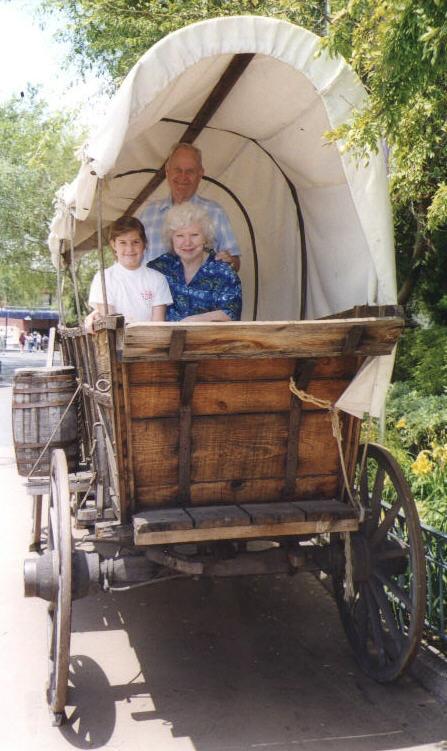
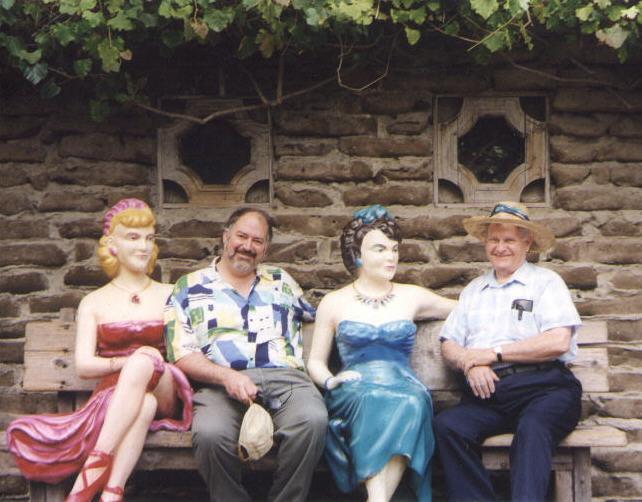
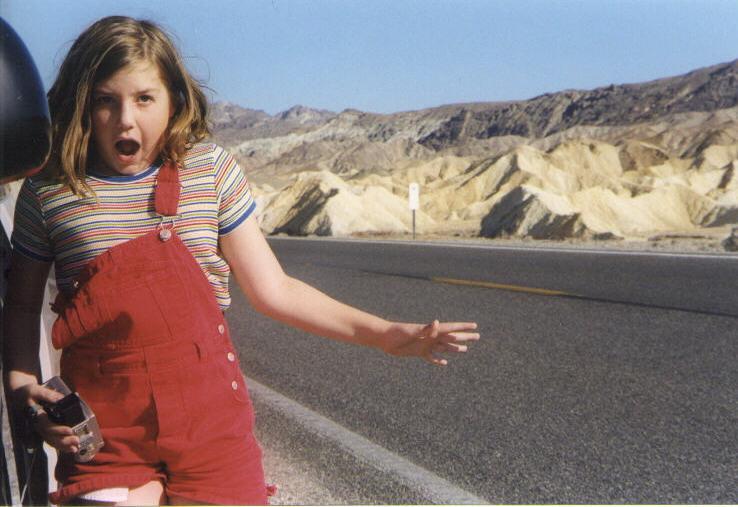
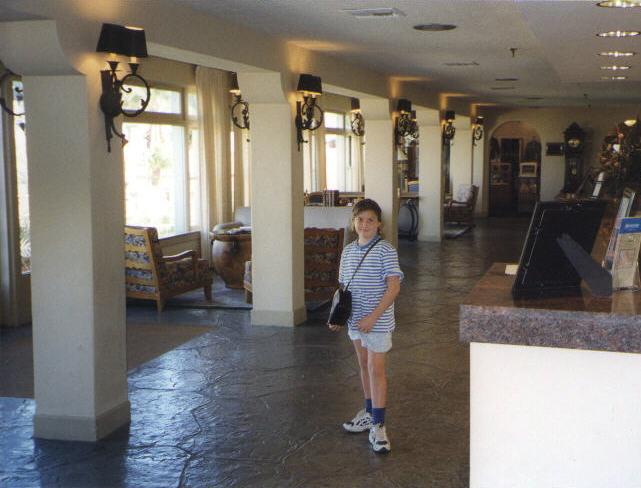
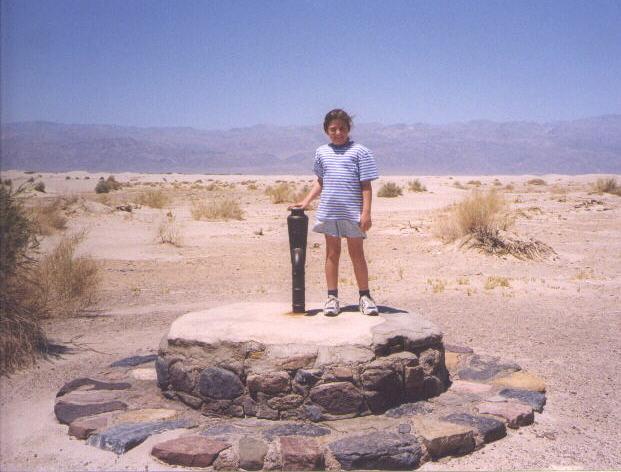
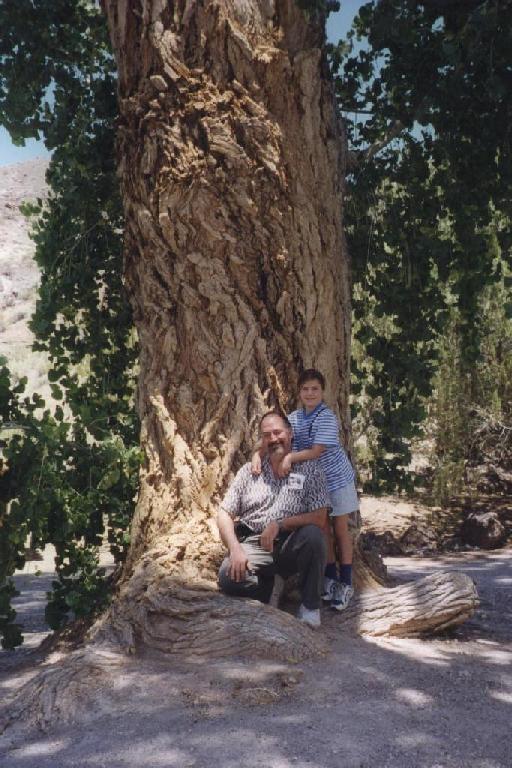
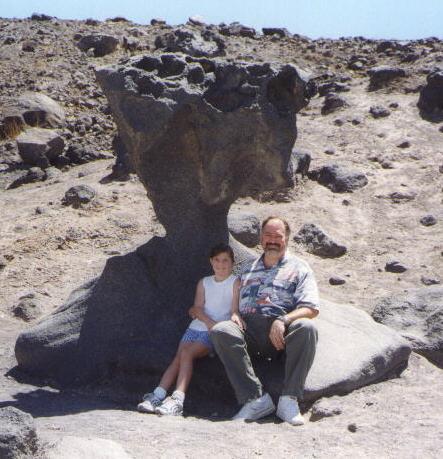
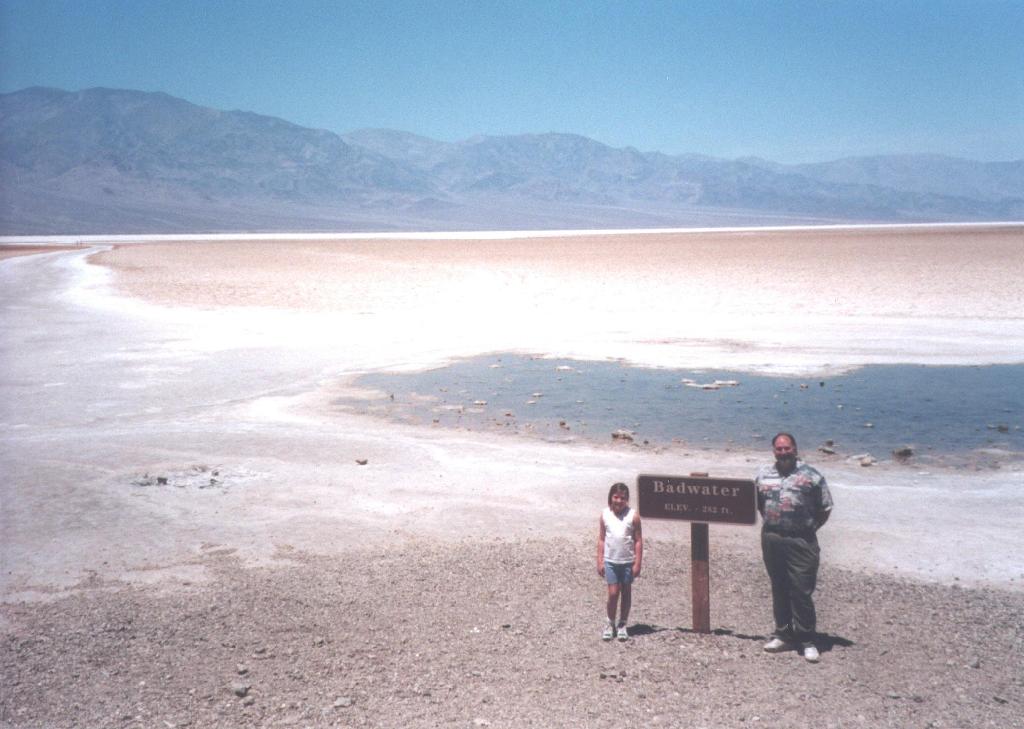
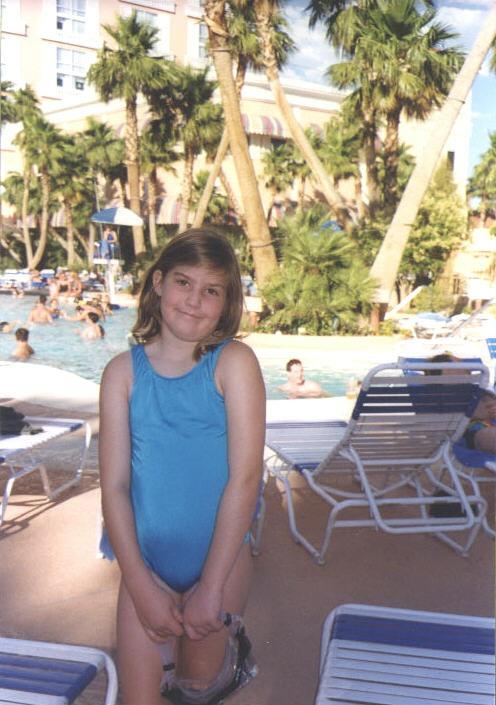
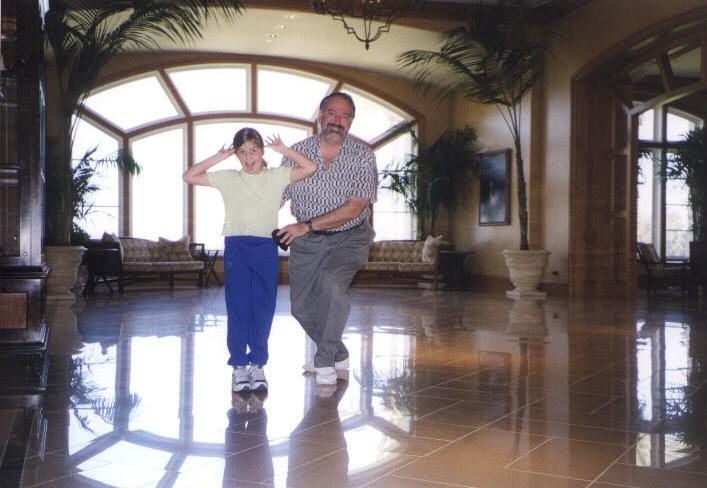
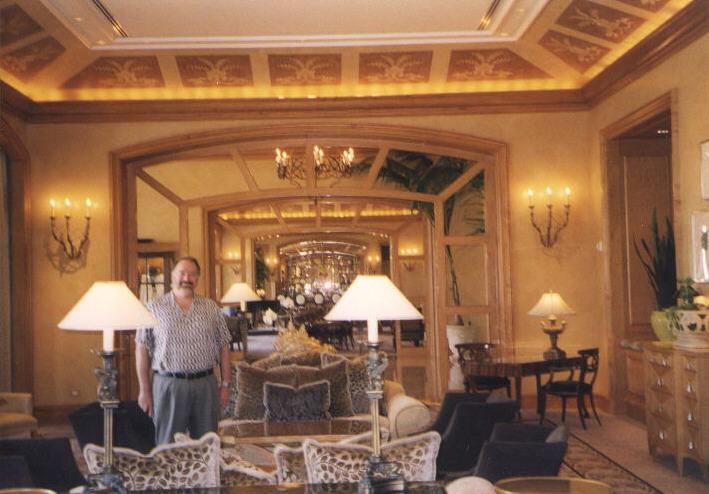

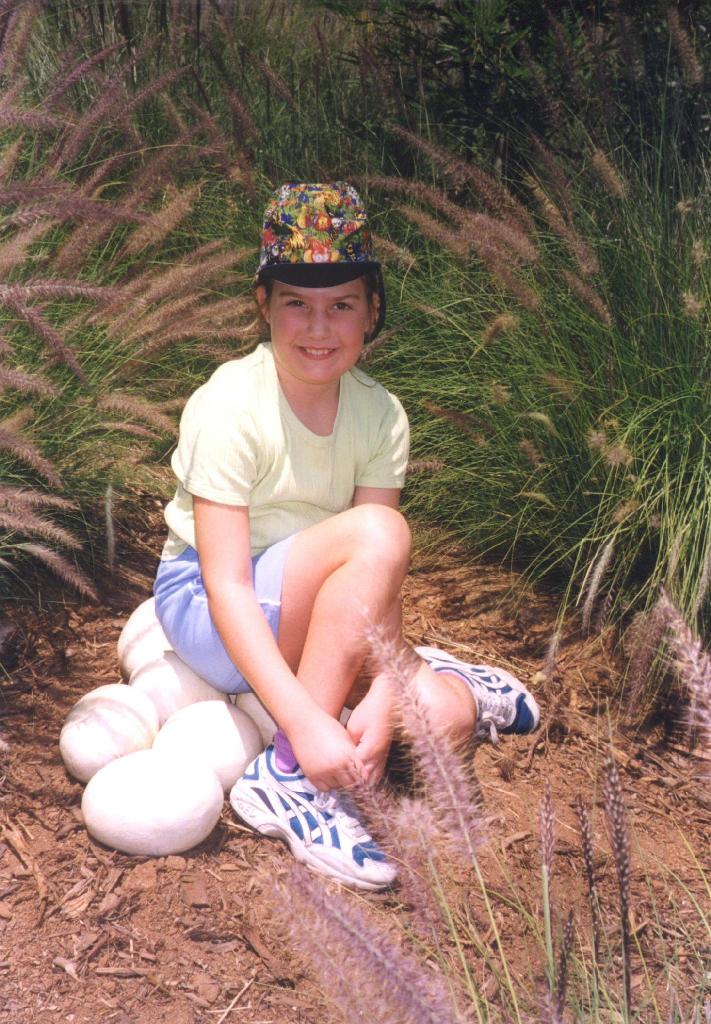
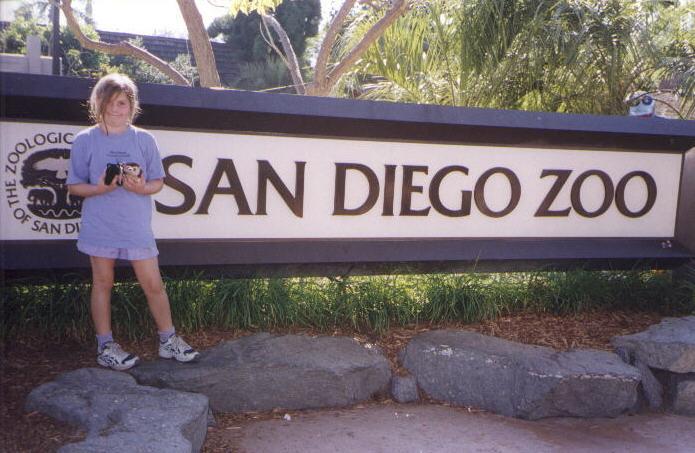
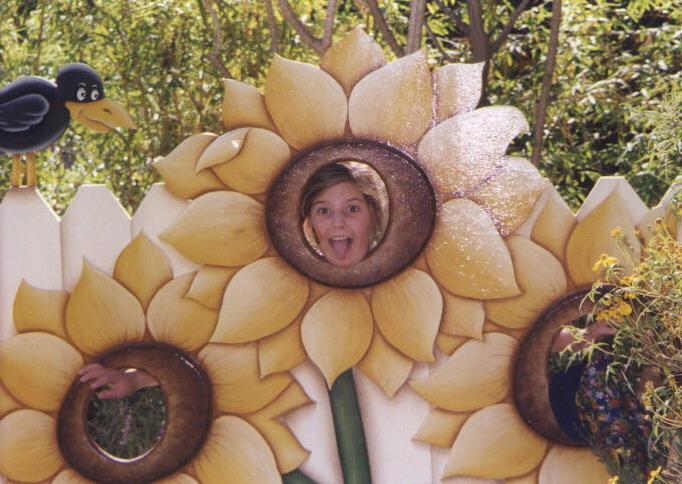
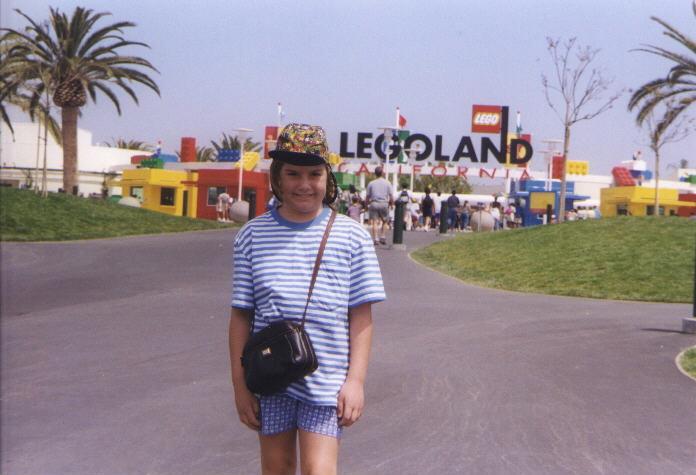
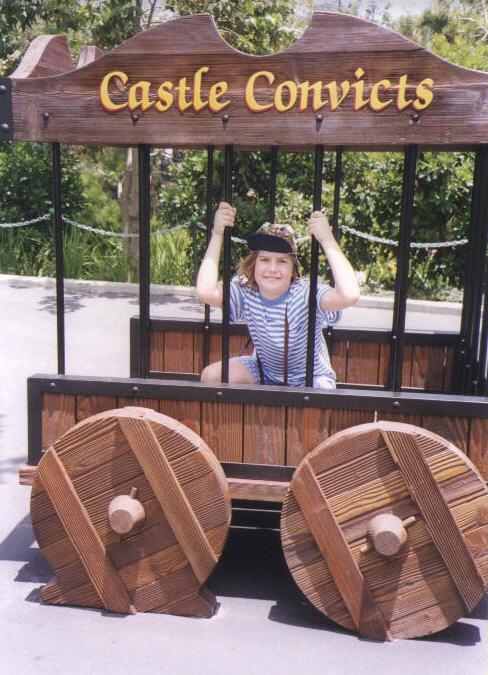

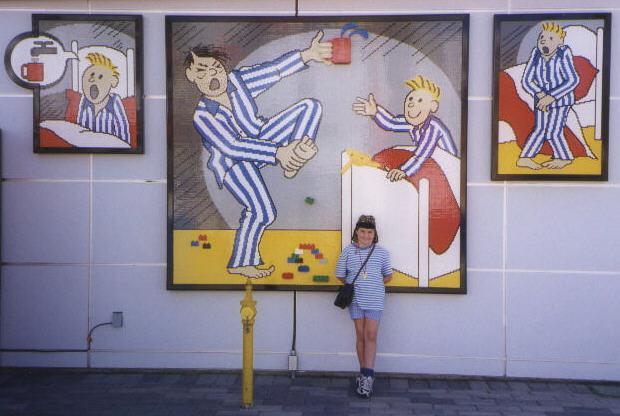
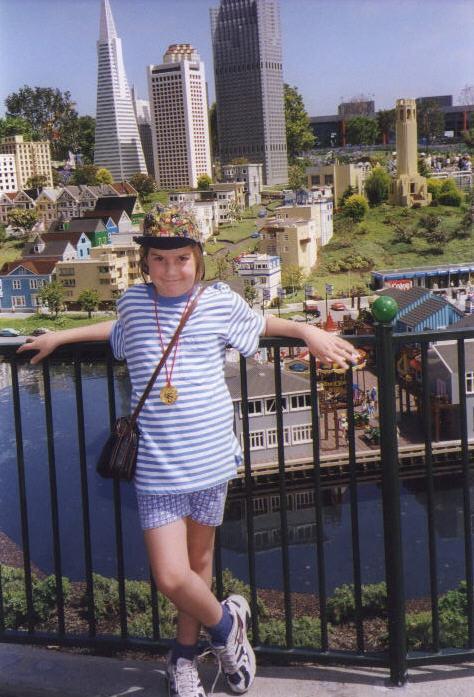
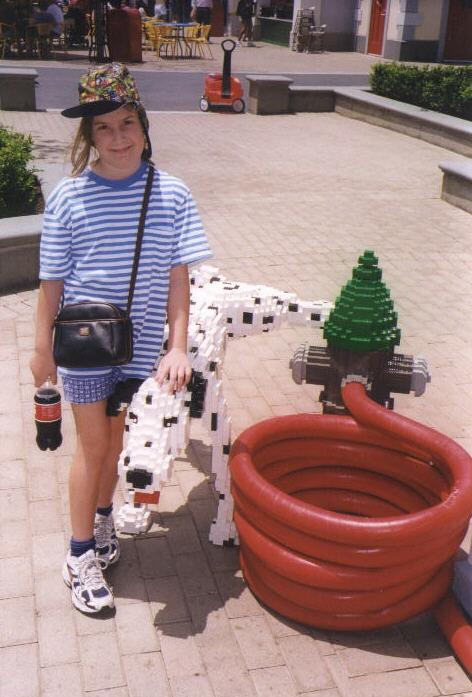
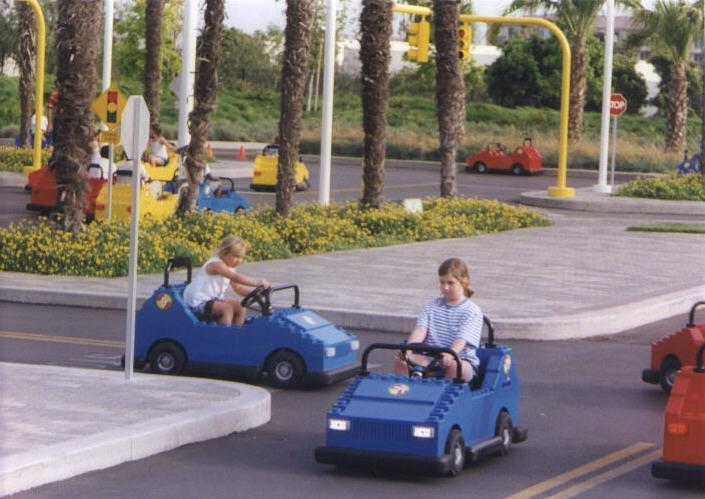
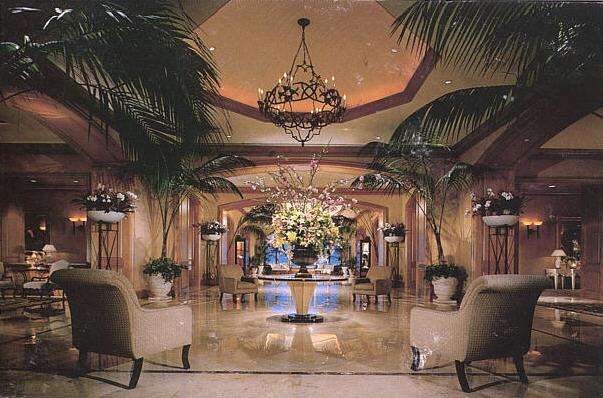
Los Angeles, San Francisco 1998
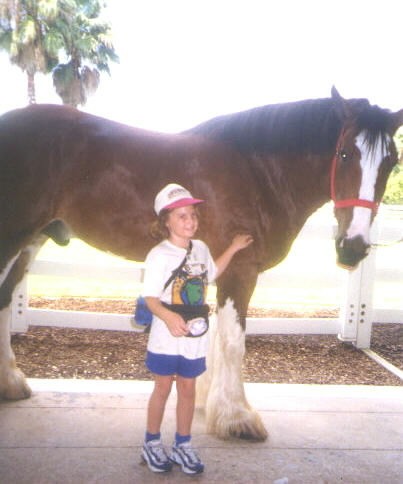
Our summer 1998 vacation trip was great. We picked Danielle up at SeaWorld camp on Friday afternoon, August 7th, and headed to the airport to catch a Delta non-stop to Los Angeles. The lease ran out on Linda’s car last month. She has her heart set on a Corvette, but the color she wants isn’t available right now, a situation worsened by the recent GM strike. So she’s been renting a car for the past few weeks. It seemed strange to drive to the airport and have no car to park, but it sure was convenient to be able to simply abandon it in the rental car lot like we do when we’re traveling.
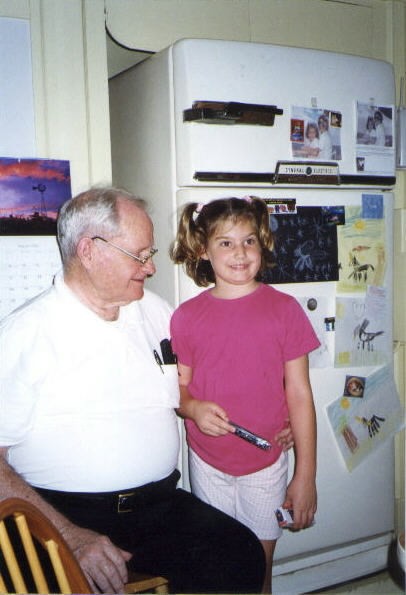
The flight was uneventful. Since I earn Delta SkyMiles on American Express card purchases made on my own and the company’s Amex cards, we’re usually able to get free first class tickets for vacations. First class makes traveling with a busy seven-year-old a lot easier. That coupled with plenty to do — a couple of game CD’s on the laptop, an activity book, and some plastic-tasting food — made the flight go pretty quickly. There are usually a lot of Disney people in first class on the Orlando-Los Angeles non-stop, and this flight was no exception, so we had a chance to visit with a few people we don’t see all that often.
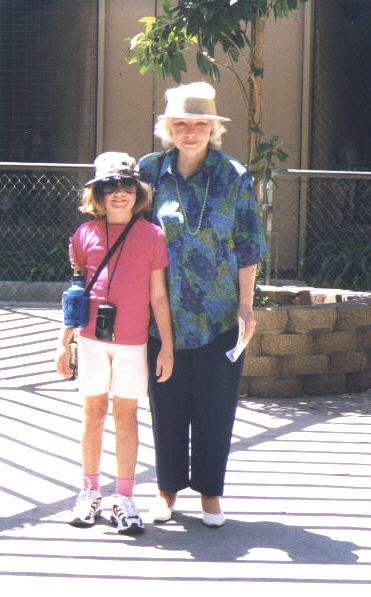
When we arrived we rented a car and drove to Linda’s parents’ house. On the way I swung past the house I grew up in and lived in until I got married at 22. The neighborhood seemed a bit more run-down than I recall, with a fair amount of peeling paint and uncut grass, but I suppose it’s holding up better than most of Los Angeles. I drove past the site of the Baldwin Hills Dam, which was only a few hundred yards from our house, but there was little sign of where it had been.
Linda’s parents live in a two-story, semi-Victorian house that was built near downtown Los Angeles in 1903. The house features hand-painted ceiling murals and elaborate oak paneling. Originally lit by gas lamps, it was refitted for electricity in the 1920’s. Saturday we spent a quiet day at home, letting Danielle play with her grandparents.

One of the advantages of an old house is the attic. With an accumulation of seventy years of “stuff”, there’s always something interesting. On this trip I dredged up some old photos for scanning and some interesting old jewelry and books. Linda found a toy crane from her childhood, a recreation of the arcade-type candy or stuffed toy cranes. It has two levers that manipulate the arm and jaws, and a chute into which objects may be dropped in order to get them out of the enclosed plastic cover. After a little WD-40 Danielle had a great time manipulating the levers to retrieve small “treasures” (crumpled paper) and drop them down the chute. It beats losing fifty cents a shot.
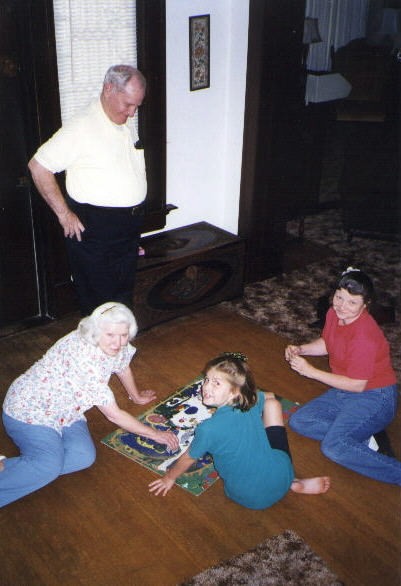
We also unearthed a model of Disneyland that Linda made for her sixth grade art fair, in an eerie presaging of her career as an Imagineer. It’s really quite good, and her parents are still annoyed that she took second place behind a girl who leaned her father’s stamp collection against a prefab castle. Talk about holding a grudge. . .

For dinner we went to El Cholo, a 70-year-old Mexican restaurant just a block away from their house. We’ve been going to El Cholo all our lives, originally for their unique style of Mexican cooking, then later for the country’s best frozen Margaritas. The restaurant began as a small house on Western Avenue, then gradually expanded over the years, until today it occupies almost half the block.
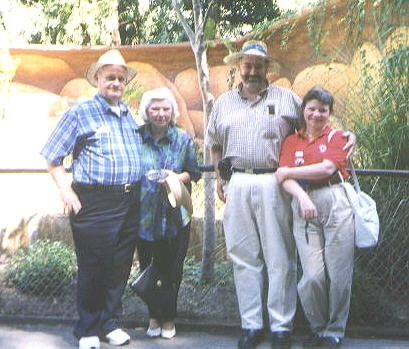
Sunday afternoon we headed for the Los Angeles Zoo. Orlando doesn’t have much of a zoo. While Los Angeles’s Zoo has always stood in the shadow of the San Diego Zoo, it’s pretty nice. Located on a hilly corner of Griffith Park, a wilderness area that is the largest municipal park in the country, the zoo offers thousands of animals in very natural settings, with no obvious bars or cages.
When Linda and I lived in Los Angeles we were members of GLAZA, the Greater Los Angeles Zoo Association. During the 1980s we watched the zoo grow and improve its exhibits year by year. Since then there have been animal care problems, management scandals, and funding shortfalls, and now the zoo population seems somewhat sparse.
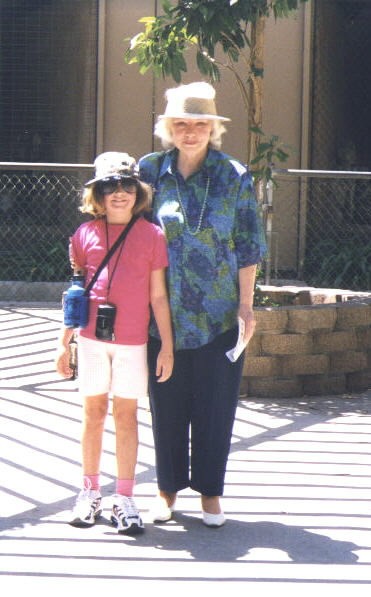
We saw lions, giraffes, rhinos, antelope, ibex, lynx, wolverines, koalas, seals, polar bears, gorillas, flamingoes, lemurs, marmots, kangaroos, wallabies, foxes, wolves and many more. We enjoyed the otter exhibit the most. Two otters in a large area filled with pools, streams, logs, slides, tubes and other playthings spells fun. The two were in constant motion. We watched them play tag for about half an hour. They have quite a sense of humor. The leader would dive into the top end of an inclined tube and slide through, while the chaser jumped in the water and waited to surprise him at the bottom.
After the zoo we drove up to Burbank and had dinner at The Smoke House, a restaurant we’ve been going to for over thirty years. Their business is built primarily on the fact that they have the world’s best garlic bread — really more of a crumbly cheese / sour dough loaf. Mmmm.
Monday Linda and I headed out to Walt Disney Imagineering in Glendale. Linda went to visit co-workers in the department she belonged to before she established the Florida presence of WDI Electronic Engineering. I went to make a presentation about our new products to the Audio/Video department. There were about a dozen engineers in the meeting, and our products were very well received. Most of these people are old friends. Since my company makes many of the A/V systems used in new attractions, we have a special working relationship with them, and it’s always a pleasure to see them when I’m back in Los Angeles.
Tuesday we visited the Page Museum at the La Brea tar pits. Danielle enjoyed seeing the skeletons of giant sloths and saber-tooth tigers that were trapped in the tar. We also watched a film about dinosaurs, and why there aren’t any at the La Brea tar pits.
Wednesday morning, bright and early, we headed for San Francisco. We had to pay for this flight, and since it’s only 40 minutes, we flew coach! We rented a car from Dollar, and were pleased to be offered a convertible at the mid-size rate. So top down, bundled up against the fog, we headed for Cliff House and the Sutro Baths.
The Sutro Baths were built at the base of the cliffs overlooking Seal Rocks, in the late 1800’s. The original bathhouse was an enormous structure, nearly spanning the coastal outlet of the rocky canyon. A great, curved roof several stories high protected the bathers from the chill sea air, completely enclosing the football-field-sized pool, steam baths and changing rooms. The structure burned in the early 1960’s. All that remains today are the concrete walls of its foundation, and the caves cut into the jagged cliffs.
Danielle climbed about on the slippery walls under Linda’s fearful gaze, then we all climbed the path to the Cliff House. This is the third structure to use that name. The first two were large hotels perched above the baths. One burned in the early 1900’s after only a few years of service, the second lasted somewhat longer. Today the Cliff House is a restaurant serving well-prepared California cuisine, with a wine list honored by the Wine Spectator Award of Excellence.
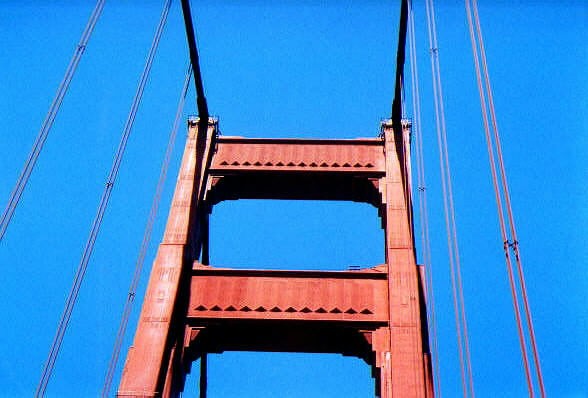
After a delicious lunch we headed north, through Golden Gate Park and across the Golden Gate Bridge. With the convertible top down the bridge was most impressive, rising some 500 feet above the cold waters of San Francisco Bay. Danielle took a photo looking straight up as we passed under one of the massive arched supports. A mile away from the bay the fog lifted, and we found ourselves surrounded by eucalyptus, oak, cypress, and a few pines.
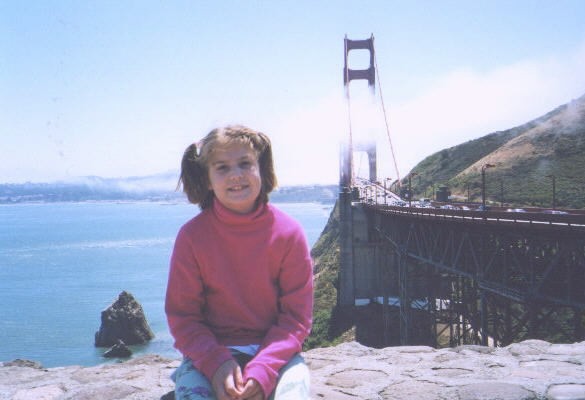
After a quick stop for sunscreen, we drove up the winding coast on Highway 1, enjoying the contrast to the flatness of Florida. Rocky cliffs plunged to the Pacific as we took in the sights and smells along the way. We skirted a large, freshwater bay at Stimson Beach and headed inland. Near Point Reyes the road wound through thick stands of eucalyptus that provided a deeply shaded canopy. After a stop at the Pt. Reyes National Recreation Area Visitor’s Center, we headed back.
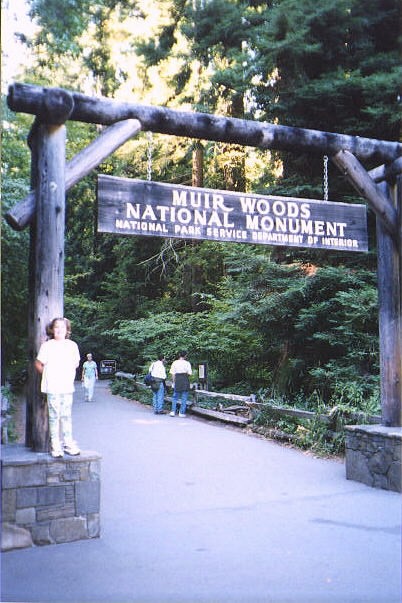
By now it was 4pm, but we couldn’t resist stopping at Muir Woods, a pristine Redwood forest. Walking on deeply shaded paths amid the giant trees, Danielle commented, “We’re not in Kansas anymore. “
Finally, we finished our first day in San Francisco by heading back across the Golden Gate Bridge and downtown, to The Mandarin Hotel, where Linda and I had stayed about ten years ago.
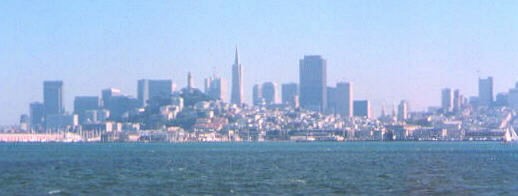
The hotel was as nice as ever, and we had the pleasant surprise of possibly the best room in the entire hotel, on the top (48th) floor, overlooking the Bay Bridge and Alcatraz.
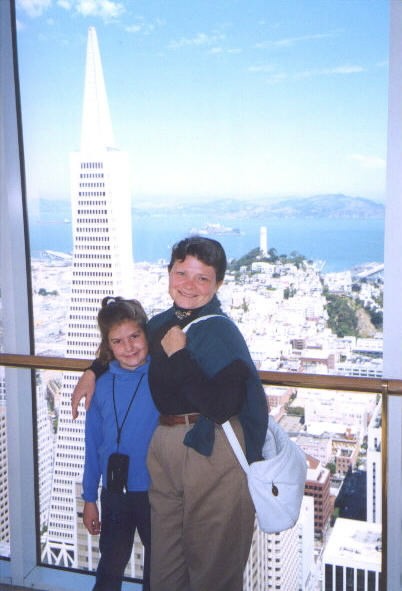
We dined at Silks, the hotel restaurant. The Sommelier, Reneé-Nicole Kubin, formerly of Charlie Trotter’s in Chicago, was a charming hostess, and the winelist was extremely well thought out. Unfortunately the food was not really at the same level, and the food service was truly disorganized. Still, it was a very pleasant end to a very busy day.
Thursday, after Danielle’s obligatory room service breakfast, we drove down to Fisherman’s Warf. I bought a cap to cover my head, which was slightly sunburned from our convertible exploits, despite liberal applications of sunscreen.
After a pleasant lunch at the end of Pier 39 we picked up the Alcatraz tickets we’d reserved prior to the trip, and caught the boat out to the island.
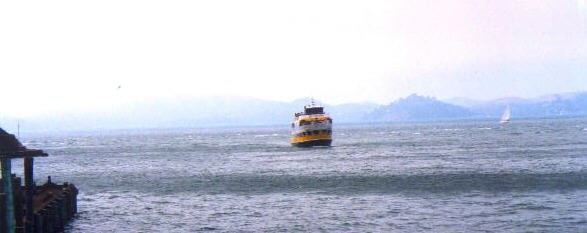
It was cool on the boat, but still the warmest I’d ever felt the air on San Francisco bay. The ten-minute boat ride provides a time to get in the proper mood to enjoy the lonely solitude of “The Rock”. It’s easy to imagine the hopelessness that the “incorrigibles” sent here for incarceration must have felt.
A new audio tour uses binaural sound, prisoner interviews, and dramatic reenactments to capture the experience of life in the cellblock. We all enjoyed it very much.

Thursday evening we dined in a Japanese restaurant at the Plaza Hotel. After dinner we sat in the lobby listening to the piano music, and pretended that it was one hundred years ago. Danielle had some interesting opinions on the advantages of gaslight over the newfangled electric lights the hotel had just installed.
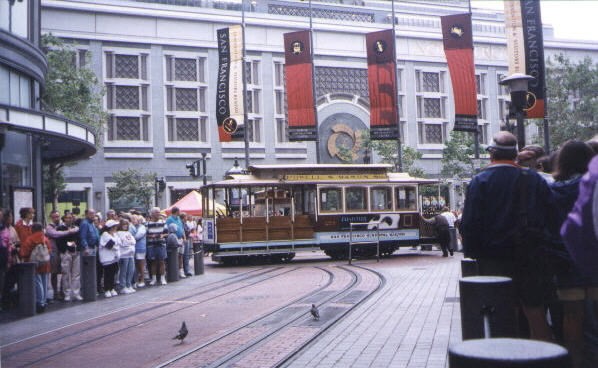
Friday we walked to Market and Powell, grabbing pastries for breakfast on the way, and stopping at the St. Francis Hotel, where Linda and I spent our honeymoon 20 years ago, to ride the glass elevators. After about an hour wait, we caught the cable car. Danielle enjoyed her precarious perch on the side of the car, right up front. She also photographed the mechanism that grabs the cable.

At the end of the line we got off and walked to Ghirardelli Square. After shopping and lunch we crossed to the Hyde Street Pier. A new Maritime Museum, operated by the National Park Service, takes up the whole pier. There, for the bargain price of four dollars, we practiced riveting, toured a ferry boat from the 1930’s (the longest wooden vessel still afloat), and explored the Balclutha, an 1880’s square rigger used in the grain trade of the newly blossoming San Francisco.
Afterwards we enjoyed the variety of odd musical instruments in a terrific music shop at the Cannery, then caught a cab back to the hotel. We had a quiet and pleasant dinner at the Hyatt, a block from the Mandarin. Both hotels are located in the financial district, which was already growing deserted for the weekend as Friday night drew to a close.
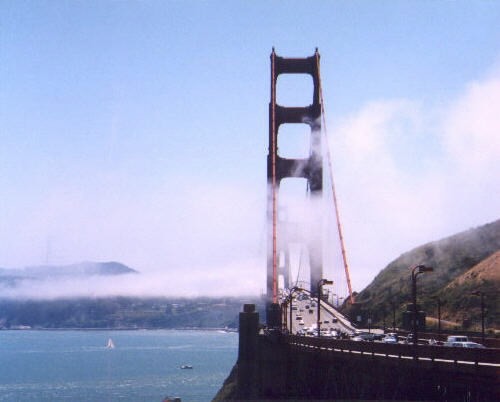
Saturday we arose late, packed and checked out of the Mandarin. Since we’d seen so much more than we’d expected to in San Francisco, we decided to drive through wine country before the plane flight home. We headed north across the Golden Gate Bridge, and in a little more than an hour found ourselves in Sonoma.
Our first stop was Cline Cellars, known for their Zinfandel, and “ancient vines” line of wines. While Danielle fed the giant coy fish in the pond we sampled several wines and purchased a delicious Carignane (“CARE-EE-NYON'”) to bring back with us. We also bought a salami and some cheeses, which we enjoyed out by the pond. Our next stop was Gundlach-Bundschu, a charming stone structure tucked up beneath a hill. We purchased a Reserve 1985 Cabernet from their library, which we’ll share with our wine group. Danielle enjoyed socializing with their rather over-stuffed golden retriever.
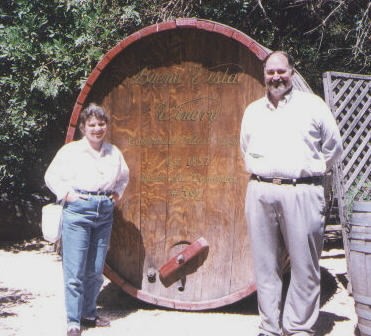
Finally, we visited Buena Vista, California’s oldest premium winery, founded in 1857 by Count Agoston Haraszthy, the father of California viticulture. There we purchased a 1986 Reserve Cabernet from their library, while Danielle chatted with their resident artist. Outside, one of the winery cats lounged lazily under a picnic table, consuming a mouse for its lunch.

The day was waning, and we regretfully headed back across the Golden Gate a final time, and on to San Francisco Airport, where we returned our beloved convertible and caught the 7pm flight back to LAX.
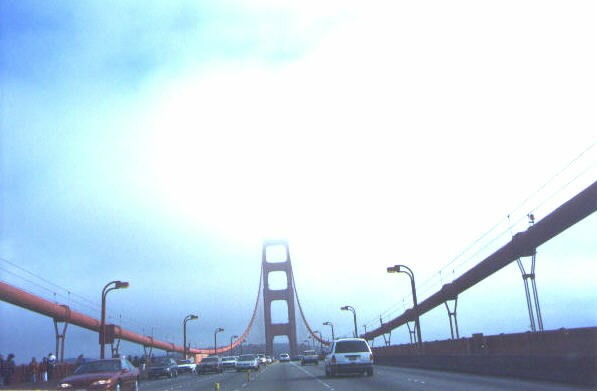
During our layover we munched on Mexican food and grabbed one final Margarita at the mini-El Cholo in the Delta terminal. Danielle and I keep journals when we travel, and we used the time to catch up on our drawings and writings about the trip, and to fill out a few post cards. The red-eye left Los Angeles at 11pm, and we all caught a few winks before arriving in Orlando around 7am. After renting yet another car, we headed home, for our own comfortable beds.
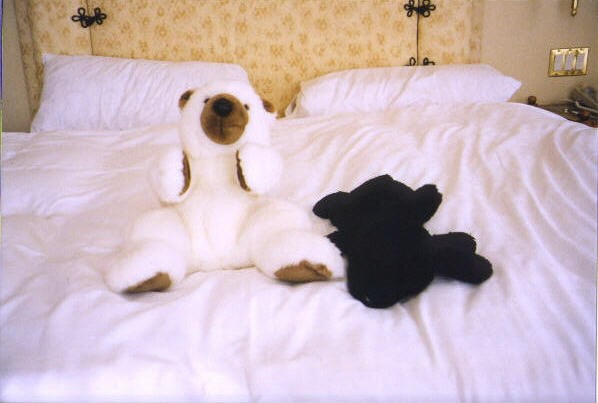
And a long nap.
Los Angeles, Las Vegas & Grand Canyon in Art 1996
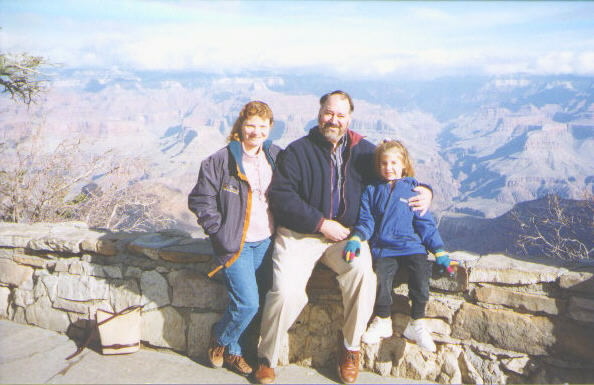
The annual “Return of the WEDI” trip in 1996 went to the Grand Canyon for the only time.
When I travel I like to keep a journal so I can experience the trip again, years later. Now I use a laptop, but when Dani was little both of use kept travel journals using blank books and colored pencils. Here is a journal I made of our December 1996 trip to the West. Photos from this trip may be found in the Family and WEDI sections.
IAAPA in New Orleans 1996
Captiva 1991-1997
There used to be a summer wine festival at Captiva near Memorial Day, and we started making an annual trip the year Dani was born. Several members of our wine group went along. After the first year we learned to stay at Land’s End Village.
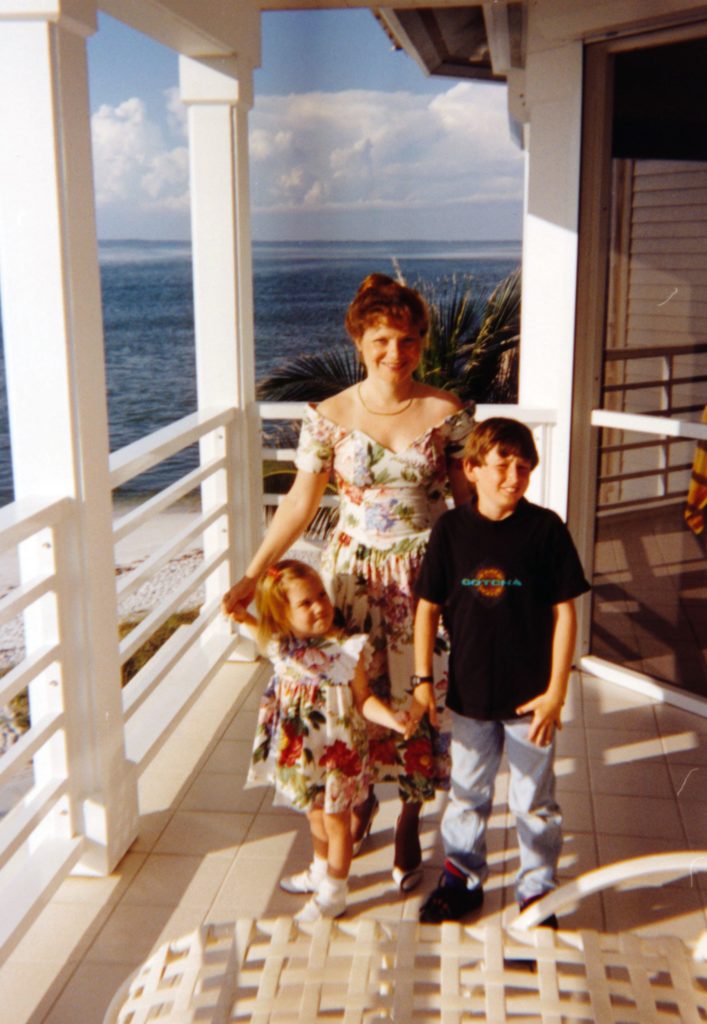 Dani, Linda amd Jonathan Henline, 1994
Dani, Linda amd Jonathan Henline, 1994
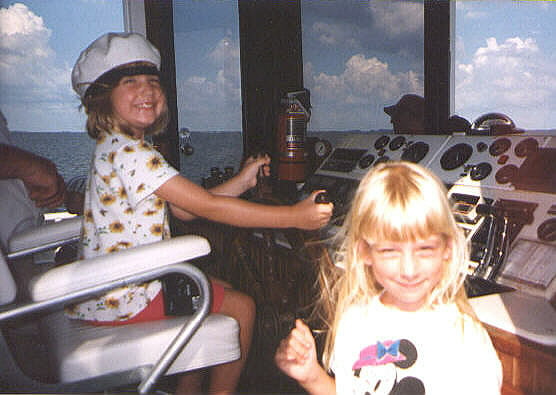
In 1996 we went on our sixth annual trip to Captiva. Steve was in Europe during the Annual Wine Festival, so we went later in the summer, and were accompanied by the Carstensens. Here Danielle pilots the dolphin cruise while Mindy looks for a life preserver.
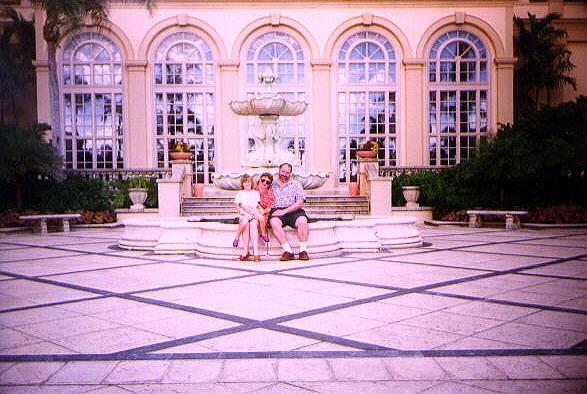
Starting in 1996 we began going to the Ritz Carlton Naples after Captiva. It’s our favorite hotel, anywhere.
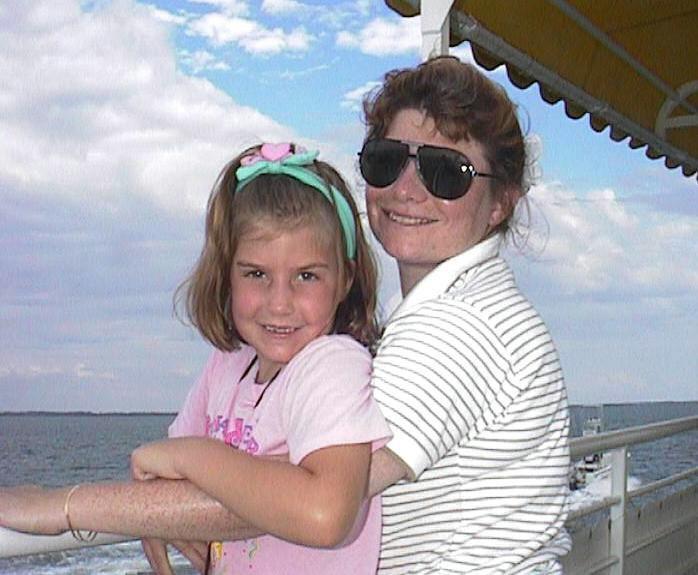
Back to Captiva in 1997, this time with Danielle’s friend Zachary. Nicole also went along, as she did every year except 1996.
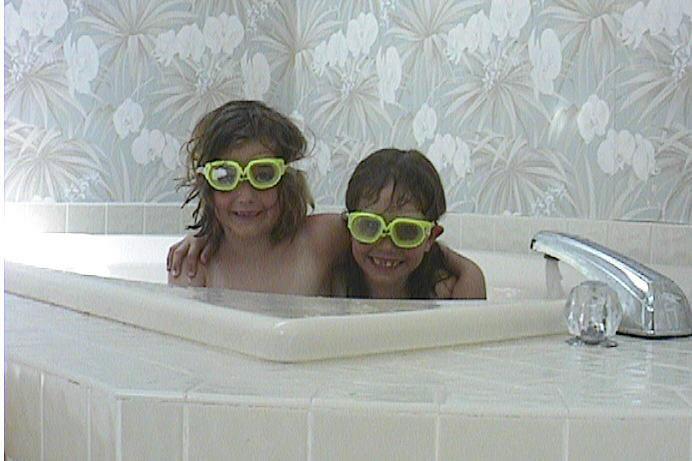
By chance, a school chum of Danielle’s was visiting Captiva at the same time, and came by to play frogs in the bathtub.
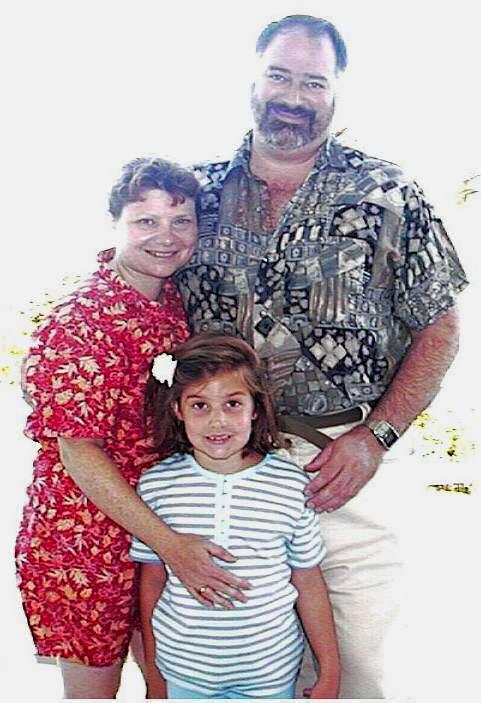
Here we are on the porch at Land’s End, overlooking the Caribbean.
Little Palm Island 1990, 1993
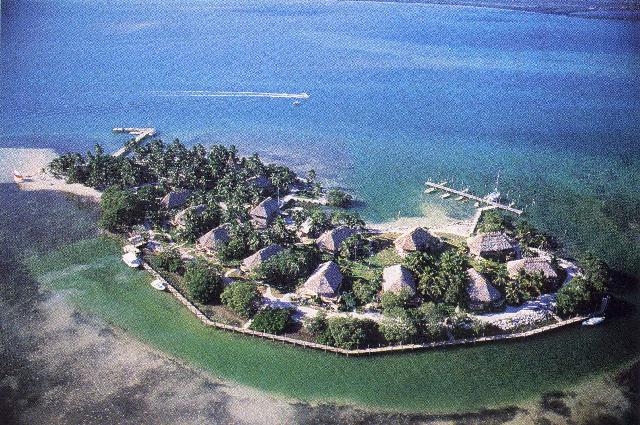
One of our favorite places to relax is Little Palm Island in the Florida Keys. With only fourteen grass huts, each with its own hammock, it’s a very private place. Fortunately, there’s also a five star restaurant. We visited in 1990, when Linda was pregnant, and again in 1993, although we endured several inches of rain on that trip.
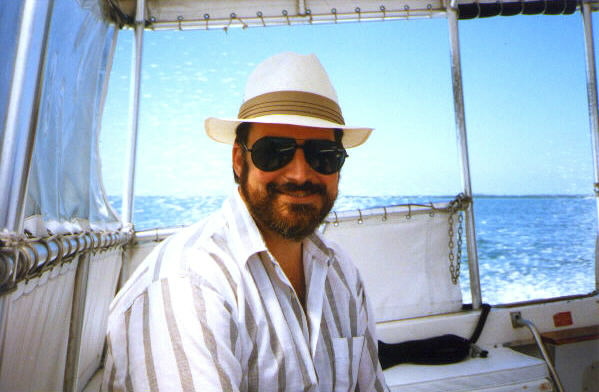
You arrive by boat…
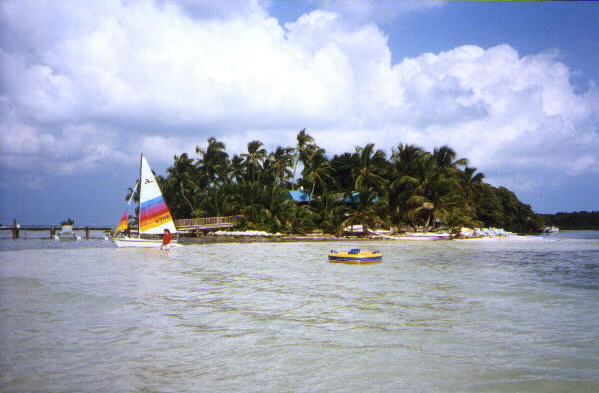
…at a tiny island a few miles off the keys. This is where PT-109 was filmed. It was long a private retreat, but now accommodates a handful of guests, who relax, play, recreate, and dine in the five-start restaurant.
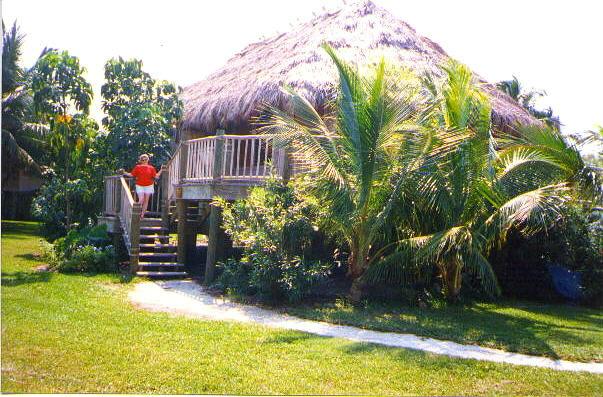
There are fourteen of these grass-thatched huts.
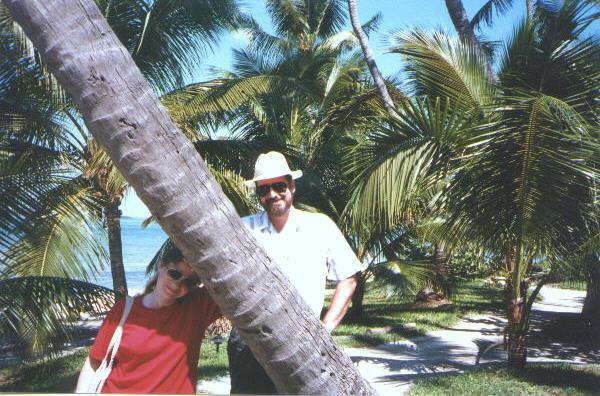
Lush plantings of Palm trees lend the island a South Seas flavor.
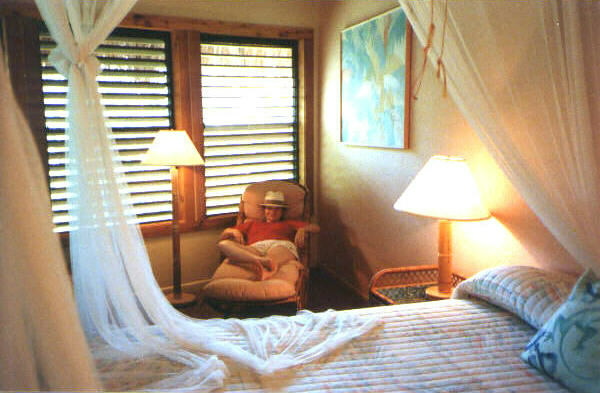
The rooms really have thatched roofs…
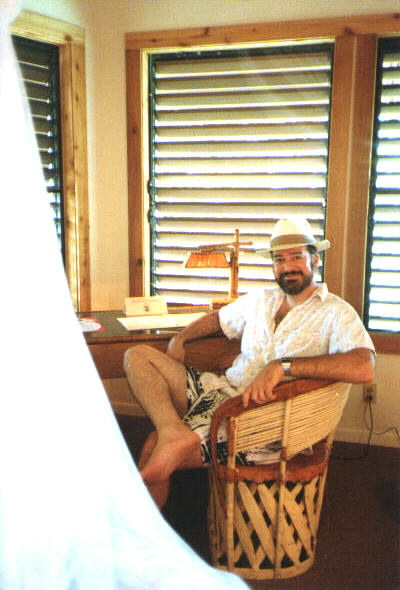
…but they’re far from austere.
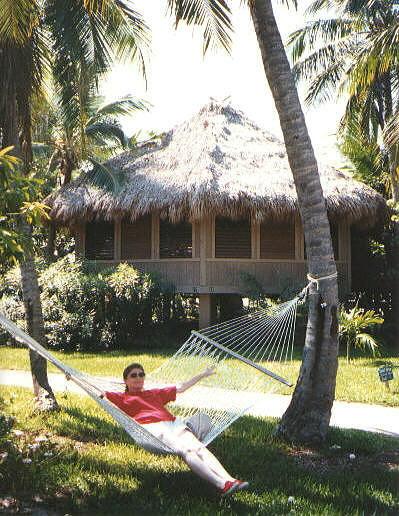
And the best seat on the island is the hammock outside your door.
Williamsburg 1989-2007
My father lived on the King’s Mill Golf Course in Williamsburg, Virginia. We visited him most years, sometimes traveling by auto train. We enjoyed the ambiance of the train, and it’s convenient to have our car and all of Danielle’s “stuff” when we get there.
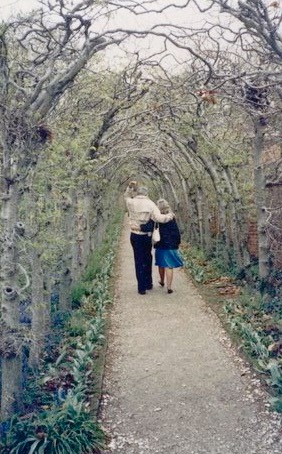
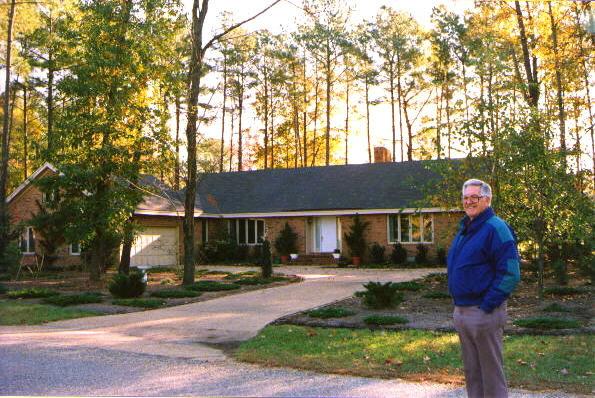
Dad’s house in King’s Mill,1989.
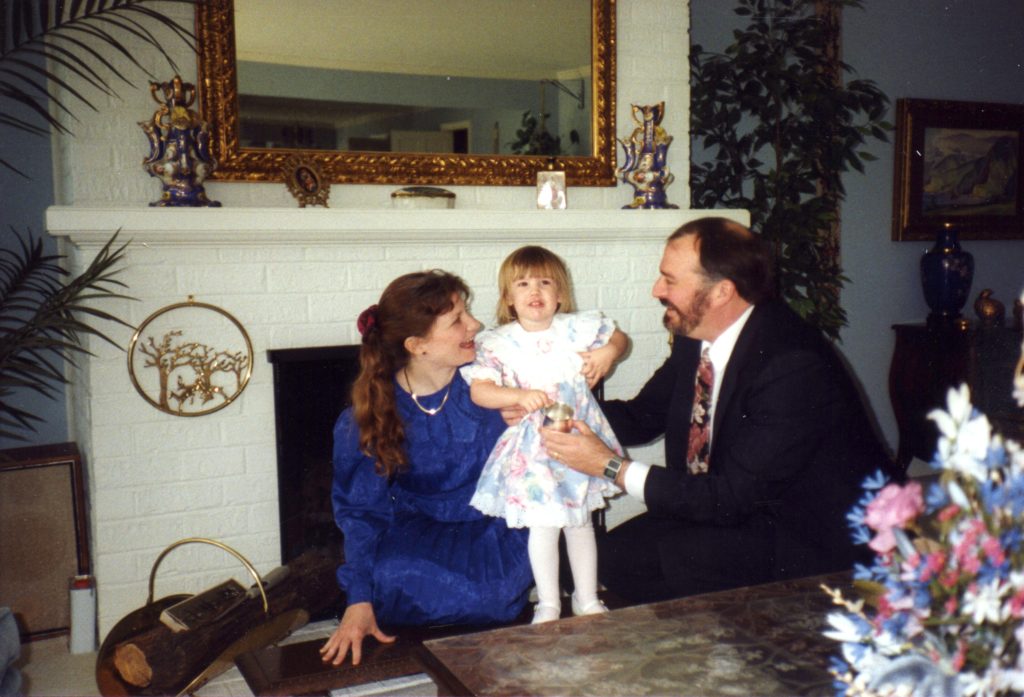
Dani before her baptism, posing in front of the fireplace at PopPop and GinGin’s house.
The Slide.
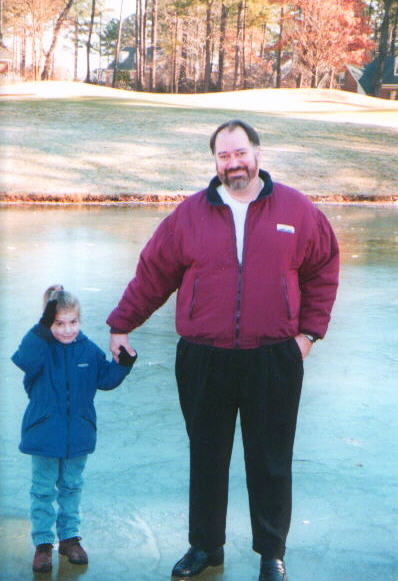
On the iced-up pond across the street, January 1997.
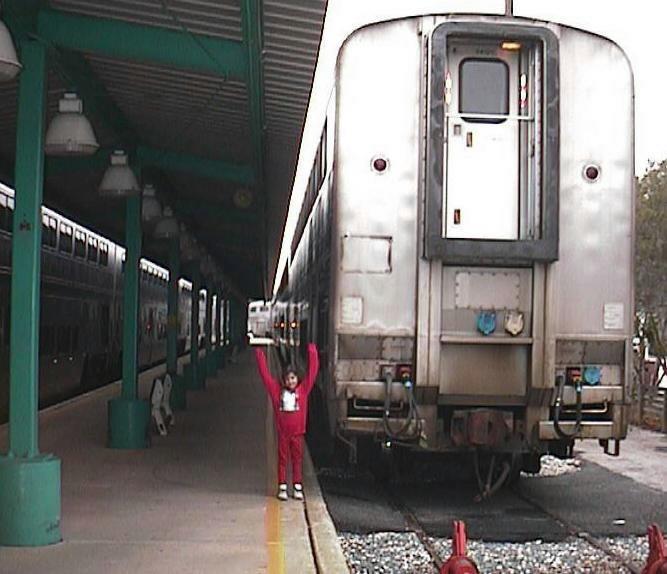
Trains are BIG. That red dot is Danielle. January 1998.
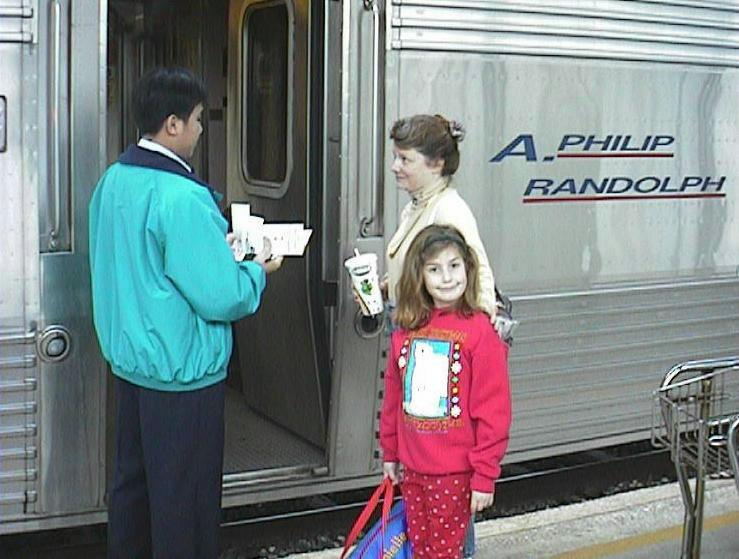
Boarding the train, January 1998.
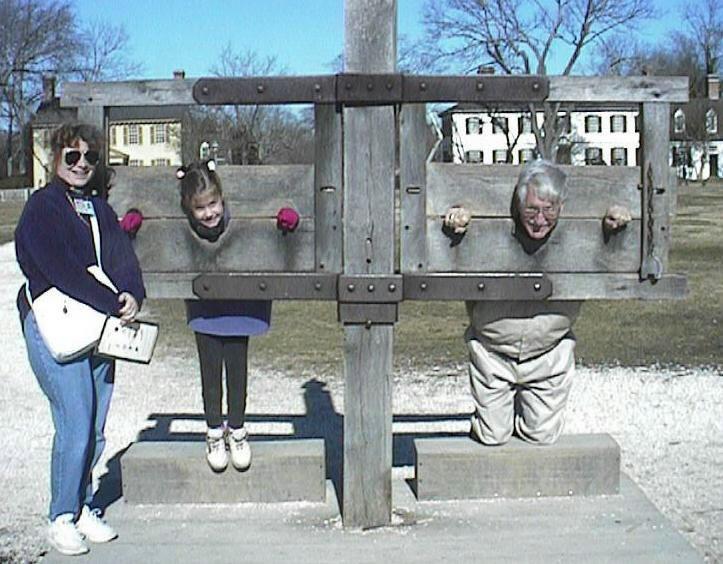
Linda locks Danielle and Pop Pop into the Pillory, Colonial Williamsburg, January 1998.
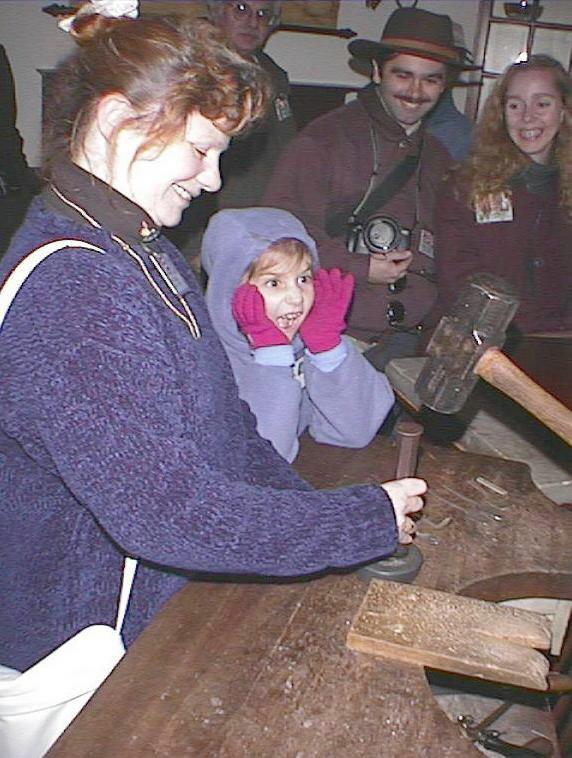
Silversmith, Colonial Williamsburg, January 1998.
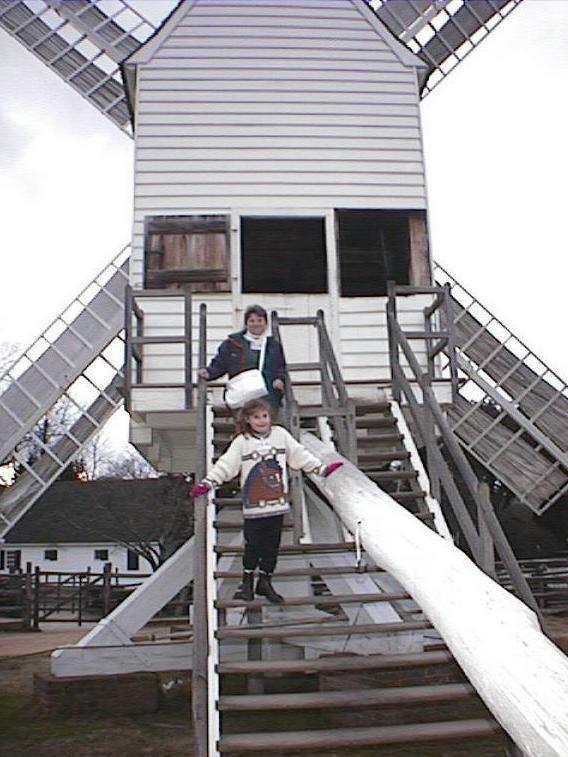
Windmill, Colonial Williamsburg, January 1998.
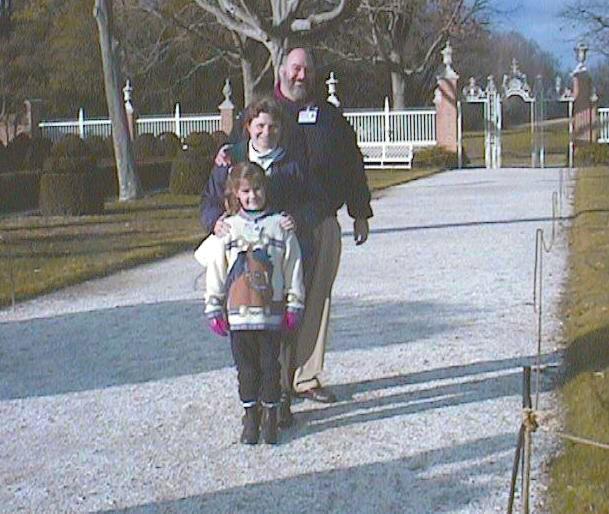
Behind the Governor’s Mansion, Colonial Williamsburg, January 1998.
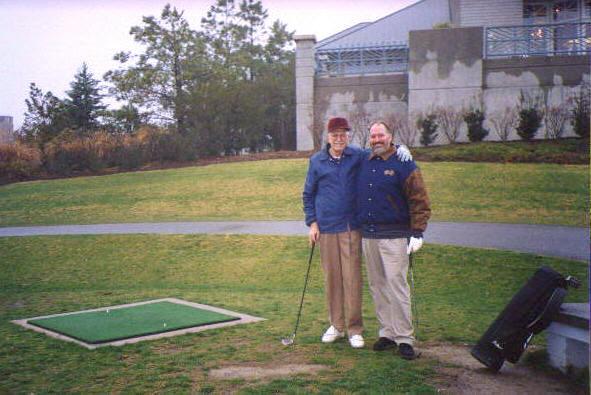
Golfing with Dad, December 1998.
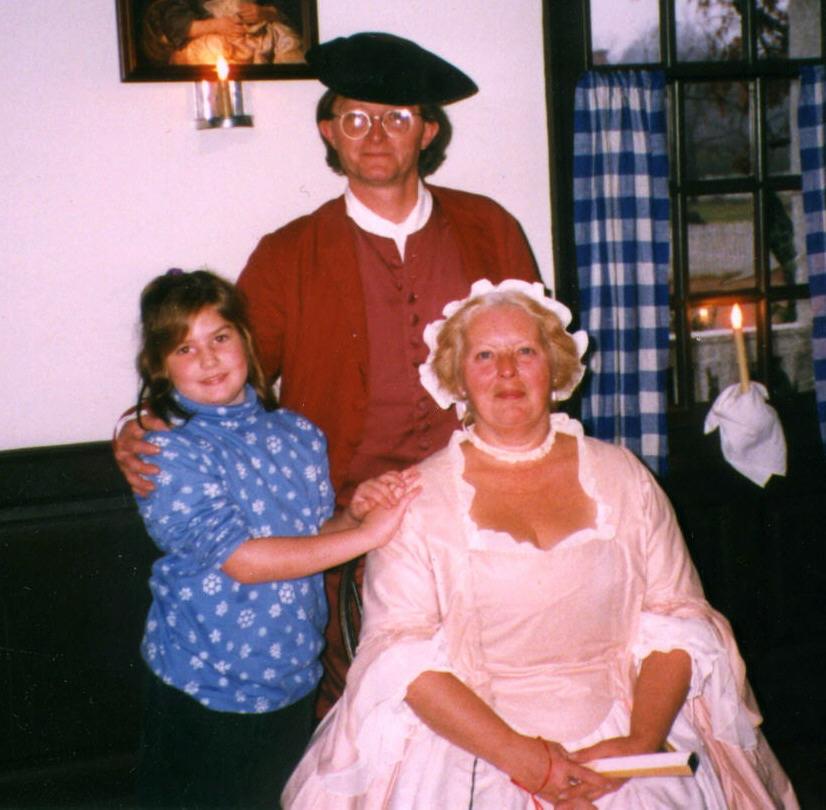
With Miss Manderly, a character from the American Girls Felicity book, Colonial Williamsburg, December 1998.
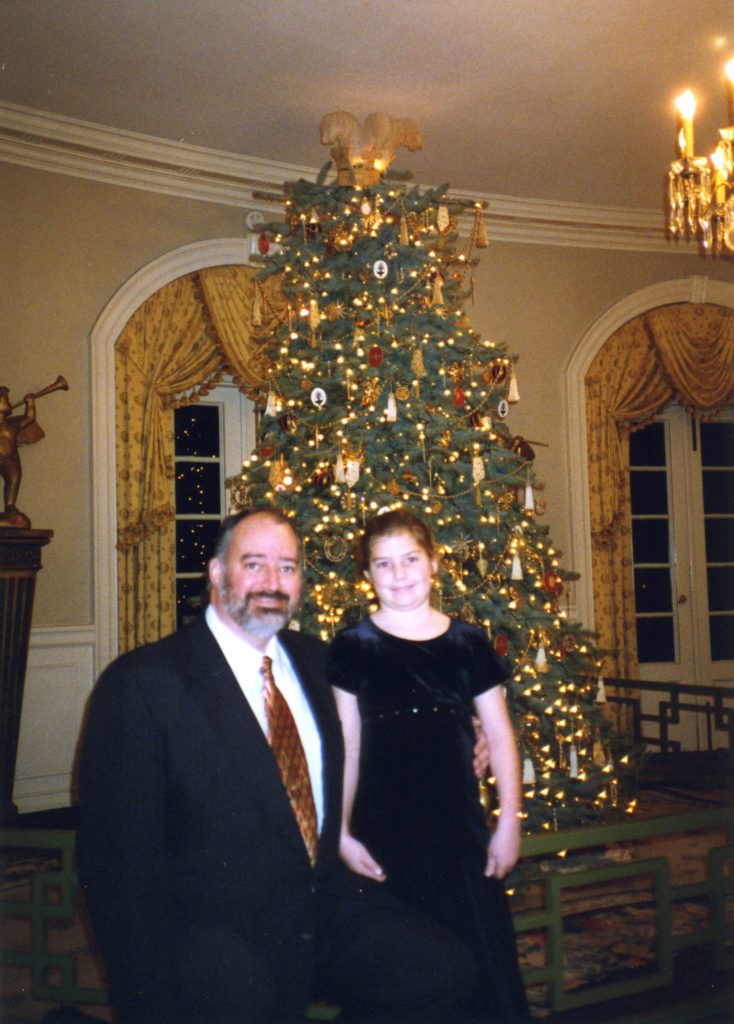
In the lobby of the Williamsburg Inn, between Christmas and New Year’s, 1999
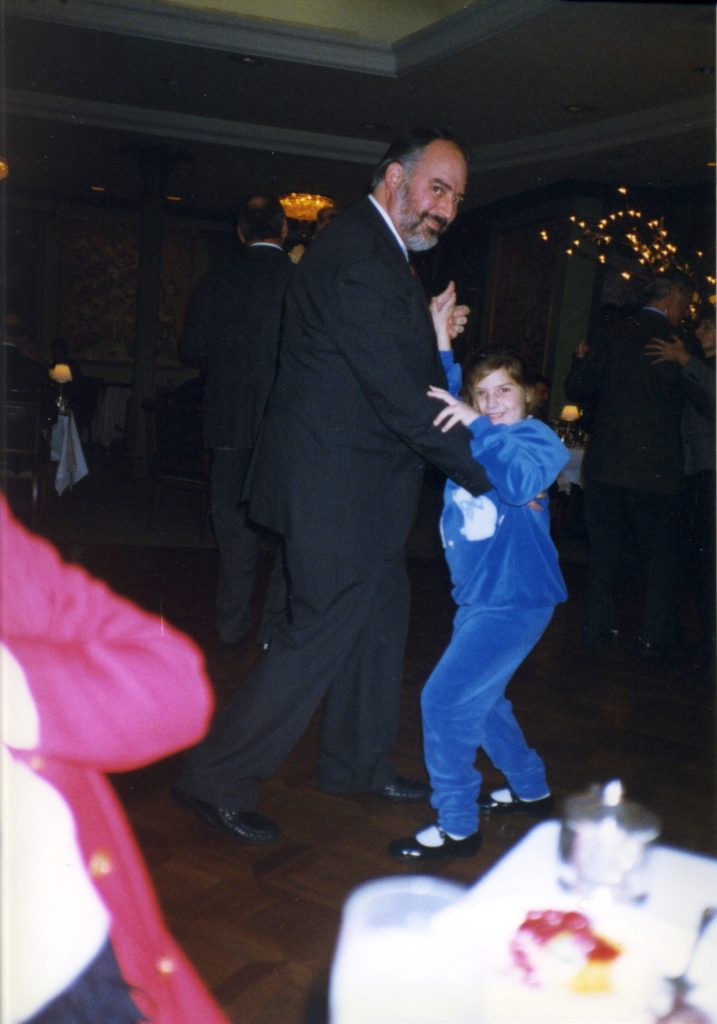
Dancing in the dining room of the Williamsburg Inn, between Christmas and New Year’s, 1999
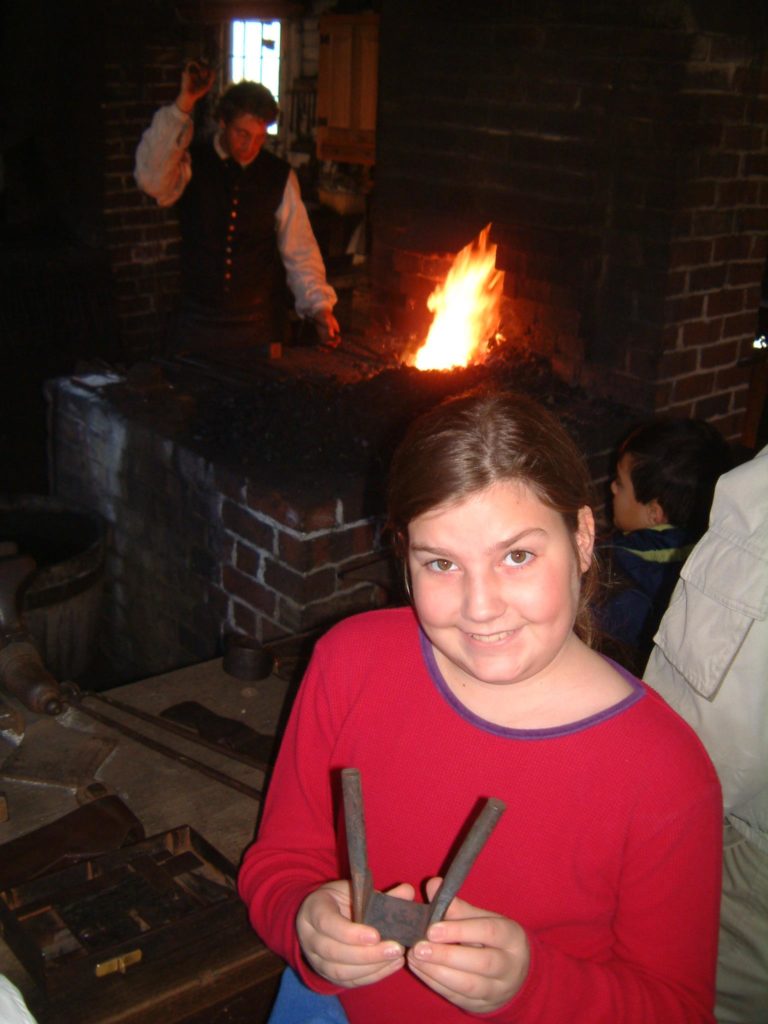
Blacksmith Shop. Thanksgiving, 2001.
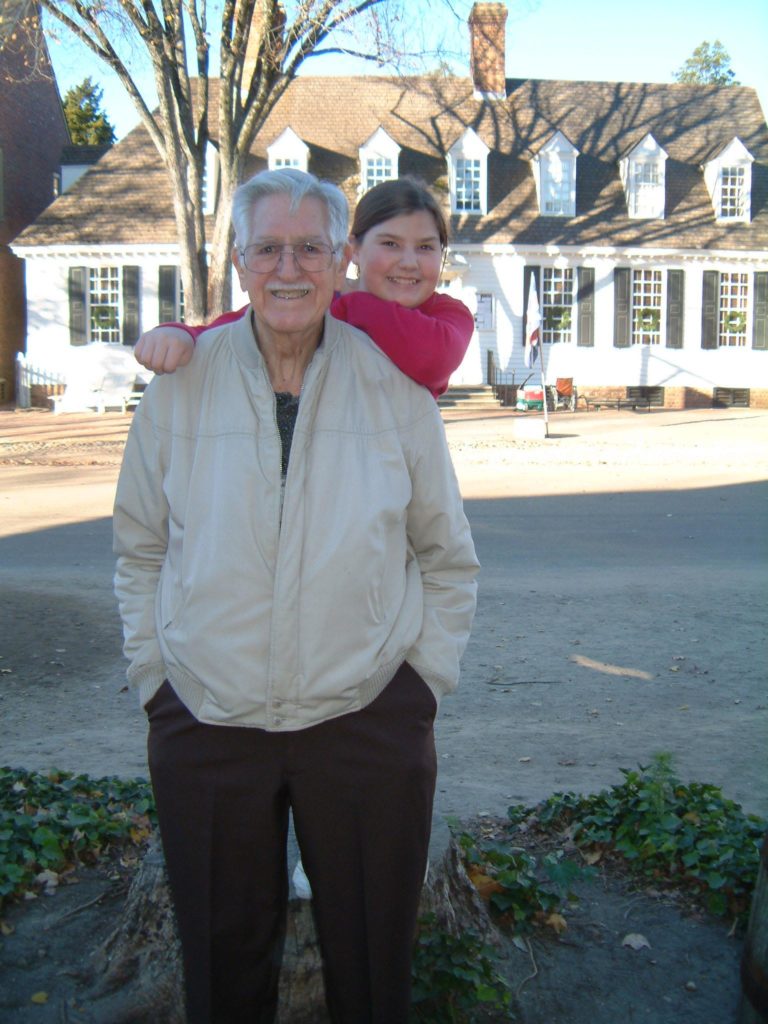
Thanksgiving, 2001.
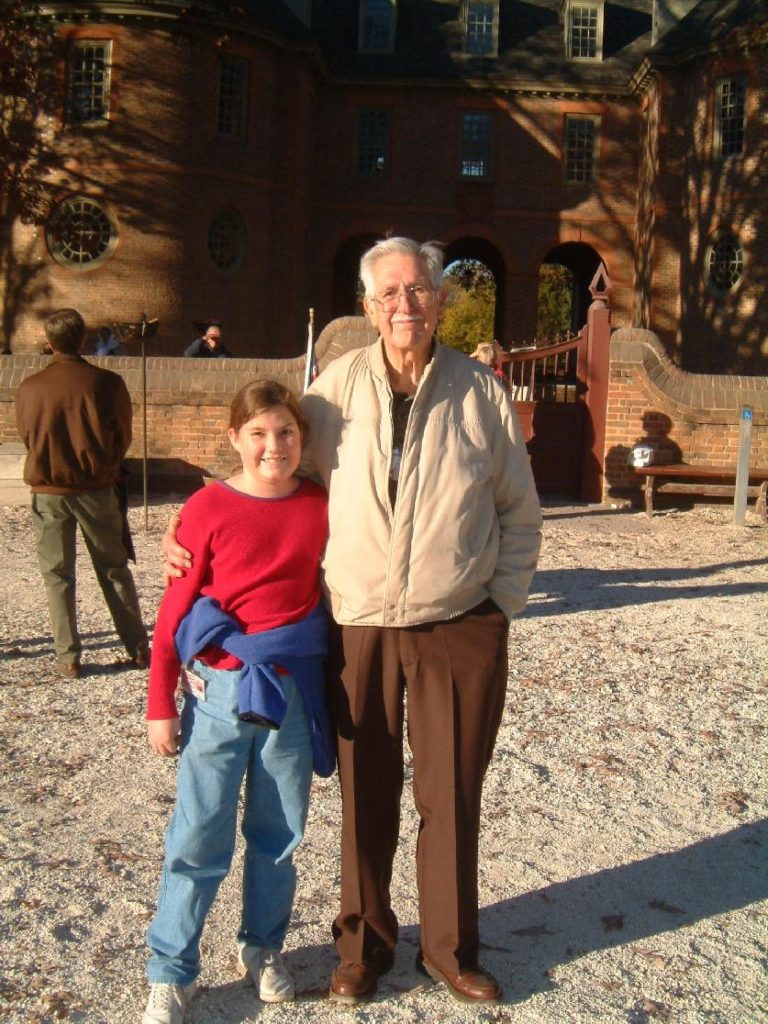
The Capitol. Thanksgiving, 2001.
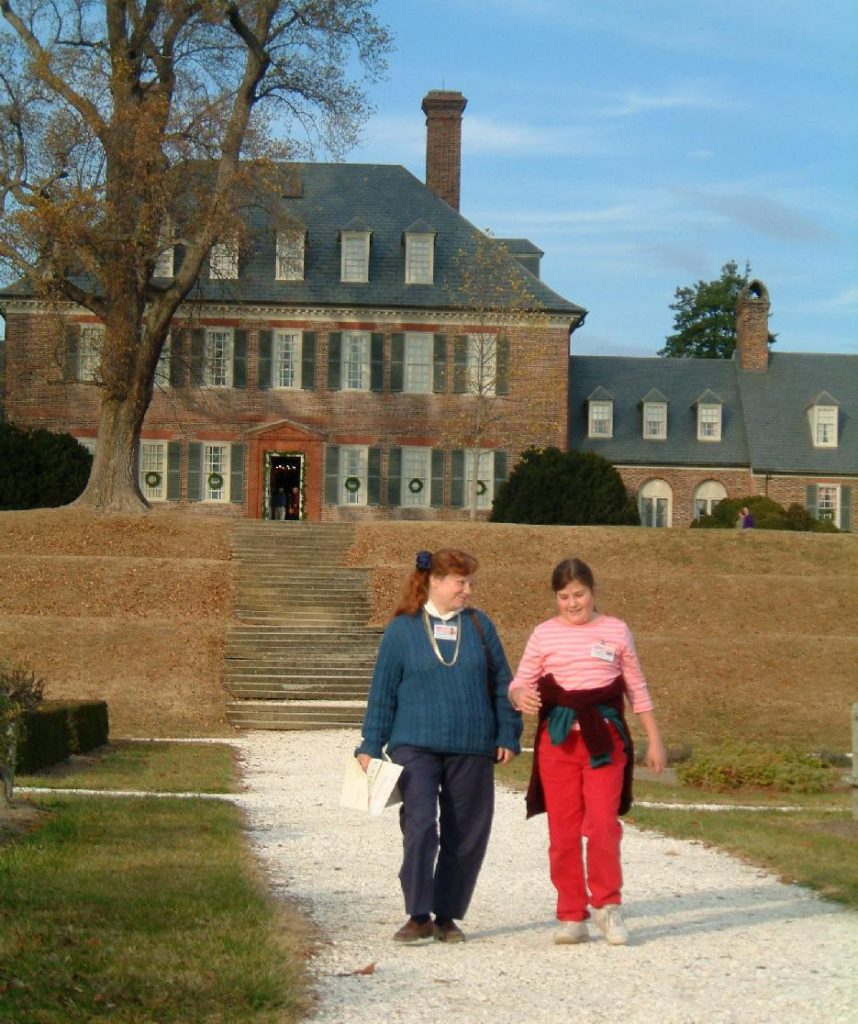
Carter’s Grove. Thanksgiving, 2001.
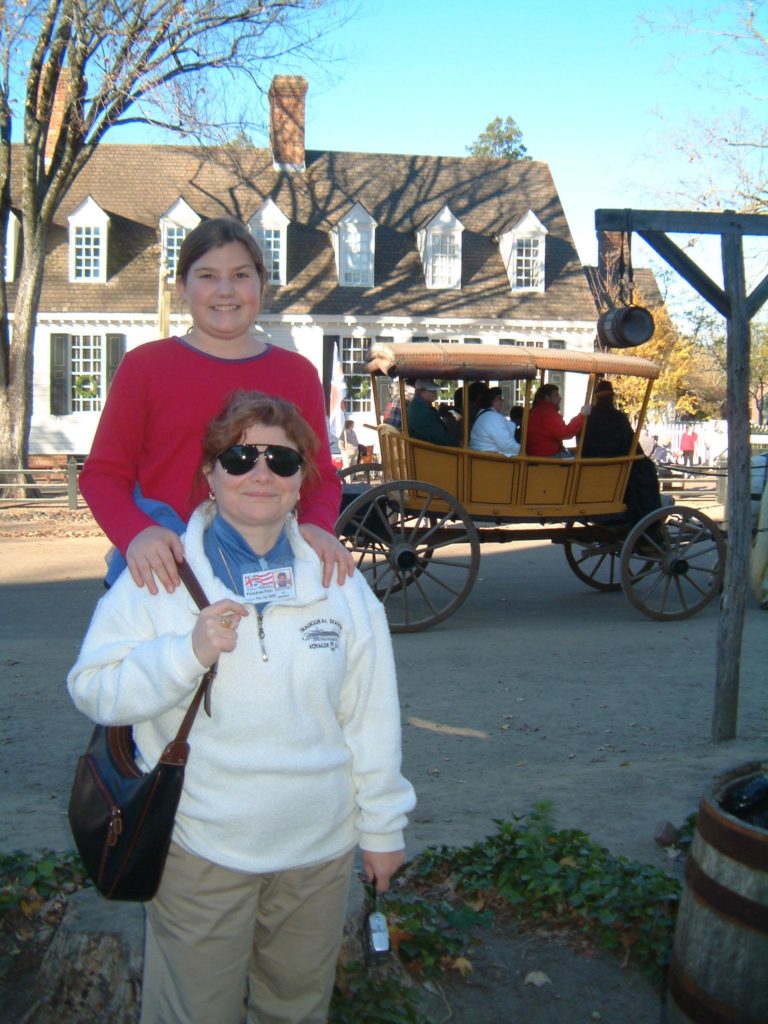
Thanksgiving, 2001.
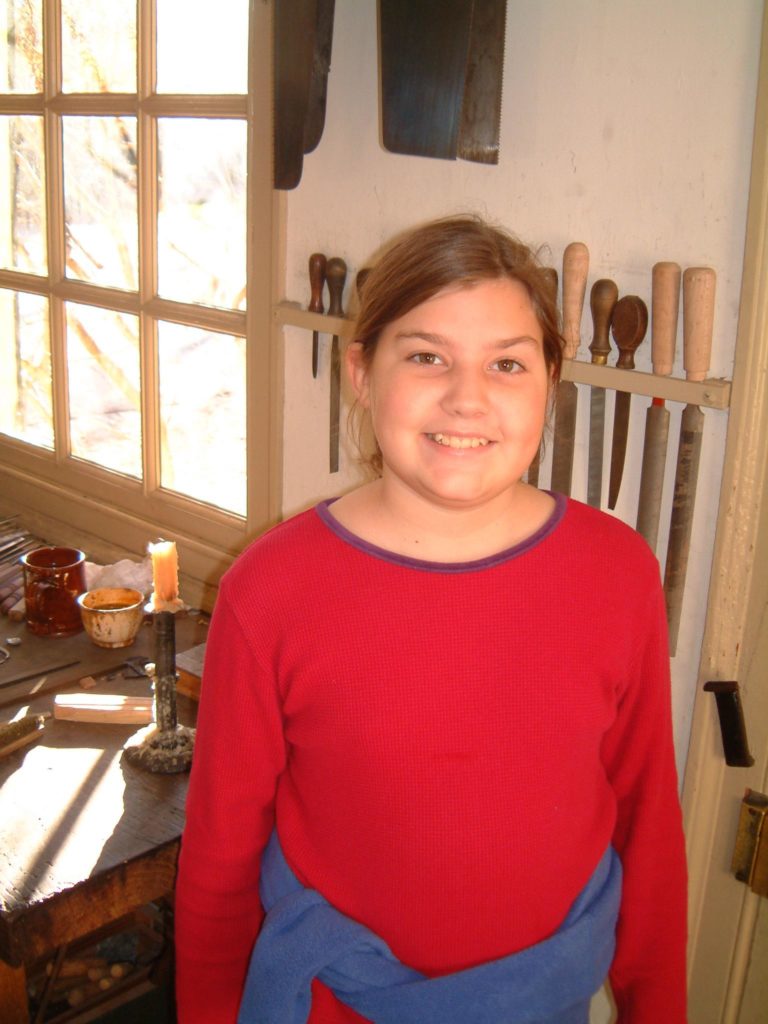
Gunsmith Shop. Thanksgiving, 2001.
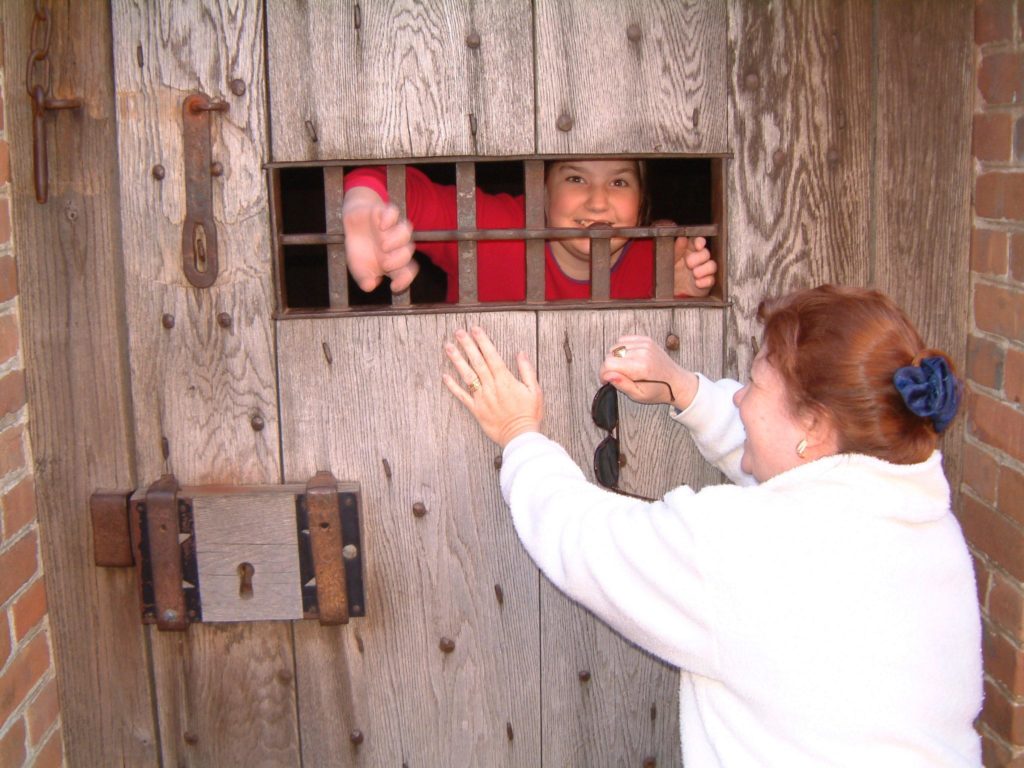 Thanksgiving, 2001.
Thanksgiving, 2001.
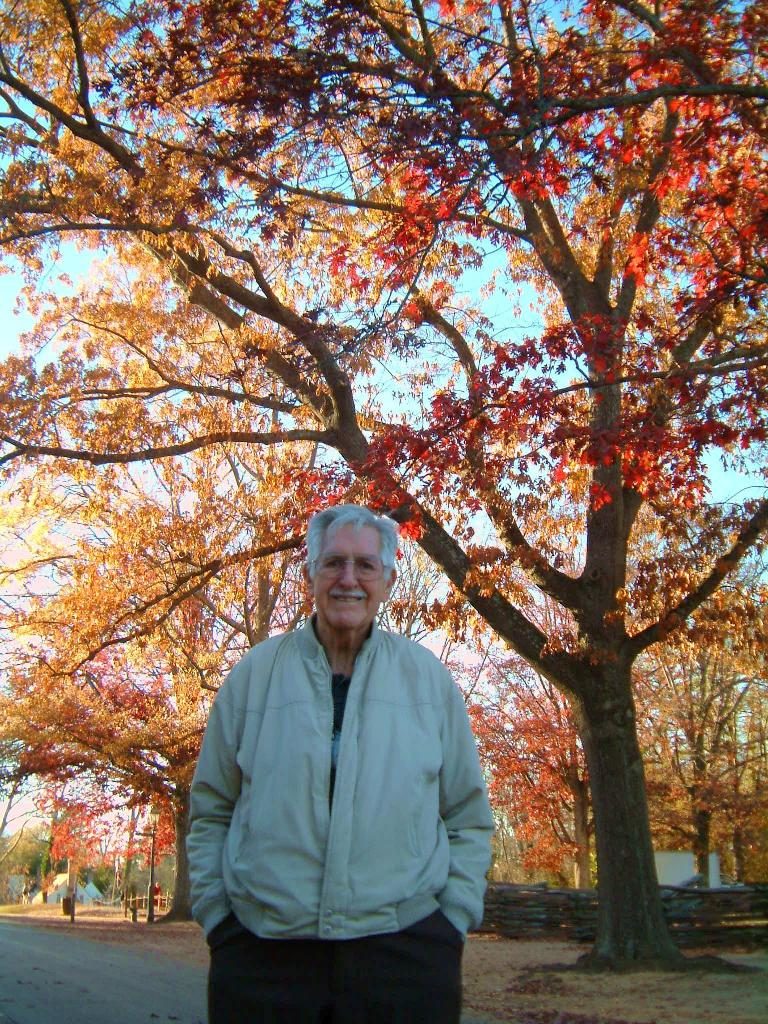
Thanksgiving, 2001.

Thanksgiving, 2001.
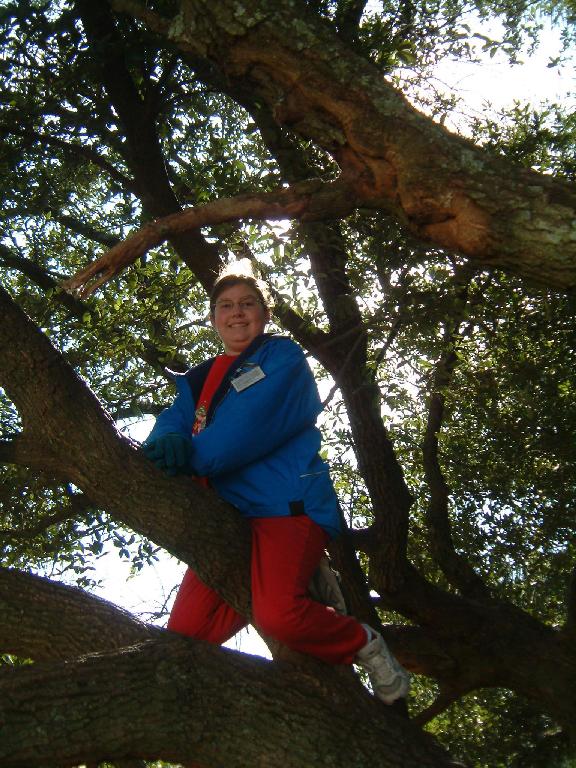
Thanksgiving, 2002.
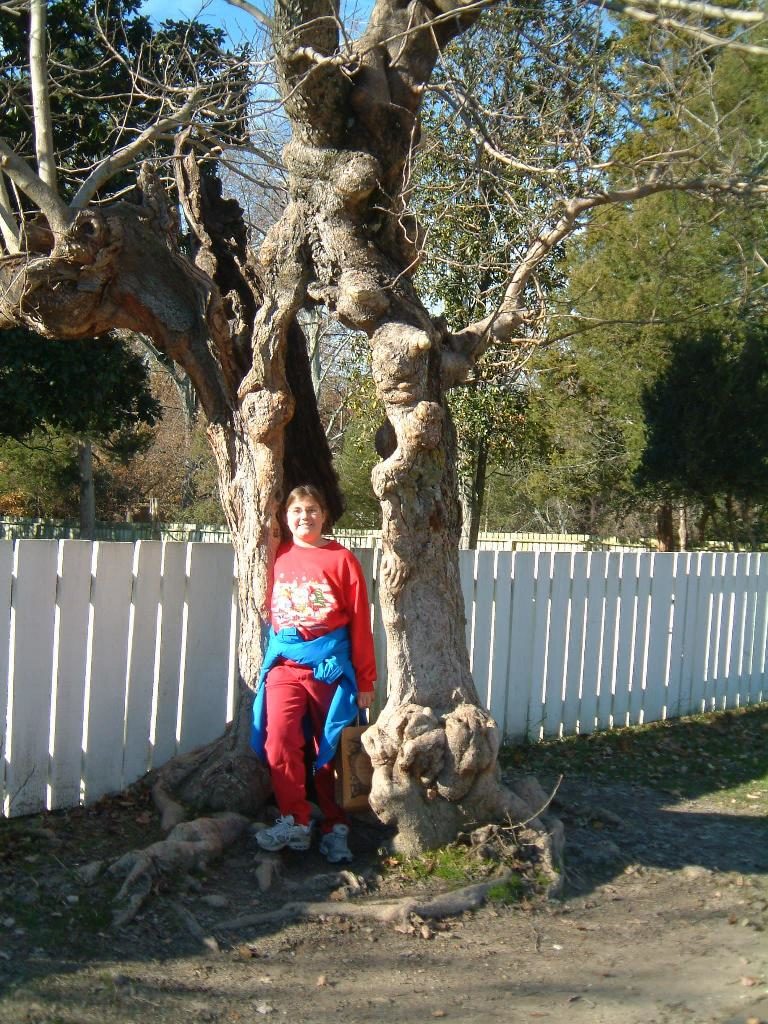 Thanksgiving, 2002.
Thanksgiving, 2002.
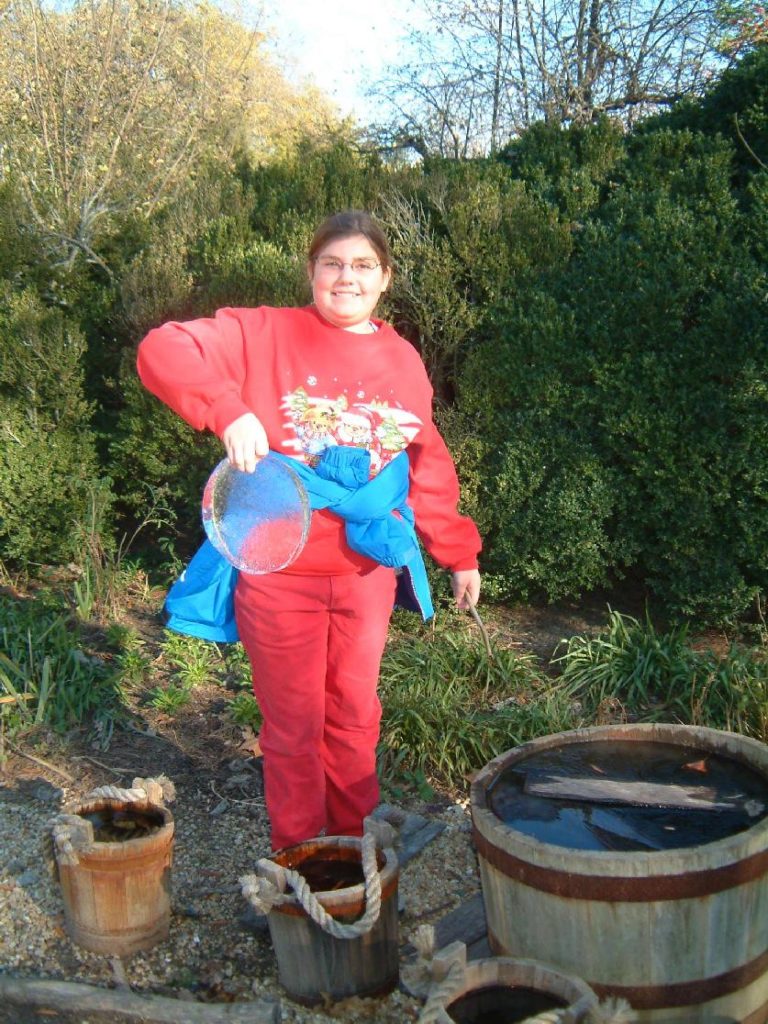
Thanksgiving, 2002.
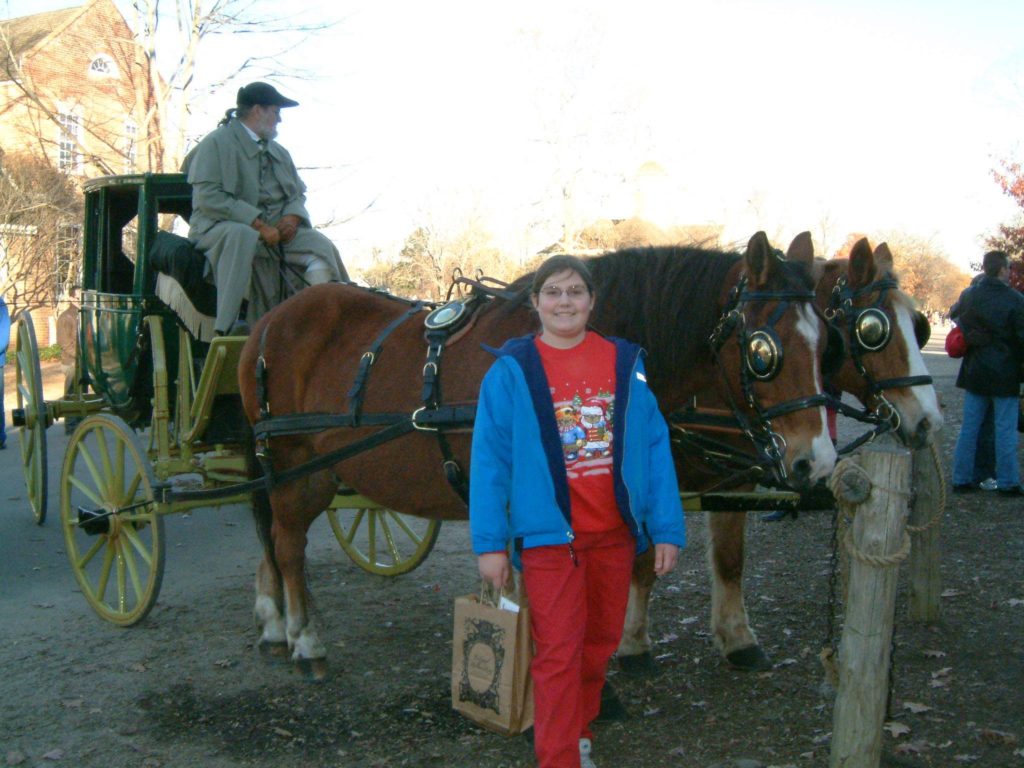
Thanksgiving, 2002.
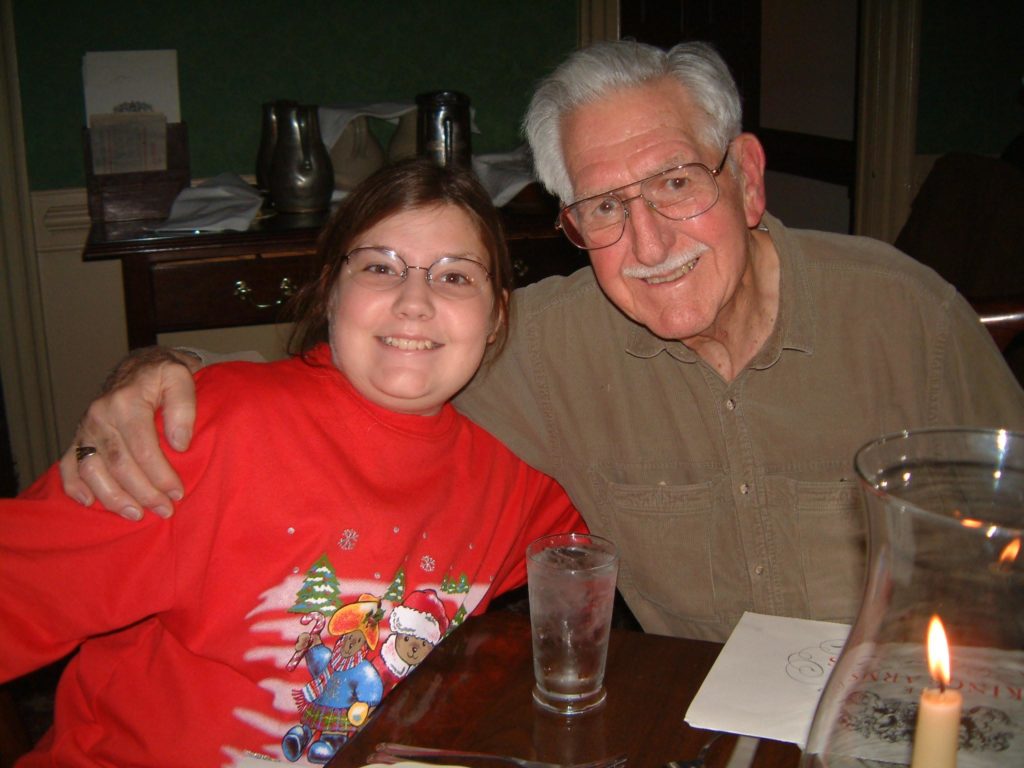
Thanksgiving, 2002.
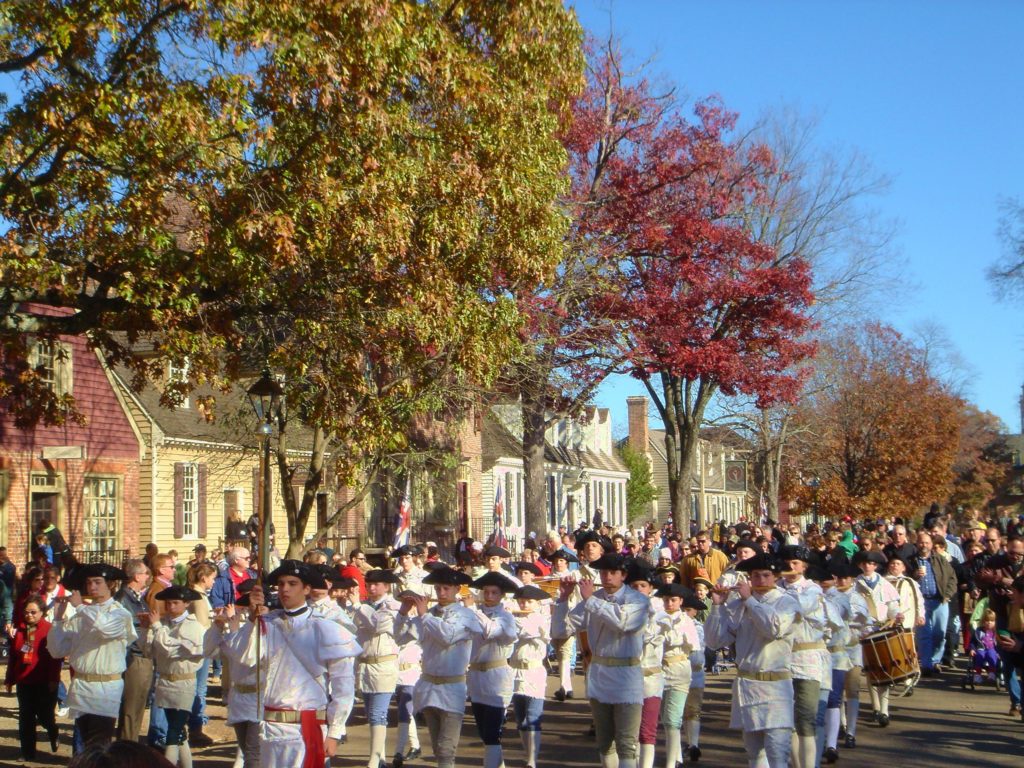
Thanksgiving, 2005 Parade.
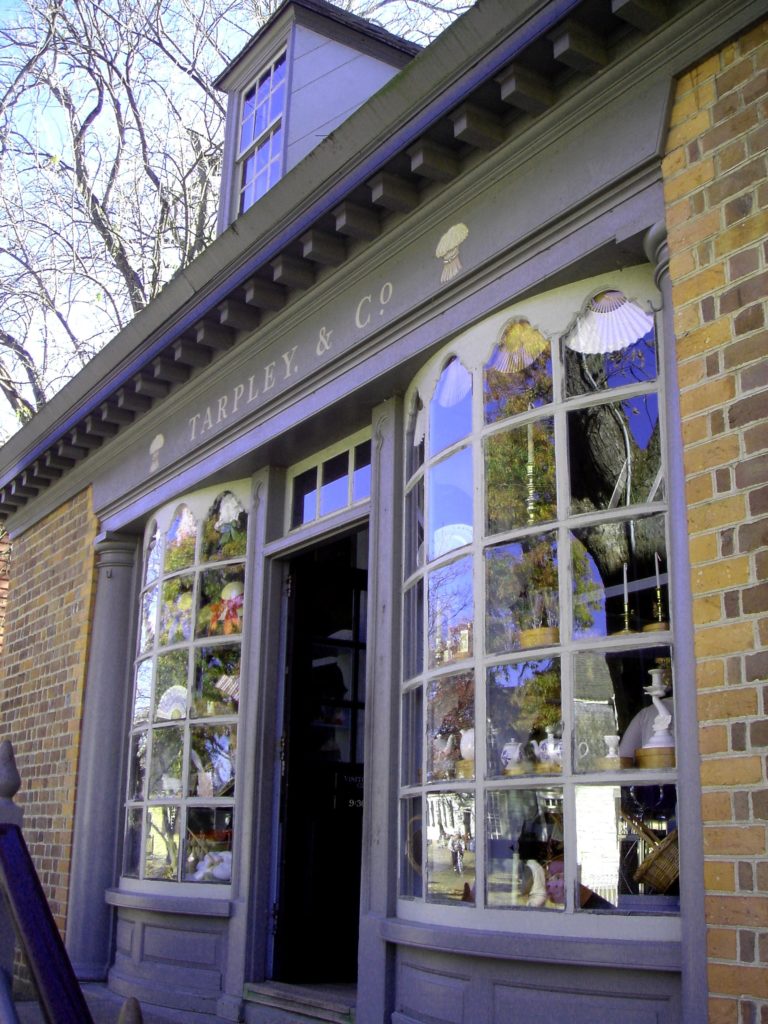
Thanksgiving, 2005 Shop.
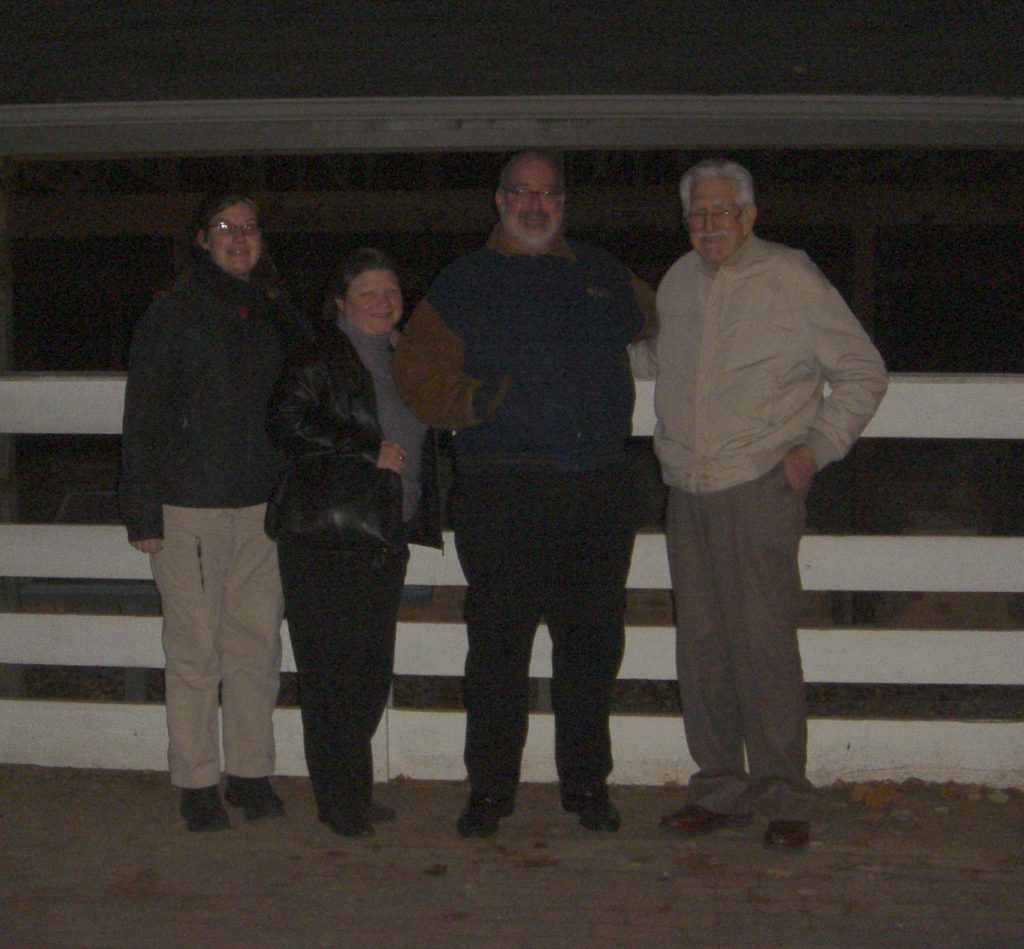
Thanksgiving, 2005 walking to a witch trial reenactment.
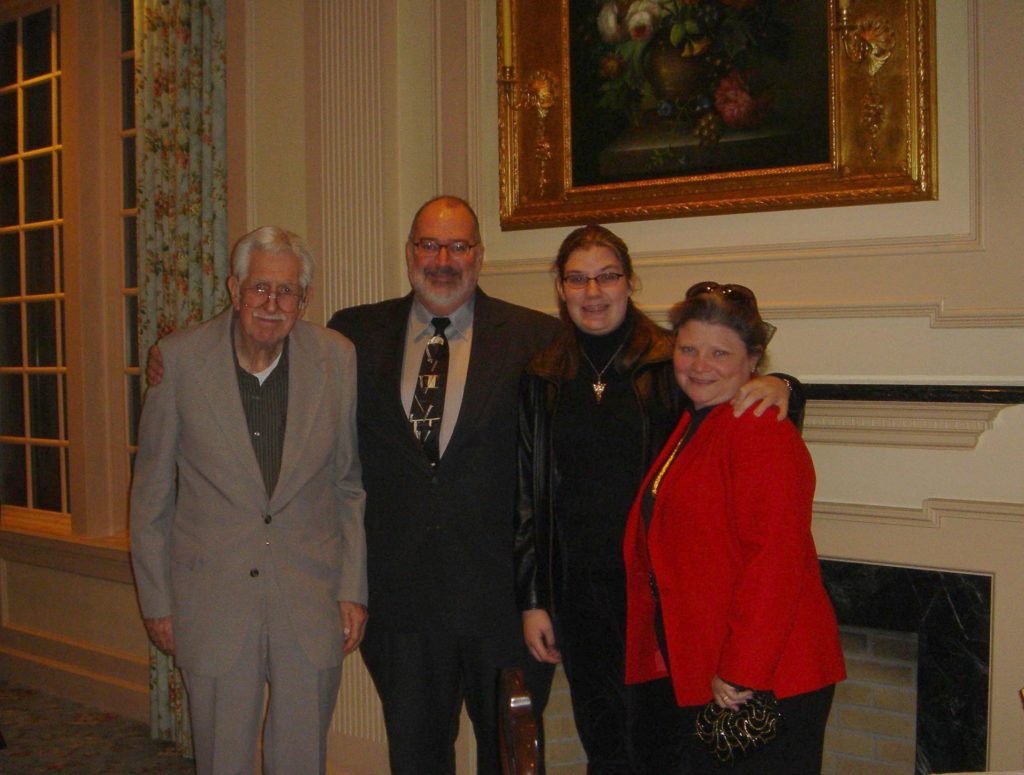
Thanksgiving, 2005 at Ford’s Colony.
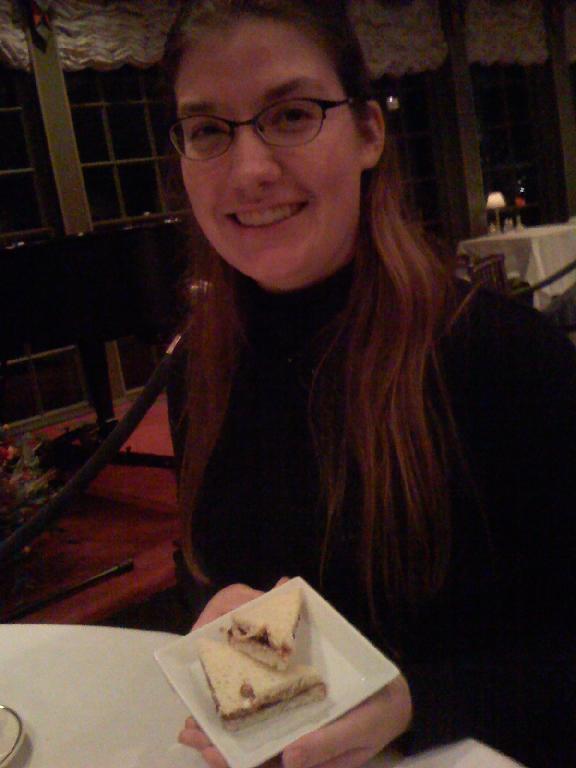
Thanksgiving 2007. At the Williamsburg Inn for Thanksgiving dinner, Reggie brought Dani a PB&J sandwich for old times sake.
Greenbriar, West Virginia 1998
New Orleans 1985
St. Augustine 1983, 1997
Linda and I visited St. Augustine in 1983 after Epcot opened.

And a return trip in the fall of 1997 when our wine group spent a long weekend at “The Whale’s Tail”, a bed and breakfast in St. Augustine. This cannon is mounted on one of the oldest structures in the United States.
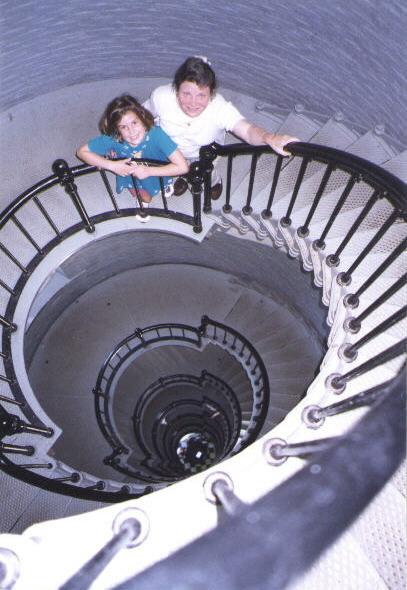
In August 1998 we had a great time at the historic lighthouse at Ponce Inlet, about an hour drive from Orlando.
Bryce, Lake Powell, Grand Canyon 1980
In December 1980 we took a driving trip throughout the western United States, visiting Las Vegas, Zion, Bryce, Lake Powell, and the Grand Canyon. Linda drove her faithful RX-3 station wagon, while I took photographs. We enjoyed the brisk weather, and the solitude afforded by the nearly empty National Parks.
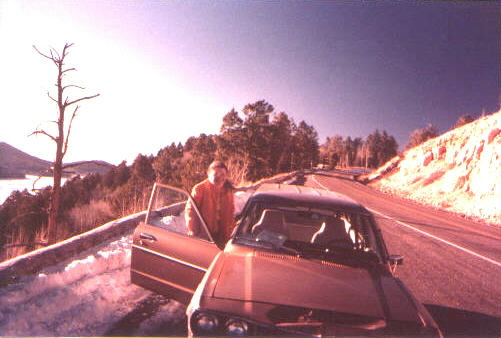
Linda’s venerable RX-3 Station Wagon, somewhere in Utah. This picture was taken shortly after we learned what “black ice” was, and we were probably stopped to change our underwear.
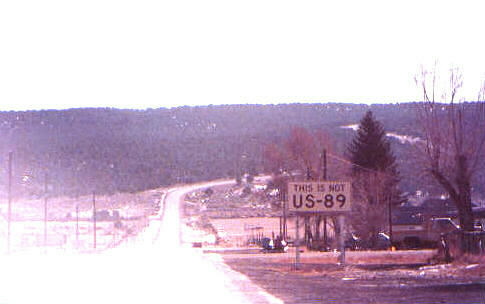
Yup. This is definitely NOT US-89.
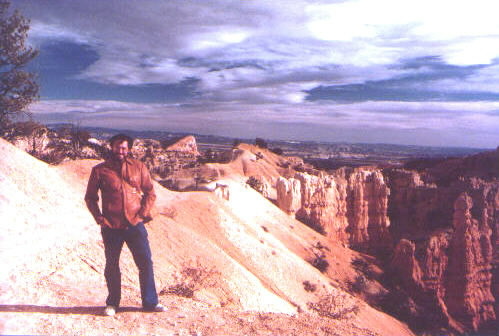
Bryce Canyon. We stayed at a colorful place called “Ruby’s Inn”. I’ll never forget the mattress. We finally put it on the floor.

Lake Powell. It was like glass.
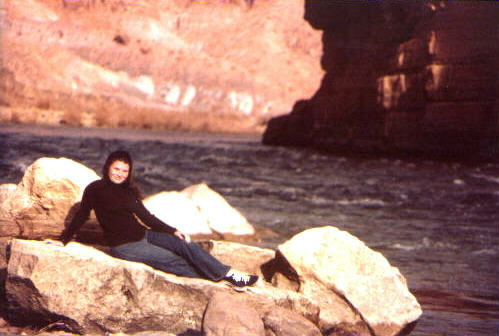
Sunbathing along the Colorado River. I suggested a bikini, but she was worried about snow.
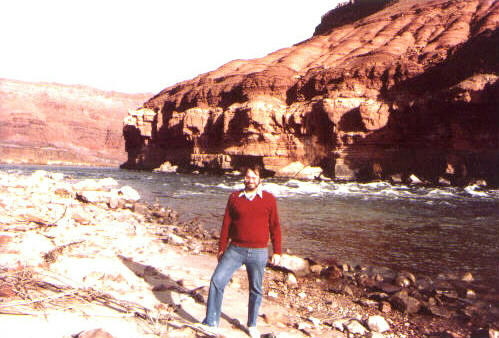
This canyon gets much deeper, downstream.
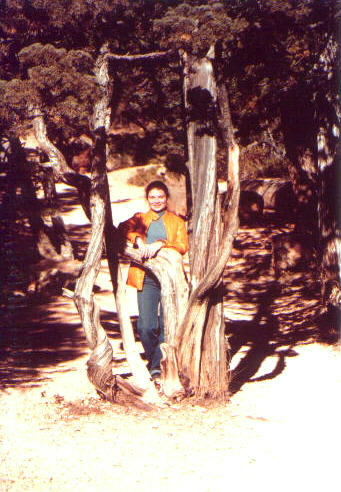
Grand Canyon. Linda held this tree up for a while…
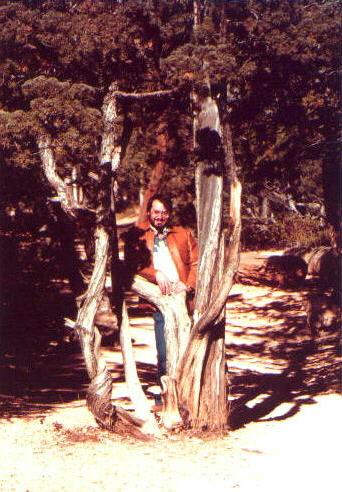
…then I took over.
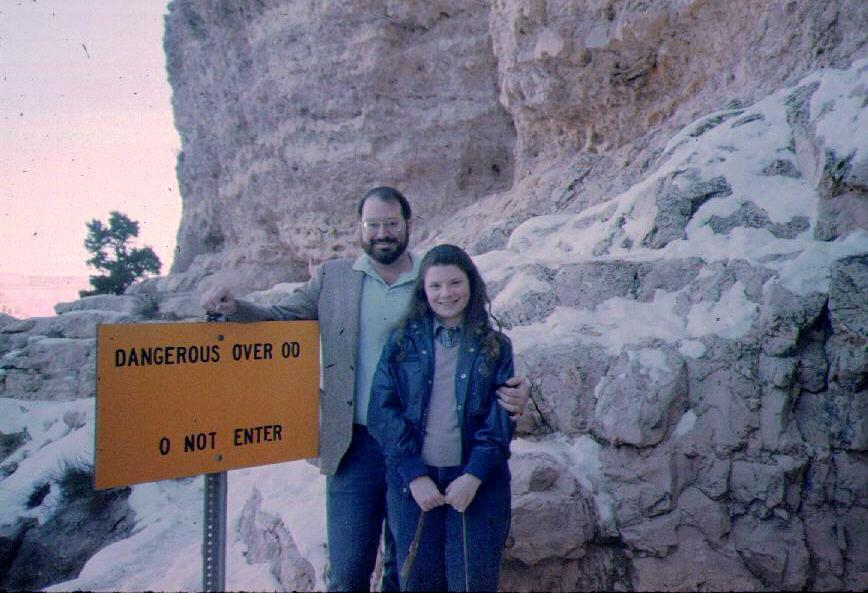
Dangerous to overlook this overlook.
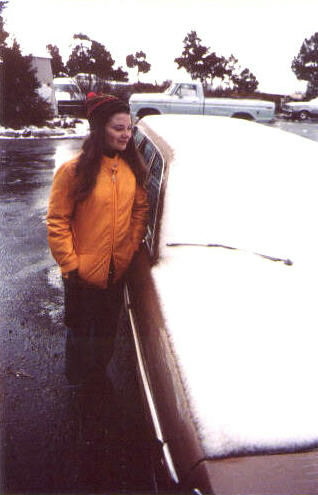
We stayed at the El Tovar, and it snowed the night before we left. This was cute until we couldn’t get the car started.






